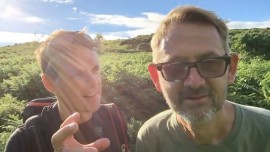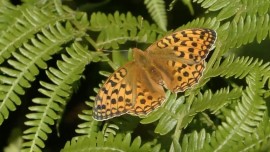2017 sightings
Sunday 31 December
Not a sighting, but nonetheless......The Butterflies of Sussex: a twenty-first century atlas, by Michael Blencowe and Neil Hulme was Mark Avery's second choice as Book of the Year, beaten only by Sky Dancer by Gill Lewis (a book about the persecution of Hen Harriers and a subject very close to Mark's heart). Very many congratulations to Michael and Neil, and all involved in the production of The Butterflies of Sussex.
For those not familiar with him, Mark was Conservation Director at the RSPB for nearly thirteen years until he stood down in 2011 to freelance. His blog - Standing up for Nature - is well worth looking at. Members of the Sussex Ornithological Society who are booked into the Society's Conference at the end of January will have the opportunity to see and hear him as he is one of the speakers at that event. (Robin Harris)
You can read Mark's review here. Personally I was flummoxed as to why The Guardian left the atlas off its list of the top 100 non fiction books of all time! (Ed jnr)
Saturday 30 December
One Red Admiral seen fluttering busily outside my mothers kitchen in Haywards Heath today. A brief but very welcome sighting as they pretty much finished in Yorkshire in mid November and we counted that as pretty good going. Happy butterfly filled New Year to my Sussex friends! (Rolf Farrell)
Friday 29 December
Bracklesham: Probably the same Red Admiral put in a very brief appearance this morning in between the heavy showers! (Derek Lee )
A Peacock flew over the garden in Shoreham today. (Marion de Blok)
The work party held at the BC Rowland Wood reserve on 28 December was blessed with very different weather conditions to those suffered the previous day, with wall-to-wall sunshine. It was great to see such a strong turn-out, including a few new faces. A huge amount of work was performed in two areas, including the new birch coppice coupe. The next work party here will be held on Sunday 14 January, although I'll be working elsewhere with the South Downs Volunteer Rangers. Thanks to everyone who came along: Theresa Turner, Anita Cundall, Francis and Tim Squire, Graeme Rolf, Keith Alexander, Gary Norman, Trevor Rapley, Helen, Tom and Chris Corrigan. (Neil Hulme)
Thursday 28 December
Bracklesham: Despite the thermometer reading 3 degrees a Red Admiral was awake and flying in a sunny spot.
My latest ever record!
(Derek Lee)
And perhaps the last of the year for Sussex, looking at the weather for the next few days. (Ed jnr)
Wednesday 27 December
I was mightily impressed (but not completely surprised) at the level of commitment shown by our volunteers today. Despite early snow, then sleet and rain, the small but efficient team of Theresa Turner, Gary Norman, Jonathan Crawford (Ed Jnr) and Doug Neve coppiced a substantial area of birch on the south side of the rush meadow. We'll be back here again tomorrow, in rather better weather. There'll be a big bonfire and plenty to do, so the cold won't be a problem. Thanks to all for such a superhuman effort today. (Neil Hulme)
I cannot lie, today was a pretty miserable experience, made tolerable by the good nature of my companions. Max, my Jack Russell spent the morning swaddled in a fleece which was then wrapped in a coat, and had just his head sticking out. If he could speak he would have said "Why?" We were creating a new habitat in a place where there was none before, an island of light in the shade of the forest. When I return in this Summer and see the area we cleared bursting with life, I won't be thinking of how cold and wet I was today, but of how proud I am to have played a small part in its story
(Ed jnr)
In an exciting development, the Friends of Coldean Woods spent the morning of December 23rd, planting 70 Purging Buckthorn plants, for the usual parade of Brimstone butterflies which grace this woodland every February to April. In a previously Buckthorn free woodland, it will be fascinating to see what comes of this initiative.
(Dan Danahar)
Saturday 23 December
The current mild spell tempted me to run the moth trap last night. The photographs show an early Pale Brindled Beauty (I don't normally record this species in my garden before February) and an Acleris ferrugana which has been tempted out of hibernation. (Nigel Kemp http://eastsussexwanderer.blogspot.co.uk)
Free Firewood: We have been coppicing in Rowland Wood in a fairly accessible area, so Neil has been sawing the timber into logs suitable for wood burners. Anyone who comes to the conservation work party on the 27th is welcome to fill their car boot. (Ed jnr)
On Friday we started cutting a block of birch coppice on Rowland Wood, which, once finished, will complete all the work we need to do on the Sussex reserves before year-end. We'll be back here again on 27 and 28 December, so an ideal opportunity to come along and work off some of that festive flab. At various points in the day I was joined by Jonathan, Trevor, Doug, Theresa, Gary and Steve; thanks to you all. (Neil Hulme)
Up from my home in Devon for Christmas in Sussex, I was pleased to see a single Red Admiral on the wing during a dull and murky walk in Footlands wood near Battle yesterday (Friday). This was particularly gratifying as I've now spotted this species flying during every month of this year. Seasons greeting to all! (Rob Bogue)
Devon, a county far to to the west, where almost a quarter of the Sussex Branch committee hail from (including yours truly). With six national first sightings, it was a good year for early butterflies in Devon. Of course now you are in Sussex which this year topped the national table with eight national firsts. Lets hope you see a Brimstone, Comma, Small Tortoiseshell and Peacock whist you are with us. (Ed jnr)
Friday 22 December
I felt an update on the Brown Hairstreak sites in Burgess Hill was due. As reported previously, the town council have been particularly responsive to the management recommendations put to them and as you can see in picture 1 they have staked out the Blackthorn hedges in sections at Batchelors Farm, so the flailing can be rotated on a 3 year cycle. Having marked out the areas so clearly, it was then a case of rescuing the eggs that would be lost. I’ve collected about 150 eggs and i’ll return them just before the Blackthorn buds in February. As you can see in pic 2, the cut has now been completed. This will generate new growth in 2018 and provide the perfect conditions for the females to lay.
Not content with providing a better habitat they (the Council) have sort to engage the public with help searching and identifying butterflies in the area by illustrating the many different species that can seen around the Green Circle with interpretation boards at most junctions. At the roundabout on Queen Elizabeth Avenue a very nice public seat in celebration of the goal to become the nations centre for Brown Hairstreak maybe :-)
With all the support from the council it’s fitting that our 2018 AGM will be held in the town.
Merry Christmas to all! (David Cook)
Thursday 21 December
The recent mild weather here in Crawley has led to some activity amongst the Red Admiral larvae that I am monitoring. At a nettle bed near the Football Stadium, a 4th instar larva was found out in the open prior to constructing a new shelter. The temperature was 12C with dark cloud and light wind. (Vince Massimo)
Yesterday, 20th December 2017, a Peacock butterfly flying inside my cottage.
I live on the outskirts of Hastings, East Sussex.
I have never seen a butterfly in winter so I was surprised and delighted to have one inside my home.
Happy Christmas to you all and many bright blessings. (Zohar Sylph Bahir)
Thanks. There are in fact five species that hibernate as adults and one of these can pop up at any point during the winter, particularly on a warm sunny day. Many of these butterflies will hibernate in sheds and outhouses, which are relatively warm and sheltered, so it is not surprising you found one in your cottage. (Ed jnr)
Tuesday 19 December
Despite a heavy overnight frost that was still very evident in areas the sun hadn't reached, the temperature around High and Over was warm enough to tempt 2 Wall Brown larva out to feed and sunbathe. These are my first of the winter. The first one I spotted as soon as I started the small search. The 2nd was laying along a blade of grass soaking up the warmth. 3 Moth larva also seen as well as a mating pair of small Beetles. (Bob Eade http://bobsbutterflies.blogspot.co.uk)
Monday 18 December
Today was spent in the company of South Downs National Park Authority Rangers Bekah, Chloe, Tom, Matt and Simon, as we worked clearing scrub from the steep walls of the Steyning Bostal chalkpit, which is part of the Steyning Downland Scheme area. With recent heavy scrub control performed by the legendary Flailbot, and grazing with hardy breeds of sheep, this site could become very good in the future. Brown Hairstreak eggs were remarkably easy to find. (Neil Hulme)
Back on the 15th December my family were out in force at Tesco's in Shoreham-By-Sea voting for the Bags of Help "South Downs National Park Authority - Elms for Adur Hairstreak Butterflies" Project, this would see 550 Elm trees of 3 different disease-resistant cultivars planted at Lancing College to support the White-letter Hairstreak Butterfly. What the project description fails to mention in Tesco's is that it would see the participation of upto 6 Schools and 2 Colleges in planting these Elm trees, as part of the Forest School Programme, whilst at the same time we would be educating children and college age students about the life-cycle of both White-letter Hairstreak and Elm, highlighting their importance within the local landscape. As a joint project between Butterfly Conservation - Sussex Branch and the South Downs National Park Authority we would also hope for member participation to plant the Elm trees later in 2018/2019.
The project vote is at Tesco Extra (Holmbush Centre) & Tesco Express (Upper Shoreham Rd) only until 1st January 2018. Between my family we received 23 tokens on our visit to Tesco's by splitting up the shop at the check-out. Important - you need to ask for tokens at the check-out as they are not offered out. Please vote if you can! (Jamie Burston)
Sunday 17 December
On Saturday I spent the day counting Brown Hairstreak eggs on the Knepp Wildland, as part of the annual butterfly monitoring programme. Many will be aware that this species enjoyed a spectacular population explosion there in the summer, with an unprecedented number of adult Brown Hairstreaks being recorded. Unsurprisingly, this was reflected in the egg count, with the eggs-per-hour find rate rising from the 2012-2016 average of 1.8 (which is a low figure for West Sussex) to 30.6; an increase of 1600%. I also found two pairs of Blue-bordered Carpet moth eggs on the Blackthorn. (Neil Hulme)
Friday 15 December
On Tuesday 12th December, Jamie Burston and Nigel Symington and a group of Biology students and staff from Worthing College came together to plant seven disease resistant Elm trees – variety Lutece - in the college grounds. This was the outcome of a project where students and members of Butterfly Conservation came up with a detailed plan to site and plant the trees as the White-letter Hairstreak is a butterfly solely reliant on Elm trees to complete its life cycle, supporting successive generations year after year.
Between 1976 - 2014 the White-letter Hairstreak Butterfly saw its population declined nationally by ninety-six percent, due to Dutch Elm Disease, a fungus which kills Elm trees, spread and carried by a host beetle. Consequently infected Elm trees were cut down to restrict the spread, causing further decline in butterfly numbers.
"Lutece" Elm trees are a special variety of Elm tree which can survive infection, therefore continuing to support future generations of the White-letter Hairstreak Butterfly. The Elm trees that were planted are now only 100-150 cm in height but in 20 years time could be as high as 12.5 metres and could ultimately could be as high as 30 metres.
We are delighted to have received such strong support from students and staff of Worthing College for this local conservation project.
(Nigel Symington)
As sightings are few and far between at the present time, I thought members might be interested in seeing a photograph of a Oburthur's Grizzled Skipper taken in the French Pyrenees in July this year. I believe this species may be slightly larger that the Grizzled Skipper. (Douglas Neve)
Sunday 10 December
Another successful woodland working day in Coldean Woods. Next session we are planting Buckthorn for Brimstone butterflies (23rd December 2017). (Dan Danahar)
Here are a couple of pictures taken from a early morning flight between Gatwick and Portugal on the 9th April this year. Picture 1 is a view looking east from west of Petersfield. Butser Hill is to the right a third of the way up and Beachy Head is top centre.
Picture 2 was taken a moment later. Foreground bottom is the area of Downs around Duncton Down and Glatting Beacon. Further up you can pick out the Arun and Adur gaps with the Cissbury/Chanctonbury block between. The river Adur is visible at Shoreham as is the Palace Pier and Brighton Marina. Further along the Ouse gap is discernible as is the Beachy Hear area.
(Patrick Moore)
And somewhere down there, someone is thinking "I really hope I see a Large Tortoiseshell in North Stoke today". (Ed jnr)
Wednesday 06 December
Colin knight has written in, and suggests that Douglas Neve's Japanese butterfly (29th November) is a Powdered Oakblue, Arhopala bazalus. I found this video and think he must be right.
(Ed jnr)Sunday 03 December
Update -"South Downs National Park Authority - Elms for Adur Hairstreak Butterflies": This week a member asked me how we were doing in the Tesco's Express at Shoreham, so I popped in today to check. The bad news is that we are clearly in third place. On the plus side we we did have 47 pence in assorted coins plus a button, whilst our nearest rival could only manage 36 pence, so we are way ahead on that front. At the Tesco's Extra, helped by a friendly smile, I managed to put in 12 blue tokens this week, which is a personal record. If you can beat this, I would love to hear from you. Unfortunately at the Tesco's Extra we are still trailing. (Ed jnr)
Friday 01 December
Rowland wood: Are we nearly there yet...?
Well yes, very nearly. But please bear with us for just a few more days. Most of the cutting and clearing has been done, but there are still some areas that are being made good to smooth over the depredations of heavy forestry work, so there are still some heavy machines at work in the wood.
What a difference it has made! Wide rides have been opened up and widened and the stumps mulched out so that the ground can be mown in future. Sunlight is let in which will encourage the growth of larval food plants. Previously cleared areas have been mown, and the cuttings collected, to allow a more diverse flora to develop. Very sensitive areas, which might contain fritillary larvae, have been further cut by hand - the picture shows the new, wide rides in the background which were previously overgrown, dark and damp. So thanks to our contractor Ian Hampshire for all the trouble he's taken to leave us such a magnificent habitat, and to Reserves Manager Jayne Chapman for setting up and overseeing all this work. We will advise further when the wood is safe for visiting again, but till then be prepared to be amazed. Be very amazed!
(Nigel Symington)
One Brown Hairstreak egg on a low blackthorn outlier near the carpark at Ditchling Common, TQ 33761 18036 observed on Sunday 26th November. It was the only piece of blackthorn I looked at on my walk, an after thought really, so I was surpised and thrilled to see an egg. I didn't have anything with me to photograph it I'm afraid. I'm an experienced bh egg recorder in north Dorset, I live in south Somerset and was visiting someone in Burgess Hill.
(Carole Drake)
Thursday 30 November
Many thanks to BC Sussex stalwart Paul Day (who I believe was working at Heyshott Escarpment yesterday) for his help cutting Hazel coppice at Church Copse (Clapham) today. We were working alongside the regular cutters, led by SDNPA ranger Bekah. I'll be back here on Thursday 21 December, to avoid Christmas shopping, so please get in touch if you would like to join us. I stayed on for a while, to tend the fire and watch a beautiful sunset. (Neil Hulme)
Wednesday 29 November
Yesterday (28 November), the fabulous Brighton Conservation Volunteers returned to help with restructuring work in Rowland Wood, with BC volunteers Trevor Rapley and Dave Cook swelling our numbers. This was the second of four BCV visits planned for winter 17/18 and their contribution is proving vital in laying the foundations for what I'm certain will be a very bright future for the BC reserves in Sussex.
This highly effective army completed the clearance of the wet ride most favoured by Small Pearl-bordered Fritillary, prior to its regional extinction; this is one of the rides where we don't want the heavy machinery to work.
Elsewhere on the reserve, Ian Hampshire is near to completing his four-week marathon, aided by the 'heavy artillery'. Thunderbirds 2 and 4 have now left the site, having completed their work, and a cut & collect machine has recently been in to clear some rides of dense Bramble and open up the structure of the densely vegetated part of the 'rush meadow', to increase floral diversity.
Also joining the fray is 'Mr Mulcher' (pictured), which is grinding stumps and lying debris, to facilitate future maintenance.
Many thanks to the BCV, our volunteers, Ian Hampshire, and BC Reserves Officer Jayne Chapman. (Neil Hulme)
Attached is an unidentified Hairstreak photographed in Hiroshima on a recent visit to Japan, which appears to have a certain similarity to our Purple Hairstreak. Hopefully I will be able to identify this species in due course. (Douglas Neve)
Tuesday 28 November
Last Thursday I went to The Natural History museum to see the Wildlife Photographer of the year exhibition which was simply outstanding and is well worth a visit . There was a very clever picture of male Winter Moths in flight against the stars above.
Now it just so happens where i live is free of light pollution and near as dammit at this time of year about 5.00 p.m there are loads of male Winter Moths flying around . Although nice to see the female is far more interesting , being flightless with vestigial wings . After searching a few Oak trunks nearby I found a mating pair and got a shot of this curiosity .
(Richard Roebuck )
Monday 27 November
I regularly monitor the life stages of the White Admiral in a wood that I manage near Flimwell, East Sussex.
Now that winter is on its way, I have put together a sequence of photographs that may be of interest to readers of this website.
They can be viewed on my blog at http://eastsussexwanderer.blogspot.co.uk (Nigel Kemp)
Sunday 26 November
Another visit to the cemetery wall site in Crawley today found an egg laying Red Admiral. She was there between 12.00 and 12.30 and was seen to lay at least 15 eggs, including one on an already overloaded sprig. The air temperature was 8C, but at the base of the wall it was measured as 14.7C.
(Vince Massimo)
1 Red Admiral in the garden in the morning sunshine. (Jon Ruff)
Saturday 25 November
1 Red Admiral basking in a sheltered corner of Chailey Common around midday today. (Chris Hooker)
I was back at the cemetery site in Crawley today. The sun was shining, but it was only reading 7C, so I was a bit surprised to see a female Red Admiral who appeared at 12.25. She basked for a few hours but did not lay any eggs. From her markings, I was able to confirm that she was the also seen here on 19th and 23rd November. I completed a revised egg count, which was done over the course of two days, and the total now stands at 439 eggs along the length of the wall. Only a few are newly laid since the last count, the others must have been there all along. I found that the eggs are easier to see if they are viewed in shade. Sunshine tends to make them blend into the leaf. Some are darkening-up in preparation to hatch. (Vince Massimo)
A solitary Red Admiral braving the strong breeze at Mill Hill today and a slightly tatty one on the fence when I got home. (David Cook)
A Red Admiral appeared near the "dragon seat" St Leonards Forest, Horsham today then cleared off when the clouds built-up several minutes later. It was defiantly warm enough at several spots in the forest today but this was the only butterfly seen, so quite lucky really. (Patrick Moore)
1 Red Admiral briefly in the garden today. (Jonathan Ruff)
Thursday 23 November
On south side of Gatwick Airport, 1 Red Admiral basking in warm sunshine, alongside a red dragonfly. (Jonathan Ruff)
Today at the cemetery site in Crawley there were two female Red Admirals. One was observed to be egglaying. The temperature was approximately 12C, but with a brisk wind.
(Vince Massimo)
A beautiful bright but breezy walk round Windover Hill and Lullington Heath on wednesday. Three Red Admirals passed us on the way and as usual Winchester Pond did'nt disappoint. A bright Comma sat at our feet in the sunshine out of the wind for twenty minutes and there were still a few dragonflies about. (Tessa Pawsey)
Many thanks to Trevor Rapley and Doug Neve for helping out at Rowland Wood yesterday (22 November). In addition to dragging and burning-up brash, their presence meant that I could set to work with the chainsaw. We worked on a particularly damp and environmentally sensitive ride (where SPBF bred in 2011), from which we would prefer to exclude heavy machinery. We managed to fell almost all of the target trees, allowing much more light in and creating ideal habitat for the new SPBF population.
Our contractor, Ian Hampshire, is making great progress elsewhere in the wood; harvesting conifer blocks, widening some existing rides and creating some every impressive new ones. The aftermath of heavy forestry work always looks brutal, but Ian's work is exceptionally neat and tidy, and once each area has been tidied up it will recover very rapidly. (Neil Hulme)
Wednesday 22 November
Doug Neve and myself assisted Neil Hulme with clearance work in Rowland wood today.
Neil kindly gave us a tour of the widened and newly created rides, and we were able to
see some of the heavy machinery in action.
Better still the weather was almost perfect, and in all 3 Red Admirals and 3 Brimstones
were seen, not bad for November 22nd. (Trevor Rapley)
Two Red Admirals in the garden this morning, disputing landing space on sunny windowsill. Photo taken on phone through window. (Peter Atkinson )
1 Red Admiral in garden battling against the wind this morning. (Jonathan Ruff)
Tuesday 21 November
Today (and yesterday) I joined Chris Letchford of the National Coppice Federation www.ncfed.org.uk Sussex and Surrey Group www.coppicegroup.wordpress.com and our industrious helper, James, in cutting the second Hazel coppice coupe in a new cycle on the Angmering Park Estate. The Pearl-bordered Fritillary habitat produced by last year's cut is exceptionally good, so we are optimistic that this species will naturally colonise the site from Rewell Wood, hopefully within the next few years. Cutting coppice is a hugely satisfying hobby and is a great way to keep fit. For those, like me, who are prone to SAD, it is the best possible medicine. Every other Thursday (next 30 November) there is the opportunity to join a coppice cutting party at Church Copse, Clapham (details will appear on the BC Sussex website).
(Neil Hulme http://www.ncfed.org.uk)
Rowland Wood still rumbles to the beat of heavy forestry machinery as the clearance and ride widening work continues. The fallen beech tree has been cut to allow access for the machines along that ride: the cut sections have been carefully placed on the side of the ride, the same way up as before, so as to minimise any disruption to invertebrates that have made this their home. Where conifers have been cleared, the logs have gone off to the sawmill but the brash is piled into large bonfires so that the floor of the ride is clear to allow new larval food plant growth to develop. Meanwhile work carries on well into dusk as the machines work with the aid of powerful floodlights. (Nigel Symington)
1 Red Admiral in the garden,despite the overcast conditions. (Jon Ruff)
Monday 20 November
A Clouded Yellow at Newhaven Cliffs this afternoon enjoying the sunshine and several Red Admiral around and about. (Sue Cross)
mon 13/11/2017. 12.02pm 1x Painted Lady and 1x Red Admiral feeding on Hebe flowers in front garden of bungalow in Eastern Ave, Polegate. E.Sx. (Peter Farrant)
Sunday 19 November
Handcross. Red Admiral enjoying the sun in the courtyard by the house at Nymans Gardens. (Martin buck)
Today I joined some lovely people called the "Friends of Bevendean Down" on a conservation work party at their Nature Reserve on the edge of Brighton. They were accompanied by a Brighton and Hove Ranger. We were digging up hawthorn and wild privet roots on a steep embankment, which was hard but rewarding work. Afterwards Geoff Stevens gave me a tour of the site. In March we reported how local farmer Stuart West was using his heavy machinery to clear the parts of the site of thick scrub and expose the chalk below. Today Geoff was able to show me the work Stuart had done on the site in the past fortnight. Without the dedication of the Friends and the help of people like Stuart, this lovely little nature reserve would not exist. A big thank you to all of them. (Jonathan Crawford)
A further visit to the cemetery wall nettle bed at Ifield, Crawley today found an egg-laying female Red Admiral. She was observed to lay 3 eggs at around 12.30 and she stayed basking on the wall until 2.30. A full count along the whole length of the wall produced 192 eggs. (Vince Massimo)
A slight frost in Seaford followed by a bright sunny morning when a Red Admiral was resting on the wall of my south facing bungalow. It then visited dianthus and lobelia flowers before flying away. (Stuart Ridley)
A couple of doors down from me in Horsham is a large tree-stump covered in flowering ivy, within which live two maybe three Red Admirals. These I have seen every sunny, warm (ish) day for the last 5 or so weeks. Hopefully they will over-winter. I will keep my eye on them when I'm around.
Moving now to St Leonards Forest, Horsham. Today I visited four suitable areas, suntraps, all of which had a Red Admiral basking or taking minerals from the damp ground. Again I will watch these areas over the coming months. (Patrick Moore)
1 Red Admiral in the garden in the sunshine, feeding on the mahonia for a change. (Jon Ruff)
Saturday 18 November
A return to Mill Hill in glorious clear blue skies on Friday produced 5 Clouded Yellow (3 males flying together), a slightly tatty Peacock and a Small Tortoiseshell. (David Cook)
On Friday 17th Nov the sun came out and a stroll around Newhaven Cemetery produced x4 Red Admirals and this lovely Comma. (Steve Dawson)
Thanks, as always, to the trusty South Downs National Park Authority staff and Volunteer Ranger Service, and BC volunteer Paul Day, for their efforts at recent work parties. On Thursday (16 November) a group of nine continued coppicing Hazel at Church Copse (Clapham), to create a new home for the Pearl-bordered Fritillary. A different group were out the following day, cutting Sweet Chestnut at Rewell Wood. (Neil Hulme)
Friday 17 November
1 Red Admiral in the garden for most of the daylight hours, feeding on buddleia and viburnum. (Jon Ruff)
A Red Admiral and Speckled Wood today in sparkling sunshine here in Crawley. Also, a survey of a likely site for Red Admiral eggs produced over 100. They were all on tiny plants growing tightly against the south-facing wall of the graveyard of a church in Ifield, which is a neighborhood of Crawley. In the summer, this location was a hot-spot for Small Tortoiseshell and Peacock larvae and it looks like the nettle bed has been strimmed in the last 8 weeks because the re-growth is still only very low.
(Vince Massimo)
The sheltered southern slopes of Cissbury Ring were positively warm in the sunshine. 4 Red Admiral, 2 Clouded Yellow and 2 Small Copper, one of which was of the form caeruleopunctata. (Lindsay Morris)
Looking back through our records for this year, between 21 May and 11 October, Hummingbird Hawkmoth were seen in our East Dean garden (TV562984) on 42 days usually nectaring on Red Valerian, Lavender, or Buddleia. All have been recorded on the national BC website's migrant page and in David's i-Record entries. (Carole & David Jode)
Thursday 16 November
1 Red Admiral seen in the garden as the weather improved in early afternoon. (Jon Ruff)
Almost a week since my last visit to Mill Hill in very similar conditions except less breezy this afternoon. First Male Clouded Yellow at the southern end of the lower slope and the female and second male at the Northern end. Up to the middle path and found another Male now roosting. 3 of the 4 remain in remarkably good condition. (David Cook)
Wednesday 15 November
1 Red Admiral briefly in garden today, preferring the Viburnum. (Jon Ruff)
Huge thanks to South Downs National Park Authority staff and the Volunteer Ranger Service for their help improving and expanding Pearl-bordered Fritillary habitat on the Cowdray Estate yesterday (14 November). Bracken was brushcut, Chestnut was coppiced, lying brash was lifted and burned, and conifers were pruned to allow more sunlight into woodland edges. One area, kindly cut by the ever-helpful estate last winter, is so rich in violets that they have formed the most extensive carpets I've ever seen - it's now up to the butterflies to do their stuff and show their appreciation. (Neil Hulme)
Monday 13 November
Update -"South Downs National Park Authority - Elms for Adur Hairstreak Butterflies". Katrina pointed out to me that there was a second bin at the Tescos Holmbush centre. The first bin is near the cigarette counter and we are a long way behind the nursery. The second bin is on the wall near the checkouts. We are still trailing here, though it appears to be much closer. (Ed jnr)
Not quite cold enough at Seaford for a frost in the early morning but the temperature rose to 8 degrees this afternoon when a Red Admiral rested on my south-facing bungalow wall before flying away in an easterly direction. (Stuart Ridley)
I forgot to take my notebook on a walk from North Lancing to Broadwater. I needn't have worried as I only came across 3 Red Admiral. That's it then. I intend to hibernate until March. Please do not disturb. (Lindsay Morris)
Just 1 Red Admiral in the sun here today, feeding on Escallonia Bifida. (Jon Ruff)
Sunday 12 November
Many thanks to everyone who came along to the BC reserves today, to help continue the major restructuring work. Ed Jnr and I brushcut a large area of Bracken on Park Corner Heath, while the rest of the team beavered away cutting new SPBF habitat in Rowland Wood. Volunteers today came from as far afield as Australia (a new BC Sussex record). Having missed the BC national AGM on Saturday, this was an opportunity to pass my own thanks and congratulations to Theresa and Gary, who picked up richly deserved Outstanding Volunteer Awards.
We also took the opportunity to have a look at the excellent progress made with heavy forestry work by our contractor, Ian Hampshire. There's a lot of wood coming out, and a lot of light going in! (Neil Hulme)
Some 250+ members attended Butterfly Conservation's AGM and Members' Day held in Cheltenham on Saturday. They witnessed the presentation of the Outstanding Volunteer Awards to Gary Norman and Theresa Turner, which they had earned by virtue of their extraordinary efforts over a long period of time in successfully breeding Small Pearl-bordered
fritillaries for re-introdcution into Park Corner Heath and Rowland Wood. The award was presented by Butterfly Conservation Chairman Dr Jim Asher, after which Gary and Theresa posed together with the other award winners, Tricia Atkinson of Gloucestershire Branch and Barry Shaw of Cheshire and Peak branch. Finally, the winners lined up with Jim Asher and Butterfly Conservation Chief Executive Julie Williams.
Meanwhile out of the limelight Dr Dan Danahar and his wife Libby manned a stand and sold copies of 'The Butterflies of Sussex'. (nigel symington)
Saturday 11 November
My visit to Mill Hill yesterday, in what was arguably, perfect warm autumn conditions, with a North Westerly breeze and 15c. The butterflies thought otherwise and after a thorough search only came up with 2, now very tired, Clouded Yellow in the corner of the bottom slope. Making my way back to the car park I bumped into Trevor in the meadow to the north by the road. We chatted for a bit and then a pretty fresh Meadow Brown joined us. Our commonest butterfly rarely provides a memorable moment unless of course its in November! (David Cook)
Last of the Common Blues? Looking like a moth whilst in flight, it became apparent it was a rather ragged Common Blue when it took a rest on the rudbeckia in our garden. (Simon Rayburn)
Typical! I just updated the last sightings this morning and figured that the Common Blues were over for this year on 28th October. I shall have to go back and change it before I get a flood of emails ever so politely pointing out my error. (Ed jnr)
Friday 10 November
A morning visit to Shoreham harbour was more in hope than expectation. The visit did produce five Red Admirals,
and surprisingly a Humming Bird Hawk Moth, which was darting between Honeysuckle flowers
It would seem that the Clouded Yellows have now gone from Shoreham..
A later visit to Mill Hill produced another surprise, a Meadow Brown in good condition. My first ever November specimen. (Trevor Rapley)
Today 10 Nov.Speckled Wood seen in garden. Sharpthorne Crescent, Portslade. (Sally Milne)
1 Red Admiral in the garden today. (Jon Ruff)
Cissbury Ring. Sunny, but breezy. 15 Red Admiral, 4 Clouded Yellow, 3 Small Copper, including a newly burnished individual. (Lindsay Morris)
Thursday 09 November
Update -"South Downs National Park Authority - Elms for Adur Hairstreak Butterflies". Unfortunately the nursery school in Lancing we are competing with for Tesco funding seems to have gathered a lot of tokens this week, which is disappointing as we are now a long way behind. I shall keep plugging away and hope for a miracle. I hope you will join me. (Ed jnr)
Just 1 Red Admiral on the buddleia today in the late morning sunshine. (Jonathan Ruff)
Wednesday 08 November
Today I met BC Reserves Officer Jayne Chapman, Sussex Branch Chair Nigel Symington and our wonderful contractor, Ian Hampshire, to look at progress with major restructuring work on the BC Rowland Wood reserve. Rowland Wood is currently closed to visitors for obvious health & safety reasons, but we'll be providing regular updates on progress. Work is focused on the more remote parts of Rowland Wood, where good butterfly habitat (particularly for Small Pearl-bordered and Pearl-bordered Fritillaries) is currently in short supply; not for much longer! The rides and box-junctions in the more familiar parts of the reserve are also being improved through widening. The reserve will be closed for about three weeks, but the volunteer work party on Sunday 12 November will still go ahead, as Ian and his team take a well-earned rest. Despite the use of these impressive 'Tonka Toys' , the fine tuning of the habitat management work will still rely upon the critical input of our trusty volunteers, particularly over more sensitive areas. Please observe all exclusion zones, warning signs and barriers. (Neil Hulme)
Trees that are not to be felled are marked with tape so as to give soft edges to the rides. Meanwhile the felled timber is collected from the site and stacked ready for transport to the sawmill. (Nigel Symington)
Sawdust flies as this half-million-pound harvesting machine begins the felling of a mature block of conifers in order to make more habitat available for Fritillaries. Fully grown trees crash to the ground and are cut into large logs all in the space of a few minutes, so once seen you'll appreciate the need for all the 'keep out' signs posted at the entrances to the wood.
Work is expected to continue for around 3 weeks. (Nigel Symington)
Tuesday 07 November
An overnight frost followed by a bright sunny morning in Seaford this Monday. 2 Red Admirals and a Peacock were feeding on Verbena Bonariensis for some while before going their separate ways. Later in the morning I was surprised to see a Large White fly over heading northwards. (Stuart Ridley)
Monday 06 November
Here are a further couple of pictures from Mill Hill today. (Patrick Moore)
I detoured slightly on the way back from posting a letter on the off-chance of seeing a butterfly in Wish Park, Hove and found 3 Red Admirals on the north side. I saw the second and third sunning themselves on the ivy on the back of our fence just after I'd disturbed the first from its spot by the path. We went shopping at Holmbush in the afternoon and annoyingly forgot to ask for a token. The problem with Tescos is that they never offer their tokens at the checkouts, whereas at Waitrose on their green token schemes they often do. (John Heys)
Overnight temperature had dropped to freezing but clear skies soon melted the frost off. A solitary Red Admiral in my back garden indicated how hardy some species are. With 10c at midday I headed off to Mill Hill where other spotters (Patrick, Paul and Andy) were already on site. We counted at least 10 Clouded Yellow (some in fresh condition) several Red Admiral and a Large White. (David Cook)
A penguin eyes up a Red Admiral just visible sunbathing on top of a rock at Drusillas. It got away, to join another one seen over the site. (Jon Ruff)
We had a good look around Thorney Island today in what turned out to be a glorious sunny day and recorded the following species. Clouded Yellow 1, Speckled Wood 2 very worn individuals and 26 Red Admirals. (Barry and Margaret Collins )
There were at least three Red Admirals and one Peacock in my Storrington garden today. (Martin Kalaher)
I forgot to post this. At a conservation work task with the South Downs Volunteer Rangers with Neil Hulme in Tottington Wood, Neil pointed out this Brimstone that he had spotted settling into some ivy to hibernate. Tough to see with its camouflage. 25 October 2017.
(Tim Squire)
Today we had the first frost of the year here in Crawley. However the sky remained clear for the rest of the day, which raised temperatures to around 11C. A local walk produced 4 Red Admirals and a female Speckled Wood.
(Vince Massimo)
sun 05/11/2017. 1x female Red Admiral seen egg laying on freshly cut nettles along side of road at 12.17pm. on junction of Eastbourne Golfing Park and Lottbridge Drove, Eastbourne. E,Sx. TQ 6169 0168 (Peter Farrant)
On Sunday I took a walk through Eartham Wood, primarily to enjoy the autumn colours. This Beech forest seldom disappoints at any time of year and it's becoming increasingly good for woodland butterflies from late June to September. The section of Roman road (Stane Street) is worth following out onto the open downland towards Bignor, for great views back past Halnaker Mill to Chichester Harbour. I encountered three Red Admirals and a Speckled Wood on my travels. (Neil Hulme)
Sunday 05 November
The usual Pevensey Levels circuit this morning from my plot near Herstmonceux Church to the Hurst Haven ditch and back (via Herstmonceux Castle grounds) produced several Red Admirals, 2 Clouded Yellows, a Painted Lady and a Small Copper. Difficult to believe it's 5th November although daytime temperatures were only a seasonal 11C or 12C with a chilly NW breeze. (Mike Mullis)
One of several Red Admiral sat on my garden fence in Horsham today, sunning itself out of the chilly wind. (Patrick Moore)
Ditchling Common Comma. This little fellow was having one last drink in this afternoons sun before retiring to sleep off the hangover over the winter. (David Cook )
Definitely Sunny Seaford this morning when 2 Red Admirals and a Painted Lady appeared. After feeding on Verbena Bonariensis, Nerines and Dianthus they rested on the south facing bungalow wall or on the patio before moving on. One of the Admirals had presumably been subject to a bird attack as its wings were damaged. (Stuart Ridley)
On footpaths to the north of the A27 between Lancing and Broadwater mostly in the sun, but cool. 21 Red Admiral, 5 Speckled Wood, Small Copper, Peacock, Comma. (Lindsay Morris)
2 Red Admirals on the garden buddleia today, in the early afternoon sunshine. (Jon Ruff)
2 Clouded Yellows, a Red Admiral and a Small Copper on the lower slope of Mill Hill late morning today (Chris Corrigan)
Saturday 04 November
Update -"South Downs National Park Authority - Elms for Adur Hairstreak Butterflies". With no butterflies to count, I popped in to the Holmbush centre to count blue tokens. It seems that voting is a niche activity eschewed by most customers. The current state of the poll is 23 votes have been cast. 12 of these are for the butterflies, whilst the other contenders have 5 and 6 apiece. It is looking good at this stage, though it is still early days and with so few votes recorded, every token counts. If we win, the more tokens we get, the more money Tesco's will give us. (Ed jnr)
Friday 03 November
1 Red Admiral on the buddleia today. (Jon Ruff)
Thursday 02 November
Today I joined a conservation work party run by Surrey Branch in Oaken Wood. This Butterfly Conservation reserve is part of the Botany Bay/Tugley Wood complex, which reaches over the border into Sussex and is always promoted to the status of being an honorary part of Sussex when Wood Whites are seen here. Indeed, 'The Butterflies of Sussex' says that 'Success can be almost guaranteed' if you travel over the border to this location.
Our work consisted of felling trees and cutting scrub to widen rides so as to let in more light. Further work will be carried out by volunteers over the winter (the dates are listed in the Conservation Work Parties section of our site and an application is also under preparation for funding to bring in contractors to improve this site even more.
So... If you want to travel the world, meet lots of interesting people and help the Wood White., grab your passport and head over the border to join one of the other work parties planned for this winter. (Nigel Symington)
I would like to say a huge 'thank you' to the South Downs Volunteer Ranger Service, who assisted with further habitat improvement work at 'Pete's Wood' near Small Dole today. An early mist soon gave way to wall-to-wall autumn sunshine, as we burned up brash, re-cut Hazel coppice and brushcut Bramble. If Carlsberg made beautiful woods they would probably look like this one (other cheap lagers are available). (Neil Hulme)
Two Red Admirals in the garden, preferring the viburnum today. Three Red Admirals at Tilkhurst Farm off Worth Way. (Jon Ruff)
I went to the Holmbush Centre this evening to vote for Tesco's "South Downs National Park Authority - Elms for Adur Hairstreak Butterflies". The voting has only just started and mine was the third vote cast. Early exit polls indicate that we have twice as many votes as our nearest rival. Though they could also show that the vote is on a knife edge and far too close to call. I just don't know. Anyway, voting is open until 1st of January, so if you are in the area, why not drop in and cast a vote. I shall be popping in regularly to keep you informed of progress. (Ed jnr)
I saw a Brimstone flying in Cuckfield this morning - can this be right? It was definitely a Brimstone and not a Clouded Yellow (I note there have been numerous sightings of Clouded Yellow recently but none of Brimstone?). (Helen Crabtree)
On babysitting duty this afternoon we went to Wish Park, just behind our house in Hove, and saw a Red Admiral on the ivy on our fence. We were quite pleased with that and then a Clouded Yellow flew by and stopped to bask in the sun. Val's phone camera is on its last legs but we did get a few shots, one of which wasn't as bad as the others with a bit of editing. (John & Val Heys)
Several Red Admirals and a fresh Painted Lady in the Beachy Head area this morning. (Bob Eade http://bobsbutterflies.blogspot.co.uk)
A Clouded Yellow at Woodmancote Place near Henfield had found the only buttercu in a swathe of green "lawn"! (Val Bentley)
Wednesday 01 November
Although Southwick Basin was tempting us, we wanted a longer walk so went to Lancing Ring. We went round it to the west, then north on the path on the east side of Steep Down, returning on the east side of Lancing Ring. This was between 11.30 am and 2.00 pm during which time the sun was not very strong and the breeze slightly cool. We saw 13 butterflies:- 9 Red Admirals, 2 whites, 1 Painted Lady and 1 Speckled Wood. Only one of these (a Red Admiral) was on east side of the Ring. There were reasonable numbers of birds around but the angle of the sun made them hard to identify. I think the small flock which we seemed to be chasing around were linnets rather than goldfinches. There was also a skylark up and singing on our way back, a bit unseasonal but very pleasant. (John & Val Heys)
Lancing Ring & Steep Down. 8 Red Admiral, 2 Speckled Wood, Small White. Slim pickings, but any pickings are good in November! And a pair of peregrines put on a master class entitled "How to Scare the Guano out of Pigeons."
(Lindsay Morris)
Crawley Down - Just 1 Red Admiral in the garden today, despite the sunshine. (Jon Ruff)
A Red Admiral flying over my front garden from our neighbours Ivy covered Hedge into a Spanish Oak on the boundary. Also another Red Admiral flying around a Mahonia bush in my friends garden at Paxhill Close (Janet Wilkes)
Another bright morning in sunny Seaford when several Red Admirals were seen flying through my garden with others staying to feed on Verbena Bonariensis. A Peacock, the first for almost a month, and a Humming Bird Hawk Moth also decided the flowers were worth stopping for. (Stuart Ridley)
Here in Crawley today I counted 9 Red Admiral eggs (including 2 on the potted nettles in my garden). Also 12 larval tents, of which the two checked contained 3rd and 4th instar larvae. These would have developed from eggs that were observed being laid on 18th September. In all cases the eggs and larvae were found in sunny sheltered locations where the nettles had fresh growth. These same sites were also used for egg laying in the summer and it is therefore worth checking such locations over the coming weeks. There were also 3 adult butterflies fluttering about in the weak sunshine.
(Vince Massimo)
November started off with bright blue skies and a light southerly breeze and 15c. So where better to go than the basin at Southwick? On arrival it was clear I wasn’t the only who’d thought this, as Trevor was already on site, along with Mark & Ester from Essex. A count of 3 or 4 Clouded Yellow, 10 + Red Admiral, Small Tortoiseshell, Comma, Holly Blue and Small White plus a Silver Y moth were seen. (David Cook)
Tuesday 31 October
I'm not sure how many Weetabix the Brighton Conservation Volunteers eat for breakfast, but it's more than two. They set to work on the BC Rowland Wood reserve today, armed with scythes, saws, loppers and rakes and, as always, swarmed like ants over every job. By close of play they had achieved at least double what I was expecting, despite having seen them at work before. They will be returning several more times this winter and are making a huge contribution to conservation efforts for the Small Pearl-bordered Fritillary. Hats off to every one of them. (Neil Hulme)
In the space of 3 minutes during a brief spell of sunshine 3 Red Admirals spent a while basking on the south facing wall of my Seaford bungalow before flying away in a southerly direction. (Stuart Ridley)
Monday 30 October
Many thanks to National Park Ranger Simon Mockford and the trusty Volunteer Ranger Service for their continuing help with conservation work for the Pearl-bordered Fritillary at Rewell Wood. Paul Day, Ed Jnr and I joined them on Sunday, to cut Chestnut coppice in glorious autumn sunshine. I believe there will be a similar event on Friday 17 November, but will confirm in due course. (Neil Hulme)
We had a walk along the South Downs Way from Chantry Hill to Rackham Hill and recorded 22 Red Admirals, plus good numbers of raptors at least 12 Red Kites, 15 Buzzards and 10 Ravens. (Barry and Margaret Collins )
For the past three days there has been a Painted Lady in my Storrington garden. Today's is different from the one I photographed on the 28th. I suspect all three were different individuals. If they are going to attempt the flight back to northern France (and then onwards) they ought to get a move on! I'm fairly sure I haven't had a garden Painted Lady in October before and then I have one on three consecutive days! Mary had a Small Copper in Parham today. It was in good shape. (Martin Kalaher)
A morning walk in glorious sunshine from Lancing to Broadwater, north of the A27. 59 Red Admiral, 7 Speckled Wood, 2 Small White, Clouded Yellow, Comma, Full Stop! (Lindsay Morris)
Rotting apples and six Red Admirals this morning in my garden (Peter Lovett https://sussexrambler.blogspot.co.uk/)
Sunday 29 October
I spent just over an hour at Mill Hill this morning and saw 8 Clouded Yellows (4 in the bottom section, 3 in the middle and 1 at the top) as well as 3 Red Admirals. (Katrina Watson)
Mary spotted a Small Tortoiseshell nectaring on Hebe in our Storrington garden this morning. There was also a Painted Lady but I wasn't able to get close enough to decide whether on or not it was the same one I saw yesterday. That's 10 butterfly species in the garden this month. (Martin Kalaher)
Spent today at Rewell Wood with the SDNP volunteers and a small party from BC Sussex. We coppiced a new scallop of Sweet Chestnut. A common lizard sat on a log about 5 metres from the fire and watched us work all day long, turning round occasionally. I confess this is immensely rewarding work, though you have to wait a little for the pay off. In late April next year I will stand in this new clearing and watch female Pearl-bordered Fritillaries looking for places to lay their eggs, knowing that the reason they are in that particular spot is because of what we did today. (Jonathan Crawford)
And a huge thank you to the SDNP volunteers for the work they are doing for the PBF. (Ed jnr)
There seem to have been have been many Red Admirals about this year so it was nice to see 3 feeding on Verbena Bonariensis in my Seaford garden this morning. The flowers were also visited by a Comma and a Humming Bird Hawk Moth later on. (Stuart Ridley)
On the Steyning Downland Scheme site, a lone Small Copper basking in autumn sunshine.
Also, in my garden, on windfall fruit pile, 20+ Red Admirals and a Comma. (Pete Varkala)
Saturday 28 October
On a walk up to High and Over yesterday a surprise was a Holly Blue. Also seen were several Clouded Yellow at High and Over, Speckled Wood, Peacock, Red Admiral, Comma and Brimstone. Later in the day 2 Clouded Yellow seen at Tide Mills. (Bob Eade http://bobsbutterflies.blogspot.co.uk)
Red Admiral in Ashenground & Bolnore Woods, Haywards Heath (Kim Berry)
For the last six years have been checking the blackthorn in my garden wildlife hedgerow for Brown Hairstreak eggs with no luck until today, amazing find! A case of providing the right plants, attracting our amazing wildlife, eventually. (Paul Stevens)
There have been a lot of Red Admirals in the garden this October. This afternoon there were at least four, nectaring on Verbena Bonariensis and Viburnum. Pride of place though was a Painted Lady on the VB. I'm pretty sure this is my first October garden record. (Martin Kalaher)
There was a cold wind on Mill Hill this morning and very little seemed to be flying. I did see three Clouded Yellows and a couple of Red Admirals. (Jonathan Crawford)
A brilliant morning was spent at Shoreham Harbour today.
On arrival, at the bottom of the steps, 3 Clouded Yellows greeted me. Over the morning about 8 were seen.
One example was quite fresh. The only other species seen were 3 Red Admirals. No Common Blues at all. (Trevor Rapley)
Yesterday, 27 October, while cutting our wild-flower meadow in the hamlet of Gay Street, near Pulborough, I saw what I thought was a Clouded Yellow. Because I wasn't sure, I didn't count it as a first sighting for 2017 but this morning I saw it again in the marigold bed, next to the meadow, and managed to photograph it to confirm the sighting. This brings my total sightings to 25 this year beating the previous best of 22 in 2013. I also saw another late species, a Small Copper yesterday, plus several Peacocks and Red Admirals that are more likely to still be around this time of year. So, thanks 2017 for my best year for different sightings. (Chris Page http://www.g4bue.co.uk/en/Butterflies/)
Last night I had 2 new moths on our Littlehampton balcony: Common Marbled Carpet (Dysstroma truncate aka Chloroclysta truncate) and Satellite (Eupsilia transversa) plus an old favourite: Beautiful Plume (Amblyptilia acanthadactyla). On 25th I watched a Red Admiral so busy nectaring on Ivy that it totally ignored my mini camera held a few inches away from it. (Colin Knight http://www.colinknightimages.com/Nature-Photography-UK/Moths)
Yesterday, which was a brilliantly sunny day, I attended the BC bespoke woodland leadership training, with Neil Hulme and a range of other collogues. Most of the day, the course leader (Alex Livingstone) gave us excellent training but this was inside. During the last hour of the session we went out and in the autumn sunshine a Comma flew by whilst this Clouded Yellow lazily flew around after Neil disturbed it from the grass, as we walked through a rugby pitch. Its an iPhone image, so not amazing.
(Dan Danahar)
During a hot, sunny walk below the cliffs at Bexhill on Friday we spotted about 15 Red Admirals, 13 Clouded Yellows, three Small Whites, two Painted Ladies, two Small Coppers, two Speckled Woods and a single Common Blue. Very different from the almost total absence of butterflies still on the wing at my home on Dartmoor! Rob Bogue and Katie Hammond. (Rob Bogue)
Welcome travellers and thank you for your sighting. We had 13 species reported at a Sussex site on Thursday, which must be close to a record. This is also a third of the total number of species found in Devon. One day winter will come calling and put an end to it, but not this weekend I hope. (Ed jnr)
Painted Lady in garden (very good condition) , with 3 Red Admirals. Small Tortoiseshell on railway line, with several Red Admirals, 3 Speckled Woods and a Comma (John Gilbert)
Friday 27 October
fri 27/10/2017 had a walk around Markstakes Common and some of nearby fields looking for Brown Hairstreak eggs, but none found, most of the hedges have been trimmed. so was going to leave, got on motorcycle and headed up Markstakes Lane when I noticed some nice looking blackthorn along edge of lane, so decided to turn back, parked up at 12.40pm and had a look, soon found 1x BH egg at 12.47pm laid at waist height, marked with green string, and continued searching, at 1.28pm found another 1x BH egg at chest height, marked this with green string as well. their both on south facing side of hedge. these are my most easterly BH eggs. TQ 396 184 and TQ 395 184. also saw 4x Red Admirals, 2x Speckled Woods, 1x Comma and 1x Hornet. (Peter Farrant)
Crawley Down - 1 Small Tortoiseshell and 2 Red Admirals in the garden today, feeding on buddleia "Sungold". The Admirals also nectared on Erisymum, Escallonia bifida, Viburnum and Verbena. (Jon Ruff)
Only one variety but at least seven Red Admirals either passed through or stayed to feed on perennial wallflower Bowles Mauve or Verbena Bonariensis in my Seaford garden. (Stuart Ridley)
Lancing Ring & Steep Down in glorious sun. 30 Red Admiral, 5 Speckled Wood, Clouded Yellow, Painted Lady, Comma. (Lindsay Morris)
Thursday 26 October
The day (25th) started really quite Grey and overcast but the forecast was a major improvement. So off to Mill Hill where the sun and light breeze made for very warm conditions. And the Butterflies thought so too with 13 different species seen. Brown Argus, Red Admiral, Painted Lady, Common Blue, Clouded Yellow, Wall Brown, Small Copper, Small White, Brimstone, Peacock, Meadow Brown, Speckled Wood and Comma seen. Mostly singles of each except Clouded Yellows (3) and Red Admiral (7) and the majority in the meadow next to the North car park. (David Cook)
Stanmer Park Road, Northern End. Whilst planting a tree in my friend's back garden this morning, 2 Red Admirials fluttered by. (Graeme Rolf https://www.flickr.com/photos/128321708@N03/albums/72157649396241380)
East Sussex, Beachy Head, Shooters Bottom, Eastern Side.
Whilst watching Ring Ouzels this afternoon, a fly over Red Admiral also seen.
Temperature 16-17degrees with very light breeze (Janet Wilkes)
I spent an idyllic day on Thursday working with the owners (Pete and Sally) of a private wood near Small Dole, where we were ably assisted by South Downs Volunteer Rangers Alison, Mark, Jim and Ian. While re-cutting Hazel coppice and burning up brash, we were visited by 4 Brimstone, 2 Red Admiral and a Speckled Wood. The conservation work here has been going on for many years, but has accelerated over the last few winters, thanks to the regular help offered by the SDVRS. As you can see, the undergrowth now has a varied structure, which is ideal for supporting a wide range of butterflies, moths and other wildlife. (Neil Hulme)
FLAILBOT FOLLOW-UP: A reminder that National Park volunteers will be at Mill Hill on Friday (27 October), to help with clean-up duties (raking debris) after Flailbot. Please phone Phillippa Morrison-Price (SDNPA) on 07917 602371 if you can make it, meeting in the upper car park at 10.30 am. I'm elsewhere that day, with other volunteers, but any help you can give them would be much appreciated. (Neil Hulme)
Wednesday 25 October
After seeing Steve Dawson's report from Nymans on Sunday myself and a friend decided to go today. We counted a total of 43 Red Admirals, 2 Peacocks and 2 Commas mainly nectaring on flowers. (Katrina Watson)
Tuesday 24 October
I first visited Southwick Basin on Sunday morning and found only a couple of Common Blue, a Small Copper and several Red Admiral bracing themselves against a very strong wind whipping along the Basin. I decided to move on and headed up to Mill Hill in the hope that some of the sheltered areas would produce. Another 7 Red Admiral and a couple of Clouded Yellows were found and numerous Dragonflies in the sheltered meadow just beyond the North car park. (David Cook)
Sunday 22 October
Red Admiral and Small Copper in our garden today near Broadbridge Heath. (David Bridges)
There were 4-5 Red Admiral in my Storrington garden today and one obliging Comma. The Red Admiral I photographed had half of one antenna missing! (Martin Kalaher)
A beautiful walk today from Litlington around Lullington Heath and Friston forest. We saw half a dozen Red Admirals and a couple of Speckled Wood during the course of our walk. The highlight was the numerous dragonflies as we sat in the warm sunny shelter of Winchester pond for our cup of tea. Four of them delighted us by deciding that we were the sunniest warmest things to sunbathe on. (Tessa Pawsey)
On a brief visit to Mill Hill where it was blowing a gale I found one Red Admiral at the bottom (and two dragonflies). At the field by the top car park I found one Red Admiral and one particularly glittery looking fresh Common Blue. (Katrina Watson)
A pleasant stroll this afternoon around the National Trusts Nymans Gardens yielded x37 Red Admirals. x1 Comma & x1 Speckled Wood. All taking advantage of the sun on this lovely afternoon. (Steve Dawson)
Saturday 21 October
Yesterday at about 11.00am we saw a Red Admiral exercising vigorously outside Lancing Manor Leisure Centre despite the strong gusty wind. (John & Val Heys)
Friday 20 October
Despite the strong wind today I headed up to the High and Over area and actually managed 5 species!! My main target was the Wall Brown, as ever, and one female was seen. 2 Speckled Wood, 3 Red Admiral, 1 Peacock and at least 4 Clouded Yellow seen. On the bird front 2 Ravens were displaying and 2 late Swallows were seen.
Is this Wall Brown going to be the final sighting of this species in 2017? If not, please send in the sighting!! Although Storm Brian could put pay to any more. (Bob Eade http://bobsbutterflies.blogspot.co.uk)
I was slightly surprised to see at least 5 Red Admiral, 1-2 Comma and 1 Peacock in the garden this afternoon. They were nectaring on variegated Ivy and Verbena Bonariensis. (Martin Kalaher)
My Butterfly Conservation 50th Anniversary calendar arrived this morning. November features a picture of an Adonis Blue taken by Sussex branch member Bob Eade. You can get your copy of the calendar here. (Ed jnr)
Yesterday (Thursday) I joined SDNPA ranger Chloe, local 'regulars' Barry, Boaz, Derek, Tony and Robin, Paul Day, and a very welcome new addition to the 'Clapham Coppicers', Judith. We continued working on one of two coppice coupes we hope to get cut this winter, which we will need to complete if we are to see the return of the Pearl-bordered Fritillary. However, there is much to do in order to meet this target, so any help you can give in helping achieve this goal will be much appreciated. Please look out for further work party announcements. (Neil Hulme)
Thursday 19 October
Despite the gloomy conditions today I thought I may as well head up onto the local downland to see if anything was feeling brave. As far as butterflies went it was just a single Red Admiral. However, whilst hoping for a roosting copper on Greenway Bank I disturbed a Vestal. After following him for a short while he settled on a grass blade in the open. Just a shame about the poor light and the breeze!! This is the first one I have come across that wasn't in a moth trap. (Bob Eade http://bobsbutterflies.blogspot.co.uk)
Wednesday 18 October
At last we've seen our first butterflies since coming back from a "holiday" helping with babysitting in Switzerland 8 days ago. Even on sunny days there's been none in our garden in Hove. This afternoon, the weather perked up and it was quite warm, so we walked to Southwick basin where the cloud promptly obscured the sun again. However we did glimpse 2 Red Admirals both flying away from the bank and south across the harbour towards the power station. We saw fair numbers of butterflies on our Swiss trip, mostly the same as were flying here then ie wall butterflies, Red Admirals, small and Large Whites. The nice surprises were a bath white, a bright male blue which appeared from my bad photos to be an adonis and a female blue which came out much better is more likely something else - see the photo. (John & Val Heys)
Yesterday I dropped in at Mill Hill, where the South Downs National Park Authority was waging war on the excessive Wild Privet and scrub regrowth on the lower slopes. The Flailbot (a remote controlled cutter) was being operated by a local contractor, and doing a great job of clearing the vegetation. Where it has cut over areas of rank grass and brambles, there is quite a lot of debris to be raked off. National Park volunteers will be there next Friday (27 October), to help with clean-up duties, so any assistance you can give would be much appreciated. Please phone Phillippa Morrison-Price (SDNPA) on 07917 602371 if you can make it, meeting in the upper car park at 10.30 am. (Neil Hulme)
Excellent stuff. Well done to the SNDP. Now where can I get one of those Flailbots...
(Ed jnr)
Tuesday 17 October
I spotted a Red Admiral resting on the external wall of our Littlehampton flat this afternoon. (Colin Knight http://www.seapic.com)
Horsted Lane, Sharpthorne, RH194hx
Small, blue, very pretty butterfly caught my eye (silver studded Blue judging by photos) in our field off Horsted Lane Sharpthorne. Rather delayed report! (Joanna Hudson)
Thanks for your sighting Johanna. You almost certainly saw a Common Blue - which is a travesty of a name for a very pretty butterfly. The Silver-studded Blues were over by the 30th. In East Sussex they are only found on a few heath land sites on Ashdown Forest. (Ed jnr)
Lancing Ring & Steep Down - I persevered through the cloud and rain to get about an hour of decent brightness. 18 Red Admiral, 4 Small White, 2 Clouded Yellow, 2 Peacock, 2 Speckled Wood, Comma. (Lindsay Morris)
Cissbury Ring. Monday 16th October 12.30. A Red Admiral flying around the area near the first fenced Yew Tree. (Janet Wilkes)
Monday 16 October
This morning with the temperature at 10.00 reaching 21c, I was hopeful of finding some Butterflies if I could find
somewhere out of the wind. I chose the north side of High and Over, and this proved to be fruitful.
Several Speckled Woods and 3 Red Admirals were seen. Most unusually I saw 3 Brimstones a male and 2 females.
The warm conditions probably coaxing them out of hibernation. (Trevor Rapley)
Forecast was for bright, warm (22c) and breezy conditions and when I left home that’s exactly what it was. On arrival at the Basin and just beyond the sandy bank, just 3 male Common Blue. I made my way down to the far end by the storage tanks and quickly spotted the Clouded Yellow helice nectaring at low level and a bright male patrolling. A Red Admiral and a Small White we’re also seen. The weather then dramatically changed as the Sahara dust cloud whipped up by Hurricane Orphelia virtually blotted out the sun and became very eerie. (David Cook)
I spent much of the day with the Graffham Down Trust volunteers, burning up brash and clearing woodland edge scallops on the GDT reserves. When the sun finally appeared, so did a few Speckled Wood, Comma and Red Admiral.
On the way home I stopped off at Petworth Park, where the Fallow Deer rut is now underway; plenty of belching and other ungentlemanly behaviour witnessed. (Neil Hulme)
It was nice to see Small Coppers on Marsh Ragwort at Chesworth Farm, Horsham. I counted six of them in the warm autumn sunshine. (Dave Verrall)
RSPB Pulborough Brooks. After a morning on with Heathland amongst the "Deceivers and Blushers". A Red Admiral flying across the Car Park was a surprise. (Janet Wilkes)
For those of you who don't know, "amethyst deceiver" (Laccaria amethystina) is a purple mushroom, whilst the "blusher" (Amanita rubescens) is a brown one. (Ed jnr)
Sunday 15 October
I remember searching this field near Wisborough Green during the 2010-14 atlas survey for 30 minutes before I found a lone Brown Hairstreak egg. Today the first blackthorn sucker I looked at held 8 eggs. Hopefully this is indicative of a good egg-laying season in 2017 for this species. (Michael Blencowe)
Despite a rather gloomy morning the sun appeared during the afternoon for awhile at Thorney Island, and we recorded the following species. Clouded Yellow 3, Peacock 1, Red Admiral 12, Speckled Wood 4. (Barry and Margaret Collins )
Only a Speckled Wood and a Red Admiral at Cissbury. But it was good to see the ponies grazing on the 2200 year old ramparts, which will be of great benefit to butterflies, Mill Hill was a bit better with Meadow Browns and Common Blues. I also saw a Small White, a Wall Brown, a different Small Copper from yesterday, whilst a Clouded Yellow treated me to a fly by. (Jonathan Crawford)
Saturday 14 October
Crawley Down -despite the lack of sunshine here today 1 Large White, 1 Small White and 1 Peacock on the verbena. 1 Red Admiral on buddleia. (Jon Ruff)
Sat 14/10/2017. between 3.50 and 3.55pm watched a female Red Admiral lay 4x eggs on a small nettle patch in our back garden near compost bins. after she left to sun herself on flower pot I moved in. and located 13x eggs including the four seen laid. top temp. in garden 17c (Peter Farrant)
A mixed day. Mill Hill seemed full of litter and dog crap. The amount of privet growth this season has been quite extensive, particularly on the steep slopes which are peppered with young plants. I know extensive work is planned this winter by the SDNP. I hope it is enough. I did see a few Common Blues and Small Whites. I saw a Wall Brown looking in remarkably good condition and a Small Copper and a Red Admiral. Anchor Bottom was quite desolate except for a couple of Wall Browns. There were no butterflies at Bostal Road chalk pit, Steyning. However I was cheered to see a small herd of Jacobs sheep heartily engaged in conservation grazing. It would be lovely to see these sheep on Mill Hill but I guess there are too many dogs.
Later on the way back from the supermarket I could not resist checking out the site opposite Shoreham Power station. Apart from a Small White there were no other butterflies. However I was delighted to see that the local Anglers had taken part in a litter pick which had transformed the site. I counted 29 black bags of rubbish ready for collection. So if there are any anglers from Southwick reading this. Well done. (Jonathan Crawford)
Despite sunshine at home, High and Over was under cloud. I did however see two sparring Wall Browns,
which were swept over the side of the hill by the breeze.
I also discovered this very fresh Clouded Yellow, which was completely motionless. Nothing else seen. (Trevor Rapley)
My walk from Seaford to Cuckmere started off very murky, but by Hope Gap the sun came out and the butterflies. The temperature was significantly higher in the valley, like a summer’s day. Delighted to see three Clouded Yellow chasing each other, plus a Small Copper, a very battered Common Blue and at least three whites flying around. Nothing stopped still long enough for a photo though. Red Admiral on the walk up Cuckmere to the pub. Never expected to see so many butterflies half way through October. (Sylvia Davidson)
Glad to hear you got to the pub Sylvia! (Ed jnr)
Friday 13 October
Janet Wilkes has asked me to remind to all who post sightings and can I.D. Ring Ouzels to please post these Ouzels sightings on to the Ring Ouzel Study Group Website found at www.ringouzel.info.
These sightings in Sussex provide valuable data in helping to chart migration routes. Ring Ouzels should be seen on the South Downs during the next 2/3 weeks.Its always good to see Sussex mentioned on the Website.
(Ed jnr )
Despite the cloudy, breezy conditions I did manage to see a few butterflies at High and Over/Cradle Valley today. The Wall Brown 3rd brood continues with a tatty female at High and Over and a very fresh male along the valley, showing there is still a bit of life left in the season. A Clouded Yellow and Red Admiral were at High and Over and along the valley a Speckled Wood and Meadow Brown. There were also a few Migrant Hawkers and Common Darter, a Brown Hare and 3 Roe Deer. (Bob Eade http://bobsbutterflies.blogspot.co.uk)
Thursday 12 October
thurs 12/10/2017. found this Peacock hibernating in our garage in Polegate, E.Sx. on old motorcycle tyre a few inches off the ground. whether it stays there for the winter I'll have to wait and see. (Peter Farrant)
Seen on the southern slope of Highdown (John Turton)
Wadhurst park:
Small Copper
Red Admiral (Alan)
As Polonius says in Hamlet, "Brevity is the soul of wit". Thankyou Alan. (Ed jnr)
This afternoon I walked the Cissbury Ring / Canada Bottom area in sunshine and a stiff breeze, Red Admirals braved it all. There were other butterflies to be seen in warm sunny spots out of the wind. Comma, Speckled Wood and a Brimstone on the wooded northern flanks of Cissbury Ring, Meadow Brown, Small Copper and a Small White on the Ring itself.
I met some NT volunteers doing an excellent job removing and burning shrubs and other growth which should help the butterfly population in years to come. Thank you to you all. I also had a close encounter with what I think is a Migrant Hawker dragonfly, although I stand to be corrected. (Patrick Moore)
At Shoreham harbour today I found the Clouded Yellows still going strong. The helice seen last Friday was still there.
At the other end of their colour range was a very bright, lemon yellow specimen, which was very fresh.
Also seen two fresh male Common Blues, and a Peacock.
(Trevor Rapley)
While my wife and I spent a while on a seat on our patio in our south facing Seaford garden a Painted Lady appeared, stayed for about an hour alternately feeding on various flowers, mainly perennial wallflower Bowles Mauve and Verbena Bonariensis. (Stuart Ridley)
An all too brief walk to Castle Hill via Woodingdean, with my elder and wiser brother Paul, was enlivened not by the hoped-for Ring Ouzels, but by a surprising number (13) of Small Copper, quite a few in excellent condition, two in cop. Also in the sun were 8 Red Admiral, Peacock, Meadow Brown. (Lindsay Morris)
Wednesday 11 October
On Saturday the Murray Downland Trust stalwarts brought their strimmers, rakes and pitchforks to the Dorothy Stringer School for the annual grass cutting party at the Liz Williams Butterfly Reserve. I joined Peter Atkinson and Dan, Libby and Indie Danahar to clear the reserve of much of this year’s growth. Hopefully next year’s butterflies will appreciate the effort!
This morning I joined MDT members and Paul Day at Heyshott escarpment for a different type of strimming and burning. The wind was perfect for keeping the fires roaring with brambles and wood for fuel. No butterflies seen, but a few moths flew up.
(Colin Knight)
Tuesday 10 October
RE the report of a Painted Lady swarm in Denver, Colorado, mentioned on this site on October 6, the butterfly illustrated in the photograph, which is presumably(?) a member of the swarm, is indeed a Painted Lady Vanessa cardui, and not an American Lady Vanessa virginiensis as suggested. We shall be keeping a lookout here on Vancouver Island so see if any of them arrive here. Thanks for posting the Denver news - I hadn't seen it elsewhere. We have had a few American Ladies here on Vancouver Island this summer (and your own Sussex Patrick Moore found one here in 2015), but they are not part of the Denver swarm. (Jeremy Tatum http://www.vicnhs.bc.ca/?cat=8)
Monday 09 October
sun 08/10/2017 Whitebread Hole, nr Eastbourne, E.Sx. sun out and quite warm, but clouded over later. butterflies seen:- 2x Large Whites, 8x Small Whites, 7x Small Coppers on same bank between 12.53 and 12.55pm, 3x Red Admirals, 3x Common Blues all females, and 3x Clouded Yellows including a helice, this was very white looking when in flight, it was a bit tatty and looked smaller, so at first i thought it was a moth. (Peter Farrant)
Sunday 08 October
For a short while in Marlpost Wood, Southwater this afternoon there was absolute silence, broken only by leaves falling through the thinning branches and undergrowth. There were also Speckled Wood, Red Admiral and Comma enjoying the patches of sunshine, and myself clomping through the mud. (Patrick Moore)
Several Red Admiral, a Comma and a Large White seen during today's A27 Arundel Bypass protest rally and walk through Binsted Park. (Neil Hulme)
Butterflies of note at Thorney Island this morning included, Clouded Yellow 10, Common Blue 1 male, Red Admiral 7, Speckled Wood 2, Small White 12, 8 Small Copper. (Barry and Margaret Collins )
Gorgeous Peacock and Painted Lady at Mill Hill this afternoon. Also saw a couple of Wall but they were very skittish, even in dull weather. (John Williams)
Quick trip to High and Over where were the Wall Browns were showing well in the sun. Also saw Red Admiral, Small White and a Painted Lady flyby. On the way home, at Shoreham Power station there were a few Common Blues and the briefest glimpse of a Small Copper beneath a cloudy sky. (Jonathan Crawford)
Saturday 07 October
This afternoon I again visited one of my favourite butterfly habitats on the Downs just above Willingdon village in the hope of seeing Clouded Yellows. I didn't see any of this species however saw my first ever Wall Brown here together with a Small Copper, Comma, several faded Common Blues, a Meadow Brown, several pristine Red Admirals and dragonflies. (Douglas Neve)
Today on Mill Hill I saw a couple of Meadow Browns and a Red Admiral despite the adverse conditions. (Jonathan Crawford)
Friday 06 October
While doing some pre-wader counts at Thorney Island today I recorded the following butterflies. Clouded Yellow 4, Red Admiral 12, Common Blue 1 male, Speckled Wood 4, Meadow Brown 1. (Barry Collins)
Pre-wader? Answers on a post card please.
Update: Janet Wilkes writes
Pre Wader Count. Barry was getting ready to do a Bird Survey. Having a wander around to see what types of species were about e.g Dunlin. Little Stint, redshank, Curlew etc.
(Ed jnr)
Last evening I e-mailed Dave Cook to congratulate him on the heavily marked Clouded Yellow image posted yesterday.
He replied, and suggested we meet at Shoreham to try and relocate it. In this we failed, but we did find 3 Helice and a
mating pair of Clouded Yellows.
Also we saw several fresh Common Blues, Whites, Red Admirals, and 2 Small Coppers. (Trevor Rapley)
Highdown Hill was sunny, but most of it has been mown. 33 Red Admiral, 11 Speckled Wood, 6 Common Blue, 3 Small Copper, 2 Brown Argus, 2 Comma, 2 Peacock, 2 Large White, Clouded Yellow, Small Heath, Painted Lady, Meadow Brown, Small White. (Lindsay Morris)
American Painted Ladies on the BBC website http://www.bbc.co.uk/news/world-us-canada-41528521 I think these are Vanessa virginiensis rather than our own Vanessa cardui. (Ed jnr)
Numbers are dwindling fairly rapidly but there have been a few butterflies in my Storrington garden in the first week of October. Eight species as follows: Large White (4+), Small White (2), Small Copper (1), Red Admiral (4-5), Peacock (2), Comma (1), Speckled Wood (1) and Meadow Brown (1). In the past few weeks Verbena Bonariensis and Michaelmas Daisy have provided most of the nectar but in the past few days Ivy has taken over and although we have quite a lot of Common Ivy it is variegated Ivy that has stolen the show. The latter is east facing and well protected from the wind and when the sun shines it is covered in Honey Bees and a fair few butterflies. This is where I saw both the Speckled Wood and the Meadow Brown. From memory I don't think I have seen either of these two species in the garden, in October, before. Mary had a 8-9 Small Copper (on Ragwort) and a Meadow Brown in Parham yesterday. (martin kalaher)
Dukes Mound Butterfly Walk; Large Whites galore getting up to all sorts, and 1 Red Admiral. A walk along to the Roedean Butterfly Bank yielded 1 Red Admiral and a very late or very early Cowslip. (Graeme Rolf https://www.flickr.com/photos/128321708@N03/albums/72157649396241380)
Today we decided to visit Rye Harbour NNR, but for a change enter from the Winchelsea beach end, pretty breezy at first ,managed to find a Small Heath ,a fresh Comma,a couple of Peacocks and Small Whites ,also of interest were several 50+ "Charms"
of Goldfinches.On the return walk we walked along the bungalow lane ,and was pleased to find 4 Clouded Yellows ,several Peacock and Red Admirals + a bonus Painted Lady , feeding on The Ivy clumps along the lane,further along we passed a few clumps of Everlasting Pea ,but no matter how hard I looked I couldn't magic up a Long tailed Blue !! We also saw many mainly Small Whites ,and a couple of Large . Regards Allan.Ward. (Allan Ward)
On Thursday, Paul Day and I met South Downs National Park rangers Becka and Chloe, and local volunteers Barry, Boaz, Derek and Tony, to start cutting this year's Hazel coppice coupes at Church Copse, Clapham. This will be a fortnightly fixture, every other Thursday throughout the winter (start 10.00 am), creating ideal habitat for Pearl-bordered Fritillary, Common Dormouse and other wildlife. All are welcome to join us in this important work. Paul and I focused on an area which was coppiced only a few years ago, but this earlier-than-normal cut is designed to bring part of the wood into a cycle which will suit PBF. After driving to the site through lashing rain, we were blessed with warm autumnal sunshine throughout the day. A couple of Speckled Wood and a particularly fine Comma paid us regular visits. Let's hope that the A27 Arundel Bypass Options 3 and 5A http://www.sussex-butterflies.org.uk/conservation/arundel-bypass/ don't sever the PBF network we're trying to create. Many thanks to all who came along. (Neil Hulme)
Thursday 05 October
This afternoon I walked the Cissbury Ring, Monarchs Way, Canada Bottom area. There were Red Admiral, Comma, Speckled Wood and Small White to be seen in pockets along most of the route. However the most favourable butterfly area was the south-west facing ramparts of Cissbury Ring where there were Common Blue, Meadow Brown, Clouded Yellow and Small Copper. I also nearly knelt on an adder whilst taking a "looking up" photo, which slithered down at pace to a lower lying clump of vegetation. I am uncertain who was more startled! (Patrick Moore)
It was good to see a Clouded Yellow in my Seaford garden this afternoon. A Peacock was present from 10 o`clock until 5 o`clock alternating between feeding on various flowers and resting on my warm south-facing patio. 3 Small Whites, 1 each of Painted Lady and Red Admiral were also seen as well as a Humming Bird Hawk moth. (Stuart Ridley)
St Leonards on Sea.Speckled Wood and Large White seen in my South Facing Garden today during a prolonged sunny period. Sadly no Painted Lady although my garden overlooks the sea and has Butterfly friendly Plants. (Janet Wilkes)
I paid Southwick Basin (Shoreham Power Station) a brief visit this morning after the spell of rain. A good number of butterflies around with 2 Comma, 2 Red Admiral, 8 Small White, 1 Small Copper a couple of very fresh Common Blue and 5 Clouded Yellow including this pairing to be seen.
It was on the 22nd October last year that I found a Clouded Yellow pairing at this site. (David Cook)
2 male Brimstone at Lancing Ring were my 16th butterfly species for this October. Also enjoying the sunshine were 38 Red Admiral, 23 Speckled Wood, 4 Comma, 3 Wall Brown, 2 Large White, Clouded Yellow, Peacock, Small White. (Lindsay Morris)
Since Sept. 16th I have had large numbers of Red Admirals visiting an Ivy bush in my garden at Coombes,1.5 miles north of Lancing College.On the 16th there were 20+ Red Admirals, 4 Commas, 2 Small Whites, 2 Peacocks (also one English 7-spot newly hatched Ladybird and one Volucella inanis, many bees from a wild bees nest two yards from the Ivy, other bees, wasps and hoverflies). On Oct. 3rd there were 25+ Red Admirals and those mentioned above but joined by one Speckled Wood. On Oct. 4th I counted 35 Red Admirals (with a friend to witness I was not exaggerating) plus Commas, Peacocks and the Speckled Wood.
Today after a very heavy shower of rain and strong winds at 11am there were 26 Red Admirals plus Commas and Peacocks. (Brianne Reeve)
Wednesday 04 October
A Circular walk from South Hill Barn via Hope Gap and around the Cuckmere produced 2 Clouded Yellow, a Painted Lady and a Speckled Wood at the field edge by Harry's Bush (Janet Wilkes)
At High and Over this morning several pleasant surprises awaited me.
A total of 6 Painted Ladies were seen, along with many Red Admirals.
But the prize of the day was a very relaxed female Wall Brown. (Trevor Rapley)
A single Hummingbird Hawkmoth in my Brighton garden today. It was before 9am and quite chilly. This is the third I've seen over the last couple of weeks. Very difficult to photograph! (Caroline Clarke)
Tuesday 03 October
Two Small Coppers flew up from the ground (mating?) while we were working on the heath at RSPB Broadwater Warren today. (Alan Loweth)
A good start to the day with a Painted Lady sunning itself on my drive at 8.20. Cissbury then delivered with 13 butterfly species. 25 Small Copper, 18 Red Admiral, 11 Speckled Wood, 10 Meadow Brown, 8 Clouded Yellow, 8 Common Blue, 4 Comma, 3 Small Heath, 2 Large White, Wall Brown, Peacock, Brown Argus and another Painted Lady. Also Hummingbird Hawkmoth. (Lindsay Morris)
Southwick Basin - 2 Clouded Yellows, 4 Red Admirals, 2 Common Blues and 6 Whites. Too far away to get positive ID. All too active or too far away to get any photos.
Mill Hill- 3 Clouded Yellows, 3 Red Admirals, 2 Walls, 2 Common Blues, 2 Meadow Browns and another 6 Whites, again couldn't get a positive ID. Also, 1 Slow Worm. A trio of photos. (Graeme Rolf https://www.flickr.com/photos/128321708@N03/albums/72157649396241380)
The third brood Wall Browns at High and Over are still going strong, but only one male was in good condition.
Also a fresh Large White ( with some wing damage ), and a fresh Small Copper were seen.
A later visit to Tide Mills found things very quiet, except for a few Common Blues. (Trevor Rapley)
The butterfly activity is still pretty good at High and Over with 20 plus Wall Brown seen this morning as well as 6 plus Clouded Yellow, 3 Common Blue, 2 Small Copper, 3 Red Admiral and a few Small White. One mating pair of Wall Brown also seen with the male looking as though he had read the Kama Sutra with him looking uncomfortable when I first spotted them. As the sun was going in and out at the time they moved a couple of times before they got in the more orthodox position!! (Bob Eade http://bobsbutterflies.blogspot.co.uk)
On a windy but sunny walk from Church Norton to Siddlesham Ferry in the morning produced up to 60 Red Admirals, several Painted Ladies, Speckled Woods and a Small Copper, all sheltering on the sunny side of the bushes. (Brian Cox)
Monday 02 October
A morning trip to Arlington Reservoir was more about looking for birds than butterflies. However, I was pleased to see 2 Wall Brown, 1 Small Copper and a Comma just north of the dam. (Chris Bird)
Lancing Ring on a bright and breezy morning yielded up 52 Red Admiral, 28 Speckled Wood, 4 Wall Brown, 4 Comma, 3 Small Copper, 3 Peacock, Clouded Yellow, Large White, Small White, Silver Y. A close encounter with a female Sparrowhawk tried to lure me back to the dark side (birdwatching), but I will remain true to the faith (at least until the first frost). (Lindsay Morris)
A brief visit to Steyning Coombe in the late morning sunshine yielded a fresh-looking female Wall Brown nectaring on what's left of the Devil's-bit Scabious - the second I have seen up here in recent days (the other was a male). Presumably both third brood, which appears to be new for this site. Also three Red Admirals, two Speckled Woods, a Peacock, a Comma, a Meadow Brown, and a Brown Argus nectaring on Ivy flowers near the allotments in company with more Red Admirals and two Small Whites. Lastly a Clouded Yellow targeting dandelions on the cricket field. So why did I leave my camera at home? (John Woodward)
Saturday 30 September
I got to Mill Hill about 3pm today. I saw several Walls, Common Blues, Meadow Browns a White and a single Small Copper. (Katrina Watson)
A belated selection of images taken at Mill Hill and Southwick Basin last week to end September with. Contrasting weather between the visits to the 2 sites over 2 the days, with Mill Hill being warm sunny albeit a bit breazy and Southwick, cold and overcast following overnight rain. Mill Hill producing a nice variety with Small White, Small Copper, Comma (taken with flash on showing the remarkable colours of the underside), Clouded Yellow, Wall Brown, Red Admiral, Small Tortoiseshell, Common Blue, Brown Argus, Adonis Blue (very tired female), Meadow Brown and Peacock. Great to meet Katrina, Trevor and Jerry, who also enjoyed some late season action.
Southwick produced just 4 Clouded Yellow, 2 Common Blue and a single Red Admiral. (David Cook)
In the brief window of bright weather this morning I headed off to High and Over.
Despite a stiff breeze, about 8 male Wall Browns, all worn to some degree,
a Painted Lady plus several fresh Red Admirals were seen.
(Trevor Rapley)
With this possibly being the last day of the season for me, I could not resist a short trip tor Southwick basin, where there were more Common Blues and at least four Clouded Yellows as well as a Small Copper. The latter being my second favourite butterfly and always a pleasure to see. (Jonathan Crawford)
After a couple of weeks off my feet I managed a short walk on Mill Hill this morning.Despite cloud and wind there were a good number of Common Blue and Meadow Browns. I also saw Red Admirals, a Peacock, a Speckled Wood, a Small Copper and a Comma. Seven species on the last day of September. (Jonathan Crawford)
Friday 29 September
I went to Mill Hill on Wednesday. It was a pleasure to meet Jerry and finally meet David Cook. I saw this Peacock and it has just been pointed out to me it is ab. diopthalmica (extra blue spot on the hindwing) Also seen were Walls, Clouded Yellows, Meadow Browns, Small Heath, Common Blues and Red Admirals. (Katrina Watson)
I found these two moths on a bin in Horsham this morning. I can't remember the last time I saw mating moths. I have no idea what they are. Apologies for the poor mobile phone picture. (Patrick Moore)
Comma butterfly seen on lavender (Annabel Noton)
Thursday 28 September
Eighteen butterfly species have visited my Storrington garden in September, the 18th a very ragged Painted Lady that could barely fly. I don't think it is going to make it across the Channel! (martin kalaher)
After visiting some of the regular hot spots for Clouded Yellows, without success,
I decided to visit Shoreham Harbour for them this morning. All told about 8 were present,
including 3 in the air together, all looked to be quite fresh.
Other notables were several fairly fresh Common Blues, including a new female, and several
very fresh Red Admirals. Also seen but not photographed, a fresh Brown Argus. (Trevor Rapley)
Tuesday 26 September
Michaelmas Daisy isn't exactly part of my wildlife gardening but since I planted them in the "conventional" bit of the garden, next to the patio - then that's OK. Every year, in early autumn, they provide a huge amount of nectar for butterflies, bees and an assortment of other insects. In the past 2-3 days, 8 butterfly species have visited their flower heads. Today there was both male and female Brimstone and also Speckled Wood (not sure I have seen this species on MD before?). I am making progress with my local Brown Hairstreak egg survey. Over the past few years I have restricted my count to just the garden and two strips of Blackthorn in the neighbouring fields. It's around 135 metres in total and I have completed half of this. Yesterday I checked 18 metres of hedgerow and found a further 23 eggs. Therefore, so far, 107 eggs in 63 metres of Blackthorn hedgerow. Methinks it's been a good year for this species! Mary and I walked over to the far end of Parham and back today and recorded 3 Small Copper, 1 Meadow Brown and 1 Comma. (martin kalaher)
Today was probably my last opportunity to get out looking for butterflies this year, as practical conservation work begins in earnest. For me the 2017 season ended on a high, with plenty of Wall on show at Mill Hill. I suspect the third brood is now approaching peak here, with a total of 17 seen (10m, 7f). The day started well, with a bundle of 5 males along the path leading northeast from the upper car park. Other enthusiasts had the same idea and I spent an enjoyable afternoon with David Cook and Dave Miller, hunting down the better specimens, including some recently hatched males. At least half-a-dozen Clouded Yellow, some in good condition, were also present, along with many third brood Common Blue. As I watched the sun start to sink, I thought about the many highlights of the year. If the August weather had been better, I'm sure there would have been a few more. (Neil Hulme)
I disturbed one Red Admiral quite early this morning in our Hove back garden, another flew over me near the seafront in Worthing and what may have been a Speckled Wood headed determinedly westwards on the beach there. In the afternoon, one Small White joined me briefly at the County Cricket Ground in Hove. (John Heys)
sun 24/09/2017 had a search around South Common and near South Street, South Chailey. E,Sx. after a lot of searching found 5x Brown Hairstreak eggs well spaced over area, this is near the Brown Hairstreaks eastern limit out from the west, so it's nice to find them, no adults seen here this year though. my most easterly egg is at TQ 38934 18382, all marked with green string, so if you see string in a hedge take a closer look and see a BH egg. oh and Sarah picked 1lb 8 oz of blackberries. (Peter Farrant)
An afternoon visit to High and Over was very worthwhile, with two pairs of mating Wall Browns,
a female Wall and several fairly fresh males.
Also seen, one each of Common Blue, Red Admiral and Comma. (Trevor Rapley)
Monday 25 September
Very Grey but warm day at Mill Hill. Very little about and until this beautifully fresh and stunning female Common Blue made an appearance and happily posed. (David Cook)
A stroll around the outskirts of Seaford revealed a range of aged and very fresh butterflies. Easily the most numerous being Red Admirals. There were also a few fresh Comma's, and around 6 Wall Browns including a brand new female. In Amongst the very tired Meadow Browns were a few very fresh individuals. Large Whites were relatively common and the three Common Blues I saw were on their last legs. Strangely Speckled Woods were very scarce in stark contrast to seeing lots only two days previously.
(James)
A thorough search of the ramparts and meadows around Cissbury Ring produced 31 Small Copper, a few of which were still in mint condition. Common Blue, Brown Argus, Meadow Brown, Speckled Wood, Small Heath, Wall, Clouded Yellow, Small White, Comma, Peacock, Painted Lady and Red Admiral (heading south) were also seen. The National Trust's programme of mechanical scrub-cutting and grazing with ponies will hopefully revitalise some areas, particularly for the shorter turf species. (Neil Hulme)
Nice fresh female Red Admiral at Chingford Pond, West Sussex on Sunday afternoon. (John Williams)
Sunday 24 September
At High and Over this morning at least 2 very fresh Clouded Yellow seen as well as around a dozen Wall Brown. Small numbers too of Common Blue, Meadow Brown, Small Heath, Speckled Wood, Red Admiral, Peacock, Small Copper and Small White. Over the past few days good numbers of Wall Brown and Small Copper in the Greenway Bank area. (Bob Eade http://bobsbutterflies.blogspot.co.uk)
Over the past couple of days there have still been quite a few butterflies in my Storrington garden as follows: Large White (1), Small White (1), Small Copper (1), Red Admiral (4), Peacock (4) and Comma (3). I completed the Brown Hairstreak egg garden survey recording 84 fresh eggs in 45 metres of mostly Blackthorn hedgerow. There were also at least a dozen of last year's eggs (Grey with a hole in the middle!). As my garden record was 41 eggs (in 2016) I think I can safely say that particular record has been smashed! Mary had a Holly Blue in nearby Parham. (martin kalaher)
A single Hummingbird Hawkmoth in my Brighton garden today. (Caroline Clarke)
Four pristine Clouded Yellows at Halsey’s Farm, Pagham North Wall on Saturday. (bart ives http://organicbirder.blogspot.co.uk/)
For the last few weeks there have been numerous Red Admirals in the garden and locally feeding on Black Berries .
But after a bumper crop of Wild Plums in the garden, the fermenting fruit has become a magnet to insects . Today was very warm and still and there were in excess of 15 Red Admirals feeding on the fruit and flying frequently around the garden with the occasional impressive dog fight . I also counted about 8 Commas , two Peacocks and a Speckled Wood.
I had also collected some fallen fruit which was particularly attractive to the Peacocks . Having staked out this impressive butterfly display for several hrs I hung on till after 5.00.
I have always been curious as to where they go at night to roost . As expected there was a steady stream of individuals as all the Butterflies headed off from the feeding site .
Many of the Red Admirals followed a tree line high up flying due East . I
noticed one Comma and one Red Admiral settling high up on an Oak tree
sunbathing in the last rays of the days sunshine .
Eventually I saw several Red Admirals fly high up into an Oak and then they basically flew under branches or leaf fronds and settled, hanging vertically .
The odd Red Admirals which flew into large open Ash trees flew round and round before departing the tree , presumably for somewhere more suitable to roost .
Any way a fascinating afternoon .
( Richard Roebuck)
Saturday 23 September
Val & I took the bus to Southwick Basin (Shoreham Port) & then walked up to the Downs (as far as Southwick Hill Tunnel) and back home to Hove via Portslade. At Southwick Basin we saw 21 Common Blues (2 female), at least 2 Clouded Yellows, getting on for 10 whites and just as we were leaving 1 Red Admiral. The next best place was Cross Roads Rest Gardens (Southwick) where our first sighting was a Speckled Wood on ivy and then around a dozen Red Admirals enjoying the ivy, a Large White, a Small White and several other whites. After that whites appeared fairly frequently almost everywhere except on the open Downs and the odd Red Admirals flashed past occasionally. In our garden in Hove for the past couple of weeks we've had regular visits by whites (mostly small) but nothing else. (John & Val Heys)
Seen today in Ashenground & Bolnore Woods, Haywards Heath - Red Admiral, Common Blue, Large White, Speckled Wood, Comma chrysalis (Kim Berry)
A sunny walk from Lancing to Cissbury Ring was amply rewarded with 41 Small Copper (all but one at the Ring), 27 Red Admiral, 21 Meadow Brown, 16 Common Blue, 8 Small Heath, 7 Speckled Wood, 4 Comma, 3 Clouded Yellow, 3 Brown Argus, 2 Peacock, Wall Brown, Brimstone, Small White. The latter two were seen alive only briefly, as both were taken by large round bodied spiders. (Lindsay Morris)
Highlights form a wander around St Leonards Forest, Horsham today included Comma, Small Copper as well as Speckled Wood, Meadow Brown, Red Admiral and both Small White and Large White. (Patrick Moore)
Beautiful Peacock butterfly, lovely sunny afternoon but a little fresh. (Sandra Vincent)
Dungeness RSPB,Red Admiral, Female Meadow Brown and 6 Speckled Wood around the Willow Trail. 2 Clouded Yellow at the Point Dungeness. seen on 21st September.
Speckled Wood seen in my rear garden at St Leonards on Sea during sunny periods all this week.
A Comma, 4 Small Copper and a Red Admiral seen on a private estate at Foxhunt Green ,Waldron yesterday mid morning.
2 Wall and a Red Admiral at High and Over yesterday afternoon was a nice end
to the week. (Janet Wilkes)
Friday 22 September
Plenty of butterfly activity at Batemans, near Burwash. The winner with a count of over 15 was the Small Copper, plus decent numbers of Red Admirals, Large Whites, Small Whites, one Comma and a Clouded Yellow. (Martin Buck)
I returned from holiday yesterday, so today was the only opportunity to do this week's Mill Hill transect and I was grateful for the blue sky: Adonis Blue 7, Clouded Yellow 4, Common Blue, Meadow Brown 11, Peacock, Red Admiral, Small Copper 4, Small Heath 3, Small White 4, Wall Brown . I saw four more Wall Brown after the transect was completed,but they were very skittish. Hopefully they calmed down later after I left as Neil and Patrick Moore were also looking hard for them. (Colin Knight)
Further to the Wall Brown report from Dave below, I continued the patrol at Mill Hill until 4.30 pm, when lack of sightings and a rumbling tummy forced me home. There were further Wall Brown to be seen but few and far between. However there were plenty of other species to enjoy, including; Adonis Blue, Common Blue, Meadow Brown, non stop Clouded Yellow, Whites, Small Copper, Small Heath, Red Admiral and Peacock to name most. The views were also well worth the visit, very clear and sunny. (Patrick Moore)
A walk from Lancing to Steyning in stunning sunshine. 13 species of butterfly seen - 61 Red Admiral, 11 Speckled Wood, 6 Meadow Brown, 5 Wall Brown, 4 Peacock, 4 Common Blue, 3 Brimstone, 3 Comma, 3 Small Copper, 2 Painted Lady, 2 Small Heath, Small & Large Whites. Hats off to everyone involved with the Steyning Downland Scheme! (Lindsay Morris)
Arrived at Mill Hill around 10:00 to find Neil already on Wall Brown watch. Our first sighting (a fresh female) had to be chased down the steep slope, only stopping occasionally before disappearing over the bottom hedge. Phil, who made the trip from Petersfield was keen to end a twenty year gap since last seeing a Wall, now joined in, just as there was a lull. Neil left us to it and it was a good hour before things got going again with a tatty male spotted. We eventually tracked down another female and a couple of fresh males. Patrick then took over from me as I had to leave. I look forward to reading their reports.
(David Cook)
A really fabulous morning was spent at High and Over this morning.
Judging by the numbers seen, the third brood Wall Browns must be reaching their peak.
On the paths, and in the meadow there must have in excess of 20 males, with 4 females seen.
Two mating pairs were spotted, one pair in the meadow, the other by the fence near the steps.
Each time they flew trying to find a comfortable spot to copulate, it was the female towing the male.
The male keeping his wing closed throughout each flight. (Trevor Rapley)
As it was sunny and calm this morning I couldn't resist going onto the Downs above Willingdon Village again to look for butterflies. Few were evident however I did see two Small Coppers, five Common Blues, One Peacock and several Small White butterflies during the short time I was there. (Douglas Neve)
Katrina's butterfly (20 September) is a Large White - the black marking at the apex of the forewing (just visible) extends halfway down the side margin. Patrick's butterfly (21 September) is a female Adonis Blue - the wing fringes are chequered, black and white. (Neil Hulme)
Thursday 21 September
Computer problems prevented me from submitting this picture of a very brown female Common Blue, taken on the east flank of Steep Down on Tuesday afternoon. (Patrick Moore)
The ivy blossom in my Bevendean garden had 4 Red Admirals a Comma and a faded Painted Lady feeding on it today, also seen a Large White (Geoff Stevens)
Friday 22 September
In preparation for winter I have cleared most of the herbaceous borders and meadow area. At a loose end and prompted by Peter Farrant's excellent count of Brown Hairstreak eggs I spend 40 minutes or so carefully examining about 15 metres of Blackthorn hedgerow in my garden. I counted 45 eggs, which is a new garden record (41 in 2016). I have yet to check other parts of the garden. Brown Hairstreaks are curious butterflies. They land on the Hemp Agrimony and I can watch and photograph them for hours on end. They lay lots of eggs and I don't see them. I realise why I don't see them as they are deep in the foliage but with 45 eggs laid one might think that I would spot the odd one. I'll send a photo of hop leaves that have been eaten by something. Is this Comma "damage" or something else, or is it impossible to say with certainty? Perhaps some wise soul could help me out? (martin kalaher)
Wednesday 20 September
A flying visit to Mill Hill produced 3 very fresh female Wall Brown within minutes of the brightening sky mid afternoon at the northern end of the middle path. Unfortunately no males were seen. (David Cook)
I went for a walk at Castle Hill today and found a single white butterfly out like me in the rain. I am not confident to identify it as Small or White but was very pleased to see it. Later when the rain stopped I saw 2 Red Admirals and 2 Meadow Browns (Katrina Watson)
Today I met with BC volunteer Paul and Murray Downland Trust volunteers John, Andy and Mike for the first conservation work party of the season on Heyshott Down. We were strimming and clearing scrub in the Western part of the reserve, in the area known as the Rose Moss Bowl and above.
Future dates continue on Wednesday mornings (mostly - see our web page for details) throughout the winter. (Nigel Symington)
I arrived at Mill Hill rather late on Tuesday afternoon, just as the cloud cover was thickening and David Cook and Trevor Rapley were departing. This made the location of any third brood Wall rather challenging, but I eventually located six, saving the best, a scale-perfect female, until last. It's great to see so many people out enjoying these late Wall as the butterfly season winds down, demonstrating how much we value this once common and widespread species. Long-gone from Surrey, it's sadly on the very point of extinction in Hampshire.
Amongst the faded and tatty remnants of the late summer butterfly fauna were a few little gems, including third brood Common Blue, Small Copper and Brown Argus, all being in fresh condition. I suspect that some of the Peacock are second brood.
(Neil Hulme)
Trip south from Surrey to High & Over to see Wall Browns with Ken Owen. 2 Walls sighted when we arrived with a further 8 seen towards midday. Also seen were Peacocks, Red Admirals, one with part of it's chrysalis on its abdomen, a Comma Small Heath and Speckled Wood. Then a short drive to Piddinghoe but no QOS however we did see Clouded Yellows (3) a female Wall, Small Copper's, Common Blues, Whites S & L , several Red Admirals and a Meadow Brown.
A great trip to Sussex with 12 species seen. (Richard Stephens)
Tuesday 19 September
With the forecast this morning for clear spells of sun following last nights rain, a return to Mill Hill and some Autumn gold was on the cards. The first of 3 female and 5 male Wall Brown was seen on the middle path. The others seem to be fairly widely dispersed. A very nice Comma, Small Copper, 3 Clouded Yellows on the top path and 4 in the bottom corner. Bumped into Trevor and continued the search in very pleasant conditions. Several fresh Brown Argus and one very tiny one that could've been mistaken for a Small Blue it was that small. (David Cook)
At Southwick Basin this morning in bright sun apart from Small and Large Whites there were 10 Common Blue (4 female), 3 Clouded Yellow, 2 Red Admiral and 2 Small Copper in cop. (Lindsay Morris)
I spent a fabulous couple of hours at Mill Hill today, and enjoyed the company of Dave Cook.
Among the fresh Butterflies seen were several Common Blues, Small Coppers, Brown Argus,
four out of five Clouded Yellows, many Peacocks and a few third brood Wall Browns.
A total surprise was a female Brown Hairstreak. (Trevor Rapley)
As the weather this afternoon looked good for butterfly photography, with diffused sunlight and almost no wind, I decided to visit my favourite patch of Devil's Bit Scabious on the Downs just above Willingdon Village. I was hoping to see Clouded but none were evident. I was however pleased to see several Common Blues in good condition basking in the sun as well as a few Meadow Browns. (Douglas Neve)
With an hour to kill and the sun in the sky, I headed to Mill Hill this morning. There were still a few butterflies. Peacock, Common Blue, Adonis Blue (female), Small Heath, Meadow Brown, Small Copper and a Clouded Yellow (Jonathan Crawford)
Wakehurst Place very quiet just 2 Small Whites and an unfortunate Small Copper flushed by a Hornet it flew off safely but being a Small Copper flew back to its perch and was immediately snatched by the Hornet. (Bob North)
Monday 18 September
sun 17/09/2017 Victoria Business Park, Burgess Hill. W.Sx. TQ 29939 18880. three weeks after last visit to this site where I had found 56x Brown Hairstreak eggs, today found another 35x, so with the 6x found on 06/08/2017 this totals 97x eggs. three eggs were found on very small blackthorn plant, I placed my backpack nearby for scale. no adults seen as cloudy, though the sun came out for awhile which produced a Small Copper, 1x Red Admiral, 2x Large Whites, 1x Comma, and a Hornet. oh and Sarah picked 1lb 1oz of blackberries. a good result. (Peter Farrant)
Walked to Cissbury from Lancing. 50% sun until a blasted shower closed play at 15.30. Notable were 27 Small Copper at Cissbury along with 2 fresh female Brown Argus. Also 28 Meadow Brown, 23 Red Admiral, 15 Common Blue (6 female), 11 Small Heath, 5 Speckled Wood, 2 Peacock, Clouded Yellow, Comma, Small & Large Whites.
(Lindsay Morris)
There were eight butterfly species in my Storrington garden today as follows: Brimstone (1m), Large White (2), Small White (2), Small Copper (2), Red Admiral (5), Peacock (3), Comma (1) and Speckled Wood (1). There was also a Hummingbird Hawk-moth that nectared at around 11.0am and then again at 2.0pm. It was the same one as it had a large chunk out of the left rear wing! Despite the large hole in the wing it seemed to have no difficulty with flying. (martin kalaher)
A great morning in pleasant company was had at High and Over this morning.
In addition to the now usual suspects, a very fresh Painted Lady and a solitary, fresh,
male Common Blue were found. (Trevor Rapley)
Observed a Humming-bird Hawk-moth feeding on a shrub in the front garden. (MARTIN FINCH)
Sunday 17 September
Horsham Park played host to six species of butterflies today; Speckled Wood flew the periphery with Large White and Small White joining them. Some of the flowerbeds were irresistible to Comma and Peacock and a Red Admiral flew over the whole scene. Photos are all mobile phone images. (Patrick Moore)
Sussex University 3-G Pitch.
2 battered Speckled Woods dog-fighting. No photos, but have posted photo of a French Speckled Wood I took in Beaulieu-sur-Dordogne last week. They are a lot more orange than our brown ones. (Graeme Rolf https://www.flickr.com/photos/128321708@N03/albums/72157649396241380)
A walk from Lancing to Steyning was not very productive, but I did see a Clouded Yellow and a Painted Lady on the Monarch's Way. 7 Comma and 36 Red Admiral the best of the rest of 9 species. (Lindsay Morris)
Can someone please remind me of the date and photographer of the American Lady from Ucluelet, Vancouver Island, last year, posted on this Sussex site? We have had two further sightings on Vancouver Island this year. Apparently it is a rarity not only for Vancouver Island but for British Columbia as a whole. (Jeremy Tatum http://www.vicnhs.bc.ca/?cat=8)
The posting was actually on 31st December 2015 but the butterfly was seen on the 26th August 2015. (Ed jnr)
Yesterday, along the coast path from Seaford Head to Cuckmere whilst the sun shone, there were many Small Whites. A few Green-veined Whites and several Large Whites. Also seen were Red Admiral, Peacocks, Small Heath and a solitary Clouded Yellow. I also saw two mint male Commmon Blues.
Today from Glynd to Lewes via Mount Caburn under grey skies, there were less butterflies. However I did see Red Admirals, Small Heath and a solitary Meadow Brown, thus winning the unfeasibly large bet that I had made with my companion that butterflies would be seen. (Jonathan Crawford)
To finish a very enjoyable week in Sussex I went today in search of Wall Brown and Clouded Yellow at Mill Hill. After rescuing an aged gent who had been stuck in a bramble bush for half an hour I spent a pleasant time failing to find the above mentioned but digging up plenty of Common Blues and Adonis Blues in various states of repair. Also many Meadow Brown, a few Small Heath, Large White and Small White. It took until 12:15 for the temperature to warm up enough to deliver a well behaved male Clouded Yellow. This chap sent me continually up and down the bank until I learned to wait for him - then I had a thoroughly enjoyable time chasing after him before overcast sent me off for the 1:48 train at Shoreham - whilst waiting for this I watched two battling Large White get hit by the 13:45 to Brighton but they may have survived as two remained afterwards. Whilst watching one of these, I was a bit gobsmacked to spot a Common Blue in far better condition than the Mill Hill wrecks. This on a not very promising looking long grassed area on the Eastbound platform. (Rolf Farrell)
Saturday 16 September
Third-brood Wall Browns and a Peacock at High and Over this afternoon. I didn't see any female Wall, hopefully they will be out in the next few days. (John Williams)
I visited the Downs above Eastbourne this morning and found two fresh Common Blues,
and two fresh Peacocks nectaring on Scabious. It was surprising to see several Meadow Browns active. (Trevor Rapley)
10 Small Copper stole the show this morning at a mostly sunny Lancing Ring. 11 butterfly species seen. The other highlights were 2 male Wall Brown, a Clouded Yellow and 36 Red Admiral. (Lindsay Morris)
I spent last week visiting High & Over and Mill Hill essentially for Wall Brown as it's always nice to see this species set against Autumn flora. As reported by Bob, James, Trevor and Rolf the numbers at High & Over were probably just about into double figures. I then transferred to Mill Hill later in the week to see how they were fairing. Weather as always plays a big part and found just one slightly tatty male bracing itself against the wind. I returned yesterday, more optimistic, as the wind had all but vanished. With Neil in company with family members, we carried out an extensive search--the reward, just one, very fresh male. It was good to see several fresh Comma 5, numerous Peacock and Red Admiral and a very amiable Clouded Yellow. (David Cook)
Friday 15 September
There are still plenty of butterflies in my Storrington garden with all three Whites, several Red Admirals, Peacocks, Comma, two Speckled Wood and a Small Copper. Also my 15th date for Hummingbird Hawk-moth, which was nectaring on Michaelmas Daisy (I haven't seen that before). So 15 date records from July 1st, an eleven week flight period. (martin kalaher)
St Leonards Forest, Horsham; my favourite photos this week and also one from Cissbury Ring on Tuesday. (Patrick Moore)
Just back from a few days break ,based at Arundel,on the way we stopped at Steyning rifle range ,more in hope than anything else
but was really pleased to see one Brown Hairstreak , but the stars of the show were the Commas ,9 seen in all ,mainly on the Blackberries ,several Red Admirals ,4 Speckled Woods and a single Painted Lady.
This morning we visited Mill Hill NNR. Mainly to look for Round Headed Rampion of which I found around 15 ,so well pleased!
On the butterfly front rather quiet ,but we did see a dozen Meadow Browns ,6 Small Heath and a female Wall Brown in the car park.
(Allan Ward)
This morning I met my brother, niece and nephew, who are visiting from Antwerp, at Mill Hill. We were hoping to see a third brood Wall and soon bumped into David Cook, on the same mission. Wall has been flying for some time at High and Over, but the third brood is only just starting at Shoreham. Having almost failed, I got a call from David, who had just found a freshly emerged male on the middle level. This was the only example we saw, despite a thorough search, but you only need one when they're this good. Other species included Clouded Yellow (4), Adonis Blue (c.10 including a couple of surprisingly fresh males), Common Blue, Small Copper, Small Heath, Meadow Brown, Large, Small and Green-veined Whites, and some very nice Red Admiral, Peacock and Comma in the upper level glades. While David was photographing a Peacock he was outflanked by another. (Neil Hulme)
Lancing Ring and Steep Down in 50% sun provided 13 butterfly species and a Light Emerald moth. 20 Red Admiral, 6 Small Heath, 4 Common Blue, 4 Comma, 4 Meadow Brown, 3 Small Copper, 3 Speckled Wood, 3 Peacock, 2 Wall Brown, Clouded Yellow, Holly Blue, Small & Large White. (Lindsay Morris)
Siddlesham Ferry to Church Norton bird watching ,many butterflies along the way,a common hawker and juv swallows.Rolf Farrell may be interested to know that these were taken on an XT2 +100/400 zoom (Barry Sketchley)
I had a fabulous morning at High and over, with a good selection of species still around,
Including Red Admirals, Peacocks, Large Whites and Wall Browns, also seen, singles of Small Copper and Small Heath.
Most of the Butterflies seen were in good condition.
(Trevor Rapley)
Thursday 14 September
A total of at least 8 male Wall Browns were seen at High and Over this morning.
Some were very fresh, but the majority were worn to some degree. (Trevor Rapley)
Trip to Ditchling mainly to get some practice with my new camera. Showery Grey weather initially kept things quiet but the eventual appearance of long sunny spells woke up decent numbers of Large and Small Whites, at least 4 Comma, 5 Peacock, 3 Speckled Wood, 1 Small Heath, 2 Red Admirals and a lovely Painted Lady. Nothing unusual but many of the aforementioned were well behaved and allowed me to get a little more into the hang of the new camera (Fuji XT2). (Rolf Farrell)
There have been more White butterflies in my Storrington garden this autumn compared to previous years. I extended one of the herbaceous borders in the spring of 2017 and a lot of self-seeded Buddleia and Verbena Bonariensis appeared on the newly-exposed soil. The Whites are fond of both but especially VB. I move a lot of plants around the garden, collecting seedlings and then nurturing them so they develop into large productive plants. As a consequence I now have a large clump of Dames Violet situated on this same herbaceous border, which I have further extended. The Small Whites just love Dames Violet. I shall repeat a pic of a Small White egg laid on August 22nd and then a pic I took in the gloom of yesterday evening. Also a pic of 3rd generation Speckled Wood taken on September 10th. (Martin Kalaher)
Wednesday 13 September
Conservation Work party: Seaford - Wall Cotoneaster Clearance
In between the almost inevitable drinking and cake eating a surprising amount of Cotoneaster got shifted at the weekend courtesy of Colin, Paul, Janet, Jim, Clare, Nigel, Sue, Kate and Peter. Hopefully the Kidney Vetch will now get a chance to spread back in to these now bare patches of ground.
There were quite a few butterflies still on the wing in the warm sunshine and these included Small, Large and Green -veined Whites, Clouded Yellow, Wall and Meadow Brown, Small Copper, Common and Holly Blues and Red Admiral. There were also quite a few large caterpillars of the Fox Moth feeding on the copious Salad Burnet, Viviparous Lizards wriggling in all directions, a late Rose Chafer and a wonderful emerald Four - Spotted Orb spider.
Thanks to all who assisted and to Nigel Symington for providing the photographs. No doubt more of the same next year, cake and all!
(David Harris)
Went to Warnham expecting to see birds, but very little there as clearing works being done. HOWEVER.... I always look around for the bugs and beasts, and to my surprise saw and photographed a Brown Hairstreak in the overflow carpark. It was a female, crawling down sapling stems probably to lay eggs. Hope they survive to next year! (Yvonne Taylor)
I spent a plesent couple of hours at High and Over yesterday morning looking for 3rd brood Wall Brown's. An accurate count proved difficult but I estimate it was close to double figures. All were males, an extensive search didn't produce a single female - I would imagine a few will emerge soon. Other species seen: Small White (numerous) Small Copper 3, Small Heath 4, Meadow Brown 1, Red Admiral 6, Peacock 2. (James)
A trip to High and Over for Wall with Dave Cook. A decent pic of a Wall has mostly eluded me so far (though I now believe they may be more common in my home county of Yorkshire than previously thought so maybe next year I'll have more opportunities up there) so this was a mostly failed attempt to remedy the situation. New camera/lens doesn't help to be fair and neither did the Walls (at least 5 seen) themselves (as usual). Also seen Large and Small White, 2-3 Small Copper, Red Admirals, Peacocks and a couple of Speckled Wood. (Rolf Farrell)
Tuesday 12 September
This morning I walked around the upper slopes between Dukes Mound and the Marina where there's plenty of ivy in flower and saw 1 hummingbird hawk moth, 10 Red Admirals, 1 Painted Lady, 2 Large Whites and 1 Small White. I've lived in Hove since 1974 yet never walked here before. I crossed the A259 and climbed up to Cliff Approach with a haul of 1 Red Admiral, 2 Large Whites,1 Small White and as I reached Cliffe Approach 1 Small Copper. Back down the slope and a little further east I saw 1 Common Blue and 1 Meadow Brown in the downland field just before the pitch and putt course. I worked my way up hill again along the west end of the course to Roedean Road which produced 1 Small Copper, 2 painted ladies, 1 hummingbird hawk moth, 1 Red Admiral, Large Whites and Small Whites. After heading east between the huge, very expensive and butterfly unfriendly houses of Roedean Crescent I crossed the field in the valley and climbed a little way along a footpath on the east side to avoid a pack of 20 dogs and 4 dog walkers. This paid dividends as I saw 2 Small Heaths and 2 green veined whites which I wouldn't have seen otherwise. After that I headed down and walked back to Brighton along the cliff tops where only a few whites were braving the stiff breeze. (John Heys)
Hooray! More sun and 13 butterfly species today around the Lancing Ring area. 73 Red Admiral, 15 Speckled Wood, 8 Peacock, 6 Small Copper, 6 Small Heath, 6 Common Blue, 3 Meadow Brown, 3 Green-veined White, 2 Comma, Holly Blue, Wall Brown, Small & Large White. Arrived home to be greeted by a Hummingbird Hawkmoth. (Lindsay Morris)
Visited Malling Down today, where the chalk pits are covered in a blue haze of Devil's Bit Scabious. Three Small Coppers started the day, numerous Peacocks nectaring, as well as Small Heath, Meadow Brown and Large White. A rather worn Common Blue, as well as this Red Admiral that looked a sorry sight - large chunks missing from both hindwings, and the tip of one antenna gone. (Nigel Symington)
Monday 11 September
I'd like to thank Andrea and Colin Gibbs for their invaluable help in running the BC stall at the fabulous 'Into the Trees' festival at Pippingford Park on the Ashdown Forest on Sunday. Here's an image taken before the crowds of moth-mad children (moths kindly supplied by Mike Snelling) arrived. We were positioned close enough to Poppy the Woodland Fairy to be highly entertained (very highly) and far enough (just far enough) from the axe-throwing to feel safe. Thanks also to Andrea for baking cakes and biscuits to raise funds for Butterfly Conservation - if you're a baker you too can help the cause (see http://butterfly-conservation.org/13064/bake-for-butterflies.html). (Neil Hulme)
A couple of hours or so shower dodging in St Leonards Forest, Horsham not only produced puddles and mud but six species of butterflies, when the sun shone. Speckled Wood were common, Red Admiral and Small White less so. Comma and Small Copper were a bit jumpy but a Green-veined White posed for a photo without a care in the world. (Patrick Moore)
Oh dear, butterflies in short supply in the chalk pit near Lancing Ring this afternoon. We all had to dodge heavy showers with only the Red Admiral putting on any kind of show with about 20 seen on ivy (41 counted on Saturday). 2 Peacocks, a fresh male Common Blue and a few Large White completed the soggy cabaret. (Lindsay Morris)
On Saturday night we were visited by 9 moths, including 4 new species for our balcony list: Bordered Straw (Heliothis peltigera), Chinese Character (Cilix glaucata), Pearly Underwing (Peridroma saucia), Turnip Moth (Agrotis segetum) plus regular visitors Elbow-stripe Grass veneer (Agriphila geniculea), Rush Veneer (Nomophila noctuella), Setaceous Hebrew Character (Xestia c nigrum), Silver Y (Autographa gamma), Square Spot Rustic (Xestia xanthographa). (Colin Knight http://www.colinknightimages.com/Nature-Photography-UK/Moths)
Sunday 10 September
This morning at about 08.15 hrs I visited an area of the South Downs just above Willingdon Village, which the sun was beginning to warm up, and was fortunate to see a mating pair of Common Blues on Devil's Bit Scabious, which stayed long enough for me to take several photographs. The air temerature was about 13 degrees C, and there was almost no wind. Apart from a small number of Meadow Browns, no other species were seen in the short time I was there.. (Douglas Neve)
Managed to get to the Chalk Pit on Bostal Road, Steyning while there was a bit of sun this morning. The predominant species was Brown Argus. I expect this was because these feisty little butterflies was chasing everything that moved and were therefore easy to spot. The things they chased included small, white, Green-veined White, Small Copper , Meadow Brown, Small Heath and Common Blue. I saw a Red Admiral. By the time I got to Anchor Bottom weather conditions had detetriated and I managed to see only a few Meadow Browns and a solitary Small Heath. (Jonathan Crawford)
Yesterday I went to Mil Hill. It was a pleasure to meet Colin doing his transect. I saw a fresh Comma, Red Admirals and Peacocks, Small Whites and a Green-veined White. Also seen were more faded Small Heaths, Meadow Browns, faded blues and a Clouded Yellow. (Katrina Watson)
Two sightings of Eques Tenebris in one day. That has to be a record. (Ed jnr)
I've been biting my nails up in Leeds for nearly two weeks waiting a chance to get down to Sussex and hopefully enjoy a bit of the Queen of Spain party. Finally on Saturday I got down at 10.30 and was immediately rewarded with a fleeting glimpse of the shabbier example nectaring at which point it vanished until it managed to land right infront of me at 12:20 for a grand total of two minutes. A few spectators enjoyed that before leaving me to continue the vigil on my own to no useful end - he made no further definite appearance. His attempts to defend his territory were very sporadic and I wonder if he will still be around today. The other male, seen on Thursday, made no appearance despite clear skies til 3:30. (Rolf Farrell)
Saturday 09 September
This individual was feeding on very ripe blackberries on top of a garden shed. This was the second Red Admiral with the numerals '78' I saw today. I have never noticed it before today on Red Admiral underwings. (Nigel Horsley https://www.flickr.com/photos/49347467@N05/36314859103/in/dateposted-public/)
Painted Lady in Rustington this morning. (John Ward)
As it was a beautiful sunny morning I continued with my autumnal gardening, occasionally taking time out to have a wander around. There were 10 butterfly species in the garden today including third-brood Common Blue and Small Copper. Species with minima as follows: Large White (6), Small White (6), Small Copper (4), Common Blue (1f), Red Admiral (4), Small Tortoiseshell (1), Peacock (2), Comma (3), Speckled Wood(1) and Meadow Brown (1). A total of at least 29 butterflies. The Speckled Wood was possibly the smallest specimen that I have ever seen, the Common Blue was pretty fresh, and one of the Small Coppers moved slowly around the meadow laying eggs! That's 17 butterfly species in the garden this September. What a year it has been! (Martin Kalaher)
Mill Hill: quick visit this morning and saw 1 Colin Knight, 1 Clouded Yellow, 1 Green-veined White , many Meadow Browns, lots of Adonis Blues generally in poor condition, many Small Heaths , a few Small Whites and a few Red Admirals.
(Jonathan Crawford)
This is not first sighting of a Colin Knight (Eques Tenebris) at this particular location. In fact Colin has been a regular fixture on Mill Hill for many years as it is the site of his weekly transect. The data Colin has gathered is vital to the management of the hill and will help ensure there are plenty of butterflies on Mill Hill for years to come. Thank you Colin. (Ed jnr)
Last night I turned on the balcony light out of habit more than expectation of moths as it was pouring down. To my surprise a moth similar to, but smaller than a Silver Y, was sheltering on the wall. It turnd out to be a Dewick's Plusia (Macdunnoughia confusa), a rarely recorded and recent immigrant (last two decades). A Light Brown Apple Moth (Epiphyas postvittana) also turned up.
My Mill Hill transect this morning gave me Adonis Blue 17, Green-veined White 2, Meadow Brown 39, Small Heath 3, Small White, moths: Common Purple and Gold (Pyrausta purpuralis), Rush Veneer (Nomophila noctuella). The season is definitely on the wane. I also had some enjoyable banter with Jonathan & hound, also Katrina & Ian. (Colin Knight)
My butterflying activities have been severely curtailed for the past two months (partly because I indulged my other passion and went to see the total eclipse of the sun in America, so I can't really complain!). However, a window in the weather and my diary this morning allowed a visit to Halscombe Farm to try to see a Queen of Spain. In the company of about 5 other enthusiasts, we waited for about an hour and eventually one rather worn individual put in an appearance on the ground by the bonfire site. It stayed for a few minutes before it took to the air, did a little pirouette and then disappeared somewhere to the east. I stayed for another hour but never saw it again. Apparently the same one had been seen about an hour before I arrived, but the second individual seen on Thursday was not there today. (Andy Wilson)
Another return visit to High and Over this morning to see the Wall Browns. Only males were seen, including one that had clearly been in the wars. Along the hedge line, which is a sun trap, it was too hot for comfort, but only 16c elsewhere !. (Trevor Rapley)
Thursday 07 September
Over the past two days there have been eight butterfly species in my Storrington garden with a daily count of around 25, as follows: Large White (6), Small White (6), Green-veined White (1), Red Admiral (4+), Painted Lady (1), Peacock (2), Comma (3) and Meadow Brown (2). A Hummingbird Hawk-moth put in two appearances and for once I managed a photo with non-blurred wings. (Martin Kalaher)
thurs 07/09/2017 checked weather forecast this morning and decided to take a chance at Halcombe Farm, Piddinghoe. I'm glad I did. arrived at field 10.45am, saw my very first ever Q of S frit at 11.05am after I kicked it up from vegetation, I managed to find it and as it was cloudy got some close up photos, the second one seen at 11.19am, two in same vista, as still cloudy more close photos, and no one else about. the 2nd one soon disappeared, then a nice sunny spell, the 1st stayed around bonfire area until 12.10pm then off it went. when it clouded over again. two chaps from London turned up, luckily for them it brightened up again and 1st Q of S frit showed up at bonfire area again at 12.54pm they managed to take some photos, it stayed there until 12.57pm when it flew up after a Small White flew over it. a grand day out. (Peter Farrant)
At High and Over 5 or 6 3rd brood Wall Brown showing today in the sunnier bits. All 3 Whites were out in number as well as a few Red Admiral, Peacock, Comma and Speckled Wood. Of the Wall Brown a couple of females were seen. (Bob Eade http://bobsbutterflies.blogspot.co.uk)
St Leonards Forest, Horsham has played host to 12 butterfly species so far this September, however not all of them have put in a appearance on the same day. Most common are Speckled Wood followed by Small Coppers, including the aberration with a row of blue spots on the inner hind wings ab. caeruleopunctatus (I think), I accidentally deleted the picture! Meadow Brown are still about as well as Green-veined White, Large White, Small White and Brimstone. There are also Red Admiral, Small Heath and several stunning Comma. Also a Painted Lady and a Common Blue to add to the numbers. (Patrick Moore)
some more visitors to our Littlehampton home the past two nights: Common Wainscot (Mythimna pallens), Elbow-stripe Grass-veneer (Agriphila geniculea), Narrow-winged Grey (Eudonia angustea), Setaceous Hebrew Character (Xestia c-nigrum), Small Dusty Wave (Idaea seriata), Square-Spot Rustic (Xestia xanthographa) plus a female Speckled Bush Cricket. (Colin Knight)
The chalk pit at Lancing Ring before the rain clouds rolled in held 36 splendid Red Admiral. Also 2 Comma, Small Tortoiseshell, Speckled Wood, Large White. Lancing Ring added 2 Small Copper and a Green-veined White. More sun please... (Lindsay Morris)
Wednesday 06 September
A Clouded Yellow seen flying from a clover field to some reeds nearby in Whatlington. (Adrian Fox)
Quite a few fresh Peacock, Small Tortoiseshell, Red Admiral, around the Hemp Agrimomy on the upper North side of Mill Hill. And on the lower slope 3 male Clouded Yellow plus one very fresh looking female amongst lots of Small Heath and now tired Adonis Blue. On the way back to the car I found one very fresh female Wall in the grass and a very amiable Painted Lady. (David Cook)
Val & I went to Halcombe Farm in the hope of seeing the Queen of Spain fritillaries. The sun had gone in by the time we arrived and the two gentlemen already there had not seen them in the previous hour and a half of sunshine. We were joined by two other people from Eastbourne and patience paid off as certainly one, maybe two, came out with the returning sun around 12.00 noon. After a 15 minutes of warming up on the earth near the bonfire pile they were off. We left about 2.00 pm and they hadn't come back. There was a brisk westerly wind so could they be heading back to France to escape the next lot of bad weather? We also saw Brown Arguses (argi?), Common Blues, Adonis Blues, Small Coppers, Small Heaths, Meadow Browns, Red Admirals, Clouded Yellows, lots of whites and a Comma. Can anyone help me with the two mating in my 4th picture? We didn't like to disturb them, so are they two Adonis Blues or a female adonis and a male Common Blue? (John & Val Heys)
Arguses for butterflies but I believe the singular is also acceptable as in "a pair of Brown Argus". I think Argi is acceptable elsewhere but have never had cause to use it. There just aren't than many hundered eyed monsters about these days. (Ed jnr).
I spent several worthwhile hours at High and Over today.
It would seem that a third brood of Wall Browns has started there, with 5 males and 1 female seen,
and all in good condition. The number of Whites flying must have been in the hundreds.
Also a few fresh Red Admirals, Peacocks and a single Comma were spotted. (Trevor Rapley)
2 Queen of Spain still present 12:15 today. (Chris Wilkinson)
Tuesday 05 September
Today I spotted a gap in the weather at noon and headed to Mill Hill: Adonis Blue 20, Brown Argus 2, Clouded Yellow, Meadow Brown 31, Red Admiral, Small Heath 18, Small White 2, Moth of Pearl moth (Pleuroptya ruralis). The past few nights have seen plenty of moths on our balcony: Blastobasis vittata, Bright-line Brown-eye (Lacanobia oleracea), Brimstone Moth, (Opisthograptis luteolata), Common Plume (Emmelina monodactyla), many Elbow-stripe Grass-veneers, (Agriphila geniculea), Fern (Horisme tersata), Flounced Rustic (Luperina testacea), Heart and Club (Agrotis clavis), Light Brown Apple Moth (Epiphyas postvittana), Marbled Green (Cryphia muralis), Rush Veneer (Nomophila noctuella), Setaceous Hebrew Character ( Xestia c-nigrum), Silver Y (Autographa gamma), Small Dusty Wave (Idaea seriata), Square-Spot Rusti c (Xestia xanthographa), Twenty-plume Moth (Alucita hexadactyla), Yellow-backed Clothes (Monopis obviella) plus a Caddisfly, Glyphotaelius pellucidus. (Colin Knight)
A very dull day in Seaford today but during the late morning and early afternoon a number of Small Whites were still passing through my garden including 8 that lingered to feed on Verbena Bonariensis, Michaelmas Daisy, Lobelia and other flowers then resting in sheltered corner before moving on.This seemed to annoy the Common Blue that has been present for a few days. A Red Admiral also stayed for a while in the sheltered area. (Stuart Ridley)
Hopefully you are referring to the weather in Seaford being dull, rather than Seaford itself. I think tomorrow the weather may be a little better. (Ed jnr)
Monday 04 September
A walk around Arlington Reservoir late this afternoon yielded Small White, Large White, Speckled Wood, Green-veined White, Small Heath, Meadow Brown, Painted Lady and, at last, my first Clouded Yellow of the year. A surprisingly productive half hour considering it was overcast. (Chris Hooker)
Sunday 03 September
Once again I spent most of the day in the garden but found time to have a wander around. There three fresh-looking Comma, two on the Buddleia and one nectaring on Verbena Bonariensis. The latter stayed there for several hours! I planted six hops this spring and all have grown well. I like to think that this is my reward but they may have come from elsewhere? In mid-afternoon a pristine Painted Lady found the Michaelmas Daisy and stayed for a couple of hours, later joined by a Small Tortoiseshell. The total for September in just two days is 15 butterfly species. It seems to me like a long season. There are six nectar-providers still delivering nicely: Buddleia, Field Scabious, Devilsbit Scabious, Purple Loosestrife, Verbena Bonariensis and Michaelmas Daisy. At 6.50pm the Hummingbird Hawk-moth was back on Verbena Bonariensis. It went away and came back again at 7.10pm, by which time all other insect activity in the garden had ceased. I rather suspect this moth breeds in the garden. We have plenty of Hedge Bedstraw, which is one of their larval food plants. (Martin Kalaher)
Hello Sussex group.
I was allowed to migrate to Sussex yesterday and thoroughly enjoyed the QofS and the good banter amongst other enthusiasts.
Thought you might like to see this "totally deliberate" (hmmm!) flight shot. Keep up your good work (Keith Perry)
Saturday 02 September
I resisted the temptation to visit Piddinghoe today and instead headed to Ditchling Down. It's been a few weeks since my last visit but was amazed at how the flora has changed. There is copious amounts of Devils Bit Scabious now in full bloom and attracting quite a variety of different butterflies the most notable being very fresh Adonis Blue (both male and female). I've not seen these here before today and will be very interested to see if this becomes a permanent home for them. (David Cook)
A female Brown Hairstreak on the SE side of the triangular wood at The Burgh (east of North Stoke) this morning. It was on the path at the foot of a sloe bush for five minutes. Not sure if this is a known site for this species. (Ken Hearne)
A walk in the sun from Lancing Ring to Cissbury Ring started slowly but was made glorious by 22 Small Copper. Wow! Also a Brown Hairstreak at both Cissbury and just north of Lychpole Farm. A lone Silver-spotted Skipper at Cissbury. In the southern combe there was a surprise male Adonis Blue. That's 20 species of butterfly seen in September so far. Excellent fun! (Lindsay Morris)
I couldn't resist a last look at the Queen of Spain Fritillary, at Halcombe Farm, Peacehaven this morning. There were quite a few other species flying at the same site, including Comma, Small White, Large White and Small Copper. I saw several Clouded Yellows too but they didn't settle. (John Williams)
Friday 01 September
An hour spent above the allotments at Malling Down yielded loads of butterflies. Small Heath were everywhere, there were plenty of Meadow Browns. Perhaps a dozen Small Coppers and two Clouded Yellows. Saw my first silver spotted skipper. A Peacock, Red Admiral, Speckled Wood, large and Small White. Had a hard time trying to identify the blues as many were faded and they weren't hanging about. There were plenty of male and female Common Blues, Chalk Hill Blues and possibly an Adonis Blue, pictured? (Martin Buck)
Yes that is an Adonis. There are a couple of places where you can see the black bar cross over the white fringe on the edge of the wing. Common blues can be quite bright but fade quickly which is a give away. (Ed jnr)
At about 07.00 hrs this morning I visited an area of the Downs immediately above the village of Willingdon just as the the sun was beginning to warm up a large area of south-east facing downland. I soon noticed several Common Blue, Adonis Blue and a single Chalk-hill Blue warming up on Devil's-bit Scabious, some of which were quite faded. Also present were several Small Heath, which in the past I have found to be quite difficult to photograph, although this time I was successful. I also saw a single female Marbled White and several Meadow Browns. (Douglas Neve)
It is a busy time of the year for me with lots to do in the garden. I did take regular breaks, wandering around to see what was about. I recorded 12 Butterfly species, with a total of about 28. There was also a Humming-bird Hawk-moth (my 12th sighting of the year). Species as follows: Brimstone (2m), Large White (6), Small White (6), Green-veined White (2), Brown Argus (1), Holly Blue (1f), Red Admiral (4+), Peacock (2), Speckled Wood (1), Gatekeeper (1f), Meadow Brown (2) and Small Heath (1). Perhaps the most surprising was the female Gatekeeper. The Holly Blue was laying eggs on variegated Ivy. I knew that they weren't that fussy about the type of Ivy but this is the first time I have actually seen eggs being laid on the variegated Ivy (of which we have an abundance!). (Martin Kalaher)
I went over to Rowland Wood this morning, hoping for Clouded Yellows, none seen.
But better than that, another Small Pearl Bordered Fritillary was found nectaring on Fleabane.
This one, although not fresh, was in good condition, and very quick.
There were also many fresh Large and Small Whites present, plus some non- stop Red Admirals. (Trevor Rapley)
Surprised to find this Monarch at Selsey Bill this morning, it flew across the path from the direction of the sea and landed on these Tamarisk flowers where it fed for 5 mins or so before flying further into the garden.
(Sarah Russell (via Facebook))
Coincidently,
I got an email from Bob Annell, County Recorder for Hampshire this morning and he mentioned his belief that most Monarch sightings in Hampshire were releases. Apparently there is a chap breeding them for weddings at Lee-on-Solent, which is not so far from Selsea. It does look to be in wonderful condition for a migrant which certainly raises eyebrows. We will have to leave it to our own recorder, Colin Pratt, to make a final judgement. Either way, the sighting is welcome here.(Ed jnr)
Thursday 31 August
I was hoping to see if the 3rd brood Wall Brown had started at High and Over on Monday, there was certainly a chance, but some Queens meant plans on Monday changed. I was then unable to get there again until today. On the steps a faded 2nd brood male was battling away with a fresh male that I am pretty confident was a 3rd brood. I was watching him battling away with the faded one when a 3rd Wall Brown flew across. The fresh one then joined the new individual that was obviously a female as they started to mate. It wasn't possible to see the top side of the female but I assume this one was also a 3rd brood!! Trevor joined me to see the pairing and he also photographed the fresh male. If this was a 3rd brood sighting this is the 2nd year running that both 2nd and 3rd brood have been on the wing at the same time. I would guess the fresh male emerged on Tuesday as some of the sparkle had possibly gone.
Some tired Silver-spotted Skippers along Cradle Valley as well as several Adonis Blue and very fresh Small Coppers also seen. (Bob Eade http://bobsbutterflies.blogspot.co.uk)
A quick shower dodging walk in St Leonards Forest, Horsham today produced; Large White, Small White, Speckled Wood which were flying all over the place. Red Admiral, Small Heath, Meadow Brown and a Comma. (Patrick Moore)
I know it's not exactly news, but I thought I'd share my boy's photos from the Queen of Spain site.
He's 8 years old been getting more and more interested in butterflies over the summer and now has a solid understanding of taxonomy and a decent year list!
I let him have my ancient DSLR and creaking old macro lens today for the first time. Also,
Just for fun, a Geranium Bronze identified and taken by him with my camera last week (in Mallorca, *not* Sussex!). (Harry Mole)
Up early like me, at 7.23 am a Red Admiral was perched on the laurel hedge at the west end of Hove Lagoon, sunning itself as there was still a nip in the air. Later in the day, plenty of Small Whites and one Large White between Hove and Brighton Marina, but no hint of anything else. (John Heys)
I was delighted to see the Queen of Spain Fritillary was still at Halcombe Farm, Peacehaven, today, performing to around a dozen keen observers. And a big thank you to the farmer for kindly allowing us onto his property. (Bill Brooks)
Wednesday 30 August
Well it would be rude not to have joined in with the QoS party! Also seen were Brown Argus, Common Blues, Adonis Blues, Small & Green-veined Whites, Small Copper, Meadow Browns, Small Heath and Clouded Yellow. I also managed a Neil Hulme in a classic pose!
In the morning at Tidemills there were countless Small Heath, Small & Green-veined White and a handful of freshly emerged Red Admiral (Paul Atkin)
A Littlehampton resident sent me this photo of a Hummingbird Hawk-moth (Macroglossum stellatarum) taken in their garden on Saturday. (Colin Knight)
Around 2pm this afternoon (Tuesday) I was dashing up my mothers garden in Maltravers St. Arundel when my eye was arrested by a Monarch butterfly dancing about her flowerbeds. It was a little worn colour wise but still stunning and sadly still quite strong enough to climb up some sixty feet and out of sight over the rooftops.
(Josse Davis)
Tuesday 29 August
As well as frequent visits by up to 3 and on one occasion 4 Small Whites at a time, our back garden in Hove also had a Red Admiral flit quickly through. There was a slightly longer stay by a Gatekeeper which tempted us out of our seats by settling briefly and then popped over the fence as we approached. Had a really close view of a dragonfly in our apple tree, perched inches above my eyes, a common darter I think. Yesterday, in central Worthing at our daughter's there were Small Whites and a female Speckled Wood which appeared to do a bit of egg laying near the house but in quite clever places close to stonework where the eggs may survive the coming weekend's lawn-mowing. Too busy to go looking for the QoS fritillaries, unfortunately, but great to see the pictures. (John & Val Heys)
more Littlehampton moths (Colin Knight)
During the past four days our balcony has been visited by 21 species of moths: Cypress Pug (Eupithecia phoeniceata), Light Brown Apple Moth (Epiphyas postvittana), Common Plume (Emmelina monodactyla), Double-striped Pug (Gymnoscelis rufifasciata), Silver Y (Autographa gamma), Common Rustic (Mesapamea secalis), Elbow-stripe Grass-veneer (Agriphila geniculea), Small Dusty Wave (Idaea seriata), Poplar Bent-wing (Phyllocnistis unipunctella), Teasel Marble (Endothenia gentianaeana), Brimstone Moth (Opisthograptis luteolata), Vine's Rustic (Hoplodrina ambigua), Blastobasis vittata, Rusty Dot Pearl (Udea ferrugalis), Rush Veneer (Nomophila noctuella), Setaceous Hebrew Character (Xestia c-nigrum), Heart and Dart (Agrotis exclamationis), Yellow-backed Clothes (Monopis obviella), Bright-line Brown-eye (Lacanobia oleracea), Marbled Green (Cryphia muralis), Square-spot Rustic (Xestia xanthographa).
Today during a visit to Arundel WWT I spotted a Small China-mark (Cataclysta lemnata). (Colin Knight)
Two Humming-bird Hawk-moths nectared on Buddleia in my Storrington garden today. The 10th date this year. (Martin Kalaher)
sun 27/08/2017 Victoria Business Park, Burgess Hill. W.Sx. 2x adult Brown Hairstreak females seen at 1.10pm and 1.58pm, they never opened their wings, as very warm. the first one seen when I was searching blackthorns for eggs, I was moving the branch about abit when I noticed a small butterfly flying around the end of the moving branch, I stopped moving the branch when I saw it was a female BH, she settled in front of me, out came the camera. the second in same area, along path from bridge to housing estate. I counted 44x BH eggs including 6x found sun 06/08/2017 on mound area to east of bridge, and 17x BH eggs in flat area west of bridge, and 1x BH egg in Inprova car park. 62x BH eggs in total. oh and Sarah picked 2lb 7oz of blackberries. not a bad days work! (Peter Farrant)
Thanks to Dave Harris I also enjoyed the fabulous sight of some Queen of Spain Fritillaries. It was also a delight to chat to Colin Appleton (the farmer) who's kind permission made enjoying these butterlies possible. He went out of his way to give directions and help people find the site. I also saw Cloused Yellows (2) Small Coppers (2) a few Common Blues, and Meadow Browns. (James) (James)
Yesterday, 28th August. One late, lonely Grayling seen but Adonis Blue and Silver-spotted Skipper in very good numbers. Also healthy number of Adonis Blue on Folkington Hill. (Bob Coleman)
Monday 28 August
Some shots of the now famous Queen of Spain Fritillary at Halcombe Farm, Peacehaven. I was the lucky person who got a lift from the farmer from the end of Telscombe Road! An amazing morning's butterflying in the company of the usual suspects, including Neil Hulme, Colin Knight, James, Katrina, and Jonathan. (John Williams)
At the risk of the website getting repetitive I thought I would post that I too had the pleasure today of seeing the Queen of Spain Fritillaries in the sun (on a bank holiday too!) A special thank you to Dave Harris for finding them, Neil Hulme for posting about them and the farmer for being so welcoming. It was also good to catch up Bob, James, Colin and Neil and meet other enthusiasts. (Katrina Watson)
A very faded Fritillary put in an appearance in my Storrington garden today. It's flight profile was that of a male Dark Green Fritillary but bearing in mind the date I'll let Ed Jnr (and/or others decide). Also today there was a Speckled Wood, which means I have recorded 16 butterfly species in the garden in the past 8 days. Yesterday there was a Humming-bird Hawk-moth nectaring on Verbena Bonariensis. The 9th date this year for this species. (Martin Kalaher)
Trevor Rapley writes "Martin K's mystery Fritillary looks very much like a male Silver Washed Fritillary." Anyone else got an opinion?
Have reflected upon this, I agree with Trevor that this is a Silver Washed Fritillary. I suspect that when a butterfly gets as tattered as this, it's flight pattern cannot be relied on to identify it. I would not be surprised if this was the last of the season.
(Ed jnr)
Sightings of several Brown Hairstreaks were made today during a visit to Steyning Rifle Range. Also observed were the larvae of the Buff Tip moth on Bullace to the field side of the fence between the stile and gate. Note the 'V' above the head of the larvae. An image of the Buff Tip moth is shown, which was taken in July at another location. (Douglas Neve)
Following Neil Hulme's report I arrived at Piddinghoe this morning to find James already in action and able to immediately point me to a Queen of Spain Fritillary. Many butterfly enthusiasts arrived during the next few hours, probably 30/40 as there was much coming and going. Neil joined us and gave a good account of the probable reason for the QoS’s presence. A second specimen appeared and there was much aerial combat between the two. In the meadow I saw Meadow Brown, Small White, Large White, Adonis Blue, Common Blue, Silver-spotted Skipper, Brown Argus. Thanks to David Harris and Neil for spotting and posting this rare Sussex sighting and to farmer Mr. Appleton for welcoming us onto his farm. (Colin Knight)
(Jonathan Crawford)
The three male Queen of Spain Fritillary put on a great performance for the many visitors today (see previous report for location and access details). Two males were regularly seen (sometimes sparring) around the bonfire site, while the third remained more aloof, occasionally being spotted along the track further east.
I would again like to thank the farmer, Colin Appleton, for not only allowing access, but also for directing visitors to the site, and even giving some a lift! (Neil Hulme)
Concentrated on the Halewick Lane site this morning in the hope of finding the Queen of Spain's scattered entourage! 3 Clouded Yellow obliged, including 2 Helice females. Also a Painted Lady, but no sign of Long-tailed Blue. (Lindsay Morris)
Blue Underwing (Catocala fraxini) to light trap, Heathfield on 27/8/17 (Nigel Kemp http://eastsussexwanderer.blogspot.co.uk)
Beautiful Marbled moth found in hotel bathroom at around midnight. Photos included. Moth was released after pictures taken. (Mark Phillips)
Sunday 27 August
A slightly surreal day watching Queen of Spain Fritillaries on the downs near Piddinghoe with my dad and Neil Hulme. A wonderful sight to see then fighting with Clouded Yellows and occasionally fighting between themselves. (Mark Cadey)
Late yesterday I received a phone call from Dave Harris, informing me that he'd just seen a Queen of Spain Fritillary (QoS) on his transect between Telscombe and Piddinghoe. I'm very grateful to Dave for all that followed.
Dave guided me and Ian and Mark Cadey to the site early this morning, before heading off on other business. For an hour and a half we made a thorough search of the meadow, seeing many butterflies including Adonis Blue, Silver-spotted Skipper and Small Copper. The Queen of Spain's travel companions were out in force (at least half-a-dozen Clouded Yellow and numerous whites), but our target was disappointingly elusive.
At 11.15 am I was beginning to lose hope, when a Queen of Spain Fritillary suddenly appeared from the hedgerow at the western end of the meadow. I called the Cadeys over and within a few minutes we were watching two males battling for the best position in what proved to be the lekking area, around a bonfire site.
Inevitably, we spent the entire day there, enjoying these exotic visitors as they repeatedly chased any Clouded Yellow, white (Large, Small and Green-veined) or Common Blue which crossed their territory. We eventually proved, through photography, the presence of three males, with one being in good condition (only seen once during the day).
QoS tends to migrate in mixed sex groups, so I'm hopeful that one or two females (which are more elusive than the males) might be around and will have found some Field or Wild Pansy in the area. I suspect that others will have arrived with the good weather, so it's well worth looking at locations such as High & Over and Tidemills.
Access and directions: Please note that the meadow is private land, but the farmer, Colin Appleton, has kindly agreed to allow access.
The main lekking area is around the bonfire site at TQ42130306. The butterflies tend to remain quite faithful to this location from about 11.15 am - 3.00 pm, thereafter spending most of the time nectaring on knapweeds along the top of the meadow, particularly between the fire-site and TQ42320304.
Head towards Halcombe Farm from the north of Peacehaven. Please do not park around the farm buildings at TQ42170302 except at weekends and Bank Holidays, as this is a turning area for large vehicles. Alternative parking can be found a little further down the track at TQ42650321. Please note that people are holidaying in the caravans on-site, so please respect their privacy. Good luck!
(Neil Hulme)
Nymans gardens. Clouded Yellow plus Red Admirals, Small Whites, Comma and small tortoise shell on Budlia near second-hand bookshop. Sorry image small but only had my phone. (Martin buck)
On Friday evening my balcony was visited by Blastobasis vittata, Brimstone Moths (Opisthograptis luteolata), Heart and Dart (Agrotis exclamationis), Rush Veneer (Nomophila noctuella), Rusty Dot Pearl (Udea ferrugalis), Setaceous Hebrew Characters (Xestia c-nigrum), Yellow-backed Clothes moth (Monopis obviella).
On Saturday morning my Mill Hill transect gave me Adonis Blue 85, Brimstone, Chalk Hill Blue 6, Clouded Yellow male, Meadow Brown 83, Red Admiral, Small Heath 27, Small Tortoiseshell, Small White, Speckled Wood. Moths: Common Grass-veneer (Agriphila tristella) and Common Purple & Gold (Pyrausta purpuralis). Also 3 Silver-spotted Skippers near the reservoir.At Beeding Cement Works saw a male Adonis Blue. In the afternoon on the west bank of the River Adur between the Beeding footbridge and TQ19810891 I saw 4 male Adonis Blues, including one that was heading seaward at speed. (Colin Knight)
A quick walk over to Hogtrough Bottom at Bevendean on the north east edge of Brighton this morning. The highlights were adonis and Common Blue and Chalk Hill Blue males. Also lots of females laying eggs but I don't know which ones they were. Lovely to see some Autumn ladies tresses orchids and lots of Devils bit scabious just coming into flower.
On thursday I spent a very happy few hours on the west slope of Stump Bottom just north east of South Heighton. The flowers here were lovely, lots of Autumn gentian. Plenty of Adonis Blues and Common Blues and also quite a lot of Small Coppers. The carline thistles were attracting a lot of butterflies and I had a great time with my new close focus Papilio binoculars. Who needs drugs?! (Tessa Pawsey)
Lancing to Steep Down, the latter sparkling in the sun with 8 Adonis Blue. Only 13 species of butterfly seen though, with only whites in any abundance. 2 Small Copper, including an unusual sighting in my garden. Also 3 Brimstone moths and 2 Common Carpet. (Lindsay Morris)
2 Small Pearl-bordered Fritillarys seen at Rowland wood reserve this afternoon,along with 3 Brimstones,4 Common Blues,10+ Small Heaths,2 Commas,2 Gatekeepers,2 Meadow Browns,2 Speckled Woods and singles of Red Admiral & Peacock. (Alastair Gray)
On the recommendation of our chairman, I headed to Medley Bottom, near Amberley this morning. It was my first visit to the site and well worth the effort of getting to this remote coombe. The journey also close encounters with Buzzards, Red Kites, Kestrels and a Peregrine. Whilst walking through the long grass I came within one step of treading on a Hare. I am not sure which of us was most surprised. Medley Bottom offered Adonis Blues and Chalk Hill Blues as well as Common Blue and Brown Argus. I also saw Small White, Green-veined White and Large Whites. As well as Meadow Brown there was also Small Heath, Speckled Woods, Small Tortoiseshells, a Comma, several Essex Skippers and a couple of Painted Ladies.
Walking back to the car at Canada Barn I noticed a strange white butterfly. Some considerable time was spent tracking this resolutely airborne insect. Eventually it settled, and turned out to be the Helice form of Clouded Yellow.
As I was in the area, I looked in at the famous South Stoke site. This was quite disappointing with only Whites showing. However the thistle rich field leading to it hosted a large flock of Goldfinches and decent numbers of butterflies. These included five Clouded Yellows. I watched two pairs circle each other and then ascend to a great height. (Jonathan Crawford)
More information about Medley Bottom (TQ044116) can be found in the The Butterflies of Sussex on page 308. (Ed jnr)
This morning I went back to Castle Hill. There seemed to be less butterflies around than on my last visit but still Adonis Blues, Chalk Hill Blues, Common Blues, Whites, Meadow Browns, Small Heaths, Small Coppers, Speckled Woods and one Clouded Yellow. I found a particularly obliging Small Copper which posed for me. (katrina watson)
Stroll through the Railway Lands in Lewes brought me to a magnificent buddleia that was being fed upon by Commas, Green-veined Whites, Peacocks and Red Admirals. Other visitors were a Painted Lady and a beautiful hummingbird moth. (Paddy Austin)
A quick walk around the meadow at Rowland Wood, early before it gets too hot, only someone hasn't told the sun, it's baking. No Small Pearl Bordered Fritillaries, but we saw one at Park Corner Heath yesterday. But we did my second Small Tortoiseshell of the year, loads of Small Heaths, a Painted Lady, Large and Small Whites, a beautiful fresh Comma, Speckled Woods, 2 Common Blues, a few Gatekeepers hanging on and a Blood Vein moth (a first for me!). A number of hornets and I have never seen so many dragonflies, or maybe it is just because I never usually look up!!! Oh and a lizard. (Kerry Baldwin)
Yesterday morning a Clouded Yellow flew low by while on Ashdown forest,only my second sighting here this year. (Alastair Gray)
On a baking hot Saturday afternoon at Mill Hill I saw plenty of Adonis Blue, Small Heath, Common Blue, a few faded Chalk Hill Blues, several Clouded Yellow, and some surprisingly fresh Meadow Browns but nothing was settling for more than a nano-second, and in 2 hours I managed only 2 photos, of a Meadow Brown and female Adonis Blue. I would have preferred to arrive later but unfortunately I had to be somewhere else. (John Williams)
Saturday 26 August
A Small Heath yesterday in my Storrington garden and a Holly Blue today increases the butterfly species this past week to 14 and somewhere in the region of 35-40 butterflies in total. I cannot compete with John's lovely pic of a Brown Hairstreak egg but I did capture a 3 egg pic today in the garden when I was cutting back some of the growth that was shading out the garden pond. If my memory serves with right then this is only the 4th or 5th occasion that I have seen three eggs laid close together. (martin kalaher)
I led a second walk today as a volunteer for Steyning Downland Scheme enthusiasts Again weather conditions were perfect and very warm . Several female Brown Hairstreaks were observed flitting around high in the Ash trees Eventually a rather worn female descended to egg lay on small suckers at the far end of the reserve near the end of the tree line .
After she had departed I found one of the eggs and John Woodward got a an excellent picture of this very fresh beautifully sculptured egg .
So another 16 + attendees including two Kent BC members enjoying the Brown Hairstreak Butterfly .
( Richard Roebuck)
Today I spent a wonderful, warm and sunny afternoon on the BC reserves with Ian and Mark Cadey. We initially thought that we had seen the last of the second brood Small Pearl-bordered Fritillary of the year, as a geriatric male on Park Corner Heath seemed to be on his last legs. However, we were in for a nice surprise, later finding a further six individuals flying over the Rowland Wood rush meadow. At least one male and one female were still in pristine condition. Eggs are still being laid and the characteristic feeding damage left on violet leaves by small SPBF larvae was widespread across both reserves.
We also saw some beautiful, dark-coloured Comma feeding on blackberries; a sure sign that autumn is now just around the corner. (Neil Hulme)
I’ve not managed to spend much time at the Steyning Downland Scheme www.steyningdownland.org this year, but I did spend most of Friday there. I was really impressed by the way things have moved forward again, with great progress everywhere.
The Prunus stock is in fine shape (Brown Hairstreak numbers are modest this year, but should recover by next season); the Primula planting (‘Dukes of Steyning’ project) has worked exceptionally well in both the Coombe and Secret Garden (now looking like prime Duke of Burgundy habitat); the Coombe grassland continues to improve in quality, as do Pepperscombe Bank and the floor of the Rifle Range; and the Round Hill chalk-pit and Prunus on the adjacent slope both look in much better shape. I could go on and on ... Congratulations to all involved.
Has all this on-going work made much difference, as measured in terms of the butterfly fauna? Following reports of Adonis Blue towards the top of the Coombe, I focused on monitoring this species, assisted at times by David Cook and Colin Knight. The females are tricky to spot and identify, so probably ‘slip through the net’ quite regularly, but we saw very encouraging numbers in several areas. Adonis Blue is one of our best indicators of chalk grassland quality.
The good news is that the Adonis count reads as follows: Coombe 12 (7f, 5m); north flank of Rifle Range east end 7 (2f, 5m); north flank of Rifle Range west end 1 (f); Rifle Range bottom 1 (m); Round Hill chalk-pit 10 (3f, 7m). That number was later reduced by a particularly large Wasp Spider.
A total count of 31 Adonis Blue is a clear sign that things are now improving very significantly – you would have to go a long way back in time to better this number here. However, I’m certain there’s far more good news still to come as the grazing programme continues.
There were plenty of other butterflies on show including, of course, Brown Hairstreak. Amongst them were a few third brood Green-veined White and Small Copper. Some very nice Buff-tip moth caterpillars can be found along the Blackthorn just outside the fenced hairstreak reserve. Those coming to see the Brown Hairstreak should also pay a visit to the Coombe (continue up the footpath which starts at the bowling green) and Round Hill chalk-pit (via Bostal Road).
(Neil Hulme)
Thank you to Richard Roebuck for yesterday, Ken & I drove down from Godstone and it turned out to be a great day. superb female BHS pointed out by Richard, we also spotted 3 more during our visit. We also called in at Mill Hill for the Adonis -Thank you to Colin for the heads up! many flying in superb condition in the sunshine and a Clouded Yellow. Quick stop at the cement works for long tailed blues but only common and another Adonis seen.
Great day and a big thank you to Richard Roebuck. (Richard Stephens)
Silver-spotted Skipper and Adonis Blue seen 100yrds SW on the northern slope near Foxhole Farm,Cuckmere Haven.25/08/17. (Alastair Gray)
Friday 25 August
In my garden in Lower Bevendean a pair of Holly Blues settled on the sedge growing in the pond and a Silver Y on the iris leaves and an unidentified moth indoors. (Geoff Stevens)
Castle Hill NNR produced many Adonis Blues today including several male and females newly emerged. On one of the set aside fields nearby there were also enormous quantities of Small and Green-veined Whites. Near the field a mud patch was attracting some of these that were mud-puddling together. (Bob Eade http://bobsbutterflies.blogspot.co.uk)
In Nymans Gardens (and the woods just north) this afternoon Val & I saw 5 Meadow Browns, 9 Speckled Woods, about 20 whites (most appeared to be Small Whites plus at least one Large White) and 1 Red Admiral. Early this morning, at home in Hove, I rescued a Heart & Dart moth from a spider's web. Over the last week we've only had Small Whites in the garden, but at least they've been regular visitors when the sun's been out, sometimes 2 at once and occasionally 3. (John & Val Heys)
A couple of photos of the same Brown Hairstreak as mentioned by Richard Roebuck, plus a Green-veined White taken on the path up to Steyning rifle range. I did see another two Brown Hairstreak but they were both quite tatty. (John Williams)
more from Steyning, including a pair of Green-veined Whites where the female rejected the male by raising her abdomen. She eventually dropped to the base of the grass where the male couldn't find her. (Colin Knight)
I joined Richard Roebuck’s Brown Hairstreak walk at Steyning Downland and was delighted with the couple of females that we got close-up and personal with, including one egg laying (see photo below). I also saw a Clouded Yellow, Green-veined Whites courting, Small White, Small Heaths, Brimstones, Meadow Browns, Speckled Woods, a Red Admiral larva and then joined Neil Hulme when he counted Adonis Blues on the slope. One male Adonis took salts from a cow pat. Moths seen: many Common Grass-veneers (Agriphila tristella) and a Common Carpet (Epirrhoe alternate). A female Common Darter posed. (Colin Knight)
Rather like the Brown Hairstreak Butterfly, good weather was elusive for the planned walk in 2015 (torrential rain) and 2016 ( too windy) However as always patience pays off and today ,perfect, sunny ,warm and still conditions. Over 14 enthusiasts came to the walk today After patience and a lot of searching two were briefly seen after 11.00 a.m.
and then just after 12.00 a pristine
female came down by the fence line of the reserve , offering excellent views for all and plenty of photographs . Slightly later egg laying behaviour was also seen . One of the eggs seen freshly laid , excellent photo by Colin Knight
She was a perfect subject and wasn't at all skittish . A good candidate for a "10" score . Please find attached pic by John Woodward, Steyning Downland scheme volunteer Later another female was spotted by another observer and all being well Neil will may have also found some more .
The reserve is looking great with lots of good Blackthorn and Bullace at the right age for egg laying .
Well worth a visit as the season continues - but remember you need a keen eye and patience to see Brown Hairstreaks - or luck.
( Richard Roebuck)
Took a walk on the bridleway that runs round the base of Wolstonbury Hill to the chalk pit area. The chalk pit area was still full of Small Heath, Meadow Brown, Common Blue and plenty of Large White, but the loveliest surprise was a Brown Hairstreak in the hedge between the chalk pit area and bridlepath - never seen these here before and I even managed to take a photograph. (Sylvia Davidson)
Saw many fresh Meadow Browns, 2 freshly hatched Commas, 10 fresh Speckled Wood, a Brown Hairstreak, several Large White & Small White, 2 fresh Red Admirals, a tatty Common Blue and a lighter (yellow/orange and green) Small Copper on Ling (Mike Warren)
I spent 6-7 hours in my Storrington garden yesterday but gave myself some time off to record butterflies. There were 12 species with a total of about 35, which are respectable numbers for the 4th week of August. There was also a Humming-bird Hawk-moth nectaring on the Buddleia. This is the 8th to date this year, so far. This moth intrigues me for it rarely stays in the garden for more than a minute or so. It clearly likes to nectar on Buddleia and one might suppose that having found a suitable feeding source it would hang around for longer, but it doesn't. There were more in Whites in the garden than any previous day this year and I suspect that there has been a recent cross-channel influx. In general I would say it hasn't been a very good year for the Whites but yesterday there were as many as a dozen Large Whites and Small Whites in the garden at the same time. Having been away I though I had 'lost' Common Blue, Brown Argus and Gatekeeper but I managed to record one of each, the Gatekeeper a female. Some of the Meadow Brown were fresh specimens and most of them were very small, some the size of Gatekeepers. Species as follows: Brimstone (1m &1f), Large White (6+), Small White (6+), Green-veined White (3), Brown Argus (1), Common Blue (1f), Red Admiral (5), Small Tortoiseshell (2), Peacock (1), Comma (2), Gatekeeper (1f) and Meadow Brown (6+). (Martin Kalaher)
Thursday 24 August
My wife and I took a late morning walk on Malling Down today. Despite the general lack of sunshine we were pleased to see 4 Silver-spotted Skipper, 8 Adonis Blue, 3 Chalkhill Blue, 2 Common Blue, 1 Red Admiral, 5 Small Whites, 30 Meadow Brown and 20 Small Heath. (Terry Wood)
A lovely sunny afternoon on Malling Down today. Many blues in abundance - Common, Chalkhill, Adonis and also Brown Argus. Meadow Browns and Small Heath everywhere, and several Clouded Yellow flying past with their customary impetuousness. (Nigel Symington)
A walk from Lancing Ring to Cissbury in often dull conditions was given a boost by seeing only my second ever stationary Hummingbird Hawk-moth. Only one Silver-spotted Skipper at Cissbury with a supporting cast of 110 Meadow Brown, 64 Small Heath, 42 Common Blue, 21 Speckled Wood, 12 Chalk Hill Blue, 9 Brimstone, 8 Brown Argus, 5 Green-veined White, 5 Red Admiral, 2 Small Copper, Large White, Small White, Peacock, Small Tortoiseshell. Also Dusky Sallow and an impressive adder. (Lindsay Morris)
Out balcony was visited by six moth species last night: Bright-line Brown-eye (Lacanobia oleracea), Brimstone Moth (Opisthograptis luteolata), Rosy Minor (Mesoligia literosa), 3 specimens of Setaceous Hebrew Character (Xestia c-nigrum), Silky Wainscot (Chilodes maritimus), Small Dusty Wave (Idaea seriata). Also many Common Darters at Arundel WWT today plus a juvenile Water Vole eating lilies on the pond at the front. (Colin Knight)
more from Arundel WWT including a Red Admiral which was sadly about to expire. Also a Comfrey Ermel moth taking nourishment from a very ripe blackberry. (Colin Knight)
Yesterday I visited the area outside Arundel WWT where the new ponds have been formed near the River Arun. A pair of Small Coppers met and the male flapped away at the female, but she was having none of it and flew off. Also seen: Common Blue, Holly Blue, Small White, Speckled Wood, Meadow Brown, Chequered Pearl (Evergestis pallidata), Comfrey Ermel (Ethmia quadrillella), Common Wave (Cabera exanthemata), Common Darter and Blue tailed Damselflies mating. (Colin Knight)
Wednesday 23 August
I went to Castle Hill for he first time today with a friend. I was pleased to find some fresh butterflies. Conditions were terrible for photography with very active butterflies and windy conditions. We saw Small Coppers approx 8, Chalk Hill Blues and Adonis Blues approx in the hundreds, some Common Blues, some whites , many Small Heaths and Meadow Browns, a few Speckled Woods, one Clouded Yellow which looked particularly orange in flight which we got close enough to clearly id but wouldn't stop for a photo, one Wall, one fresh Green-veined White some Silver-Y moths and one Blood-vein moth. (katrina watson)
Today I could no longer resist temptation and headed to Park Corner Heath hoping to see Small Pearl-bordered Fritillary. I was not disappointed, in the warm occasionally sunny conditions, I managed to see four. These are the first I have seen, well worth the wait. There were also Meadow Brown, Small Heath, Small Copper, Speckled Wood, Gatekeeper and a Large White. As well as several Adders. Thank you to all who have been involved in the Fritillaries for the Future Project, this is an amazing achievement, that I really hope continues successfully. (Patrick Moore)
I went to Mill Hill and Anchor Bottom today with some of the volunteers who have worked hard over the winter scrub bashing and then coming back in the summer to cut, rake and clear the regrowth. The fruits of their labour were more Adonis Blues than it was possible to count, hundreds at Mill Hill. The whole hill was alive with them and they were venturing into areas where clearance work has taken place which was very satisfying to see. Looks like all the hard the work has really paid off. We then went to Anchor Bottom where we have also worked. Although perhaps the density of Adonis Blue here wasn't quite as high a at Mill Hill they were all over the site and you had trouble not to step on them as you walked down the slope. As it is a much bigger site the total must be in the several thousands. They were up on the north facing slope as well as the south facing slope but perhaps in slightly smaller numbers. An incredible sight. (Tim Squire)
I should like to say thank you to you and all your volunteers. The work is much appreciated by all of us at BC Sussex. (Ed jnr)
On the way back to the airport we stopped at bedelands. Burgess hill at 12-1400 and saw Clouded Yellows and a Brown Hairstreak. Plus the usual suspects. Weather sunny and very muggy and warm with a light wind. Clarification: hairstreak in good condition and seen on brambles just north of bike BMX area. (Paul Sheridan)
Ed jnr is correct. Nigel Horsley's butterfly is a Meadow Brown, rather than Dusky (Hyponephele lycaon). This is a female insect and in H. lycaon the female has an additional, large eye-spot in each rear corner of the forewing. It's always worthwhile questioning the identification of apparently run-of-the-mill species, as someone is going to spot the subtly different Southern Small White in the not-too-distant future. (Neil Hulme)
Thanks Neil. Butterflies come in all shapes and sizes and never look exactly like they do in the guide books. There is no shame in getting it wrong. I am no stranger to this! So if you see something unusual, please don't hesitate to send it in, as it will make us all wiser. (Ed jnr)
Tuesday 22 August
Further to my post on the Brown Hairstreak and using gridfinder, I can confirm the location as TQ30041 22713 (Martin Buck)
tues 22/08/2017 Park Corner Heath, E.Sx. saw and photographed 4x Small Pearl-bordered Fritillaries, two male and two female. This is the first time I've seen 2nd brood SPBF. it felt rather strange seeing them feeding on late summer flowers. The weather was sometimes cloudy, but when the sun came out very warm, the butterflies were very approachable. none seen on lower slope or Rowland Wood. (Peter Farrant)
Having been away for a week I was keen to spend some time in the garden, doing all the usual chores before the winter chills come along. There were just 7 butterfly species, as follows: Brimstone (3f & 1m), Large White (3), Small White (4), Red Admiral (5), Small Tortoiseshell (1), Comma (1) and Meadow Brown (6). One of the Small Whites was laying eggs on Dame's Violet. This is a pretty biennial/perennial which self-seeds readily but is easily lost to the herbaceous border if there isn't disturbed soil to keep it going. (martin kalaher)
On the path continuing South from Copyhold Lane in cuckfield spotted what I hope is s Brown Hairstreak. Eggs were discovered there last winter so hopefully there is a decent population. Happy to give more exact location if I can work out how to do the coordinates. (Martin Buck)
Yes, that's a Brown hairstreak. I always use
gridreferencefinder.com (Ed jnr)
I strongly believe this is a Hyponephele lycaon, Dusky Meadow Brown. It was nectaring today immediately by a woodland edge in Five Ashes. There other Meadow Browns that were being harried by a hornet. (Nigel Horsley https://www.flickr.com/photos/49347467@N05/36341797800/in/dateposted-public/)
Nigel, it would be nice if it was but I am not convinced. Hopefully someone else will disagree. (Ed jnr)
At bottom of the bridleway on the east side of Long Bridge, Alfriston, I briefly saw a Swallowtail flying. (Tim Squire)
Monday 21 August
Popped in to Small Dole reserve on the way to Steyning Rifle Range and saw a very tatty Brown Hairstreak. Followed up with a beautiful condition one at 1300 in the sun very obliging just south of the stile along the the low blackthorn and flowers around. Also a worn fritillary at the rage targets and on the south facing bank just outside we saw a couple of Clouded Yellows.
No photos as I've got a broken wrist and i cant take pics presently. (Paul Sheridan)
On Saturday night 5 moths found our balcony light: Peach Blossom (Thyatira batis), Marbled Green (Cryphia muralis), Vine's Rustic (Hoplodrina ambigua), Small Dusty Wave (Idaea seriata), Light Brown Apple Moth (Epiphyas postvittana). (Colin Knight)
Nectaring immediately adjacent to woodland in a rough grassland, the first subject, on August 19th., was in the company of other Meadow Browns, but its different colouration on its fore wings was immediately apparent. I only had a couple of seconds to get off one frame before it vanished. It might have been scared by a marauding hornet which was regularly visiting the flowers trying to capture butterflies. The following day (20th) I spent two hours at the same site and captured an image of a Meadow Brown with similar colouration but on the hind wings (pic 1). The hornet was back and successfully captured two Meadow Browns. (Nigel Horsley https://www.flickr.com/photos/49347467@N05/)
Having just returned from a wonderful week in Cornwall (three reports on my UK Butterflies diary starting here. I was keen to see how the Brown Hairstreaks at Knepp were faring. A brief visit on Sunday produced just 6 females and a male, suggesting that the flight season is now well advanced. However, there will still be a few females yet to emerge, so it's well worth attending the events at Steyning Downland Scheme this Friday and Saturday. (Neil Hulme http://www.ukbutterflies.co.uk/phpBB/viewtopic.php?p=123816#p123816)
Sunday 20 August
Having previously seen a couple of male Adonis Blues on the open slope of Steyning Coombe (TQ 16366 10991) I returned on Sunday morning and found 4 to 5 males plus a female. Might this mean we have a small but viable colony? They were flying in company with some pretty faded Common Blues, plus Small Heaths, Meadow Browns, Red Admirals, Large Whites, and Brimstones. (John Woodward)
Today on the small work party pulling out small hawthorns that are colonising the steep south facing bank known as cardboard hill I saw a few adonis and Chalk Hill Blues, they used to be abundant here but the area has got overgrown with course grasses and scrub. The plan is for the area to be grazed in the near future. In the meantime we are trying to stop it all getting scrubbed over. (Geoff Stevens http://bevendeandown.wordpress.com)
Great stuff Geoff. Your efforts are very much appreciated by all of us (Ed jnr),
I seemed to have a bank of clouds following me around today but still managed to find a few butterfles! First stop was Park Corner Heath this morning where I found a Small Pearl Bordered Fritillary along with Speckled Wood, Small Heath and Gatekeeper. Then this afternoon a trip to the Downs at Folkington yielded several Meadow Brown along with a few Chalk Hill Blue, Common Blue, Small Heath, Small White and Silver-spotted Skipper. (Chris Hooker)
I took a walk with my friend today from Seven Sisters Country Park to Lullington Heath and back. It was my first trip there.We saw Meadow Browns, Small Heaths, Speckled Woods, Small Coppers, Common Blues, Commas ,Red Admirals, a single Brimstone and some Whites. Back at the Seven Sisters Country Park there was a Hummingbird Hawk Moth by the visitor centre. Also seen were numerous dragonflies.
(katrina watson)
First call of the morning was an old flint mine, just outside Steyning, (TQ 16800 10271). It is only an acre in size and quite sheltered and is normally busy with butterflies.I go there to see Wall Browns and was not disappointed with 3 or 4 spotted. Other butterflies were Small White, Large White, Adonis Blue, Peacock , Red Admiral, Common Blue and Brown Argus.
A short trip down the hill took me to Steyning Rifle range where I saw a couple of Brown Hairstreaks and one or two Clouded Yellows. Also a Small Tortoiseshell and Speckled Wood.
Heading back to Shoreham I stopped at Anchor Bottom where I pursued a solitary Silver-spotted Skipper until it flue into a squadron of Meadow Browns and I lost it in the frenzy. Also seen were many fine looking Adonis Blues and a few Chalk Hill Blues and Common Blues and Small Heath. I stopped off at the Beeding cement works where the only Blues were Adonis Blues. I finally ended up at Mill Hill and added Brimstone and Comma to the mornings tally.
(Jonathan Crawford)
A random selection from Malling Down, Lewes, this afternoon. There were plenty of nice fresh Adonis Blues but they were very difficult to get near enough to photograph! I only saw one rather worn Silver-spotted Skipper so I think they are probably over for the year. (John Williams)
Not much at Southwick Basin this morning so I decamped to Mill Hill where I was glad and honoured to meet our renowned Web Editor. The slopes were very busy with the expected wonders, but a female Brown Hairstreak was a bit of a surprise. Having failed at Mill Hill itself to find Silver-spotted Skipper, I discovered at least 6 on the lower side of the path towards Old Erringham Farm. They were surrounded by Autumn Lady's Tresses, but much preferred Dwarf Thistle. (Lindsay Morris)
A quick walk in St Leonards Forest, Horsham this afternoon just as the cloud moved in revealed a Peacock Moth as well as Brimstone, Speckled Wood, Red Admiral, Meadow Brown, very warn Gatekeeper, a single Small Heath, Comma and Common Blue most of whom posed for a photo. (Patrick Moore)
Silver studded blue seen whilst walking this morning on Ashdown Forest. Seen also during week out walking in a different location of Ashdown forest. (Penny Hallett)
A rather battered Wall Brown seen in my garden in the hamlet of Gay Street, near Pulborough (TQ0618) on Saturday afternoon. I don't mind it being a bit battered because it is the first Wall I have seen here. This is the third 'first sighting' here this year, the others being a Holly Blue on 6 April and a Brown Argus on 30 July. In fact, so far 2017 has been the best year during the six years I have recorded my sightings here with 24 different species seen, the previous best being 22 in 2013. (Chris Page http://www.g4bue.co.uk/en/Butterflies/)
Excellent, that's what we like to here! (Ed jnr)
Saturday 19 August
Visited Cuckmere Haven this afternoon and, despite a strong wind and the odd shower, plenty of butterflies were flying. Meadow Brown were the most numerous but there were also several Adonis Blue (which I can't recall seeing here before), Chalk Hill Blue, Common Blue and Small Heath. (Chris Hooker)
On Tuesday night our balcony visitors included Poplar Bent-wing (Phyllocnistis unipunctella), Brimstone Moth (Opisthograptis luteolata), Garden Grass-veneer (Chrysoteuchia culmella), Langmaid's Yellow Underwing (Noctua janthina), Blastobasis vittata, Marbled Beauty (Bryophila domestica), Light Brown Apple Moth (Epiphyas postvittana), Square-Spot Rustic (Xestia xanthographa), Silver Y ( Autographa gamma).
On Wednesday I visited Anchor Bottom and saw plenty of Adonis Blues, including four on badger scat, plus Meadow Browns, Common Blues, Speckled Wood, Common Carpet (Epirrhoe alternate), Small Purple and Gold (Pyrausta aurata). (Colin Knight)
Popped into Park Corner Heath and saw four Small Pearl-bordered Fritillaries. Saw a fifth in Rowlands wood. (Jonathan Crawford)
Went to Park Corner Heath on the 15th and saw 4/5 Small Pearl-bordered Fritillaries by the shed but none in Rowland Wood. A couple of egg laying females and this very nice female. (Dave Cook)
My Mill Hill transect was completed this morning before the heavens opened at midday: Adonis Blue 71, Brown Argus, Chalk Hill Blue 2, Common Blue 3, Green-veined White, Meadow Brown 72, Small Heath 31. I had 3 sightings of Silver-spotted Skippers at the top of the hill, all on thistle, plus a female Migrant Hawker. (Colin Knight)
Clifden Nonpareil outside our back doors this morning. Apologies for poor photograph. (Richard Pulley)
Friday 18 August
more from Kithurst meadow. (Colin Knight)
I paid a visit to a very windy and sunny Malling Down this afternoon and was treated to another Silver Spotted Skipper bonanza (after my one at Windover earlier in the week). I saw at least 40 individuals including up to 5 at once and they were mostly in the chalk pits area (although I did see several in the 2 valleys behind the pits as well). Also present were good numbers of Adonis Blue, Chalkhill Blue and Meadow Brown as well as the odd Small Copper, Brimstone, Large White, Small White, Brown Argus, Gatekeeper, Small Heath and Common Blue. A very pleasant walk! (Chris Hooker)
The past two days I have visited Kithurst meadow where there were plenty of Common Blues, Meadow Browns plus Brown Argus and Small Whites, also single specimens of Red Admiral, Brimstone, Small Tortoiseshell and Green-veined White. I was also fortunate to spot a 5th instar larva of a Dingy Skipper on a seed pod of Bird’s-foot Trefoil. Moths: Straw Dot (Rivula sericealis), Vestal (Rhodometra sacraria), Yellow Shell (Camptogramma bilineata), Small Purple and Gold aka Mint Moth (Pyrausta aurata), Red-fringed Conch (Falseuncaria ruficiliana), Common Carpet (Epirrhoe alternate). Bonus sightings were a female Roe Deer and a Southern Hawker. (Colin Knight http://www.seapic.com)
Lancing Ring in sun, but a strong wind, produced 26 Speckled Wood, 20 Holly Blue, 10 Meadow Brown, 8 Common Blue, 3 Small White, 2 Large White, 2 Green-veined White, 2 Small Copper, 2 Gatekeeper, 2 Painted Lady, 2 Small Heath, Brown Argus, Wall Brown, Comma. Last two fresh, as were the Small Coppers. A few days now with no Brown Hairstreak. Withdrawals setting in. (Lindsay Morris)
Thursday 17 August
Apologies for the belated nature of this record but having just seen the comments in the brilliant new Sussex butterfly atlas it seems worth recording the sighting of a Wall in the old quarry area at Hastings Country Park on the last day of July. (Rob Bogue)
Wednesday 16 August
I went to Steyning Rifle Range with a friend who was hoping to see their first Brown Hairstreak. We saw five in total between about 12 and 2 . It was a pleasure to meet the gentleman from Kent who found one of them for us. Also seen were Meadow Browns, Small Heaths, Small Coppers, Clouded Yellows. Common Blues, Adonis Blues and Commas. (Katrina Watson)
This morning I spent a couple of hours on the Downs above Lewes. The place was alive with Butterflies,
mostly Meadow Browns, but also Silver Spotted Skippers, Common Blues and some very fresh Adonis Blues
were present.
(Trevor Rapley)
Lancing Ring & Steep Down, mostly sunny. Happiest moment was seeing my first second brood Adonis Blue for this year. Otherwise numbers are down a lot, except 14 Holly Blue, 25 Chalk Hill Blue, 15 Speckled Wood. 18 butterfly species seen, plus Hummingbird Hawk-moth and Speckled Bush Cricket. I have been told that the Halewick Lane site is being completely cleared and resurfaced with fresh soil. It will then be wild seeded. Hopefully the end result will eventually be even more butterfly and bee orchid friendly! (Lindsay Morris)
Our neighbour has cut back his buddleia to the ground which may explain why our Red Admiral has deserted us. However, we did have 3 whites flit through our Hove back garden at the same time, which is quite unusual. We've been in Hampshire over the weekend - plenty of Red Admirals seen from our train windows, plus some whites but little else. Yesterday (15/8/17) we trusted the "sunny periods in the morning, cloudy afternoon" weather forecast and went to Balcombe to walk our WCB Survey lines. Although it was very warm, direct sunlight was intermittent. We only saw 7 whites (one being a Small White), 3 Speckled Wood, 2 Common Blues, a Red Admiral, a Gatekeeper, & a Meadow Brown. That's even including butterflies not on the designated walks. Needless to say, there was constant sunshine the moment we arrived back in Hove. (John & Val Heys)
Saw bright Blue just below car park at Church Hill this afternoon - hope I am right in thinking it a Silver-studded Blue.
Also saw Blue on Monday just below Horder Centre.
Saw Small Copper today near Church Hill car park (Hugh Wylam)
Thanks for your sighting Hugh. Sadly I am pretty certain that it was a newly emerged Common Blues that you spotted.
The Silver-studded Blues are done for 2017 so you will have to wait until 2018 to see one. (Ed jnr)
On a walk up Anchor Bottom today, I counted 130 Adonis Blues on the South facing slope. I probably only saw no more than a quarter of all that were there. One battered old male had a good day in the sun! Meadow Brown there in abundance too. (Nigel Symington)
A surprise today was a late Essex Skipper near Beachy Head. Yet another 2nd brood Dingy Skipper was also seen. (Bob Eade http://bobsbutterflies.blogspot.co.uk)
Whilst Hastings Botany Group were working with Sussex Botanical Recorders on Saturday 12th August at Hastings Country Park that a member of the Sussex Recorders saw a Wall Brown. It is unusual to record one so far East of Eastbourne (Janet Wilkes)
Along Cradle Valley on the 15th August a geriatric Marbled White was still managing to just about fly about. Yet another 2nd brood Dingy Skipper and a couple of fresh Small Copper were also good to see. Silver-spotted Skipper continue to be very abundant and Adonis Blue numbers are picking up, although this is never a big site for these!! More on the blog. (Bob Eade http://bobsbutterflies.blogspot.co.uk)
Tuesday 15 August
Great walk on Malling Down this afternoon. Great display of blues today. Small Copper, Brown Argus, Clouded Yellow, Gatekeeper, Meadow Brown, Speckled Wood, Many chalkhill blue, Common Blue and Adonis Blue. Saw lots of courtship behaviour.
Could you please help me identify the raggy 1st and last photo. Looks like a fritillary but not sure which? Thank you. (Angie Bowey)
I think that is a Dark Green Fritillary (Ed jnr)
An hour at Kithurst Meadow this afternoon had moderate butterfly activity when the sun came out Speckled Wood Common Blue Brown Argus Brimstone Small and Large White Clouded Yellow Small Heath Peacock a female Brown Hairstreak and Meadow Browns. No Chalk Hill Blues and a marked lack of Camberwell Beauties. (Bob North)
After two weeks off because of rain, breezes and other inclement weather, I cycled up to Mill Hill in warm humid conditions in the afternoon. Butterflies were common enough but not very varied. Meadow Browns led the way with over a hundred and fifty, but there were over fifty each of Adonis Blues and Chalkhill Blues, frequent Common Blues and Small Heaths, and last, but not least ,my first Silver-spotted Skipper of the year. This made for eleven species which was not bad after a fortnight of inclement weather. (Andy Horton http://www.glaucus.org.uk/Butterfly-list2017.html#14August)
I walked from Kingley Vale down to the village of West Stoke via Inhams Lane (SU835089) where the temperature reached 21°C. The following were recorded: Large White 4, Small White 4, Green Veined White 1, Holly Blue 1, Speckled Wood 1. (Roy Symonds)
Today I visited Kingley Vale (SU8210), where the temperature was 20°C in the sunshine. Brimstones and Meadow Browns were the main species recorded with smaller numbers common species along with a single Small Skipper.
Totals: Brimstone 6M 6F, Large White 7, Small White 2, Common Blue 2M, Gatekeeper 1, Meadow Brown 35, Speckled Wood 3, Peacock 1, Red Admiral 3, Small Skipper 1. (Roy Symonds)
Mill Hill moths (Colin Knight)
I saw this Mint Moth at Upwaltham today close to the 12th century church. (Patrick Moore)
On Monday my Mill Hill transect gave Adonis Blue 70, Chalk Hill Blue 11, Common Blue 6, Holly Blue 2, Meadow Brown 99, Red Admiral, Small Heath 16, Small White 3, Speckled Wood. Then at the top of the hill I saw 2 Clouded Yellows, 2 Painted Ladies, 2 Silver-spotted Skippers, Brown Argus, more of the 3 Blues and Meadow Browns plus 10 moth species: Common Carpet (Epirrhoe alternata), Common Purple and Gold (Pyrausta purpuralis), Dark Strawberry Tortrix (Celypha lacunana), Ginger Button (Acleris aspersana), Lesser Treble-bar (Aplocera efformata), Lime-speck Pug (Eupithecia centaureata), Long-legged Tabby (Synaphe punctalis), Straw-barred Pearls (Pyrausta despicata), Treble-bar (Aplocera plagiata), Yellow Belle (Semiaspilates ochrearia). (Colin Knight)
Saturday and Sunday we had 11 moth species visit our balcony light: Brimstone Moth (Opisthograptis luteolata), Setaceous Hebrew Character (Xestia c nigrum), Small Dusty Wave Idaea seriata), Vine's Rustic (Hoplodrina ambigua), Waste Grass-veneer (Pediasia contaminella), White-point Mythimna albipuncta), Rusty Dot Pearl (Udea ferrugalis), Blastobasis vittata, Light Brown Apple Moth (Epiphyas postvittana), Common Pug (Eupithecia vulgata), Silver Y (Autographa gamma). (Colin Knight)
Monday 14 August
A late afternoon walk around the area by Bo Peep car park: several Common Blues, Chalkhill Blues, Small Heaths and Meadow Browns, 2+ Brown Argus, 3 Speckled Wood, 2 Wall Brown, 2 Painted Lady, 1 Red Admiral, 1 Small Copper, 1 Gatekeeper. There was also a mass emergence of flying ants and a single Tree Pipit flying around calling. (Chris Bird)
Whitebread Hole, Eastbourne: Sun 13/08/2017 saw 3x Silver-spotted Skippers, my first of the year. also 3x 2nd brood Dingy Skippers, one in egg laying mode. a Jersey Tiger Moth that was flying and settling in bushes, when in flight the orange hind wings were really vibrant. and a tatty female Dark Green Fritillary. also in a small area counted 17x Autumn Lady's Tresses. oh and Sarah picked 4lb 14oz of blackberries (Peter Farrant)
This morning I travelled over to Burgess Hill to search for Brown Hairstreaks.
Three females were found altogether, all within 10 mins. of each other. (Trevor Rapley)
On a pleasantly warm day a number of butterflies visited my Seaford garden including several Small Whites, a few Large Whites, Red Admirals and Meadow Browns, 2 Painted Ladies,one of which stayed from 08.30 to 16.15 nectaring on a group of Verbena Bonariensis with occasional sorties round my and my neighbour`s garden before returning the flowers. There were singles of Gatekeeper, Small Tortoiseshell,and Clouded Yellow, and a Common Blue that stayed overnight resting on the stem of a perennial salvia. I also saw 3 Humming Bird Hawk Moths at separate times during the day. (Stuart Ridley)
St Leonards Forest, Horsham once again played host to not only me but quite a few butterfly species, including; a Clouded Yellow, Painted Lady, many Speckled Woods, Brimstone and Common Blue one of whom I watched egg laying. Also Meadow Brown, Gatekeeper and Small Copper, Small White and a Peacock. There were also a few very warn and faded Silver-washed Fritillary. (Patrick Moore)
I've been following the growth of this not-so-little chap lately, found feeding on Greater Willowherb at Blackstone Cricket Ground. I think this is the first green form larva of Elephant Hawkmoth that I've seen, the Grey ones seemingly much commoner. I couldn't find him today and assume that he's gone down into the earth to pupate. (Dave Sadler)
Six damselfly and dragonfly species yesterday in the High Weald plus Silver-washed Fritillary, lots of Speckled Woods, Meadow Brown, Scorpion fly. (Peter Lovett https://sussexrambler.blogspot.co.uk/)
Thanks Peter, there is a definite autumnal feel to your pictures that make me shiver. (Ed jnr)
Sunday 13 August
More butterflies from Malling Down today. Brown Argus, Small and Large White, Small Copper, Meadow Brown, unid. Fritillary. Ones that got away were Speckled Wood, Clouded Yellow and Small Heath. In total 13 species of butterfly seen. Ones that got away were Speckled Wood, Small Heath and Clouded Yellow. Also possible Pyrausta despicata? (Mike Kerry)
I went to Chantry Hill today late afternoon / early evening. It was a pleasure to meet Garry. I saw Meadow Browns, Small Heaths, Brown Argus and Chalk Hill Blues, at least 14 Silver-spotted Skippers. (Katrina Watson)
Pleased to see 13 species of butterfly on Malling Down this afternoon including Adonis Blues and one Silver-spotted Skipper and Chalk Hill Blues. Also my first ever Tachina grossa, and pleased to have recognised it on the spot. It was huge! (Mike Kerry)
Went looking for Grayling this morning at Deep Dean. I thought this might bea tall order as David and Janet had found only one on friday. I parked at (TQ 53194 03265) just after 10am and headed up the South Downs Way. It was hot and windless and the ground rippled with butterflies, mainly Chalk Hill Blues and Meadow Browns.
Before leaving home I had done a little research and glanced at the BC national website Grayling page (the Atlas is still in the bedroom) and the first picture of a Grayling on this site was one nectaring on bell heather. Having ascended to Deep Dean, I noticed a patch of heather in the north east corner and immediately went to investigate. As someone whose toast normally falls on the butterside down, I was particularly surpirised to see a Grayling nectaring on the first patch I came to. The Grayling with had a mild infestation of the Trombidium breei mite. This has been reported before at this site. This was the only Grayling I managed to find
I had Deep Dean to myself for two hours before leaving, probably not long before Chris Hooker arrived. Like Chris I was stunned by the numbers of Silver-spotted Skippers, which seemed to be ubiquitous. Likewise the Chalk Hill Blue and Meadow Browns were out in large numbers too. Other species seen included Brimstone, Painted Lady, Brown Argus, Small White, Common Blue and Gatekeeper. On the the lower slope there were still a few Adonis Blues.
Finding the Grayling brought my Sussex species total for 2017 to 44. Of these 42 were found in West Sussex. I had to travel east to see both the Grayling and the Small Pearl-bordered Fritillary. The one native Sussex species missing from my list is the Wood White. Hopefully conservation efforts underway will mean that one day numbers will have recovered enough to add this to my list.
(Jonathan Crawford)
Although the numbers are significantly reduced from what they have been in recent weeks there has still been a nice variety of butterfly species in my Storrington garden. For the week ending August 13th, as follows: Essex Skipper (1), Brimstone (2m, 3f), Large White (3), Small White (5), Green-veined White (1), Brown Hairstreak (1m), Small Copper (1), Brown Argus (3), Common Blue (7m, 10f), Holly Blue (2), Painted Lady (1), Small Tortoiseshell (1), Peacock (6), Comma (3), Speckled Wood (1), Gatekeeper (10) and Meadow Brown (8). A total of 18 species and 74 butterflies. Pristine Brimstone and Small Tortoiseshell were good to see as was the male Brown Hairstreak, nectaring on Hemp Agrimony. I hadn't seen a skipper for 9 days when one flopped at my feet this afternoon, barely able to fly. Interestingly, yesterday there was a very fresh male Common Blue (so they are still emerging). (Martin Kalaher)
Spent a lovely afternoon on Windover Hill traversing the sides of Deep Dean and Ewe Dean. Masses of butterflies with Meadow Browns and Chalkhill Blues competing for the title of most numerous. However the stars of the afternoon were Silver Spotted Skippers and they were to be found over much of both slopes. I have never seen such numbers of them anywhere in the past and would estimate that I saw at least 100 individuals - amazing! Also saw Gatekeeper, Common Blue, Wall and Small Skipper but no sign of any Grayling so I guess their season is now over. (Chris Hooker)
Postman Butterfly (Heliconius melpomene) seen by my mother who lives in a block of flats in Goring by sea. No photo taken but the butterfly was seen within a few inches and having checked UK species and those in Sussex Butterfly houses we have identified that it was defianately this species presumably escaped from Earnley Butterfly Centre (Deborah Carter)
Well you can mistake one of those for anything native!. You are almost certainly right about the butterfly centre. It is not the first time we have had a South American butterfly seen in the near vicinity (Ed jnr)
Slightly tattered Brown Hairstreak and lovely fresh Painted Lady at Knepp this afternoon. I only saw the one Brown Hairstreak in a 3 hour visit - could it be that they are nearly over (already) ? (John Williams)
Gemma from Burgess Hill sent in this photo of a butterfly she saw passing through her garden on Saturday. Gemma said " I am hoping you may be able to help me identify a butterfly I saw in my garden today. I can't find it online or using the identifier so not sure if it might be rare?". It certainly is! - it's a Camberwell Beauty.
(Michael Blencowe)
I made 2 trips to Southwick (TQ24800500) but no Long-tailed Blue sightings. On 9th I was joined by four other enthusiasts, including David Cook and Katrina Watson. The sight of Common Blues fluttering around gave cause for hope, which was dashed on close inspection. Plenty of tiny Yellow-spot Twist moths (Pseudargyrotoza conwagana) fluttered around the privet. There were plenty of Small Purple and Gold (Pyrausta aurata) and Meadow Browns. Repeated visits to the Everlasting Pea by Beeding cement works have failed to locate any LTBs either. (Colin Knight)
Saturday 12 August
A slump into psychogloom called for some butterfly therapy, so I headed for Mill Hill, to be lifted into the light by the dazzling wings of Adonis Blues, Chalkhill Blues, Common Blues, at least three Clouded Yellows, several Brimstones, a Painted Lady, plus innumerable Small Heaths and Meadow Browns. But the highlights were my first-ever Silver-spotted Skippers, at the top of the hill just north of the reservoir; among which were a female apparently laying eggs in the short grass, pursued over the ground by a male with wings a-quiver. What was he hoping to achieve? (John Woodward)
Male and female Brimstone nectaring on Fleabane at Rowland Wood. Last year this patch of Fleabane was alive with Clouded Yellows but I didn't see any today. (John Williams)
Steyning Downland Scheme, Steyning Coombe: Saw one Silver-washed Fritillary here in windy, cloudy conditions yesterday. Went back today, sunny and warm, and found 3 individuals feeding on Hemp Agrimony. On downland, but close to woodland edge. (Roger Brown)
Visited Rye Harbour this afternoon,bit windy but still bits and pieces on the wing,just through the metal gate (just up from the car park)
there were 6 Holly Blues,5 males and one harassed female,on the reserve itself ,3 -4 Meadow Browns,1 wind blown Small Copper'
a single Speckled Wood ,a single Clouded Yellow and 2 Small Heath,and several Small Whites and Common Blues ,also some good plants ,including Red Hemp Nettle, Sea Heath , and a fantastic carpet of Sea Pea along the shoreline, a brilliant reserve, one gripe
though,was Dog S**t everywhere !! (Allan Ward)
Anchor Bottom and Mill Hill this morning. Saw a curious old Comma with a strange blue/black diamond on its back (Jonathan Crawford)
Crawley Down - a Humming-bird Hawk-moth on the buddleia today. (Jon Ruff)
Several butterflies visited my south-facing Seaford garden either to rest or feed on various flowers. There were a few Small Whites 3 Red Admirals and a couple of Meadow Browns and singles of Gatekeeper, Small Tortoiseshell, Holly Blue Common Blue. The pleasant surprise was a Clouded Yellow that stayed for about ten minutes nectaring on Verbena Bonariensis, Gaura, Lobelia and Helianthus. A Humming-bird Hawk-moth made a fleeting appearance,one of many that have visited since mid July. (Stuart Ridley)
more from Kithurst meadow. (Colin Knight)
On Thursday I visited Kithurst meadow and saw Brimstone, Brown Argus, Common Blue, Green-veined White, Gatekeeper with Red Mite larva (Trombidium breei), Holly Blue female, Peacock, Red Admiral, Small White, Speckled Wood. moths seen: Common Carpet (Epirrhoe alternata), Pearl Veneer (Agriphila straminella), Small Purple and Gold (aka Mint Moth, Pyrausta aurata), Straw Dot (Rivula sericealis). Also a male Common Darter. (Colin Knight)
Intrigued with all the exciting reports of Brown Hairstreaks on the western edge of Burgess Hill, I decided to take a look late this morning, walking south from the entrance to the burial ground. After a long walk around seeing rather few butterflies in the windy conditions, eventually I found about four (a male, two females and an unsexed worn individual) fluttering around the side of an ash tree. Unfortunately, the photo doesn't compare with the superb photos posted earlier by others, my only excuse being distance and swaying branches. (Simon Linington)
Thursday night was warm and dry so we had a great moth night on our Littlehampton balcony: Blastobasis vittata, Bright-line Brown eye (Lacanobia oleracea), Common Rustic (Mesapamea secalis), Common Wainscot (Mythimna pallens), Gold Spot (Plusia festucae), Rusty Dot Pearl (Udea ferrugalis), Setaceous Hebrew Character (Xestia c-nigrum), Silver Y, (Autographa gamma), White-point (Mythimna albipuncta). (Colin Knight)
On Thursday we visited Chantry Hill a cool N.E wind with few butterflies flying some Chalk Hill Blues,Brown Argus Small Heath,Meadow Browns and a very worn Dark Green Fritillary.Medley Bottom a bit more sheltered with plenty of browns Common Blues,Chalk Hill Blues 4 Small Tortoiseshell and a Clouded Yellow.On Friday Mill Hill with better weather lots of Adonis Blue at least 3 mating pairs,Chalk Hill Blues,Silver-spotted Skipper,browns and 2 Clouded Yellow. (Barry Sketchley)
Friday 11 August
I volunteered to help a fellow Sussex member see the Grayling at Deep Dene on Windover Hill. The conditions were pretty near perfect but it took nearly 2 hours to locate one. An all too brief glimpse after the slog up the hill was not what Janet had hoped for and it begs the question as to the strength of the colony or were we just too late in the flight season.
Some consolation was found with an egg laying Wall, dozens of Chalkhill Blue including numerous pairings. Silver-spotted Skippers could be described as prolific and a couple of fresh Small Tortoiseshells and a Brimstone, rounded off the morning. (David Cook)
On a short walk to Hog Trough Valley Bevendean this morning I saw many Meadow Browns a few Gatekeepers and Small Heaths,
Common Blues and a few Brown Argus lots of Chalk Hill Blues, many nectaring on carline thistle and 5 Adonis Blues. As a reminder that the season is coming to an end the autumn gentian is flowering. (Geoff stevens http://bevendeandown.wordpress.com)
Two hours spent walking around Abbots Wood in nice sunshine and very little wind - lots of Silver-washed Fritillary and good numbers of Red Admiral, Peacock, Brimstone, Meadow Brown, Gatekeeper, Common Blue, Speckled Wood, Large White, Small White. But the highlight (and the reason we went) was a single Small Pearl Bordered Fritillary - picture taken on a iPhone so apologies. (Nicholas & Josh Turner)
I was hedge-cutting and the like for much of the day but found time to wander around my Storrington garden to see what was around. There were 15 butterfly species including 5 Brimstone (2m & 3f) and a male Brown Hairstreak. I am doing a survey of the female Common Blues and so far have photographed 21 different second brood individuals, which is quite a lot for a meadow 14 x 17 metres. (martin kalaher)
Lovely sunny morning at Cissbury Ring today, although quite breezy high up and then becoming rather too windy for comfortable butterfly spotting from around midday. After quite bit of searching found 1-2 Silver-spotted Skipper in areas as reported previously. There were a scattering of Chalk Hill Blues 25+, few Common Blue,50+ Meadow Brown including on walk up to ring, many worn individuals, 15 + Small Heath and at least 3 Brimstone.
Then walked to Chanctonbury Ring, but conditions not ideal in the wind, butterflies included 2 Painted Lady and 1 Wall. Near Chantonbury there was a Hummingbird Hawk Moth on a buddleia. (Anthony Bennett)
Today I visited the Devils Dyke area. I first walked the south facing north side of the Dyke valley, south and east of the summit pub. Here of interest were Common Blue, Brown Argus, Chalk Hill Blue, Adonis Blue and Silver-spotted Skipper amongst others. This looked like a great area for Grayling, however, unsurprisingly I saw none. I then moved on the Access Land to the east of Mount Zion which I mentioned last week. Here of interest were Wall Brown, Small Heath, Speckled Wood and Holly Blue, disappointingly no Silver-spotted Skippers. This area was full of sheep and quite well grazed. I then moved on again to Southwick Hill via Cockroost Hill (Wall Brown) where once again Wall Brown, Chalk Hill Blue, Common Blue and Painted Lady put in an appearance. Finally there were Wall Brown at Truleigh Hill. (Patrick Moore)
A sunny morning walk to Lancing Ring and the south side of Steep Down. The latter being the Halewick Lane reclaimed refuse dump site, where I was concentrating on the everlasting pea. No luck with LTB! Unfortunately contractors have mown down 75% of the pea plants, but so far have left a strip round the perimeter. Large areas have had soil and chalk dumped on them. I wonder if this is legal in a National Park? 19 butterfly species identified as 31 Common Blue, 21 Meadow Brown, 11 Speckled Wood, 9 Holly Blue, 7 Red Admiral, 6 Wall Brown, 5 Gatekeeper, 4 Brimstone, 3 Small White, 3 Large White, 3 Small Heath, 3 Peacock,, 2 Small Tortoiseshell, 2 Painted Lady, 2 Brown Argus, Essex Skipper, Clouded Yellow, Brown Hairstreak, Green-veined White. (Lindsay Morris)
Dukes Mound Butterfly Walk. 4 Red Admirals, 3 Small Whites, 8 Large Whites. All on the Buddleias at the western end. (Graeme Rolf https://www.flickr.com/photos/128321708@N03/albums/72157649396241380)
Despite the generally cool & cloudy weather in Hove yesterday, our Red Admiral popped out briefly in the back garden and a white turned up too. It's much sunnier this morning. The Red Admiral has been busy doing a full nectar extraction from next door's buddleia since 8.35am, the battered Meadow Brown is flitting around and a white has briefly checked us out. Hoping to tempt our granddaughter away from a Paw Patrol DVD for a sea front walk. (John & Val Heys)
Thursday 10 August
Yesterday (9/8/17) our back garden in Hove was sunny enough until 10.00am to tempt out the regular Red Admiral and then the battered Meadow Brown, which stopped long enough for a picture on the agapanthus. Very gloomy and then wet after that. Rather cold this morning so not hopeful of seeing much today. (John and Val Heys)
Wednesday 09 August
I drive past Southwick basin on the way to work each morning, so it was hardly surprising that I find myself there at 8am just as it was warming up. Sadly I did not find my quarry. The only blues was a Common Blues . There were also Meadow Browns, Small White, Large White and a Small Skipper. I strongly suspect i was not the only visitor today. (Jonathan Crawford)
Went up to Chantry Hill this morning to look for Brown Argus. Too many Gatekeeper, Meadow Brown and Small Heath to count. Some Chalk Hill and Common Blue but no Brown Argus! Highlight of the day was 3 Silver-spotted Skipper - the one I photographed is I think a female as it has a broad thorax and no sex brand on the wing. (Nigel Symington)
Last night was a good moth night on the balcony and included an occasional immigrant, the Scarce Bordered Straw (Helicoverpa armigera). others: Setaceous Hebrew Character (Xestia c-nigrum), a Blastobasis species, Blastobasis vittata, Dingy Footman (Eilema griseola), Light Brown Apple Moth (Epiphyas postvittana), Rush Veneer (Nomophila noctuella). (Colin Knight)
Arlington Reservior North East Corner Flower Meadow yesterday. 3 Small Tortoiseshell seen on Fleabane and Ragwort. A very pristine Red Admiral sunning itself on top of the Information Board. (Janet Wilkes)
Tuesday 08 August
In our back garden, Hove, between 11.00am and 3pm it was mostly sunny. A fine Red Admiral appeared first and returned frequently. It rested on agapanthus several times. There were at least 2 Holly Blues flitting in and out. One, a female, spent time nectaring on marjoram. Whites tended to pass through without stopping, apart from one Large White. A battered Meadow Brown made a couple of leisurely visits. Just before the sun went for good, an orange butterfly came and went, tantalisingly too quickly to be identified for sure.
(John and Val Heys)
Luckily the sun shone on us at West Dean gardens and we saw plenty of butterflies, especially on the cone flowers. Several Peacock, Red Admiral, Comma, Meadow Browns, Gatekeepers, Large White and Small White, 3 Brimstone, a female Common Blue, Small Tortoiseshell, Painted Lady. (Martin buck)
A female Brown Hairstreak briefly visited my Crawley garden at 1pm today. (Vince Massimo)
My intention this morning was to follow up on Neil's post from the weekend and head to Mill Hill but as I came through the Downs on the A27 I could see that it was pouring with rain and dark clouds hanging over the area. The coast however looked to be in bright sunshine, so decided to have another look at the power station at Southwick Basin and BOY was I glad that I did!
After an initial search of the Everlasting Pea and finding a single Brimstone and 3 Small White, I pushed on to the 'sandy bank' just beyond the steps. Several fresh Common Blue and after a 'double take', a Long-tailed Blue nectaring. One of those wow moments or as a friend says FMTO (I'll leave you to work that out :-) (David Cook)
For those who don't know, FMTO stands for "Federación Madrileña de Tiro Olímpico". (Ed jnr)
Went up to bo-peep this morning about midday for a picnic to watch the rain come in. It didn't so instead we explored the grassy edges at the top of the lane on the sunny side and it proves fruitful. Too many Chalk Hill Blues to count, 2 Adonis Blues, 2 Holly Blues. A handful of Meadow Browns, 2 Small Whites, 3 Gatekeepers, a few Small Heaths, a Painted Lady, 4 Wall Browns, a Cinnabar moth and 2 Brown Argus. And now the rain has arrived! (Kerry Baldwin)
Last night 4 new moth species visited our exterior light at Littlehampton: Common Rustic (Mesapamea secalis), Langmaid's Yellow Underwing (Noctua janthina), Least Yellow Underwing (Noctua interjecta), Peach Blossom (Thyatira batis). Also seen: Silver Y (Autographa gamma), Blastobasis vittata, Shuttle-shaped Dart (Agrotis puta), Light Brown Apple Moth (Epiphyas postvittana). (Colin Knight)
On Sunday afternoon I spent a couple of hours with the Silver-spotted Skippers again. This time I saw a male attempting to persuade a female to mate, but she didn’t accept the invitation. (Colin Knight)
A quick walk in St Leonards Forest, Horsham this morning produced a Clouded Yellow, funnily enough in the same spot where I saw the first last year. I actually went to see the Common Blues again, numbers of which are building nicely. (Patrick Moore)
Monday 07 August
I couldn't resist another visit to Mill Hill this afternoon, as the male Adonis Blues are providing such a wonderful Spectacle at the moment, as they mingle with Chalk Hill and a few Common Blues. I also found another pocket of Silver-spotted Skippers, but they required considerable mountaineering skills to reach. As I sat looking out over the Adur Valley, surrounded by all these little gems, I couldn't help but think how lucky I am to live in this glorious part of the world. (Neil Hulme)
Great to see such a big turnout for our walk at Beachy Head on Sunday. Over 50 people joined me as we headed out into the fantastic Eastbourne Downs looking for butterflies and other wildlife. The walk was a celebration not only of the amazing butterflies and landscape of Beachy Head but also of the recent decision to not sell of the Downland in this area. We headed over the Downs from Shooter's Bottom recording Meadow Brown, Gatekeeper, Common Blue, Red Admiral, Large White, Small White and Small Tortoiseshell. There was a lovely sight of 10+ Wheatears migrating through too. At Crapham Down we added Wall, Small Copper, Brown Argus, Essex Skipper and Comma to our list. The Horseshoe Plantation hotspot didn't disappoint. The flower-rich grassland here was full of Chalkhill Blues and Silver-spotted Skippers and we also saw Adonis Blue and Painted Ladies. Thank you to everyone who came along and supported this event. (Michael Blencowe)
Hot on the heels of last Friday's Monarch sighting comes a Swallowtail found and photographed by Joey King in his garden at Beckley. (Michael Blencowe)
Several evenings have seen me gazing intently at an oak tree not far from the old hospital site north of cuckfield to the amusement of locals. At 6.30pm there are perhaps 30 silver coloured butterflies near the top of the oak chasing around or spiralling upwards. 15mins later it is all over. I assume they are Purple Hairstreaks but having never seen one at close quarters I cannot be sure. Also saw Comma, Small Copper and several Common Blues as per photo. (Martin Buck)
The larva posted by Peter Farrent looks like the beetle larva of the Drilus flavescens. This is a Na scarcity beetle, although it does seem to have its stronghold in our part of Sussex. (Bob Eade)
The first photo is of a Wall (f) in our garden in Polegate on tue 25/07/2017. the second is a larva seen at Whitebread hole, Eastbourne. on sun 30/07/2017. anyone know what it is. the others were taken in Victoria Business Park, Burgess Hill. W.Sx. on sun 06/08/2017. 1x (m) Purple Hairstreak came down to feed on a blackberry, 3x female Brown Hairstreaks seen, between 2.01 and 2.46pm, all in nice condition, also 6x BH eggs on small blackthorn, and found two BH eggs that were laid last year, both with a neat hole in centre. oh and Sarah picked 6lb 1oz of blackberries. (Peter Farrant)
A single Brown Hairstreak male was seen on brambles in Ferring between football pitch and Greystoke Manor (TQ092026) late afternoon. I can only assume it was a one-off sighting as I couldn't locate any Blackthorn in the immediate vicinity (David Jones)
Dull day blues, not a song but a description of this afternoon in St Leonards Forest, Horsham. I managed to find six Common Blue hiding in plain sight near the "dragon seat" despite the dull conditions. There were also Meadow Brown, Gatekeeper, Silver-washed Fritillary, Speckled Wood and rather surprisingly a Ringlet. The last I saw in the forest was July 25th. If you look carefully at my picture you can see an egg at the end of the abdomen. (Patrick Moore)
I wasn't sure if I would be writing any more weekly reports for my Storrington garden but there have been some interesting bits and pieces over the past week, so here goes: Small Skipper (1), Essex Skipper (1), Clouded Yellow (1), Brimstone (2m, 2f), Large White (3), Small White (5), Green-veined White (1), Purple Hairstreak (1), Small Copper (1), Brown Argus (3), Common Blue (7m, 9f), Holly Blue (2), Red Admiral (6), Painted Lady (3), Small Tortoiseshell (3), Peacock (5), Comma (3), Silver-washed Fritillary (2), Speckled Wood (2), Gatekeeper (30), Meadow Brown (15) and Small Heath (2). A total of 22 species and 110 butterflies. The "stars" of the week were, of course, Clouded Yellow and Silver-washed Fritillary. Neither stayed in the garden for more than 40-50 seconds! Having not seen any skippers for a week, two turned up on consecutive days. Of the three Painted Lady, two were pristine (British-born) and one very faded (a migrant from earlier in the season). At least four Brimstone was nice and I like to think they emerged from the garden, itself. The same applies to Small Tortoiseshell, two of which were in mint condition. I have now photographed 15 different female Common Blues. (martin kalaher)
On Sunday I visited four sites, primarily to check on numbers of Silver-spotted Skipper and Adonis Blue. The second brood of Adonis Blue at Mill Hill is now well underway, with 30 - 40 males and a few females now flying over the upper, middle and lower levels. I photographed several newly hatched males which were still ejecting meconium; it's always a thrill to sit patiently by these individuals, so as to see their beautiful wings as they are opened to the world for the very first time. A thorough search of the entire site produced only 11 Silver-spotted Skippers; to say that they are widely and very thinly distributed would be an understatement. This species seems to be taking a long time to become strongly established here, although I'm not sure why. Other species included two second brood Dingy Skipper and a Clouded Yellow.
Anchor Bottom was disappointing, with only half-a-dozen Adonis Blue and Silver-spotted Skipper and very low numbers of other species. I will be looking into the management of this site, to see if some of its former glory can be re-instated.
A brief stop at Steyning Rifle Range produced a single Adonis and a couple of female Brown Hairstreak in the fenced reserve.
I finished off at Chantry Hill, finding 19 Silver-spotted Skipper and a second brood Dingy Skipper. A few female Dark Green Fritillary were still in surprisingly good condition, and laying eggs at a remarkable rate. (Neil Hulme)
RSPB Broadwater Warren, - Seen from the Car Park around and nectaring on the Buddleia Bush, 4 Peacock, 4 Red Admiral, 1 Painted Lady, 3 Brimstone, 2 Silver-washed Fritillary. Around the heathland areas Gatekeeper and Meadow Browns. Also at Decoy Pond 2 x Silver-washed Fritillary and 2 Brimstone.At least 6 species of Dragon and Damselflies at the Pond. Identified for me by 2 RSPB Volunteers recording them. A big thank you to them for a most interesting hour, Bird wise very quiet 2 Woodlark, a Yellowhammer and Long Tailed Tit seen around the Heathland. (Janet Wilkes)
Sunday 06 August
Lots of Chalkhill Blues all the way up Windover Hill and on top. In Deep Dean there were at least 3 Grayling and around 6 Silver-spotted Skippers were seen there and on the Hill. Also seen on the walk were Meadow Browns, Wall Brown, Red Admiral, Small Tortoiseshell, Small Heath and a Painted Lady. (Chris Bird)
On a windy but sunny afternoon I managed to see 7 Silver-spotted Skippers on short grass about half way up Malling Down NR, including a pair mating. Nearby several Little/Essex Skippers . I could not get close enough check the antennae. (Sharifin Gardiner)
Roedean Old 9-Hole Site & Butterfly Bank. 1 Painted Lady, 1 Peacock, 1 Red Admiral, 1 Small White, 1 Large Skipper, 15 Meadow Browns, 9 Clouded Yellows,19 Common Blues including a mating pair (Only 1 female), and lost count of Small Heaths. (Graeme Rolf https://www.flickr.com/photos/128321708@N03/albums/72157649396241380)
I am attaching a photo of a Jersey Tiger Moth that just landed on my beech hedge, flaring its brilliant underwing as it did so. I live at Bramble Cottage in the center of Alfriston on Weavers Lane; BN26 5TH (Adam Ford )
Male and female Chalkhill Blue at Malling Down, Lewes this morning. (John Williams)
Littlehampton moths (Colin Knight)
On Friday evening I had some moths visit my balcony light: Poplar Bent wing (Phyllocnistis unipunctella), Galium Carpet (Epirrhoe galiata), Blastobasis vittata. Yesterday my Mill Hill transect gave Adonis Blue 18, Brimstone 3, Brown Argus 2, Chalk Hill Blue 22, Common Blue 10, Gatekeeper, Meadow Brown 45, Peacock 2, Red Admiral 5, Small Heath 9, Speckled Wood, Wall, Whites 2 and a Little Roller moth (Ancylis comptana). I then headed to Anchor Bottom and saw Chalk Hill Blues and Meadow Browns, a Comma and some moths: Straw-barred Pearls (Pyrausta despicata), Common Purple and Gold (Pyrausta purpuralis).
(Colin Knight)
Sussex University 3-G Pitch Woodland Edge. Whilst at this venue on Saturday mornings, I combine two interests in to one. Playing football and butterfly spotting. Yesterday, I saw 1 Red Admiral, 1 Brimstone (Male), 5 Speckled Woods, 1 Comma, 1 Gatekeeper and 1 Small White. No photos for obvious reasons. Scored 1 goal! (Graeme Rolf https://www.flickr.com/photos/128321708@N03/albums/72157649396241380)
On saturday I was delighted to see a Silver-washed Fritillary on my allotment on Whitehawk Hill Road in east Brighton nectaring on verbena bonariensis. It is the first time I have knowingly seen a Silver-washed Fritillary, the pale bars on the wing showing well. I also saw a female Wall Brown, and less delightedly a Small White INSIDE the brassica netting. Earlier I had been musing that there was no place I'd rather be than here, a little flower filled patch of land right on the edge of the downs with a sea view. (tessa pawsey)
Saturday 05 August
My last two visits to the Knepp Wildland, the most recent being today, have proven highly productive for low-level sightings of Brown Hairstreak, with a total of 54 individuals seen. Most are now nectaring on Fleabane, as the Creeping Thistle has gone over. During the previous visit I recorded 16 females and 17 males, with today's split being 12:9. The majority of females are still in mint condition. The population at Knepp has exploded this year, as a reduction in browsing pressure has allowed the Blackthorn-rich hedgerows and scrub to attain a more suitable condition for Brown Hairstreak. I suspect that Knepp now hosts the largest population in the UK, to add to its Purple Emperor crown. (Neil Hulme)
This Monarch was photographed at Sussex Wildlife Trust's Rye Harbour Nature Reserve by Chris Bentley on Friday. It's always tricky to work out whether Monarchs seen in Sussex are legitimate wild butterflies which have migrated from their Spanish populations or whether they have been released by misguided individuals as cruel (and tacky) wedding decorations. This issue is discussed at length in 'The Butterflies of Sussex' (pp98-101) (recently reviews on Amazon as "The most interesting wildlife book I've ever read"). In the past week there has been a lot of butterfly and moth migration into south-east England from the continent (Chris also recorded the Purple Marbled - a mega-rare migrant moth - in the Rye Harbour moth trap this week) and I reckon this Monarch could well have arrived with them. (Michael Blencowe)
I first dropped by Southwick Basin (Shoreham power station) this morning to check the Everlasting Pea at the western end and walked to the storage tanks at the eastern end. 3 Clouded Yellow, 5 Common Blue a Green-veined White and several Meadow Brown. I then headed over to Mill Hill just before the sky turned Grey. Amongst the many Small Heath, Adonis Blue, Chalhill Blue, a Dingy Skipper, a Red Admiral, I found one male Silver-spotted Skipper at the main spot on the lower path. (David Cook)
Just back from a rather damp and windy Dorset holiday. Today our back garden (Hove) alternated between hot sun and quite cold showers, with Holly Blue(s) and white(s) flitting around every now and then. A probable Speckled Wood flew in one side and out the other. Also Val saw a Red Admiral in New Church Road. Sunniest and also best butterfly day of our holiday was Brownsea Island. It has a stretch of open heath in the middle, surrounded by woodland. Most of the blues flying low and nectaring on the masses of purple heather & ling turned out to be Holly Blues. Very out of character. (John & Val Heys)
With only a few hours to spare this morning and keen to see my first Silver-spotted Skipper of the year, I headed to Anchor Bottom, where Dave Sadler had reported seeing them yesterday. Conditions were perfect and there were plenty of butterflies were out including a Clouded Yellow but sadly not my quarry and I wondered if i wasn't out a little early. So remembering some advice from Neil Hulme, I picked what I thought was the perfect spot for Silver-spotted Skippers and sat down to wait, with my dog. Within 30 seconds one flew down not four feet from me. As is so often the case, once you have seen your first, subsequent butterflies are much easier to come by. In total, I think I saw five,
I checked out the cement works everlasting-pea on the way home and also called in at Mill Hill for my seventh attempt of the year to find Silver-spotted Skippers there. Dear reader, I found none. I did however bump into Colin knight who was doing his weekly transect. It did make me reflect on what a remarkable job the transecteers do and how their dedication should be an inspiration to us all. The most notable thing at Mill Hill was a dead Roe deer blocking the path from the lower car park. I guess it had been hit by a car and stumbled away from the road. the stench was incredible!
(Jonathan Crawford)
I had a lovely walk near Seaford today: setting out from Buckle car park I walked across the fields to Bishopstone seeing plenty of Common Blues, Small Whites, Gatekeepers, Meadow Browns and a Brown Argus. Continuing on through Norton and Poverty Bottom (you couldn't make it up!) were Wall Browns, Speckled Woods and a pristine 2nd brood Dingy Skipper. Returning over the downs were numerous Small Heaths, a couple of Small Tortoiseshells and a Clouded Yellow form 'helice'. I descended Rookery Hill and called in at the delightful village fete for an ice-cream before returning to the car after a great day. (Anna Grist)
Deer Park Cafe, Sham Farm Road, Eridge.
Gatekeeper, Meadow Brown and Speckled Wood seen from the Cafe. Red Admiral in the Budlea. Good to see Nevill Estates manage for Butterflies.
NB The 2 1/2 mile Circular Walk around Eridge Deer Park from the Cafe is closed until 25th August due to an Event in the Park. (Janet Wilkes)
While manning the South Downs National Park stand on Eastbourne seafront today I saw two blue butterflies go over the van coming from the sea. I couldn't say if they were long-tailed blue for sure but they seemed to be travelling in from the sea and I can't see the flower beds on the promenade being good habitat for any other blue butterflies. Keep your eyes peeled on those everlasting pea patches. (Tim Squire)
This morning I travelled over to Dave Cook's Brown Hairstreak site in Burgess Hill. Unfortunately this weather was only perfect for about an hour, later thunder was heard in the distance, then cloud and a strong breeze ruined the BH activity. However I was fortunate to watch a female BH. land in a Oak, just above head height. She settled on an acorn for a good 30 mins. (Trevor Rapley)
Following in the footsteps of Dan and Dave, I visited Malling Down yesterday in the hope of finding a place out of the wind where I might find the Silver-spotted Skipper. I failed in the first objective but succeeded in the second! (Nigel Symington)
Wick Street Sussex:I live in Buckinghamshire where the Wall Butterfly is now extinct so I was delighted to see them flying around with 15 other species which included a Clouded Yellow, Painted Ladies, Large, Small & Green Veined Whites, Gatekeepers, Meadow Browns, Red Admirals, Peacocks, Speckled Woods, Commas, Small Tortoiseshells, Common Blues, Small Coppers and a Small Heath. (Michael Pitt-Payne)
Thanks Michael. It's always nice to receive visitors from northern England. Come again in the spring and see out Pearls which I don't think you have either. (Ed jnr)
Thought you might be interested in my sighting of a Purple Emperor. I live in Bepton which is just below the South Downs near Midhurst, I photographed her on the bridleway at the foot of Bepton Down 17/07/2017. (Simon Verrall)
Friday 04 August
Following Neil’s report of the Silver-spotted Skippers at Cissbury Ring I paid a visit there today and saw one at the bottom of the hill at TQ13500760, then I walked to the place where Neil first found the colony a few years ago and had 11 sightings at TQ1376007616. Most were on thistle and 3 landed on cow pats. I spotted one oviposting on sheep’s fescue. There were many Chalk Hill Blues, Common Blues, Small Heaths, some Brown Argus plus a Speckled Wood, Comma, Red Admiral, Small Copper and an unidentified moth larva. Other interesting insects: a Rove beetle (Platydracus stercorarius) and a Dor beetle. (Colin Knight)
There is a growing community of individuals who share information about butterflies on the "Butterflies of the Biosphere" Facebook page. Through this online discussion David Cook made me aware of the topographically variable Ditchling Downs LNR. This former chalk quarry is a great location for wildflowers and butterflies. I was interested in filming the Silver-spotted Skipper and David was my guide to this site, this morning. We encountered a number of the Silver-spotted Skippers but David soon started talking about his encounters with the Silver-washed Fritillary on this site. For more on this story you will need to visit the "Butterflies of the Biosphere" Facebook page. Later I travelled to Malling Down chalk pits. This was very similar to the Ditchling site, with yet again a varied topography and a wonderful wildflower assemblage. Silver-spotted Skippers where abundant and it amazed me that this was the case, 20 years ago no Silver-spotted Skippers would have been found on North Facing slopes. Climate change is particularly evident when we look at its influence on butterfly abundances and distributions. (Dr Dan Danahar)
Walk from Lancing Ring to Cissbury. Had to wait until Cissbury for sun on a windy day. 23 butterfly species seen, counted as 155 Meadow Brown, 111 Common Blue, 55 Chalk Hill Blue, 41 Gatekeeper, 25 Red Admiral, 18 Small Heath, 21 Brimstone, 16 Wall Brown, 13 Speckled Wood, 11 Silver-spotted Skipper (2 in the flint mines area), 10 Peacock, 10 Brown Argus, 7 Painted Lady, 4 Small Copper, 4 Small Tortoiseshell, 3 Clouded Yellow, 3 Small White, 2 Comma, 2 Dark Green Fritillary, Silver-washed Fritillary, Large White, Essex Skipper. Also spotted were Colin Knight and three other searchers for "silver darlings". Plus Dusky Sallow and Treble Bar. (Lindsay Morris)
Burgess Hill Circular Route (Dave Cook's Recommended Site). Just over an hour spent looking at the Blackthorn Hedges. Just the one Brown Hairstreak, plus 1 Small Copper, 11 Common Blues, 2 Gatekeepers, 5 Speckled Woods and 14 Meadow Browns. (Graeme Rolf https://www.flickr.com/photos/128321708@N03/albums/72157649396241380)
Here are a few photos taken in St Leonards Forest, Horsham this afternoon. Hopefully they are as enjoyable to look at as they were to take. (Patrick Moore)
At Woods Mill there was a Brown Hairstreak egg-laying in a blackthorn south of the lake around 1 pm today. Also a Clouded Yellow present. Of interest among 9 species of odonata were a male and a female Willow Emerald Damselflies.
At Anchor Bottom, 3 Silver-spotted Skippers were braving the strong breeze up on the slope. (Dave Sadler)
Attached are images of Common Blues and a Gatekeeper taken at Beckley Wood at about 08.30 hrs one morning last week. The sky was heavily overcast at the time and these butterflies were found to be resting mostly on Common Fleabane. (Douglas Neve)
Thursday 03 August
I found this stowaway on a bunch of bananas purchased from Waitrose this afternoon.
There's not much to go on from the photos but if anyone has any suggestions as to the species I would be interested to hear.
(Darryl Perry)
If only we knew which branch of Waitrose! (Ed jnr)
Today I walked from the Devils Dyke (rain/wind) to Benfield Hill LNR (sunshine/wind) where of note I saw a Clouded Yellow and Silver-spotted Skipper amongst others. I then headed towards Cockroost Hill north of Mile Oak. Here in square TQ 2408 is a small area of Access Land on the east flank, accessible by permissive footpath from the Monarchs Way to the north. This area was really rather nice with plenty of flowers and; Silver-spotted Skipper, Wall Brown, Painted Lady, Small Heath, Common Blue, Essex Skipper as well as Meadow Brown, Gatekeeper and Small Tortoiseshell. Not bad given the now overcast, windy with rain threatening conditions. There is a similar looking area to the east, flanking Mount Zion, but I headed home due to ever darkening skies. Who knows what secrets this area has to give up. (Patrick Moore)
With a strong wind blowing and early cloud I did not expect to see any butterflies in my Seaford garden today but a Speckled Wood (only my second this year) and a Meadow Brown were resting in one of the few sheltered areas. (Stuart Ridley)
This morning I checked on the Blackthorn hedgerows around the Burgess Hill circular route immediately south of the Tesco roundabout in what can only be described as blustery and wet conditions hardly ideal for finding Brown Hairstreak. It wasn't till late morning that I came across this apparently fresh female at rest on a low bramble leaf. After 45 minutes and after stretching her wings, she took a higher perch that provided the unusual open underwing shot. The Circular Route is very accessible with parking close by and is a very pleasant walk with extensive Blackthorn hedgerows to check for Brown Hairstreak or just to pick blackberries. (David Cook)
A terrific day at Old Lodge Nature reserve (TQ469306) with many damsel and dragonfly species, grasshoppers and a raft spider. Some nice butterflies and bees too. (Peter Lovett https://sussexrambler.blogspot.co.uk)
Wednesday the 2nd given the afternoon rain I visited a small free exhibition called "Flutterby Butterfly" at Horsham Museum. The prints of Dukes, especially, were really rather striking and all available to purchase. I have no connection to the museum only as a satisfied visitor, well worth a visit. (Patrick Moore)
More about the exhibition here. (Ed jnr)
Wednesday 02 August
I headed out early this morning to Chantry Hill to get some butterflying in before the predicted rain. I found 20-30 roosting blues near the path and one roosting Small Heath. Some Meadow Browns were still flying in the overcast and windy conditions. (Katrina Watson)
On Tuesday 1 August I walked from Wilmington village to Cuckmere Haven taking in Windover Hill, Lullington and Friston Forest although most of time was spent at Windover area.
Sightings fairly similar to others who have posted, conditions still rather windy but at least 3 Grayling seen in area mentioned by Patrick in earlier posting, keeping down in rabbit scrapes out the wind a lot of the time. Their camouflage is amazing, have attached couple of photos.
Other butterflies seen during the walk included 3 Clouded Yellow at Lullington and nr Long Man. Also 1 Orange Tip seen here. Numerous Chalk Hill Blues, good numbers of Small Heath 20 + and Wall 25+ and about 15 Common Blue. In Friston Forest about 5 Silver-washed Fritillary seen.
On Monday 31 July after reading David Cook's excellent site directions went to Burgess Hill. Brown Hairstreak proved a bit tricky but eventually found 2 in small oaks on West side of path and another coming to flowers on that side too. Also several Purple Hairstreak in the oak trees but all high up. (Anthony Bennett)
I spent most of Monday and Tuesday in the garden extending one of the herbaceous borders and developing a new 'bed' within the wildflower meadow. I had considered doing a Silver-spot survey on Chantry Hill (and will do so within the next few days) but was keen to see if I could add another couple of butterfly species to the annual tally. Taking a break from the digging I was checking out the hop plants (which are now in flower), when a Silver-washed Fritillary floated by just a few feet away from where I was standing. On another break later in the morning a Clouded Yellow flew straight towards me, interestingly flying north to south. It perched briefly to nectar, flew off when I approached, landed again to nectar very briefly and then away to the south and out of the garden. Both of these butterflies were in the garden for less than a minute. That brings the annual total to 30 butterfly species, a new garden record. In 2015 I recorded 27, in 2016 there were 28 species and this year 30 species, so far. Awhile back Ed Jnr wondered how many sites one could record 20 butterfly species in one day. I have never quite achieved the 20 mark for one day but I did record 20 species for the two days of July 31st and August 1st. It's a shame the Open Day wasn't yesterday! I always count myself lucky if I see all five of the 'hibernators' in one day, well yesterday I saw all five within a few minutes of wandering around the garden and then on top of that Painted Lady, Clouded Yellow, Silver-washed Fritillary and many more, with a total of about 90 butterflies. (Martin Kalaher)
Small Copper (transitional form of ab. obsoleta) 31.7.17 on Pevensey Levels. (Nigel Kemp http://eastsussexwanderer.blogspot.co.uk)
I had a lovely time at Knepp yesterday where I was delighted by some fantastic views of some Brown Hairstreaks. Other species seen were. Peacocks, Painted Ladies, Marbled Whites, Large Whites, Meadow Browns, Gatekeepers, Small Skippers Small Heath, Common Blues and Brown Argus. (James)
In June Trevor Rapley and I visited the French Pyrenees to see and photograph butterflies of this region. Attached are a number of my images including Common Brassy Ringlet, which was found at an altitude of about 7000 ft, and the fabulous Apollo. (Douglas Neve)
And a fine thing to post on a rainy day. Thank you Douglas (Ed jnr)
An afternoon visit to Cissbury Ring confirmed that the relatively new colony of Silver-spotted Skipper (south side) remains healthy, with a total of 28 seen. However, spotting them in such blustery conditions was highly challenging, so I suspect that numbers are significantly better than this. Other highlights included Clouded Yellow (3), Oak Eggar and Hummingbird Hawk-moth. (Neil Hulme)
Outskirts of Shoreham Sunday
With a constant breeze (Force 6) under a cloudy sky, it was not a time to go outside the boundaries of Shoreham. So I didn't, I just made a quick cycle up Mill Hill Road to the outskirts of north Shoreham spotting a Large White Butterfly at the top of Chanctonbury Drive and a Holly Blue and a faded Wall Brown on the Pixie Path. I climbed over the prostrate chestnut fencing to make my way to the Mill Hill Cutting (SW) where I spotted my first female Chalk Hill Blue of the year amongst about a dozen males and a Silver Y Moth.
Mill Hill Sunday
A large cloud blocked out the sun and sent a large shadow over the lower slopes of Mill Hill. This tends to send the butterflies into hiding and then they are only seen if actively disturbed. This gives disappointing numbers of butterflies at the peak time for numbers in the whole of the year. I battled though the Privet on the lower slopes and I only recorded 53 male Chalk Hill Blues plus one mating female on a 90% coverage of my transect acre. I was surprised to record my first eleven second brood male Adonis Blues. A Wall Brown visited a Dwarf Thistle. If the numbers were disappointing the variety with 18 butterfly species was good.www.glaucus.org.uk/Butterfly-list2017.html#31July (Andy Horton http://www.glaucus.org.uk/Butterfly-list2017.html#31July)
Tuesday 01 August
A good range of butterflies seen in the national trust gardens at Standen. Red Admiral, Peacock, Brimstone, Small White, Large White, Speckled Wood, Common Blue, Meadow Brown, Gatekeeper, silver washed fritillary, Comma , Ringlet, Small Copper. (Martin buck)
I made my first visit to Windover Hill today and was rewarded with two sightings of my target species, Grayling. The stars of the day were undoubtedly the Chalkhill Blues which I was seeing at a frequency of about one every two to three seconds - so well over a thousand individuals during my three hours there. Also seen where Silver-spotted Skipper (3), Common Blue (only 6, much less numerous than the Chalkhills), Wall (1), Brimstone (2), Painted Lady (2), Small Copper (1) Gatekeeper (8), Meadow Brown (100+), Small Heath (2), Peacock (1) and Small Tortoiseshell (1). (Bill Brooks)
Beautiful Demoiselles at Woods Mill (Colin Knight)
My transect at Mill Hill this morning yielded Adonis Blue 17, Brimstone 4, Chalk-hill Blue 22, Clouded Yellow, Common Blue 17, Gatekeeper 14, Green-veined White 2, Holly Blue, Large Skipper, Meadow Brown 38, Painted Lady, Red Admiral 3, Small Heath 12, Small Tortoiseshell. I then called at Woods Mill and enjoyed seeing a male Ruddy Darter, a male Common Darter plus 6 male and 1 female Beautiful Demoiselles in one place, and a Speckled Wood. (Colin Knight http://www.seapic.com)
Female Clouded Yellow observed a.m. on Monday, 31 July feeding and resting on fleabane at the RSPB reserve at Pulborough Brooks in West Sussex. (Nicki Kent https://www.flickr.com/photos/kentcapture/)
There was a slightly worn and quite pugnacious Small Blue at Beachy Head this morning that I found with John Cooper's help not that far from the Beachy Head Hotel. Both Brown Argus and Painted Lady were also seen there. A Silver-spotted Skipper was around old ant hills between Shooter's Bottom and Hodcombe with more near Belle Tout Wood. I was pleasantly surprised to find a second-brood Dingy Skipper near the top of the wood. An extremely worn Dark Green Fritillary was in the area between the wood and Birling Gap and there were also good numbers of Common Blue, Chalk Hill Blue and Small Heath Butterflies widely around the headland. (Simon Linington)
Today I headed up Windover Hill for the annual Grayling pilgrimage. Conditions were breezy but sunny and Grayling could be seen mainly sitting in "rabbit scrape"s on the steep south facing Tennantry Ground to the south of the summit. However the Chalkhill Blues stole the show for me, on the South Downs Way above the reservoir they were everywhere. It became rather worrying to put my boots down for fear of standing on one. Amazing to experience. There were also Silver-spotted Skipper, Common Blue, Small Blue, Brown Argus to name but a few. Also Dark Green Fritillary east of the Long Man chalk figure and Wall Brown below. (Patrick Moore)
Kithurst Meadow today,Brown Argus,Common Blue,Chalk Hill Blue,Red Admiral,Peacock,Comma,Silver-washed Fritillary and Brimstone. (Barry Sketchley)
Chantry Hill this morning,amongst the many Small Heath was a very light coloured one,lots of Gatekeeper,Meadow Browns,Brown Argus,Chalk Hill Blue,Common Blue,six-spotburnet and pyrausta aurata and purpuralis. (Barry Sketchley)
Chalk Hill Poos, anybody? These seen at Castle Hill NNR today, whilst Nigel Symington and I collected Yellow Rattle seed for our various habitat restoration projects. Here we also saw Adonis Blue, Dark Green Fritillaries, Wall Browns. We also stopped off at the south facing embankment on the A27 between Falmer and Lewes to view the Adonis there and finally a trip to Deep Dene revealed just the one Silver-spotted Skipper. (Dan Danahar)
Monday 31 July
This morning I released two adult female Vapourer Moths at Springhead Hill, these being the progeny of Vanessa the Vapourer which my daughter Mia bred through from a caterpillar last year (see http://www.ukbutterflies.co.uk/phpBB/viewtopic.php?p=114242#p114242 for photo story). I placed the two virgin females on Bramble leaves, about a metre apart, and started the stopwatch. By 4 minutes 20 seconds both had been paired, demonstrating the species' incredible powers of pheromone attraction. By 5 minutes 30 seconds a total of seven males were on the scene. It is common in Lepidoptera for rival males to attempt to usurp a copulating male, by forcefully trying to part him from the female, but things are rather different with the Vapourer. Before long, one of the females was joined to two males, and the other to three! I carefully checked to confirm that they were all fully engaged.
Mating with more than one male appears to be a method of ensuring that genetic diversity is maintained. As the females are flightless, and don't ever move more than a centimetre or two after hatching, it is quite likely that the first male she mates with is a sibling. However, by accepting more than one male there is a much greater chance that less closely related genes are also transferred. The Vapourer truly is a weird and wonderful moth! (Neil Hulme)
At a spot south of Ditchling Village is a place called Ditchling Down on the north facing South Downs and 3 years ago I found, what was then, a small colony of Silver-spotted Skippers. I've checked every year since and the colony seems to be spreading. They're only just emerging now. The walk up from the car park has some sheltered rides that are in full blossom now and attracting numerous other species. It's well worth checking out. TQ32570 13444
(David Cook)
On Greenway Bank a minimum of 4, and probably at least 7 Clouded Yellows this morning. Also at least 3 2nd brood Dingy Skippers. I've now hit double figure numbers of these over the past 3 weeks, not bad considering the 1st brood was not particularly good this year. I was hoping for some Adonis Blue as this is a better site for Adonis than High and Over, where I saw some last week. Hopefully they will appear soon!! Wall Brown numbers were still good with over 30 along The Comp. (Bob Eade http://bobsbutterflies.blogspot.co.uk)
West side of Pagham Harbour this morning.Meadow Browns,Gatekeeper,Large White,Small White,green veined white,Painted Lady,Red Admiral,Comma,Common Blue,Holly Blue,Small Copper,Brown Argus,and a Shaded Broad-bar moth. (Barry Sketchley)
Lancing Ring breezy but mainly sunny this morning. Couldn't nail a Brown Hairstreak, but did manage 40 Common Blue, 33 Meadow Brown, 32 Gatekeeper, 19 Wall Brown, 12 Speckled Wood, 10 Holly Blue, 8 Red Admiral, 5 Large White, 4 Brown Argus, 4 Small Copper, 2 Clouded Yellow, 2 Green-veined White, Small White, Painted Lady, Small Tortoiseshell, Comma, Burnet Companion. (Lindsay Morris)
I have been monitoring the rise and fall of the butterflies in my Storrington garden for the month of July. For the week ending July 29th the daily minima were as follows: Small Skipper (2), Essex Skipper (2), Brimstone (1m), Large White (4), Small White (3), Green-veined White (1), Small Copper (1), Brown Argus (5), Common Blue (8m, 11f), Holly Blue (3), Red Admiral (6), Painted Lady (2), Peacock Comma (3), Speckled Wood (1), Gatekeeper (30), Meadow Brown (15), Ringlet (1) and Small Heath (1). Therefore 19 species with a minimum total of 105 butterflies. For the whole of July there were 23 species. Yesterday there was a very faded Speckled Wood in the garden nectaring on Hemp Agrimony. (martin kalaher)
On Saturday morning I visited Mill Hill, to snatch a couple of hours butterflying before the predicted collapse in the weather. Website MC JC (Ed Jnr) was already there, but neither of us managed to spot the hoped-for Silver-spotted Skipper (please let us know if you see one here). Second brood Adonis Blues are only just starting, with about half-a-dozen seen. Just before leaving I watched a female Adonis make her maiden flight, but she only managed about five metres before being accosted by an amorous male.
On Sunday I met Katrina Watson for a hairstreak hunt on the Knepp Wildland. Conditions were very tricky, with high winds and long periods of cool, dull weather, but we eventually managed to find a total of 11 (6m, 5f), with the best action being reserved for the final half-hour. In one small area we found three females, two of which were in perfect condition. One specimen was particularly obliging, repeatedly dropping out of the Blackthorn to pose for us. (Neil Hulme)
Sunday 30 July
In search of Brown Hairstreaks we started at the Rugby Club in Burgess Hill, walking through West Park Nature Reserve there were a few flying in the tall Ash trees near Malthouse Lane. Then we walked out onto the Green Circle picking up some Brown Argus among the Common Blues and reaching my favourite 'Hairstreak Ash tree' at TQ29301905. Took a while for the sun to come out, then 5 or 6 were seen and a female low down. Another 3 seen at Dave Cook's spot by the cemetery and a flyby of a Silver Washed Fritillary on the way back to the car.
In the afternoon we went to Wolstonbury Hill. Very windy, but did manage to find 4 Silver-spotted Skippers and Chalkhill Blue, Common Blue, Brown Argus, Dark Green Fritillary, and Painted Lady in some sheltered spots. 15 Wall Brown seen here too and 1 Clouded Yellow. (Mark Cadey)
This morning I went to Knepp and met Neil Hulme . I had been on a couple of occasions and had been unlucky with the weather and not seen any. Neil, however, changed my fortunes spotting 10 (I think) and I managed to spot one myself. Even better one of the ones he spotted was a fresh female who obligingly flew onto a flower for us. I had a wonderful morning. (Katrina Watson)
I followed Dave Cooks instructions and headed off to Burgess Hill this morning as i was keen to see my first Brown Hairstreak of the morning. When parking the car, I was surprised to see a Brown Hairstreak fly down to a branch six feet off the ground right in front of me. I was only there for ten minutes and saw two others. Also in the car park I saw a what I believe is a Red Underwing.
Popped into Mill hill on the way home hoping to see skippers but was disappointed. However I did see a Wall Brown and a Clouded Yellow as well as the full set of Blues (Common, Holly, Chalk Hill, Adonis and Brown Argus) (Jonathan Crawford)
We saw 5 Clouded Yellows this afternoon at Thorney Island, despite very windy conditions and 34 Seals were hauled up on the mudflats in Chichester Harbour. (Barry and Margaret Collins)
My first ever sighting of a Brown Argus in our wild-flower meadow in the hamlet of Gay Street near Pulborough this afternoon (30 July). Unfortunately the picture of the front wings wasn't in focus! This is the second first ever sighting this year, the first was a Holly Blue back on 6 April. I also saw a number of Common Carpet moths, suggesting they have been breeding in the meadow. (Chris Page https://www.g4bue.co.uk/en/Butterflies/)
While on Ashdown this morning I had my first Clouded Yellow Butterfly of the year fly by. (Alastair Gray)
Lewes railway land reserve. Saw a couple of Privet hawk moth larvae (3rd instar I think) feeding on teasel. Can't find any reference to this being a foodplant so thought it worth a mention. (Ray Pyne)
Walked late morning / early afternoon from High & Over along the north side of Cradle Hill (sheltered from the moderate SW wind) and then past the edge of Rathfinny Vineyard. A very good range of butterflies including: at least one male Adonis Blue; singles of Brimstone, Peacock, Red Admiral, Painted Lady and Clouded Yellow; reasonably large numbers of Chalk Hill Blues, Common Blues, Gatekeepers, Meadow Browns and Wall Browns; and small numbers of Brown Argus, Green-veined White, Silver-spotted Skipper (perhaps 10-15 seen), Small Copper, Small Heath and Speckled Heath. (Simon Linington)
Saturday 29 July
For many years I have had a niche-fascination with the variety of female Common Blues that inhabit my garden meadow, so this year I thought I would try and photograph every female CB that comes my way. Today I managed at least 11 different females and 6 or more male Common Blues (one of which was half the size of a 'normal' one, so small that I had to think about Small Blue - but it wasn't to be). In a couple of weeks time (if Ed Jnr will allow) I may publish all the photos so that other aficionados may enjoy the results (and everyone else have a groan!). Otherwise this morning there were a dozen butterfly species including Small Heath, which I haven't see for awhile in the garden. Painted Lady and Holly Blue provided me with some nice pics. (Martin Kalaher)
Despite the poor forecast, Peter, Janet and I optomistically went to Tugley Wood today in search of second brood Wood Whites. We were not disappointed! We had great views of about 12 males and females; either nectaring or fluttering about along the track and 1 in the meadow area. We also saw a White Admiral, ~6 Silver-washed Fritillaries, a Ringlet, a Green-veined White and numerous Meadow Browns and Gatekeepers. We also heard and then located a couple of Marsh Tits feeding on thistle heads. We headed to the Wey & Arun Canal for lunch and watched male and female Banded Demoiselles in the reeds. Rain didn't stop play until mid afternoon. (Anna Grist)
Thanks Anna. For those of you who, like me, are unfamiliar with the geography of northern England, Tugley Wood is in a place called Surrey. (Ed jnr)
I spent a couple of hours this morning - before the rain started - exploring a six metre conservation strip at Knowlands Farm, Barcombe. I have not previously been convinced of the value of these strips but htis one certainly earns its keep just now. Seventeen species of butterfly including an aberrant Meadow Brown, a dozen or so Brown Argus (the first here this brood), a newly emerged Painted Lady and a single Clouded Yellow. the species were Small Skipper, Essex Skipper, Clouded Yellow, Large White, Green-veined White, Small Copper, Brown Argus, Common Blue, Red Admiral, Painted Lady, Peacock, Comma, Silver-washed Fritillary, Speckled Wood, Gatekeeper, Meadow Brown and Small Heath
(Nick Lear)
In the warm but breezy conditions this morning the butterflies were making the most of the conditions before the rain started with several mating pairs of both Chalk Hill Blue and Meadow Brown. Silver-spotted Skippers were busy with their courtship but no actual pairings were observed. Yet another Dingy Skipper was seen along with many Wall Brown and 3 Small Blue. (Bob Eade http://bobsbutterflies.blogspot.co.uk)
Went up to Windover Hill to see Grayling but no luck before the rain came in. Did see lots of other butterflies though. Plenty of Chalk Hill Blue, Meadow Brown, Small Heath, 1 wall, 2 Dark Green Fritillary, 1 Silver-spotted Skipper (up on the top of the hill where the South Downs way goes through), 2 Small Copper, Gatekeeper, 1 Brimstone. Some photos of some of these including some explicit chalkhill blue mating action. In one you can see a globule of what I can only guess is a stray bit of sperm on the back of the male. Also an attempt at a threesome. We found a female chalkhill with a badly unfurled wing on the path which when placed on a scabious flower immediately started nectaring. (Tim Squire)
Hoping to see some butterflies before the weather turned nasty, we went to Mill Hill and bumped into one of the authors of a rather good book about butterflies in Sussex who had had the same idea. On Milll Hill we saw second brood Adonis Blues as well as several Clouded Yellows, Common Blues, Chalk Hill Blues and Brown Argus amongst others.
At home in Shoreham there was a pair of Holly Blues in my garden. Once the rain has set in we decided to do an experiment to see which butterflies were waterproof, and headed for Cissbury. Despite steadily falling rain the count was Maadow Brown (8), Gatekeeper (2) Red Admiral (2) and one pluckly little Brown Argus who was refusing to give up his patch whatever the weather. (Jonathan Crawford)
I had half an hour this afternoon to check out one of the Burgess Hill sites for Brown Hairstreak. This particular spot is easily accessible for those who don't or can't walk long distances. It's situated on the Burgess Hill Green Circle Route by the Buriel Ground on the west side of town at TQ29444 18738. Considering it was raining at the time it didn't interrupt this male from nectaring at low level.
(David Cook)
Two Brown Argus butterflies on the edge of the field immediately south-west of Knowlands Wood near Barcombe just before the rain arrived today. Also a few Silver-washed Fritillaries still around Knowlands Wood where it has been a good season for them. (Simon Linington)
Friday 28 July
Brickfield Nature Reserve Fairwarp, several Common Blues, spotted at least 5 (Camilla Hilton)
I did not expect to see any butterflies in my Seaford garden today but a Common Blue appeared this morning, nectared on a verbena bonariensis before flying to shelter in some shrubs. (Stuart Ridley)
It is a miserable day and I don't think there will be many posts today so i thought I would share this page with you. It is Country Life Magazine's Simple guide to common caterpillars. I am not sure they share the definition of the word "common" as the rest of us. (Ed jnr)
Thanks to Tom for showing us round the garden at Paddockhurst and the meadows he has created. Two Silver-washed Fritillaries were great, a beautiful Large Skipper, a very faded Meadow Brown and a Ringlet meeting a spidery fate. A pair of Common Blue damselflies added interest. (Tim Squire)
Thursday 27 July
The day started well with a Humming-bird Hawk-moth nectaring on Buddleia at around 8.45am. This is the sixth sighting this season. They remind me of large bumble bees in that they can operate quite happily at relatively low temperatures and in dull conditions. Otherwise the star of the day was Painted Lady, which was seen on four occasions over a seven hour period. Fresh specimen(s), so I imagine British born? We had a prolonged garden passage this year from May 21st until June 17th, so plenty of time to produce the next generation. Whether I saw 3-4 different individuals or just the one that kept coming back I will never know! Interestingly, they were drawn to Verbena Bonariensis rather than the Hemp Agrimony a few feet away. (martin kalaher)
With all the excitement around the Brown Hairstreak sightings, I thought I'd tackle something that gets very little attention and headed up Windover Hill. One could be forgiven for thinking it would be a waste of time this morning, with a strong wind and little sunshine but with the help of my walking companions (dogs) set off. Amongst all the Meadow Browns that took to the air as we passed, it was clear the Grayling were also showing nicely. The trouble was the wind was blowing them about 20-30 yards further on and this made it difficult to track them down once they landed. Persistence paid off in the end. Here's a selection. (David Cook)
I forgot to mention that on Tuesday whilst at Knepp, apart from seeing the same as Bill Brooks, we were also lucky enough to see two late flying female Purple Emperors. We flushed one from a puddle on the track adjacent to one of the tree platforms and the other was feeding on a sap run in an oak tree on the track mentioned by Neil Hulme in his recent posting. (Chris Hamilton)
Swanborough & Kingston Downs Butterfly Conservation walk led by David Harris, assisted by Steven Teale
18 butterfly and 11 Moth species were seen.
Buttereflies were
Essex Skipper,
Small Skipper,
Large White,
Small White,
Wall Brown,
Speckled Wood,
Ringlet,
Meadow Brown,
Gatekeeper,
Marbled White
Red Admiral,
Peacock,
Small Tortoiseshell (adult & larvae),
Comma (larvae),
Small Copper,
Brown Argus,
Common Blue,
Chalkhill Blue,
Moths were
Parsnip Moth (larvae),
Six-spot Burnet,
Satin Grass-veneer (Crambus perlella ),
Satin Grass-veneer (Crambus perlella f. warringtonellus )
Straw Grass-veneer,
Chalk Carpet,
Red Twin-spot Carpet,
Cinnabar (larvae),
Silver Y,
Rustic,
Broom Moth (larva)
(David Harris)
Wednesday 26 July
Yet more Brown Hairstreak pictures from Knepp. As all the pictures we have seen so far on this website are of the underside of this wonderful butterfly, we thought you might like a couple of upperside pictures. Thanks to Colin Knight for posting his Blood Vein moth picture. John photographed a moth whilst waiting for the Brown Hairstreaks to perform and we're pleased that we correctly identified it as a Blood Vein. (Chris & John Hamilton)
more Knepp species. (Colin Knight)
Yesterday I checked the Everlasting Pea at Beeding Cement Works but saw no sign of Long-tailed Blues yet. Common Blues were mating on the flowers. I then headed to Knepp where I met David Cook who pointed me in the right direction for Brown Hairstreaks. I met Neil Hulme doing a Brown Hairstreak count and he took me on a tour of sites where I saw 9 males and a female plus a Purple Hairstreak, all nectaring on thistle. Other butterflies seen: Red Admiral, Peacock, Comma, Gatekeepers, Green-veined Whites, Brimstone, Ringlets, Meadow Browns including one with a white hind underwing. Moths seen: Common Purple and Gold (Pyrausta purpuralis), Chequered Pearl (Evergestis pallidata) and a Blood-vein, (Timandra comae). (Colin Knight)
With yesterday being the best day of the week I thought I would quickly check out the High and Over area. Butterflies of interest were 2 2nd brood Dingy Skippers battling amongst themselves, 2 Clouded Yellows, 2 Adonis Blues and several egg laying Wall Brown. I have now seen 5 different 2nd brood Dingy Skippers in the area. (Bob Eade http://bobsbutterflies.blogspot.co.uk)
Guidance for finding Brown Hairstreak at Knepp: The population explosion of Brown Hairstreak at Knepp https://www.kneppsafaris.co.uk/ has obviously caused a great deal of interest, as this usually difficult-to-see species has become unusually easy to see. However, it is important to note that only the Longhorns, Tamworths, Exmoors and deer have the unrestricted right to free-roaming over the Wildland. Some areas of the site are sensitive, due to the reintroduction programme for the White Stork https://knepp.co.uk/white-storks and the presence of breeding birds or birds of conservation concern. Unless you are on an organised Knepp Safari, with a guide, or are an official Wildland wildlife surveyor, please keep to the public and permissive rights of way which cross the estate. The most convenient way to find Purple Emperors (now finished for the year) or Brown Hairstreaks (females now emerging) is via the Purple Emperor Parking scheme https://www.kneppsafaris.co.uk/Information/Purple-Emperor-Car-Parking which provides parking for the day, a map and refreshments at the Go-Down. The track between TQ147206 and TQ142203 is particularly productive in warm, sunny weather. Search the Creeping Thistle heads systematically along the trackside, and the Blackthorn-rich hedgerow, but please don't venture more than a metre or two into the fields to the south of the track. Many thanks for your cooperation. (Neil Hulme)
Tuesday 25 July
Today (25 July) I was myself given a guided walk of Green Ridge in Brighton as preparation for my ''Keep the Ridge Green Butterfly Walk'' this Sunday. Annabeth Horsley, a volunteer of the 'Friends of' group kindly showed me around. During our visit we recorded the following species: Essex Skippers 10, Small White 3, Brimstone 2, Gatekeeper 7, Meadow Brown 23, Painted Lady 1, Red Admiral 2, Common Blue 20, Holly Blue 1, Small Copper 2, Brown Argus 1 and male Wall Brown 1. Additionally Burnet Companion 1. Today's Wall - it's official shortened/modern name (which I don't agree with) is probably the first record for the site, I'll be sending Bob Eade extra details of my sighting given he is Species Champion for the butterfly. Annabeth also conducted a Big Butterfly Count. Despite there being a lack of obvious master trees, I believe Green Ridge is just waiting for someone to spot the first Brown Hairstreak, there is a great amount of suitable breeding habitat, I can't see why they wouldn't be present, I was certainly keeping an eye out for them! (Jamie Burston http://www.keeptheridgegreen.com/)
Good start at 7.45am seeing a Red Admiral in Saxon Road, Hove, followed by a Meadow Brown in our back garden at 8.45am and shortly after a Holly Blue on Michaelmas Daisy. Later, Val & I went for a walk from Sainsbury's in Benfield Valley, Hove to Devils Dyke. We saw 19 different species of butterfly. Best was a Brown Hairstreak on the north fringe of the Benfield Valley Nature Reserve just before the golf course ends and the open fields start. There is a notice board mentioning them a bit further south by the hedgerow of blackthorn and I know people have seen their eggs, but we’ve never seen the actual butterfly there before. We were gazing at a nice Peacock when Val saw it landing nearby. We saw many Common Blues, Gatekeepers & Meadow Browns. The others we noted were in much smaller numbers:- Red Admiral & Small Heath (up to 10 of each), Marbled White (1), Speckled Wood (3), Comma (1), Small Tortoiseshell (2), Peacock (2), Painted Lady (1), Brimstone (1), Holly Blue (1), Small Coppers (3), Small Whites (2), Brown Arguses (2 - one posed nicely) and up to a dozen skippers of which there were at least 2 each of Small Skippers & Essex Skippers.
(John & Val Heys)
Although there were 16 butterfly species in my Storrington wildlife garden today I think that in terms of numbers and diversity the "peak" may be behind me. We shall see. There always seems to be something to report of interest and today that was the number of Brown Argus seen in the garden. I count myself lucky if I see two different individuals but today there were 4-5. There were about 70 butterflies in total. Skippers are in very sharp decline and the Browns are also declining. The Whites are in the ascendancy, especially Large Whites. (martin kalaher)
Beautiful Painted Lady in Stanmer today. It seemed to disappear when it closed its wings.
(Tim Squire)
Steyning Rifle Range. Still no Brown Hairstreaks. I did find both a Brown Argus and a Meadow Brown with a red mite on each of their heads which I found a bit worrying. However, everything else seems unaffected. These being a Speckled Wood, 1 Ringlet, 12 Common Blues, 5 Small Whites, countless Meadow Browns and Gatekeepers, of which two were mating. Lastly, right up the top of the hill by the seat in the corner, 3 Silver-washed Fritillaries. (Graeme Rolf https://www.flickr.com/photos/128321708@N03/albums/72157649396241380)
About 20 male Wall Browns and 2 females were seen at High and over this morning.
In a nearby meadow many Chalkhill Blues, including a mating pair were observed. (Trevor Rapley)
http://edition.cnn.com/videos/world/2017/07/25/going-green-butterflies-dan-danahar.cnn
If you want to see more about the habitat restoration work we do for butterflies
St Leonards Forest, Horsham this afternoon was full of butterflies. Large numbers of Gatekeepers lined the verges along with Meadow Brown and Ringlet. Small Skipper and Large Skipper joined them as well as Common Blue, Ringlet, Large White, Green-veined White and Small White. Brimstone, Peacock and Small Copper were seen and Silver-washed Fritillary along with Speckled Wood, Marbled White and Comma. Once again the White Admirals stole the show, I watched them for over an hour patrolling a bracken/bramble filled clearing, sunning themselves on branches overlooking it and in combat with other species as well as themselves. Fantastic. (Patrick Moore)
Lancing Ring & Steep Down mostly sunny. 23 species seen (Ringlet and Small Skipper not identified today). Highlights were 180 Gatekeeper, 78 Meadow Brown, 73 Wall Brown, 69 Common Blue, 18 Chalk Hill Blue, 13 Red Admiral, 12 Brown Argus, 10 Speckled Wood, 7 Holly Blue, 7 Marbled White, 6 Small Copper, 3 Clouded Yellow, 3 Painted Lady. Also Burnet Companion, Six-spot Burnet (in much lower numbers now), Dusky Sallow and our dear old friend Hummingbird Hawk-moth. (Lindsay Morris)
I finally tracked down the Brown Hairstreaks at Knepp today - initially in the Blackthorn hedges near the central tree platform (21). On returning towards my car I found another two along Green Lane, just 75m South of the Countryman Lane entrance, again nectaring on thistles under the Blackthorn hedge. Also seen: Comma (2), Gatekeeper (possibly 100), Large and Small White, Peacock, Small Copper, Common Blue and Small Skipper (Bill Brooks)
Is it a yellowing birch leaf or a Clouded Yellow butterfly? I went to Iping Common to see Silver-studded Blues but there was none. (Tim Squire)
Monday 24 July
photos from Anchor Bottom (Colin Knight)
I spent a very enjoyable day on Friday at Park Corner Heath with Neil’s group of enthusiasts gathering up bracken. On Sunday I visited Steyning Downland Scheme and was delighted to see the Brown Hairstreak haven in superb condition for the butterfly with lots of young prunus, plus their nice new sign boards. Plenty of butterflies around, except the main target! I then joined Chris Corrigan’s tour of Anchor Bottom and was rewarded by good company, splendid weather, at least 4 Clouded Yellows and plenty of Chalk-hill Blues. By the time I did my Mill Hill transect at 12:40 the clouds had rolled in making for a relatively poor count: Chalk-hill Blue 3, Common Blue 3, Gatekeeper 17, Green-veined White, Meadow Brown 13, Painted Lady, Peacock, Red Admiral 4, Small Heath 8, Dusky Sallow moth (Eremobia ochroleuca). (Colin Knight)
I flushed a Jersey Tiger from vegetation on the southern end of Thorney Island near Longmere Point this morning. (Barry Collins)
A damp walk down the footpath opposite Woods Mill was rewarded by an unusually cooperative Wall Brown, presumably feeling somewhat under the weather. Also a perched Green-veined White, lots of Gatekeepers, a couple of Common Blues, a Peacock and a Painted Lady. I've also attached a couple of pictures of the glorious Chalkhill Blues on Anchor Bottom, taken during Sunday morning's hugely enjoyable chocolate-fuelled excursion with Chris Corrigan. (John Woodward)
Back in 2012, I approached the Brighton & Hove Parks Department with a novel idea; if the residents of Coldean were to help manage Coldean Woods for nature conservation on a regular basis, they should be allowed to keep the wood they cut. The Parks Department agreed to this idea because there was a perceived need to actively involve more residents in Brighton & Hove with the management of all the urban woodland we have in the city. The work that the 'Friends of Coldean Woods' went on to do was seen as a pilot scheme, that could in the long term incentivise other residents within the city to manage their local woodlands more effectively because they could get access to free fuel as well.
If any individual within our group of Coldean residents originally came solely for the wood, this incentive soon became of lesser importance to them. Within a very short while our interests in the natural history and more significantly the conservation management of the woods grew. Back in 1987 when the notorious hurricane flattened so much woodland in the south east, much of Brighton & Hove woke up that morning to devastated landscapes where once fine woodlands stood. Consequently, pioneer tree species like Ash and sycamore seized this opportunity and grew en masse, forming 30 years later monocultures of similarly sized trees, dominating many of Brighton & Hove's urban woodland fringes.
Our Coldean group has spent a lot of time thinning these trees over the last five years but we have been limited by the need to acquire a licence (from the forestry commission) to fell the larger trees. Thus, our glades - essential for encouraging woodland butterflies back into this habitat - have never been fully open. They are dotted with a few dominant trees, marring the potential for a positive impact on the woodland floor, in nature conservation terms.
Now I have had a great summer this year, filming the Swallowtail butterfly in the Norfolk broads, the Heath Fritillary butterfly on Exmoor and even filming the caterpillar of the Large Blue butterfly being picked up by the red ant, Myrmica sabuleti but nothing could have been more thrilling for me when yesterday a Silver-washed Fritillary glided over the canopy of Coldean woods and into one of our glades. It flew confidently around the glade for some time, alighting on a couple of plants growing in the field layer before eventually making a mammoth climb out of the glade and back above the canopy.
If you are unaware of the local history of this species I would suggest that you watch this videowhich I made with Paul Gorringe just over two years ago
So whatever, the outcome of our felling licence application, I predict that we can all expect an expansion of the Silver-washed Fritillary from its stronghold in Ashcombe bottom (near Lewes) along the various pieces of fragmented woodland, into the city. Ten years from now, if not sooner, the Silver-washed Fritillary could become a familiar insect in many of our more open urban woodlands.
(Dr Dan Danahar)
On Sunday I made a brief visit to the Knepp Wildland, before leading an afternoon event for small wood owners. I met Matthew Oates, who was just leaving, but had counted a total of 52 male Brown Hairstreak around Master Trees during an early morning survey. I then bumped into Dave Sadler and we performed a search for Brown Hairstreaks at low level, nectaring on Creeping Thistle. We rapidly located 6, including an early female. During our travels we also found some very nice Brown Argus. (Neil Hulme)
Butterfly numbers at my wildlife plot next to Herstmonceux Castle grounds seemed to be hitting a new peak in the past few days - never seen so many in the 24 years I've owned this place so a good time for a species count yesterday (Sunday morning 23/7/2017) while the sun was out. With help from Theresa Lux (who'd also spotted my first ever White Admiral here at the beginning of this month), we managed to find 18 species in just over two hours searching in and around the knapweed and fleabane patches, wild flower banks (field scabious and wild marjoram), the buddleia bush and throughout the extensive nettle and bramble patches higher up the plot. Yesterday's total marginally betters the 17 species found here by Michael Blencowe and myself in 2010 (and again in 2013 with help from my elder daughter on that occasion) although Theresa had to take my word for the female Silver-washed Fritillary that flew up and down the woodland edge of the plot without stopping for a photo yesterday (a species last seen here in 2013).
Butterflies recorded yesterday were: Gatekeeper, Meadow Brown, Ringlet, Speckled Wood, Wall Brown, Comma, Painted Lady, Peacock, Red Admiral, Silver-washed Fritillary, Brimstone, Large White, Small White, Green-veined White, Common Blue, Holly Blue, Small Copper and Large Skipper. Moths included: Red Twin-spot Carpet, Six-spot Burnet, Shaded Broad-bar, Straw Dot, Mother of Pearl, Chrysoteuchia culmella and Pyrausta aurata, A Small Tortoiseshell was seen feeding on wild marjoram on the wild flower bank only on Saturday afternoon (22/7), while at the beginning of the month, Essex Skipper, Small Skipper plus the first ever White Admiral were all seen here fleetingly. Bizarrely, a Marbled White turned up here on 6/6/2017, either blown across from the Downs near Polegate or a stray from the small Pevensey Levels colonies not too far away.
Earlier yesterday morning, on a brief circuit of this northern end of Pevensey Levels via the Castle grounds and back via Herstmonceux Church, I located only my third Clouded Yellow of the year - this one a helice form female which fed briefly on ground-level red clover, creeping thistle and fleabane in one of the recently cut grazing meadows.
(Mike Mullis)
Sunday 23 July
Thanks to Chris Corrigan for leading the walk at Anchor Bottom this morning (see previous postings). I photographed a few of the 17 species we got today. We saw both female Common Blues and Brown Argus which can potentially be Confused but these photos show the strong contrast between the brown and the orange on the smaller Brown Argus which you don't get on the Common Blue female. The Butterfly Conservation members are much easier to distinguish by looking for the distinctive headwear and optical equipment. (Tim Squire)
From 9.30am to 1.00pm Val & I did an oval walk from Offham near Lewes up to the gallops near Landport Bottom, on towards Blackcap and back to Offham via Mount Harry. Gatekeepers, Meadow Browns, Common Blues & Red Admirals were most numerous and just about everywhere. Ten wall butterflies and four Small Coppers were dotted around the walk. Chalk Hill Blues were quite common on the way up from Offham. There were half a dozen Brimstones on the track by & beyond the gallops and in this area we also saw four Speckled Woods, one Small Skipper, one Peacock, one Large White and one other white. Two Small Heaths appeared just beyond Mount Harry. By then it was quite cloudy so it was a really nice surprise to see a Purple Hairstreak as we passed along the edge of the wood which curves down to Offham. I got a few pictures of an interesting Meadow Brown (on the slopes up to Blackcap) which appeared to have rather white lower wings when it flew. (John & Val Heys)
After a quick trip to Mill Hill, I joined Chris Corrigan and a dozen others at Anchor Bottom to look for Dark Green Fritillaries. I should like to thank Chris for organising this event. Although we didn't see any fritillaries, it was, as ever, an interesting and enjoyable excursion. (Jonathan Crawford)
Today was the BC event at Anchor Bottom billed as a mission of rediscovery of Dark Green Friitillary. This turned out to be a mission of hopeless optimism rather than rediscovery! On my one 2016 visit in fritillary season I failed to find any and I had already failed twice in two visits in the run-up to the walk. Sadly I think the species may have disappeared from this site but would love to be proved wrong.
However, a big thank you for the 12 people who turned up to help me search as we spread out across the site in hope! There was a bar of chocolate as a prize for the fritillary finder but to raise spirits we ate it anyway!
We did have a good morning - the first butterfly seen was a Clouded Yellow (my first of the year). We had repeated sightings (including 3 together at one stage) but as they zoomed around the valley it was hard to know how many were involved.....I thought it might be 10 but more realistic and sensible group members thought 4 or 5.
Full list (in rough order of appearance)...I wasn't counting so group members may vehemently disagree with the estimates! If so..please correct! But these are roughly the numbers I saw (apart from the two I have owned up to missing)
Clouded Yellow - 4-5
Small Tortoiseshell - 2-3
Gatekeeper - 2
Brown Argus - c10 (probably more, lots of rock rose and Anchor Bottom is a good site for this species)
Small Heath - 3
Common Blue - lots
Meadow Brown - lots!
Chalk Hill Blue - c20+
Large White - 1
Red Admiral - 2
Painted Lady - 1
Essex Skipper - 1 (thanks to Colin Knights camera!)
Peacock - 1
Wall Brown - 2
Marbled White- 1 (I missed this one...)
Comma - 1 (....and this one!)
I hope I haven't missed any (but please say if I have). This is a site which doesn't get that much attention but has lovely flowers and a good range of butterflies. The Dark Green Fritillary is just waiting to be rediscovered and we failed to find any Silver-spotted Skippers which do occur on the site.
Thanks everyone for coming along, we had fun if not fritillaries! However, although I have been less than serious in this account this was an extremely useful visit to clarify the status of the fritillary on this site. If there are any good photos please do post them on the website.
(Chris Corrigan)
Park Corner Heath. During a beautiful couple of hours this morning, 1 White Admiral, 2 Holly Blues, 7 Ringlets, 17 Silver-washed Fritillaries, 1 Clouded Yellow, loads of Meadow Browns and even more Gatekeepers. In the middle of the large clearing, north of the little car park, there is a lone Buddleia. This was alive with Red Admirals along with 1 Peacock and 1 Silver-washed Fritillary. I also spotted a Cinnabar Moth caterpillar. (Graeme Rolf https://www.flickr.com/photos/128321708@N03/albums/72157649396241380)
Male Brown Hairstreak nectaring on thistle at the Knepp estate, plus a soggy Chalkhill Blue at Kithurst flower meadow. (John Williams)
A guide butterfly walk at Beacon Hill LNR this morning was enjoyed by children and adults alike. Common Blues seemed to outnumber Gatekeepers, but we wondered where all the Meadow Browns are. Surely this is the peak period for them? Highlight was two Clouded Yellows - the first recorded at this site this year. (Peter Whitcomb)
Female long-tailed blue on a single everlasting sweet pea plant in our Hassocks garden at around 10.30am. Some record shots taken before it flew off north. (Gary Faulkner)
2 butterflies were seen in our meadow. (Christine Straker)
Thanks Christine. These are male common blues, which is of course a travesty of a name for such a pretty thing (Ed jnr)
Ashdown Forest Silver-studded blues project: At Old Lodge yesterday. Saw about 6 male blues and 2 female blues flying around the heather stands along the top ride (Ed Richardson)
Saturday 22 July
Yesterday (21/7/17) we had at least 2 Meadow Browns in our back garden in Hove at the same time (one battered and one not) and for the first time for a couple of years a Speckled Wood. The former seemed to like winding up the latter by occasionally straying from their preferred part of the garden to his. The Red Admiral was still around (but not the Comma), Holly Blue(s?) came and went and there were fleeting visits by a white and a skipper. This may not sound great, but for where we are it's quite a step forward to see browns/Speckled Woods around the garden most of the day. On Monday (17/7/17) we took our granddaughter to the Eastbourne Miniature Steam Railway off Lottbridge Drove. Fifty years ago, as far as I can recall, this was flat, open farm land not noted for butterflies. I think it may then have been used for landfill. Now the site containing the railway and children's play areas is a mix of trees, grassy areas, a lake, formal gardens and some raised wooded areas. We can recommend it as vary good value if your children/grandchildren are not really interested in the animals at Drusillas, with the added bonus of plenty of butterflies. On Thursday (20/7/17) we took a trip just over the border to Surrey on what I thought would be an ill fated quest by my brother to see a Purple Emperor. As we were rather more successful than I expected, I can't resist Val's picture of me and my friend from Botany Bay. (John & Val Heys)
A big thank you to all the butterfly enthusiasts that braved the dire weather conditions to have a look at my wildlife garden. It was wonderful to meet you all! I'm sorry that I wasn't able to influence the 'weather gods' in a favourable way. Maybe next time. After Ed Jnr suggested that I might like to have an Open Day I was in two minds whether to stage the event in early July (lots of lovely flowers in full bloom) or late July (lots of variety of butterfly species). Maybe next time I will show off the flowers. Believe it or not, four days ago I recorded 18 butterfly species on a warm sunny afternoon, with a total count of about 90 butterflies. Thanks for coming. Martin and Mary Kalaher (Martin Kalaher)
And thank you very much too, Martin. (Ed jnr)
Friday morning started with a visit to Deep Dean near Alfriston. There were heaps of chalkhill blue, Dark Green Fritillary, Meadow Brown, some Marbled White and a we also caught a glimpse of a few small/Essex Skippers. The afternoon was spent wandering around a few rides in Friston Forest. Saw lots of Silver-washed Fritillary, Meadow Brown, Gatekeeper, Peacock, Brimstone, Large White, Small White, Green-veined White, Marbled White, Speckled Wood, Ringlet, Common Blue and Red Admiral. A visit to one of the rides earlier in the week also included a Painted Lady and a White Admiral. All in all a good day! (Patrick Austin)
A big thank you to Martin Kalaher for opening up his famous butterfly garden to BC Sussex members today. Lots of people read Martin's updates on this website and many were keen to see the garden for themselves - by lunchtime Martin had received 40-50 visitors - many of whom had travelled many miles across Sussex. Martin is understandably very proud of his wildlife-rich garden and gave guided tours of the borders and meadow, He has also thoughtfully put out illustrated signs to explain what was growing and which butterflies would benefit. And it isn't just butterflies. The garden attracts plenty of moths, bees, hoverflies and other pollinators. Wonderful stuff! Thanks again to Martin for hosting this event. (Michael Blencowe)
Near Black Hill car park: I have pictures on my phone but dont know how to upload them. From what I have seen it looks like a Chalk Hill Blue. (Brian Gavin)
Reading this sightings page you'd think that The Knepp Estate is the only place to see Purple Emperors in Sussex. I've never been and, after the Atlas project, I still have the spirit of exploration in me. I have have been out finding plenty of Emperors elsewhere this Summer. Yesterday I took a shortcut cross-country along Wineham Lane and spotted two Emperors from the car at Kent Street. I investigated further and stumbled upon the tiny Shermanbury cemetery in Frylands Lane. Within 2 minutes of walking through the gates my notebook read: Meadow Brown, White Admiral, Gatekeeper, Purple Emperor, Ringlet, Purple Hairstreak, Large White, Green-veined White, Red Admiral, Brimstone Silver-washed Fritillary. I was spotting species faster than I could write. There were a lot of butterflies squeezed into 500 square metres. (Michael Blencowe)
Every year I would get 1 or 2 Wall Brown in the garden. That was until about 3 years ago when the visits stopped. With this year having such a good 2nd brood I was hopeful that I might get a visit, and that happened this morning with a male patrolling around the garden and avoiding the cat. (Bob Eade http://bobsbutterflies.blogspot.co.uk)
Friday 21 July
Whitehawk Hill. The lower section was very productive. There is a little hot-spot at TQ 33196 05107 which is right behind the wooden gate at the bottom of the west scarp, half way along the second football pitch down. You can park in Haybourne Road and just walk 50 yards across the pitch and there's the gate. 2 Small Coppers, 6 Speckled Woods, 7 Common Blues. Lost count of Meadow Browns, Gatekeepers and Chalkhill Blues, of which only 3 were female. (Graeme Rolf https://www.flickr.com/photos/128321708@N03/albums/72157649396241380)
A quick check of Woods Mill this afternoon found pockets of butterflies in the sunny pockets. Lots of Gatekeepers along the paths and hedgerows, a couple of Silver-washed Fritillaries and in the meadow area a couple of Small Coppers and Common Blues. (Paul Sharman http://paulsharmanoutdoors.com)
In a visit of just under four hours I managed to photograph an incredible 18 male Brown Hairstreaks,
at the Knepp Estate this morning. I even had the good fortune of briefly meeting the man himself,
Sir Charlie Burrell . My sincere thanks to him for creating such a wildlife haven. (Trevor Rapley)
To Knepp with Dave Cook. We'd barely got out of the car before the worlds most chewed Purple Hairstreak made an entrance. And, 50 yards down the lane two Purple Emperors made a fleeting appearance. The one in my terrible picture is male. Otherwise, ignoring large numbers of Meadow Brown and Gatekeepers, a decent count of Ringlets and Whites of various sizes plus Small Skippers and one Large, the day belonged to the Brown Hairstreaks (8) and a couple more (less raggy) Purple Hairstreaks. I think I will go back for more...... (Rolf Farrell)
I visited the Cissbury Ring and Canada Bottom area this afternoon and rather like Steep Down mentioned in an earlier post it was quite breezy. However there were lots of butterflies to be seen and enjoyed. There were plenty of Wall on the Canada Bottom path as well as Cissbury where I've never seen them before. Other highlights were Marbled White, Dark Green Fritillary both worn and immaculate, Common Blue, Chalkhill Blue, Brown Argus, Red Admiral and a Hummingbird Hawk Moth. Also seen were loads of Gatekeeper, Meadow Brown and Whites, mainly Small White but also Large and Green-veined and Small Copper. (Patrick Moore)
Just a few reminders before my Open Day tomorrow. This isn't about lots of rarities although if the weather is kind there should be 15-20 species on show (on Tuesday afternoon, in the warm sunshine, I recorded 18 species in a little over an hour). What it is about is gardening for butterflies. All my gardening is directed at attracting butterflies into the garden and encouraging them to breed. So far at least 24 butterfly species have bred or attempted to breed in the back garden. If you haven't already done so it might be worthwhile having a little look at my articles on wildlife gardening, as that will set the scene. I have also compiled a list of the species recorded in the garden together with their larval food plants and in anyone wants a copy then do e-mail me and I will send you a copy.
There will be hard copies to peruse whilst wandering around the garden, should you so wish. Otherwise, please either park in the driveway or better still by the laurel hedge on the left hand side of the road just past our driveway. There are no particular hazards in the garden. The main hazard is the road, so if you bring children please take care. I have been asked to remind you of Lyme Disease. This is a tick-borne disease and in the event of playing host to a tick (we haven't got any in the garden) and falling ill afterwards then do consult your GP. As I was a GP in Storrington for 27 years and never came across a single case locally, I don't think the risk is that high!
So, if you come along I hope you enjoy yourself. I will try and answer any questions you might have regarding gardening for butterflies. (Martin Kalaher)
Lancing Ring & Steep Down walk in very breezy sunshine. Of the 24 butterfly species seen, the highlight was a male Brown Hairstreak nectaring on bramble at midday. Also noteworthy - 53 Common Blue, 30 Red Admiral, 26 Wall Brown, 11 Chalk Hill Blue, 8 Small Copper, 4 Painted Lady. (Lindsay Morris)
Went for a walk around Windover Hill this afternoon. Found 3 fresh looking Grayling on the west slope of Deep Dean and a further Grayling and a Silver Spotted Skipper on the east slope of Ewe Dean. Also saw good numbers of Chalkhill Blue, Dark Green Fritillary, Meadow Brown and Gatekeeper along with 2 Wall Brown, a Small White and a female Brimstone. (Chris Hooker)
I have been seeing good numbers of Wall Brown over the past week or so and seeing the report of 54 seen by Lindsay Morris from the Lancing area I have been itching to get out for my 2nd brood count on my 4 mile circuit. Today was the first day I was able to do it and although the weather was far from perfect, with strong southerly winds, the Wall still performed with a record count of 115. That was despite the bottom of the valley being much less productive than the 2 or 3 shorter visits and the wind blowing straight onto the scarp.
Other species seen of note was another 2nd brood Dingy Skipper, 2 egg laying Dark Green Fritillaries and good numbers of both Brown Argus and Silver-spotted Skipper. (Bob Eade http://bobsbutterflies.blogspot.co.uk)
Thursday 20 July
Having just returned from my 2 week holiday in Greece where it was too hot, (42c at times), I only managed 20 different species, I headed over to Knepp where the weather started cloudy with some drizzle and at 18c felt like winter. As it brightened the reward was many Gatekeeper, some still very fresh Meadow Browns, Common Blue, Brown Argus, Painted Lady, Purple Hairstreak and Brown Hairstreak taking advantage of the warming sun. Sadly no late Purple Emperor were seen. As I was making my way back, I bumped into Matthew Oates who had only seen one and commented it was probably the last of the season for Knepp. (David Cook)
Ashdown Forest Silver-studded blues project: Have been looking for these since your poster requesting sightings as I walk often on the Ashdown Forest and today I saw one Silver-studded Blue butterfly about 100 yards south of the Hollies Car Park, Ashdown Forest on the 20th July at about 3 pm. (Dorothy Helme)
Thanks for your dillegence Dorothy. Glad you finally saw one (Ed jnr)
We experienced a rather dramatic day at knepp. We witnessed Purple Emperor tumble downs and a trouser by two individuals as well as a male and a female dance. In total we saw 6-7 OR specimen on our first visit to Knepp. We will certainly be visiting again. (Justin Kent)
Wednesday 19 July
more Mill Hill butterflies and moths (Colin Knight)
Due to the recent good weather I have been out and about but not made the time to post recently so here is an update on the past 3 weeks for my transects at Mill Hill on July 3,8,18. At the time of the transects sun % was 10%,0%,100% respectively and the temperature 21,27,32 (average for the transect at the time it was done). The temperature at the sheltered bottom of the hill is always higher than the upper slopes and yesterday both the average and the high (42) at the bottom were the greatest since I started in 2011. This may be reflected in some interesting counts for yesterday. The counts for the 3 weeks were: Brimstone 0,1,7; Chalk-hill Blue 0,2,30; Comma 1,0,1; Common Blue 0,2,50; Gatekeeper 29,58,14; Green-veined White 0,2,5; Large Skipper 1,1,3; Marbled White 9,21,1; Meadow Brown 10,20,23, Painted Lady 0,0,1; Peacock 3,1,3; Red Admiral 2,5,5; Small Copper 0,0,1; Small Heath 0,4,7; Small Skipper 0,1,0; Small White 3,3,0. A reliable witness yesterday reported a Clouded Yellow on a part of the reserve not covered by the transect. The Common Blues clearly loved the heat yesterday but the Gatekeepers were well down in numbers and Marbled Whites were almost absent.
The following moths were recorded: July 3: Rosy Footman (Miltochrista miniata), Common Grass veneer (Agriphila tristella), Small Fan-footed Wave (Idaea biselata), Cinnabar larvae (Tyria jacobaeae); July 8: Six-spot Burnet (Zygaena filipendulae), Common Purple and Gold (Pyrausta purpuralis). (Colin Knight)
TQ118132. Peacocks, Commas, 10 Silver Washed Fritillaries, huge number of Gatekeeper, 6 Marbled White, Small Skippers (Mike Warren)
TQ173111. Peacock, Comma, Red Admiral, 2 Cinnabar moth caterpillars on groundsel (Mike Warren)
TQ175106. Red Admirals, Peacocks, Comma, Brimstone (Mike Warren)
River polo field Smaller Copper, Small Skipper, Meadow Brown (Mike Warren)
Firstly, let me say how delighted I am to see Brian White's photographs of a Purple Emperor rejection drop. We met Brian very briefly at the end of our day to hear he had driven all the way down from Bolton purely for PE's and was desperate to see them. Andrew, Justin and I also had an opportunity to see a "drop" on the 12th, the day before Brian's. Amazingly the male and female sat on me for a few minutes whilst those present happily got their shots. My thanks to Andrew Hayes and Justin Kent for supplying the shots of the PE's and the mating Gatekeepers (Phil Lowe)
The Following Butterflies were recorded at Butts Brow / Butts Lane, Willingdon late afternoon 17/7/2017
Meadow Brown , Gatekeeper, Large White, Small White, Red Admiral, Comma, Peacock,
Two very fresh Brimstone, a few Small Heath, numbers of this species seem to be down on last year at this site, Common Blues,
Small Skipper , Large Skipper, Marbled White , Chalkhill Blue, and two Small Copper, Great to see this lovely butterfly back again after a poor 2016 season, I only managed to see one of these last year and that was out of county at Ashley Heath reserve in Dorset. (Roy Meller)
Here are some of the fantastic images of the 'rejection drop' taken by Bolton photographer Brian White http://brianwhitephotography.co.uk/index.htm on the 13 July Knepp Purple Emperor safari. An already-mated female is seen trying to out-manoeuvre two amorous males. (Neil Hulme)
Three Purple Emperors seen at Knepp yesterday together with a dozen or so fresh Small Heaths, two Purple Hairstreaks, Large and Small Skippers, Red Admiral, Peacock, mating Green-veined Whites, Comma, Marbled White, Speckled Wood, Brimstone, Small Copper, Ringlet and countless Gatekeeprs and Meadow Browns. I called at Kithurst Meadow on my way back, where I saw ten Chalkhill Blues (some already looking worn), Brown Argus, Common Blue, Marbled White, Red Admiral, Small White and Brimstone (Bill Brooks)
Abbots Wood. Yesterday we had a two hour stroll around the wood. 18 Silver-washed Fritillaries, 5 White Admirals, 20 Meadow Browns, 5 Ringlets, 1 Red Admiral, 1 Peacock, 1 Comma, 7 Common Blues, 1 Grayling, 2 Purple Hairstreaks and more Gatekeepers than you could shake a stick at. Lots of large Dragonflies all through the wood. Also, a toad! Photos not much. Just record shots of the ones I could get near to. (Graeme Rolf https://www.flickr.com/photos/128321708@N03/albums/72157649396241380)
I got back from bird-watching early afternoon and then wandered around the garden to see what was around. I didn't manage to see the male Brown Hairstreak but it may have popped in during the morning. As the females are now probably emerging locally it won't want to be too far from the Master tree, wherever that is? The nearest decent-size Ash is about 600 metres away, on the edge of a copse next to a meadow full of Common Fleabane and various thistles. I doubt it flies all that way! I have a good-size Field Maple in the hedge. I will have to check it out when the sun shines again. In my wanderings around the garden I counted 18 butterfly species including Purple Hairstreak, which is a new species for the garden! It must have been nectaring on one of the flower heads by the pond or even taking salts from what is now an almost dried-out pond. It flew just 2-3 feet away from my left elbow, up to the largest Oak tree in my garden, whizzed around the lower branches before entering the 'heart' of the Oak and out of sight. I shall be pursuing this little fella until I manage a photo. That is now 28 species for the season with a cumulative total of 34 species over the past 8-10 years. For anyone who intends coming to my Open Day on Saturday (I do hope the weather is kind!) please either park in the driveway or preferably by the laurel hedge which fronts the property next to us. We are the second property on the left in Kithurst Lane, so it means driving past a few metres and parking up on the left-hand side of the road. Just walk up the driveway. Avoid the front steps as they are steep and there isn't a hand rail. There are no particular hazards in the garden. There is a small pond but it has only a foot of water. The only hazard is the road. If you bring children please look after them. I am happy to look after my grandchildren when they visit but draw a line after that. I'll repeat this message on Friday. (martin kalaher)
Tuesday 18 July
The fixed route, timed count survey I performed today demonstrates very clearly how the Knepp Wildland project is benefiting the butterflies (and other wildlife) of West Sussex. Of the 24 species recorded, highlights included Purple Emperor (10), Brown Hairstreak (8), Purple Hairstreak (43), Silver-washed Fritillary (2), White Admiral (1) and Clouded Yellow (1). Most of the emperor action was again centred on oaks which are bleeding sap, as the now exhausted and ragged females take on life-extending nutrients. One of these 'feeder trees' hosted four females and a male at the same time. A few empresses still have a little left in them yet, and retain their regal looks while perched low amongst the oak leaves, while others look ready to make their final flight. Brown Hairstreak males continue to drop in unprecedented numbers and may be found wherever Creeping Thistle grows close to the Blackthorn-rich hedgerows. Over the last few years the improvements in the Knepp butterfly fauna have accelerated; it is now fast becoming exceptionally good. (Neil Hulme)
A single Clouded Yellow was very active in the wild area of the garden in Turners Hill this afternoon . This is second one I have seen in the garden this year but none elsewhere. (Tom Parker)
Ashdown Forest Silver-studded blues project: Single male seen along ride at TQ410335,Lumbston Stone. (Alastair Gray)
A visit to North Stoke in very warm conditions today produced the following species:-
100+ Meadow Brown, 20+ Gatekeeper, 5 Small Heath, 1 Speckled Wood, 15 Common Blue, 3 Holly Blue, 1 Small Copper, 2 Brown Argus, 2 Large Skipper, 1 Small Skipper, 8 Peacock, 8 Comma, 15 Red Admiral, 1 Small White, 20 Green-veined White, 5 Large White, 15 Brimstone and a Silver-washed Fritillary. I also found some first-instar Comma larvae under some Hop leaves. (Vince Massimo)
Butterfly highlight of visit to RSPB Pulborough Brooks today was a Purple Hairstreak that had not read the books! We first noticed it at about 11.30, on what was a hot sunny day, on a patch of thistle flowers by the zig-zag path down the hill. Were able to get close views of the underside (but sadly no camera with us). It was still there when we returned at about 13.30. Gatekeepers were the most abundant butterfly but also saw Meadow Browns, Red Admiral, Peacock, Comma, Common Blue, Brimstone, Large White, Small White, Small Skipper, Small Copper, Speckled Wood. (Colin Booty)
Nine people and Max the Jack Russell joined me on Saturday to search for Silver-studded Blues on Ashdown Forest. The aim was to visit a number of areas which had historical but no recent records for this species, and to improve our understanding of the butterfly’s distribution on the forest to inform targeted conservation measures.
Starting by Wren’s Warren, we first covered a section of the Vanguard Way running southwards towards King’s Standing. Although there were some promising areas of heather habitat here, the only blues we found were Common along with common browns and skippers. A Painted Lady added a splash of colour while a pair of Tree Pipits was an interesting sighting.
After a swift lunch, we visited a known Silver-studded Blue colony by Smugglers car park and quickly found four elderly male butterflies sheltering amongst the heather in now cool conditions. As we were leaving, a black tail slithered across the path in front of us – a tantilising glimpse of what was possibly a black adder.
We then split into two groups – Steve Wheatley taking a western party to search for Silver-studded Blues by the A22, with me leading a group to Church Hill at the north-eastern edge of the forest. Neither party was successful although the weather had deteriorated by now.
The field trip finished with a brief visit to the Poundgate area in the south-eastern part of the forest. Five Silver-studded Blues were found here, including two butterflies in a heather compartment area west of the known distribution. It was a good way to conclude and many thanks to everyone for their diligent searching throughout the day.
Species List: Small Skipper, Essex Skipper, Large Skipper, Small White, Small Copper, Common Blue, Silver-studded Blue, Red Admiral, Painted Lady, Ringlet, Meadow Brown, Gatekeeper.
(Paul Johnson )
Thanks Paul, and a big thank you to everyone who took part. (Ed jnr)
I got so excited when I encountered 5 of these Blue wing butterflies on a walk today on the downs just outside Lewes. Then I read on your website that the true Silver studded Blue only exist in Ashdown forest, so I guess what I saw was ordinary Blue WIngs
(Cecilia Virlombier)
Yes, a pair off Common Blues, but still delightful creatures (Ed jnr)
Walking back from my allotment at the top of Whitehawk Hill Road in east Brighton today I walked through the adjacent area of chalk grassland. The Brighton grazing herd had just been moved onto it to graze for the next month or so. There were Meadow Browns flying about and a very small butterfly which obligingly landed so that i could see that it was a rather worn Small Blue. I think it is the first time I have been able to positively identify a Small Blue on this patch, though there are patches of kidney vetch on the site. I hope the newly arrived sheep don't munch any of it's offspring. (Tessa Pawsey)
Very pleased to see a Silver-washed fitillary in my garden today and others posted on my blog (Peter Lovett https://sussexrambler.blogspot.co.uk/)
The highlights of 25 butterfly species seen on a sunny, breezy morning walk around Lancing Ring & Steep Down were 54 Wall Brown, 39 Common Blue, 15 Chalk Hill Blue, 2 Clouded Yellow and my first Dark Green Fritillary of the year for this walk (must have been poor observer effort previously, as this was a very faded fellow). (Lindsay Morris)
Sighted in Westfield, East Sussex (Linda Booth)
Levin down: Dingy Skipper 5 (Alan Wingrove)
White-letter Hairstreak noted 08.30 garden of Torfield Cottage, Hastings. (Sharon Bigg)
Monday 17 July
The Brown Hairstreak season is now well under way on the Knepp Wildland. Matthew Oates and Harry Drew headed out early to count the males around 'master trees', while I spent several hours in one place, observing hairstreak behaviour. 'Master trees' are usually Ash or Field Maple but at Knepp, perhaps unsurprisingly, they also use sallows.
The sallow in my image held at least a dozen males this morning, which zipped around this and adjacent trees until retiring to the crown and becoming inactive just before 10 am. After resting for an hour they began to drop into the Creeping Thistle and Fleabane to nectar. At one point I had four males feeding within a patch of flowers little more than a metre square. The combined total of male Brown Hairstreaks this morning was 51. Matthew and Harry also saw a male Wall, this being the 34th species recorded on the Wildland since 2005. Purple Emperor activity continues to wane, but a female-heavy count of 20 was eventually achieved, with many visiting sap bleeds. (Neil Hulme)
Butterflies in my Bevendean garden today included Red Admirals, Peacocks, Commas, Meadow Browns,Gatekeepers, Ringlets, Large Whites, green veined whites and one fresh looking male Brimstone in the sun on a rhubarb leaf close to a purging buckthorn. (Geoff Stevens)
A visit to the Knepp estate to search for Brown Hairstreaks today,
resulted in four males, mainly on creeping Thistle. Surely at least two weeks early!. (Trevor Rapley)
Purple Emperor in the car park at the west end of Weir Wood this afternoon (Alastair Gray)
A 7 hour walk from Washington to Kithurst Flower Meadow and back including Chantry Hill produced 23 species. 15 species seen at Kithurst , including 50+ Chalk Hill Blue, Brown Argus and 2 Silver-washed Fritillary. Plenty of Marbled White in several locations and Dark Green Fritillary and Chalk Hill Blue in reasonable numbers at Chantry although I did not survey the whole area here. Not so many Skippers around but one Essex Skipper I saw seemed bit unusual in that it had 1 usual black antennae but the top half of the other one was white. Great to see so many butterflies at main two locations, shows what a great job has been done for butterflies and insects in these areas. (Anthony Bennett)
Just north of Lancing Manor is MacIntyre's Field (TQ 18779 06013). My latest new site for White-letter Hairstreak. Just one female seen this evening, nectaring on bramble. Oh happy day! (Lindsay Morris)
This field, with a border of wild flowers, is attracting plenty of butterflies, hoverflies and bees etc. Butterflies seen there in the past week include Holly Blue, Small and Essex Skippers, Small and Green-veined White, Painted Lady, Red Admiral, Speckled Wood, Gatekeeper, Meadow Brown, Common Blue. Moths include Celypha striana and Pammene aurita. Hovers include Volucella inanis, V.pellucens, V.zonaria, Baccha elongata, Chrysotoxum festivum. Other finds include Phasia hemiptera and Liparus coronatus. (Mike Kerry)
At Chantry Hill this week the total butterfly count was quite modest at around 400-500. Last year on a similar date it was around 7,500! The Dark Green Fritillary count was down from last weeks total of 71 to just 43, of which about two thirds were female. I looked for Silver-spotted Skippers but found none. There is one small area of flower meadow which always delivers. It is only about 15 metres by 40 metres but is full of diversity and today there were 15 butterfly species in this one small area. I was watching a male Brimstone nectaring on Marjoram when another large yellow butterfly flew by. I assumed it was another Brimstone but it turned out to be a large Clouded Yellow, my first for the year. Otherwise Chalk Hill Blue was the most numerous species with about 110 present. All male except for one female. Including my garden there were 22 species for the day. (Martin Kalaher)
Saltdean Oval East Bank, Behind Lido, Brighton Outskirts. Another "Big Butterfly Count" as follows; 23 Six-spot Burnet moths, 15 Small Skippers, 16 Common Blues, 23 Meadow Browns, 3 Small Whites, 1 Large White, 2 Clouded Yellows and 2 Silver Y moths. I also took a photo of a moth caterpillar that needs identifying. (Graeme Rolf https://www.flickr.com/photos/128321708@N03/albums/72157649396241380)
Colin knight reports that the moth larva looks like a Lime-speck Pug (Eupithecia centaureata) (Ed jnr)
Clouded Yellow flying around strongly, not resting. TQ 4918 0066 (Mike Kerry)
An absolutely glorious afternoon in St Leonards Forest, Horsham made even greater with the abundance of butterflies. Gatekeepers were everywhere, Meadow Brown and Ringlet keeping them company. Brimstone were back in force and numbers of Red Admiral building. Peacock and Silver-washed Fritillary chased along the rides frequently attacked by Large Skipper and Comma. One Large Skipper(I think), was almost albino or perhaps old and faded although still full of energy. (see pic) There were also Common Blue, Essex Skipper, Whites and Speckled Wood. However what stole the show for me were the White Admiral. Last year, I hoped to see one on a walk in the forest, this year I wonder how many will be seen. I shall return soon. (Patrick Moore)
Today in company with my father, Roy Symonds, I visited Houghton Forest (SU9911), following an aborted visit on Saturday which resulted in a heavy shower just after we started walking. We walked a large circuit taking two and half hours where the temperature reached a maximum of 24°C. Many Silver Washed Fritillarys were flying, while compared to almost the same day last year when we visited, Ringlets and Meadow Browns were lower in number. More Gatekeeper and Commas were flying, the latter almost all in fresh condition. Sadly we did not see any Purple Emperors, as their flight period must be all but finished judged by their early emergence this year. Happily we did see the Emperor's cousin - eight White Admirals a few of which were imbibing from damp soil. A hot day with plenty of butterflies, before my return home to Cornwall.
Totals: Brimstone 4M 5F, Large White 5, Small White 11, Holly Blue 2, Gatekeeper 20, Meadow Brown 31, Ringlet 56, Speckled Wood 5, Comma 16, Peacock 7, Red Admiral 14, Silver Washed Fritillary 62M 26F, White Admiral 8, Large Skipper 8, Small Skipper 3. (Richard Symonds)
I decided this morning to take up Ed Jnr's challenge to nominate a site where 20 or more species can be seen on a single visit, so I spent 3 hours wandering all over Friston Gallops. There were literally hundreds of Chalk Hill Blues -- nearly all males but a few females as well. Gatekeepers were also present, if anything in greater numbers than the Chalk Hills. There were also plenty of Meadow Browns still about, a few Ringlets and Small Heaths, which are now rising in numbers again as the new generation starts flying. A lot of skippers were also flying, both Small Skipper and Essex Skipper.
So, overall, I saw the following: Chalk Hill Blue, Common Blue, Brown Argus, Small Copper, Gatekeeper, Meadow Brown, Ringlet, Wall Brown, Small Heath, Marbled White, Dark Green Fritillary, Red Admiral, Peacock, Comma, Large White, Green-veined White, Brimstone, Clouded Yellow, Small Skipper and Essex Skipper -- a total of 20 species. I think with more sharp eyes and better observers than me, you could probably add another 3 or 4 species on this site at this time of year. (Andy Wilson)
Thanks. I thought no one read the rubbish I write!. I suspected Friston would deliver,so thanks for confirming that. (Ed jnr)
Amongst the many butterfly species being seen at the Liz Williams Butterfly Haven now; Painted Lady, Red Admiral, Gatekeeper, Meadow Brown, Marbled White, Speckled Wood, Small Blue, Common Blue, Brown Argus, Small Copper, Essex Skipper, Small Skipper, Small White and Large White, I was also surprised to see a Clouded Yellow followed immediately afterwards by Humming-bird Hawk-moth. Just perhaps, the Long-tailed Blue and maybe even better, is not that far away? (Dan Danahar)
Over the past couple of weeks it's been noticeable that the number of Gatekeepers visiting the garden has been a significant improvement over the past few years , with males appearing before females Today we visited Marline Valley , Sussex Wildlife trust nature reserve in East Sussex . beautiful hillside meadows , rich with plant and insect life . The Gatekeepers across the meadows were the commonest butterflies and possibly ran in to the 100s . Also seen Common Blues , newly emerged Small Coppers , a very large Painted Lady sat on a mole hill , Burnet moths and dragonflies including a superb Blue coloured dragonfly which may have been a chaser or a skimmer alas it didn't land . In certain areas especially against a higher fence line there were masses of Goat willow - and perhaps potential PE habitat in the future ( Richard Roebuck)
Sunday 16 July
Joined the butterflies for beginners event - my first BC trip. Despite the cloudy skies the butterfly project at Warnham had plenty to see. After warming us up with the Gatekeepers and Meadow Browns we moved onto single examples of several other species. A most interesting morning, informed by David of course (Nick L)
Yesterday (15 July) I lead morning and afternoon guided walks at Hollingbury Park in Brighton, to look for White-letter Hairstreaks. In the morning 12 people joined me, the weather wasn't looking promising, despite this we headed off in search of the butterfly, the wind was a problem at times, in the tennis glade within the woodland (pictured) where sheltered from the wind, I suggested we search for the butterfly on the Hemp Agrimony flower heads, this worked as the group saw two males down on the the same plant, it was only later that we realised why one of them wasn't moving - Crab spider. Luckily the other stayed around for everyone to have a good look before it return to the nearby elm tree. I then gave an illustrated talk with my photos covering the life-cycle of the White-letter Hairstreak - now well rehearsed for a repeat in the afternoon. The cloud brightened and the wind eased by the time I had finished the talk, we headed back toward the Walnut tree ''hotspot'' where we found three butterflies, seen feeding on the Creeping Thistle and resting up in one of the taller suckering elms. Due to the cloud cover one was tempted onto warm hands, thus highlighting the White-letter Hairstreaks small size.The walk was well timed as light drizzle fell as the morning walk came to a close. I popped home and was back out to lead the afternoon session, the drizzle had stopped but was still overcast, I was joined by 7 people this time as we began our search, the butterflies faded appearance made them easily blend in with gone to seed Creeping Thistle flower heads, despite this we managed to see three butterflies, clinging and walking around on the Creeping Thistle plants. It was a delight to meet everyone and a pleasure to share my local knowledge of the White-letter Hairstreak. The majority of those that attended had never seen a White-letter Hairstreak before, I'm pleased I could assist in the experience. Some of those that joined me were Lower Roedale and Roedale Valley Allotment tenants, neighbouring sites, as part of my work with them I received donations specifically towards the purchase of disease-resistant elm trees for the sites. Other species seen: Small White, Red Admiral, Comma, Meadow Brown, Gatekeeper, Ringlet, Speckled Wood, Holly Blue, Common Blue and Essex Skipper. (Jamie Burston)
A big thank you to the twenty two people who made our Bevendean Blues walk today a success. The weather was cloudy and a bit breezy but warm. This meant that the chalkhill blues did’nt seem quite as numerous as on previous walks but the ones we saw stayed still for longer! Our first siting was of a Small Blue and by the end of the walk we had seen seventeen butterfly species. These included Common Blues, Brown Argus, Small Copper, Small Heath, Dark Green Fritillary, essex , small and Large Skippers. The chalkhill blues were mainly at the top of the valley where the horseshoe vetch grows well. A couple of people who took part on the walk expressed an interest in coming along to our next workday on August 20th at which they would be most welcome. Details will be posted on the Friends of Bevendean blog. Tessa Pawsey, Photographs are by Sarah Stevens and Patrick Bonfield. (Geoff Stevens http://bevendeandown.wordpress.com)
Hollingbury Park on a cloudy humid morning delivered 5 White-letter Hairstreaks on creeping thistle and I think hemp agrimony by the plyground and tennis courts. This was in conjunction with Jamie's walk who was a mine of information about this butterfly. There were only 4 white letters when we left thanks to a devious white spider that attacked one from below. That's nature for you! (Martin buck)
For the week beginning July 10th I recorded 20 species of butterflies in my Storrington wildlife garden, as follows: Small Skipper (6), Essex Skipper (6), Large Skipper (4), Brimstone (1m, 1f), Large White (3), Small White (3), Green-veined White (1), Brown Hairstreak (1), Small Copper (2), Brown Argus (2), Common Blue (5), Holly Blue (1), Red Admiral (5), Painted Lady (2), Peacock (7), Comma (3), Marbled White (1), Gatekeeper (35), Meadow Brown (25) and Ringlet (1). As predicted the male Brown Hairstreak did return today. I suspect it will came back every day for as long as the Hemp Agrimony is in flower. (martin kalaher)
Roedean Old 9-hole Site, West of Roedean School. I did a 15 minute quick walk in and around the butterfly bank to report to the "Big Butterfly Count". The count I submitted was as follows; 2 Marbled Whites, 9 Common Blues, 34 Meadow Browns, 31 Small Blues, 5 Small Whites, 19 Small Skippers, 3 Small Heaths, 4 Gatekeepers and 20 Six-spot Burnet moths. If you haven't been to this site, it's a little gem. (Graeme Rolf https://www.flickr.com/photos/128321708@N03/albums/72157649396241380)
18 people joined me for today's BC Sussex walk to Eartham Wood, during which we performed a 15 minute count for the Big #ButterflyCount. That short period provided us with 10 species, including a female Purple Emperor, White Admiral and Silver-washed Fritillary. It was pleasing to see so many White Admiral (c.17), reflecting the best season for this species since 2010. Other butterflies included Large Skipper, Brimstone, Large White, Green-veined White, Brown Argus, Red Admiral, Peacock, Comma, Speckled Wood, Gatekeeper, Meadow Brown and Ringlet. One of our group also found a very nice full-grown Comma caterpillar. Given the generally overcast conditions, I think we did rather well. Thanks to all who attended. (Neil Hulme)
Despite Tuesday's persistent rain I decided to venture across to Knepp on Wednesday in the hope I would get some late sightings of Purple Emperor. Young Harry at Knepp (bless him, haha) suggested I'd have a poor day as the PE's were now declining in numbers and sightings. All expectations were surpassed, within a 10 minute walk from the Centre I had a female, albeit broken and tired, sit by me in the scrub of the hedge-line. From there through to White Admiral corner the sightings continued with a beautiful tumble-down male and female in an attempt to couple. Delightfully they decided to join me and sat on me for a few minutes (awaiting those shots from Justin and Andrew who very kindly took shots of the experience along with Katrina Watson - Katrina has very kindly sent hers on to me, a big thanks to her) A fantastic day with a personal count of 20+ (Phil Lowe)
Terrific walk from beachy head to birling gap lots of insect life, Gatekeepers 10+, Meadow Brown 20+ Chalk Hill Blue 12+, Marbled White 10+ a fantastic Painted Lady like a jumbo jet!!! I could of watched it for hours. Dark Green Fritillary x 3 Among the thistles, six spot Burnett too many to count 30+ And many skippers as I'm still new to butterfly spotting could someone please let me know which one is on my photo? Many thanks, I'm really enjoying hunting for butterflies. (Angie Bowey )
That is a small skipper Angie. The easiest way to tell is to look at the antennae. From the photo I don't think the underside is black. There is an article here. This page is also very useful. Just remember guide books are just guides and there is often quite a bit of variation within species. I would also like to point out that everyone gets it wrong from time to time, especially with skippers, so don't worry about making mistakes. The more you see the easier it gets. We look forward to seeing more of your sightings in the future. (Ed jnr)
After six hours on Ashdown Forest yesterday I thought a short walk on Mill Hill would a nice change. The sky was cloudy and there was some wind. However their were plenty of butterflies to see. These included Small Skipper, Essex Skipper, Small White, Green-veined White, Large White, Comma, Red Admiral, Peacock, Small Copper, Common Blue, Chalk Hill Blue, Brown Argus, Ringlet, Meadow Brown, Gatekeeper, Small Heath and Marbled White
Returning later in the afternoon I saw a Speckled Wood, a couple of Wall Browns and a Clouded Yellow, my first of the season. On the lowest slopes there was speedy skipper but I was unable to track it down.
This made 20 species in one day on this small patch of East Sussex. I can think of a few more species that could probably have been seen there today with a little more effort. (Jonathan Crawford)
Do you know a site where you can see 20 or more species in one day? If so I'd love to hear about it as I will be redoing the Sites page soon. The ones I know for sure are Cissbury, Lullington Heath, High and over/Cradle valley, Malling Down and Mill Hill. I suspect Knepp and the Chantry Hill complex would also deliver a high number of species. (Ed jnr)
The Purple Emperor season may now be waning, but there are plenty of other reasons to visit the Knepp Wildland. The place is currently awash with hairstreaks and, at one point on Friday, I saw three species sitting in close proximity. Purple Hairstreak numbers have fallen from peak, but are still very high, while only a few, tatty White-lettered are still flying. Most of the excitement is now being provided by the Brown Hairstreak, the males of which are dropping down to feed on Fleabane and Creeping Thistle. I suspect that this unusually co-operative behaviour is being driven by a shortage in the arboreal food-supply, caused by this long, hot summer. I joined a search team of Matthew Oates, Derek Longhurst (visiting from Australia) and Harry Drew to look for these beauties, with a combined total of 16 male Brownies being recorded at low level. Many people were caught out by this year's unusually early Purple Emperor season; I would encourage Brown Hairstreak fans to start looking now! (Neil Hulme)
Some pictures from the Ashdown Forest Silver-studded Blue Hunt yesterday (Jonathan Crawford)
Saturday morning I went to Chantry Hill a bit too late for roosting butterflies (apart from one Meadow Brown). After an hour the Meadow Browns started flying followed by Gatekeepers a few Marbled Whites some Skippers, a few Chalkhill Blues and a single Dark Green Fritillary.
Saturday evening I spent just over an hour at Friston Gallops. My time was spent mainly photographing but I counted at least 65 roosting blues nearly all Chalkhill within 2 metres of a small area of the main paths. I suspect someone doing a more thorough count of the whole site would find hundreds. Also seen with about a dozen Meadow Browns, 3 Marbled Whites, and a few skippers. (Katrina Watson)
Saturday 15 July
Not the most auspicious of days for observing butterflies but as I was in the garden preparing a new bed within the meadow I spent a few minutes wandering around to see what was happening. Mostly, not a lot! I did spot a 'new' second-brood female Common Blue, so I went in-doors to fetch my camera. No great surprise that when I returned the Common Blue was not to be found. It was windy, cloudy and the butterflies were hunkering down. I then had a look at the Hemp Agrimony and took a pic of what I think is a 'Giant Hoverfly' (Ed Jnr will tell me what it is) when a Brown Hairstreak landed beside me just 2 feet away. Unfortunately, it didn't stay long (about 30 seconds) but enough time for a couple of photos. July 15th is 25 days earlier than my previous earliest garden record. If previous experience is anything to go by then this BH will come back again and again. They find Hemp Agrimony irresistible. (martin kalaher)
Friday 14 July
The last Knepp Purple Emperor safari of the year was a great success, with a total of 26 individual emperors seen on Thursday afternoon. We were treated to a superb grand finale, when an already-mated female performed a spectacular rejection drop from a great height, with two amorous males spiralling down in pursuit. Several times she tumbled to the ground, only to rise up once more and repeat the process; the males sometimes take a while to get the message. We had some very good photographers with us and some amazing in-flight images were taken (to be posted here once forwarded). As always, His Imperial Majesty entertained the crowd, by chasing birds, rival emperors and Red Admirals.
There were plenty of other butterflies on show, including three species of hairstreak; Purple, White-letter and Brown. The Brown Hairstreaks (3) were in excellent condition and included a freshly emerged female. A male Essex Skipper was particularly obliging, allowing us a close-up look at the key identification features.
The 2017 Purple Emperor safaris have been a joy to lead; Matthew Oates and I will probably increase the number next year, as they seem to be getting more popular every season. Thank you to all those who came along; I hope you enjoyed it as much as we did. (Neil Hulme)
In our back garden in Hove the sun kept coming and going, but we still saw a Holly Blue, a white and our reliable Comma. Having found a place to settle it must have stayed about an hour, during which time a white letter hairstreak flitted past it and up into our big old apple tree. This is in a sheltered spot and they definitely like it there. The hairstreak was too high up for my pictures to be any good and when I chucked a little apple to dislodge it, it paid me back by heading off to the park. (John & Val Heys)
As I am having an Open Day next week I have been busy sorting out a few things in the garden. I spent quite a lot of time just wandering about hoping for a Fritillary or a Clouded Yellow - but it was not to be. However, for the second time this year I did see a Small Copper laying eggs on the Common Sorrel in the back "lawn". A solitary Brown Argus was in the meadow and the first second-brood female Common Blue put in a brief appearance. (martin kalaher)
I have been "confined to barracks" at home in Seaford for the last three weeks following a bunion operation, mainly sitting on the settee with my leg resting in the raised position. It has given me the chance to see which butterflies stay for a while or simply pass over. Today there were quite a number of Large Whites, several Meadow Browns, a couple of Gatekeepers that have been in the same area for a few days, a Painted Lady that stopped to feed and two Common Blues, one of which has been around for 5 days but struck lucky today when female appeared that he mated with. He has been very territorial, chasing whatever intruded on his patch, including the Painted Lady and Large Whites and even a bumble bee. I have also seen 1 Green Veined White, 1 Large Skipper, 1 Small Copper and a couple of Speckled Woods plus the usual more common butterflies, in the last three weeks (Stuart Ridley)
Yesterday was a butterfly rich day spent filming in the Liz Williams butterfly haven with CNN International, as part of their Going Green series to be broadcast 26th July 2017. A diverse array of different species were seen and filmed (along with the children of Dorothy Stringer School) including; Small & Large White, Small Blue, Common Blue, Brown Argus, Small Copper, Essex Skipper, Meadow Brown, Gatekeeper and for the first time on one day; multiple sightings of the Marbled White. (Dr Dan Danahar)
Thursday 13 July
Fifteen species shown on my blog (Peter Lovett https://sussexrambler.blogspot.co.uk/)
This afternoon (13 July) I had some free time to assess the White-letter Hairstreaks at Hollingbury Park for my upcoming Saturday walks. In total I saw 1 female and 5 male White-letter Hairstreaks, feeding on Creeping Thistle, Bramble and Hemp Agrimony. It soon became clear that the population is at a late stage in the flight period, with all of them showing varying degrees of wear and tear! It perhaps didn't help having to provide a date for the walk before the caterpillars had even emerge from their eggs in spring! Next year I'll allow for better flexibility of dates. Superb work by Lindsay Morris, finding a new site for White-letter Hairstreak, adding to last years success in North Lancing. Additionally really pleased to hear from Terry Wood regarding White-letter Hairstreak over at Hastings this year. Keep the sightings coming! (Jamie Burston)
The Comma, Red Admiral and skipper put in appearances in our Hove back garden this afternoon. The skipper popped up in front of me out of the blue to nectar on our marjoram and this time was able to check it out - an Essex Skipper. It is so brilliant at being there and then not that I feel we must have been seeing the same one for the past week. However, the highlight was earlier as I was putting out the table for coffee and disturbed a different female Common Blue from Monday's female. (John & Val Heys)
I spent a couple of hours in the garden this afternoon doing some bits and pieces but found time to take some pics and count the butterflies. There was a total of 15 species. Numbers for Peacock, Red Admiral, Comma are on the rise, whilst the skippers are in decline, as is Marbled White. (martin kalaher)
Lancing Ring & Steep Down. 24 species of butterfly, the highlight for me being a new site for White-letter Hairstreak - 2 at the pumping station between the bostal road and Steep Down. Plenty else to gorge myself on - 150 Gatekeeper, 32 Marbled White, 30 Comma, 29 Common Blue, 26 Peacock, 15 Red Admiral, 10 Wall Brown, 3 Small Copper, 3 Holly Blue, 2 Brown Argus, 2 Painted Lady, Clouded Yellow, my first Chalkhill Blue this year. Dusky Sallow, hare and quail for dessert. Delicious! (Lindsay Morris)
Having completed my 'Wider Butterfly Survey' around Friston Forest I thought I would venture over to Deep Dene in the hope of seeing some Grayling. It took quite a long time and the climbing about in the warm conditions was hard work. I was just about to give up when a Grayling took off from under my feet, it wasn't long though before it had done the usual Grayling vanishing act. Before I had left I did see another 2. The Chalkhill Blues along the valley between the forest and Deep Dene was full of Chalkhill Blues with clouds of them taking off from the ground as they took salts from various droppings. Also lots on the hard core surfaces. I haven't seen anything like this since the famous clouds above Butchershole Bottom a few years ago. It would be well worth checking that area out!!
This morning I came across a Silver-spotted Skipper roosting at Cradle Valley. As the sun warmed him he opened his wings wide to take advantage of the conditions. (Bob Eade http://bobsbutterflies.blogspot.co.uk)
Hastings - White-letter Hairstreak. My wife and I took a walk late morning today in the wild area behind the Hastings Torfield allotments hoping to find a White-letter Hairstreak. Most of the tall Elms here are now dead and, after last year's failed search, we were very happy and somewhat surprised to actually find a pristine specimen nectaring for long periods there on bramble flowers. (Terry Wood)
Kipling Gardens. A quick walk through showed 3 Common Blues, 2 Small Whites, 1 Large White and 1 Meadow Brown.
Rottingdean Pond. One quick lap revealed 1 Brown Argus, 1 Red Admiral and 3 Large Whites. (Graeme Rolf https://www.flickr.com/photos/128321708@N03/albums/72157649396241380)
Wednesday 12 July
I visited Knepp this afternoon with a friend who had never seen a Purple Emperor. I thought it was bit of a gamble so late in the season but as it turned out there were still plenty about. It was a pleasure to meet Phil and a highlight was two coming down from a tree together and landing together on his jeans. Other highlights were seeing large numbers of Purple Hairstreaks and some fresh Commas. Also seen were Gatekeepers, Meadow Browns, Speckled Woods, Red Admirals, Marbled Whites, deer and a black rabbit. (Katrina Watson)
Sadly, tomorrow (13 July) is the last of this year's Knepp Purple Emperor safaris, and we're set to go out with a bang. Of the last three events, run on 6, 8 and 9 July, we only had to struggle on one, but still saw 16 individuals. On the other two walks we were blessed with emperors in abundance, attacking birds, dragonflies and other butterflies.
Even today Matthew Oates recorded 24 individuals in just a couple of locations. Much of the action is now centred on 'feeder trees', where the tipple of oak sap is causing violent brawls as closing time draws nearer. Up to half-a-dozen emperors (both male and female) are congregating around these trees, and some of the inebriated butterflies seem barely capable of level flight as they depart.
Yesterday we watched a middle-aged couple meet on a sap bleed, before tumbling to the ground in a heap. The emperors of Knepp may no longer be pristine and full of power and grace, but they're still entertaining the crowds and will do so for at least another week. A few are still coming down to meet the visitors, with one lucky chap enjoying a double-trousering today. It will soon be over for another year, so get there if you can.
(Neil Hulme)
A lovely afternoon in St Leonards Forest, Horsham shared with Meadow Brown, Ringlet, Gatekeeper and Small Skippers. There were also Silver-washed Fritillary charging around, Green-veined White, Speckled Wood, some very fresh Large Skipper, Comma, a stunning Small Copper, two Common Blue and a White Admiral which I think was egg laying (see picture which was rushed). (Patrick Moore)
Ashdown Forest Silver-studded blues project: A silver studded blue was sighted in the hedge just past the tree clump at King standing (Mrs Street)
Malling Down on Tuesday just before the rain set in. Saw 2 Small Copper, at least 10 Marbled Whites, lots of Meadow Browns and Gatekeepers, a Ringlet, a Peacock, Red Admiral, Small White and the butterfly in the photo which I took to be a Chalk Hill Blue, it was a pale washed out blue when it flew away. (Martin Buck)
I came, I saw and I concurred. It is indeed a Chalk Hill Blue (Ed jnr)
Tuesday 11 July
Despite the poor weather today roosting Blues and a newly emerged Silver-spotted Skipper brightened up my day!! More on my blog. (Bob Eade http://bobsbutterflies.blogspot.co.uk)
sun 09/07/2017 on a walk between Belle Tout and Birling Gap saw hundreds of Six Spot Burnet Moths, i've never seen so many, mostly on Greater Knapweed flowers. and got a Dark Green Fritillary on my finger, in full sun as well, now there's a novelty, also along Eastbourne sea front saw this Jersey Tiger moth on wall. (Peter Farrant)
Ringlet in the rain, Lower Beeding mobile phone picture. (Patrick Moore)
Having been doing the Crowlink Transect for about 15 years I saw my first Ringlet sighting at this venue with one definite and one possible around a fairly remote downland bush at TV536973 (David Jode)
Thank you for your sighting David, and thank you for doing the transect. It is important work and much appreciated. (Ed jnr)
Ashdown Forest Silver-studded blues project: Ten Silver-studded Blues (eight males, two females) on and by the forest ride running between the Vanguard Way at New Pond Cottages and Crow's Nest Clump. (Paul Johnson)
Ashdown Forest Silver-studded blues project:Five Silver-studded Blues (three males, two females) on the Vanguard Way to the north-west of New Pond Cottages. (Paul Johnson)
Ashdown Forest Silver-studded blues project: Three male Silver-studded Blues on the Vanguard Way south of New Pond Cottages. (Paul Johnson)
Dining with the Emperor - Countryfile 9 July with John Craven: Now available on BBC http://www.bbc.co.uk/iplayer/episode/b08y72pv/countryfile-northants
(Neil Hulme)
We spent yesterday morning on Chantry Hill and Kithurst Hill.The wind made photography challenging.Plenty of Dark Green Fritillary,Small Skippers,and browns,a few Chalk Hill Blue and a micromoth pyrausta despicata. Kithurst had more Chalk Hill Blues,a few Common Blues,some Large Whites,a Small Copper,both sites had plenty of six- spot burnet. (Barry Sketchley)
Just to say that i was pleased to see a Wall Brown on my allotment on Whitehawk Hill Road in east Brighton on sunday (Tessa Pawsey)
Monday 10 July
Some old friends and new in our back garden in Hove this morning. The Comma, the Red Admiral, the small/Essex Skipper and two different Meadow Browns (one male, one female) plus several whites and finally a female Common Blue which I chased here and there taking pictures. On looking at these I saw she'd been egg laying on our white clover. Now I won't be able to mow the lawn for a couple of weeks! She did eventually visit the birds foot trefoil and black medic which I'd been cultivating specially but she preferred the low-down clover, not the patches I'd allowed to grow bigger. We popped along to Ditchling Common in the afternoon and saw 25 or so Meadow Browns, about the same number of Gatekeepers, a few Speckled Woods, at least one Ringlet, 4 Marbled Whites, 3 Large Skippers, a dozen of the little skippers (only one identifiable - Essex Skipper), 8 Commas, a few whites, 10 Small Coppers, 2 Common Blues and 4 Purple Hairstreaks (only one close up). (John & Val Heys)
Twenty two species recorded at Blackcap and Ashcombe Bottom today. Meadow Brown numbers seemed down but they are being replaced by Gatekeepers. On the bostal slopes 118 Chalkhill Blues with 70 Marbled White. While in Ashcombe Bottom there were 31 Silver-washed Fritilaries along with 3 Purple Hairstreak and 3 White Admiral including a super fresh looking one. (lee walther)
I went on my weekly 4 hour tramp from home to Chantry Hill and back to Storrington. My principal target species was Dark Green Fritillary of which there were 71. Last week there were just 36 and only 2 females. This week there were approximately 45 females, so the numbers are clearly going up sharply. Last year I recorded a site record of 212 and I rather doubt we will get close to that, but you never know. Otherwise there were 3 Chalkhill Blue and 20 species in total. There was a very noticeable decrease in numbers with a significant decrease in Meadow Brown, Marbled White and Small Heath. (martin kalaher)
Plenty of Silver-washed Fritillarys showing,best was 8 together,probably 15-20 seen this afternoon. (Alastair Gray)
A Wolf loose in Marstakes Common this morning. Well actually a Wolf Spider.
Some pic's from this morning's conservation activities can be seen at
https://sussexrambler.blogspot.co.uk/ (Peter Lovett https://sussexrambler.blogspot.co.uk/)
We have small patch of about and acre, in the garden where I work , which has been left to re-wild . It attracts far more butterflies than the established meadow I sowed many years ago. It is very good for large and Small Skippers, Ringlets , Gatekeepers and Meadow Browns. It is on the edge of woodland and attracts Speckled Wood and silver washed fritillary too. Alder's and willows and now getting established and are up to 12 foot high. I went to check for female Purple Emperors today at just after 2pm and found a single female working it's way around the willows. It is the first female PE I have seen on my home patch having seen males on a few occasions in the last 20 years.
At weekend I visited Knepp estate and saw single figures of Purple Emperors , most female , many around the young willows in the early afternoon . We also saw a single Brown Hairstreak feeding on thistles amongst the willow saplings. (Tom Parker)
Lancing Ring & Steep Down in breezy sunshine. Highlights of 21 butterfly species were 26 Peacock, 16 Red Admiral, 14 Comma,11 Common Blue, 6 Small Tortoiseshell, 4 Wall, 4 Small Copper, 3 Painted Lady. Also Hummingbird Hawk-moth. No Chalkhill Blue or Brown Hairstreak yet... (Lindsay Morris)
Ashdown Forest Silver-studded blues project: 15:00 10th July 2017.
3 Silver Studded Blue butterflies spotted (at the same time) 100M south of Hollies car park.
(Martin Briggs)
06/07/2017 I saw two Monarch crossing my garden in Steyning, but not seen since. (Mike Warren)
Michael Blencowe says that there is an old Chinese proverb "One Monarch makes a sighting - two Monarchs make a wedding".
While it is nice to see these enormous butterflies, they were probably released at a local wedding or a similar type of event so sadly we can't count them as a first sighting. (Ed jnr)
New butterflies yesterday in flower meadow ion addition to Ringlet, Meadow Brown, Marbled White: 5 Silver Washed Fritillary, 2 Red Admirals, many more Small Skipper and Gatekeeper, Large White, Small Heath. TQ118132 (Mike Warren)
Further to Michael's gripping report on the Graffham Down picnic, here's my (heavily cropped) photo of her imperial majesty, snapped when she landed in a sallow behind and to the left of the crowd in Michael's group shot. Looks to me like she's laying an egg. (John Woodward)
Sunday 09 July
At 9am we were in our quite small front garden in New Church Road, Hove, about to set off for a day in Hampshire, when Val spotted a Meadow Brown. They are infrequent visitors to the back garden but unheard of in the front. Equally unusual, it ignored the grass and settled on a sedum flower head which hasn't come into flower yet. In Hampshire we noticed a Comma laying eggs on a nettle plant and found one of the eggs. I thought that might be worth showing even though it's not Sussex, but it's not very easy to see. It's pretty central - the slightly blue blob, on the very tip of a jagged point of the big leaf - near the lowest of the holes in the little leaf behind. (John & Val Heys)
I'm afraid I don't know enough about them to have identified what type of Fritillary this is maybe high brown or silver washed? But we saw several of them in Leechpool & Owlbeach woods in Horsham on saturday 8th July. (Harriet Taylor)
Hi Harrier, thanks for your sighting. This is a Silver-washed Frittilary. Unfortunately the High Brown Fritillary hs been extinct in Sussex for almost 30 years (Ed jnr)
Ashdown,Five Hundred Acre wood . 7 Silver-washed Fritillarys on main ride. (Alastair Gray)
Ashdown Forest Silver-studded blues project: 5 Males on path behind radio station.TQ477290 (Alastair Gray)
Ashdown Forest Silver-studded blues project: Still 2 Males along main track heading south from Hollies car park,200yrds from car Park on Left.TQ461284. (Alastair Gray)
50 people joined me today for our walk and picnic on Graffham Down. The event started with a moth trap opening. We recorded an impressive 140 species in the trap including rarities such as Olive Crescent as well as many hawkmoths and the first Garden Tiger I have seen in a while. Then we wandered the reserves looking for butterflies amongst the flower-rich meadows. Sadly we didn't see a Purple Emperor in the conifers where we usually spot them but we were all pleased to find some shade where we could sit for our picnic. While enjoying my cheese sandwich and a glass of cider someone pointed out a butterfly sat in a young Rowan. I spat out my cider when I looked up to see a big female Purple Emperor was sat above the crowd. She must have been watching us for quite some time. I yelled out and everyone was on their feet. Satisfied that she had grabbed our attention she launched herself off the tree and flew in circles just inches above our heads. Amazing! Thank you for all who came along today. (Michael Blencowe)
For the week beginning July 3rd there have been 19 butterfly species recorded in our Storrington garden, as follows: Small Skipper (8), Essex Skipper (8), Large Skipper (8), Brimstone (1), Large White (2), Small White (2), Green-veined White (2), Small Copper (2), Brown Argus (1), Common Blue (1m, 1f), Holly Blue (2), Red Admiral (2), Painted Lady (1), Small Tortoiseshell (2), Peacock (3), Comma (3), Marbled White (10), Gatekeeper (15), Meadow Brown (30) and Ringlet (3). Also three sightings of Humming-bird Hawk-moth, with another today. Also today my eagle-eyed grand-son spotted a butterfly low down in the hedge and it turned out to be a Brown Hairstreak! (Martin Kalaher)
Another visit to Cradle Valley this evening produced a surprise in the sight of a Dingy Skipper, a 2nd brood I assume. What must be an unusual sight of a Dingy Skipper nectaring on Viper's Bugloss. Chalkhill Blues were going to roost despite the warmth of the evening. (Bob Eade http://bobsbutterflies.blogspot.co.uk)
That would be the 25th species of butterfly on this site today.(Ed jnr)
Westfield Avenue North, Saltdean. This piece of Council maintained land is meadow-managed and a little gem for butterflies. If you're passing Saltdean, it's only a few minutes in land and it's well worth a visit. You can park right next to it. Grid ref. TQ 38794 03232. I spent about 45 minutes there today.
If you're into Six-spot Burnet Moths, there were hundreds. Butterflies were 1 Small Copper, 2 Gatekeepers, 6 Small Skippers, 15 Marbled Whites, 4 Small Whites, 40 Small Blues, 9 Common Blues and countless Meadow Browns. (Graeme Rolf https://www.flickr.com/photos/128321708@N03/albums/72157649396241380)
Ashdown Forest Silver-studded blues project: my wife spotted the butterfly at about 12.30 about 50-60mtrs east of camp hill clump. unfortunately I did not have a decent camera with me to get a photo as it was flitting about & I was unable to get close enough with my phone. next time we do a walk on the forest i'll be sure to take my camera (Alan Tritton)
Thanks Alan, your sighting is much appreciated (Ed jnr)
A mid afternoon visit to the Southwater Woods area provided 18 species including Purple Emperor high up in an oak. There were also Silver-washed Fritillary, White Admiral, Small and Large Skippers. Meadow Brown, Ringlet, Gatekeeper, Whites, Red Admiral, Peacock and Purple Hairstreak. A few Silver-washed Fritillary were egg laying at the base of trees, I took a snap-shot, not brilliant but interesting nonetheless. (Patrick Moore)
We had a walk along Cradle Valley and the surrounding footpaths today. We saw Small Skippers, Essex Skippers, Large Skippers, Small Whites, Large Whites, Gatekeepers, Small Heath, Meadow Browns, Marbled Whites, Peacocks, Red Admirals, Ringlet, Small Tortoiseshell, Brimstones, Painted Lady, Brown Argus, Chalk Hill Blue, Common Blues, Comma and Dark Green Fritillaries. The Brown Argus' was relatively numerous with about 20 spotted and were particularly conspicuous due to their garrulousness. We bumped into Bob Eade who has also seen Wall Browns, Holly Blue , Silver-spotted Skippers and a Small Copper but these eluded us. That makes a site tally of 24 species for the day. Wonder what the record is? (Jonathan Crawford)
Another Silver-spotted Skipper that had just emerged along Cradle Valley this morning. Also a very fresh Painted Lady on Knapweed. Chalkhill Blues numbers are still down a little, although hopefully will continue to grow. The first females on the site seen today. (Bob Eade http://bobsbutterflies.blogspot.co.uk)
An overgrown and abandoned fruit cage is a magnet for bees and butterflies in my Cuckfield garden RH17 5LN (Peter Lovett https://sussexrambler.blogspot.co.uk/)
Saturday 08 July
Ashdown Forest Silver-studded blues project: Male sitting on the heather by the path down to New Road (Tyler Farrow)
Silver-washed Fritillaries abound this year at Knowlands Wood, Barcombe but this is the first Valezina form female I have seen for a couple of years. (Nick Lear)
Delightful walk up from Lewes to Ditching road through N.T. reserve up to Blackcap on S.Downs. Many freshly emerged Chalk Hill Blues in pristine condition. Also many Marbled White. Wild flowers/orchids also excellent. This site has come back to its full potential after some misjudged grazing regimes. Many thanks to those responsible. (Robert Ludman)
This morning did my usual stroll around the Slindon Estate/Eartham Wood ,Silver-washed Fritillary,a few worn White Admirals,Peacocks,Red Admirals,all the usual browns,1 female Purple Emperor, my 1st in this wood this year,a few Large Whites ,Green-veined Whites,Large Skipper,Small Skipper.Also a Painted Lady and a full grown Painted Lady larva.On the Slindon Estate the N.T. have a large piece of carved limestone ,some moths have found this a good roosting place,today there were 3 Broad-barred Whites and a Knot Grass. (Barry Sketchley)
Friday 07 July
Steyning allotment TQ172113: Ringlet, Meadow Brown, Large White, Comma (Mike Warren)
North of Woods Mill , TQ215138 Along the footpath beside the stream there were many Ringlets, several Marbled White, several newly hatched Peacock, Meadow Brown, 2 Comma, Large White, several Gatekeeper and a Speckled Wood, several Small Skipper (Mike Warren A.R.P.S.)
The Silver-spotted Skipper seen by Bob Eade today and the Brown Hairstreaks of Harry Mole and John Prodger have just been confirmed as national first sightings. This means that unless the good people of Kent manage to find a Scotch Argus this year, Sussex will have had more first sightings then any other county. (Not that anyone is really counting.) It demonstrates what a wonderful place this is for butterflies and what a tremendous community of butterfly enthusiasts we have posting to this site. (Ed jnr)
In and around the Dew Pond (Peter Lovett https://sussexrambler.blogspot.co.uk/)
We walked our WCB Survey lines at Balcombe in the prescribed way today. Putting the lines on the map on the BC website and all the other info in the database will be struggled with in due course. A helpful lady in charge of a bracken burning group near the start of our first line in Balcombe was sending me a text, but it hasn't arrived. She wanted to know what we'd seen, so I hope she finds this website as I did mention it. We did spot more exciting butterflies than we'd expected, but only briefly in most cases. We saw 54 Meadow Browns, 22 Ringlets, 3 Gatekeepers and 4 unclassified browns. There were 7 skippers of which 1 was definitely large and 1 Essex. We saw 1 Comma, 1 unclassified orange (probably a Comma) and 6 unclassified whites, none of which would stick around to be identified.
The best bit came when we'd stopped briefly for a drink on our first line (on the road, before the railway bridge, near a forest track and some log piles). A Red Admiral flitted by, then a large fritillary zoomed around (probably silver washed), followed by a rather stately White Admiral and finally a Purple Hairstreak darted here and there, all quite close, but not stopping for photos. We didn't see anything different away from our lines.
Back home in Hove, sitting sipping tea in the shade of our apple tree, a White-letter Hairstreak came down from it onto our scabious. I failed to get a picture and disturbed it so comprehensively that it flew off and didn't come back. Afterwards a Red Admiral made several brief sorties round the garden before we went in.
(John & Val Heys)
Cissbury Ring area produced 17 butterfly species today as well as a Humming-bird Hawk-moth. I was quite happy to see not only a Common Blue but a Chalk Hill Blue as well. There were Dark Green Fritillary around the flint mine pits especially on the Buddleia all moving at high speed and not stopping long for refuelling. I hung round there longer than planned and had to shorten my walk, which given the heat probably wasn't a bad thing. (Patrick Moore)
Amongst the many Meadow Browns, Small & Essex Skippers at Medmerry today were at least half a dozen second brood Common Blues. (bart ives https://selseybirder.blogspot.co.uk/)
There was a second-brood female Brown Argus in the garden meadow this afternoon. Also a male Common Blue but it was nectaring on Potentilla and shunning the meadow! (martin kalaher)
Brown Hairstreak @ Knepp today. I saw there was another sighting today. Seems early, any earlier this year? (Harry Mole http://www.backgardensafari.com)
This Brown Hairstreak visited our garden pond briefly today. Fortunately, My camera was not far away! (John Prodger)
A White-letter Hairstreak (female) at Rathlin Road pond, Crawley (TQ25776 35551). This is the first time I have ever seen this species in Crawley. (Vince Massimo)
Gazing vaguely into my small garden just off Elm Grove in Brighton this afternoon my eye was caught by butterfly movement around a clematis viticella. Looking through my binoculars i was delighted to see a White-letter Hairstreak resting on a flower. I should'nt have been surprised given that I can see the elm trees lining the aforementioned grove but I was. (Tessa Pawsey)
A short, but good session at High and Over this morning. My first 2nd brood Wall Brown started things off on a positive note, followed by a further 5. All near the carpark. All looked as if they had been out for 2 or 3 days. I then found a near fully grown Emperor larva walking across the steps. 4 mating pairs of Marbled White seen, quite a few Chalkhill Blues and then what I was really hoping for, my first Silver-spotted Skipper of the year. 2 years running that I have seen my first 2nd brood Wall Brown and 1st SS Skipper on the same day!! The Skipper gave the impression it had only just emerged but it soon flew off at breakneck speed, not to be seen again. (Bob Eade http://bobsbutterflies.blogspot.co.uk)
In early June I cut back a small patch of nettles and within days a Small Tortoiseshell started to lay eggs. Yesterday, there were at least 100 Small Tortoiseshell caterpillars on the nettles. Although the odd Green-veined White is in my Storrington garden most days I rarely seem to have the opportunity to photograph this species. Yesterday I had a bit of luck as one landed right by me and started to nectar on Field Scabious. My wife Mary spotted a Humming-bird Hawk-moth nectaring on Broad-leaved Sweet Pea. That's out third sighting in the past week or so. (martin kalaher)
Thursday 06 July
At around 12.45 pm there were 5 butterflies just by the east side of Sainsbury's in Benfield Valley, Hove: a Red Admiral, a Meadow Brown and a Ringlet, plus 2 others which were probably Ringlets. Otherwise, we were at home in our back garden in New Church Road most of the time. We had a great butterfly day - I think 7 different types is tie with our previous record. First was a white letter hairstreak on scabious around 10.00am which posed nicely. They've turned up here 5th, 6th & 5th July for the last 3 years. We saw another at about noon on bramble which may have been a different one, but my photo evidence is not conclusive. The others were: a Red Admiral, a small or Essex Skipper, a Small White, at least 2 different Holly Blues, a Meadow Brown and our regular Comma which unlike the others only turned up in the afternoon. My gardening disturbed the white from its roost at 8.45pm. (John & Val Heys)
This is a correction to the location of a white letter hairstreak Val saw yesterday. I put it down as being north of the Olive Road bridge over the railway, Hove, but it was on an elm just north of the pedestrian tunnel under the railway, between Victoria Road & Vale Road Portslade. (John Heys)
Ashdown Forest Silver-studded blues project:Two male and one female Silver-studded Blues at the east end of the track beside New Road (Barry Walter)
Excellent stuff: thanks for all your sightings Barry (Ed jnr)
One male Silver-studded Blue on the track from Crows Nest Clump to New Road car park (Barry Walter)
Wednesday 05 July
Ashdown Forest Silver-studded blues project: Nine male and two female Silver-studded Blues on the track from Doves Nest to Crows Nest Clump (Barry Walter)
Ashdown Forest Silver-studded Blues project: One male Silver-studded Blue on the track beside New Road near the path to the car park (Barry Walter)
Thursday 06 July
A walk from Lancing to Cissbury in the sun. Most surprising was a female Orange Tip to the east of Cissbury. Other highlights among the 22 butterfly species seen were 6 Dark Green Fritillary, 7 Brimstone, 10 Small Tortoiseshell, Painted Lady, 12 Comma, 6 gloriously fresh Peacock, Silver-washed Fritillary. Glorious, though not one blue of any kind! (Lindsay Morris)
At around grid reference 258355 there is a reasonable open grassland area with various flowers, scattered bushes and oak trees. Used as a short cut for walking the area looked worthy of more investigation.
12 different species of butterfly were recorded in a 2 hour visit around noon and a 1 hour evening visit from 7pm.
Species included all three Skippers, highest number of Small but also several of Essex and Large. Probably on site about 35 + Skippers and they showed especially well in 2nd visit when they were settling down at end of the day. This was when I was able to confirm earlier suspicions that there were some Essex Skippers too.
Also 1 Marbled White, 1+ Small Copper, the usual numerous Meadow Brown, 10+ Ringlet, 1 Brimstone, 2+ Green-veined White and a few Purple Hairstreak high in oak trees on later visit. (Anthony Bennett)
St Leonards on Sea, East Sussex. Butterflies seen around the edge of our small rear garden. Red Admiral on Honeysuckle that climbs up the fence a.m. Small Copper and Meadow Brown also seen a.m. Early afternoon a Black and White Butterfly flew down from our neighbours belt of Spanish Oaks at the edge of the wood copse and disappeared into brambles on our steep bank- It was a White Admiral, unmistakeable, bins not needed. Any comments appreciated. I Holly Blue also seen around an Ivy covered trunk of a Spanish Oak. A Gatekeeper feeding on brambles completed the trio (Janet Wilkes)
We went to Ebernoe Common today ,many Silver-washed Fritillaries flying ,about 6 White Admiral ,4 Holly Blues,a lot of Meadow Brown,Gatekeeper,Small Skipper,some Speckled Wood,Ringlet and a Clouded Border and Mother of Pearl moths. (Barry Sketchley)
Foxhunt Green, Waldron. East Sussex.
During a short walk around parkland and a private garden this afternoon Several Gatekeeper and Ringlet, feeding in Blackberry Bushes. Small Skippers in uncut grasses.Meadow Browns everywhere too many to count (Janet Wilkes)
Yesterday after work I saw seven to eight White-letter Hairstreaks on the thistles just above the children's playground at Hollingbury Park. Also one Small Copper which chose a bit of ragwort. (Tim Squire)
Yesterday (5 June), at about 9.15 just as I was about to go to Hollingbury to look for White-letter Hairstreaks, I had a brief glimpse of one in our Hove back garden on the apple tree. At Hollingbury between 9.40 and 10.10 I saw Meadow Browns, Gatekeepers, Marbled Whites, skippers (all those I could identify were Essex), a Speckled Wood and, just as I was about to give up, a white letter hairstreak rather high up. Although I was stung by nettles, I got a surprisingly good picture. While I was off at the cricket in Arundel, Val saw a White-letter Hairstreak in Olive Road (north of the bridge) and our regular back garden Comma. Despite the rather manicured and well cut grass, plenty of butterflies were flitting around the cricket ground but I could only identify Meadow Browns and a Peacock. Sussex underwhelmed with the bat & could be struggling in the field today. (John & Val Heys)
Wednesday 05 July
The Purple Emperor is still going strong at Knepp, although hot and sunny mornings can be very slow now. Today followed this pattern, but by the time I'd bumped into John Woodward, of Steyning Downland Scheme www.steyningdownland.org fame, things were livening up. We got some fantastic views of His Imperial Majesty through John's telescope. I later met a couple I know through Steyning U3A, just in time to share a point-blank view of an empress dropping to the ground in an attempt to shake off an over-enthusiastic male; later repeated by another female in exactly the same spot. At one point I saw three females laying eggs in a sheltered sallow grove.
The highpoint for me today was watching a pair of males doing almost non-stop battle over the pond beside the barn on the green lane. I was mesmerised for an hour, during which they were in combat flight for about 45 minutes. And I won't forget the White Admiral which I spent an hour photographing as it repeatedly perched within a metre of where I stood. I'll be back again as soon as possible to drink in more of Knepp's magic. (Neil Hulme)
16 species of butterflies in my Storrington garden this week including a second brood Holly Blue. (martin kalaher)
Clouded Yellow at Anchor Bottom this evening. Earlier in Tottington Woods a White Admiral and 10 Silver-washed Fritillary. Also, a Humming-bird Hawk-moth at Beeding Hill. Only Essex Skipper and myriad bees on the lathyrus at the Cement Works! (Lindsay Morris)
An early visit to Iping Common this morning showed one very fresh and immaculate Silver-studded Blue and several other worn insects of both sexes. On Stedham Common, 3 Silver-washed Fritillaries ganged up and drove some Gatekeepers off a patch of bramble. Meadow Browns and Marbled Whites also in attendance, and a plentiful chorus of yellowhammers and long tailed tits. (Nigel Symington)
Ashdown Forest Silver-studded blues project: Glad to see 3 frenetically flying in heat in same place as yesterday's report. Thank you for that. (R.Ludman)
A lovely afternoon spent butterflying in St Leonards Forest, Horsham. Most enjoyable were the Marbled Whites, Silver-washed Fritillary, White Admiral and Holly Blue. No less enjoyable were Meadow Brown, Ringlet, Gatekeeper, Large and Small Skipper, Red Admiral, Small Copper, Brimstone and Large White.
Yesterday I was able to spend a short time in the Royal Pavilion Gardens, Brighton and managed to see White-letter Hairstreak tree-topping, happily one came down to visit a Holly-Hock quite close to me. (Patrick Moore)
Hollingbury Park Woods - Western Outside Edge.
10 White-letter Hairstreaks. Lots of Large Whites and tons of Ringlets including a mating pair. 2 Commas. 1 Very tatty Holly Blue. 2 Red Admirals. 2 Gatekeepers. 2 Small Coppers. A few Meadow Browns. 5 Speckled Woods. 6 Small Skippers. (Graeme Rolf https://www.flickr.com/photos/128321708@N03/albums/72157649396241380)
Single male Purple Emperor on oak bench and then flew to ground at my feet before disappearing back up into oak canopy around 10.30am. (steven robinson)
The Warnham Butterfly reserve, off Tilletts Lane, has really joined in this year's purple party. Plenty of Purple Hairstreaks on view today plus multiple sightings of Purple Emperors including a female searching round the sallows in the first field for suitable egg laying opportunities. Also recorded were Meadow Brown, Gatekeeper, Essex, Small and Large Skippers, Marbled White, Small Tortoiseshell, Red Admiral, Peacock, Silver-washed Fritillary, Speckled Wood, Large and Small White, Comma and Small Copper. Equally pleasing is the clear evidence of breeding success for several pairs of Common Whitethroat and Yellowhammer, plus sightings of other species of farmland bird e.g. Bullfinch, Linnet and Kestrel - and Slow Worms. (David Bridges)
While trimming the edges of our rose beds in the hamlet of Gay Street, near Pulborough yesterday afternoon, I came across this small moth in the grass. It isn't in my daytime moths book and so I assume it is a night moth that I disturbed, but I cannot find it in my night moth books either! Can anyone tell me what it is, please? (Chris Page https://www.g4bue.com/en/Butterflies/)
I arrived at Birling Gap this morning at about 06.20 hrs in the hope of seeing Dark Geen Fritillaries. I didn't see any of this species however I did see my first Chalk Hill Blue of the season. (Douglas Neve)
On Monday & Tuesday of this week we wandered the paths of the Slindon Estate and Eartham Wood ,excellent butterfly country especially the regenerating woodland,lots of Meadow Brown,Marbled White,gate keeper,Commas doing well.In the woods numbers of Silver-washed Fritillary and White Admiral have really dropped since the mini heat wave with only 2 tatty White Admiral seen on Monday.plenty of Ringlet,Small Skipper,green veined white,1 Small Copper,1 Common Blue,a Broad-barred White and Light Emerald moths. (Barry Sketchley)
Tuesday 04 July
During a visit to Beckley Wood yesterday morning numerous Ringlets and a smaller number of Gatekeepers, Silver-washed Fritillaries and Small Skippers were seen. (Douglas Neve)
Waiting peacefully at Sainsbury's car park, Benfield Valley Hove, for our granddaughter to be delivered, a Gatekeeper appeared on the small grassy area near the petrol station. A minute later it was off, as men arrived with a mower, a strimmer and a hedge trimmer, noisily blasting away at the site and belching out petrol fumes. In our garden in New Church Road, Hove a Comma was in and out all day (looks like the one from last week) together with (I think) a summer generation male Small White. Early in the morning the Comma nectared on roses - not usually popular choices for butterflies in my experience. I thought I saw a skipper, but it buzzed off very quickly and Val thought she saw a Holly Blue, which I definitely saw it later on. So the summer generation is about 2 weeks early. I also saw a hornet hoverfly. Around noon, we were in Worthing for 2 hours. I walked to Beach House Park and Homefield Park but the only butterfly I saw was a white in the hospital grounds nearby, which are allowed to run a little wilder than the parks. I may head to Hollingbury tomorrow if I can fit it in before the cricket at Arundel, as we've had not a hint of white letter hairstreaks in our garden this year. (John & Val Heys)
Knepp Wildland Update: The Purple Emperor safaris have run post-peak season this year, due to the exceptionally early emergence. However, numbers have still been very impressive, with 56 emperors seen on Saturday 1 July and 62 on Sunday 2 July. Matthew Oates, Harry Drew and I continued our surveys into the evenings, adding a further 16 and 5 to these counts. There are still plenty flying ahead of the coming weekend, but the action is likely to tail-off during the following week.
The Purple Hairstreak has performed just as well as the Purple Emperor this year, with vast numbers observed particularly after 6.30pm. They have been unusually cooperative in dropping down into low vegetation, to either search for moisture or nectar on Bramble blossom. The first of this year's emperor eggs have been located and during our travels we've seen good numbers of Marbled White, Gatekeeper, Comma, Small Skipper and Essex Skipper, together with a few Silver-washed Fritillary, White Admiral and Small Copper. Other highlights have included Elephant Hawk-moth and a very photogenic >Roesel's Bush-cricket. (Neil Hulme)
Shown is an image of a female Purple Emperor seen on a track at Botany Bay, Surrey, on Friday. (Douglas Neve)
Nice photo from up north.
Thanks (Ed jnr)
A reasonably healthy population of Dark Green Fritillaries near Birling Gap, early this morning. Both male and female were seen. Many Marbled Whites, Small Skippers and Meadow Browns were also present. (Trevor Rapley)
A note for Hollingbury Park/White-letter Hairstreaks: Tomorrow, Wednesday 5th July is looking brilliant for a visit if you can make it to the site between 10am and 6pm, sunny and low winds, just what you want for seeing them low down on Creeping Thistle and Bramble. Focus searches on Creeping Thistle towards the children's playground along the edge of the wood at the scallop bays and on patch of Bramble where still in flower, from the bottom near the children's playground upto the underground reservoir, all along the edge of the wood to the side of the green. This may prove a better opportunity to see them than my guided field trip on the 15th July. If new to the site, look at my guided field trip information and map to help with the location - the site, located off Ditchling Road, Brighton. (Jamie Burston)
Today whilst at my Huntingdon elm study site I watched a White-letter Hairstreak cross from the trees over the road, increasingly dropping in height. Just as I thought it would go into a private garden it turned around and placed itself down on the bumper of the residence car. She was either after shelter or more likely the warmth that the car was giving off. She settled for just a minute before crossing the road in another direction to be lost from sight. Back on the 1st July I was at the Dew Pond of Wild Park searching for Purple Hairstreaks, this site has greatly under-performed based on the stories I'm hearing, seeing very little activity, even in the high canopy. I was however treated with the sight of a teardrop Ringlet and Swifts swooping down to take a drink from the Dew Pond. As I've previously mentioned in my posts, on the 2nd July the Friends of Hollingbury and Burstead Woods had a volunteer work session, I've since asked for White-letter Hairstreak photos that they might have taken whilst working. Out of those I received I was amazed to see that Judy Richardson had taken photos of a mating pair! With her permission I'm pleased to share the photos with you. (Jamie Burston)
Ditchling Common. 12 Purple Hairstreaks. Many, many Meadow Browns. 5 Ringlets. 1 Red Admiral. 1 Common Blue. I Comma. 2 Large Whites. 2 Silver-washed Fritillaries. Countless Small & Essex Skippers. A few Large Skippers. (Graeme Rolf https://www.flickr.com/photos/128321708@N03/albums/72157649396241380)
My back garden in Hailsham, at last two butterflies today: a Large White and visiting the fleabane which is just flowering, a Gatekeeper. (Kerry Baldwin)
Lancing Ring & Steep Down - plenty to see in the sunshine. 120 Meadow Brown, 65 Ringlet, 59 "meadow" Skippers, 57 Marbled White, 38 "Whites", 22 Gatekeeper, 22 Small Heath, 14 Comma, 13 Peacock, 12 Small Tortoiseshell, 11 Large Skipper, 8 Red Admiral, 5 Common Blue, 5 Green-veined White, 4 Small Copper, 4 Essex Skipper, 3 Speckled Wood, 2 Small White, Small Skipper, Holly Blue. (Lindsay Morris)
An interesting day so far with a very early start at Windover/Deep Dene. On the way up a Roe Deer with 2 fawns were good to see. I then found a nearly fully grown Meadow Brown larva in the long grass. Also my first Chalkhill Blue of the year. Around 30 Dark Green Fritillaries and several fresh Small Coppers. Mecyna Flavalis are now flying in the valley and 6 Forester Moths at the top of Windover.
It was then onto a White-letter Hairstreak search, not easy in the Seaford area any more following the majority of Elms dying off. However, 2 Hairstreaks were seen, one in the Cuckmere area and the other just around the corner from home. Both colonies I found a few years ago, but both are only just hanging on. Both butterflies were females and were nectaring on Bramble. (Bob Eade http://bobsbutterflies.blogspot.co.uk)
Ashdown Forest Silver-studded blues project: Found 12 Silver-studded Blues (10 males and 2 females) along the forest ride which runs parallel to New Road between the Poundgate car park and the A26. Some butterflies looked fresh, others rather worn. (Paul Johnson)
Photographed in Hornshill Wood near Tismans Common (just the one spotted). I somehow caught this one coming in to land, then got a slightly obscured shot of its underside. (Mark Jones)
Visited Stansted Forest (SU742110) today where the temperature was 19.5°C. I walked the tracks on the edges of the woodland, as as I saw no activity among the trees. Totals: Gatekeeper 2, Marbled White 20, Meadow Brown 35, Ringlet 4, Peacock 1, Red Admiral 2, Small Skipper 5. (Roy Symonds)
Monday 03 July
After 3 years of searching in Southwater Woods we finally got lucky on Sunday with a male Emperor flew circles round us and entertained us for 20 minutes.
(Maggie East)
On Sunday I visited Toad's Hole Valley between A27 and King George VI Avenue (Snakey Hill), Hove. At foot of the steep sandy access path (TQ278075), turned immediately right onto a narrow grassy track which was alive with Ringlets, at least 20–30 within a short distance. Interesting site because of its sandy soil and, whenever I've gone, totally deserted. If visiting, go soon as planning permission is underway for building development although the SW steep slope will be conserved as it is an SNCI site. Best access is from Downland Drive by gate opposite Burwash Road, Hangleton. (Yvonne Dedman)
A first 2017 sighting of a Small Copper in our wild-flower meadow at Gay Street hamlet, near Pulborough (TQ0618) on 2 July. I saw this caterpillar on the underside of a buckthorn leaf in the hedge around the meadow. I was hoping it was the caterpillar of the Brown Hairstreak (that I have seen on the hedge the last three years) but on checking my books, I see it looks nothing like it (in fact it looks more like the Purple Hairstreak). Can anyone tell me what caterpillar it is, please? (Chris Page https://www.g4bue.com/en/Butterflies/)
A poor record shot of a Purple Empress high up on a tree trunk in Madgeland Wood. She flew overhead before settling, and was huge with no flashes of purple, which is why I think she's an Empress. I also saw millions of Meadow Browns and Ringlets, quite a few Silver-washed Fritillary but only two rather worn White Admirals. Is the season for them over already, at the beginning of July? (John Williams)
Sunday 02 July
Today (2 July) whilst the sun was shining I stayed very local, making two short walks to see White-letter Hairstreak activity during the morning and afternoon. First I went to my Huntingdon elm study site and recorded two males dog-fighting at around 11:30am. My friend Gemma, whilst at the trees, told me that around the 22nd June she saw two White-letter Hairstreaks flying around her back garden, witnessing them both land on the same Privet flower directly opposite each other. Gemma definitely knows the species well, I've shared every stage of their life-cycle with her and her family.
I then moved onto my favourite and best performing trees to see ariel activity, I wasn't disappointed as between four trees I quickly counted eight individuals, the best sight was of a swirl of four butterflies all together. I believe I witnessed one, maybe two females, briefly flying and residing lower down on one of the Elm trees, resting in peace away from the frantic males above. Next to the trees growing out of a front garden hedge, brambles provided a vital point for refueling males, taking a pit stop in preparation for the fighting ahead. Amazingly in both the photos with Brambles, attached, there are two butterflies in each, in person at the time I had only notice one, clearly a case of spot one, get one free, I'm more than happy with that deal, the best thing of course is that these moments of joy are completely free!
I then headed home for some dinner, after I had finished, I popped into the back garden only to notice a small butterfly about to settle. I raced up the garden steps and began to search for this butterfly, my attention was drawn to the purple Hebe, where right in front of me I was looking at a White-letter Hairstreak! The individual briefly took nectar, taking off just as I had returned with my camera, it flew along the Bullace hedge and crossed the garden out of sight, fantastic! My garden White-letter Hairstreak had traveled 93 meters/ 305 feet from the nearest Elm to reach the Hebe, no issues with travelling for nectar!
In the afternoon I headed out with my dad, Jeff, back to my favourite group of trees, by this time the sun had shifted and the wind, much stonger, together we witness White-letter Hairstreaks flying around the top of a smaller, sheltered tree, 3 meters above us we had views of upto four flying together and two instances of dog fighting, they rose up high into the sky before breaking off, they would drift softly down then suddenly bolt with enthusiasm sharply downwards. In both instances one of the butterflies didn't return to the small tree or the large Elms but rather decided to head outwards into the surrounding front gardens to be lost from sight. Another memorable year, and the third consecutive strong year for White-letter Hairstreak. Dutch elm disease has followed due to the hot late spring, this weather helped the breeding beetles that carry the fungus/disease.
To add to today I received brilliant news from one of the members of the 'Friends of Hollingbury and Burstead Woods', the volunteer group witnessed lots of White-letter Hairstreaks on the very Creeping Thistles that they helped to manage and encourage whilst out working in the morning. What a fantastic group of people! (Jamie Burston)
I had a pleasant afternoon wandering around Friston Forest and saw 17 types of butterflies: Small Skipper, Large Skipper, Large White, Small White, Green-veined White, Small Copper, Red Admiral, Peacock, Comma, Dark Green Fritillary, Silver-washed Fritillary, Speckled Wood, Marbled White, Gatekeeper, Meadow Brown, Ringlet and Small Heath. I also saw a Hummingbird Hawkmoth and Six Spot Burnet and so all-in-all a successful time I would say. (NICK LINAZASORO)
A butterfly in our garden 2 days in a row! This morning I thought at first it was a Small White but it was behaving more like a green veined white and after I'd taken a few pictures I came down in favour of a summer brood female green veined. I hope that's correct. After this we were at our Worthing daughter's Command which meant a trip to Beech Gardens Haywards Heath where we used to take her 30 years ago. I was impressed with how these gardens are being managed now - a mix of formal flower beds, lawns, impressive trees and lots of areas where the grass has been allowed to grow without getting too out of hand. We saw at least 30 Meadow Browns and a dozen of the smaller skippers - all those examined (about half a dozen) were Essex Skippers. A Red Admiral, several whites and a probable Comma flitted past. High up in the trees there was a small very pale butterfly with bluish tinge - maybe an early second brood Holly Blue rather than a late first? The streets of Haywards Heath appear to be more conducive to butterflies than Hove or Worthing as we saw several Meadow Browns and a Speckled Wood. However, even Worthing managed to produce a single butterfly when we arrived there at around 3pm, although it shot past us too fast for identification. (John & Val Heys)
A quick note for the records: two female Purple Emperors seen today at Marlpost Wood. Both at head height in Sallow possibly egg laying, before rapidly heading off into the canopy. I managed to see the first through binoculars albeit fleetingly. No pictures I'm afraid. (Patrick Moore)
Found a colony of Marbled Whites and Dark Green Fritillaries in Eridge Park, near Tunbridge Wells. This site is accessible via an older section of the Whitehill Wood footpath, which I followed by accident. Whilst I was there, I saw about 30 of each species, as well as uncountable numbers of Meadow Brown, Ringlet and Small Heath. I assume this area is not really meant to be open to members of the public any more - which is a real shame, because I do not know of any other places to see these two butterflies in my locality. (If there are any other such sites within a 10km radius of central Tunbridge Wells, I would be very interested to know). (Barry Walter)
The Atlas shows three tetrads close to Tunbridge Wells with Dark Green Fritillaries and two with Marbled Whites, the latter being slightly further away. Please can you submit these sightings using I-record. (Ed jnr)
Last night I had a visit from two interesting new moths: a European Corn Borer, Ostrinia nubilali. Given our location by the coast it may be an immigrant. The second is a tiny micro-moth which is either a Four-spotted Obscure (Oegoconia quadripuncta) or a Scarce Obscure (Oegoconia deauratella). There was also a Common Pug (Eupithecia vulgata) and a Garden Grass-veneer (Chrysoteuchia culmella). At Ditchling Common today I saw Purple Hairstreaks, Comma, Red Admiral, Purple Emperor, Green-veined White, Large Skipper, Marbled White, Silver-washed Fritillary and Meadow Browns. (Colin Knight)
After visiting Iping Common, my search for Silver Studded Blues took me to Stedham Common (SU858219) where, as with the low numbers at Iping Common, none were seen. A few Silver Washed Fritillarys kept company with Meadow Browns.
Totals: Large White 1, Meadow Brown 5, Comma 1, Silver Washed Fritillary 3. (Roy Symonds)
Paid a visit to Iping Common (SU8422) today, mainly to see Silver Studded Blues. With this species emerging early this year, I think they may be almost finished as I only recorded a total of 9. A total of 9 different species were seen, however including a fresh Dark Green Fritillary in a wooded area close to the car park, which I manged to photograph.
Totals: Large White 1, Small White 2, Silver Studded Blue 6M 3F, Meadow Brown 11, Ringlet 2, Comma 1, Dark Green Frtillary 1, Red Admiral 2, Small Skipper 7. (Roy Symonds)
Ashdown Forest Silver-studded Blues project: Single male Silver-studded Blue basking in the late afternoon sun. Also observed it to be rubbing its hind wings together on several occasions. I sometimes find a female appears when they do this but not on this occasion (although I had a good look deep in the heather for one). (Chris Hooker)
Ashdown Forest Silver-studded blues project: Single male Silver-studded Blue flying briskly between patches of heather. Eventually lost sight of it as it flew deep into an open area with no paths (I couldn't keep up!). (Chris Hooker)
Ashdown Forest Silver-studded blues project: Single male Silver Studded Blue basking in the sun in a patch of bell heather about 50m off path. (Chris Hooker)
I undertook a Dark Green Fritillary on Chantry Hill today but found just 36. On June 26th I counted 40. I hope they haven't already reached their peak. I suspect not. I did identify two females (my first females for the year), the first in flight (but it didn't stop), with the second rather more obliging as it went about its business of egg-laying. Otherwise all three meadow Skippers and about 230 Marbled Whites. Back home in Storrington there were 12 butterfly species in the garden, with a total of about 85 butterflies - approx. 30 for the three meadow skippers, 10 Marbled White ( a new garden record) and about 30 Meadow Brown, plus others. I enclose a photo of a Comma (as it was obliging) and a Small Skipper nectaring on Broad-leaved Sweet Pea (which I have not seen before). Also about 100 Bumble Bees in the garden this afternoon. (Martin Kalaher)
A morning stroll down a local lane in Barnham without camera, on a couple of buddleia bushes were Commas ,Red Admirals, Peacocks, Small Tortoiseshell,and a humming-bird hawk- moth, along the lane saw Gatekeeper, Meadow Brown, Speckled Wood. Returned later with camera - most had gone but did see this Small Magpie [anania hortulata] (Barry Sketchley)
Went to Littlehampton Golf course this morning to look for White-letter Hairstreaks. Long after we had given up hope we started to see them around TQ0168601280. There were about six individuals both flying and sitting on leaves and I was able to take my first ever photograph of this species. We also saw a Green-veined White as well as many other species along the footpath.
After lunch at the George in Burpham we headed for Cissbury, where we were bowled over by the meadow land on the western side of the hill fort, and never made it to the top. Here we saw a number of Dark Green Fritillaries, which never settled, as well as a couple of Small Coppers and numerous Marbled Whites feasting on clover. One small patch had about a dozen butterflies on it. There were also Small Skippers and Large Skippers, Gatekeepers and numerous Whites.
On the way home I popped into Mill Hill and saw one Chalk Hill Blue. I also saw a few Small Heaths and a Small Tortoiseshell. This bought the weekend total to 24 species. You've got to love July!
(Jonathan Crawford)
Friday at Southwater Woods I saw 9+ Silver-washed Fritillaries, 3 White Admirals and numerous Marbled Whites in the meadow adjoining the woods. I also saw many Ringlets and Meadow Browns plus a few Comma, Small White, Small Skipper, Large Skipper, Speckled Wood, Peacock and Gatekeeper. (Sherie New http://www.naturegallery.org.uk)
Saturday 01 July
Belated report (due to computer problem) - Chalk Hill Blue and Marbled White on a dull, sometimes drizzly, Thursday (29th June) evening at Kithurst flower meadow. (John Williams)
A Comma turned up late afternoon yesterday (30/6/17), in our back garden in New Church Road, Hove. No chance to look for anything in Sussex today, as our London daughter wanted us to meet at Box Hill. We did see 15, possibly 16 different butterfly types, the most unexpected being a couple of female Brimstones. I've sneaked in a picture of a Surrey Essex Skipper which I didn't manage to scare off while trying to take the picture because it was busy mating with another hidden behind it. (John Heys)
the rest of the butterflies and moths from Ditchling Common and Littlehampton. (Colin Knight)
Following David Cook’s impressive report about the Purple Hairstreaks at Ditchling Common I spent Friday afternoon and Saturday at the site and was impressed by the number of PHs seen. On Friday a female Silver-washed Fritillary landed, and on Saturday a male SWF spent the whole day acting like a Spitfire over the whole site. Many other species were also seen: White Admiral, Ringlet, Marbled White, Small White, Large Skipper, Small Skipper, Meadow Brown, Comma, Red Admiral. Moths: Large Fruit-tree Tortrix female (Archips podana), Inlaid Grass-veneer (Crambus pascuella), Green Oak Tortrix (Tortrix viridana), Garden Grass-veneer (Chrysoteuchia culmella). Last night we were visited by a Rosy Footman (Miltochrista miniata) for the first time.
I think Barry’s moth is a Long-winged Pearl (Anania lancealis) (Colin Knight)
There were 13 butterfly species in my Storrington garden today, with four different 'Whites'. The species with minima as follows: Small Skipper (6), Essex Skipper (6), Large Skipper (6), Large White (2), Small White (2), Green-veined White (1), Small Copper (1), Red Admiral (2), Peacock (1), Comma (1), Marbled White (7 and a new garden record) Meadow Brown (25) and Ringlet (3). A Humming-bird Hawk-moth was on the Buddleia yesterday and was back in the garden today having a look at Broad-leaved Sweet Pea but I wasn't sure whether it nectared on the latter. Regarding the pics I concentrated on the Skippers. (martin kalaher)
Lancing Ring & Steep Down. Increasingly cloudy but saw 63 Meadow Brown, 60 Marbled White, 23 Ringlet, 18 Small Heath, 19 Small Tortoiseshell, 12 Comma, 6 Red Admiral, 4 Green-veined White, 4 Essex Skipper, 4 Large Skipper, 2 Small White, Small Skipper, Small Copper. Lots of Skippers and Whites unidentified. Also, 3 Silver Y, Hummingbird Hawk-moth, Common Carpet. Plenty of everlasting sweet pea on the old tip site (Halewick Lane) should Long-tailed Blue reach us... (Lindsay Morris)
Crawley Down - a Humming-bird Hawk-moth on the buddleia today. Very few butterflies though. (Jon Ruff)
Arriving at Knepp this morning just after ten, conditions were not promising, with full cloud cover and a strong wind. However within a few minutes of arriving I realised that the leaf falling on blackthorn was in fact a Purple Hairstreak. It was the first time I had seen one so close and the first of dozens we saw today. We saw many low down and on the foot path north of Benton Place farm there were five or six on the ground and on low cover mixing it up with the other butterflies and with no intention of returning to the canopy. Walking back to the car we even saw one on the track which climbed onto my hand.
There were many Purple Emperors. I only have ten fingers and stop counting after that. Most were high up but a few were lowe down and we were able to identify both male and female. I think it is the first time I have been to Knepp and found the Emperors outnumbered the Emperor spotters.
Other species seen were Gatekeeper, Small White, Large White, White Admiral, Silver-washed Fritillary, Essex Skipper, Small Skipper, Speckled Wood, Red Admiral, Peacock, Ringlet, Comma, Marbled White, Meadow Brown and perhaps one or two other species. An amazing day in a wonderful place. So many butterflies!
(Jonathan Crawford)
Despite the cloud and strong breeze a White-letter Hairstreak, 2 Gatekeepers and the usual Meadow Browns at Hollingbury this morning. (Chris Corrigan https://twitter.com/ChrisCorrigan3/status/881102795600003072)
Friday 30 June
A lunchtime walk around Abbotts Wood - around the Abbotts Amble path - resulted in the sighting of at least 10 Silver-washed Fritillaries, one White Admiral, two Red Admirals, a Comma, a Silver Y Moth, and numerous Meadow Browns. (Chris Bird)
After the surreal experience provided by David Cook, seeing multiple Purple Hairstreaks dropping down to photographic levels in the morning at Ditchling Common. I went to Wild Park to see if I could witness a similar occurrence late afternoon, unfortunately this wasn't to be the case. I had one strong year for seeing Purple Hairstreaks low down, this was back in 2011 when I saw five low down over a few days in July, sadly following this I haven't been treated to such close-up sighting at Wild Park, making my trip with David ever the more memorable and the feeling of the excitement and utter joy is yet to leave me.
Wild Park did produce a nice surprise in the form of a Dark Green Fritillary, disturbed from long grass in the coombe, clearly disgusted by my actions the butterfly flew far into the distance, drifting up high around the crown on the largest Oak tree and eventually settled further along the grassland slope.
On the 26th June I visited Hollingbury Park in the morning and afternoon, producing sightings of multiple females, easily outnumbering the males seen low down feeding predominantly on Creeping Thistle and also Bramble. There were very fresh and some rather tatty individuals of both sexes to be seen. I advised Friends of Hollingbury and Burstead Woods again this year to manage the Creeping Thistle, I joined them earlier in the year to fulfill the work and I'm really pleased with the outcome, the work has tripled the amount of Creeping Thistle near the Walnut tree, which I subsequently saw them feeding on. I believe the weather since my visit on the 26th June has subdued activity, this should mean that those I saw in better condition should still be around, based on current weather forecasts (subject to change) for Brighton, it might be worth visiting Hollingbury Park on Sunday 2nd July between 12 midday and 6pm, it currently gives the lightest winds and sunny intervals for that particular day. (Jamie Burston)
This afternoon my intention was to walk a circular from Chantry Hill, however I was seduced by the Dark Green Fritillaries on the steep north facing scarp and ended-up staying there all afternoon. What a wonderful place. (Patrick Moore)
Some moths from this morning's walk around Fairmile Bottom/Rewel Wood,a Drab Looper,a Beautiful Carpet,and one unidentified yet. (Barry Sketchley)
This morning we walked around Fairmile Bottom and Rewel Wood ,Marbled Whites too many to count,about 7 Dark Green Fritillaries,lots of Small Skippers,Small Heath,Essex Skippers,Ringlets,Meadow Browns,2 Silver-washed Fritillaries,1 White Admiral 2 Red Admiral,4 Gatekeepers. (Barry Sketchley)
I'm fortunate to live very close to Ditchling Common and this gives me the opportunity to get to know the area pretty well and I've the over the last couple of years have got to know the best places to see the Purple Hairstreak. This year has been particularly good and yesterday I shared some time over there with our Hairstreak Champion Jamie Burston whom I knew would appreciate getting up close to some of these. The exact location for others who wish to enjoy them is TQ3338718192. This is a small enclosed glade with Oaks on 3 sides and 2 Hawthorn trees behind. The ground cover is rich in bracken and I would ask that those who choose to visit be mindful of trampling the bracken as this is what brings the Purple Hairstreak down. Best times are early morning till about 10.00 am or late afternoon early evening.
(David Cook)
Two new 2017 sightings in our wild-flower meadow: Gatekeeper and Essex Skipper. I also noticed this chrysalis halfway up the stem of the meadow grass. It appears to be a moth as it does not resemble any of the butterfly chrysalises in my butterfly books. Can anybody tell me what it is, please? (Chris Page https://www.g4bue.co.uk/en/Butterflies/)
Thursday 29 June
I spend an hour walking over Fairmile Bottom this afternoon. Despite the cooler weather and drizzle, I saw four Dark Green Fritillaries, at least 50 Marbled Whites, 10 Ringlets, 2 Large Skippers and a Six-spot Burnet moth (Bill Brooks)
the rest of the moths from last night (Colin Knight)
Last night I was visited by 11 moth species including two new ones*: Barred Marble (Celypha striana), a Blastobasis species, a Dagger species (Acronicta species)*, Garden Grass-veneer (Chrysoteuchia culmella), Inlaid Grass-veneer (Crambus pascuella), Riband Wave (Idaea aversata and ab. remutata), Silky Wainscot (Chilodes maritimus), Rush Veneer (Nomophila noctuella), Rusty-dot Pearl (Udea ferrugalis), Silver Y (Autographa gamma), The Dun-bar (Cosmia trapezina)*. (Colin Knight)
Yesterday in the rain at Abbotts Wood I was very surprised to find a tired old White-letter Hairstreak getting as wet as I was!! There was also a superb Comma var. hutchinsoni. Today on the local patch at High and Over a fresh Essex Skipper along with all the Marbled Whites. (Bob Eade http://bobsbutterflies.blogspot.co.uk)
Wednesday 28 June
I've made several visits to Ditchling Common between 7.00am and 11.00am in the hope of getting up close to the now plentiful Purple Hairstreak without success. So I took. Neil Hulme's advice and dropped in this evening at 6.30pm and within 10 minutes this beauty dropped down from the canopy onto the bracken. Other species seen were Marbled White, Small and Essex Skippers, Ringlet and Meadow Brown. I also managed to see the male Purple Emperor that resides around the southwest corner of the pond and what I believe was a female Purple Emperor around the sallow over towards the main road on the west side. (David Cook)
This afternoon I visited the Chesworth Farm area near Horsham. It is owned and run by the local authority and is a mix of grassland, hedgerows and marshy pools. Despite the weather there was plenty to see; Meadow Brown of course everywhere and also Ringlet. There were also Small Skipper, Large Skipper and Essex Skipper, Marbled White, Large White and a Red Admiral. I also saw some sort of Owl. Well worth a visit perhaps with an extended walk as far as Denne Hill for the views to the Surrey Hills? (Patrick Moore)
the rest of last night's moths at Littlehampton. (Colin Knight)
Monday’s Mill Hill transect: Comma, Large Skipper, Marbled White 19, Meadow Brown 35, Red Admiral, Small Heath 4.
Moths: I use a 1200 lumen eco bulb in our balcony light which seems to attract more moths than the old lower value bulb. Last night turned into one of the best moth nights for ages which surprised me as I have found that wet nights aren’t usually very good for moths. The hot evenings last week were good, but last night I had a record 12 species including two new ones* for my list. There were 9 Silver Ys which I imagine had travelled across the channel. I find the number of moths significantly increases towards midnight. Yesterday’s moths: Bloxworth Snout (Hypena obsitalis), Bright-line Brown-eye (Lacanobia oleracea), Brown House Moth (Hofmannophila pseudospretella), Diamond-back Moth (Plutella xylostella), several Garden Grass-veneers (Chrysoteuchia culmella), several Heart and Darts (Agrotis exclamationis), Long-legged Tabby (Synaphe punctalis)*, Rush Veneer (Nomophila noctuella), Silver Y (Autographa gamma) Littlehampton, The Coronet (Craniophora ligustri)*, Treble Brown Spot (Idaea trigeminata), Yellow-backed Clothes (Monopis obviella).
(Colin Knight)
Tuesday 27 June
Please see a photo taken on The Wealdway on Ashdown Forest at about 12noon on 26th June 2017 grid ref 300471 (approx).
Spotted by my wife - photo taken by me !!
Only saw one all day - absolutely beautiful !!
(Kevin Arnold)
The Large Emerald moth has spent the day in our site cabin on the King Edward VII Estate just out site Midhurst. GU29 0BJ (Julian Martin)
After my tramp across Chantry Hill yesterday I spent quite some time in my garden meadow, watching and photographing the meadow skippers. As for last year, I have small breeding colonies of all three golden skippers. I photographed all three species but am sending the pics for Essex Skipper, only. The numbers and variety of butterflies in the garden are increasing nicely with species and counts for the past couple of days as follows: Small Skipper (5), Essex Skipper (3), Large Skipper (6), Large White (1), Small White (1), Brown Argus (1), Red Admiral (1), Painted Lady (1), Comma (1), Marbled White (6), Meadow Brown (22) and Ringlet (3). The Painted Lady was very faded and most probably the same one that was in the garden 3 days ago. The Brown Argus was extremely faded. (martin kalaher)
Another good trip to Knepp yesterday with seven Purple Emperors including two males on the ground. Also 3 White Admirals, 3 Silver-washed Fritillaries, four Marbled Whites, one Red Admiral, at least a dozen Purple Hairsteaks and numerous Large and Small Skippers and Meadow Browns (Bill Brooks)
Purple Hairstreak (female ab.flavimaculatus) in Abbot's Wood, 26.6.17. Image on my blog. (Nigel Kemp http://eastsussexwanderer.blogspot.co.uk)
On Monday I joined Matthew Oates and Exeter University student Harry Drew, to monitor Purple Emperor and other butterfly numbers over the Knepp Castle Estate Wildland. This was another very thorough and widespread survey, extending over much of the Southern Block, starting at 9.00 am and continuing until the emperors finally stopped flying at 7.40 pm.
Using the 4x4 'mule' we were able to penetrate deep into the seldom-visited parts of the wilderness, to experience a grand finale of 'big sky' and spectacular sunset, as an already-mated empress spiralled to the ground, in an attempt to shake off her suitor. At times being at Knepp can really feel like being in Africa.
The hard-won tally for Harry and I reached 138 Purple Emperor, with Matthew seeing a very similar number, having taken a slightly different route at times. The species has reached peak but the numbers are so vast that the season will run for some weeks yet. Only 8 of those seen were females, several being on sap-runs. Activity was supressed by heat for much of the day, but things became really lively after 6.00 pm. During our travels we also saw 3 Silver-washed Fritillary, 2 White Admiral, 2 White-letter Hairstreak and my first Gatekeeper of the year.
There has also been a huge emergence of Purple Hairstreak, which is best seen in the early and mid evening. We found 6 freshly emerged male hairstreaks on the ground during the morning, which seemed to be searching for moisture amongst the Fleabane and grasses. The numbers seen after 6.30 pm were simply phenomenal, with bundles of up to 15, and 20 - 30 seen simultaneously on some trees. Matthew commented that this was the best showing he has experienced since the long, hot summer of 1976. This is the year to look for this species.
One wonders just how good the Knepp Wildland can get. There is simply nowhere else quite like it. (Neil Hulme)
Breaking with the usual 'Sussex only' rule, advance warning of some Purple Emperor shenanigans to be aired on Countryfile on Sunday 9 July. Matthew Oates and I met the legendary John Craven to film His Imperial Majesty misbehaving in Fermyn Wood (Northants) last Friday. Despite borderline weather conditions, the butterfly did everything we hoped for, and a whole lot more. (Neil Hulme http://www.ukbutterflies.co.uk/phpBB/viewtopic.php?p=121525#p121525)
North East Corner of Arlington Reservoir. Mid Morning Visit. Good Numbers of Marbled White, 1 Silver Wash Fritillary, Meadow Browns to many to count,Ringlets, Small Skipper, 2 Commas feeding up on Blackberry and a Red Admiral basking in the sun.
The Lookout Birling Gap. Marbled White in good numbers, 2 x Dark Green Fritillary in Courtship Flight which ended in the grass. Six Spotted Burnet and Cinnibar feeding up. Numerous Meadow Browns. 2 Commas feeding on nettles in Horseshoe Plantation with a Specl;ed Wood nearby.
High and Over- A worn Painted Lady, a Dark Green Fritillary and 2 Commas to end the day. (Janet Wilkes)
Out for a longer run than usual early yesterday morning, I was close to Black Rock and the Marina at 7.15 am when I saw a Meadow Brown & a small or Essex Skipper in the wild flower margin between the beach footpath and the Volk railway. I ran up the ramp near Roedean hoping to see more along the cliff top on the way back, but there was nothing despite it being warm and sunny. This afternoon we caught only brief glimpses of a couple of large-ish dark-ish butterflies at the County cricket ground. Sadly we've been too busy to visit any productive sights over the last 8 days, but have looked out for butterflies on our travels to, from & in Hove, Worthing, Arundel, Southsea and Fareham. Only the Arundel area was productive with a few road-side butterflies and half a dozen at the Wildfowl Wetlands Centre. We've seen nothing in our garden in Hove since 18 June, when we did have a Holly Blue, a Red Admiral and (I think) a common grass veneer moth which took a liking to my leg while I was sitting reading the paper. It stayed long enough for a picture. (John & Val Heys)
Monday 26 June
Ferring Rife: Large Skipper, Meadow Browns, Small Tortoiseshells, Peacocks. (Ian White)
Two White letter hairstreak noted in the garden of Torfield Cottage, Hastings, Monday 26th June, 14.45 (Sharon Bigg)
I am hoping to undertake a weekly Dark Green Fritillary count on Chantry Hill until I think they have peaked. So, just to re-cap on June 19th there were four, then the next day there were 20 and today there were 40. Interestingly, I didn't see any females. Either none have emerged yet (possible but unlikely) or they are in hiding! I suspect it is a bit of both with the males outnumbering the females at this stage in their season and the females that have emerged no doubt finding partners more-or-less straightaway and are now keeping out of sight from further male attention whilst their eggs develop. It was quite cloudy around 2.0pm and I had little choice but to halt my tramping until the sun poked through again. At one such rest a male DGF wandered around a thick tuft of grass beating its wings frantically. I'm sure a female was hiding in this tuft. In the end he gave up! Otherwise, approximately 3,000 Meadow Browns, 135 Marbled Whites and 85 Small Heath. The first brood Common Blue seemed to have gone. I didn't do a full survey for other butterfly species. (martin kalaher)
This afternoon Trevor Rapley and I visited East Blean Woods, Kent, in the hope of seeing and photographing Heath Fritillaries. We saw many of this species but the majority were faded and worn to some degree. We were surprised however to see two Purple Hairstreaks resting at low level on coppiced Chestnut within 10-minutes of each other and a further one about one hour later, which we were able to photograph. Unfortunately I was only able to take a single image of this species with its wings open, which was not as sharp as I would have liked. Several othe Purple Hairsreaks were seen in flight at low level. (Douglas Neve)
On mid-summer's day at Knepp I was fortunate enough to bump into Neil Hulme who very kindly pointed out the characteristic holes made in Elm leaves by the larvae of the White-letter Hairstreak. Armed with this knowledge the following evening I had a look at some Elms around the "Millennium Field" in Robertsbridge and spotted some seemingly similar leaf damage. Returning today (26th) at around noon I was delighted to see at least four White-letter Hairstreaks flying rapidly around the top of the tree. Thanks Neil! (Rob Bogue)
Last night a good selection of moths settled by our Littlehampton balcony light: Double-striped Pug (Gymnoscelis rufifasciata), Long-horned Flat body (Carcina quercana), Silky Wainscot (Chilodes maritimus), Small Fan-footed Wave (Idaea biselata) and two Swallow-tailed Moths (Ourapteryx sambucaria). (Colin Knight http://www.colinknightimages.com/Nature-Photography-UK/Moths)
An early morning visit to Ditchling Common produced Purple Hairstreak in nearly every Oak I checked on the south side around the pond. Some with just 1 or 2, others with up to 8. Also newly emerged Essex Skippers were putting on quite a show around the car park along with numerous Meadow Brown and a nice new Small Tortoiseshell.
Am afternoon trip to Hollingbury as conditions were perfect for some White-letter Hairstreak action. Along the edge of the park several fresh females were happily nectaring along with a couple of war torn males. (David Cook)
I found this White Admiral in the house today, High Beeches Garden. There are also lots of Marbled Whites in the garden. (Sarah Bray)
Nothing escapes our members. James pointed out "that is the most female Purple Emperor looking White Admiral I've ever seen!"
And of course he is right. Thank you James. Trevor Rapley also wrote in to point this out.(Ed jnr)
Yesterday I joined ten other butterfly enthusiasts in Newhaven for David Harris’s “Caterpillars and their food plants” event. David had gone to a lot of trouble to prepare samples of caterpillars and chrysalis from a number of different species, which we discussed over tea and biscuits. The highlight was a Brimstone that had hatched that morning, which we later released. There were two other Brimstone chrysalises’ near to hatching and we were shown how the sex of the imago determines the colouring of the chrysalis.
David has a remarkable garden that endlessly sprawls up the hill behind his house. Here he had staked out a number of different caterpillar feed plants from number one, Hoary Cress (his favourite and good for Orange-tip, Large White, Small White, Green-veined White and if you are optimistic, Bath white) to number 64, Hazel (Comma – though rare). David led us through the garden and talked about the plants and identified a number of caterpillars and other creatures.
Afterwards we headed over the road to Castle Hill nature reserve for a guided tour which included a Comma laying eggs and a pair of mating Robber flies.
Everyone had a marvellous time and we are all grateful to David for allowing us into his garden and immensely appreciative the effort he put into the event.
(Jonathan Crawford)
Ashdown Forest Silver-studded blues project: Two males just up the track from the pond in the patch of heather to the left of the main track. (Kerry Baldwin)
Spent about 6 hours covering the woods to the West of Southwater and it is certainly a great area for butterflies. The main ride through Madgeland Woods especially good, great to see so many butterflies around with many Silver-washed Fritillary. Also White Admiral seen (4) along with Commas (6+), numerous Ringlet and a few Large White. No Purple Emperors in Madgleland but one was seen coming down to a dog scat from the path running along the Northern section of Marlpost Wood. Kindly pointed out to me by another butterfly watcher. It was seen about 1pm so quite a late time but there was no sign of it about 1 hour later. Also 2 White Admiral and several more Fritillaries here. In an open part of the wood Large and Small Skippers seen in single figures. For the whole visit probably saw in excess of 40 Silver-washed Fritillary. (Anthony Bennett)
White hairstreak - Wiston
(Di )
On our walk on Ashdown Forest yesterday, Rosie found this splendid caterpillar which Bob has kindly identified for me as the moth Knot Grass. He says it is 'Very unfussy about foodplant, I think it eats almost any low-growing species' and Townsend and Waring describe it as 'fairly ubiquitous'. (Nigel Symington)
A male Purple Emperor flew in and perched near the top of an oak in gardens at Barcombe Cross at about 14:20 on 25th June before appearing to fly off east a few minutes later in breezy conditions. Photos were taken but are not of sufficient quality for posting. (Simon Linington)
Sunday 25 June
During a visit to a wetland area near Arundel this afternoon I found Commas, a Red Admiral, several 5th instar Peacock larvae on nettles, Mother of Pearls (Pleuroptya ruralis), Common Nettle-taps (Anthophila fabriciana), a Black-tailed Skimmer, Azure Damselflies, Blue-tailed Damselflies, a Caddisfly, Green Shieldbugs, a Red Bug (Deraeocoris ruber) and a Ruby-tailed wasp. (Colin Knight)
I have a lot of Corn Cockle in my meadow this summer and it would seem that the meadow Skippers approve. (martin kalaher)
A joint Symington-Gibbs search party set out to look for Silver-studded Blues this afternoon by the Garden of Eden, making a thorough search of the area between the car park at TQ470306 and finishing beyond the stream at 463296. In spite of the keen attention of 10 pairs of eyes, we saw no blues. Large Skippers were plentiful, also some Meadow Brown and 1 Small Heath. Habitat didn't look the most promising for the SSB, with not very much bell heather, and the other heathers were tall and surrounded by grass: or some areas were closely grazed or recently debrackened with not much left. (Nigel Symington)
My walk on Iping Common yesterday had a poor start – I was 45 minutes late as my car broke down on the way due to the cooling system losing fluid. However, the 14 patient enthusiasts were off to a good start when I quickly pointed out perfect male and female Silver-studded Blues. Conditions were perfect for photography and those with cameras enjoyed great close-up opportunities through the day as we viewed SSBs on every area of heather we passed and saw at least 40 individuals. A large Marbled White appeared and Meadow Browns fluttered around. Some interesting heath specialist moths were seen including Common Heath (Ematurga atomaria), Beautiful Yellow Underwing, (Anarta myrtilli) and Horse Chestnut (Pachycnemia hippocastanaria). A patch of Common Sundews was in flower and I spotted one with an ant in its clutches. (Colin Knight)
Ashdown Forest Silver-studded blues project: Single male nr. Camp Hill Clump (Mike Scott-Ham)
Saturday 24 June
Plenty of Meadow Brown and Ringlets bobbing up and down in cool cloudy weather at Madgeland (Southwater) wood this afternoon, plus a heavily pregnant Large Skipper. Too dull for Silver-washed Fritillary and White Admiral though :-( (John Williams)
Walking from Findon to Steyning afternoon of June 23, numerous Small Tortoiseshell along most of the downland part of the route. (Mike Dillamore)
Trevor Rapley and I visited Botany Bay, Surrey, on Thursday in the hope of seeing and photographing Purple Emperors. We arrived at about 08.00hrs and weren't optinistic about sightings as the sky was heavily overcast. We decided to remain in the hope that conditions would improve and within an hour or so, as the cloud began to break up, we saw our first male Emperor land at the triangle close to where we were standing, which stayed on the ground for about 15-minutes. A short time later a further male Emperor landed on canine faeces close by. We also has sightings of White Admirals, Silver-washed Fritillaries and numerous Ringlets. (Douglas Neve)
Ashdown Forest Silver-studded blues project: Several sightings of the Silver-studded Blue in my garden starting 10.06.16 and during this past week. (Sandy Curtis)
After a very successful mid-summer's day spotting Purple Emperors at Knepp, we decided to try our luck at Hargate Forest, a small wood just south of Tunbridge Wells. In a sunny glade at the southern end of the wood we were delighted to spot three Purple Emperors among the oaks. Others species included three White Admirals, a female Brimstone, about 10 Silver-washed Fritillaries and six Comma, together with numerous Meadow Brown, Ringlet and Large Skipper. (Rob Bogue)
Our first Gatekeeper of the year yesterday in Oving. (bart ives http://organicbirder.blogspot.co.uk/)
My first visit to Knepp Estate yesterday was rewarded with eleven species including at least dozen high-flying Purple Emperors. I didn't see any landing on the ground but was lucky enough to get a record shot of one male settled in a distant oak tree. Many of the oaks also hosted good numbers of Purple Hairstreaks. The most numerous species, by far, was Meadow Brown. Other species included White Admiral (3), Red Admiral (3), Comma (4), Ringlet (6) Small White, Speckled Wood, Large Skipper and one Small/Essex Skiper (Bill Brooks)
Eartham Wood/Slindon Estate yesterdayall the usual species in good numbers plus a Drab Looper. (Barry Sketchley)
Friday 23 June
A male Dark Green Fritillary flew past at great speed but I did manage to follow its flight path and fortunately for me it perched on Greater Knapweed to nectar. I took three pics in 15-20 seconds and then rushed to the house to alert my wife, Mary. When we returned it flew off within a few seconds and headed north. That's 26 species of butterflies for our Storrington garden this year. (martin kalaher)
Sitting in my small,wildlife friendly garden on Fri afternoon, I was somewhat surprised but delighted when a Dark Green Fritillary flew in and briefly settled on some Perennial Wallflower in a tub on the patio, later followed by a Hummingbird Hawkmoth nectaring on flowering Sage. (Anna Grist)
Ashdown Forest Silver-studded blues project: Saw two males approx 150yds up the hill from the right hand pond. Just off of the path on the Heather and grasses. (Moi Hicks)
My intention today was a circular walk in the Steep Down, Cissbury area. But, I ended up spending most of my time on the path to the east of Steep Down watching Five Spot Burnet emerging from their paper-like cocoons. Difficult to photograph in the wind and through a fence but amazing.
There were also Meadow Brown, Ringlet, Marbled White, Red Admiral, golden Skippers, Small Tortoiseshell and Comma. (Patrick Moore)
Tim Freed informs me that these are are Six-spot Burnets, not Five-spot Burnets (Ed jnr)
These are the rest of last night's moths by our Littlehampton balcony light. (Colin Knight)
On Thursday afternoon by Littlehampton golf course I found a tiny Orange-spot Piercer (Pammene aurana) on its foodplant, Hogweed umbellifer. Later in Houghton Forest I saw a female Large Skipper and a Riband Wave (Idaea aversata ab. remutata) in addition to Meadow Browns, Red Admirals, Silver-washed Fritillaries and Ringlets. Around midnight I had an amazing number of moth species round our balcony light: Common Pug (Eupithecia vulgate), Dark Arches (Apamea monoglypha), Double Lobed (Apamea ophiogramma), Heart and Club (Agrotis clavis), Lime-speck Pug (Eupithecia centaureata), Peppered Moth (Biston betularia), Poplar Grey (Acronicta megacephala), Short-cloaked Moth (Nola cucullatella), Riband Wave (Idaea aversata ab remutata) (Colin Knight http://www.colinknightimages.com/Nature-Photography-UK/Moths)
Yesterday: large numbers of Ringlets, Meadow Brown, Marbled White in flower meadow with few Small Skipper, one female Large Skipper, 1 Small Tortoiseshell, 1 freshly hatched Comma, Gatekeepers (Mike Warren)
Pair of mating White -letter hairstreak butterflies outside the Flour Pot Bakery on Elm Grove, Brighton.
Picture to follow. (Margaret Huitson)
Thursday 22 June
Seen on Highdown today: Comma, Marbled White, Meadow Brown, Small Tortoiseshell, Speckled Wood. (David Sargent)
After the brief thunderstorm I wandered around my Storrington meadow and spotted yet another first date this year in the form of an Essex Skipper. I now have all three meadow skippers in the garden and 25 butterfly species for the garden this year. Earlier this week I mentioned I had never previously seen a Ringlet with its wings open. I think that is because my butterfly observations are fairly restricted to a small number of sites where Ringlets are relatively uncommon. Anyway, sure enough one of the Ringlets in the garden meadow duly obliged today. Another Ringlet nectared on Devil's-bit Scabious (the early Continental variety). There was also a very faded Painted Lady and a Red Admiral. (martin kalaher)
Leaving Burgess Hill in bright conditions, I was optimistic that Castle Hill would perform. On arrival the weather gods thought otherwise and a damp mist enveloped the crown of the hill and it was noticeably colder and no sun. It soon turned nasty with a sudden downpour and thunder claps---not ideal for pursuing butterflies you would think. But this couldn't of been further from the reality. A walk along the south facing hill, it quickly became apparent there were dozens of Marbled White all hanging onto what ever they could in the brisk breeze and even pairings were easy to spot. This spectacle continued all along the east facing section too. On the return leg, the sun made an appearance and the Dark Green Fritillaries started to show and were plentiful stopping to nectar on the thistles and scabious. (David Cook)
Ashdown Forest Silver-studded blues project: A second male SSB this afternoon at 3.50 at TQ463287 (Nigel Symington)
Ashdown Forest Silver-studded blues project: One male SSB seen this afternoon at 3.45 at TQ463288 flying around some cross-leaved Heath (Nigel Symington)
I had never seen a Purple Emperor before, and I was not looking for one today, so I was astonished to almost literally trip over one during a walk along the southern edge of Westup Wood near Ansty. Wow! (Photographs are taken with an iphone so I guess they are quite good considering!) (Helen Crabtree)
Fair numbers of Marbled White in the set-aside at Wild Park LNR this morning outnumbering Meadow Browns, but oh so windy. Among the Small Heaths was this really pale, almost white in flight, possibly ab alba? Second year running one like this has turned up. (Peter Whitcomb)
Visited Iping Common (SU8422) on 16th June where I observed a total of 61 Silver Studded Blues and a single Meadow Brown. (Roy Symonds)
This morning's walk around Eartham Wood was cut short by a thunder storm and tuesday was too hot, still no emperors,a few fresh green veined whites among the usual species. (Barry Sketchley)
Another visit to the path by Littlehampton golf course on Tuesday gave me 5 White-letter Hairstreaks with some wonderful aerial combats. Red Admirals were out in force and a Barred Straw (Eulithis pyraliata) hid underneath a leaf. Last night a Summer Chafer (Amphimallon solstitiale) visited our balcony light together with 2 Brimstone Moths (Opisthograptis luteolata), an Inlaid Grass-veneer (Crambus pascuella) and a tiny Poplar Bent-wing (Phyllocnistis unipunctella). (Colin Knight http://www.colinknightimages.com/Nature-Photography-UK/Moths)
Exeter University student Harry Drew had never seen a Purple Emperor before arriving at Knepp, for what must inevitably become an unforgettable summer as a resident research volunteer.
I met Harry rather late in the morning, for an introduction to Knepp and its emperors, but wasn't expecting the fireworks we were about to experience. This was about to become a Midsummer Day I will never forget, and nor will he. I had already commented that this year's population size was hard to call, as the searing heat over previous days had clearly suppressed activity - but by how much?
Heat again subdued activity, but this time only between 3pm and 6pm, with the slight breeze preventing burn-out before this period of quiescence. Our meticulous and methodical count, between 10.30am and 8.00pm, of 148 individual Purple Emperors could thus have produced even more. This is a UK record.
Of the 148, only 6 were female, and almost every butterfly appeared to be in excellent or good condition. We saw 6 or 7 different bundles of 4 males, and between 15 and 20 bundles of 3. Some oaks hosted clusters of 4 and 3 simultaneously - the air was at times thick with them.
The Knepp emperors are now coming to ground with increased regularity. We witnessed 3 groundings and I'm aware of another 3 on the day. We watched one 'rejection drop', with the disgruntled female being pursued by a couple of males. Chaffinch, Great Tit, Chiffchaff, Jay and large dragonflies were attacked.
As the light of the longest day began to soften, and the oak crowns became alive with twisting clouds of Purple Hairstreak, the emperors finally decided that they'd done enough to confirm that Knepp is now one of the most awe-inspiring parts of the great British countryside.
(Neil Hulme and Harry Drew)
Ashdown Forest Silver-studded blues project: I am mailing you to let advise you of a sighting of a Silver-studded Blue butterfly on Ashdown Forest in Sussex on Saturday 17th June at approx 2pm (Lee Martin)
Wednesday 21 June
On Monday I visited Cissbury Ring where there were plenty of Dark Green Fritillaries in the meadow above the car park, Meadow Browns, some Large Skippers, a Yellow Shell (Camptogramma bilineata), a Silver Y (Autographa gamma) and a Cinnabar (Tyria jacobaeae). Our balcony light attracted more moths: Bloxworth Snout (Hypena obsitalis), Garden Grass-veneer (Chrysoteuchia culmella), Channel Islands Pug (Eupithecia ultimaria), Figure of Eighty (Tethea ocularis), Dark Arches (Apamea monoglypha), Heart and Dart (Agrotis exclamationis), Swallow-tailed Moth (Ourapteryx sambucaria). (Colin Knight http://www.colinknightimages.com/Nature-Photography-UK/Moths)
Whilst dad was Purple Emperor spotting today I met this Leopard Moth in Horsham. Dad said I should post my picture to the sightings page as people would be interested. (Alex Moore)
Thanks for your posting Alex. It is a lovely moth indeed.(Ed jnr)
Today I visited my favourite Oak on the Knepp Estate and within seconds four Purple Emperors in full combat passed above my head. There were periods of intense action followed by periods of no activity, probably the heat. Emperors landed in Sallow and Oak and posed for photos before heading off for combat. All my photos started to show resting Emperors with wings closed, so I decided to point and shoot my camera at them airborne with mixed results, but rather fun. There were also Meadow Brown, Small Tortoiseshell, Marbled White, Purple Hairstreak, Red Admiral and a bronzed Neil Hulme. (Patrick moore)
All pic's from my Cuckfield garden (Peter Lovett https://sussexrambler.blogspot.co.uk/)
At Southwater Woods this morning a male Purple Emperor flew past me but it was otherwise uninspiring apart there from a White Admiral and a few Silver-washed Fritillaries frantically flying around in the heat, so I relocated to Knepp. This was more like I'd hoped. Plenty of Emperors chasing around the Oaks and Sallows. Then a superb male flew around me before settling to feed on the track. At this point I wondered how long you have to wait in a butterfly hot-spot before Neil Hulme turns up. Answer: not long! Neil arrived on the scene and we enjoyed the Spectacle for a while until the blue beastie had his fill. Neil then directed me to a nearby small elm which had its attendant White-letter Hairstreak. Tremendous morning and a nice change from counting Common Clubtails. (Dave Sadler)
Really not sure as may be too early and the pic not great but is this a silver spotted skipper? (Patrick Austin)
I think even with the weather we are having, it is still a bit too early for Silver-spotted skippers. This is a female Large Skipper. (Ed jnr)
Tuesday 20 June
This lunchtime Crispin Holloway and I took a walk around the University of Sussex campus at Falmer. The highlight was at least 5 White-letter Hairstreaks visible in the canopy of two of the mature elms. Hopefully we will be able to get clearer views over the next few days. Also seen around campus were Meadow Browns, Small Heaths, 5+ Marbled Whites, a Small Tortoiseshell, a Large White and a Humming-bird Hawk-moth. (Chris Bird )
A brief trip to Abbott's Wood on Monday was extremely hot and most of the butterflies were highly mobile. Around a section of the Abbott's Amble walk we saw 2 Commas, 2 White Admirals, numerous Meadow Browns and 4 large Fritillaries which I'd presumed were Silver-washed, but when one briefly alighted, it proved to be a Dark Green Fritillary - I can't be sure of the others. (Chris Bird)
A quick half an hour in Ashcombe Bottom this afternoon produced Silver-washed Fritilaries 6, White Admiral 4 along with Comma, Red Admiral, Brimstone, Large Skipper, Common Blue, Meadow Brown and Speckled Wood. (lee walther)
A good range of species at Broadwater Warren this morning. Brimstone, Silver-washed Fritillary, Large Skipper, Small Tortoiseshell, Meadow Brown, Ringlet, Common Blue, Speckled Wood, Small Heath, Red Admiral and White Admiral all seen. (Alan Loweth)
Discovered in my back garden - a Humming-bird Hawk-moth (Zoe Matthews)
The hot dry weather has increased the number species that have been attracted to our balcony light recently. June 18: Brown House Moth (Hofmannophila pseudospretella), Bud Moth (Spilonota ocellana), Dark Arches (Apamea monoglypha), Figure of Eighty (Tethea ocularis), Garden Grass-veneer (Chrysoteuchia culmella), Heart and Dart (Agrotis exclamationis), Oak Nycteoline (Nycteola revayana), Satin Grass-veneer (Crambus perlella), Small Dusty Wave (Idaea seriata), Twin-barred Knot-horn (Homoeosoma sinuella). A large and magnificent Swallow-tailed Moth (Ourapteryx sambucaria) flapped around before settling. (Colin Knight http://www.colinknightimages.com/Nature-Photography-UK/Moths)
A lovely Humming-bird Hawk-moth in the Pavilion Gardens at 5.30 today (Chris Corrigan )
Success! Finally got a proper view of a white letter hairstreak. I saw one nectaring on thistle at Hollingbury Park. Thanks to Jamie Burston for the pin point accurate directions. I found it on this flower where I watched it for about five minutes when it suddenly took off and headed straight up to the top of the tree. Had to go home and have a cold shower. Hot out there! (Tim Squire)
A visit to Knepp during the hottest part of the day wasn't the greatest idea considering the virtually cloudless skies, the lightest of breeze and 30c in the shade but I did find one oak that had at least 6 Purple Emperors sparring (5 in view at the same time) on the slightly less sunny side. After a couple of hours and in need of a very cold drink, I headed back to the car only to find another Emperor flying directly over my car and another in a sallow in an adjacent field. (David Cook)
In response to the posting by Christopher Page about Marbled Whites. I have been watching quite a few Marbled Whites over the past few days and I wouldn't have said that where I live (in the Storrington area) they are any smaller than usual. I do think that Marbled Whites is a species that naturally varies in size, perhaps more than some other species. As for the behaviour seen I can think of only two likely explanations: firstly, a male looking for a female or secondly, a female searching out Red Fescue. The flavanoid found in Red Fescue is required for the cream/yellow colouring of the adult butterfly, therefore, the caterpillars need to eat Red Fescue. Prof Thomas doesn't seem to think that the females seek out Red Fescue but I find that a bit difficult to believe. Martin Kalaher (martin kalaher)
Taking a short break from the rugby I spotted a Gatekeeper in the herbaceous bed just outside the French doors. I didn't rush out to take a photo as I thought it would be in the garden after the rugby had finished. That wasn't to be and I couldn't re-locate it. That's 24 butterfly species for the garden this year. I did however spot a female Small Skipper laying eggs on Yorkshire-fog and a tatty Holly Blue. I know it's hot but before too long it won't be, so I had another look at Chantry Hill. This was closer to my usual long tramp (yesterday was a shortened version). The highlight was 20 Dark Green Fritillaries. Otherwise: Large Skipper (32), Brimstone (3m), Brown Argus (2), Red Admiral (1), Small Tortoiseshell (2), Comma (1), Dark Green Fritillary (20), Marbled White (5), Meadow Brown (125), Ringlet (13) and Small Heath (245). On the way home I visited the 're-wilding' meadow which is about 400 metres from my back hedge and there were at least 11 Marbled White. Regarding the Holly Blue, that is 10 weeks and 6 day flight period for the first-brood in my Storrington garden. (Martin Kalaher)
Ashdown Forest Silver-studded blues project: These may well be the ones Steve saw earlier in the month. Two males within close proximity on the second (lower) path. An good sweep of the area below that, where I have seen them in previous years, proved fruitless this morning. (Tom Lee)
Ashdown Forest Silver-studded blues project: These may well be the same two males that Steve saw earlier in the month. This time they were together within a few feet. I was lucky enough to get there before it got too hot and managed some photos. By the time I left they were no longer settling. I had a good sweep of the area below the second (lower) path where I found these, but I saw no further ones. Plenty of dragonfly, moths and Large Skippers though. (Tom Lee)
During the last few days I have seen a number of Marbled White in my wild-flower meadow flitting and hovering just above the top of the grass and flowers. The butterflies appear to be smaller than those I have seen here in previous years in July and August. I tried to photograph one this morning before breakfast and followed it for over half an hour waiting for it to settle, which it never did, and it eventually flew over the hedge into me neighbour's field. While it was flitting around the meadow, it seemed attracted by white clover, often almost settling on it, but then taking off again. It ignored all the other flowers and grass in the meadow and I see white clover is not a feed plant for it. Has anybody else noticed if this year's June Marbled Whites are smaller than usual and/or can explain what the Marbled White I followed this morning was doing or looking for? (Christopher Page https://www.g4bue.co.uk/en/Butterflies/)
Monday 19 June
Ashdown Forest Silver-studded blues project: One male on the track near Ellison's pond on the way up to Camp Hill clump at around 7:30am. (Chris Bird)
News from Knepp: It is still too early to judge how well Knepp will perform (for Purple Emperor) this season, not least because it's too damned hot. The intense heat is really supressing activity (and the counts) and areas known to be well-populated can appear to be bereft of emperors for long periods, only to burst into life when a wisp of cloud takes the sting out of the sun, or as the evening cools.
Yesterday (18 June) I made a count of 32, including a respectable 20 on the green lane transect. One came down briefly to a fox scat. A remarkably early egg-laying female was also seen at close range.
I was absent this morning, but Andy Wilson photographed a pristine male on the deck, and saw several more perching low in the Sallows. By the time I arrived, mid afternoon, things were very quiet. It was after 6pm before I finished the green lane transect, having seen just 11, plus 6 elsewhere. However, things started to liven up and as I searched different areas the total rose to an encouraging 36. They were still active at 7.30pm and attacking Purple Hairstreaks with typical enthusiasm. Just a single empress seen today.
Purple Hairstreak numbers have been low until today, but by 7pm they were forming bundles of up to half-a-dozen. In all, about 40 seen.
As the sun threw its magical evening light low across the oaks, and with the place to myself, I experienced Knepp at its best, to the soundtrack of Cuckoo, Turtle Dove and distant Longhorns. But it took a lot of patience today. Can we have a little light cloud please?
(Neil Hulme)
I had another look at Chantry Hill today to see if Dark Green Fritillary and Marbled White had emerged. There were 4 male DGF but just the one Marbled White. It wasn't a full survey but I did see the following: Large Skipper(40), Brimstone (2m), Brown Argus 91), Common Blue (10), Red Admiral (1), Painted Lady (1), Comma (5), DGF (4), Marbled White (1), Meadow Brown (125), Ringlet (1) and Small Heath (75). The Ringlet was interesting as I now realise there is a second colony on Chantry Hill. It opened its wings (perhaps 85%) for at least 30 seconds. I'm not sure I've seen that before. Back closer to home there were 4 Marbled White in a 'rewilding' field. At home there was a female Small Skipper, duly photographed. That's 23 butterfly species in the garden this year, and it's still only June. Everything is so early! (martin kalaher)
This evening in Shoreham, after the sun had disappeared, we had three or four Red Admirals haring around the garden at break next speed and then suddenly landing in inappropriate places, such as a table top or my head. I never thought I would have to duck for a butterfly! The show has been going on for half an hour and I can still see them tearing about through my window. (Jonathan Crawford)
Spot the White-letter Hairstreak amongst the flowers in the back garden in Arundel. Think it came to see Neil, but clearly did not have his new address. (Patrick Bonfield)
Everything seemed to have high energy in St Leonards Forest today, except me! There were plenty of Meadow Brown, Speckled Wood, Small Tortoiseshell and Large Skipper. Also Ringlet, Red Admiral and Small Skipper in smaller numbers. Single Brimstone, White Admiral, Comma, Common Blue and an early Gatekeeper. (Patrick Moore)
Ashdown Forest Silver-studded blues project: 2 Male Silver Studded Blues on left of main path 250yrds south of Hollies car park. (Alastair Gray)
Ashdown Forest Silver-studded blues project: 2 Male Silver Studded Blues on left of main path around 250yrds from Hollies Car park. TQ461284. (Alastair Gray)
Not the Ashdown Forest but we saw six Silver-studded Blues, Plebejus argus yesterday in a walk around Thursley NNR (Peter Lovett https://sussexrambler.blogspot.co.uk/)
For those who don't get to travel much, Thursley is in a place called Surrey (Ed jnr)
A lunchtime stroll around Ditchling Common Country Park yielded, amongst other things, a couple of Silver-washed Fritillaries and a nice-looking Purple Emperor, which was disgracing itself on a dog turd. The sacred and profane in the same instant. Grid ref: TQ335182. (Steven Teale)
A visit to Knepp in the heat this morning yielded at least 5 Purple Emperors, all active at low level, either by the sallows or on the ground. (Andy Wilson)
Today we searched Eartham Wood for emperors none seen yet,plenty of Meadow Browns,Speckled Woods,Large Skippers,Ringlets,about 20 silver- washed fritillary,7 White Admiral,5 Comma including an egg laying hutchinsoni. (Barry Sketchley)
Ashdown Forest Silver-studded blues project: Two males seen on grass/heather patch immediately on east side of path leading north from Ellisons Pond. (Rob Thomas)
A slow walk down the 'zig-zag' path at RSPB Pulborough Brooks on Saturday, but more hugging the hedge to the right, brought me sightings of several Ringlets flitting quickly along the hedgerow but never apparently stopping until I found a couple paired up under a bracken frond giving me my best chance to photograph them. Apart from them there were lots of Meadow Browns, plus a few large and small (?) skippers. (Paul Sharman https://paulsharmanoutdoors.com)
Sunday 18 June
While working on Cardboard Hill Bevendean in the blazing sun this morning with Friends of Bevendean Down there were many Meadow Browns and Marbled Whites and Ringlets and 3 Dark Green Fritillaries all far to active for pictures. (Geoff Stevens http://bevendeandown.wordpress.com)
Nymans Woods. Went with the plan to spot my first White Admiral and Silver-washed Fritillary of the year. In the morning Spotted two White Admirals on the bridge by the lake and in the afternoon two SWF's in the middle ride in Nightingale wood on the other side of the road from the gardens. (Martin Buck)
Walked up the bostal and over to Ashcombe Bottom this afternoon. There were some battered old blues in the field. Marbled White, Small Blue, Meadow Brown, Small Heath on the chalk grassland. In the woods a couple or three White Admirals and about the same of silver washed fritillaries also Comma, Red Admiral, Large Skipper and at least four Brimstone. A Comma was seeing off a silver washed fritillary which made for a good orange coloured tussle in the bright dappled sunshine. Saw what looked like a hairy spider but it was the young clinging to its back that made it look furry.
I heard that Neil H got 32 Purple Emperors at Knepp today. Good work. (Tim Squire)
Having read about Southwater woods complex in Matthew Oates' excellent book "In pursuit of Butterflies" last winter, I have been meaning to go there. After reading Chris Corrigan's post yesterday, I decided that today was the day.We went relatively early to escape the heat (for those reading this page in the future the temperature was about 27C at its highest today). I had missed White Admirals from my list for the past two years, so I was delighted when Southwater delivered White Admirals in spades. We must have seen more than a dozen. Marlpost was slightly better than Madgeland. At one tree we saw four or five males duelling. Everywhere we went in the woods we say Silver-washed Frittilaries bombing up and down the rides.
The English language has over two hundred thousand words but not one that accurately expresses the relief one feels when having checked a thousand Meadow Browns you find the one that is in fact your first Ringlet of the yearyou were looking for. From that moment of course you can't stop seeing Ringlets.
Knowing that tomorrow will be spent in the office and unwilling to give up such a lovely day, in the early evening I set off on a tour of Truleigh Hill, Anchor Bottom and Mill Hill. On Truleigh Hill I saw my first Small Skipper of the day as well as a few Small Tortoiseshells, Red Admirals, Large Skippers and of course Meadow Browns. Anchor Bottom offered little except a view that never tires. On Mill Hill there were quite a few Marbled Whites and one Common Blue. The most numerous species seems to be the Small Heath at the moment. (Jonathan Crawford)
Two male Silver-studded Blues seen (50m apart) on the second (lower) path below Smugglers Car Park. (Steve Wheatley)
Lancing Ring and Steep Down. Having identified all three orange June Skippers yesterday, I had to give up today except to say 9 Large Skipper, 2 Small Skipper with 34 unidentified as they were literally in perpetual motion. 100+ Meadow Brown, 27 Small Tortoiseshell, 20 Ringlet, 28 Marbled White, 8 Common Blue, 7 Red Admiral, 5 Holly Blue, 22 Small Heath, 5 Comma, Small Copper, Small White. Later, on the footpath to the west of Applesham Farm (Lancing) a few sightings of White-letter Hairstreak in the elm canopy and one within touching distance nectaring on bramble. (Lindsay Morris)
Another boiling hot afternoon so I caught the train to Littlehampton. Seven species of butterfly on the edge of the golf course but alas no white letter hairstreaks! c5 meadow obrowns, 1 green veined white, 1 Large Skipper, 1 Holly Blue, 1 Speckled Wood 1-2 Red Admirals and a lovely Comma. Hot afternoons clearly not the best hairstreak time! (Chris Corrigan)
While bird-watching at Woods Mill this morning with the Crawley and Horsham RSPB group we saw many Meadow Browns, several Ringlets, at least 10 Marbled Whites, several Small and Large Skippers and 3 Silver-washed Fritillaries. (Andrew Guest)
Along the "What is Life but full of care" trail at Wakehurst this morning I was pleased to spot one Gatekeeper among the many Meadow Browns. (Andrew Guest)
2 Silver Studded Blues beside the ride approx 150m SW of Smugglers car park. 1 male and 1 female. (Chris Hooker)
Mary, one of my son's (Ed) and I had a wander in the Southwater Woods. We had about 20 Silver-washed Fritillaries (including two mating pairs) and about 5 White Admiral. Also a few Ringlet and just one Large Skipper. At home, in Storrington) I spotted a single Ringlet by the back hedge and then very conveniently for me it perched in the meadow. I have all the "first dates" for the past eight seasons and this is 13 days earlier than the previous earliest date of July 1st. (martin kalaher)
Yesterday my Mill Hill transect gave the following: Adonis Blue 3, Common Blue, Marbled White 20, Meadow Brown 11, Small Heath 13, moths: Cinnabar (Tyria jacobaeae) 3, Straw-barred Pearl (Pyrausta despicata), Yellow Shell (Camptogramma bilineata), Garden Grass-veneer (Chrysoteuchia culmella), Little Roller (Ancylis comptana). Afterwards at Wood Mill I spotted a female Large Fruit-tree Tortrix (Archips podana). (Colin Knight)
On Friday night we had a large number of moth species round our balcony light at Littlehampton: Garden Carpet (Xanthorhoe fluctuate), Double-striped Pug, (Gymnoscelis rufifasciata), Double-striped Tabby (Orthopygia glaucinalis), Flame Shoulder (Ochropleura plecta), Light Arches (Apamea lithoxylaea), Riband Wave (Idaea aversata), White-faced Twist (Pandemis cinnamomeana). (Colin Knight http://www.colinknightimages.com/Nature-Photography-UK/Moths)
A fresh Purple Hairstreak perched in side view on my shirt sleeve when I was in Roundwick Copse (SU9929), Plaistow, West Sussex on Tuesday 13th June, this seemed a early date for me because whenever I have seen this species' before, starting in 1965 it has always been in July. (Stephen R Miles)
One Purple Emperor (male) seen mid day on Sussex / Surrey border (Wendy Novelle)
Hopefully in the Sussex side! (Ed jnr)
Saturday 17 June
Prompted by the sad sight of a ring of bark cut out of the huge elm in the south west corner of the church-yard at St Leonards in Aldrington, Hove - it's got Dutch elm disease - I went round it once at about 8.30am and again at 3.15pm today. It receives only basic attention these days and there's a mix of shortish grass with plenty of birds-foot trefoil, taller grass, lots of developing elm suckers and, mostly round the edges, trees, shrubs and brambles. One common spotted orchid is coming to an end of its flowering. In the morning I saw one Holly Blue, one Large Skipper, numerous 6 spot burnet moths and a Burnet Companion moth. In the afternoon I was greeted by a single Common Blue which promptly disappeared. There were less burnet moths flying, about half a dozen Burnet Companion moths, one Large Skipper (at a different part of the churchyard from the morning skipper) and a Meadow Brown. Down the road a little way, back at home, we had not only a Holly Blue in the back garden but also a Red Admiral & a Small Tortoiseshell. (John Heys)
In my Storrington Wildlife garden the day started off rather nicely at 9.30am, when my first Marbled White of the year appeared in the meadow. This is now 21 garden butterfly species for 2017. As we had a minimum daily count of six Marbled Whites in the meadow last year I suspect that this butterfly emerged from the garden meadow itself, as opposed to flying into the garden from the neighbouring meadow. Ed Jnr and Marion joined me mid-morning and before long we racked up 10 species. For the day: Large Skipper (6), Small White (1), Common Blue (2m), Red Admiral (2), Painted Lady (2), Small Tortoiseshell (2), Comma (1), Marbled White (3), Meadow Brown (12) and Small Heath (2). (martin kalaher)
A walk from Lancing to Beeding Hill via Coombes. 132 Meadow Brown, 56 Small Heath, 31 Large Skipper, 12 Small Tortoiseshell, 10 Ringlet, 10 Common Blue, 6 Marbled White, 3 Red Admiral, 3 Speckled Wood, Essex Skipper, Small Skipper, Comma, Painted Lady, Adonis Blue, Small Blue. (Lindsay Morris)
After a quiet morning Knepp put on an impressive display this afternoon, on the third day of the flight season there. I saw a minimum of 25 males - a good increase from three and five on the previous two days.
Neil Hulme and I counted 16 on the main PE transect there, down the Green Lane. Last year's peak count on that route was a mere 18, so it already looks as though numbers are going to be considerably up on 2016 - but it's early days yet, and much depends on flight season weather.
Great to be able to report three males down on the ground today, two of them on fox scats (until 2015 foxes were culled on the estate, but now they're encouraged...). Here's a rather flighty male on the edge of a muddy puddle -
There's an abundance of red and yellow lammas shoots on the Sussex oaks this year, resultant from late frosts. These present some good photo opportunities.
Also, so far I'm impressed by White-letter Hairstreak numbers at Knepp, less so by Purple Hairstreak.
Regrettably, I can't go Emperoring for a few days as I've got a lousy rotten day job to do - counting High Brown Fritillaries in Heddon Valley. I've been caught out by the early season... Neil will provide updates for the next few days.
(Matthew Oates)
Began the day with a tour of Martin Kalahars wild life garden.
Shortly after arriving I saw my first Marbled White of the year. This was the tenth species Martin had seen that morning. We also saw Orange-tip and Brimstone caterpillars. If you are interested in gardening for butterflies Martin is having an open day in July.
After a quick lunch at the Bridge Inn at Amberley (one Brimstone) we set off for the Stokes. Here it seemed there were 99 Meadow Browns for every one other Butterfly. We did see low numbers of Painted Ladies, Small Tortoiseshells, Small Whites, Large Skippers, Speckled Woods and Small Heaths plus a single Small Blue.
On the way back we stopped at Spithandle TQ 1684615318 to see some Silver-washed Fritillaries as this is my go to place for them. A couple of hundred yards up the bridleway I saw somewhere between a dozen and twenty freshly emerged fritillaries. With the temperature at 27C they were highly mobile and all most impossible to photograph. (Jonathan Crawford)
We had a look around Thorney Island this afternoon and had our first Clouded Yellow of the year and a very worn Painted Lady, Marbled White were also on the wing. (Barry and Margaret Collins)
Iping Common scorching this morning but silver studded blues easy to see but constantly on the move. The mown edges to the tracks were favored places.
Because of the heat I retreated to Southwater Woods in the afternoon - at least 10 silver washed fritillaries, 1 treetop Purple Emperor (ash tree on the corner of the the ride at TQ 132 257) and a single White Admiral (Chris Corrigan)
My wife and I are bird watchers, love birds, traveled all over France, and Spain, Greece and the States birding, we also see some very nice butterflies on our walks from time to time.
We live in Findon Valley, at the bottom of Cissbury Ring.
Today at Cissbury Ring West Sussex we were walking our bird watching route as normal, and just checking up on our green woodpecker nest we found a week or so ago, they had fledged which is good. a few meters further on the wife spotted a small bird land on a newly installed wire fence in the wood and it turned out to be a large butterfly, we both looked at it and could not identify it, never seen one like this before, we have a guide to butterflies of Britain, it was not on there, Confused, when we returned home this afternoon I did some research to find out what we saw, not expecting this but the butterfly sunbathing on top of the fence was a Camberwell Beauty, never new it even existed, typical, I never seem to have my camera with me when I see something of interest, story of my life.I am letting you know as this my be of interest to you and help with any research you may have.
(Anthony Anderson)
Thanks Tony, Birders are always welcome here! I am pleased you saw something special. I have yet to see one (Ed jnr)
A number of White-letter hairsteaks were seen coming down from the elms and onto the cow parsley. When I found the tree where they were fighting it was just a case of waiting until they came down to nectar. (Mark Jones)
Ashdown Silver-studded blues - 5 males, 1 female at TQ471295.
(Nigel Kemp)
Mullein moth caterpillar on Mullein plant (Verbascum) in Eastbourne garden. (Ian White)
Partial cloud at Iping Common this morning but still some 25 Silver Studded Blues in 30 minutes between the car park & SU846221. (John Ward)
Thursday 15 June
2 butterflies male Silver-studded blues seen on Ashdown Forest last thursday. More onThe Ashdown Forest Silver-studded Blue Project page.(Nigel Kemp)
Friday 16 June
Lots of Meadow Browns, a few Marbled Whites, etc.. (Peter Lovett https://sussexrambler.blogspot.co.uk/)
I've been back to Ditchling Common a couple of time since Monday and can report that more Purple Hairstreak are now visible in the canopy of the master oak at grid reference TQ 33565 18101. It's well worth a look around all of the oaks as numbers increase and I found last year that early morning or late evening for the odd ones that drop down to the lower levels to make photos a bit easier is best.
A return visit to Knowlands Wood to see if any White Admiral were flying and pleased to say at least 3 were seen alongside at least 20 Silver-washed Fritillary. (David Cook)
First sightings of Purple Emperors were made at Knepp on Thurs June 15th: three males, one of which may have emerged the previous day, judging by his behaviour. He attacked seagulls, a blue tit, a wood pigeon and a Purple Hairstreak.
Today, Fri 16th, I managed to see five, but it was rather a struggle. They clearly haven't started to come out in any numbers yet.
Also, a scatter of Purple Hairstreaks on both days, and a few male White-letter Hairstreaks today, Friday. (Matthew Oates)
Lancing Ring & Hailwick Lane Tip. Met a charming couple who had come all the way from Littlehampton to grace my humble home patch. Spent too much time looking for Bee Orchids (66), but did manage to identify 38 Meadow Brown, 52 Small Heath, 22 Common Blue, 6 Holly Blue, 17 Marbled White, 13 Ringlet, 5 Speckled Wood, 4 Large Skipper, 4 Small Skipper, 2 Painted Lady, Small Tortoiseshell, a pristine Small Copper and a Comma with one entire back wing missing, but still flying swiftly and deftly. (Lindsay Morris)
Last night another Riband Wave (Idaea aversata ab. remutata) visited our balcony light. This morning I returned to the Littlehampton golf course path in a failed attempt to find a White-letter Hairstreak pupa. I met the Sketchley family who were having fun watching the several WLHs flying around the elms. I found plenty of eaten elm leaves, but no pupae. Instead I found other inhabitants of elm leaves: a Common Quaker larva (Orthosia cerasi) and a Red-legged Shieldbug final instar nymph (Pentatoma rufipes), a sap feeder. Along the path I saw several Small Tortoiseshells and a Small White. A White-letter Hairstreak nectared on the same umbellifer as yesterday’s specimen. (Colin Knight)
This morning went to Littlehampton Golf Course where we were joined by Colin Knight ,counted about 10 male white letter hairstreaks the earlier ones leaning over to catch the sun.Later they became very active with much much fighting between males then one posed nicely while nectaring on hogweed. (Barry Sketchley)
We have seen single Hummingbird Hawkmoths in our East Dean garden (TV562984) on eight occasions so far this year always nectaring on Red Valerian. May 21-28-29-30. June 2--4-10-11. (David Jode)
Thursday 15 June
A morning off on a sunny day saw me walking around Rowland Wood and Park Corner Heath lots of Dragon and Damsel flies along with x18 Large Skippers. x43 Meadow Brown's. x2 Small Skippers. x2 Ringlets. x1 Silver-washed Fritillary. x3 Red Admirals. x1 Small Tortoiseshell . x1 Dark Green Fritillary. Shame to leave it and have to go to work! (Steve Dawson)
On June 13 two moths visited our balcony light at Littlehampton: Common Grey, (Scoparia ambigualis), Heart and Dart (Agrotis exclamationis) and one unwelcome one showed inside: Common Clothes Moth, (Tineola bisselliella). On 14th I visited Southwater Woods where the meadow is looking good and was full of Meadow Browns, some Common Blues, a Large Skipper and a Marbled White. In the woods I saw Speckled Woods and 3 moths: Clouded Border (Lomaspilis marginata), Garden Grass-veneer, (Chrysoteuchia culmella) and Common Nettle-taps (Anthophila fabriciana). This afternoon I checked the elms by Littlehampton golf course and a White-letter Hairstreak landed on hogweed umbellifer in front of me – result! After ten minutes it was joined by Neil Hulme who was also on a WLH mission. On the way back we saw a Comma (f.-hutchinsoni). (Colin Knight)
Yesterday (14/06/17) a late afternoon Holly Blue appeared in our Hove back garden. Today (15/06/17) Val & I visited our proposed Wider Countryside Butterfly Survey square at Balcombe to consider routes for future monitoring. The first route produced only 4 Meadow Browns, 1 brief view of a skipper and a Comma. The second route gave us 63 Meadow Browns, 3 Speckled Woods & 1 Large Skipper. Walking around Balcombe off these routes we saw 3 Demoiselle Agrion Damselflies, 2 male & 1 female and (at Balcombe station) 1 Small Tortoiseshell. No hint of any blues or whites. (John & Val Heys)
On Wednesday (14 June) I spent the morning looking around our Park Corner Heath and Rowland Wood reserves with Dr Dan Hoare. We were there to look at Small Pearl-bordered Fritillary breeding habitat, but also saw 6 Silver-washed Fritillary, 2 White Admiral and a Dark Green Fritillary. In the afternoon we visited Littlehampton Golf Course, where Dan showed why he's BC's Head of Regions by finding a White-letter Hairstreak pupa on an English Elm. This only took 10 minutes, so he's now retired on an average find-rate of one White-letter Hairstreak pupa every 10 minutes. Adults started emerging here on 13 June, when I recorded just one. When I arrived this afternoon Colin Knight had kindly lined one up for me. The main course is still a few days away yet. Other news from the front line - Matthew Oates today (15 June) saw the first 3 Purple Emperor of the Sussex season at Knepp. Expect more. (Neil Hulme)
The Marbled Whites were already flying by 6.30am on this glorious morning on the Downs at the back of Seaford. Very little else flying at this point with just a few Common Blues, Small Heath and Meadow Brown seen. Later, whilst doing a butterfly survey in a private wood near Lewes 2 newly emerged Purple Hairstreak, one unfortunately had deformed wings. Several Silver-washed Fritillaries and an impressive 250 Meadow Brown. (Bob Eade http://bobsbutterflies.blogspot.co.uk)
St Leonards Forest, Horsham late this afternoon played host not only to me but also a Grizzled Skipper, many Meadow Brown, my first Ringlet of the year, Speckled Woods on most paths, Large Skippers, Small Tortoiseshell, several Red Admirals and a pristine Comma. (Patrick Moore)
Approaching the hill from the east spotted countless Meadow Browns, a good sprinkling of Small Heaths, 8 Common Blue, 2 Small Blue and a Green Hairstreak near a quarried area on the east. Quite breezy which might have kept the numbers down. (Martin buck)
A single Green Hairstreak found at approx TQ 776 096
This is less than 300m from my only prev sighting reported in 2015-none seen last year (David Rogers)
An evening walk round our reserve produced many Meadow Browns, 1 Red Admiral, 2 Large Skipper and several different damselflies, including the White-legged Damselfly shown here. (Nigel Symington)
I tramped around Chantry Hill for about three hours looking for Dark Green Fritillary and Marbled White but saw neither. I did see a pristine Ringlet, which could barely fly and so I presume had very freshly emerged. Total count: Large Skipper (15), Dingy Skipper (5), Brimstone (3), Large White (1), Small White (1), Small Copper (1), Brown Argus (3), Common Blue (28), Red Admiral (2), Small Tortoiseshell (1), Comma (1), Meadow Brown (125), Ringlet (1) and Small Heath (52). The Large Skippers were in four different colonies. The Dingy Skippers were indeed very dingy! One of the Brown Argus was surprisingly fresh, the other two faded and very faded. The Comma was pristine and very welcome as I haven't seen one for about two months. No pics as I left my camera at home but did take a daytime pic of one of the Orange-tip caterpillars in my Storrington garden. (Martin Kalaher)
A walk around Lullington Heath National Nature Reserve in warm, sunny conditions produced 5 Dark Green Fritillary, 1 Silver-washed Fritillary, 1White Admiral, 40+ Small Heath, 30 Meadow Brown, 8 Common Blue, 1 Brimstone (f), 15 Large Skipper, 4 Red Admiral, 1 Small Tortoiseshell, 4 Specled Wood. (Polly Mair)
Lancing Ring & Steep Down in sun but an annoyingly strong breeze. 28 Small Tortoiseshell, 41 Meadow Brown, 21 Large Skipper, 22 Small Heath, 11 Common Blue, 10 Ringlet, 7 Marbled White, 2 of Holly Blue, Red Admiral, Painted Lady and Speckled Wood. Single female Adonis Blue, Burnet Companion, Cinnabar, Silver Y and many Six Spot Burnet. Yesterday at Abbott's Wood with Anna and Olga - 33 Speckled Wood, 52 Meadow Brown, 6 Silver-washed Fritillary, 5 Large Skipper, 2 Comma, 2 Red Admiral. (Lindsay Morris)
Had lovely stroll round Eartham woods this morning hoping for our target of White Admiral and luckily we came across this one engrossed in feeding on brambles . (Gareth Hughes)
Really pleased see my first Clouded Yellow in the Garden at Turners Hill this morning and also my first Ringlet of the year. Large Skippers seem to be having a good year in the garden with numbers at around 20 in the meadow. (Tom Parker)
My kitchen in Cuckfield attracted by lights and open windows. (Peter Lovett https://sussexrambler.blogspot.co.uk/)
Excitement has been building as I've seen the number of White-letter Hairstreaks increase over the last few days in my local area. I saw my first adult male flying around my Huntingdon elm study trees in Hollingbury, Brighton back on the 12th June. I then went out again on the 13th June, I saw a single male flying around one of the roadside Wheatley elms, having great views of it resting in the canopy with my new binoculars, I then went to my Huntingdon elms where I saw two males in a dog-fight, I'll never get tired of seeing them in the canopy, you never know when they will next burst into action. In the evening I headed to Hollingbury Park to look for any feeding low down (it's perhaps a week off yet before numbers build enough), Bramble is in flower but Creeping Thistle is a few weeks away.
Today, 14th June, I returned to my Huntingdon elm study site and was pleased to actually see an individual feeding low down on a flowering Privet hedge in my friends front garden, unfortunately the sighting was all to brief, it flew before I could even reach my camera from my bag. When it did take off it buzzed around a Hawthorn in the hedge in it's typical erratic flight. I then went to check on the canopy of the Huntingdon elms, it was rather breezy, looking across to the Wheatley elm I noticed that the wind had swung in a different direction, with the canopy at it's most calmest on the west facing side. I walked over to the Wheatley elm and changed my position in accordance with the wind and within five minutes saw a White-letter Hairstreak (result as it's a new tree to have recorded activity!). I then headed back to the Huntingdon elms where again on the west facing side of the tree, in the canopy, I saw three White-letter Hairstreaks, including sightings of multiple dog-fights, I think we need to revise the ''dog'' part! White-letter Hairstreaks have emerged two weeks earlier than the norm, the main emergence will occur within the next week or so, as they are absent from other nearby trees where they have previously been recorded.
(Jamie Burston)
Wednesday 14 June
A quick walk this afternoon between Findon and the Bostle Road, Steyning along the Monarch's Way produced more Small Tortoiseshell than Meadow Brown. They were all over the place especially on bramble. There was also the most stunning Painted Lady flying supremely over the path and hedges then resettling at my feet. Others included Red Admiral, Large Skipper, a rather faded Dingy Skipper, Brimstone, Small White, Green Hairstreak and most surprising of all, a very ragged Wall. I also scared off a small herd of deer. (Patrick Moore)
Abbots Wood. Target species Silver-washed Fritillary, 2 of. High up in an Oak tree and when left perch, didn't settle within decent photographing distance, but a record shot any way. 1 beautiful Red Admiral, 2 Speckled Woods and countless Meadow Browns. Fairly sure of 1 Purple Hairstreak but it flew off in to the trees before a positive ID. (Graeme Rolf https://www.flickr.com/photos/128321708@N03/albums/72157649396241380)
Sorry about the picture quality but is this a Dark Green Fritillary in the gulley on the west side of Cissbury Ring at lunchtime? (John Ward)
I think it is (Ed jnr)
Blinks Wood, Southwater. A short, late afternoon, walk along the main E/W ride produced a couple of White Admirals, half a dozen Speckled Woods and a few Meadow Browns. (Colin Booty)
Spent this morning & yesterday morning around the North Stoke area lots of Meadow Brown & Large Skippers,4 Marbled Whites,4 Small Tortoiseshells,2 Commas,a variety of damsels & dragonflies and this larva about 15 mm long feeding on umbellifer seed head that i've been unable to identify. (Barry Sketchley)
Bob Eade infforms me "I'm 99% sure the larva is that of Dupressaria daucella". (Ed jnr)
Cuckfield, my bathroom. (Peter Lovett https://sussexrambler.blogspot.co.uk/)
We've been away in Copenhagen from 5 to 10 June during which time the Holly Blues seem to have finished in our garden in Hove. In fact we've seen no butterflies at all in Hove between 10 and 13 June. Yesterday (13 June) in Worthing the urban butterfly situation was a little better. We saw at least 3 Speckled Woods and one Holly Blue in the Victoria Park and also one or two Speckled Woods and a Holly Blue visited our daughter's back garden in nearby Browning Road. Urban butterflies seem to be pretty scarce in Copenhagen too, despite some of the parks & gardens looking quite encouraging for butterflies. We saw just one Large White, two Red Admirals and three or four unidentifiable glimpses. (John & Val Heys)
I went up to Cissbury yesterday and butterflies were scarce – mainly Meadows Browns and Small Heaths.
However I was surprised to see 4 Dark Green Fritillaries ( one appeared to be a pallida).
They were all in the ‘moat’. one was near the South Gate and the others were on the east side -
just North of the wood. Overall not a productive walk but during my walk back to Findon Valley, I saw one Painted Lady
and one Hummingbird Hawkmoth – so not too bad.
(Mike Snelling)
Tuesday 13 June
Shortly after watching a Barn Owl quartering the meadow to the south of my Storrington garden I spotted this Orange-tip caterpillar on Dames Violet. (martin kalaher)
Last night as the midnight hour approached our balcony light at Littlehampton suddenly hummed with moths: Brown House Moth (Hofmannophila pseudospretella), Heart and Dart (Agrotis exclamationis), Light Brown Apple Moth (Epiphyas postvittana ), Marbled Minor agg. (Oligia strigilis agg.) and Riband Wave (Idaea aversata ab. remutata). I did my Mill Hill transect today, recorded 27degC at the bottom of the hill with a blue sky but only recorded 4 Meadow Browns! What is happening? The Adonis and Common Blues were very worn and I only confirmed 2 Common Blues amongst 6 blues, then spotted a fresh Adonis after I finished. Others: Brimstone 2, Comma, Marbled Whites 2, Red Admiral, Small Heath 18. Moths: Cinnabar 3, Common Carpet. Afterwards I visited Woods Mill and saw 8 Brown China-marks (Elophila nymphaeata), lovely Beautiful Demoiselles fighting and Azure Damselflies mating. On the way home I checked out a patch of grass verge along Long Furlong (TQ1053407700) and spotted a pair of Common Blues (unsuccessful courtship) and a Snout (Hypena proboscidalis). (Colin Knight http://www.seapic.com)
Iping Common. Three hours this morning at one of the hot-spots as stated in the Sussex Butterfly Bible. 2 Meadow Browns. 1 Large Skipper. 1 Small White. 2 Small Tortoiseshells and over 100 Silver-studded Blues with a ratio of about 85% male/15% female. (Graeme Rolf https://www.flickr.com/photos/128321708@N03/albums/72157649396241380)
2 males seen 2 or 300 yards down the track from the Hollies car park (Graham Nichols)
A Marbled White bloused its way across my garden at lunchtime today. It's a welcome new tick for my 'home square' and I'm surprised it took as long as it did to make a first appearance here. (Steven Teale)
A walk around Fairmile Bottom LNR produced; 1 male Grizzled Skipper in good condition, Common Blue 3, Large Skipper 5, Marbled White 1, Meadow Brown 6, Small Heath 9, Large White 2, and 1 faded Brimstone. (Paul Day)
If I include the meadow to the immediate south of my Storrington garden, there were 25 Meadow Browns, 8 Large Skippers, 1 Common Blue, 1 Small Copper and 1 Small Tortoiseshell. I suspect that on this one report alone, both Meadow Browns and Large Skippers will have a decent season. We shall see? Also, a few Brimstone caterpillars on Alder Buckthorn. (martin kalaher)
50+ Silver-studded Blue males and a just half a dozen or so females seen on Iping Common this afternoon Also, one Brown Silver-line moth and an unidentified Geometridae species (any help with the latter and confirmation of the Silver-line much appreciated!) (Bill Brooks)
I walked up Beachy Head Road from Meads today, in glorious sun shine, to enjoy the bank of wild flowers including many Common Spotted and Pyramidal Orchids and to my delight saw 2 beautiful Marbled Whites plus numerous Small Heaths, several Meadow Browns, a very tatty Green Hairstreak, 2 Large Skippers, plenty of Common Blues, 10 Speckled Woods and a Red Admiral. Moths included Burnet Companion, Silver Ys, Cinnabars and a Silver-ground Carpet. What a great afternoon! (Anna Grist)
A walk from Lancing via Steep Down to the Steyning Downland Scheme in glorious sunshine. 7 Marbled White, 250+ Meadow Brown, 27 Small Tortoiseshell, 34 Large Skipper, 29 Common Blue, 10 Brimstone, 37 Small Heath, 6 Red Admiral, 3 Painted Lady, 4 Adonis Blue, 3 Ringlet, 7 Speckled Wood. (Lindsay Morris)
I did my usual walk around the perimeter of Friston Gallops in the heat of the day today. In the sheltered south-west corner of the field, I saw my first Dark Green Fritillary of the year, nectaring on bramble and other flowers. I saw several other species, including 100+ Small Heath which were abundant all over the site, and similar numbers of Meadow Brown which were particularly numerous along the path on the western side of the site. Large Skippers were also very common with 50+ seen. I also saw Red Admiral, Small Tortoiseshell, Common Blue, and some very faded specimens of Dingy Skipper and Green Hairstreak. Cinnabar and Six-spot Burnet moths were also present, together with one Humming-Bird Hawk Moth. (Andy Wilson)
Over the past week I have been getting up to High and Over as much as possible in the hope of seeing Marbled Whites. It was therefore not too much of a surprise, on this warm day, to see up to 5 Marbled Whites, making it feel like Summer has started!! I then had a much bigger surprise with a very freshly emerged Grizzled Skipper along Cradle Valley. This made it feel more like the start of Spring!!!! The Grizzled Skipper from today. appeared to be a male.
It was only flying very short distances and was very keen to nectar, giving the impression it had only just emerged!! Later along the valley I had my first Ringlet of the year. Large Skippers were everywhere in amazing numbers.
I also had a text from Phil Winter who had seen a Marbled White on the outskirts of Ringmer this morning. Summer it is then!
(Bob Eade http://bobsbutterflies.blogspot.co.uk)
Monday 12 June
I had the pleasure of a walk around Knowlands Wood with Nick Lear in pursuit of an early White Admiral. Alas, this eluded us but we were treated to several Silver-washed Fritillary along the main ride late this afternoon along with a rather tired Dingy Skipper. Other species seen were, Speckled Wood, Common Blue, Small Tortoiseshell, Red Admiral, Large Skippers and quite numerous Meadow Browns. This wood is a delight to behold and I must thank Nick for taking the trouble to show me around.
An earlier visit to Ditchling Common produced my first Purple Hairstreak. This I believe had just emerged from the ground and rested in the weak sunshine long enough for several pics as it warmed up. (David Cook)
Having just got back from a few days away, I wandered into my garden meadow this evening and was pleased to record at least 4 Meadow Brown, 2 Large Skipper and one Common Blue. There were both male and female Large Skipper. They seemed to find the Corn Cockle quite irresistible! (Martin Kalaher)
A walk around the Slindon Estate via Eartham Wood this morning Speckled Woods,Large Skipper,Clay triple lines and these green veined white and Orange Tip caterpillars 5 or 6 of each sharing a small group of garlic mustard plants (Barry Sketchley)
I went to Iping Common yesterday morning and saw lots of fresh male Silver Studded Blues , a delightful butterfly to see .There were lots of males on the wing but I only saw 5 females , two of which were part of mating pairs. Clearly this is a well-managed habitat benefiting the butterflies with large open rides and Ling in various stage of growth and obvious patches of Bell heather on which the Blues were nectaring . By late morning the sun light was extremely strong and not ideal for photographs - so a couple of shots for the record ( Richard Roebuck )
Sunday 11 June
We were heading for Seaford Head when a large cloud crashed into the cliff so quickly diverted to Friston. Here conditions weren't ideal but this did not seem to bother the Meadow Browns. There were good numbers of Small Heath and Large Skippers. We also saw Red Admirals and a Painted Lady as well as a Common Blue female who declined to pose for a photograph. (Jonathan Crawford)
Ebernoe Common. Whilst doing some management work on the glades and some of the paths today (11th) we had our first sightings this year of a White Admiral and Silver-washed Fritillaries (two). Also saw Meadow Browns, Speckled Wood, Large Skipper and Red Admiral. (Colin Booty)
Lancing Ring & Steep Down. Not so much the "June gap" as wind and cloud to blame, but I did manage to identify 27 Small Heath, 13 Small Tortoiseshell, 12 Common Blue, 4 Meadow Brown, 3 Red Admiral, 2 Painted Lady, Ringlet, Speckled Wood. I also saw Cinnabar, Burnet Companion and an unprecedented (for me!) 48 Bee Orchids. (Lindsay Morris)
A circular walk around Iping, Stedham and Trotton Commons around lunchtime today provided a Green Hairstreak, many Silver-studded Blues, including some very small females, Red Admiral, a Large Skipper and a Speckled Wood. (Patrick Moore)
After visiting Iping Common yesterday (10th June), I walked over to Stedham Common (SU858219) where a total of just 3 male Silver Studded Blues were observed. (Roy Symonds)
Visited Iping Common (SU8422) yesterday (10th June), to look for Silver Studded Blues. They appear to be out earlier than usual this year, with 40 males and 5 females recorded, including a mating pair. No other species were observed. (Roy Symonds)
Saturday 10 June
I saw plenty of Meadow Browns on a late afternoon visit to Madgeland (Southwater) Wood, plus a couple of Large Skipper, one Speckled Wood, and one Red Admiral. (John Williams)
Went to see the Silver-studded Blues at Iping and Stedham Commons. On the latter there were male and females in groups. On the former we just saw males in one and twos dotted about the place where there was bell heather and a few places where there was not.Also saw a male Orange-tip, a Brimstone and a Red Admiral plus a bright green common lizard. (Jonathan Crawford)
Out looking for orchids in East Chiltington today, I saw many freshly emerged Meadow Browns. Also one Large Skipper which was nectaring on bird's-foot trefoil. Over at the SWT reserve at Burton Pond, a Common Blue was nectaring on a Southern Marsh orchid (Nigel Symington)
A White Admiral at Southwater Woods today, just staying still long enough for me to grab a shot. (Mark Cadey)
I Went for a walk around Waltham nature reserve last sunday and saw a few newly emerged Meadow Browns , a couple of Common Blues and some impressive late instar Peacock Caterpillars. However on a different note ,an interesting male Banded Demoiselle that curiously was repeatedly lifting its abdomen upwards i.e anticlockwise , a posture I have never seen before in any damsel fly . Maybe it was newly emerged and just flexing its muscles ? I also stumbled upon a large group of "assumed" Marsh Orchids by the water works . One of which was about 30 cm high with a flower nearly the size of a Hyacinth, not quite, but -beautiful .Curiously ,as this was a large orchid I found it was extremely difficult to photograph to capture its beauty .So settled for a section of this impressive flower. From here I went to Fairmile Bottom looking for orchids. Lots of C Brooksommon Spotted Orchids and 5 spot Burnet moths , but I also found a fantastic Fly Orchid which I haven't seen before .The flowers of which are a bit - dark side surreal and personally I don't think resemble flies at all , but could be a basis for a creature character for Dr Who . (Richard Roebuck)
Friday 09 June
I had my first ever sighting of a White-letter Hairstreak today as one landed on my windscreen as I was waiting in a queue of traffic heading out of Brighton on London Road, near to the bottom of Trafalgar street by the church. A real treat and now I need to find another one with my camera at the ready next time! (Paul Sharman http://paulsharmanoutdoors.com)
Friends of Wolstonbury work party today under the direction of National Trust Ranger, Mike Botterill
(Peter Lovett http://wolstonbury.com)
Meadow Browns and Common Blues were the main species sighted on our walk this morning - with many of the latter now looking very worn. Speckled Wood, Red Admiral and Cinnabar moth also seen (Bill Brooks)
St Leonards Forest, Horsham produced Meadow Brown, Speckled Wood, Large Skipper and Red Admiral in good numbers this afternoon. There were also a couple of Brimstone and a single female Common Blue. (Patrick Moore)
Belatedly, a couple of pics of recent early sightings at Abbots Wood, East Sussex of Large Skipper (24/05/2017) and Silver-washed Fritillary (07/06/2017), both butterflies found by Stuart Sutton. The Silver-washed Fritillary flew down over a ride and spent some time basking up on a hazel bush while the Large Skipper was seen feeding on bugle at a release site for the Small Pearl-bordered Fritillary re-introduction. Yesterday (08/06/2017), a freshly emerged Small Skipper at my wildlife plot (aka Wild Flower Barn) near Herstmonceux Castle. (Mike Mullis)
A trip to Kithurst Meadow (aka Springhead Hill) yesterday produced a tiny (1cm) new micromoth for me: Yellow-barred Dwarf (Elachista gangabella), plus an equally small Twin-barred Dwarf (Elachista gleichenella) which I saw there last year. Other moths seen: Satin Grass-veneer (Crambus perlella), Straw Dot (Rivula sericealis), Common Marble (aka Dark Strawberry Tortrix), Cinerous Pearl (Anania fuscalis), Yellow-barred Longhorn (Nemophora degeerella) and an unidentified micromoth. I also found an Emperor Moth larva on bramble and a Variable Damselfly. Last night a Common Emerald (Hemithea aestivaria) landed by our outside light. (Colin Knight http://www.seapic.com)
A walk round Castle Hill yesterday produced many Small Blues, several rather worn Common Blue, and a number of very brightly coloured and fresh Small Tortoiseshell.Also 1 Small Heath (Nigel Symington)
Thursday 08 June
The sighting of a Beautiful Hook-tip on June 2nd is a Sharp-angled Peacock moth.
(Adrian Riley http://www.bugalert.net)
Ashenground Woods, Haywards Heath - Holly Blue, Common Blues, Painted Lady, Small Tortoiseshell, Cinnabar Moth, Burnet Companion moth (Kim Berry)
A visit to Springhead Hill confirmed that we are firmly in the 'June Gap', when spring species have either disappeared or are on the wane, but the delights of summer are yet to appear in force; a good time to go hunting for caterpillars. I soon located a medium sized Emperor Moth on Bramble, a small Vapourer Moth on Dogwood, and a very large number of Brimstone larvae on Purging Buckthorn. I later moved on to Abbot's Wood, where FC Ranger Stuart Sutton had located a male Silver-washed Fritillary. 7 June is the earliest I have ever seen this species. (Neil Hulme)
Wednesday 07 June
a few more moths from Houghton Forest (Colin Knight)
Houghton Forest today gave me some good sightings, including 2 moths new to me: Black Piercer (Pammene germmana) and Olive Pearl (Udea olivalis). Also some tiny ones: Plain Gold (Micropterix calthella), White-barred Gold (Micropterix aruncella) and Red Piercer (Lathronympha strigana). Others seen: Drab Looper (Minoa murinata), Yellow-spot Twist (Pseudargyrotoza conwagana), Cinnabar (Tyria jacobaeae), Yellow-barred Longhorn (Nemophora degeerella) and the usual scores of Dark Strawberry Tortrix (Celypha lacunana) and Common Nettle-taps (Anthophila fabriciana). Butterflies seen: Peacock, Large Skipper, Speckled Wood and a 4th instar Comma larva on nettle. (Colin Knight http://www.seapic.com)
A return to St Leonards Forest, Horsham today after a gap of nearly two weeks produced a real surprise; a Silver-washed Fritillary! Happily it posed for a photograph in the sunshine. There were also many Meadow Browns, quite a few Large Skippers, Red Admirals, Speckled Wood and Brimstone. Only two (not so) Common Blue, a single Dingy Skipper and a faded Painted Lady. (Patrick Moore)
Tuesday 06 June
The Meadow Browns and Large Skippers are emerging in significant numbers around Batchelors Farm in Burgess Hill. Also a couple of Common Blue and a very fat Brown Hairstreak caterpillar measuring 20mm. (David Cook)
The unidentified fly from 4th June is a female scorpion fly. See https://sussexrambler.blogspot.co.uk/2017/05/scorpion-flies-panorpa-sp-sucking-nice.html for both male and female flies stealing prey from a spider's web. (Peter Lovett https://sussexrambler.blogspot.co.uk/2017/05/scorpion-flies-panorpa-sp-sucking-nice.html)
Kithurst moths and a Small Blue (Colin Knight)
All the more welcome on a rainy day. (Ed jnr)
A visit to Kithurst meadow with Mark Colvin yesterday provided my first Meadow Browns (about 10) and Ringlet of the year. Inspection of two Alder buckthorns showed Brimstone larvae at various stages – 1cm thin and thick ones and a chunky 2cm job. A nettle leaf had a Red Admiral 3rd instar larva. A few Small Blues, Common Blues, Speckled Woods and a Brown Argus were seen. Moths: Cinnabar (Tyria jacobaeae), Common Nettle-tap (Anthophila fabriciana), Knapweed Bell (Epiblema cirsiana), White-faced Twist (Pandemis cinnamomeana), Yellow-spot Twist (Pseudargyrotoza conwagana), Satin Grass-veneer (Crambus perlella) - plain and marked type (f. warringtonellus). (Colin Knight http://www.seapic.com)
Monday 05 June
I had to look after my 3 year old Grandson today so what better place to take him than the 'black sandpit' that's Iping Common. Rain enroute did not bode well but on arrival the cloud brightened a bit and it wasn't raining. With the lack of sun the males were pretty easy to spot hunkered down in the heather but it was Oscar who spotted the first of 2 females seen today, along with about 12 males. When the sun did make an appearance a frenzy of activity followed. (David Cook)
RSPB Broadwater Warren 2 Brimstones around the heathland and 2 Speckled Wood near the end of the Wet Woodland and Straight Boardwalk. A disappointing visit,other years Red Admiral and Brimstone seen in the Car Park. I intend to return end of June for Silver Wash Fritillary and White Admiral located by Husband near Decoy Pond in previous years before I started sending in sightings. Frant churchyard- 2 Speckled Wood. (Janet Wilkes)
Sunday 04 June
Still mainly male Silver-studded Blues at Iping Common today, though I did see a mating pair, plus a very attractive moth. (John Williams)
A mass emergence of Six-spot Burnets at Widewater Lagoon today. Probably in the hundreds. (Mark Cadey)
It was a bit too windy for butterflies in my Storrington garden today but I thought I would mention the Painted Lady that have passed through the garden, since May 21st. There have been 10 altogether, with 6 stopping off to nectar and another 4 flying through and heading north (which included 2 on June 3rd). I would imagine based on these records the numbers passing through Sussex must have been many, many thousands if not 10s of thousands. I have seen a few Small Heath over the past couple of weeks which has been very welcome for in 2016 I didn't see a garden Small Heath until August. (martin kalaher)
Walked from Washington to Kithurst Meadow and back taking in Chantry Hill. Weather was rather windy for butterflies but 11 species seen during walk. Kithurst Meadow held Large Skipper, few Common Blues, 1 to 2 Brown Argus, Small Copper and Brimstone. Chantry Hill was quiet in the conditions but included few Small Heath and Meadow Brown. Other species on walk included Painted Lady and Small Tortoiseshell but as mentioned by others noticeable absence of any 'Whites'. I did not see any on the whole walk. (Anthony Bennett)
Hello there I'm still new at identifying butterflies I was at Arlington Resovoir today could I ask Is this a Small Skipper? (Angie Bowey)
Hi Angie, great to have you here and thanks for your post. It is in fact, despite being a small butterfly, a Large Skipper. There are a number of physical differences between Small and Large Skippers , size obviously being one of them. However timing is also important, in this case we are still a couple of weeks away from seeing the first Small Skipper of 2017. Wait a few weeks and when you see your first Small Skipper, the difference will be clear. We look forward to your future posts. (Ed jnr)
On 31 May, 1 Holly Blue and 1 heart & dart moth in our garden in Hove. On 1 June we went to Hillier's Gardens in Hampshire which I can recommend not only for the formal planting but also the butterfly friendly wild flower and grassy areas with plenty of common spotted orchids etc. Despite this, Hampshire and our route there through Sussex produced relatively few butterfly sightings on a nice warm, sunny day - no more than 15 butterflies of 6 types. On 2 June just 1 Holly Blue at the County cricket ground in Hove (at least Sussex put on a good show) and another on 3 June in our back garden. On 4 June after doing the Worthing 10k run our party spotted 5 Holly Blues in the vicinity of Victoria Park, Worthing and 1 Speckled Wood. We also saw a single Holly Blue in our back garden. Amazingly not a single white for us in Sussex in 5 days. (John & Val Heys)
A quick trip to Mill Hill early the morning where conditions were windy. Saw Common Blue, Adonis Blue, many Small Heath, Small Tortoiseshell and a single Wall Brown. In the afternoon on the Pevensey levels there were also Common Blue and Small Heath as well as Speckled Wood. We saw seven or eight Small Tortoiseshells on a bramble bush as well as a Large Skipper and a Painted Lady. Only a single Meadow Brown was seen. (Jonathan Crawford)
A nice group of moths adorned our balcony light on Friday, including some new ones: Freyer's Pug (Eupithecia intricata) and Ni Moth (Trichoplusia ni) plus some old favourites: Heart and Dart (Agrotis exclamationis) - these have been appearing most nights recently; Light Brown Apple Moth (Epiphyas postvittana), Marsh Grey (Eudonia pallida). Today I saw a Painted Lady off Longfurlong near Findon. (Colin Knight http://www.seapic.com)
Speckled Wood seen in our untidy rear garden in St Leonards on Sea (Janet Wilkes)
Saturday 03 June
Plenty of Small Heath today at Friston Gallops. Also seen were Common Blue, Small Blue, Small Copper, Dingy Skipper, Speckled Wood and Meadow Brown. The highlight photographically was this nice fresh Large Skipper. (John Williams)
Pepperscombe higher slopes, mid-day - 1 Large Skipper, numerous Speckled Woods, 12 Brimstones, 3 Meadow Brown, 3 Red Admiral, 6 Common Blues and 4 Small Heath. In the quarry near the top of Bostal Road, 2 Cinnabar moths, 2 Common Blues, 1 Meadow Brown, 2 Small Heath and 1 Large Skipper. (Claire Lawrence)
I looked in the " Where to watch butterflies in Sussex "section of a recent well know publication and decided to head to Wolstonbury Hill for the first time to look for Small Blue's which have escaped me so far this year. I found 3 separate groups with over 20 individuals in total and one spent sometime on my boot and on my hands. I found similar numbers of Common Blue, and Speckled Wood. In addition I found 3 Green Hairstreaks, 2 Small Copper , 1 Large Skipper and few Small Heath and Meadow Brown's . I will be trying out more of sites mentioned in the "The Butterflies of Sussex ". (Tom Parker)
My Mill Hill transect today produced Adonis Blue 28, Brimstone 2, Peacock, Red Admiral, Small Heath 19, Small Tortoiseshell 3. Moths: Cinnabar (Tyria jacobaeae) 3, Burnet Companion (Euclidia glyphica), Common Purple and Gold (Pyrausta purpuralis), Hook-streak Grass veneer (Crambus lathoniellus), Lesser Treble-bar (Aplocera efformata). (Colin Knight http://www.seapic.com)
A three hour visit to Iping common produced about 12 male Silver-studded Blues.
Surprisingly at least 3 were quite worn. No females were found.
In the car park I found my first Large Skipper of the season. (Trevor Rapley)
some moths around our Littlehampton balcony light on Wednesday: Brimstone Moth (Opisthograptis luteolata), Rush Veneer (Nomophila noctuella), Heart and Dart (Agrotis exclamationis), Yellow backed Clothes (Monopis obviella). Two moths from Iping Common yesterday have been identified as Grass Wave (Perconia strigillaria), Light Streak (Pleurota bicostella). (Colin Knight http://www.seapic.com)
Walked north of Chanctonbury, in the lee of the downs to avoid the wind. In one larger field there is a one acre area fenced off and left to go wild. This is normally a great place for skippers and I saw half a dozen Large Skippers immediately, my first of the year. With plenty of Meadow Browns about it was interesting to contrast the barrenness of the fields of "improved" grass, compared to those with with clover, vetch, buttercups and other wild flowers where insect life was abundant. Saw Small Heath, Common Blue, Red Admiral, Small Tortoiseshell and lots of Speckled Woods. (Jonathan Crawford)
Yesterday I visited Stedham and Iping Commons and saw 3 Silver-studded Blues, all males, a Red Admiral and a Speckled Wood. There were plenty of Common Heaths (Ematurga atomaria) and Brown Silver-lines (Petrophora chlorosata) plus some micro-moths which I am trying to identify. (Colin Knight http://www.seapic.com)
Walking along the circular path around the visitor centre yesterday, I saw 6 Painted Ladies, 3 Red Admirals, a Common Blue, 2 Small Whites, 3 Speckled Woods (all now looking very worn) plus a Cinnabar moth and a Cream-spot Tiger (Bill Brooks)
Friday 02 June
I think this is a Beautiful Hook Tip - can someone please confirm or put me right!!
It was camouflaged brilliantly on the back of one of my garden chairs this afternoon, in the shade of a jasmine.
About 20mm tip to tip and really didn't want to move until I got too close...... (Angela Bogie)
Adrian Riley informs us that it is in fact a Sharp-angled Peacock moth.
(Ed jnr)
A fleeting view of a Humming-bird Hawk-moth in my garden this afternoon - my first sighting here for two years. (David Bridges)
You wait all year for a Humming-bird Hawk-moth sighting and then two come on the same afternoon! (Ed jnr)
While reviewing recent photos I realised I had not posted these interesting moths A Small Yellow Underwing ?? on Levin Down 23 May and a Small Purple-barred on the Heyshott Escarpment 25 May (Barry Sketchley)
A Humming-bird Hawk-moth in our garden beneath the Steyning Bostal road yesterday afternoon (01/05/17). (Colin Holter)
1 Painted Lady on the East Hill, Hastings at 06.50 this morning. (Brian Bailey)
Silver Studded Blue (Josh Bevan)
Original report disappeared whilst being typed. So here it is again. Location: woodland path, parallel to fields, on from the right side of the Wakehurst Seed Bank. First thought I saw a Speckled Wood, then, having a sight of the underside of the outer wing, thought maybe a Wall. Seen from the top the underlying colour was so pale I first thought a Marbled White but the markings were all wrong. The attached image, not mine but googled, shows a darker version of what I saw. (Terry Oliver)
Image was of a Wall Brown, so i expect it was a faded one of those. (Ed jnr)
Waldron, Foxhunt Green.
A wander around 3 meadows filled with Orchids, Bugle, Buttercups and Birds foot trefoil , Butterflies seen were 4 Small Copper, 10+ Common Blue,
6 Meadow Brown, another first for me this year. 4+ Large Skippers another first for me. A Brimstone over the woodland edge. 1 rather worn Peacock on Bramble. 1 Speckled Wood on the woodland path. This site is on private land and these meadows were only cut at end of last August on advice concerning Ragwort. (Janet Wilkes)
Thursday 01 June
Walk from Lyons Farm, Worthing north to Tenants Hill. Meadow Brown, Small Tortoiseshell, Common Blues, Holly Blues, Red Admirals, Brimstones, Small Heath, Speckled Wood, Painted Lady. Also Yellow Shell and Mother Shipton, Silver Y. (Ian White)
Today I performed my first butterfly survey of the year on the Knepp Castle Estate Wildland. I always consider my first Meadow Brown of the season to mark the official start of summer, and half-a-dozen were seen flopping around the meadows and hedgerows. Other species included Large Skipper, Large White, Green-veined White, Small Tortoiseshell (early summer brood), Painted Lady, Red Admiral, Small Heath, Speckled Wood, Small Copper, Holly Blue and Common Blue. Also seen were a good number of Beautiful Demoiselles. (Neil Hulme)
Brimstone caterpillar on the purging buckthorn in my back garden at Bevendean. (Geoff Stevens)
The number of butterfly species recorded this year in my Storrington garden has increased to twenty, courtesy of Meadow Brown and Large Skipper. Today, alone, I recorded 10 species in the garden. Other than male Common Blue none seemed to want to hang around, intent on moving on. For example, the Meadow Brown was only in the garden for about 30 seconds before heading north. Usually by June 1st I have recorded about 11-13 species, so this year is proving to rather special, so far. Today's species were: Large Skipper (1), Small White (1), Small Copper (2), Brown Argus (1), Common Blue (4), Holly Blue (3), Red Admiral (1), Painted Lady (1), Meadow Brown (1) and Small Heath (2). (Martin Kalaher)
Re: Derek Lees Orange Tip caterpillar / Honesty sighting 31st May - I would like to add another piece to the jigsaw In early April whilst on a butterfly trip in Corfu with friends we noticed large quantiles of Honesty in flower and we discussed whether or not Orange Tips and Dappled Whites laid there eggs on these plants being a Crucifer. I have previously seen Large White caterpillars on Honesty in the Cevennes.
Back in Blighty or rather Catsfield, East Sussex on 28.04.17 I checked out three Honesty Plants and found about 10 Orange Tip eggs laid on the base of the Flowers.
About a week later I had another look and most of the flowers had dropped off removing the eggs. Ironically a week later I spent about 30 mins watching a persistent female Orange Tip returning again and again to lay eggs. So pic attached of original egg laying on Honesty Flowers.
(Richard Roebuck)
Walked the W.Bank of the R.Arun today from Littlehampton to Arundel ,saw more Common Blues than I've seen anywhere all season. Also Meadow Browns, Small Tortoiseshell, Red Admirals, Yellow Shell, Burnet Companion, Mother Shipton. (Barry Sketchley)
My garden Cuckfield (Peter Lovett https://sussexrambler.blogspot.co.uk/)
Roedean Old 9-Hole & Butterfly Bank. TQ346032. Having read on this sightings page about the abundance of Small Blues here, I spent two hours there this morning trying to get the perfect Small Blue photo. Varying results. (See photos). Most pleased with the mating pair. What's that bubble on one of their body's? Also, is that a Small Blue caterpillar on the photo of the single Small Blue, under the grass blade?
The count for this site was well over 100 Small Blues, mainly on the constructed bank but they were elsewhere too. 6 Meadow Browns, 8 Small Heaths, 12 Common Blues, 2 Small Whites, plus a few moths I didn't know. (Graeme Rolf https://www.flickr.com/photos/128321708@N03/albums/72157649396241380/with/34145998384/)
Clouded Yellow observed at Cornish water treatment works near Beachy Head (TV 57193 96813). (Patrick Austin)
I visited Kithurst meadow on Tuesday and spotted a Holly Blue, Small Blue, Speckled Wood and my first Brimstone lava on Alder Buckthorn. There were many moths: Buckthorn Bent-wing (Bucculatrix frangutella), Cocksfoot Moth (Glyphipterix simpliciella), Common Nettle-tap (Anthophila fabriciana), Dark Strawberry Tortrix (Celypha lacunana) – these were everywhere, Grass Rivulet (Perizoma albulata), Rush Veneer (Nomophila noctuella), Yellow-barred Longhorn, female (Nemophora degeerella) and Yellow-faced Bell (Epiblema cynosbatella). Night visitors to our Littlehampton balcony were a tiny (1cm) Cypress-tip Moth (Argyresthia cupressella), a Yellow-barred Brindle (Acasis viretata) and a Rush Veneer. (Colin Knight http://www.seapic.com)
Lancing Ring & Steep Down in blazing sunshine. 74 Common Blue, 19 Small Heath, 15 Holly Blue, 8 Adonis Blue, 4 Wall, 3 Painted Lady, 2 each of Brown Argus, Meadow Brown, Peacock, Red Admiral, singles of Large Skipper, Small Tortoiseshell, Large White, Small White. Also Burnet Companion, Silver Y, Hummingbird Hawk-moth, Bee Orchid. Quail heard, a sure sign that Spring is finished and Summer is a-coming in! (Lindsay Morris)
In the meadow at the back of the office at Stanmer Park I saw my first Meadow Brown of the year. (Tim Squire)
As I was watching a Painted Lady flutter around our orchard in Oving this morning, a very welcome Clouded Yellow flew rapidly past. (bart ives http://organicbirder.blogspot.co.uk/)
A pair of European immigrants! Let's hope they still come after Brexit (Ed jnr)
"To Infinity...and beyond": I posted a few days ago about a Swallowtail which Mary Murphy had originally found as a caterpillar on a potted Parsley plant purchased about 8 weeks ago at Infinity Foods in Brighton. Mary said the Parsley had apparently been grown in France.
Ralph Hobbs messaged to say that this seemed a little strange. Ralph said "I can't understand how a female Swallowtail can have emerged to lay fertile eggs in France, even in the south, in late March! Just last week in the south of France first brood Swallowtails were out in force near the Med, and just starting to emerge at higher altitudes. That egg must have been laid either in south Spain or Morocco(?!) or else both parents emerged artificially early within a glasshouse (these things happen) where the Parsley plants were raised. Not only that they managed to avoid death from insecticide, find one other to mate, and presumably find enough nectar to keep them going long enough to start laying eggs".
I donned my Sherlock cap and investigated further. I ‘phoned Infinity Foods in Brighton and asked them where their Parsley comes from. The chap at Infinity Foods was really helpful. The potted Parsley comes from a nursery in Saint-Rémy-de-Provence, way over by the Carmargue. I asked Ralph if a mild winter down there on the Mediterranean coast would give rise to some early emerging Swallowtails?
Ralph replied "Yes I think that's the answer. According to my 'Les Papillons du Jour' book by Lafranchis Swallowtails can emerge exceptionally as early as late March in the extreme south (March is in brackets) though April is the main month there, and with up to 3 broods per year in the Med. being the norm Swallowtails can be seen throughout the warmer months there (ie. the 3 peaks almost run into one another). I imagine at this time of year the parsley is raised in pots in poly tunnels (there are lots there - I google earthed Saint-Rémy-de-Provence!), and when the trolley loads are wheeled out for transport all that lush green young growth would act as a super-stimulus to any passing female Swallowtail! I will be looking more closely at parsley plants in the shops in future, as well as carrot tops, fennel and mangetout!"
With butterflies such as the Swallowtail and Monarch there is evidence that they are arriving in Sussex under their own steam and, in the case of the Continental Swallowtail, are attempting to remain as permanent residents. It is therefore important to be aware of cultural trends (such as the recent 'butterfly wedding' craze) when recording wildlife as genuine records are few and far between and intentional releases from breeders, brides or bakers can cloud our understanding. This Shoreham Swallowtail, while obviously not a 'wild' individual, has given us a good opportunity to learn more about the exact origin of some of our Sussex sightings.
(Michael Blencowe & Ralph Hobbs)
Wednesday 31 May
Blazing sun on Mill Hill today ensured plenty of frisky Adonis Blues and Small Heaths. One male Adonis must qualify as the most wrecked butterfly I have ever seen, possibly a survivor of an aerial attack by one of the very vocal Whitethroats nesting nearby. Also a few Common Blues, three or four Painted Ladies, a Speckled Wood, two Cinnabar Moths and a very energetic Clouded Yellow, snapped as a it took a brief breather. (John Woodward)
At Hollingdean Park Butterfly Bank today - at least 12 Small Blue, 2 Common Blue and a Burnet Companion. The banks are amass with Kidney Vetch. TQ320070. (Peter Whitcomb)
3 Painted Ladies on Valerian today in Bracklesham. Also found this Orange Tip larva feeding on Honesty - according to Colin Pratt this is a first for Sussex as a food plant. (Derek Lee)
A walk today from Droke/Charlton Forest/Graffham Down reserves.Painted Lady 1,Large White1,Red Admiral 5,lots of Speckled Woods,Common Blues mating along the S.D.W. a few Common Blues mostly females on the Graffham reserves,Cinnabar,Grass Rivulet,Drab Looper, mint moths etc. (Barry Sketchley)
My Mill Hill transect on Sunday gave the following: Adonis Blue 68, Brimstone 5, Common Blue 2, Dingy Skipper 2, Green Hairstreak, Peacock, Red Admiral, Small Heath 16. Moths: Carnation Tortrix (Cacoecimorpha pronubana), Common Nettle-tap (Anthophila fabriciana), Cinnabar (Tyria jacobaeae) 4, Garden Grass-veneer (Chrysoteuchia culmella), Grass Rivulet (Perizoma albulata), Hemp-agrimony Plume (Adaina microdactyla), Mother Shipton (Callistege mi), Treble-bar (Aplocera plagiata), Yellow-barred Longhorn, male (Nemophora degeerella). (Colin Knight http://www.seapic.com)
St Wilfred's Churchyard, Haywards Heath. 1 Meadow Brown, 7 Common Blues plus another blue in the photo which would appreciate an id on. Thanks. (Martin Buck)
That is the blue form of the Common Blue female. Thaey can range from brown, almost like a Brown Argus to quite blue.
Here's one Colin Knight prepared earlier. (Ed jnr)
Tuesday 30 May
5 Large Skippers and 2 Meadow Brown on a stroll along The Comp path and Greenway Bank today. (Bob Eade http://bobsbutterflies.blogspot.co.uk)
On the spur of the moment I decided join my friend who was going on a walk from Brighton Pier to Rottingdean. I remembered reading in the past about a bank at Roedean where there were Small Blues but wasn't sure exactly where it was. We saw a Painted Lady just East of the Pier sitting on the Volks Railway line. Walking up from the Marina we found one Common Blue on the bank then checked out the area on the sea side of the Road opposite Roedean where we found a further 6 Common Blues. Then on the opposite side of the Road just to the West of Roedean school we found a Bee Bank sign with a photo of a Small Blue on it - then I realised this was one of the banks mentioned in Dan Danahar's video and Graeme Rolf's posting.Then almost immediately we saw kidney vetch and my friend (who had never seen a Small Blue before) found the first one. We found more Small Blues than I have seen at once before - in total 55 Small Blues , 3 Common Blues and some Burnet Companion Moths, so many thanks to Dan Danahar. On the way back we found another Painted Lady. (Katrina Watson)
Thanks for the Holly Blue info. Maybe some day I'll write up my records for them at our Hove location as we've got nearly 30 years worth. Haven't seen any in Hove today because we've been on the Bluebell Railway with our granddaughter. As it was rather cloudy, we glimpsed only 2 whites and a Holly Blue on our travels plus fair numbers of common spotted orchids coming into flower track-side. The picture of the moth in our garage looks as if it should be very easy to identify but there are lots rather similar. Is it a small Square Spot? (John & Val Heys)
Lancing Ring & Steep Down in intermittent sun but continual breeze. 28 Common Blue, 23 Small Heath, 12 Holly Blue, 10 Speckled Wood, 9 Painted Lady, 3 Wall, 3 Red Admiral, 2 Brown Argus, 2 Brimstone, 2 Peacock, Large White, Small White. Also 3 Burnet Companion, 2 Silver Y, Cinnabar, Common Carpet, Mother Shipton. (Lindsay Morris)
Lydlinch Common (Dorset). Sorry, not Sussex, but I'd like to share a "first" for me - Marsh Fritillaries. (Graeme Rolf https://www.flickr.com/photos/128321708@N03/albums/72157649396241380)
At 06:30 this morning I received an interesting message from Mary Murphy in Shoreham. Mary reported that she had a Swallowtail on her balcony. Last week’s warm weather has resulted in a modest influx of Painted Ladies and migrant moths into Sussex from the Continent and I wondered if this Swallowtail had been part of the migration. I called her straight away to get the full story and things were not as I expected. Instead of flapping its way across The Channel this butterfly had hitched a lift on a Parsley plant. About 8 weeks ago Mary had bought the potted Parsley at Brighton’s Infinity Foods. The plant had been imported from France and unknown to Mary contained a Swallowtail egg. The Swallowtail was destined to be an unintentional ingredient in Mary’s caramelised onion polenta pie. The Parsley plant was left on a windowsill and luckily (for all involved) Mary spotted the small caterpillar before it (and the Parsley) headed for the pot. With the caramelised onion polenta pie now on the metaphorical back burner Mary had the consolation of watching a Swallowtail caterpillar develop, pupate and emerge (an experience which she had to fuel by purchasing more Parsley plants). The adult butterfly emerged yesterday (29th May) and understandably wanted to get as far away from the oven as possible so Mary released it onto her sunny Shoreham balcony. Photos by Mary Murphy. (Michael Blencowe)
What a beautiful thing!
Unfortunately we cannot count this as a first sighting because the butterfly has not lived out its entire life cycle in the wild. (Ed jnr)
Walking along the track east from Litlington that passes between Lullington Heath and Deep Dene on monday 29th we saw three Wall Brown along the way. The first was very worn. Despite the grey muggy weather we also saw a female Brimstone and several Small Heath. Winchester pond was alive with mating dragonflies and we were lucky enough to see a grass snake swimming in the dewpond. (Tessa Pawsey)
Monday 29 May
A stroll around the back of Seaford today resulted in just 6 Wall Brown, all looking a bit tired, around a dozen Adonis Blue, a few egg laying Green Hairstreaks and several Common Blue including a few colourful females. (Bob Eade http://bobsbutterflies.blogspot.co.uk)
We went for a dog walk at Friston Gallops this morning with Sarah about 10.00 a.m. Okay habits die hard and anything with scaled wings or such like was on the radar . At the base of Bramble growths we first spotted about 30 early instar Emperor Moth caterpillars in two groups and then a Drinker moth caterpillar. As the morning moved on there were numerous Small Heaths , Common Blues , a few Brown Argus, and numerous moths such as Mother Shipton, Burnished Brass , and on exceedingly fresh Large Skipper . Cinnabars, Common Carpet and in a relatively small area 7 Small Coppers and lots of unidentified day flying moths . In addition Red Admiral and one solitary Green Hairstreak flitting about on Gorse bushes. However the interesting things was that Small Heaths were present in such large numbers that I have never seen before and were the most numerous butterfly species present . Indeed we also witnessed courtship behaviour such that twos and threes were rotating around each other even climbing above sloe bushes. Micheal , having sponsored this species in the "The Butterflies of Sussex " atlas would have been perhaps aghast as I was today. (Richard Roebuck)
A visit to Ashdown Forest and in particular the SWT's Old Lodge reserve last weekend threw up this pair of Small Coppers and a single Brimstone on what was a particularly windy day. (Paul Sharman https://www.facebook.com/paulsharmanoutdoors/)
West of the Ditchling Beacon Road at approx. TQ327118 this afternoon in dull conditions: 2 Small Blue, 2 Common Blue 5 Small Heath. This slope probably worthy of a further look in sunshine. (Peter Whitcomb & Philip Thompson)
A lovely fresh male Speckled Wood was the highlight of a brief visit to Kithurst flower meadow this morning, before the rain set in. Also saw a few Common Blues and a nice fat female Painted Lady. (John Williams)
At lunchtime today in warm intermittent light rain I was very pleased to find a lone Silver-studded Blue. In the poor weather it was staying put so I was able to take a lot of photos. (Katrina Watson)
More from Wolstonbury Hill yesterday 28/05/2017. More help is needed for "Friends on Wolstonbury Hill" and our next conservation work party will be Friday 9th June meeting at 10.00am in New Way lane at the bend below the Hill north side.
Some pic's from hundreds of Damselflies on Wolstonbury now at www.sussexrambler.blogspot.com
(Peter Lovett)
A circular walk all over the north facing slopes of Wolstonbury Hill
Three scorpion flies: one male and two females stealing insects from a spider's web and right under the spider's eight eyes (no nose as such) were fascinating. Lots (12 or more) Small Blues and Common Blues and a Small Copper and scores of Azure damselflies and six Broad-bodied chasers at the Dew pond (Peter Lovett)
Rescued a tired moth from my lounge last evening 28/5/2017 and put it in the garden. I can not ID it and thank Colin Knight for the Diamond-back Moth ID (Peter Lovett https://sussexrambler.blogspot.co.uk/)
Back to Mill Hill first thing this morning. I can make no apologies. I was sitting on the top path, looking down on the bank below and everywhere I looked I could see butterflies six flying inches off the ground, and it occurred to me that this single acre was more precious to me than all the jewels in the Tower of London.
Despite grey sky and drops of rain there were many Adonis Blues and Small Heath. A single Meadow Brown once again eluded the camera. There was also a Dingy Skippers, Red Admirals and Common Blues at the top. At one point I noticed a couple pair of Adonis being mobbed by five or more males. I am not sure whether the pairing had just commenced or was about to begin, but the couple parted a minute or so after the mobbing ceased.
(Jonathan Crawford)
A few images from a walkabout at Sayers Common yesterday. (David Cook)
Kent-Tunbridge Wells Garden Centre. Eridge Road.
5 Common Blue seen around the Birds Foot Trefoil on the bank. Also a Speckled Wood around the tree line and a Brimstone flying high. Its good to see they are encouraging Butterflies by leaving a rough grass patch.
(Janet Wilkes)
Yes, it is encouraging that the message is getting through. We had a look around Dyke Road Park before the book launch last week and they too had left a rough grass strip. (Ed jnr)
On the steep bank next to the viewpoint at Saddlescombe Road, Grizzled Skipper, Dingy Skipper, Common Blues, Small Blues, Small Copper and Brown Argus, mostly congregating at the bottom of the slope. Got a brief view of 1 Large Skipper.
Carrying on up to Devil's Dyke many Adonis Blue and Brown Argus all over the southern slope. Lots of Common Blue, Small Heath and still a few Dingy Skipper and Green Hairstreak including 1 laying eggs on Rock Rose. These were joined by mixture of Cistus and Scarce Forester moth.
On Newtimber Hill by the road were 5 Small Blues, a good number of Adonis Blue in the chalkpit and a few Painted Ladies, Red Admirals and one very worn Small Tortoiseshell. (Mark Cadey)
Sunday 28 May
Last night 4 species of moths visited our balcony light at Littlehampton: Figure of Eighty (Tethea ocularis), 2 Heart and Darts (Agrotis exclamationis), Maiden's Blush (Cyclophora punctaria) and 2 Satyr Pugs (Eupithecia satyrata). (Colin Knight http://www.seapic.com)
On 25th May during a visit to Southwater Woods I saw Speckled Woods and six moths: Brown Silver-line (Petrophora chlorosata), Common Tubic (Alabonia geoffrella), Dark Strawberry Tortrix (Celypha lacunana), Plain Fanner (Glyphipterix fuscoviridella), Straw Dot (Rivula sericealis), male and female Yellow-barred Longhorns (Nemophora degeerella). (Colin Knight http://www.seapic.com)
Beacon Hill LNR, Rottingdean. This afternoon's count was 26 Small Heath, 12 Common Blue, 2 Small White and single Speckled Wood and my first Meadow Brown of the year. The Meadow Brown was the earliest date since I have been walking the transect - previous earliest was 4 June in 2010. (Peter Whitcomb)
Thanks for telling me about the new book on Sussex Butterflies, Ed jnr. But you're a bit late in the day - I already have it!!!! I couldn't wait. (Jeremy Tatum, Victoria British Columbia)
I think that Common Blue will probably fare much better this year if my garden meadow is anything to go by. So far I have recorded a minimum of 5 males and 5 different females. A very fresh female Speckled Wood emerged from the herbaceous border this morning. Otherwise, just Holly Blue and Red Admiral. (Martin Kalaher)
This morning I headed up to Cissbury. It was good to see ponies grazing on the top and the National trust seem to have done a lot of site management which is good news. Not so many butterflies as it was cloudy and windy. The usual suspects plus a quite fresh looking Grizzled Skipper, four Painted Ladies and a Small Copper. I got home to find that a female Common Blue had been nectaring in our garden in central Shoreham, which was a garden first. It would have been nice to think that our cack-handed attempts at wildlife gardening were bearing fruit, but it seems her sole interest were the pansies in a pot.
Late afternoon and the sun came out and so I headed up to Mill Hill for the Adonis show, and what a show it was. "I'll be gone half an hour." I said and it was two hours later when I crept back home. There were lots of male and female Common Blues and Adonis Blues so as well as Small Heath. I was particularly taken with the way the female Adonis' sit on the ground flapping their wings to beat off male suitors. At one point I was on my knees and elbows trying to get a photo of this when I realised that the supersized Small Heath in the corner of my eye was in fact a Meadow Brown. In a flash it was gone so no photo and I spent half an hour looking for it in vain. This site just keeps on giving. I also found an exceptionally small Common Blue female which was almost half the size of the males vying for her attention. (Jonathan Crawford)
We enjoyed the book launch (big thank you to the organiser & speakers) and have been leafing through the 2016 butterfly report which has just arrived. My gloomy reports of the general lack of butterflies in central Hove up to the end of May 2016 won't be replicated this year. Locally 2017 isn't great but it certainly isn't as bad - so far! Here's a 5 day report mainly for our back garden near Wish Park, Hove. 24th May several Holly Blues, a small purple & gold moth, an unidentifiable dark butterfly & a white in the front garden. 25th May 2 Holly Blues at the same time in the front garden and 3 at the same time out the back plus others wandering in and out and a white which resolutely stayed next door. 26th May one Holly Blue and one white in the back garden and one green veined white over on the flourishing wild flower bank in the park. This was the only white I got close enough to identify and I wonder if the very limited number of other sightings over the past few days were also green veined whites - large and small don't seem to have appeared here yet. 27th May nothing around - too cloudy. 28th May a female Holly Blue which appeared as I was having my morning coffee outside and paused long enough on hollyhock buds for me to get a picture. Despite it clouding over, there was a moment of unexpected excitement - a Small Tortoiseshell in quite good condition. It was acting a bit skittishly so I guess it may have been disturbed by the beat of Indian music and the smoke from the barbecue which is getting under way over the fence in the park. Gazebos and everything - very professional! (John & Val Heys)
I remember last year Spring came from East to West with Holly Blues in Eastbourne first, then Hove then Shoreham. This year the Shoreham Holly Blues were out well before yours. We had a maximum count of 3 at the same time in the garden in Shoreham this year which is a fifty percent improvement on previous years! I read in a book about butterflies in Sussex that some important work on Holly Blue numbers was in fact conducted in Hove in the 1990's.(Ed jnr)
Unidentified micro moth this morning on Allium flower. (Many thanks Ed jnr for your ID of the Pale Tussock moth). (Peter Lovett https://sussexrambler.blogspot.co.uk/)
Colin Knight informs me that the moth is a Diamond-back Moth, (Plutella xylostella) (Ed jnr)
Saturday 27 May
We did walk number 8 from "100 Walks in East Sussex" which took us to the south of Laughton. I was pleasantly surprised at how unimproved the grassland was. It was challenging weather for spotting grassland butterflies but we saw a Painted Lady, a number of Speckled Woods plus a few Common Blues and Small Heaths. (Jonathan Crawford)
Although Vancouver Island is a little beyond the Sussex county boundaries, there are sufficient similarities between the insects here and in Sussex that I think I might be able to help a little with two recently unidentified insects on the Sussex site.
The little cocoon shown on May 24 is that of a hymenopterous parasitoid in one of the Families Ichneumonidae or Braconidae, probably the latter. The probable victim may have been a moth caterpillar. These insects are familiar to all who try to rear caterpillars.
The delicate "moth" shown on May 26 is a green lacewing of the Family Chrysopidae, Order Neuroptera.
I hope to see some of the lovely Sussex butterflies, with David Harris, when I do my (almost) annual visit to Sussex in July. (Jeremy Tatum http://www.vicnhs.bc.ca/?cat=8)
Thank you very much Jeremy. It is nice to see that our reach stretches further than Croyden. We have produced a book about the lovely Sussex butterflies which you may like to take back to show the good people of Canada. Apparently we sent one to New York this morning. (Ed jnr)
I just left a five star review on Amazon for the "Butterflies of Sussex" which is currently the 16th best seller in "Insects & Spiders". This list is currently topped by Sussex Bee author Dave Goulson. (Ed jnr)
Friday 26 May
The meadows at Batchelors Farm are looking in fine fettle and today produced some very pleasant surprises. Numerous male Common Blue, a very fresh female Large White, Small Copper, 7 fresh Large Skippers and a first for this patch, a male Brown Argus. I then went and checked on the various Brown Hairstreak patches and found a very fat caterpillar. When I checked later it had gone back into hiding, at least, I hope it has. (David Cook)
A walk from my house to Chantry Hill and back revealed a nice selection of 19 butterfly species: Brown Argus (125), Common Blue (115), Dingy Skipper (95), Small Heath (25), Green Hairstreak (16), Holly Blue (5), Brimstone (5), Small Blue (4), Small White (3), Peacock (3), Large White (2), Red Admiral (2), Duke of Burgundy (1), Green-veined White (1), Painted Lady (1), Wall Brown (1), Large Skipper (1m), Grizzled Skipper (1) and Speckled Wood (1). It was good to see reasonable numbers but I particularly liked seeing Small Blue in three different locations, the Wall Brown (as I haven't managed to see one at this site for 2-3 years) and the Large Skipper (as it is my first this year). At home there was a Painted Lady fuelling up on Dames Violet and dirt nutrients and a Green Hairstreak alternating between laying eggs on Birds-foot Trefoil and nectaring on the same. This is only the second time I have recorded Green Hairstreak nectaring in the garden meadow. (Martin Kalaher)
Abbots Woood. Lots of Pearl-Bordered Fritillaries. Lots of male Brimstones, Damsel Flies and Dragonflies by the lake. 1 Small Copper, 1 Red Admiral, 3 Common Blues. 1 dainty moth that I don't know. A few Speckled Yellow moths. (Graeme Rolf https://www.flickr.com/photos/128321708@N03/albums/72157649396241380)
A walk up to Cissbury Ring from the south in the breezy sunshine. 44 Small Heath, 41 Common Blue, 21 Speckled Wood, 20 Brimstone (half female), 15 Holly Blue, 12 Dingy Skipper, 5 Green Hairstreak, 5 Red Admiral, 4 Wall, 4 Peacock, 3 Small Copper, 2 Grizzled Skipper, 2 Small Blue, Painted Lady, Brown Argus, Orange Tip, Small Tortoiseshell, Green-veined White, Large White. Also Silver Y, Cinnabar, Cream-spot Tiger, Speckled Yellow, Silver-ground Carpet, Garden Carpet, pair of Broad-bodied Chaser. (Lindsay Morris)
The National Trust website says of Cissbury "One of the very best butterfly sites in Sussex, including numerous Adonis and Chalkhill blues".
Sadly this does not seem to be the case anymore as I have been told the Adonis are gone and the Chalkhill blues are not far behind them, however 18 species is still a good haul for May. (Ed jnr)
St Leonards on Sea, East Sussex. Ponswood Industrial Estate. A Common Blue flying around a grassy patch in the front of an Industrial Unit Office Window. A welcome sight after eight Butterfly less days trudging the windy fells of Weardale and Teesdale searching for Ring Ouzels. (Janet Wilkes)
I expect you know all about this lot then (Ed jnr)
Read about the Atlas launch at the Booth Museum last night - sent in by Nick Linazasoro
Went up to Mill Hill just after seven thirty this morning. There were plenty of Common Blues on the top despite a brisk breeze. On the lower slope I surprised a fox carrying an adult rabbit on the path. He unhurriedly made is way up the bank before disappearing into the privet scrub. The lower slope was largely in shadow but over the course of twenty minutes or so the shadow retreated from north to south revealing many impossibly bright blue dots in the grass, which were of course Adonis Blues. By the time I left for work many of these were flying. I also saw a Speckled Wood, a Brimstone and a distant White. I wondered if a neat pile of pigeon feathers was the work of a peregrine.
(Jonathan Crawford)
What is this amazing moth in its fur coat outside my window last night? (Peter Lovett https://sussexrambler.blogspot.co.uk/)
I think this is a female Pale Tussock (Calliteara pudibunda), and what a beauty! (Ed jnr)
Thursday 25 May
Also, what are these mating brown butterflies?
(François Piolino)
Small Heath (Ed jnr)
Hello. I wonder if these mating Blues are Adonis or Common. How can you tell the difference when the wings are closed?
And what is the moth ? Hermine moth? and the mating brown butterflies? And last, what are the 2 Blues?
(François Piolino)
Welcome François,
1 Adonis Blue
2 White ermine moth
3 Dingy skipper
4 & 5 Adonis Blue
The Common Blue has a clear white fringe around the edge of the wing. The Adonis Blue does not.
Here is a good page for identifying confusing species.
(Ed jnr)
A visit to Marline Valley LNR resulted in 8 male Common Blues, 2 Small Coppers, 1 male Brimstone, 1 Red Admiral, 1 Large White and 1 Grizzled Skipper. (Brian Bailey)
Having stepped into Surrey yesterday to see W. Whites in the Botany Bay area (well worth the trip) it was nice to return to St Leonards Forest, Horsham today and be greeted by a Large Skipper. There were also rather limited numbers of Common Blue and Dingy Skipper but quite a few Brimstone and Speckled Wood. Small Copper and Green-veined White also put in a appearance as well as a seemingly very large Peacock which took salts from my hand whilst patrolling his patch. (Patrick Moore)
The Caburn and Castle Hill yesterday (Peter Lovett https://sussexrambler.blogspot.co.uk/)
The Caburn and Castle Hill yesterday. (Peter Lovett https://sussexrambler.blogspot.co.uk/)
Fairly quiet butterfly-wise in the garden over the last few days but I was very pleased to see a Common Blue and a freshly emerged Large Skipper today in an area of the garden I am trying to develop as a mini-butterfly meadow.
Elsewhere in and around Warnham, I have now found four sites, including the Tillets Lane butterfly fields, with Grizzled Skipper - not huge numbers but seem to be doing OK, as does Small Heath, Common Blue and Small Copper. Dingy Skipper seems scarcer this year. (David Bridges)
The garden meadow has been fairly quiet of late but there was a nice flurry of activity yesterday afternoon. The unusual butterfly was yet another Dingy Skipper. I haven't seen one for 13 days but another appeared yesterday. Otherwise, Green Hairstreak, Common Blue, Small Copper and Brown Argus were all present. (Martin Kalaher)
Lullington Heath. In the shady lane leading up from Jevington were several Speckled Woods. In the open lane just before the entrance to the heath were 3 Red Admirals. Right outside of the entrance gate was a Wall Brown. On the heath were loads of Small Heaths and Common Blues, 3 Grizzled Skippers and on the border with Friston Forest at the bottom of the heath, lots of Brimstones. There were also lots of day-flying moths but I'm not good on moths! Having lost my way somehow, I ended up in a small meadow area to the south of the heath where I saw a Brown Argus, and the now familiar Common Blues and Small Heaths. Also there were lots of orange day-flying moths here.
Tidemills. A few Whites, lots of Small Heaths and Common Blues, including a mating pair. (Graeme Rolf https://www.flickr.com/photos/128321708@N03/albums/72157649396241380/with/34692340061/)
Having attend the BC committee meeting this evening covering all the excellent work undertaken by the BC branch and volunteers I was inspired to look for Brown Hairstreak caterpillars when I got home . Bizarrely almost 1 year to the date I found a Brown Hairstreak Caterpillar on Black Thorn in the garden with a torch about 22.00 about 10 inches off the ground on a shoot . Despite a considerable search I couldn't locate anymore.They generally feed at night , and this pic gives a good indication of leaf damage , but in the day they sit on a midrib of a leaf and are perfectly camouflaged .
On another note Damsel flies , Broad Bodied Chasers etc. are now on the wing and more noticeable . But my favourite is the beautiful Golden Ringed Dragonfly . This one seen at Washington chalk Pits 22nd May .
(Richard Roebuck )
Wednesday 24 May
I sat in the sun in my smallish South facing Seaford garden this morning and was surprised to see a Small Copper settle on a sunny spot for a while, which was the first I have seen here for a few years. Also putting in appearances during the day were several Holly Blues, a few Large Whites and Small Whites, 2 Common Blues and one each of Green Veined White and Small Tortoiseshell. I also did some gardening as well as sitting in the sun! (Stuart Ridley)
Newmarket Hill, Castle Hill, Bullock Down a late start in lovely sunshine with my Brother Paul. Identified were 46 Adonis Blue, 37 Small Blue, 31 Small Heath, 27 Wall, 21 Common Blue, 12 Dingy Skipper, 9 Peacock, 5 Red Admiral, 3 Small Tortoiseshell, 2 Painted Lady, 2 Large White, 2 Small White, Green Hairstreak, Holly Blue. Also 3 Burnet Companion, Common Carpet, Yellow Shell, Grass Rivulet. Further Painted Lady seen earlier in downtown Burgess Hill. (Lindsay Morris)
A visit to Ditchling Down on Dave Cooks recommendation - mainly after Green Hairstreaks and Brown Argus both of which delivered. Green Hairstreaks (5 in total) started off ambling around the shrubs before disappearing only to resurface hopping around on the grass. Then later battling it out in the trees as a threesome and resting with wings oriented parallel to the ground - why not just open both wings?! Also, 2 Brown Argus, 5 Brimstone, 3 Small Heath, 3 Speckled Wood, 5 Dingy Skippers, 3 Large White and countless Common Blues. It's a great spot.
The Brown Argus shown here is the same that Dave Cook posted on the 10th and which he also recorded on the 5th May when it was still not quite brand new so it was at least 18 days old on Monday (Rolf Farrell)
This morning I went to Heyshott. I found 2 Duke of Burgundys busy fighting with all comers. There were plentiful Small Heaths - it seemed like one every 2 metres. There were also Common Blues, Dingy Skippers, 2 Brimstones, 2 Red Admirals , 2 Green Hairstreaks and a Peacock. (Katrina Watson)
A small unidentified moth on my car in Barnham this morning.Fairmile Bottom,Grizzled Skippers,Small Heath,Common Blue,several of each,Mother Shipton 1,Burnet Companion 2,dark Strawberry Tortrix 1.
Rewel Wood no pearl bordered fritillaries today ,Green Hairstreak 2,Small Copper 1,brown silver line 1.Red kite & buzzard,bee&southern marsh orchid. (Barry Sketchley)
Saw this chap in the grounds of St Leonard's church,took a few pics with the phone unusual for it to be in the middle of town. A Brown Argus I believe? (Alan Major)
Indeed it is. Church yards can be great places for butterflies. (Ed jnr)
1 x Clouded Yellow Butterfly in the grounds of Beaufort Court, Hastings @ 13.30. (Brian Bailey )
Yesterday afternoon I visited Brookfield Park, Rustington and found a nice Speckled Wood and a Red Admiral. At Worms Wood near Bognor, I found a Holly Blue, Red Admiral, Brimstones and 2 moths: Dark Strawberry Tortrix (Celypha lacunana) and Large Longhorn (Nematopogon swammerdamella). I found a tiny cocoon on a hornbeam leaf if anyone has an idea of the species from the photo. A Painted Lady was reported by a volunteer at the reserve. (Colin Knight http://www.seapic.com)
Tuesday 23 May
Quite a contrast in Hove between yesterday and today. On 22 May we had Holly Blues in our garden plus a Silver Y moth, several mint moths (pyrausta aurata, I think , not purpuralis) and another moth species which flew off too quickly to identify. At the County Cricket Ground there were more Holly Blues, several whites and a Red Admiral. At both locations today it was generally cooler and windier, with an afternoon sea mist swirling round the cricketers. We had only one sighting - a Red Admiral at the county cricket ground. (John & Val Heys)
There wasn't much sun today but a male Orange-tip put in an appearance. I haven't seen one for a while. Two male Common Blues in the garden meadow. (martin kalaher)
I found a second Duke of Burgundy at Washington Chalk Pits yesterday at lunchtime after quite an extensive search . (Richard Roebuck)
Today at Levin Down ,several Common Blues,Grizzled Skippers ,dingey skippers , Brown Argus ,Small Heath,most past their best now.assorted carpet moths ,1 Green Carpet,1 Straw Dot, a micro moth nemophora degeerella.
(Barry Sketchley)
Common Blues have finally returned to St Leonards Forest, hopefully the first of many after last years total slump in numbers. Despite the dull conditions there were also Small Heath, Red Admiral and a very energetic Painted Lady. (Patrick Moore)
Yesterday at the Slindon Estate via Eartham Wood and Stammers Wood ,good numbers of Red Admiral,Brimstone,Speckled Wood,Silver Y moths.4 Common Blues,2 Brown Argus,1 Orange Tip,several silver ground carpet moths ,1red twin spot carpet moth,and birds nest and greater butterfly orchids.thanks to Colin for the Cocksfoot Moths I.D. (Barry Sketchley)
Yesterday afternoon I visited Fairmile Bottom near Arundel and found many butterflies and moths: Brimstone, Small Heath, Grizzled Skipper, Dingy Skipper, Holly Blue, Green Hairstreak, Red Admiral, Dark Strawberry Tortrix (Celypha lacunana), Silver Y (Autographa gamma), Speckled Yellow (Pseudopanthera macularia), Satin Grass-veneer (Crambus perlella), Thistle Bell (Epiblema scutulana), Cinerous Pearl (Anania fuscalis). (Colin Knight http://www.seapic.com)
Monday 22 May
Took my 5-year-old son for a butterfly hunt at Well Bottom near the Firle Borstal car park on Sunday afternoon. We saw 2 Green Hairstreaks and 2 Small Blues near White Lion Pond. In Well Bottom there were many Common Blues, Small Heaths some Small Coppers and a Dingy Skipper as well as a bonus Slow Worm. On the walk we also saw Wall, Brimstone, Large White, Painted Lady and Red Admiral and an intimidating number of unidentified moths. It's a lovely spot - will definitely return. (Chris Bird)
Wakehurst Gardens. 2 Painted Lady's and a Red Admiral seen near the Wall garden and a Small Copper and 3 Common Blues in the meadow south west of the main house. Large White and Small White seen too. (Martin buck)
Adonis Blues were popping up all over the north (south-facing) slope of Anchor Bottom this morning, and I found plenty of mating pairs hunkered down in the grass and Horseshoe Vetch, out of the breeze. Nearer the houses to the west of the big Elder bushes were several Common Blues, including more mating pairs. Happy days. (John Woodward)
I reluctantly forewent the Malling Walk to experience the Adonis show at Mill Hill and what a show it was. Mating pairs all over the place. Aside from those, Small Copper, Red Admiral, Dingy's, Small Heaths, Brimstone, Large White and the most wrecked Grizzled Skipper (plus one far shinier) were seen. The big earth patch at the far bottom corner is a good place to watch near comatose Adonis sunbathing - comatose until an interloper divebombs them and the air around your head is filled with swirling blue butterflies. Then on to Varndean where I took even worse pictures than last time but count up to 13 including one that had been in the wars. (Rolf Farrell)
Fritillaries for the Future: Breaking News - Small Pearl-bordered Fritillaries are Back!
I’m delighted to announce that the Small Pearl-bordered Fritillary (SPBF) is again flying in Sussex, as a re-introduction programme, conducted in compliance with the ‘BC Code on Introductions and Re-introductions 2010’, is now under full steam. Read more here. (Neil Hulme)
Newhaven: The last of a batch of overwintering Red Admiral caterpillars under observation hatched and flew yesterday (Sunday 21st May). This has been the best season for overwintering larvae for a decade. (Dave Harris)
Highdown Hill and Gardens in the sunshine. 30 Common Blue, 27 Small Heath, 12 Holly Blue, 9 Red Admiral, 4 Peacock, 3 Speckled Wood, 2 Orange Tip (female), 2 Painted Lady, 2 Small White, Brown Argus, Green-veined White, Brimstone, Small Copper, Large White. Also 3 Mother Shipton, 2 Silver Y, Burnet Companion, Small Yellow Underwing, (Lindsay Morris)
Dukes Mound Ornamental Walk. 4 Holly Blues and 3 Small Whites. The group of Echium pininana plants at the western end were being bullet-holed by countless Garden Tiger Moth caterpillars munching away through the leaves. (Graeme Rolf https://www.flickr.com/photos/128321708@N03/albums/72157649396241380)
I finished my Saturday visits with a walk round Woods Mill, always a good place for insects. There were Azure Damselflies in the meadow and a couple of Clouded Border moths (Lomaspilis marginata) on leaves by the path. I also saw plenty of the tiny Common Nettle-tap moths, (Anthophila fabriciana) and a Dark Strawberry Tortrix (Celypha lacunana). (Colin Knight http://www.seapic.com)
After Mill Hill on Saturday I checked out the grass verge in front of Beeding cement works where there has been a colony of Common Blues in past years. In addition to mating Common Blues I saw a male Adonis Blue. Anchor Bottom is nearby and Adonis have been recorded there in the past. A Wall, a Dingy Skipper and a Silver Y also showed. (Colin Knight http://www.seapic.com)
Two pleasant surprises at Friston Gallops this morning. First a remarkably fresh Green Hairstreak
then a little later on a pair of mating Small Coppers. (Trevor Rapley)
On Saturday my Mill Hill transect recorded Adonis Blue 34, Brimstone 4, Common Blue 3, Dingy Skipper 6, Green-veined White 2, Grizzled Skipper, Painted Lady, Red Admiral 2, Small Copper 2, Small Heath 4, Silver Y (Autographa gamma), Common Heaths mating (Ematurga atomaria). I was pleased to see many Adonis Blues mating, a good sign for the hopefully much larger second brood. Barry Sketchley's tiny moths from Rewell Wood are Cocksfoot Moths (Glyphipterix simpliciella). (Colin Knight http://www.seapic.com)
Our aim was the Magnificent Seven, but we were rewarded with the Terrific Twenty - many thanks to all the eagled-eyed participants at Malling Down, Lewes today (Sunday 21st May) who helped spot so many of our fluttering friends.
An eager and enthusiastic group of 22 butterfly spotters gathered in the sunshine and nettle-perfumed air. We started off with a brief outline of the geology of the area, some of its history & biology, and finished with an overview of the conservation management of the reserve, before heading in to see what we could find. The Konik ponies that graze here have certainly made a difference to the path edges, so it was much more pleasurable to linger along the first path along the southern edge of the allotments and spot the usual suspects (Red Admiral, Brimstone, Peacock, Holly Blue, Large White).
The prize for spotting the first Adonis Blue of the day (at the bottom of the Snout) went to Andrea, who has only relatively recently discovered (1 year ago) the delights of butterfly watching. (She blames it on an ancient copy of the Observer Book of Butterflies!)
We all paused to watch the fluttery fun and games in the warm nettle and scrub section by the gate (Brown Argus, Dingy Skipper, Green Hairstreak, Common Blue, Small Copper, Small White, Green-veined White).
Soon, we were all spreading out up the Snout, and who should catch us up, but Mr Crispin Holloway! He kindly elaborated on his transect walk (that he has been doing since 1997, and his father for 10 years before that!) and how local weather conditions affect the development of the Adonis Blue colonies. Whilst he made short work of the steep terrain as he set off, the rest of us took a little more time to focus on the Adonis Blues that were teasing us from every angle.
Crossing the field to the quarry areas, we were treated to fabulous views and yet more sightings (Painted Lady, Small Tortoiseshell, Wall Brown, Small Heath, Green Hairstreak again, Cinnabar Moth)
Dodging round the determined Konik ponies, we started to descend the south-facing slopes again, and saw plenty more Adonis Blues and Brown Arguses on the way. As we ended the walk, we were dive-bombed by an Orange-tip and a Speckled Wood.
Grand total: 20 species! (Also noted: Buzzard, Common Whitethroat, Lesser Whitethroat, Blackcap, Chiffchaff, Skylark, Common Blue and Emerald Damselflies, Broad-bodied Chaser Dragonflies) Great to meet you all, thank you for coming - hope to see you again soon.
PS. Thanks also to the supply of Lewes Downs information leaflets from the Sussex Wildlife Trust and to those non-members in attendance who made voluntary donations totaling £11
(Colin Gibbs)
The final footage for the Grizzled Skipper episode in UK butterflies new series on the British Butterflies, was filmed at Levin Down today. Thanks to Professor Tom Brereton. (Dan Danahar)
Sunday 21 May
Sixteen species of butterfly this year so far in my Storrington Wildlife garden; when a Painted Lady alighted briefly on Red Campion before flying onwards, inexorably north to who knows where? Otherwise, two Brimstone spent most of the day in the garden laying eggs on Alder Buckthorn and fuelling up on Red Campion and Common Vetch. Small Copper laying eggs on Common Sorrel. (Martin Kalaher)
Two Small Coppers along the beach path at Church Norton & three Painted Lady by the churchyard entrance which has been handily planted with butterfly-friendly flowers. At Medmerry near the Easton Lane viewpoint were plenty of Common Blues, mainly males but a few females too, and a single Brown Argus. Yesterday at Drayton gravel pits a surprise Brown Argus was present. (Bart Ives http://organicbirder.blogspot.co.uk/)
Having been reading the brilliant Butterflies of Sussex book ( many thanks to the authors and all involved on one of the best books I have ever seen ) I decided to visit Rewell Wood for Pearl-bordered Fritillary and saw at least 6 individuals, mostly in the Southern section of the wood and at the exact area mentioned in the book !. Few other butterflies included 2 Grizzled Skipper, Common Blue and a pristine condition Orange-tip. (Anthony Bennett)
Swanborough Drive Butterfly Bank, Whitehawk, Brighton. Grid Ref TQ 33677 05417. This small area used to be a playground, but became redundant after a new one was built a short distance away. As part of Brighton & Hove's initiative to improve bio-diversity, three years ago, 15 areas locally were chosen to have "B Banks" built to attract butterflies, bees and other pollinating insects. The brain-child of Dan Danahar, these were constructed in the same way as the Liz Williams Butterfly Bank prototype in the Surrenden Schools Complex. This involved removing the top-soil to expose the chalk, and the area then plugged with wild flowers and/or seeded.
The Swanborough bank has been a roaring success as I discovered this morning.
Awash with Common and Small Blues and Small Whites.
I witnessed the full mating procedure of Common Blues. First, four males were chasing a female through the air. They all settled on an Ox-Eye Daisy bud. After a bit of a kerfuffle, just one male remained along with the female, and the mating process began. See photos of this and a few others. (Graeme Rolf https://www.flickr.com/photos/128321708@N03/albums/72157649396241380)
Several Common Blues, a few Small Heath, 1 each of Painted Lady, Peacock, Large White, Small White and Wall all seen during our monthly litter-picking session at Tidemills this morning.
(Stuart Ridley)
Thanks Stuart et al for taking the time to pick up litter. I am sure we all appreciate it. (Ed jnr)
Returned to Friston and saw yesterdays tally plus Brimstone, Large White, Brown Argus and Grizzled Skipper. (Jonathan Crawford)
Spent this morning wandering around Friston Gallops in the sunshine. Plenty of activity with 14 species found - Green-veined White, Brimstone, Red Admiral, Peacock, Wall, Speckled Wood, Small Heath, Common Blue, Holly Blue, Brown Argus, Small Copper, Dingy Skipper, Grizzled Skipper and Green Hairstreak. (Chris Hooker)
At last a reasonable day for a Wall Brown count at Bo Peep Bostal. At first it was looking poor with only 3 seen by the time I reached the top of the hill. Then though, walking along the top just below the fence line numbers really picked up. This continued on the diagonal slope back down until the last few 100 yards with nothing. However, the good parts were very good and I managed 62 adults flying. This particular area is excellent for 1st brood sightings, the 2nd brood is so spread out over the slope of the hill that fewer are generally seen. My record for this site 1st brood is 69 so it seems that with a good count at High and Over on Tuesday, followed by this count, the Wall Brown is not doing too badly locally. Some good numbers elsewhere are also being reported on the website too (Bob Eade http://bobsbutterflies.blogspot.co.uk)
Five-spot Burnet moths, Zygaena trifoli at https://www.nationaltrust.org.uk/denbies-hillside/features/things-to-see-and-do-at-denbies-hillside in Surrey yesterday (Peter Lovett https://sussexrambler.blogspot.co.uk/)
Saturday 20 May
At Botany Bay/Tugley Wood today despite it being so overcast that even the Speckled Yellow moths weren't flying, found about 12 Wood Whites. Various moths and caterpillars to see including Silver Ground Carpet, Red-necked Footman and some colourful Lackey caterpillars. (Mark Cadey)
After seeing my first Small Blues yesterday, today I went over to Oaken Wood and Botany Bay in Surrey (but only just!) to see my first Wood Whites. I was optimistic that behaviour would be good with cloud and sunny spells forecast. Oaken Wood promptly delivered a female Green Veined White, a Male Brimstone and 5 Wood White. After a wrong turning I was directed to Botany Bay and within a minute found the first of 17 I counted. I was expecting them to be difficult to photograph but it was like a turkey shoot they were so tame and fairly easy to spot even when at rest. Also seen various moths, a dead Hawk Moth caterpillar being disposed of by ants and a Large White caterpillar. 5 hours of Wood White entertainment - highly recommended. (Rolf Farrell)
On a late visit to Mill Hill, I saw plenty of Adonis Blues, despite the cool breezy conditions and only intermittent sunshine. (John Williams)
I visited Kithurst Meadow this morning from 10.30 and stayed for a few hours. The sunny spells bought out quite a few species; Duke of Burgundy were up already, Common Blue mating, Dingy Skippers fighting, Small Blue and Brown Argus busy visiting flowers. Green Hairstreak were patrolling the tree line as well as Holly Blues and a Green-veined White. There was also a visit from a Red Admiral, Orange Tip and Brimstone. Later in the Lee Farm area a Large White appeared and around seven Painted Ladies all charging around at great speed. (Patrick Moore)
A cool and windy Fairmile Bottom/Rewel Wood,a few Pearl Bordered Fritillary flying and a crab spider waiting for one to get careless.1 Painted Lady heading north ,1Red Admiral ,1green veined white some v.small micro moths micropterix sp ?? ,several Small Heath and 1 Common Blue.not many Common Blues about this year so far. (Barry Sketchley)
I read in a book about butterflies in Sussex that the average first sighting day for the largest Skipper in the county was 22nd May. A quick had look at an obscure websites that also specialises in such matters, and I found out that the first sightings of this skipper in 2013,2014 and 2016 was Friston. And so to the east I set forth.
Unfortunately my target species eluded my, but despite the strong wind and intermittent sunshine, the gallops were rich in butterflies. I saw three Painted Ladies, Peacocks, Red Admirals, Speckled Woods, many Common Blues and Small Heath,
a lot of Dingy Skippers, dozens of Small Coppers, a couple of Wall browns, more than a dozen Green Hairstreak and a single Small Blue.
I may go back tomorrow! (Jonathan Crawford)
Sussex University Sports Complex. As we were leaving the 3-G pitch at 11.30 am, an Orange Tip landed on some Wild Geraniums at the wood edge behind the court, and a Red Admiral flew past. No photos. (Graeme Rolf https://www.flickr.com/photos/128321708@N03/albums/72157649396241380)
Friday 19 May
Back in Sussex and wondering what is wrong with the weather. With showers forecast I ignored the bike and took the train to Preston Park to visit the Liz Williams Butterfly Haven at Varndean College for my first sightings of the Small Blue. Only the light showers turned into a torrential downpour. We retreated to Brighton for lunch and returned by about 3:45. I immediately saw my first Small Blue ever. What surprised me was that they seemed less small than I expected - until a Common Blue flew past which looked enormous! I was also surprised by the colour of the Small Blues - not the dusky slate Grey that the photos always seem to show but iridescent shades of browns, deep marine blues and greens and almost blackness. Stunning really. Sadly, by 4:30 they seem to have all gone to bed because, despite extensive blue skies, the Small Blues had vanished. Probably about 5 Small Blues and 6 Common Blues seen. (Rolf Farrell)
While visiting a neighbour's wildflower garden this morning, we saw a Small Copper nectaring on Yellow Rattle (Nigel Symington)
Three Painted Ladies & three Red Admirals at Church Norton this morning. (Bart Ives)
Thursday 18 May
Many Adonis Blues found at the base of Mill Hill this morning.
Including a mating pair and a stunning female sprinkled with fairy dust !. (Trevor Rapley)
Despite challenging conditions at Springhead Hill today, with the weather initially showing promise before collapsing into torrential rain, Robert Parks (on loan from N. Yorks.) and I managed to winkle out 7 Dukes, including a rather tatty ab. albomaculata, and a few Small Blue, Common Blue, Brown Argus and Green Hairstreak. Amongst the mainly faded Dingy Skippers was an immaculate, recently hatched male. Now that we've had the much needed rain, please can we have the sun back. (Neil Hulme)
R.S.P.B. Medmerry this morning saw at 09.50 3 or 4 painted ladies and couple of Red Admirals on the beach. (Barry Sketchley)
Wednesday 17 May
Had my first sighting this year of a Painted Lady in the garden at Turners Hill this afternoon . It spent the afternoon ( before the rain arrived ) on the lawn, rather than feeding on the nearby Valerian. (Tom Parker)
As reported by others, Adonis Blue numbers are impressive at Mill Hill this spring. During a fleeting visit this morning, the lower slopes were peppered with these jewels and I rapidly located six mating pairs within a 50 metre stretch. It was good to catch up with Mark Bunch from Essex (thanks for your kind comments about the atlas) and to show North Yorkshire 'Dukes man' Robert Parks his first Adonis for many years. The Spectacle of numerous male Adonis and Common Blues in good condition won't last long, so the site is well worth a visit in the next week. At one point I had three Painted Ladies in sight, so it does appear that we might be seeing the start of an influx. (Neil Hulme)
Yesterday I took advantage of the sunny weather to do my Mill Hill transect: Adonis Blue 55, Brimstone 7, Common Blue 2, Dingy Skipper 7, Grizzled Skipper 3, Peacock 4, Red Admiral, Small Heath 12, Speckled Wood, Wall 2. This is the best Adonis count in May since 2012. I also found moths: Common Nettle-tap (Anthophila fabriciana), Plum Tortrix (Hedya pruniana), Silver Y, (Autographa gamma), Cinnabar (Tyria jacobaeae), Common Carpet (Epirrhoe alternata), Treble-bar (Aplocera plagiata) plus male and female Azure Damselflies. I then headed to Kithurst meadow and saw Duke of Burgundies, Dingy Skippers, a Carrion Moth (Monopis weaverella) and a Satin Grass-veneer (Crambus perlella). The past two evenings I have been visited by Shuttle-shaped Darts (Agrotis puta) and a Bright-line Brown-eye (Lacanobia oleracea). (Colin Knight http://www.seapic.com)
Sunny, but rather windy day at Castle Hill NNR, Brighton - actually looking for orchids, but stumbled across the following butterflies during my hunt: Wall brown (2), Painted Lady (1 rather faded geriatric specimen), Peacock (2), Red Admiral (1), Dingy Skipper (4), Small Heath (4), Common Blue (3), Adonis Blue (1 female), Small Blue (1), Small White (1)
Sorry pictures aren't of the best quality, but if approached too closely the wind blew the butterflies miles away, so they are really for your benefit to confirm identity rather than putting on sightings page. (Grahame Preston)
Dear Ed jnr,
"All over Sussex the long awaited atlas has started to arrive on people's doorsteps".
Regards,
HQ Apostrophe Police
And I thought it was only misidentifying moths that I had to worry about! Thank's (Ed jnr)
In response to Dan's request for Painted Lady sightings, saw one in Adur Avenue, Shoreham at 7.55am on Tuesday morning. (Helen Corrigan)
St Wilfred's Churchyard. Three (male) Common Blues and two Small Coppers on the small wild flower sections near the main road. (Martin Buck)
I have heard news of Painted Ladies, flying in along the South West coast of the UK, at the end of last week. Over the weekend, quite a few individuals reported their occurrence within the Living Coast (formally the Brighton & Lewes Downs Biosphere Region) on the Butterflies of the Biosphere Facebook page. Today I saw one in the Liz Williams Butterfly Haven. It would be interesting to hear of any more records. (Dan Danahar)
An Orange-tip was laying eggs on Dames Violet in my Storrington garden yesterday. It was windy and the pics of poor quality but interesting enough. Just as I was about to go to Chantry Hill a Brimstone stared laying eggs on the Alder Buckthorn. I left it in peace and tramped to 'the Hill'. There were 17 species of Butterfly on Chantry Hill with highlights of Dingy Skipper (72), Brimstone (32), Brown Argus (30), Common Blue (25), Grizzled Skipper (22) and Small Blue (4). I found Brown Argus in five different locations with the main colony of about 25 individuals. Equally with Small Blue, I now know of three locations on Chantry Hill but all very small colonies. (Martin Kalaher)
On Tuesday I met Mark Avery for a walk over the slopes of Heyshott Escarpment, to talk about the conservation of Duke of Burgundy in Sussex and publication of "Butterflies of Sussex". Despite the marginal weather conditions we saw about a dozen Dukes and a supporting cast of Green Hairstreak, Dingy Skipper, Small Heath, Common Blue, Holly Blue, Brimstone, Large White, Green-veined White, Orange-tip, Red Admiral, Peacock and Speckled Wood. We also looked at some of the site's more impressive orchids, including Fly, Greater Butterfly and White Helleborine. In the afternoon I headed over to the Downs around Storrington, to look at a few Duke of Burgundy colonies. The cold snap early this spring has undoubtedly strung-out the emergence of many spring species, including the Duke, which is still probably a week to ten days from peak on some sites. I suspect it will still be flying in late June this year. I saw a few Mother Shipton moths in my travels - always a pleasure to see 'the old hag'. (Neil Hulme)
With the success of the Spring Butterfly Walk on Roedale Valley Allotments I couldn't resist another visit today (16 May). Having seen two Small Blues on the Wildlife Community Plot on Sunday where there is only a single Kidney Vetch plant growing, this lead me to think why no Small Blues were seen on our Butterfly Conservation - Sussex Branch Plot further up the valley during the walk, here there are 10 flowering Kidney Vetch. I got my answer today, as I walked up the inclined path I was greeted by the view of the yellow flowers of Horseshoe Vetch and Kidney Vetch which currently dominate the Butterfly Conservation - Sussex Branch Plot. I stood and watched the plot for five minutes seeing nothing. Suddenly I noticed a small butterfly with a jerky flight, our first Small Blue visitor, then another! A further Small Blue added to the excitement as now three flew in a group at high speed out of view. After a couple of minutes I had view of four Small Blues as they drifted into the sunken area of chalk, (one definitely female amoungst the males) only to notice another pass by the plot. With my mobile battery dying and having now seen five Small Blues on our plot I gave our Chair, Nigel Symington a quick ring to share the brilliant news. I was pleased to again see the Erysimum 'Bowles's Mauve' Wallflower to be of use, this time to a Red Admiral. A single Orange-tip also passed by. Walking down the valley on the central path I noticed a Holly Blue who settled to take moisture/minerals from the bare soil and stones, I then saw a different Holly Blue further down doing the same thing, finally a third Holly Blue looked to join in on the act, this wasn't the only species to do so as a Comma stopped on the path at my feet. I had passed another Orange-tip and two Small Whites. Now at the Wildlife Community Plot I was pleased to see the male Common Blue still patrolling the patches of longer grass. During my time at this plot I also saw a single Orange-tip and two Small Blues, totalling seven individuals of this species on Roedale Valley Allotments, hopefully this is the start of a longer lasting colonisation. Singleton Holly Blues were seen in my Hollingbury garden, Hollingbury Park and Blakers Park where I was studying the 'Sapporo Autumn Gold' Elms, potential White-letter Hairstreak caterpillar feeding damage was seen, sadly no actual caterpillars in sight. (Jamie Burston)
Tuesday 16 May
Since the 8th May when David Cook discovered the first Small Blues this year on the Liz Williams butterfly haven, numbers has slowly increased.
Whilst recently taking some pupils out to do some quadrat work on the amenity grassland to the north of the Haven, one of them told me she had a butterfly on her hand. I looked down at her hand, to see that it was a Small Blue. Later that day I saw another Small Blue flying outside the gate to the butterfly haven.
Two days later I was working with some children cooking a meal over a forest fire in the Dorothy Stringer woodland. After we had finished I put the fire out with a bucket of water and this left a pile of damp warm charcoal. Within moments a Small Blue came down and started to probe the charcoal with its proboscis.
On three occasions I'd seen Small Blues outside the butterfly haven. This was not an event I had witnessed in the eight years they have been on the Surrenden campus. I could not help but pose the question to myself; Is this population of butterflies now large enough to start generating individuals which could set up a new colony?
Then today I took two groups of year 7 children to look for butterflies in the original Liz Williams butterfly haven. Common Blues were very abundant with a count of about 30 individuals. Small Blues reached a total of 15 individuals. These are good numbers and it is only yet early days. I then walked 160 metres to the newly created butterfly haven, at the eastern end of the new artificial football pitch. This habitat was created as a consequence of mitigation for the construction of the new football pitch. As a school we had planted somewhere in the region of 10,000 wildflower plugs on this site. Today it is awash with Horseshoe Vetch and Kidney Vetch.
So imagine my surprise when I came across a Small Blue butterfly on this new site. This is really quite remarkable because although theoretically predictable, its great to see this phenomena take place in reality. The original Liz Williams Butterfly Haven attracted the initial colonists of this species to the Surrenden Campus. The new butterfly haven has now worked within the newly created landscape conservation framework, to allow the original population to expand, forming a meta population. The implications are far-reaching. Clearly the skies are the limits and I await to see what happens next with baited breath.
(Dan Danahar)
Mill Hill. Bumped in to Bill this morning and can confirm his sightings. After he moved on, I continued and found 2 Green Hairstreaks. There was a micro-moth that too, that I couldn't identify. (Graeme Rolf https://www.flickr.com/photos/128321708@N03/albums/72157649396241380)
This morning despite the sun I saw only one Holly Blue and a white in our back garden (New Church Road, Hove) plus a Codling Moth in our sun-lounge. Val & I arrived at Mill Hill in the afternoon when it was getting less sunny. A Red Admiral met us near the bridge car park and as we left an hour later in cloudy weather it was still flying. On the slopes we saw a couple of Common Blues, plenty of Adonis Blues, fleetingly a dingy and two Grizzled Skippers, a battered Peacock protecting its station on the path (we think it saw off a Wall butterfly amongst others), several Brimstones, a white, and at least half a dozen Small Heaths - about as many as there were butterfly photographers. There's a good-sized deadly nightshade bush at the lower north end which I think was there last year too. (John & Val Heys)
Saw one Grizzled Skipper and about a dozen Dingy Skippers today at Mount Nob, Hargate Forest (Tunbridge Wells). It was suggested to me that Grizzled Skipper sightings might be quite rare at this location, so I thought I'd share it here. I also had another sighting at the same location last Saturday - and after checking my photo records, I confirmed it as a second individual. Both sightings were made in the south-west corner of the meadow, where there's lots of Bugle, Buttercups and Bird's-foot Trefoil. (Barry Walter)
At times like this it is good to turn to the "Butterflies of Sussex" where you read of the Grizzled Skipper, "in East Sussex it is fairly well distributed along the South Downs......generally absent from a strip extending to across the top of the eastern vice county, with the exception of a cluster of tetrads lying to the south of Royal Tunbridge Wells". I believe Hargate Forest to be within these tetrads. So it is rare to see them in North East Sussex, which makes where you saw them an important site. Thanks for your sighting. (Ed jnr)
Following on from my Wall Brown count today, I have checked my records, and since I started in 2009 this is the 2nd best count of the 1st brood, only beaten by the tremendous 2013 season when the 1st brood count was 60 and the 2nd brood count was 105. (Bob Eade)
A wonderful number of Adonis Blues at Mill Hill this morning - as soon as I arrived at the Vetch-covered slopes, I was spotting at least one every thirty seconds. Also seen were Small Heath, Brimstone, Grizzled and Dingy Skippers, Green-veined White, Tortoiseshell and Speckled Wood. Moth species included Cinnabar and Treble Bar (possibly Lesser sp.) Moving to Kithurst, a few worn Dukes were still flying, plus a Green Hairstreak, quite a few Common Blues and a Brown Argus. (Bill Brooks)
Anchor Bottom & Mill Hill ,lots of adonis & Common Blues & several Brown Argus & Small Blue all v. flighty & wind assisted.
3 Walls along the footpath from Beeding Hill, & 4 on Mill Hill & a treble bar moth (Barry Sketchley)
It has been one month and one day since the first Wall Brown was seen at High and Over and I have been trying to do my annual 1st brood count for some time now, but the weather has been too poor with the cool Easterly wind. Today was still far from perfect with a stiff breeze, but at least it was a warm one. Despite the numbers at High and Over now dropping back (only 5 seen here), the numbers elsewhere on the circuit are probably near peak and I was very pleased to hit 40 Wall Brown counted with the majority along The Comp path. This included at least 5 females of which one was mating. 27 were counted along The Comp. Greenway was not as good as in recent days as was the case with Cradle Valley. Also seen was a Painted Lady, 4 Green Hairstreak and lots of Brown Argus.  (Bob Eade http://bobsbutterflies.blogspot.co.uk)
Saw a Wall Brown on the Downs Link west of Mill Hill at 8:30am this morning. First i have seen on my morning walk. Also lots of lovely House Martins over the river. Â (Jonathan Crawford)
Monday 15 May
I had two male Common Blues in my Storrington wildlife garden yesterday and 24 hours later they have barely moved. However, they did occasionally open their wings. (Martin Kalaher)
On Saturday afternoon I visited Kithurst Meadow and found plenty of butterfly enthusiasts enjoying the sunny afternoon offerings, especially the Dukes. I photographed Common Blues, a Green-veined White, Grizzled Skippers a Duke of Burgundy and a Small Blue. The prize was a tiny micro moth which was later identified as a rare Bramble Bright (Lampronia flavimitrella) with only two previous Sussex records. (Colin Knight http://www.seapic.com)
Common Blue in Cuckfield today. Also lots of Speckled Yellow moth, Pseudopanthera macularia last week in Rewell wood. (Peter Lovett https://sussexrambler.blogspot.co.uk/)
Today (Sunday 14 May) I was joined by a fantastic group of tenant as I lead a private Spring Butterfly Walk on Roedale Valley Allotments in Brighton. We were treated with warm and sunny conditions - Thank you to everyone who came along!
We first arrived at the Wildlife Community Plot near the bottom of the valley, it wasn't long before I pointing out a male Common Blue. The Common Blue then disturbed a tiny butterfly, to my astonishment we were looking at a Small Blue, as I expressed at that very moment, this is a significant find. This now taking the total number of butterfly species recorded on the allotment upto 24!
We then made our way to the top of the Wildlife Community Plot where I was able to point out two Small Copper butterflies, these were settling on bare soil and low vegetation. On the way back down the plot I highlighted how important it is to keep Garlic Mustard for both Orange-tips (we saw some on the walk) and Green-veined White butterflies.
We then made our way up the valley where I gave advice to tenants on their own plots as to what plants they should keep and what plants they might want to add as caterpillar foodplants and nectar sources.
Now at the top of the valley we checked on the Butterfly Conservation - Sussex Branch Plot (71b), here we saw both Orange-tip and the far traveled Painted Lady butterfly stop to feed on the purple flowers of Erysimum 'Bowles's Mauve' Wallflower.
After the walk had finished I walked around the allotment and saw Red Admirals, Small Whites and a Peacock. I revisited the Wildlife Community Plot where I happened to see a second Small Blue, certainly attributed to being an ab. latecaerulea, more blue than the one (pictured) earlier on the walk. Returning again to our Butterfly Conservation - Sussex Branch Plot the Painted Lady was still around the Erysimum 'Bowles's Mauve' Wallflower an hour and a half later with a Large White and a further Orange-tip visiting the plant. Before I left the allotment I was shown a recently emerged White Ermine moth by one of the tenants that had joined me on the walk.
What a special place! (Jamie Burston)
On 14th May I visited Levin Down (SU8813), near Singleton where I expected to see many Grizzled and Dingy Skippers. Unfortunately the weather was not ideal with sunny spells and hazy sunshine, although the temperature was 15°C. No Grizzled Skippers were seen and only a single Dingy Skipper. However several fresh Common Blues were flying and I was pleased to record my first Brown Argus this year. A total of 7 species were seen.
Totals: Brimstone 1M 1F, Common Blue 13M, Holly Blue 1, Brown Argus 1, Small Heath 1, Speckled Wood 2, Dingy Skipper 1. (Roy Symonds)
I arrived at Botany Bay at about 09.00 hrs yesterday hoping to see Wood Whites. The sky was overcast at the time and the air temperature was 13 degrees C. Fortunately the sun started to appeared from time to time, which encouraged this species to appear in flight. During my four hours at the location I sighted about 35 Wood Whites as well as a few Speckled Woods, Brimstones and Dingy Skippers. (Douglas Neve)
Mating Walls on Pevensey Levels yesterday. More images at http://eastsussexwanderer.blogspot.co.uk (Nigel Kemp http://eastsussexwanderer.blogspot.co.uk)
Sunday 14 May
Despite seeing 33 Duke of Burgundy, more than 20 Grizzled Skipper and at least a dozen Brown Argus today, the show-stopper was this stunning pair of Fox Moths, discovered during a late afternoon visit to the northern part of Rewell Wood. About half-a-dozen males were also belting around the ride system in their search for females. I also saw 5 Drab Looper flying over stands of Wood Spurge. (Neil Hulme)
I finally picked a decent day to go to Kithurst and was rewarded with eleven species, the highlights being Duke of Burgundy, Small Blue, Green Hairstreak, Brown Argus & plenty of Dingy Skippers. Later at Rewell Wood, two Pearl-bordered Fritillaries and a Grizzled Skipper were present along the new coppicing. (Bart Ives)
Tens of fresh Adonis Blues on the the lower sheltered slopes of Mill Hill this afternoon including 20 males sucking up the minerals from a bonfire site at the north end. Also 4 Dingy Skippers, 1 Grizzled Skipper, 4-5 Common Blues, 2 Brimstones, 1 Wall and a Small Copper.
Anchor Bottom was sunny but windswept! 1 Wall, 2-3 Common Blues and my first Brown Argus of the year on the sheltered side of a couple of bushy clumps. The green winged orchids are out on the north facing slope.
(Chris and Helen Corrigan)
I think there are 16 Adonis' in the picture, which makes it the clear leader in the prestigious 2017 BC Sussex "Most butterflies in a single photo" competition. (Ed jnr)
A lovely sunny afternoon on the Downs yesterday, but with a persistent North wind which put down many butterflies. Saw a number of Small Heaths, Brimstones clearly visible from several hundred yards, a couple of Dingy Skippers. Highlight of the day were two Brown Argus, my first of the season. And there were Peacocks there too! Â (Nigel Symington)
Three Holly Blues in the garden this morning. In the afternoon we went to North and South Stoke which was not as sheltered as I had hoped. We saw Small Whites, Green-veined Whites, Peacocks, Brimstone, Small Heath and my first Comma for a while. We also saw two dragonflies locked in a titanic struggle. I have been unable to identify them due to their understandable disinclination to display in the customary manner assumed by field guides. Curiously one has blue eyes and the other brown.
 (Jonathan Crawford)
This brought a quick response from Ian Tamon who informs us that they are a mating pair of Hairy Dragonflies. Having seen the photos on the British Dragonfly Society site where it is described as "uncommon", I have to agree. I suspect the Stokes are as good for odonata as they are for lepidoptera. Thanks Ian, much appreciated. (Ed jnr)
Two hours on a sunny but windy afternoon within and alongside Knowlands Wood, Barcombe saw Brimstone (several), Comma (1?), Dingy Skipper (5+), Green-veined White (5+), Holly Blue (3), Large White (2), Peacock (multiple), Red Admiral (1??), Small White (1) and Speckled Wood (1). Also Speckled Yellow moths (3) and a probable Silver Y. Oh, and three Hairy Dragonflies, several Beautiful Demoiselle (first of the season here) and a Large Red damselfly. Birdsong included nightingales. Â (Nick Lear)
We've been away in rural Wiltshire (disappointingly few butterflies) and so had to go to the post depot to pick up Butterflies of Sussex. It's so good I've been browsing it and ignoring our guests! Reading the large tortoiseshell and Glanville Fritillary pages reminds me how vital it is to get a photo, even it it's not a great one, to aid identification. (John & Val Heys)
Saturday 13 May
A sunny start a Mill Hill and a few around. Common Blue x6, Small Heath x8, Dingy x7, Red Admiral x1 Adonis Blue x13 including a female ab ceronus. Then on to Heyshott Brimstone x7, Orange-tip x1, Red Admiral x5, Duke of Burg's x9, Common Blue x1, Green Hairstreak x2, Small Heath x3, Speckled Wood x2 and Small White x2. Â (Steve Dawson)
Not quite in Sussex but it was nice to see some Wood Whites bimbling around Tugley Wood (Chiddingfold Forest) this afternoon. When the sun went in they posed nicely.
 (John Williams)
A difficult day for butterflies and photography, as it was rather windy, but late afternoon there was both a male and female Common Blue in my Storrington garden meadow. (Martin Kalaher)
A Painted Lady nectaring on Red Valerian in the garden at Bracklesham today.
(Derek Lee)
This afternoon Anchor Bottom was too windy for butterflies, though I did see two Adonis Blues. So I popped into Mill Hill on the way back and there were plenty of Adonis Blues plus Small Heath, Grizzled Skippers and Green Hairstreaks (Jonathan Crawford)
My first Painted Lady this year was resting in the sun on some dry soil in my Seaford garden this afternoon. Â (Stuart Ridley)
This morning I visited the A280 verge site found by Neil Hulme last year. I was looking for Sussex's smallest butterfly. Unfortunately it was too windy, though I did see Common Blue and Small Heath. Despite the heavy traffic noise, it still looks a great site and worth a visit in a couple of weeks.
After that a quick dash to Kithurst, the site that just keeps giving. I saw my first Small Blue and Brown Argus of the year, as well Green Hairstreak, Duke of Burgundy, Common Blue, Red Admiral,Holly Blue, Speckled Wood, Peacock, Green-veined White and Brimstone.
 (Jonathan Crawford)
I returned to Kithurst Meadow yesterday for another late afternoon session and found two Small Blues, a Red Admiral ab. bialbata (White Spot on orange band of forewing), Common Blues and Dingy Skippers plus some micro-moths: Yellow-faced Bell (Epiblema cynosbatella), Red-fringed Conch (Falseuncaria ruficiliana) and Dark Strawberry Tortrix (Celypha lacunana)  (Colin Knight http://www.seapic.com)
On Thursday a late afternoon to Kithurst Meadow yielded several moths: Red-fringed Conch (Falseuncaria ruficiliana), Common Grey (Scoparia ambigualis) and the meadow was full of Cinerous Pearls (Anania fuscalis). Common Blues and Grizzled Skippers were around. In the evening at a Sussex Search & Rescue training session at Monkmead Wood a Brown Silver-line moth (Petrophora chlorosata) landed under the floodlight of our control vehicle. Common Cockchafers were flying around and bumping into people.  (Colin Knight http://www.seapic.com)
Friday 12 May
At a soggy and cloudy Kithurst early afternoon: one Duke of Burgundy, one Common Blue, one Dingy Skipper, one Red Admiral and the ever present Corn Bunting still singing by the dung mixon. (Bart Ives http://organicbirder.blogspot.co.uk/)
Thursday 11 May
On a 20mins stop off at Kithust, me and my sister found 6 Duke of Burgundys, a mating pair of Dingy Skippers, a Red Admiral and a Speckled Wood. At Amberley Wildbrooks in on and off rain there was one Red Admiral and one Small Tortoiseshell. We only looked in a small part of Anchor Bottom and saw approx 40 Common Blues with only one female seen. We also saw one or two Wall Browns, a few Small Heaths and a Cinnabar Moth. (Katrina Watson)
Abbots Wood. The sun came out in the afternoon as did the butterflies. 10 Pearl-Bordered Fritillaries, 6 Peacocks, 6 Brimstones, 5 female, 1 male. 1 Red Admiral. Numerous Speckled Yellow moths, and a slow-worm under one of the refugiums. (Graeme Rolf https://www.flickr.com/photos/128321708@N03/albums/72157649396241380)
The garden meadow was still bathed in sunshine yesterday evening at 5.30pm so I had a little wander round to see if anything was happening. I'm glad that I did for I recorded my first-ever garden Dingy Skipper! The cumulative total for the garden now stands at 33 butterfly species, which includes five Skipper species. Naturally enough I was eager to see if this individual was present today. I didn't manage to find it but I did find another one, which was in much better condition. Yesterday's sighting was well-worn with gaps in both hindwings. It spent most of its time nectaring on Common Vetch but at one point did alight on Bird's-foot Trefoil. I assume from its behaviour that it was a female. Today's individual behaved as a male, in that it spend all its time sun-bathing and perched up. I didn't see it nectar once. I shall be checking the wildflower meadow very carefully over the next few days. Martin Kalaher, Storrington. (Martin Kalaher http://www.sussex-butterflies.org.uk/events/#29)
A great day out at Heyshott yesterday. First up on entering the Downland were several Small Heaths, the orange on their underwing making them immediately recognisable. Dingy Skippers were well in evidence over all the escarpment, and a good showing of Duke of Burgundy. Several examples of their feisty nature, from a dogfight between two of them to an area where one frequently challenged a very persistent Peacock, with both of them spiralling up into the sky. The Duke won every skirmish. Brimstones were well in evidence, including a courting pair that flew up into the sky together. A fine Grizzled Skipper just as I left the site. (Nigel Symington)
A short stroll on Lancing Ring produced an aberrant Small Copper. It was without a trace of copper colouring, this area being light straw colour. Also 13 Common Blue. (Lindsay Morris)
Eleven species seen at Kithurst yesterday morning: Brimstone, Green-veined White, Orange-tip, Duke of Burgundy, Dingy Skipper, Red Admiral, Peacock, Common Blue, Holly Blue, Green Hairstreak and Small Copper (Bill Brooks)
Wednesday 10 May
Kithurst Hill Flower Meadow. Several Duke of Burgundy Fritillaries, Brimstones, Dingy Skippers and Holly Blues. A few Green Hairstreaks. An Adonis Blue, a Green-veined White, a Red Admirial and an Orange Tip. (Graeme Rolf)
Butterfly antics in a south facing garden in West St Leonards on Sea.
Now 2 Holly Blues around an Ivy clad Spanish Oak on our boundary. A female Small Copper chasing one of the Holly Blue.
Also an Orange-tip in flight, another garden first for me.
(Janet Wilkes)
Medley Bottom,Brimstone,Small Heath,Dingy Skipper lots. Adonis Blue 5,Common Blue 2,Brown Argus 2,Small Blue 1,Green Carpet moth 1,Orange Tip 3.Rackham Banks,Peacocks 4,Wood Carpet moth 1 (Barry Sketchley)
I had just enough time this afternoon to walk a loop around Steep Down. There were plenty of butterflies; Wall, Common Blue, Peacock, Red Admiral, Brimstone, Small Heath, Small Tortoiseshell and quite a few whites of different sizes! Definitely Green-veined and probably Large and Small. (Patrick Moore)
I had a look around Stansted Forest today to see if I could find any Pearl-bordered Fritillary. I spent a few hours visiting areas I had seen them before many years ago, I had almost given up when one landed in front of me on the footpath I then searched the adjacent area and found another seven. Other butterflies noted included Red Admiral 3, Holly Blue 2, Common Blue 1, Brimstone 3M 2F, Peacock 4, Orange Tip 3M 2F, Green-veined White 1, Small White 2. (Barry Collins)
I was beginning to think that Ditchling Down wasn't going to perform this year as I've seen very little to get excited about--that's was until today! The area has suddenly come alive and for such a relatively small area produced at least 6 Green Hairstreaks (3 in aerial dog fight), Red Admiral, Common Blue, Brown Argus, Large White, Small White, Orange-tip and Brimstone. (David Cook)
Mill Hill sunny late morning. 13 Adonis Blue, 12 Dingy Skipper, 8 Small Heath, 7 Grizzled Skipper, 4 Brimstone, 3 Small Copper, 3 Common Blue, Red Admiral, Peacock, Orange Tip. (Lindsay Morris)
Holly Blue Butterfly seen in my garden this morning in West St Leonards-on-Sea. (Janet Wilkes)
Tuesday 09 May
Today I walked Inham's Lane, West Stoke (SU835087). Here I observed 7 species of butterfly where the temperature reached 13 degrees. Always a pleasant walk and one which, at this time of the year always seems to guarantee an Orange-tip sighting. Totals: Brimstone 1M, Large White 1, Small White 3, Green Veined White 1, Orange-tip 3M, Holly Blue 1, Red Admiral 1. (Roy Symonds)
Roedean, Old 9-Hole Site, west of Roedean School. 2 Small Tortoiseshells behaving very strangely as a pair. They kept landing, one close behind the other (see photo), the front one vibrating vigorously. 2 Small Heaths, 2 Green-veined Whites, 1 Small Copper and a Blue which was either Adonis or Common. Also a Common Carpet Moth. (Graeme Rolf https://www.flickr.com/photos/128321708@N03/albums/72157649396241380)
Lancing Ring & Steep Down, some sun but not enough! 11 Common Blue, 10 Wall, 7 Red Admiral, 5 Peacock, 4 Holly Blue, 4 Small Tortoiseshell, 2 Small White, Speckled Wood, Small Heath. (Lindsay Morris)
St Leonards Forest this afternoon produced Dingy Skipper, Grizzled Skipper, Red Admiral and a Small Tortoiseshell. Later in Horsham Park there were quite a few Holly Blue. (Patrick Moore)
2 hours at Kithurst Meadow this morning ,dukes of burgundy 5 ,Green Hairstreak 2,Dingy Skipper 8 ,Speckled Wood 1,Common Blue 1,Holly Blue 1.Then on to Medley Bottom Red Admirals &Peacocks along the way 3/4 of each 1Orange Tip male .Medley Bottom 2 Adonis Blue 1 Small Blue 5/6 Small Heath S.D.W 1 silver ground moth Just received my copy of The Butterflies Of Sussex v well done to both authors and all the photographers. (Barry Sketchley)
Monday 08 May
A walk rouind Woods Mill lake today gave me 2 micro-moths: Black-headed Conch (Cochylis atricapitana) and Pale Feathered Bright female (Incurvaria pectinea) plus an Alderfly. (Colin Knight http://www.seapic.com)
Over the four Fritillaries for the Future walks held at Rewell Wood over the weekend, a total of 46 participants got to see the Pearl-bordered Fritillary, and many saw other species including Grizzled Skipper and Small Copper. It was great to catch up with some old friends and to make some new acquaintances, with some travelling from as far afield as Essex and Hampshire. Conditions were at times challenging, particularly during the Sunday morning session, which was conducted under leaden skies and low temperatures. It's never taken me so long to find a roosting Pearl and I was beginning to contemplate the unthinkable when a Sweet Chestnut bud finally morphed into a fritillary. The cloud later thinned for just long enough to rouse a couple more, including an immaculate female. Other walks were more productive and by Sunday afternoon many were flying under the clear blue skies. Thanks, as always, to the Norfolk Estate for granting access for these events, and for their generous support of the conservation work here. I'm also grateful to the South Downs National Park Authority and affiliated Volunteer Ranger Service; there would be far fewer fritillaries flying without their vital input. Same time, same place, next year. (Neil Hulme)
I needed to nip into Brighton to do some shopping this afternoon and as i was driving passed the Dorothy Skinner Butterfly Haven and with some very small breaks in the cloud, I decided it was worth a look. This is not a big site and after a 10 minute stroll found the first of 2 freshly emerged Small Blue. I knew Dr Dan Danahar would like to be made aware of this but I don't have his contact details--so what to do--I know, post the details on his Facebook page, 'Butterflies of The Biosphere'. I have a wifi enabled camera so was able to post a pic as well. It took all of about 5 minutes before the man appeared from his college next to the Haven where he teaches and was able to share the moment. (David Cook)
Sat 06/05/2017 Abbot's Wood, E.Sx. 4x Pearl-bordered Fritillaries seen, two off-piste, the first a female (12.47pm) feeding on bugle near lake at TQ 569 077, this happens to be the same female that was seen on tues 2nd at same site at 12.17pm. the second a male (1.43pm) seen flying and settled in Robin Post Wood, TQ 577 083. this poor Toad was covered in Wood Ants which were biting and squirting acid, so I put it in a puddle to remove ants (which it did) and placed toad on edge of track. and a Nightingale singing in full view, nice. (Peter Farrant)
A walk around Rewel Wood and Fairmile Bottom this morning,few butterflies about 6 Pearl- bordered fritillaries 1 Peacock 1 Red Admiral 3 Speckled Yellow moths 1Brimstone moth, a big surprise was this N.American corn snake on Fairmile Bottom I was unable to remove it to a pet shop for lack of a suitable container. (Barry Sketchley)
Despite the overcast skies a quick look at Kithurst this morning still found one Duke of Burgundy. (Bart Ives http://organicbirder.blogspot.co.uk/)
I have just had a lovely email from a member who has just received their copy of the "Butterflies of Sussex" asking me to pass on a message of congratulations to the authors.
If you have something to say about the Atlas or the authors, drop me a line at photo@sussex-butterflies.org.uk and I will add it to this web page.
(Ed jnr)
I joined Neil Hulme's informative walk for the Pearl-bordered Fritillaries at Rewell Wood on Saturday morning and saw male and female PBFs plus Grizzled Skippers and Speckled Yellows. Great to see how the well the volunteer-cut scallops are creating prime habitat for the PBFs. It was also good to see the Grizzlies doing well at this site again. Last night I found 3 new moth species by our balcony light: Least Black Arches (Nola confusalis), Shuttle-shaped Dart (Agrotis puta) and Waved Umber (Menophra abruptaria). (Colin Knight http://www.seapic.com)
Sunday 07 May
A bit of thought, a bit of elbow grease and the use of my inheritance from Grandad (the flymo) and suddenly the world becomes a better place. This lawn in front of my house, was planted up with 5,000 locally sourced wildflower plugs in December 2015. The real problem has been getting the public to avoid trampling these plants. I hope this solution works. Last year a considerable number of butterfly species visited the meadow, including White-letter Hairstreaks. (Dan Danahar)
During my BC survey at a private wood yesterday I was lucky to witness a male Grizzled Skipper ab taras in cop with a normal Grizzled Skipper. (Bob Eade http://bobsbutterflies.blogspot.co.uk)
Thank you, Neil, for a great walk this afternoon. We saw Pearl-bordered Fritillaries in abundance, as well as Peacock, Speckled Wood, Brimstone, Green-veined White, Grizzled Skipper and Holly Blue (Bill Brooks)
First thing this morning I saw a single Small Copper on Hill Hill, my first for the season. Returning in the late afternoon I found Mark and Ian Cadey there. Mark won a picture for the month a few days ago and his Duke is now on the front page of this site.
We saw Grizzled Skippers and Dingy Skippers as well as a Small Heath and Small Copper in a tussle. I was also able to record my fist Adonis Blue of the year.
 (Jonathan Crawford)
I went to the Fritillaries for the Future Project event today at Rowell Wood, where despite the weather Neil somehow spotted several Pearl-bordered Fritillaries on the morning walk. The weather improved for the afternoon walk and more were seen. Thanks Neil, a most enjoyable day out. (Patrick Moore)
Looking for Walls near Beachy head in fading sun yesterday afternoon I found this Micro Moth which could be Epiblema cnicicolana. Can it be confirmed from this photograph? Also seen was a web of young Lackey Moth caterpillars. Aproximately 4 Walls were seen before vanishing into the scrub to roost. (Paul Atkin)
Duke and Duchess busy producing heirs, Green Hairstreak and Holly Blue at Kithurst flower meadow, West Sussex, on Saturday afternoon. (John Williams)
Saturday 06 May
After joining the morning walk at Rewell Wood to see Pearl-bordered Fritillaries and Grizzled Skippers we made our way back home stopping off at Fairmile Bottom to see more Grizzled Skippers and quite a few Dingy Skippers.
Eventually ended up at Saddlescombe where I saw my first Common Blue, and me and Dad managed to find 9 roosting Dingy Skippers in the chalk pit.
(Mark Cadey)
Spotted on the hillside beyond the allotments, several Brimstone and Peacocks, Dingy Skipper, Small Copper, 3 Small Heaths, 2 Brown Argus, 1 Adonis and 3 small grey-blue butterflies about the size of a small fingernail which I assume were Small Blues, 1 Large White and 2 male Orange Tips. Good value for an hour before it started to cloud over. (Martin Buck)
A rather nice afternoon in St Leonards Forest bought out eleven butterfly species. It was great to see both Dingy and Grizzled Skippers and also my first Green Hairstreak of the year. Brimstones and Bluebells are always a treat as well as Peacocks dog fighting. There were also a few Speckled Wood, Red Admiral and Holly Blue. To complete the picture single Green-veined White, Small Copper and Small Tortoiseshell also put in an appearance. (Patrick Moore)
Off chasing culture at Chichester today with my older daughter Cathy who proved to be her mother's equal on the way to the theatre spotting 2 Red Admirals before I did. Earlier I had heard my first swifts of the year as I left Hove. (John & Cathy Heys)
The sun came out at Heyshott this morning and I saw 15 Duke of Burgundy, a similar number of Dingy Skipper's , 1 Grizzled Skipper and about 10 Red Admiral's. I joined the Rewell Wood walk in the afternoon to enjoy the Pearl-bordered Fritillaries. (Tom Parker)
Whist walking along the river Mole near Gatwick North Terminal a small butterfly was seen flying very fast and low to the ground sometimes showing flashes of orangy red and sometimes white. I did not recognise what it could be until it settled and it turned out to be a Small Copper with the two right and left hindwing normally coloured and the left forewing lacking the Orange colour. It was being constantly chased/harassed by another Small Copper for about five minutes until I lost sight of it.
(Andrew Bashford)
That's like the one Richard Roebuck saw in his sighting immediately below this one. Curious.
(Ed jr)
This week has been a bit grim being cold and overcast mainly, especially as I have run out of heating oil.
However I did see a Small Copper with an unusually marked left forewing on Bexhill Sea front on Sunday 30th at 13.00 . pic taken with iPhone.
Today looked promising, so I set off for Rewell Wood early and went to the eastern side to a sweet Chestnut clearing. Although cool there was early warmth from the sun and I came across at least 6 beautiful fresh Pearl Bordered Fritillaries sunbathing and then slightly later two mating pairs - a great result. Clearly the woodland management, Neil's advice and all the volunteer work is paying dividends for the success of the Pearls.
Also saw a Single smart Grizzled Skipper, and a male Brimstone.
From there I went to Kithurst hill and saw 5 Duke of Burgundy and one mating pair. Good to see and help Jonathan Crawford with his camera. Also saw Holly Blues, several Dingy Skippers, Peacocks, Red Admirals, Green Veined White, Orange Tip male, First Common Blue more Brimstones male and female. From here went to the Downs above Washington. Met Paul Day and after a long joint such we found one may be two Duke of Burgundy .
Thanks to Teasel one my Springers who may have flushed the Duke in the first place. Also seen Green Hairstreak, loads of Dingy Skippers nectaring on ground Ivy, Brimstones, mint Peacocks, Red Admirals, Small Heath and a mint Brown Argus.On arrival back home saw my Garden Speckled Wood again which is really worn now, but also nice to see a Comma on the fence.
So a great day out and to see unexpectedly, I think, 16 Butterfly species.
( Richard Roebuck)
With only an hour to spare this morning I headed to Mill Hill to see if anymore Adonis Blue had emerged and they had! 3 Males and a very fresh female were seen along with a Male Common Blue, plus dozens of Small Heath, A worn Small Tortoiseshell, several Brimstone, a Large White but only one Grizzled Skipper. (David Cook)
In the afternoon I visited Mill hill where there were plenty of Small Heath and Dingy Skippers. I saw a single Grizzled Skipper and a Small White. At the top of the hill I saw two furious Wall browns circling each other. Eventually they stopped for a photgraph. Â (Jonathan Crawford)
At Kithurst this morning there were plenty of Duke of Burgundy's to see. I also saw Peacock, Red Admiral, Dingy Skipper, Holly Blue, Brimstone and Orange-tip. Moving east to Chantry Hill I found plenty of Green Hairstreak and Small Heath plus a few Dingy Skippers. (Jonathan Crawford)
A Small Heath and a Small Copper emerged from the garden meadow this afternoon. May 6th is the earliest I have ever recorded Small Copper in the garden but for Small Heath there was one on 6th May, 2011. I thought I might have lost Small Heath as a breeding species as in both 2015 and 2016 I didn't see one until August. Very pleasing to see one in the month of May. Otherwise lots of Holly Blue (both male and female) and also slightly unusual activity with two sightings of a Holly Blue racing low down across the meadow, masquerading as Common Blue. Also Small White and Red Admiral. (Martin Kalaher)
First Small Copper of the year at RSPB Broadwater Warren today. Nectaring on Tormentil. (Alan Loweth)
Lancing Ring & Steep Down sunny but windy. 18 Peacock, 11 Red Admiral, 10 Wall, 10 Holly Blue, 6 Brimstone (2 female), 4 Common Blue, 4 Green-veined White, 4 Small Tortoiseshell (all knackered), 1 female Orange Tip. (Lindsay Morris)
Thank you to Neil for your expert guidance on this morning's walk. Sightings included not only this mornings target species, Pearl-bordered Fritillary, but also Grizzled Skipper, Speckled Wood, Small Copper, Peacock and Speckled Yellow moth. (Bill Brooks)
Friday 05 May
Despite the in/out sun conditions and a stiff breeze, three Duke of Burgundy, a Dingy Skipper & a Common Blue at Kithurst Meadow early afternoon along with three or four Red Admirals. A brief walk west along the SDW turned up 8 more Red Admirals and a single Green-veined White. (bart ives http://organicbirder.blogspot.co.uk/)
Even though the conditions were far from ideal today with cool stiff breeze and brief moments of sunshine, I was able to see single Speckled Wood, Small Copper, Red Admiral, Brown Argus and 3 Green-veined White at Ditchling Down. (David Cook)
I met David Bridges today at Warnham, who kindly offered to show me round the fields and to see how last winter's conservation work has been appreciated by the butterflies. On a cold and windy day we didn't expect great things, but how wrong we were!
The mounds of bare earth that were created for the benefit of skippers are already being colonised by Creeping Cinquefoil, which is widely evident in the rides that have been created across these fields. Under a refugium we found a beautiful slow-worm, matching exactly the colour of the dead leaves upon which it rested. A Holly Blue and several Red Admirals were the first butterflies to show, followed by several Speckled Woods seeking the patches of sunlight. Then in quick order we saw a Dingy Skipper and 2 Grizzled Skippers. Last up was an Orange-tip, flying speedily into a patch of brambles.
(Nigel Symington)
A sudden flurry of 6 dogfighting Red Admirals near Lancing Ring, despite lack of sun. Holly Blue the only other species seen.(Lindsay Morris)
Sunny spells and windy conditions in St Leonards Forest this afternoon didn't stop the first Dingy Skipper I've seen in the area this year. Also Peacock, Red Admiral, Speckled Wood and a Small Copper. (Patrick Moore)
With more cloud than Sun and a stiff breeze, a morning with the Pearl-bordered Fritillaries
was never going to be easy. But I did manage to see about 6, they varied between manic
flying and motionless.
(Trevor Rapley)
Thursday 04 May
Pearl-bordered Fritillary numbers have built nicely prior to the four Fritillaries for the Future walks this weekend (Sat & Sun, am & pm). The females are now appearing in reasonable numbers and egg-laying is underway. The highest concentration of adults is flying over the scallops hand-cut by South Downs Volunteer Rangers and BC Sussex, proving the immense value of the work done by those who give their time so generously every winter. Don't be put off by the lack of sunshine forecast - even if 'they' are correct, we'll still sniff a few out. Good numbers of woodland Grizzled Skippers seen today. (Neil Hulme)
Lancing Ring - my first Painted Lady of the year looking non-plussed by generally Grey and breezy weather. Peacock the only one of 7 species that managed double figures. (Lindsay Morris)
Wednesday 03 May
Saturday 29th April 5.30 pm - A male Wall brown butterfly noted on our south-facing side of Torfield Cottage, Hastings.TN34 3HA (Sharon Bigg)
Tuesday 02 May
Abbots Wood - 4 Brimstones (all male), 4 Orange Tips (all male), 2 Peacocks, 2 Red Admirals, 15 Pearl-bordered Fritillaries. All seen in the morning. The sun disappeared in the afternoon along with the butterflies. (Graeme Rolf https://www.flickr.com/photos/128321708@N03/albums/72157649396241380)
Val & I were present when Bill Brooks took the moth picture, so when it was posted we had a good look at the carpet moth alternatives and red twin-spot was our preferred choice too. Dark-barred twin-spot was a slight possibility as it seems they can be paler than their name suggests. The Holly Blues are now properly out in Hove. In the New Church Road area we saw 2 on 29th April (and a slightly battered Peacock in our back garden) plus another 2 today (May 2nd) on our way to the County Cricket Ground. Val saw several more butterflies flitting above our seats up on the top of the stand but they didn't stay to be identified. (John & Val Heys)
In response to Bill Brooks posting last Friday. Unfortunately no one familiar with the ways of the Moth have written in to confirm the Red Twin-spot Carpet sighting. Santa Claus was kind enough to bring me the Townshend/Waring book last year and I agree with Bill's identification. Perhaps next time he should declare the moth to be something it is not, as in my experience this is certain to provoke a rapid response. (Ed jnr)
I was extremely lucky this afternoon to find a Pearl-bordered Fritillary by the path in Rewell Wood, given the ever darkening conditions. There were also several Peacock and Red Admiral. (Patrick Moore)
Anna Bulbrook and I spent the sunny morning and early afternoon "up" Blackcap and "down" Ashcombe Bottom. The former held at least 8 Small Copper. 13 butterfly species in Ashcombe, counted as 21 Dingy Skipper, 12 Peacock, 6 male and 5 female Brimstone, 7 Small Heath, 6 Orange Tip, 5 Green-veined White, 4 Small Copper, 2 Grizzled Skipper, 2 Brown Argus, Green Hairstreak, Common Blue, Red Admiral, Large White. If that wasn't enough delight for one day, we also saw Small Purple & Gold, Wavy-barred Sable, Yellow Belle, Brown Sliver-line, Burnet Companion. (Lindsay Morris)
I spent a couple of hours in the Heyshott chalkpits this afternoon, in cloudy weather with some sunny spells. My rather modest tally (for the site) was 7 Duke of Burgundy and 3 Dingy Skipper. (John Williams)
Whilst out checking on larval webs around Crawley today (most of which so far are Small Tortoiseshell) I found an egg-laying Peacock. (Vince Massimo)
Kithurst Hill this morning, 3 Brimstone, 1 Peacock, 1 Green Veined & 1 Duke of Burgundy sunning himself in the mid-day sun.
(John Ward)
Wish I was sunning myself in the mid-day sun instead of working. Sounds wonderful. (Ed jnr)
An early morning visit to High and Over found 7 male Wall Browns in the process of warming up.
Also seen at this location, a female Holly Blue, a fresh Red Admiral and several Speckled Woods.
Later on a visit to Abbots Wood found a faded Painted Lady, a Small Copper, Brimstone, Peacock,
2 male Orange Tips and 9 Pearl-bordered Fritillaries.
(Trevor Rapley)
Monday 01 May
In between showers the sun did shine at Abbot's Wood this afternoon and we found three pearl bordered fritillaries. The only other butterfly was a Red Admiral. Nightingales were incredible though. (Tim Squire)
Despite the miserable weather I saw Orange-tips, Peacock and Red Admirals north of Edburton. Later I stopped by Mill Hill where I saw one Grizzled Skipper and one Small Heath. (Jonathan Crawford)
Sunday 30 April
Today 30th April I saw and photographed my first male Common Blue on the new Wildlife Community Plot on Roedale Valley Allotments, Brighton. Good thing I've grown over 300 Bird's-foot Trefoil plants from seed to go on the plot this May. Elsewhere on the allotment I also saw 1 Peacock, 1 Red Admiral and another Green-veined White. Back on 29th April I also photographed 1 of the 3 Orange-tips I saw, alongside 1 Small Copper and 1 Green-veined White, again on the Wildlife Community Plot. The plot lives upto it's name already! On our Butterfly Conservation - Sussex Branch plot, Roedale Valley Allotments, Kidney Vetch, Horseshoe Vetch and Wild Strawberry is in flower. (Jamie Burston)
Not looking for butterflies in particular just out for a stroll up to chanctonbury ring when I came upon this newly emerged male Duke of Burgundy in the chalk pits west of the ring. Great to see that they have successfully emerged again from last years colonisation. Also four Dingy Skipper and a Peacock. (Paul Stevens)
Recent visits to Rewell Wood suggest that the Pearl-bordered Fritillary is having a better season here than it has for a few years, with about ten males already patrolling over the volunteer-cut scallops along the W-E ride north of the sawmill. We will be visiting other (private) areas of the wood during the Fritillaries for the Future guided walks next Saturday and Sunday (6 and 7 May). The first females are now out and I watched the first pairing I've seen this year.
I then headed to Beeding to photograph some Green-winged Orchids, before meeting Dan Danahar at Mill Hill, to help find some roosting Grizzled Skippers for one of his video epics. By now everything was asleep, but a careful search of the scrub revealed 5 snoozing Grizzles, 2 dozing Dingys, 3 sleepy Small Heaths and a comatose Brown Argus (which may be a national first for the year).
(Neil Hulme)
I walked Mill Hill late morning in the fading 'Grey' sun and in the sheltered areas out of the cool easterly breeze at the bottom of the steep slope, I counted at least 12 Grizzled Skippers, 10 Dingy Skippers, 3 Small Coppers, 4 Small Heath and 1 very fresh and surprisingly sprightly Adonis Blue that wouldn't pose long enough for a pic. (David Cook)
Neil and I had lots of laughs whilst discovering these little dainties. (Dan Danahar)
A brief visit to Kithurst flower meadow at lunchtime on Saturday revealed at least 3 or 4 Duke of Burgundys and a couple of Dingy Skipper. Most of the time the Duke of Burgundys were sitting on the ground, I was lucky to get one shot of one perched on a hawthorn stem. Maybe they sit on the ground when the air temperature is cool, as it was today, in order to get maximum warmth? (John Williams)
Saturday 29 April
A good afternoon on Chantry Hill with 13 Green Hairstreaks , 12 Dingy Skippers, 1 Grizzled Skipper , 3 Holly Blue , 2 Orange Tip, 10 + Brimstones , 3 Peacocks , 1 Red Admiral , 1 Speckled Wood and one sightings editor looking for Green Hairstreaks.
(Tom Parker)
2 Dingy Skippers and a Grizzled Skipper on a 15 min walk across Fairmile Bottom (by the A29) after watching the Rewell Wood pearl bordered fritillaries (max of 4 seen together) (Chris and Helen Corrigan)
Drew a blank at Heyshott this morning, though I am sure someone saw a DoB five minutes after I left. At Rewell Wood there were a fair few Pearl-bordered Fritillary. Later another blank at Kithurst Hill though I did manage to see my first Dingy Skipper of the year on Chantry Hill. Other butterflies seen were Large White and Small White, Holly Blue, quite a few Brimstone and Peacocks, and both male and female Orange-tips. Also spotted a Cinnabar and quite a few BC Sussex members. (Jonathan Crawford)
Great Wall showing it wasn't. 3 males seen. From the 'horse steps' gate down to the gate on the fence line and beyond. One trying to mate with a tatty Small Tortoiseshell. Very difficult to photograph, as Walls often are. (Mark Jones)
I took advantage of the window of sunshine this afternoon to do my Mill Hill transect and found butterflies on the wing for a change: Brimstone 4, Dingy Skipper, Grizzled Skipper 3, Peacock, Small Copper, Small Heath, Small Tortoiseshell, Small White. Moths: Cinnabar, Pyraustus nigrata, P. purpuralis. After finishing the transect I continued my walk along the bottom of the hill and saw Small Heaths everywhere. At one point a Small Copper, a Small Heath and a Dingy Skipper were engaged in aerial combat. (Colin Knight http://www.seapic.com)
Several Pearl Bordered Fritillaries in Abbots Wood this afternoon (I would estimate at least 12) although most of them were sitting tight in the strong and chilly breeze. Just as pleasing to see were 2 Grizzled Skippers. Also saw Peacock, Large White, Brimstone and Small White. (Chris Hooker)
Steyning Downland Scheme. Best surveying day so far in 2017. Highlights were 2 Green Hairstreaks and 3 Wall Browns. Others included Brimstones, Orange-tips, Holly Blue. More variety and higher numbers than same time last year. Singing Nightingale was a bonus.. (Roger Brown)
The past two days I have visited Rewell Wood and found a Pearl-bordered Fritillary and several moths: Common Carpet (Epirrhoe alternate), Grey Gorse Piercer (Cydia ulicetana), Hemp-agrimony Plume (Adaina microdactyla), Sharp-winged Drill (Dichrorampha acuminatana), Speckled Yellow (Pseudopanthera macularia) plus an Orange-tip egg on Garlic Mustard. (Colin Knight http://colinknight.blogspot.co.uk/2017/04/pearl-bordered-fritillary-and-green.html)
Friday 28 April
The cloud cover this morning ensured that only resting Butterflies would be found.
First a Green Veined White, then a Small White.
(Trevor Rapley)
By the time I arrived at Kithurst this morning the sun had gone behind the clouds and no butterflies were flying. I did see this moth though, and I'm curious as to what it is. The closest I can get with the Waring/Townsend field guide is Red Twin-spot Carpet. Can anyone confirm? (Bill Brooks)
Thursday 27 April
After two Hailstorms yesterday, and a sharp frost early this morning, it was hardly surprising
to find only 3 Pearl Bordered Fritillaries on the wing at Abbots Wood, over a two hour visit.
(Trevor Rapley)
Encountered this writhing mass of future Small Tortoiseshells on an evening stroll around Woods Mill. (Michael Blencowe)
Four Pearl-bordered Fritillaries plus two Speckled Yellows at Rewell Wood this afternoon. I was also rather surprised to see a Hare in the large clearing at SU 979081. (Bill Brooks)
I've just found the small moth which flew into the house a few days ago, a White-shouldered House Moth. When last seen flying it was heading upstairs, where I found it on a windowledge. It is now deceased, which makes it a lot easier to examine. The lifestyle of its larvae doesn't sound very appealing, but the adult moth does have some rather fine markings. (John Heys)
Wednesday 26 April
Rewel Wood Pearl-bordered Fritillary yesterday 12 today 5 cold wind made them hard to find today 1Red Admiral 2 green veined whites 5 Speckled Woods many Speckled Yellow moths 3 green long horn moths (Barry Sketchley)
Small Copper, Speckled Wood, Holly Blue (all singles) at Church Norton cemetery (SZ87219576). (David Tomlinson)
I had the pleasure of showing Nigel Symington, our Chairman, the Brown Hairstreak sites at Batchelors Farm in Burgess Hill today. The conditions were not particularly conducive to see any butterflies as it was pretty cold and for the most part cloudy. We visited many of the locations I'd marked during the winter and please to say that 99% had hatched now and we were able to locate one caterpillar (a first for both of us). On our return home the sun made an effort to warm things up a bit and down a sheltered lane we found a tatty Speckeld Wood and a male Orange-tip to round the morning off nicely. (David Cook)
On a really nice south facing chalk grassland bank on the Willingdon Downs near Eastbourne yesterday I saw Small Heath, Dingy Skipper, Small Copper and Grizzled Skipper (I think) (Tim Squire)
My first Large White of the season today outside the office at Stanmer Park. Brighton (Tim Squire)
The first Holly Blue of the year turned up briefly in our Hove back garden yesterday (25th April). That's 5 days later than last year. There were also a couple of Small Whites. (John & Val Heys)
Tuesday 25 April
I also saw several moths at Kithurst: Common Nettle-tap (Anthophila fabriciana), Red-fringed Conch (Falseuncaria ruficiliana), Small White Wave (Asthena albulata), Green Carpet (Colostygia pectinataria). (Colin Knight)
A visit to Kithurst meadow this morning gave me my first Duke 0f Burgundy and Dingy Skippers of the season. Just one Duke joined me in the meadow at 10:40am, a pristine male, but no more were seen in the meadow by the time I left at 3:30pm. 3 Dingy Skippers joined the Duke and one perched on my thermometer which showed 15degC on the ground. Air temperature was 10degC. Other butterflies seen: Orange-tip, Peacock, Red Admiral, Holly Blue and a White. (Colin Knight http://www.seapic.com)
Despite the cold start this morning I took a look around my local patch at Batchelors Farm in Burgess Hill and found a couple of female and male Orange-tip that had warmed sufficiently to take to the air. It is was only when I got home and looked at the photos that I realised the addition of an unknown caterpillar on the Lady Smock next to the OT in the first picture. Does anyone have any idea what it could be? (David Cook)
I only had time for a short visit to Springhead (a.k.a. Kithurst) Hill this morning, and wasn't optimistic given the very low temperature, but this flagship site (managed by SDNPA, WSCC and BC Sussex) seldom fails to delight. It's looking in great condition but, as always, it's preferable to keep to the well-worn paths. With only 9°C showing on the car thermometer, I was surprised that two Duke of Burgundy, two Dingy Skipper and an Orange-tip were doing their best to get on with life. I found one Duke snoozing on a Cowslip, and a little sunshine was sufficient to make him open his wings. The efforts of our conservation partners here are much appreciated. (Neil Hulme)
Three Small Copper seen this morning with two interacting. (Mark McManus)
The recent posting in the latest sightings page dated 20 April 2017 of a Double-striped Pug moth (Gymnoscelis rufifasciata) is actually a Mottled Pug (Eupithecia exiguata).
(Adrian Riley - Author of "British and Irish Pug Moths")
Thank Adrians: Colin has informed me that he has ordered the book! (Ed jnr)
There seemed to be just one Duke of Burgundy at Kithurst Meadow at lunch time today when the sun shone. Along with a Dingy Skipper or two, an Orange Tip and Peacock. (Patrick Moore)
About 10 Pearl Bordered Fritillaries seen at Abbots Wood this morning in a very sheltered, sunny spot. (Trevor Rapley)
Pearl-bordered Fritillary is now flying at Rewell Wood, so the Fritillaries for the Future walks on 6 and 7 May http://www.sussex-butterflies.org.uk/events/ should catch them at peak. Six males were seen over three areas, including along the public right of way running W-E in the south of the wood, where volunteers have cut scallops into the Sweet Chestnut coppice. Please do not drive through the gate (from the A27) unless you are attending the organised events, as there is a very high risk of being locked in for the night. (Neil Hulme)
Monday 24 April
Catching up on April sightings, here are the most notable I've had: 16 male Orange-tips on Roedale Valley Allotments, Brighton on 8 April. At least two Small Coppers at Lancing Ring, including this female (photo) on 15 April. I found this micro-moth? on a Huntingdon elm, Brighton on 18 April, can anyone identify it for me? Finally on 19 April, I found this White-letter Hairstreak caterpillar on Huntingdon elm in Brighton, this is the same individual I posted back on 21 March, now measuring 1cm in length, my how they grow!
(Jamie Burston)
Colin Knight think Jamie's lovely micro is probably a Feathered Bright (Incurvaria masculella), but could be a Common Bright (I. oehlmanniella).(Ed jnr)
Val & I set out in sunshine from Hove but reached Abbots Wood at 12.30pm as the sun was disappearing. We saw an Orange Tip & a Speckled Wood. We passed areas where we'd seen pearl bordered fritillaries in previous years without seeing any. After lunch the sun made a half-hearted come back. We rushed along to the area where they were first released & met another butterfly enthusiast listening to a nightingale. (I've never heard so many nightingales - we even saw one singing.) Our patience paid off as I spotted a Pearl-bordered Fritillary, Val disturbed a second and our companion kept a good eye on the first one which settled down on a leaf. It was pretty overcast again so we were able to get close to take pictures without scaring it off. Afterwards we carried on looking until about 3.45pm but didn't see any more. (John & Val Heys)
I visited Rewell Wood again this afternoon and found male and female Green Longhorn Moths (Adela reaumurella) and a Small White Wave (Asthena albulata). I saw a large swathe of Garlic Mustard and found an Orange-tip egg under the first leaf I looked at. Later I saw a single Garlic Mustard plant and again there was an Orange-tip egg. Both eggs were under the top leaf. (Colin Knight http://www.seapic.com)
A delayed report but probably worth posting nonetheless. With Dave Cook to Abbots where we waited for an hour in the shade until Bob Eade turned up bringing the sun with him. He wasted no time in finding this pair at it; first recorded this year? She had travelled about 6 inches at the most from her Chrysalis before being found by the male so she can't have even flown yet. They posed for an hour after which the aberration already mentioned showed itself. I'm finding identification of male and female difficult as all seem to have the heavier wing edge markings associated with the females. (Rolf Farrell)
About 6 Duke of Burgundy seen at Kithurst around lunchtime. Also a couple of Dingy Skippers. (Trevor Rapley)
Late suday afternoon I made a visit to Abbot's Wood to see how the Pearl-bordered Fritillaries were doing since my first visit earlier last week. Counting them was difficult as they were all over the place and the strong breeze didn't help but a best guess would put the number at around 10.
Other species I saw were 1 male Orange Tip, 2 Green Veined Whites, and one female Grizzled Skipper.
(James)
Before the clouds rolled in at Mill Hill 7 Grizzled Skipper, 7 Small Heath, 3 Dingy Skipper, female Brimstone, 2 Peacock, 3 unidentified Whites. Also Treble Bar (or Lesser), Cinnabar. (Lindsay Morris)
Sunday 23 April
One Small Copper on Newtimber Hill today (Tim Squire)
I saw a couple of Pearl-bordered Fritillary while exploring in Abbots Wood this afternoon, including an aberration! I don't think I found the hot-spot though, which I visited a couple of years ago on a BC walk. (John Williams)
An afternoon visit to Murray Downland Trust's fabulous Heyshott Escarpment reserve was conducted under almost complete cloud cover, with only a couple of five minute bursts of sunshine sufficient to encourage a couple of Duke of Burgundy to open their wings. No other species of butterfly were seen, but I still managed to locate 18 Dukes at rest on low scrub, including two mating pairs. I suspect that they've been out for a while here, as St Mark's Fly was everywhere, and the emergence of this species is closely coordinated with the appearance of the first Dukes. (Neil Hulme)
Found two Adonis Blue larvae (one being tended by ants) on the slopes of Anchor Bottom W.Sussex, unfortunately the second seemed to be dead, or doing a great job of playing dead as it didn't move for over 10 minutes before I moved on. (Dawn & Jim Langiewicz https://www.flickr.com/photos/biteyourbum/)
Satellite 51.090394,0.099467
Hartfield (field north of Cotchford Lane)
It was a small variety, black as the main colour with Orange Tips (not an Orange Tip as not white, black)
Have tried looking for it but cannot find. If you do work it out could you let me know, I would be very interested. Many thanks
(Naomi Pitt)
Small Coppers seem to be having a far better time this year than the horrendous 2016. On Greenway Bank on Saturday 5 were seen. This is a 500% improvement on the whole of the 1st brood sightings from last year. (Bob Eade http://bobsbutterflies.blogspot.co.uk)
Visited Kingley Vale National Nature Reserve (SU8210) on 22nd April in bright sunshine, temperature 15°C. I walked most of the main tracks within the site and observed the following: Brimstone 2M 1F, Small White 6, Green Veined White 1, Orange Tip 2M, Small Copper 2, Red Admiral 1. (Roy Symonds)
The first Holly Blue to be seen in the newly created glades of Coldean Woods. A quick photo of this male was taken with my iPhone. (Dr Dan Danahar)
Saturday 22 April
I stopped off at Mill Hill rather late today arriving at 6.45pm. In the 40 mins before the light faded I found 6 roosting Grizzled Skippers, including 2 sharing the same seed head. (katrina watson)
Visited Heyshott Down today and found a dozen Duke of Burgundy taking every opportunity to fly in brief periods of sunshine. Other species seen were Dingy Skipper, Speckled Wood, Orange-tip, Green-veined White, Brimstone, Small Tortoiseshell a Ruby Tiger moth and 3 Adders. (Mark Cadey)
I made brief visits to 3 sites on Saturday. First, a flower filled meadow off Rowner Road, Billingshurst where I saw some Orange Tips amongst the bluebells, cuckoo flower and stitchwort. Then onto the Kithurst Hill flower meadow, where I saw a couple of Dingy Skippers (but sadly no photo). Finally I called in at Mill Hill and found a roosting Grizzled Skipper about 2 inches away from where Katrina and I saw another one on April 9th,. (John Williams)
To Malling Down in search of Small Coppers and Green Hairstreaks. I got there early and saw 3 Orange Tip (one male, two female) motoring up and down past the allotments plus 1 Peacock. I then got my first sighting of Small Heaths for the year - 3 bouncing up and down and then landing in the usual silly angles embedded in the grass. I then found a jewel like Small Copper pretty much under my feet but lost him quickly. Returning in the afternoon there was more sun but fewer butterflies. A second Small Copper kept appearing every time I decided to leave and a movement in the grass resolved itself into my first Dingy Skipper for the year. No Green Hairstreaks though........ (Rolf Farrell)
A couple of fresh Green Hairstreaks seen a Abbots Wood this morning at about 08.15. (Trevor Rapley)
An unusually fresh-looking Comma here in Crawley today. It's a male which was holding territory in a sunny corner, but surely too early in the season for it to be newly emerged. There are Orange-tip eggs everywhere and I thought I had found an early larva a few days ago, but it turned out to be a moth. (Vince Massimo)
Today at Mill Hill I recorded a Brimstone Moth, Peacock, Grizzled Skipper and a Wavy-barred Sable (Pyrausta nigrata) plus my first Large Red Damselfly of the season, a female. At Rewell Wood later I found a mint Pearl-bordered Fritillary at 1pm. (Colin Knight http://www.seapic.com)
On Monday I enjoyed seeing Orange-tips at North Stoke and noted some Nettle-tap moth larvae in their folded nettle leaves. On Wednesday our resident Brimstone Moth appeared again by our exterior light and the following evening a Double-striped Pug (Gymnoscelis rufifasciata) appeared. Last night a Nut-tree Tussock (Colocasia coryli) turned up. (Colin Knight http://www.seapic.com)
Friday 21 April
The persistent cloud cover today kept most things quiet and a late visit to Kithurst only produced single Orange-tip, Speckled Wood, Holly Blue and Brimstone. I called in on Mill Hill on my return home for, one Peacock, Dingy Skipper and Wall. (David Cook)
I saw one very fresh Pearl-bordered Fritillary at Abbots Wood today. Conditions were rather cloudy, so it was reluctant to fly and I got some nice close-up shots. (Andy Wilson)
Thursday 20 April
A Brimstone Moth landed by our balcony light at Littlehampton on Saturday. At Rewell Wood today I found a Speckled Wood which had no orange pigment, an extreme colour variation similar to ones I have found previously in this area, but with a slight orange tinge. I also found a Grey Gorse Piercer micro-moth (Cydia ulicetana). (Colin Knight http://www.seapic.com)
During a short walk around Brede High Woods this afternoon the following Butterflies were seen 4 Orange Tip, 3 Brimstone, 1 only Speckled Wood and 1 Green Veined White. Early Purple Orchids also seen and Nightingales singing. (Janet Wilkes)
Pristine Small Copper on self-sown Forget-me-nots in sunshine in my back garden at Mountfield (TQ743202) this morning (Robin Harris)
Wednesday 19 April
Lancing Ring & Steep Down in sunshine, but still a cool breeze. 8 species of butterfly seen with no great numbers of any one. 8 Green-veined White - it was seemingly the only species increasing in numbers. One million Cowslips on the north scarp of Steep Down was impressive. Would someone please alert the Duke of Burgundy?! (Lindsay Morris)
Very few butterflies around in urban Hove recently. The Holly Blues are not around yet in our garden (or anywhere locally) so we were more excited than usual to see a Small White come back several times this afternoon to sunbathe by the cowslips in our lawn. (John & Val Heys)
A Small Copper flying around a grassy patch in my West St Leonards garden this afternoon. Another garden first for me this year. (Janet Wilkes)
Tuesday 18 April
Having spent much of the day at our Park Corner Heath reserve (it's looking absolutely stunning), I stopped off at Mill Hill on the way home. Here, I met Paul Day, where we enjoyed the Spectacle of Grizzled Skippers going to roost. This species is clearly enjoying a good start to its season, with about a dozen individuals seen, including the first females. Other species included Dingy Skipper, Green Hairstreak, Holly Blue, Wall (female), Small Heath, Speckled Wood, Green-veined White, Large White, Brimstone, Peacock and Small Tortoiseshell. (Neil Hulme)
Please tread carefully! It's that time of year again when it is a good idea to highlight some of the potential risks to those butterflies we're so keen to look after, but which we also want to enjoy at close range and photograph. The Pearl-bordered Fritillary is now emerging at Abbot's Wood, where its habitat is being carefully managed by the Forestry Commission. Areas of low bramble scrub will be supporting many pupae and, over the next couple of weeks, freshly emerged adults and mating pairs, all of which are at risk from excessive footfall. Please keep to the pathways through these areas and keep a close eye on what may end up under your feet. In order to reduce this risk, late afternoon visits are best where possible, when the butterflies will also become more inclined to pose for the camera. Happy hunting! (Neil Hulme)
Holly Blue, female Orange Tip and Speckled Wood at Magdeland Wood, West Sussex today. (John Williams)
A quick phone call to Trevor Rapley this morning to confirm our prearranged meet up. Trevor had promised to show me the Cuckoo Trail that runs through Hailsham town centre. So this is as our first stop and I have to say, this is an impressive location with numerous Holly Blue (4 in the air at the same time) too many Speckled Wood to count, a Small White and Orange-tip along a path of 200 meters.
We then moved on to another Sussex site. We'd been there no longer than 10 minutes when I spotted the first of 2 Pearl-bordered Fritillary we encountered. The site looks in superb condition and these fresh individuals will no doubt be followed by many more. We then headed to High & Over but only found Speckled Wood and a Peacock to finish the day off.
(David Cook)
The highlight of today was the discovery of two Pearl-bordered Fritillaries. As it is so early in the season for this species I would prefer not to disclose the location in case of trampling. But it was in Sussex.
Also seen, a male Holly Blue, male Orange Tip and a Small White.
An early Cuckoo was also heard today.
(Trevor Rapley)
Sunday 16 April
A very worn, tatty, Comma in my Storrington garden today increased the species count to ten this year. If I compare to last year I recorded just four species by April 29th (and then this increased to six species on the 30th as this was a warm balmy day). Just as last year was about 3 weeks behind an average spring, I should think this year is 2-3 weeks early. Otherwise there were at least 4 male Holly Blue and a couple of Orange-tip but otherwise it was quiet. The six Hop plants I planted this spring are doing well, so hopefully there will be plenty of Comma caterpillars in a few weeks time. (Martin Kalaher)
Saturday 15 April
After a brief visit to Mill Hill this morning where I bumped into John Williams. Very little was seen save for a Grizzled Skipper a couple of Peacocks and a Green-veined White. I left and headed over to Hollingbury to pick my wife up from the shopping, via the Dorothy Skinner Butterfly Haven to see what was about. 2 Small Tortoiseshell were in the nettle bed and a Small White were seen. (David Cook)
A very flighty male Wall Brown on the wing this morning at High and Over. An impressive nest of Brown Tail Moth larvae as well.
(Bob Eade http://bobsbutterflies.blogspot.co.uk)
The Brown Tail Moth's caterpillars carry a health warning because they shed thousands of tiny barbed hairs which can cause skin irritation and breathing difficulties. So if you see one, don't try to pick it up!
(Ed jnr)
It was cold and cloudy at Mill Hill this morning with nothing flying but eventually the sun came out for a few minutes and I managed a picture of this Green Hairstreak. The wings look slightly crumpled so maybe they weren't quite dry (though it was able to fly). (John Williams)
Friday 14 April
Had a pleasant stroll along Malling Down in Lewes and saw Holly Blue, Speckled Wood, male Orange Tip and Peacock. Not many but enjoyable! (Nick Linazasoro)
A brief stroll at Woods Mill, West Sussex this lunch time produced a few non-settling Orange Tips and this rather ghostly looking Green-veined White. (John Williams)
Walked the Pevensey Marshes between Hailsham and Horse Eye again this afternoon and saw plenty of butterflies despite the strong wind. Most numerous were Peacocks but there were also a few Small Tortoiseshells and Speckled Woods along with Small White, Green-veined White, Holly Blue and my first Painted Lady of the year. (Chris Hooker)
Visits to two locations today produced a good variety of Butterflies.
Firstly I went to the Cuckoo trail, in Hailsham, where conditions were ideal for Holly Blues to open
their wings fully. I also found my first Green veined White of the year there.
In the afternoon I went over to Abbots Wood with the hope of an early Pearl Bordered Fritillary,
none were seen, but the search did reveal my first Green Hairstreak of the season.
Many Peacocks were present, mostly basking on the bare earth tracks, and a female Orange Tip
dangling from a Bluebell made an unusual sight. A really great day.
(Trevor Rapley)
Spent the morning doing some rather feeble gardening in Shoreham, Was delighted to see the first Holly Blue in the garden this year. Especially as my git of a neighbour had cleared three feet of ivy from the fence that separated our gardens in February. Noticing it was warm and with half an hour to kill before lunch I popped up to Mill Hill. I had been on the slope less than 15 seconds when a Small Heath settled on the grass beside me. There were also plenty of Grizzled Skippers. (Jonathan Crawford)
Many thanks for the identification of the Balsam Carpet moth. Val and I are both very chuffed, not only because that's a bit unusual, but also as it was what we thought it might be, after staring at a lot of different carpet moth pictures for 20 minutes or so. Here it is again a bit larger. It knew just where to land to blend in with soil, foliage and light. (John & Val Heys)
Thursday 13 April
Just 3 butterflies seen today at Saddlescombe as the sun broke cloud briefly. Dingy Skipper, Green Hairstreak and a Speckled Wood. (David Cook)
Wednesday 12 April
Hailsham. Because of the cold, cloudy morning it was early afternoon before the Butterflies stirred.
Plenty of Speckled Woods, 2 male Orange Tips and several Holly Blues were seen,
including a female Holly Blue behaving strangely on a Celandine flower.
(Trevor Rapley)
Tuesday 11 April
A full day at North Stoke did not produce the target species, but there was a wide range of alternatives on offer. Totals for the day were: 20+ Orange-tip (including a mating pair), 20+ Green-veined White, 8 Brimstone, 1 Large White, 20+ Peacock, 4 Small Tortoiseshell, 4 Comma, 2 Red Admiral (plus another over-wintering larva), 3 Speckled Wood, 6 Holly Blue and 3 Small Copper. Lots of egg-laying was going on, including a Small Tortoiseshell barging-in alongside a Peacock as they both competed for a favoured leaf. The resultant combined egg mass shows the slightly paler Small Tortoiseshell eggs on the right hand side. On the way out we also saw a stoat jumping around in the field. (Vince Massimo)
Among the species seen today a female Holly Blue stole the show.
Also several, fresh, male Orange Tips. All seen along the Cuckoo trail in Hailsham.
(Trevor Rapley)
Common Blue and Peacock in my Garden in West St Leonards-on-Sea. Another two firsts for the garden this year. (Janet Wilkes)
Both Colin Pratt and Tim Freed identified John & Val Heys's moth from the Sunday 9 April is a Balsam Carpet. Those who are familiar with the ways of the moth inform me that this is a "good find" (Ed jnr)
Another one for the North Stoke site: a Grizzled Skipper was by the double telegraph poles on 5/4/17. (bart ives http://organicbirder.blogspot.co.uk/)
An early morning visit yesterday, 10th April, to Mill Hill to see the Grizzled Skippers. About 6 seen along with several Peacock, a very fresh Red Admiral. Then onto Saddlescombe for the Dingy Skippers. About 6 seen, 3 very fresh Speckled Wood and a Small Copper. (David Cook)
Going through my photos from 1/4/17 (and I promise, no joke) I have this white which I'd thought was a female Orange Tip but it doesn't have the patterning on the closed wing. It's not a green-veined but I think a Small White. Early?
(Mark Jones)
Looks like it. However, apart from the one in the fridge on 18th February, we also had one on 11th March (Ed jnr)
Monday 10 April
We saw 4 or 5 Grizzled Skippers this afternoon at Mill Hill, plus a Comma, a dozen or so Peacocks and a Speckled Wood. (John & Val Heys)
Following Paul Cox's amazing sighting of another (different) male Large Tortoiseshell at North Stoke yesterday, I couldn't resist another visit. Elusive as they always are, it failed to make an appearance, but this site has so much more to offer. A circular walk around the Crescent, across the water-meadows, and along the ox-bow, gave a tally of 34 Orange-tips. Also seen were 4 Holly Blue, 5 Speckled Wood, 2 Large White, 2 Red Admiral, 4 Small Tortoiseshell, 5 Comma, 6 Brimstone, numerous Peacock and Green-veined White (including a mating pair) and 2 Small Copper. (Neil Hulme)
No great numbers in the garden today but a nice variety with seven species recorded, including three first date records for Speckled Wood, Red Admiral and Small White. There were at least 4 male and one female Holly Blue, several Orange-tip, Peacock and Green-veined Whites. I know I am always banging the drum to encourage gardeners to plant British natives but to redress the balance slightly here are three photos of butterflies nectaring on Choisya, Berberis and Lithospermum. (Martin Kalaher)
My parents and I spotted three fresh Small Copper on Sunday 9th at north of Newhaven at TQ424031 while transect walking. Twenty degrees! (Dave Harris)
The Cuckoo trail in Hailsham was teeming with Butterflies this morning.
Species seen were, Orange Tip, Holly Blue, Large White, Small White, Speckled Wood,
Comma and Red Admiral.
(Trevor Rapley)
A Small Tortoiseshell flew into my garden in West St Leonards from my neighbours nettle patch. (Janet Wilkes)
Several Brimstones, Holly Blues, a male Orange Tip and Small Tortoiseshell at TQ178103
Holly Blue, Brimstone & male Orange Tip on allotments TQ175105. and at Washington TQ111279
(Mike Warren)
Wandering around Ashdown Forest- Old Lodge Nature Reserve in the area near the Horse Paddock and stables. A Green-veined White, A Holly Blue, my first Speckled Wood this year and a Brimstone. A good number of Brimstones seen in other parts of the reserve. (Janet Wilkes)
Sunday 09 April
I had a pleasant though frustrating afternoon chasing Orange Tips in a cuckoo flower filled meadow off Rowner Road, near Billinghurst. Then onto Mill Hill where in the company of Katrina, Mike from Essex and Brian from Burgess Hill we managed to find a perfect roosting Grizzled Skipper. (John Williams)
Val & I didn't expect to see a large tortoiseshell on our walk from Arundel to North Stoke and we didn't, but it was pretty good for our first Sussex butterfly walk of the year:- 1 Red Admiral (at Arundel), 4 or 5 Small Tortoiseshells, 2 Commas, lots of Peacocks, 2 Speckled Woods, 5 Holly Blues (all at the North Stoke river cliff area), good numbers of Brimstones (mostly male), masses of Orange Tips (including more females than we usually see) and some Green-veined Whites. Distinguishing them at distance from the female Orange Tips was impossible and nearly all the whites were swiftly on the wing. However we did get close enough to see at three definite green-veineds. We only noticed one moth, which we hope the editor can identify. We guess it's probably just a Common Carpet, although it's colours seem a bit more exciting. (John & Val Heys)
At Malling Down today, walking up the path next to the allotments, there were around 12 frantic Small Coppers, 4 Grizzled Skipper and 4 Green Hairstreak. Also saw my first Large and Small Whites.
Visited Southerham afterwards and rescued a male Emperor Moth that had somehow got caught up in some sheep's wool. No chance of a photo but we did see it a few times flying low over the hillside. Would be easy to mistake it for a Small Tortoiseshell or Peacock when in flight.
(Mark Cadey)
We saw plenty of species in the sunshine today above Newhaven, including our first Painted Lady of the season. The full list: Large White, Small White (6), Green-veined White (4), Brimstone (2), Speckled Wood (18), Red Admiral, Painted Lady, Peacock (20), Small Tortoiseshell (5), Comma and the moth Pyrausta despicata. (Steven & Amanda Teale)
Please can someone confirm that this is a Large Tortoiseshell. It landed on a telegraph pole and sat there for a minute or two, while I was searching for the species at North Stoke this afternoon.
(Paul Cox)
Yep, that's the puppy and not the one seen on the April 6th or the one from 28th March, but a new butterfly not seen before. The North Stoke carnival continues. (Ed jnr)
Around Weir Wood Reservoir this afternoon,2 Holly Blues,2 Speckled Woods,1 Comma,3 Green-veined White,5 Peacocks,4 Orange Tips and 4 Brimstones were seen. (Alastair Gray)
Green Hairstreak off to a good start at Devil's Dyke, with 9 seen on scrub at the base of the valley. In the same area, 2 Small Copper and a few Orange-tip, Brimstone, Speckled Wood and Small Tortoiseshell, together with numerous Peacock. A couple of Dingy Skipper nearby on Newtimber Hill. (Neil Hulme)
First sightings for us in 2017;
8th April - Speckled Wood at Crowlink TV537976 and a Holly Blue at Crowlink TV541973.
9th April - Small White in our East Dean Garden TV562984.
Also, first garden sightings this year on 9th April of Speckled Wood and Holly Blue (TV562984)
(Carole& David Jode)
I hope I will be forgiven, for the enclosed image was actually taken in Wiltshire. However I thought it might be of interest, as it shows a female Orange Tip, just as she had deposited an egg, which can just be seen. Great Cheverell, Wilts. 8/4/17 am.
(Trevor Rapley)
You are forgiven, though we have no idea why you have to leave Sussex to view Orange-tips. (Ed jnr)
Had a pleasant stroll around a site to the west of Battle, where we spotted several Brimstone, Orange Tip, Peacock, Small Tortoiseshell and a single Holly Blue. (Nick Linazasoro)
Had a interesting walk around Friston Forest this afternoon. It started very well with a black adder sliding across the path immediately in front of me, followed by a couple of buzzards flying overhead. I spied many Brimstone, Peacock, Orange Tip (male and female), with the occasional Comma, Small Tortoiseshell and Large White. Then I was somewhat startled as I nearly trod on yet another black adder located about a mile away from the first one. I subsequently was just looking down in front me and probably missed a whole host of spottings!
(Nick Linazasoro)
I have included Nick's picture of the Black Adder because Friston Forest is an enormous place and it would be impossible to find the adder from the information provided. Unfortunately on some of the smaller reserves we have had reports of snake rustlers operating. Therefore we will not be posting reports of black adders where there location can be found. It is a shame as I love to see your adder pictures.(Ed jnr)
Saw about nine or ten different Grizzled Skippers on Mill Hill this afternoon. They were on both sides of the path, mainly they were wherever there were violets. (Jonathan Crawford)
South Downs Way between Ditchling Beacon and Clayton Windmills this morning - my first Painted Lady of the year; also 3 Brimstone (2 male 1 female), Small Tortoiseshell and Small White. (Peter Whitcomb)
Saturday 08 April
Orange Tips, Green-veined Whites and a mud-puddling Holly Blue at North Stoke this afternoon, plus a round number of Large Tortoiseshells (i.e. 0). (John Williams)
Started off the day with 2 Dingy Skippers at Saddlescombe. Crossing the road and walking up to Devil's Dyke we found 5 Green Hairstreaks. Also seen were Speckled Wood, Green-veined White, Orange-tip, Comma, Small Tortoiseshell, Brimstone and lots of Peacocks. Late afternoon went to Mill Hill to see my first Grizzled Skippers of the year. (Mark Cadey)
South Stoke Orange Tip tip! (Jonathan Crawford)
A small group of us started the day at North Stoke and despite the absence of Large Tortoiseshell (hopefully their work is done) we saw all the usual suspects in good numbers. At Chantry Hill (yet to get going, but looking in fine shape) we found a few Brimstone eggs. I finished the day on my own at a Wiston meadow, where 8 Orange-tip, 5 Green-veined White and a Speckled Wood collected by a small stream to roost. In the words of that great duo Minogue and Donovan, the GVW is "Especially for you" Ed. Jnr. (Neil Hulme)
Two female Brimstones have passed through my garden but neither stopped for the Alder Buckthorn. Either the Buckthorn is not yet sending any 'scent signals' or perhaps more likely the Brimstone have eggs that have yet to mature?
I checked out Chantry Hill for early Grizzled Skippers and Green Hairstreaks. None of the latter but there was just the one Grizzled Skipper. This is an early date for Chantry Hill but I suspect all the spring/early summer species will be early as March was so mild (weather person says equal record for SE England). Also my first Common Lizard of the year and rather curiously a Badger's sett on one of the slopes that wasn't there last summer. It has no protection from the elements, which I think is a bit unusual. Some of the chalk lumps it has dug out are bigger than my hand.
(Martin Kalaher)
A walk along North Stoke this morning failed to reveal a Large Tortoiseshell, but there was a wonderful showing of Orange Tip, Green-veined White, Peacock, Red Admiral and Small Tortoiseshell. Also many Brimstone out - one obligingly posed for me, in the middle of a patch of nettles. (Nigel Symington)
A warm sunny afternoon stroll around Newhaven cemetery and Bollington Bush produced all the usual springtime butterflies with good numbers of Peacocks x24 fresh Small Whites and Speckled Woods plus a Hummingbird Hawk Moth. (Steve Dawson )
Friday 07 April
This afternoon I walked a Figure of Eight walk from Kithurst Hill taking in the North Stoke sight where I met Dave Cook. I patrolled between 14.30 and 15.40 but didn't see a Large Tortoiseshell. However there was a Small Copper in the grass between the gates. On the Downs there were also Brimstone, Holly Blue, Orange Tip, Green Veined White, Small Tortoiseshell, plenty of Peacocks of course! As well as my first Painted Lady of the year Speckled Wood and Comma. (Patrick Moore)
At North Stoke today I saw the usual Orange-tips, Peacocks, Brimstones, Small Tortoiseshells. Dave Cook pointed out a mating pair of Orange-tips. At Mill Hill this afternoon I saw my first Grizzled Skippers of the season. Count: Brimstone, Green-veined White 2, Grizzled Skipper 4, Peacock 9, Small Tortoiseshell, moths: Straw-barred Pearl , Common Purple and Gold, Little Roller, Violet Cosmet. One of the Grizzled Skippers was by the path at the top of the hill. The other 3 were on the soil area where privet has recently been cleared at the north end of the bottom of the hill. (Colin Knight http://www.seapic.com)
15.00 A brief visit to Highdown this afternoon.Orange Tips 3. Peacock 2. Large White 1. Small White 2. (John Ward)
I saw two of the Green Hairstreaks on Benfield Hill this afternoon . Grid reference:262080. (Sally Milne)
I met Oxford University student Will Langdon to survey for PBF caterpillars and look at habitat quality in Rewell Wood this morning. Keen to see a PBF cat, Will found one after only about five minutes. This was in a scallop hand-cut by the South Downs Volunteer Ranger Service (affiliated to our friends at the National Park Authority), proving beyond doubt the immense value of the work they do, to benefit butterflies and other wildlife. A huge thank you from us! And how was the habitat quality? Excellent. (Neil Hulme)
A beautiful male Holly Blue in our garden today. Also 3 Small Tortoiseshells and a Peacock sighted on my dog walk, in an area where I don't usually see butterflies as it is intensively cultivated. (Nigel Symington)
Butterfly Conservation helping to fight wildlife crime - Large Blue collector sentenced today http://butterfly-conservation.org/48-15454/legal-history-made-as-butterfly-collector-sentenced.html (Neil Hulme)
On Thursday I finished work at 4pm and headed to Mill Hill, with the intention of watching Grizzled Skippers go to roost, as this is the time of day when they pose nicely on low vegetation, before closing down for the night. Numbers are still low (I found three), but should start to build next week, when they will be joined by the first Green Hairstreaks and Dingy Skippers. (Neil Hulme)
Thursday 06 April
Today I made my first visit to North Stoke (near Amberley) in search of Large Tortoiseshells. It seems that many others had the same idea, but despite the number of eyes on the ground, the target species was not seen by the time I left at 3.45pm. However I was not disappointed with the day because this is a wonderful site for the spring species, with lots of Cuckoo flower and nettles to support them. There were so many butterflies that I lost count, but those seen were: Brimstone, Orange-tip, Green-veined White, Holly Blue, Speckled Wood, Peacock, Small Tortoiseshell, Comma and Red Admiral. I also found 3 Red Admiral larval tents in the nettle bed along the fence line. Each contained a fat 5th instar larva, which most likely developed from eggs laid in October or November 2016.
(Vince Massimo)
A rather late afternoon walk in St Leonards Forest produced only Peacocks and a Holly Blue. Also an Orange Underwing moth sat on the path just long enough for a photo before looping off to the tree tops. This behaviour was mentioned by someone in an earlier post, which I can't find. So may be what was sighted. (Patrick Moore)
Park Corner Heath & Rowlands Wood. 1 Red Admiral, 1 Orange Tip male, 1 Small White, several Brimstone Males. I'm sure I saw a Green Hairstreak too, but only 95% sure. A small off-white butterfly. Much smaller than a Small White. The Wood Anemones looked stunning.
Half a mile or so south, I parked at the "cross-road" of Vert Lane. Without having to move more than twenty yards up the east path, I lost count of the Peacocks, Brimstones and Commas. I spent an hour there trying to get the perfect Brimstone photo, but failed. However, here's my best effort, along with a Peacock.
(Graeme Rolf https://www.flickr.com/photos/128321708@N03/albums/72157649396241380)
Within ten minutes just after lunch today (6 April), I spotted an Orange Tip, Small White and a Holly Blue in our garden in the hamlet of Gay Street, near Pulborough, West Sussex. The Holly Blue is a first ever sighting at this location since I started keeping records in 2012 and the Small White was the first sighting this year. There have been several other sightings of Orange Tips since I saw the first one here on 5 April. Unfortunately the Holly Blue only stayed still long enough for me to identify it (on a conifer tree) and not long enough to be photographed. The Small White and Orange Tip didn't settle at all. (Chris Page http://www.g4bue.co.uk/en/Butterflies/)
A walk from Cocking to Didling Church along the SDW today( thurs 6 )and return produced 3Peacocks 1Comma 1green veined white, in contrast a few hours at North Stoke yesterday produced many butterflies of 6 species and these photos (Barry Sketchley)
A walk this afternoon across the Pevensey Marshes from Hailsham to Horse Eye and back was very productive with 8 species seen. By far the most abundant species was Peacock with probably close to 50 individuals seen. Of greater interest was finding a Small Tortoiseshell colony along the byway beside the Horse Eye Sewer. I counted 20 individuals along a 500m stretch ending at the road bridge. Also seen were Small White, Green Veined White, Orange Tip, Speckled Wood, Comma and Holly Blue. (Chris Hooker)
On 5th April I visited Stansted Forest where the temperature was 13 degrees. Several Brimstones and Peacocks were seen with a few fresh male Orange Tips. Totals: Brimstone 11M, Orange Tip 3M, Comma 2, Peacock 6. (Roy Symonds)
In a previous post I mentioned that I hadn't previously seen Holly Blue extracting nutrients from mud and low and behold I see another one today, this time in my garden. I have extended one of my herbaceous borders this year and watered the plants yesterday evening and the male Holly Blue was feeding on the mud this morning. Also Male Brimstone hiding in one of the Euonymus bushes and an Orange-tip basking in the lovely sunshine. (Martin Kalaher)
At least 2 Grizzled Skippers have emerged on Mill Hill. 3 Brimstone, Small White, Green-veined White, Small Tortoiseshell, Comma and several Peacock in half hour walk at lunchtime today. (David Cook)
At 1 p.m. yesterday (Wednesday) as we left the Community Garden in Crouch Gardens Seaford, a Holly Blue perched conveniently on a nearby bush.
(Bob Brown)
Yesterday at North Stoke - one, possibly two (the images of my first are too distant to be certain), Large Tortoiseshell males. The image undoubtedly shows the same individual photographed by Paul Atkin. A linear count of male Orange-tips was later supplemented by three mating pairs, giving a minimum total of 23 for this species - the best showing for years. Good numbers of many other spring species. (Neil Hulme)
A short walk around the fields and woodland glades at Waldron yesterday. 3 Peacock, a Large White, a Holly Blue and my first Orange Tip of the year. (Janet Wilkes)
Wednesday 05 April
Not a lot of time today but a late afternoon 45 minute walk around Batchelors Farm (my local patch) provided some interesting sightings. 6 Peacock, 1 Small White, 1 Comma, 3 male Holly Blue and 3 male Orange-tips. The OT's patrolling the same 20 metre hedge. I've only ever seen the odd single Orange-tip in this area. (David Cook)
A lovely walk today over the Downs from Amberley via Rackham Hill, Wepham Down, Burpham and North Stoke where I joined several chaps looking at trees. Alas the trees didn't release their secrets, so no Large Tortoiseshell for me! However I did see ten other species including Small Tortoiseshell, Peacock, Brimstone, Speckled Wood, Green-veined White, Orange Tip, Red Admiral, Holly Blue, Comma and a Large White. Thanks to Neil for the lift back to Amberley where incidentally the Museum car park is closed and locked at 5PM. Beware, as I wasn't! (Patrick Moore)
Roedean Butterfly Bank. 1 Small Tortoiseshell.
East Brighton Park, Wilson Avenue bund. 2 Small Whites.
Craven Vale Woods. 6 Peacocks, (Photo). 2 Small Whites, (Photo). 1 Comma.
(Graeme Rolf)
During a pleasant stroll on the Downs north of Seaford I saw 7 Peacocks, 4 Commas, 4 Whites, 3 Small Tortoiseshells, 2 Speckled Woods and 1 Brimstone. (Stuart Ridley)
Our first Large White of the season seen late morning today in our East Dean garden (TV562984) along with a Peacock. (Carole & David Jode)
In garden on Upper Lewes Road, Brighton there were a number of these incredible looking caterpillars. Scarlet Tiger moth (Tim Squire)
A lovely walk in the sunshine in some fields and woods near Ansty, West Sussex today yielded seven species. Red Admiral, Peacock, Orange Tip, Speckled Wood, Holly Blue, Brimstone and a couple of unidentified whites. (Tim Squire)
Completing a long circular walk from Kingley Vale, I walked Inhams Lane, West Stoke (SU835089) which is always a good place to observe Orange Tips. Here I saw my first West Sussex Orange Tips this year - two males. A good number of other species were also observed. Totals: Brimstone 5M 1F, Orange Tip 2M, Comma 1 and Peacock 4. (Roy Symonds)
From Kingley Vale I walked along the Downs to Stoke Clump (SU832093) where I recorded Brimstone 2M, Peacock 2 and Red Admiral 1. (Roy Symonds)
On 2nd April, I visited Kingley Vale National Nature Reserve (SU8210), where the temperature was 15.5°C. Walking most of the outer paths, I recorded the following: Brimstone 8M 1F, Comma 3, Peacock 5, Red Admiral 1. (Roy Symonds)
On 25th March I visited Stansted Forest (SU7411) where the temperature was 15.5°C. Here I saw the following: Brimstone 16M, Comma 3, Peacock 6.
Returning to Stansted Forest (SU7411) on 27th March, the temperature was 15.5°C. Here I saw Brimstone 8M and Peacock 6.
(Roy Symonds)
Tuesday 04 April
Apart from two other enthusiasts (Martin and Bart), just Orange-tips and Green-veined Whites, a vole, 2 ravens and a buzzard seen this afternoon at North Stoke on my 4th visit to the site. I found a Sigma lens cap, owner can contact me at knightct(at)yahoo.com.
(Colin Knight)
I have been wondering what the good people of North Stoke must be thinking about the sudden appearance in their midst of strange individuals staring at the hedgerow for hour after hour. On another matter, when Martin Kalahar and I were choosing pictures for the species page, we found that the Green-veined White was one of the least photographed butterflies. So can we have some more pictures of them please!?
In the cloudy conditions today at High and Over I was pleased to come across a small Marbled White larva feeding up a grass stem. Most of the Wall Brown larva have now become harder to find and some may even have pupated now. Only 2 of these larva found today. (Bob Eade http://bobsbutterflies.blogspot.co.uk)
Yesterday (3rd Apr 2017) I spent half an hour or so beside a patch of Milkmaids in a sheltered and sunny spot near the football ground at Mountfield and was rewarded by seeing a male Orange Tip, a Green-veined White and a Holly Blue (all year-firsts for me) as well as a Small Tortoiseshell.
(Robin Harris)
Thanks Robin. This confused me for a moment as we seldom get both milkmaids and football mentioned in the same sighting. I think Milkmaids is a local name for Cardamine pratensis which is also known as both "cuckoo flower" and "lady's smock" and is abundant at the moment.
(Ed jnr)
Response to Paul Atkin's post yesterday: You superstar! Congratulations - just rewards for battling against the odds and showing such tenacity. I had hoped that by providing accurate grid references on the BC Sussex website it might encourage others to go out looking, as working on this species in the UK requires a significant investment in time - the more eyes the better.
Large Tortoiseshells are incredibly elusive and highly skittish, unless you catch them under marginal flight temperatures. The very good news as far as I'm concerned is that your specimen is a male. Your sighting provides a valuable piece in the UK Large Tortoiseshell jigsaw I've been working on, which is discussed in the forthcoming 'The Butterflies of Sussex'.
Far from being 'proof' of anything, it is pertinent to point out that this sheltered river bluff hosts the largest population of healthy Wych Elm I know of in West Sussex. The slope faces south and south-west, but is sheltered by the Crescent-shaped topography - and it's in a river valley close to the coast. We need more eyes out there, collecting more data. Those living in East Sussex would do well to search the Litlington/Friston Forest/Lullington Heath area.
(Neil Hulme)
Monday 03 April
A dreadful morning to go butterfly hunting predictably threw up nothing, not a single butterfly seen. I left early afternoon only for the clouds to begin to burn away so I returned chancing my luck, oh my word am I glad I did. Apart from a Peacock flyby and a nice fresh male Orange-tip I got an excellent Large Tortoiseshell encounter, and looks like a different individual to the one seen by Neil a few days ago (Paul Atkin)
An afternoon walk in the Nuthurst area produced disappointingly few sightings, several Peacock and Orange Tips. One handsome and very fresh fellow landed on my hand for a few photos then flew off rather unassuredly when the sun reappeared. (Patrick Moore)
Speckled Wood at Lavington Common (Tim Squire)
The tiny new butterfly reserve at the Top Common in Byfleets Lane near Broadbridge Heath had major conservation management work carried out during the winter and although it is a 'work in progress', it was pleasing to record Comma and Orange Tip there yesterday (2 April). Over the last thirty years I have hardly ever seen a butterfly on this land which was very dark and overgrown so it is pleasing that the work that has been carried out already seems to be bearing fruit! (David Bridges)
It was a brilliant start to the Butterfly Transect Season at Warnham Butterfly Reserve on Sunday 2 April. Greeted by warm sunshine we were delighted to find Peacocks, Brimstones, Holly Blues, Speckled Woods and Orange Tips making good use of the habitat improvements that were undertaken during the winter. It is great that the butterflies have read the script! (David Bridges)
Sunday 02 April
As I was passing Wiston on the way home late this afternoon I couldn't resist a quick stop to find a few Orange-tips going to roost. I've posted quite a few images of this species lately, prompting the question "can you take too many?" - the answer of course being "no". These magical few weeks will pass too quickly. (Neil Hulme)
The famous North Stoke site gave me my first Speckled Wood and Holly Blue of the season, plus a very worn moth which has been identified on iSpot as a Twin-spotted Quaker (Orthosia munda). (Colin Knight http://www.seapic.com)
A single male Orange Tip visited my Horsham garden this afternoon. This is the first to appear since records began. (Patrick Moore)
I was lucky enough today to be able to photograph a male and female Brimstone. Both seen in Halnaker, West Sussex. Also 3 patrolling male Orange Tips which weren't so obliging. (Trevor Rapley)
We walked from Kithurst to North Stoke in search of the Large Tortoiseshell. The warm sheltered location at North Stoke was good for Orange Tips, Peacocks, Brimstones , Small White , Green-veined White , Small Tortoiseshell and one Holly Blue. We had brief sight of a large Orangish Butterfly with a more gliding flight we thought might well be a Large Tortoiseshell. It sadly didn't appear again. (Tom and Isy Parkerr)
An Apology
I am sorry that the incorrect date was published on the website for the walk "In search of Lady of the Woods amongst the bluebells" and that this was not picked up in the proof reading stage. The correct date is the 22nd of April.
I understand that about ten people turned up. I am sorry that you did not have the day you thought you were going to, and hope that you will come to the walk on the 22nd.
(Ed jnr)
We joined a friendly group of fellow enthusiasts this morning for the 'Lady of the Woods' walk through Blunts Wood and Paige's Meadow in Haywards Heath. We realised after about fifteen minutes that the enigmatic Lady of the Woods was none other than our leader Barbara Woods! Poor Barbara had got her days mixed up, but Martin Buck very kindly offered to lead us around Blunts Wood and Paige's Wood and a very nice lady (whose name I didn't learn) took over later in the walk to lead us through Paige's Meadow. It was good fun, super weather and we saw at least seven species: Orange-tip (3 males), Small White, Brimstone, Peacock (2), Small Tortoiseshell (2), Comma, Holly Blue (3). With many thanks again to our two stand-in leaders.
(Steven & Amanda Teale)
Oh Dear, I am sorry about that. I am glad you managed to make the best of it. (Ed jnr)
Craven Vale Woods. In the glade in one hour in the afternoon, several Peacocks and Commas, 2 Small Whites and 1 male Brimstone. (Graeme Rolf https://www.flickr.com/photos/128321708@N03/albums/72157649396241380)
Lancing Ring & Steep Down in glorious sunshine. 54 Peacock, 32 Small Tortoiseshell, 18 Brimstone (just one female), 5 Small White, 2 Comma, 2 Speckled Wood. (Lindsay Morris)
At 10.30am this morning I and about 10 others arrived promptly at Blunts Wood car park ready for the first Sussex BC event of the year, a walk entitled "In search of Lady of the Woods amongst the bluebells". Unfortunately the event organiser never turned up so in the end we had to improvise, and a couple of Orange Tips were seen, plus the usual hibernators. The highlight for me was watching 3 Holly Blues spiralling round the sky together. In the afternoon I went to Mill Hill to look for Grizzled Skippers - I bumped into Chris Corrigan who assured me that a couple had been seen earlier but we didn't see any more, though I did get a picture of a nice fresh Speckled Wood just at the top of the steps. (John Williams)
Back down in Sussex from Leeds to get my season off to a start (so far the only sighting of mine in Leeds this year being a solitary Comma at the canal in Leeds city centre; Sussex Butterfly envy was getting intolerable) So, the organised visit to Blunts Wood for Orange Tipon a weekend I was down South was just the ticket. Only it didn't start very organised with the leader failing to show. With Dave Cooks help, in the North part of the wood we turned up a couple of Orange Tips, a Comma and a Peacock. Then, as the group began to split up, we found in the NW corner of the North Meadow 3 Holly Blues battling it out around our heads while another Orange Tip tried to distract us. In South Meadow a male Brimstone wafted past at which point I complained that I had yet to see a Small Tortoiseshell at which point we immediately found one enjoying a nice turd. Only one pic - nothing else was really hanging round. 6 species and it feels for me that the year has finally begun. (Rolf Farrell)
Went for a beautiful long walk today all around Frog Firle and the Rathfinny Estate and saw 3 male Orange Tips, 1 Holly Blue, several Brimstones, tons of Peacocks, 1 Small Tortoiseshell, 1 Red Admiral, 2 Speckled Wood, 2 Large White and 1 Comma. I also saw something that I was unable to photograph which flew up from the path in front of me up to the top of the trees and was like a skipper but wasn't. I have no idea what it could have been, shame. (Nick Linazasoro)
Yesterday I went looking for Orange-tip at Spithandle. The wind was blowing the wrong way band it was a bit cold but the dog flushed out a couple of males. One the way back, at about half past five, I conceived the crazy notion that there might be Grizzled Skippers at Mill Hill, so dropped in. There I found Neil Hulme, who had come up with he same idea, sitting in a propitious spot drinking coffee from a flask, and waiting for the butterflies to appear. Sadly they did not, though Neil said that he was certain that they would be there tomorrow.
So today I went back to Mill Hill with Chris Corrigan. There were plenty of micro moths including a number of Small Purple and Gold. I also saw a toad and a couple of common lizards. There were butterflies about including Brimstone, Peacocks, Small Tortoiseshells, Speckled Woods and a single Red Admiral. About ten minutes after I had abandoned all hope, I caught sight of a Grizzled Skipper out of the corner of my, sitting on vetch. It was amazingly vivid so had probably just emerged. Unfortunately in the fumble for my camera I took my eye off butterfly and it was gone. Half an hour of searching failed to find it again. Fortunately, some time later Chris spotted a second one just six feet in front of the spot Neil had deemed propitious.
(Jonathan Crawford)
North Stoke yesterday. Alas no large tortoiseshell in an hour or so along the track mentioned by Neil Hulme but c5 Orange Tips, c5 Green-veined Whites, a Comma and a Peacock. And lots of chiffchaffs and blackcaps singing away!
(Chris and Helen Corrigan)
Saturday 01 April
I did my first transect walk of the year at Mill Hill today: Red Admiral, Peacock (7), Small Tortoiseshell. Five micro-moths were out at the bottom of the hill: Common Purple and Gold (Pyrausta purpuralis), Straw-barred Pearl (Pyrausta despicata), Little Roller (Ancylis comptana) and both cosmets: Violet Cosmet, (Pancalia leuwenhoekella) and Scarce Violet Cosmet (Pancalia schwarzella). I didn’t realise I had both cosmets until I studied the photos and noticed one had distinctive white bands on the antennae (P. leuwenhoekella) whereas P. schwarzella has no bands. (Colin Knight http://www.seapic.com)
Normally at this time of the year male Orange Tips are more interested in sex than posing for photographs but luckily the sun went in for a few minutes and I was able to take these pictures (Okehurst Road, north of Billingshurst, West Sussex). (John Williams)
Today I joined the main Fritillaries for the Future captive-breeding team of Mike Mullis, Theresa Lux and Gary Norman at Abbot's Wood, to discuss plans for this spring and survey the site for violet abundance. Theresa demonstrated her highly impressive Pearl-bordered Fritillary caterpillar-hunting skills, by finding no less than four in about 15 minutes (three final instar and one penultimate). I believe this to be a good omen. If the weather holds up the first emergence of adults should be in the third week of April. (Neil Hulme)
I bumped into these two having fun on my way to the Amex today! (Patrick Moore)
An overcast morning with some sunny spells brought out a few butterflies x2 Red Admirals, x8 Peacocks, x2 Comma, x1 male Orange Tip & x1 Painted Lady. (Steve Dawson)
Seen today along the Cuckoo trail, in Hailsham, several Speckled Woods,
and a male Holly Blue. Not the first one to be seen there, but the first one to
come within camera range.
(Trevor Rapley)
Friday 31 March
Although the cloud and breeze today kept some species from flying,
the Speckled Woods, along Hailshams Cuckoo trail, put on a good show.
Several spiralling duels were seen, which indicates numbers are building.
After lunch I went over to Arlington reservoir, where a particularly brightly
coloured Comma was seen.
(Trevor Rapley)
Warm and sunny, once the clouds cleared. Several male Brimstone and Peacocks and pleased to see my first female Brimstone of the year, and a Comma. I'm told the micro moth is probably Adela cuprella but am not sure if the photo is good enough to be able to confirm that.
I'd just got home and sat down, when I spotted a Holly Blue (another first, this year, for me) in our back garden.
(Teresa Fowler)
RH20 4JS
Brimstone
Large White
Orange Tip
Peacock
(Sonia Fox)
Although a group outing to locate Large Tortoiseshells at North Stoke proved unsuccessful (hopefuls should search the track between TQ033106 and TQ036103), the number of butterflies on display was impressive. Orange-tips and Green-veined Whites emerged throughout the day, with about 10 and 7 on the wing by close of play. High numbers of Peacock and Brimstone were accompanied by Comma, Red Admiral (egg-laying), Small Tortoiseshell, Speckled Wood and Holly Blue. The early signs for this season are encouraging. (Neil Hulme)
Our first Orange Tip of the year was seen in our East Dean garden yesterday (TV562984) at lunchtime today along with a Comma and both a male and female Brimstone.
(Carole & David Jode)
Thursday 30 March
Peacock and Brimstone seen today outside the office. Some of the Peacocks were a bit scruffy looking with chunks missing from their wings. One had the whole "eye" from the hind wing missing. The one in the photo was handsome though. (Tim Squire)
Today I joined the hunt for a Large Tortoiseshell at North Stoke following Neil’s amazing find on Tuesday. Instead I enjoyed seeing Brimstones galore, including a female, fighting Peacocks, Red Admirals, Commas, Green-veined Whites and plenty of male Orange-tips nectaring on Cuckoo flowers. (Colin Knight http://www.seapic.com)
Horsham Park played host to a Large White, Holly Blue and two Brimstones this afternoon. (Patrick Moore)
A walk around my local hot-spots in Crawley this afternoon produced the following sightings:
4 Brimstone, 3 Small White, 7 Peacock, 3 Small Tortoiseshell, 3 Comma, 3 Speckled Wood and a Holly Blue. I watched a female Small Tortoiseshell for 30 minutes as she fretted over an egg laying site. She would test each nettle leaf with her front legs and then the tip of her abdomen before moving to the next plant until she found the perfect location. When she finally settled down to lay, she took 40 minutes to complete the process. The temperature today got to about 19C with hazy sunshine and a light wind.
(Vince Massimo)
Spent an hour on Mill Hill this morning. Dozens of Peacock emerging from rabbit holes, 3 Small Tortoiseshell and a f Brimstone (David Cook)
Lancing Ring & Steep Down in the broken sunshine 34 Peacock, 21 Small Tortoiseshell, 13 Brimstone, 3 Comma. I did look at the Tortoiseshells more carefully than usual, just in case! (Lindsay Morris)
I found an Orange Tip in the garden today here at High Beeches Garden and a Holly Blue on Monday on the garden car park. I have also seen Peacocks, Small Tortoiseshells, a Comma and Brimstones in the last few days. (Sarah Bray)
It's amazing how quickly the numbers of some species can change over a few days.
Today saw an explosion in Peacock numbers, with about 30 seen, but only 1 Comma.
Also 4 individual Speckled Woods. All seen along the Cuckoo Trail in Hailsham.
(Trevor Rapley)
Tuesday 28 March
Having spent a long morning and early afternoon planting Dutch Elm Disease-resistant cultivars at Littlehampton today, I was too short on time to chase Orange-tips at my favourite site. Having seen Martin Kalaher's recent posts about North Stoke (which is a lot closer to home), I thought I'd try there. Immediately on arrival, just before 3pm, I flushed a very big female Large Tortoiseshell off the track. She didn't go far in the increasingly cool and cloudy conditions, allowing a close approach. This more than made up for my failed attempts at finding a Large Tortoiseshell in Friston Forest on Saturday! After losing her, I continued my hunt for Orange-tips, finding three asleep on Cuckoo flowers. (Neil Hulme)
My spring started today along with that of Dragons Green where I saw my first Orange Tip of the year. Also a few Comma and Peacock before the sun disappeared. (Patrick Moore)
1Brimstone
2 Peacock
1 Comma
RH20 4JS
(Sonia Fox)
Small Tortoiseshell at 8:20am on the Downslink at Shoreham. What is remarkable is that if the clocks had not gone forward on Sunday it would have been 7:20am which is an extraordinary time to see a butterfly in March. (Jonathan Crawford)
Monday 27 March
Numerous Brimstone butterflies seen singles and in a group. At least one light female.
Also close to East entrance car park a rather tatty Peacock
(Jane Hambling)
This afternoon at Beacon Hill LNR, Rottingdean a total of 8 Small Tortoiseshell, 2 Peacock, 2 Comma. This is thought to be the highest pre-April count ever at this site, and rarely do I get this number before the end of April.
(Peter Whitcomb)
And fifteen sightings posted in a day is also thought to be the highest pre-April count here too! (Ed jnr)
On a walk along The Comp path yesterday I was watching a Comma on some nettles. When it flew I saw it had laid an egg. (Bob Eade http://bobsbutterflies.blogspot.co.uk)
A pair of fighting Small Tortoiseshell butterflies viewed close to the birdwatching hide on Castle Water Rye. One settled on the ground for a photograph. (Jane Hambling)
This morning I had a couple of hours free, so headed to the quiet lanes between Billingshurst and Five Oaks, where David Cook was already staking out the flowery banks of a sun-drenched meadow. He had seen one male Orange-tip before I arrived, but it was almost an hour before I could declare that my own, personal spring had officially arrived. Then there were two, together with a supporting cast of Holly Blue, Brimstone and Peacock. Let's hope that spring lasts forever. (Neil Hulme)
Rescued a Brimstone from the greenhouse today, it sat on my hand for five minutes or so before fluttering off. (Bart Ives http://organicbirder.blogspot.co.uk/)
Today, a trip to the seaside. Having parked on the seafront in Lancing we then walked to Shoreham town center. On the way we recorded 6 Peacock, 3 Small Tortoiseshell and a Brimstone. Before leaving, I checked a nettle patch in the shelter of a south-facing Wall in Lancing (where I had found 2 Red Admiral eggs last October) and now discovered two larval tents which both contained healthy larvae. One was in the middle of its 4th instar, while the other had just moulted into its 5th instar. These would have come from eggs laid during October 2016 which probably hatched in early November. The temperature today reached around 17C in the sunshine. (Vince Massimo)
Episode 2 - You've seen Nick Baker's whistle-stop pursuit of the High Brown Fritillary, now for something completely different in pace and delivery - Liz Goodyear & Andrew Middleton's White-letter Hairstreak.
Monday 27th. Walking on a local section of the Downs Link this warm sunny afternoon saw my first Holly Blue of the season - though I see it is not the first sighting this year. (Colin Booty)
Mary and I spent a few hours in the sunshine soaking in the butterfly abundance with over 100 butterflies recorded at North Stoke/Burpham Meadows . Another first date with Green-veined White. The numbers were staggering for March with Peacock (52), Brimstone (38 and all male), Small Tortoiseshell (11), Comma (8), Orange-tip (8-9) and Green-veined White (2+). (Martin Kalaher)
Stanmer Great Wood, South Edge, above A27 by-pass. Loads of Peacocks, several Commas and a lone Small Tortoiseshell. (Graeme Rolf)
What a great day today turned out to be. I headed over to Billingshurst first thing and found a newly emerged Orange-tip. This disappeared into the adjacent field. Neil Hulme arrived shortly after and we both patrolled the meadow in the hope more would emerge. I then spotted a male Holly Blue that briefly landed wings open long enough for a photo. After searching the lane Neil returned still looking for his first OT. We manage to chase the singleton back from the adjacent field so he could get his pics and this was joined with a second shortly after. A Brimstone also made an appearance.
On returning home to Burgess Hill I snapped a Small White on my local dog walk.
Spring has definitely arrived--hurray!
(David Cook)
This afternoon I walked the Kithurst Hill, Harrow Hill area and saw Peacock, Comma, Brimstone and Small Tortoiseshells in good numbers. I also saw a hare and my first sWallow of the year. (Patrick Moore)
Male Large White flying in garden. (Michael Hawkins)
Today I spent two very worthwhile hours on the Cuckoo trail ( ex railway line ). in Hailsham.
This site is livening up quite nicely. I spotted a Brimstone land, and unusually it stayed put
for several photos. But best of all was a lovely fresh Speckled Wood.
Also seen, several Peacocks and Commas, 1 Holly Blue and 1 Small White, neither of these stopped.
(Trevor Rapley)
Sunday 26 March
A whistlestop tour of some likely spots in West Sussex produced a female Brimstone at Kithurst flower meadow, several Commas and Peacocks at Houghton Forest, and Small Tortoiseshells at Ferring Rife. The light in photos always seems very harsh to me at this time of year, especially against bare earth backgrounds. (John Williams)
Superb day with my first Holly Blue of the year recorded at my fathers house in Kingston nr Lewes. At least two male Brimstones, more than 2 Small White, Comma, 3 Peacock and 1 Small Tortoiseshell.
Crispin Holloway
(Crispin Holloway)
Plenty of Butterfly activity at Halnaker, West Sussex, today.
Including many Small Tortoiseshells, two Peacocks, two Brimstones,
two Small Whites, a single Red Admiral and my first ever March Orange Tip.
(Trevor Rapley)
The winter five all put in an appearance today in St leonards Forest. My will power alone failed to produce H Blue or Spec Wood unfortunately. (Patrick Moore)
A short two-mile walk this afternoon through open farmland to the north east of Newhaven (between Denton and South Heighton) yielded 16 Small Tortoiseshells and a couple of Peacocks. It still seems that no other species are active in the area just yet. The torts were aggressively defending nettle patches and the numbers seen demonstrate the importance of the narrow ribbon of downland footpaths between the large arable fields. (Steven Teale)
Commas in the garden all morning. In the afternoon I went up to Mill Hill there there were plenty of
Peacocks and Small Tortoiseshells plus a few rather busy Brimstones
(Jonathan Cawford)
After a bracing 7.30 am walk along the white cliffs at Birling Gap, to film a sequence to complete Dr Dan's film on the Long-tailed Blue, we headed to Friston Forest. A lovely walk through the forest up to Lullington Heath produced plenty of Peacocks, Brimstones, Small Tortoiseshells and Commas. However, we failed to find our target species for the day - Large Tortoiseshell. We met Gary Norman, who was also out searching for the Holy Grail. I don't think that hunting for Large Tortoiseshells here is quite as mad as it seems - well worth a punt. We later headed to Wiston, as I was sure that Orange-tips would have started to emerge (they had), but we were too late in the day, as temperatures had plummeted. We did find a Red Admiral, bringing the total species count to five. (Neil Hulme)
After completing my filming of Neil Hulme, talking about the Long-tailed Blue, we decided to go Large Tortoiseshell hunting in Friston Forest. There were hibernators, Peacocks, Small Tortoiseshells, Commas, Brimstones (and even a Red Admiral later at Wiston) everywhere, but alas no LT's to be seen. Right place, right conditions but no luck. Still it was a great day.
(Dan Danahar)
Saturday 25 March
Having seen the flash of an Orange Tip on the verge whilst driving from Cuckfield to Burgess Hill this morning, I decided it was worth visiting a sheltered but sunny area on the southside of Burgess Hill that I'd identified as a good Orange Tip spot, provided perfect conditions for some nectaring spring butterflies with 4 Small Tortoiseshell and 2 Comma. Also 3 Peacock but sadly no further OT's! (David Cook)
An Orange-tip flying by the road whilst driving through Chiltington. Just managed to grab a shot before flew off in the direction of the railway line. (Mark Cadey)
Walking in Sheffield Forest today I saw one Brimstone and one Small Tortoiseshell. A good omen perhaps as I find this is a wood in which I seldom see any butterflies. (Nigel Symington)
Went looking for butterflies with orange tipped wings in a secluded valley north of Spithandle. No butterflies but plenty of garlic.
I did see three Commas, a Peacock and another Brimstone.
(Jonathan Crawford)
Lancing Ring & Steep Down in glorious sunshine but a cool wind. More sheltered spots were favoured by 29 Small Tortoiseshell, 15 Peacock, 6 Comma, 5 Brimstone and a Red Admiral. (Lindsay Morris)
I was watching a 2nd Calendar Year Red Kite at close quarters - whoops, wrong website. I'll start again. Today was supposed to be doing a good long walk with plenty of raptor watching. Well, I did the longish walk (with few raptors) but it turned into a very special butterfly day (for March). I recorded two first date species, Orange-tip and Holly Blue and a total of 89 butterflies for the day! I began my walk from North Stoke and was indeed watching the Kite whilst on the footpath just to the west of the sewage works nr Burpham. Then my eye was drawn to a lovely bank of Cuckooflower, which was spread in amongst a bed of nettles. I watched a Small Tortoiseshell nectaring on Cuckooflower (a first for me) and then realised there were a lot of egg-laying Small Tortoiseshell. I counted 13. I walked over to Arundel WWT, got blown away, and then returned to do a more thorough count. As it was so windy I changed my route and was very glad that I did. There is a natural amphitheatre at TQ035105 and amazingly there was no wind at all and it was very warm. The Orange-tip appeared very briefly before going to ground but all along the path there were butterflies galore. Both at the Burpham location and the N/S Stoke location there is plenty of Ivy. I thought to myself this would be a good spot for a Holly Blue and I kid you not one appeared at my feet within 30 seconds of having this thought (I am going to try this technique again to see if it works on a regular basis!). Anyway, a rather small male Holly Blue started to feed on mud (I've not seen this before) and then after awhile flew off. The only other sighting which was unusual was a Comma feeding on a dead Rabbit. Quite what nutrient it was feeding on I do not know. I've not seen that before either. So, in total for the two sites: Peacock (37), Small Tortoiseshell (21), Brimstone (19 and all male), Comma (10), Orange-tip (1m) and Holly Blue (1m). Slightly surprisingly no Red Admiral (and I've not seen one this year). (Martin Kalaher)
A sunny, but breezy day here in Crawley, produced the following sightings from the local area:-
1 Speckled Wood, 8 Brimstone, 2 Small Tortoiseshell, 6 Comma and a Peacock
(Vince Massimo)
Quite a few Peacock and Small Tortoiseshell on the South Downs Way west of Southease out of the strong winds today. (Patrick Moore)
Brimstone in my garden in Shoreham at 9:15am. Hopefully it will be a good day for butterflies! (Jonathan Crawford)
Friday 24 March
My second visit to Ferring Rife this spring produced similar results to my first - 33 Small Tortoiseshell and 4 Peacock. At least one specimen of each was in mint condition, suggesting that they hibernated very quickly after emerging from the chrysalis last summer. The first tortoiseshell eggs of the year were being laid. At one point 5 males pursued a distinctly fed-up female. Ferring Rife is a fantastic venue to start your season, and now a permanent fixture in my butterfly calendar. (Neil Hulme)
Lancing Ring & Steep Down p.m.Sunny, but cool northerly wind. 22 Small Tortoiseshell, one of which was showing amorous intent to a non-plussed Peacock (despite flashing her big eyes!). Also a Brimstone. (Lindsay Morris)
Small Tortoiseshell in Stanmer Park, grid ref TQ 336 107. My first sighting of 2017 in warm Spring sunshine. (Caroline Clarke)
Lunchtime today a Small White in my front garden. My first garden butterfly this year. (Janet Wilkes)
Thursday 23 March
I was rather surprised to see a Speckled Wood in Rackham Woods this afternoon. The first sighting for Sussex this year was at Ferring, on the 13th. It is interesting that the gap between the first one seen and second one seen can be quite lengthy. (Martin Kalaher)
Tuesday 21 March
A walk around my local butterfly hot-spots in Crawley this afternoon produced my first Small White of the year. It was a female with quite a dusky appearance. Also notable was the sight of a Small Tortoiseshell briefly courting a female Red Admiral. Several Commas were also active in the sunny conditions which reached 12C, despite a cool wind. (Vince Massimo)
Many thanks to the Brighton Conservation Volunteers who put the final polish on Park Corner Heath for this management season. As always they were over every task like Wood Ants, and as soon as a new target had been identified the job was done. Now it's time to enjoy the fruits of our labours. The reserves management team and I would like to thank every one of the BCV and our own volunteers who have achieved so much this winter. (Neil Hulme)
Val & I have never been to Clapham village before, in West Sussex off the A280 north of Angmering. As well as a lot of birds we saw 2 Small Tortoiseshells and a third butterfly which was at an impossible angle for identification - maybe another Small Tortoiseshell, maybe a Red Admiral etc but definitely not pale like a Brimstone. (John & Val Heys)
Sunny but very windy around Lancing Ring. 7 Small Tortoiseshell, 2 Comma and a Peacock. Brimstones - where art thou? (Lindsay Morris)
A single Comma was seen flitting about in Abbots Wood this afternoon.
It later landed on some leaf litter to bask, out of the cold wind.
(Trevor Rapley)
The time to look for White-letter Hairstreak eggs has passed by now. Now is the time to go out and look for Elm flowers and seeds, this will help you to identify potential White-letter Hairstreak colonies. Please note that it's best not to touch Elm trees whilst in flower, of which are a pink/dark red colour, flowers easily break off the tree with the slightest touch, potentially causing the loss of caterpillars. Today I visited a Huntingdon Elm, Brighton, flowers have begun to developed into green seed which are more firmly attached to the branches. I was pleased to find my first White-letter Hairstreak caterpillar, measuring only 2mm in length, with a pale green/yellow body which exhibits a red ''tail'' section. I only approached the tree when the wind significantly dropped, in windy condition you again pose a risk to the caterpillars, only gasp the tree by the bare branches to steady your view. To aid in identification of of mature flowers and seeds please see the following page, here: http://www.sussex-butterflies.org.uk/species/white-letter-hairstreak.php (Jamie Burston)
Saturday 18 March
With little prospect of much sunshine today but nevertheless warm conditions, I decided to check on the some of the Brown Hairstreak eggs I'd located in Haywards Heath over the Winter to see if any had hatched--none had! However a very pleasant surprise was to find no less than 11 (7 & 4) located on two adjacent stems less than foot apart. (David Cook)
Friday 17 March
A Painted Lady, Peacock & Red Admiral all at Church Norton today. (bart ives http://organicbirder.blogspot.co.uk/)
Lancing Ring a.m. 10 Small Tortoiseshell, 2 Peacocks, Comma, then Full Stop (it clouded over). There has been a fair bit of habitat management over the winter, so hopefully the coming months will be spectacular! (Lindsay Morris)
Thursday 16 March
On a walk around the reserve today saw lots of Peacock butterflies also a Comma and a couple of s. tortoiseshells. (Beryl Dold)
A beautiful fresh Painted Lady in my suburban garden in RH12 4LH north Horsham. (Beryl Dold)
Sunshine and blue sky forced me into St Leonards Forest this afternoon and very enjoyable it was as well. Plenty of Comma around some not shy at all, as with a Red Admiral which sat on my arm. There were also Several Peacocks, a Small Tortoiseshell and a giant! (Patrick Moore)
Walked through Kingley Vale National Nature Reserve (SU8210) on 15th March where in the spring sunshine the temperature reached 15.5°C. Although conditions were ideal I saw very few butterflies in flight - Brimstone 1M, Comma 2 and Peacock 2. (Roy Symonds)
Not quite so close to our home, but yesterday (15/3/17) we took our granddaughter to Hove Lagoon and all saw two small tortioseshells chasing each other around. Having seen 3 locally in the space of a week I think it must be a really good spring for them. (John & Val Heys)
Comma in hedgerow on track adjacent to Seaford golf course (Chris Brewer)
Comma in hedgerow (Chris Brewer)
Male Brimstones (Chris Brewer)
Wednesday 15 March
Three Bridges Crawley . First butterfly sighting on the year a beautiful Peacock in the garden. Went onto exposed Clay mud then wet grass (Jane Hambling)
Ditchling Common. Several camera shy Peacocks and a few accommodating Commas. Also, a Brimstone flew in front of my car south of Ditchling village at the bottom of the wiggly beacon road. (Graeme Rolf)
This morning I joined BC members Nigel Symington, Paul Day and Garry Philpott at Heyshott escarpment where we worked with Murray Downland Trust members to clear the eastern slopes for the Duke of Burgundy. The primroses are bursting out all over and there is a fine stand of Cuckoo Flower on the bank by the path ready to greet the Orange Tips when they emerge. I saw many Brimstones during the day plus Peacocks, Red Admirals and Small Tortoiseshells at various places. (Colin Knight http://murraydownlandtrust.blogspot.co.uk/)
At Hollingbury Wild Park this morning six sightings of Brimstone (5 male 1 female) and a single Small Tortoiseshell. In my Hollingdean garden a Peacock and 2 Small Tortoiseshell. (Peter Whitcomb)
2 Brimstones, 1 Small Tortoiseshell and 3 Commas seen on Roedale Valley Allotments, Brighton. One of the Commas briefly took nectar from Willow. I was working on the community ''Wildlife Conservation Plot'', this will benefit our butterflies, moths and other local wildlife. The plot will be used to plant, grow and propagate beneficial plants and shrubs, these will then be distributed across the whole allotment as more is produced, providing a larger area of suitable habitat for wildlife. (Jamie Burston)
Adur Ave, Shoreham - A Peacock and Small Tortoiseshell in aerial combat in this mornings lovely spring sunshine was consolation for having to be on dog walking duty! (Chris Corrigan)
On the East bank of the river Rife at Ferring, a total of 18 Small Tortoiseshells (not quite the 26 reported by Neil Hulme two days ago) Among these, three pairs which, although not actually mating, were certainly in the honeymoon stages. On the same bank were two very fresh looking Commas and three Peacocks. All very encouraging until the sea fret rolled in and the temperature fell like a stone! (Gerry Slack)
Peacock flying around and sunning itself in my Keymer garden this afternoon. (Malcolm Le Grys)
I mentioned at the AGM that we would be mowing and widening the rides at Rowland Wood, to allow more light in and to promote the growth of larval food plants across a greater area of the reserve. Yesterday this work was done - most of the rides have now been mown except for a small length of the rides on the northern edge of the wood that were too wet and would have been damaged by the tractor’s tyres.
Bob has also cleared the Rhododendron clump near the entrance, the last time he looked at it, it was pretty small and unthreatening but when he checked it yesterday it had started to respond to the increased light levels and had started to bolt.
(Nigel Symington)
After our conservation work party with the Murray Downland Trust this morning, I ate lunch sitting on the hill and a male Brimstone was very active in flying round me. On the way down the hill, a Peacock and a Small Tortoiseshell were basking on a willow tree, and there was a further Small Tortoiseshell nectaring on a warm bank of cuckooflower near the village. (Nigel Symington)
First sighting ever, of a pristine Comma in our garden in Rustington, 11.00 this morning, I was too slow to get a photo! (John Ward) I think everyone reading this will know how exciting it is to see a butterfly species in their garden for the first time. Thanks for sending in your sighting (Ed jnr)
Tuesday 14 March
This afternoon I visited Ferring Rife and saw 6 Small Tortoiseshells, 5 of which were resting on nettles on the east bank. I also spotted an Angle Shades larva on a dock leaf. There was frog spawn and tadpoles in the ponds by the west bank. This evening I found a Yellow-backed Clothes moth (Monopis obviella) by my outside light. My previous sighting of this moth was in September 2016. (Colin Knight http://www.seapic.com)
Our first Comma of the season today on the farm in Church Lane, Oving. (bart ives http://organicbirder.blogspot.co.uk/)
A22 at Whitesmith whilst driving north at 10.30a.m. A Brimstone flying along the top of the field hedge. My first Brimstone for this year. (Janet Wilkes)
Several Small Tortoiseshells, two Peacocks and one Comma at Stanmer Park, Brighton, at lunch time on Monday. The Peacocks were the most skittish. (John Williams)
Monday 13 March
A couple of hours away from proofing 'The Butterflies of Sussex' this afternoon provided me with an opportunity to really get my season off the mark, having been abroad for the last two weeks. Ferring Rife east bank produced 26 Small Tortoiseshell and 4 Peacock. Much courting, and a very patient vigil was eventually rewarded with the observation of two pairings (rarely seen in this species - that's three in fifty years!). Both happy couples will spend the night together. It's already clear that the hibernators are having a better year than they did in 2016 - cause for wider optimism. (Neil Hulme)
Some compensation for a nasty sore throat - the first butterfly of 2017 in our back garden (New Church Road, Hove). I disturbed it and decided it was most likely a Comma even though these are not very often seen in our garden. It came back and I got a rather tricky picture through the window. We went to nearby Wish Park shortly after and saw several butterflies, a couple darker than others, but the only one we could positively identify was a Small Tortoiseshell. These tend to be scarcer than Commas near us, so maybe Gerald the park keeper's efforts to allow a few areas of nettles to grow are paying dividends. (John & Val Heys)
Two Small Tortoiseshells today at Ovingdean by St. Dunstan's and also saw one down on the undercliff walk. My first butterfly this year was a Peacock on the Isle of Wight 18 Feb but my first Sussex butterflies were a number of Brimstone on the downs near Keymer on 09 March. (Tim Squire)
Our first Comma and our first Brimstone (Male) of the year seen around 1pm today in our East Dean garden (TV562984) (Carole & David Jode)
On a walk at Rottingdean spotted a Painted Lady at 11.20am today. On footpath between Roedean School and Cattle Hill. GR TQ354034 (Keith and Linda Sutton.)
Crawley Down - 1 Peacock through the garden today and 1 Comma at the village pond. (Jonathan Ruff)
I revisited the location where I briefly saw a single Comma a few weeks ago. This time they were out in force with at least 6 seen (3 in aerial combat at the same time) and 2 Peacock joined in the fun. A glorious morning. (David Cook)
A welcome Speckled Wood in my front garden at Ferring this morning. (Tim Freed)
During the glorious weather on Saturday I visited Staverton Nursery in Halland and saw my first Small White of the year. (Howard Wood)
Sunday 12 March
Saw a Peacock at Park Corner Heath this morning, my first butterfly of 2017. (Jonathan Crawford)
Glorious sunshine and warm conditions helped in hunting out my first Brimstone of the year yesterday. In Rowland Wood my target was easily achieved with at least 6 seen, and probably a few more. Several Comma seen including 4 battling together, possibly the same 4 that Chris saw. A Peacock made up the butterfly sightings although a calling Chiff Chaff helped to make it feel like Spring. By 2.30 the Brimstone had all roosted but I was lucky to spot the lemon colour of the wing of one as it roosted under a Bramble leaf. A wonderful few hours. (Bob Eade http://bobsbutterflies.blogspot.co.uk)
I managed to see the "full set" while climbing at Harrisons Rocks on Saturday. Seven Brimstone and two each of Comma, Peacock, Red Admiral and Small Tortoiseshell.
(Rob Bogue)
Lucky blighter! (Ed jnr)
Saturday 11 March
Several Brimstone and Comma as well as a Peacock and two Red Admirals were active in St Leonards Forest today. (Patrick Moore)
Our first two butterflies of 2017 seen today.
A Small Tortoiseshell in our East Dean garden TV562984 and a Peacock below Belle Tout TV564956. (David & Carole Jode)
Several Commas and one Peacock (no photo) at Park Corner Heath this afternoon. The season is up and running!
(John Williams)
I am not so sure John, on the Adur today it was 9 degrees and I saw nothing of note except a solitary buzzard. It is 147 days since I last saw a butterfly. I think the season really gets underway when we start to see the 2017 crop of butterflies and not just the 2016 hibernators. Still 11 different sightings posted on the 9th was pretty impressive for March, and I confess to being a little envious of Vince and Dave for capturing the full set. (Ed jnr)
Thank you today to Nigel Symington, Dan Danahar, Stuart West (farmer), Emma Keane (Brighton countryside ranger) and Geoff Stevens, (Friends of Bevendean Down) for a great meeting on Bevendean Down on the north east edge of Brighton to discuss better ways to manage this area of chalk grassland. By working together we hope we can stop the decline of species such as Adonis which used to be common here. We had an interesting discussion about how different generations of farmers have prioritised food production or nature conservation and it is great to know that Stuart, of the current generation, is keen to do both and has offered to use his time and machinery and stock in ways which should see sustainable conservation over the long term. Big thanks to Dan for setting up the meeting and to Nigel for his ongoing support.
Tessa Pawsey http://bevendeandown.wordpress.com
Saw my first butterflies of 2017 today whilst walking around Bay View Golf Course in Pevensey Bay. A total of 5 Small Tortoiseshells, 2 were pretty tatty but the other 3 were in good condition. (Jamie May)
Having spent a couple of days last week looking out wistfully at glorious conditions from work, it was nice to be able to get out today and enjoy a sunny afternoon. My first butterfly was a Brimstone beside the A22 at Golden Cross. I then explored Rowlands Wood and Park Corner Heath where I found another Brimstone, 8 Commas and 5 Peacock. I had 4 Commas in the air at the same time having been flushed up by a passing Peacock. I then returned home and found another Comma and a Small Tortoiseshell in Hailsham Country Park. (Chris Hooker)
Friday 10 March
Today (9th March), after observing a total of 17 butterflies (3 different species) in a nearby site in Hampshire just over the border, I decided to visit Stansted Forest (SU742110).
Here where the temperature reached 15°C, I walked one of my regular paths, which only covered a fraction of this large wood. In an area where I usually observe sightings, I saw a total of 7 male Brimstones and 2 Commas.
(Roy Symonds)
During the drive from Robertsbridge to Broadwater Warren and while walking at the Warren, we spotted one Red Admiral, one Comma and no less than 17 Brimstone; a daily record for me. (Rob Bogue and Katie Hammond)
Thursday 09 March
Several Brimstones and a couple of Red Admirals were seen while the Conservation Volunteers were working at Chelwood Vachery on Ashdown Forest this morning. It was bright and sunny and the temperature was 16 degrees C. Stuart Ridley
(Stuart Ridley)
Thursday P.M. on a sunny, unusually warm afternoon at Highdown Gardens on the south slopes of the downs, a Comma, followed soon after by a male Brimstone. Not close enough for photos unfortunately. (Gerry Slack)
Male Brimstones were flying around my Storrington garden for 4-5 hours today. I suspect 3-4 individuals although I never had more than two in my view at anyone time. Also two Peacocks and one Small Tortoiseshell. (Martin Kalaher)
Beautiful day to day with temp around 14.5 degrees c and at least two Male Brimstones visiting the garden in Ashington Think we have finally turned the corner from winter into spring , daffs looking great.
Correction late afternoon temp peaked 16.0 to 18 degress
( Richard Roebuck)
The sunshine brought with it my first butterfly sightings on the Downs today. Several Brimstone and a Small Tortoiseshell on Cissbury. Further Small Tortoiseshell in the Canada Bottom area as well. (Patrick Moore)
While having a sandwich by the pond at Woods Mill prior to a meeting to discuss the proof reading and launch of 'The Butterflies of Sussex', a very splendid male Brimstone flew by me. It, or another one, dropped in on our meeting in the garden there later on, and a Small Tortoiseshell flew past the Mill building after we had finished (Nigel Symington)
All 5 overwintering species spotted today in the glorious sunshine here in Crawley, where the temperature reached approximately 18C. All at local sites, starting with Tilgate park where there were approximately 10 Red Admiral and a Peacock on the flowerbeds, plus 2 male Brimstones in flight. Here I also bumped into Sussex man, Dave Cook with his dogs, who showed me two beautiful Long-tailed Tit nests. We then proceeded to a south-facing roadside bank where we picked up a Small Tortoiseshell and a male Brimstone. Then 2 more Peacocks and a male Brimstone along the edge of Broadfield Wood. The final stop was Broadfield Pond where we saw 3 Comma and a Peacock. I look forward to seeing Dave's final tally, as he then went on to other sites closer to his home.
(Vince Massimo)
Copthorne - 1 female Brimstone enjoying the sun today at the Dukes Head roundabout. (Jon Ruff)
I followed up on Vince's earlier sightings as I was in the Gatwick area this morning. The air temp on arrival was 14c and sunny spells so was very optimistic. Walking through the footpaths I first found 3 Red Admiral and moved into the more open parkland to find at least a further 7 Red Admiral and a Peacock. The cleared scrub woodland also produced 6 Brimstone. On my way back, who should turn up but Vince himself. We decided we would go on the hunt for Comma and Small Tortoiseshell at one of his 'hotspots'. He was right: 3 Comma and 1 Small Tortoiseshell along with a couple more Peacock. 5 species in one day can't be bad for early March. (David Cook)
A Brimstone was seen at 11:30am at the edge of the wood by Dukes Road. (Colin Knight)
An early Peacock in our garden in the hamlet of Gay Street, near Pulborough this morning. I think it was the same one I saw and released from our conservatory about ten minutes earlier, and where it had possibly spent the winter in hibernation? (Chris Page http://www.g4bue.co.uk/en/Butterflies/)
Wednesday 08 March
A Small Tortoiseshell suddenly appeared flying around the kitchen of our Seaford house this evening. (Bob Edgar)
Small Tortoiseshell sunbathing about midday. Not far from the steps up to Bevendean LNR. Western end of area known as cardboard hill. (Anna Bulbrook)
While photographing fungi at visiting various sites in West Sussex yesterday I saw several Spring flowers in bloom, including three which are lepidoptera foodplants: Primrose, Wood Violet and Lesser Celandine (which feeds White-barred Twist [Olindia schumacherana]) (Colin Knight http://www.seapic.com)
Tuesday 07 March
Thanks to Carole Drake's previous post I was able to spot 8 Brown Hairstreak eggs on the blackthorn bushes south of Copyhold Lane. (Martin Buck)
A single Red Admiral and single Peacock appeared in St Leonards Forest today. (Patrick Moore)
Sunshine in the early afternoon produced 6 Red Admirals at Tilgate Park, Crawley. These were spread amongst the Daphne and Heather flowerbeds. Later, on south-facing bank alongside the A23 (opposite the football stadium) there was a Small Tortoiseshell. The temperature reached approximately 13C in the windless conditions. (Vince Massimo)
On Monday 6th March we took our granddaughter to the play area at the Level in Brighton. At first there was quite a cold wind but eventually Val spotted a Red Admiral tempted out by the sunny intervals. It was our first butterfly of the new year and flew vigorously around us a couple of times before disappearing. (John & Val Heys)
Monday 06 March
A Red Admiral visited my Daphne odora today in Horsham, the first of many visits I hope. It has been flowering for around three weeks and smells wonderful. (Patrick Moore)
Friday 03 March
My first sighting of a butterfly this year at Ashington - a lovely Red Admiral which settled on my office window in bright sunshine but cold air temps 28th February - clearly they are over wintering successfully?. Years ago this was a summer migrant to be seen on Buddleias as I remember
(Richard Roebuck)
Thursday 02 March
A lunchtime walk around Tilgate Park, Crawley produced 7 Red Admirals. 3 of them were at the Daphne flowerbed and the other 4 were in the Heather garden. The temperature was around 12C but there was a cool westerly breeze. (Vince Massimo)
Sunday 26 February
Today at Roedale Valley Allotments the process of clearing vegetation from the new community plot began. This is a plot for the tenants of the allotment to use to grow, propagate and share plants which will benefit a variety of wildlife. With my input caterpillar foodplants and nectar sources will be grown and suggested for the benefit of our butterfly and moth species. Today our chair Nigel Symington and members Steve and Maggie East and Roedale Valley Allotment tenants Barbara Haswell and Denis Doran joined me to expose bare soil. Thank you all very much for your help and support! Thanks must go to tenant Teresa Cairns who has grown Salad Burnet for our branch Butterfly Plot and this new community plot, in addition to donating plants. More volunteer sessions will be needed to clear the full plot, new dates will be added to the website soon.
I was pleased to see on my way to the allotments that the new interpretation boards for Hollingbury Park/Woods were installed, displaying my photo of a White-letter Hairstreak which had been taken onsite.
(Jamie Burston)
Six of us, Emma, Brig, Sarah, Mike. Tom and myself carried on clearing scrub from the steep south facing slopes at Bevendean
Sunday morning.
(Geoff Stevens http://bevendeandown.wordpress.com)
And every on of you are heroes. Well done! (Ed jnr)
Saturday 25 February
Brown Hairstreak eggs near Cuckfield. Do landowners know they have Brown Hairstreaks? Found two eggs very quickly on uncut 'headland' hedge surrounded by lots of close cut hedges TQ30117 22851, and another on an overgrown hedge beside a small private road between Copyhold Farm and Cow Bottom wood, dead end, TQ30476 23094. Images attached (Carole Drake)
Thursday 23 February
Still not quite warm enough for these 3 hibernating Peacock in an open shed just to the east of Ditchling Common. (David Cook)
Wednesday 22 February
Please bring your own digging fork if possible along with you if you plan to join us at Roedale Valley Allotments this Sunday. The Allotment society has fewer available than first thought. Many thanks, Jamie Burston. (Jamie Burston)
Congratulations to Sussex branch member Chris Corrigan who will be taking up the role of Director (England) at the RSPB in the spring. Chris will be leading a Butterfly field trip to Anchor Bottom in late July, so if you have any questions about budgies, put it in your diary, as he's definitely your man. (Ed jnr)
Huge thanks to the Brighton Conservation Volunteers who worked tirelessly on our Park Corner Heath reserve on Tuesday; Nigel, Liz, Jill, Marilyn, Michelle, Aidon, Andrew, Richard, Jack, Rob, David, Philip, Mike, Stephen and Hugh. While they attacked birch scrub behind Peter's Seat, I continued to clear dense undergrowth from around the stream. Primroses are already appearing along the bank where thinning of the canopy is letting more light in. The place should look stunning this spring. Reading through these pages it's great to see so much conservation work going on across Sussex. (Neil Hulme)
Many thanks also go to the die hard team of Coldean Woodland Workers, that helped manage the woodland on Sunday 19th February 2017. Apart from acquiring much desired wood for their wood burning stoves, they also opened up the woodland for spring Brimstones. (Dan Danahar)
A big thank you to all the members of SxBC and the Murray Downland Trust who came to help with the management of the Liz Williams Butterfly Haven on Saturday 18th February 2017. As can be seen from the before and after photos it looks fabulous now. (Dan Danahar)
Tuesday 21 February
(Ed jnr)
Monday 20 February
Watching a Red Admiral in the garden in Keymer today and very pleased when a male Brimstone whizzed past too. (Ruth Eastwood)
As we conservation volunteers were having a short break between sessions of cutting down unwanted birch and pine saplings on part of the Ashdown Forest a Brimstone flew through the area. The sun was shining and the temperature was 16 degrees C.
(Stuart Ridley)
Stuart, thanks to you and your fellow volunteers for all your hard work. The Ashdown Forest is an important site for Silver-studded Blues. (Ed jnr)
Crawley Down - 1 Red Admiral and 1 female Brimstone in the garden today in the morning sunshine. (Jon Ruff)
Couldn't resist a walk around Blackbrook Wood near Ditchling Common to see if anything had woken up with the warm weather today. Just 1 Comma was seen flitting around the open spaces between the trees but lost sight of it as the sun went in so unable to get a snap. I found this area particularly rewarding last March so expecting many more if the fair weather stays with us. (David Cook)
My first Comma of the year sat on the path in front of me today in St Leonards Forest. Unfortunately I then fumbled in my rucksack to find my camera, zoomed in and then managed to hit the on/off button rather than the shutter. The Comma then flew off which is a shame as it was a beautiful deep brown/orange colour that I wanted to share. My disappointment was later tempered by a Red Admiral which sat on my hand and refused to move for over a half mile of walking. (Patrick Moore)
After a cloudy start the sun popped out for an hour or so around midday while I was on a local walk in Tilgate Park, Crawley. The first sighting was of a male Brimstone which led my eye to a basking Red Admiral which then joined five others nectaring on a Daphne bush. The butterflies were also nectaring on the under-planting of Sweet Box (Sarcococca confusa). Two further Red Admirals were seen later nearby making a grand total of 8. In the sunshine the temperature reached around 17C. (Vince Massimo)
This is the Common Plume moth seen in numbers on Saturday when we worked at the Liz Williams butterfly haven. (Colin Knight http://www.seapic.com)
Sunday 19 February
A Brimstone was fluttering around near the church in Burpham early afternoon on Saturday. (bart ives http://organicbirder.blogspot.co.uk/)
Whilst those of us in the frozen North await jealously your first new season sightings I thought you might want to be reminded that there are some benefits from living where we do. Smardale Gill - one of the two English locations for the lovely Scotch Argus. Even on a bad year, like last, as you walk along the path small clouds of Scotch Argus rise in front of you. Mostly they run from any movement but if you are still, they crawl on to you and feed on something more exotic than meadow flowers. eg my cycling gloves, my watch or the derailleur of my bike. One chap was more than averagely friendly and landed on me twice. In the evening they became still friendlier and would land on an outstretched hand - wings open. Also seen Common Blue, Meadow Brown, Dk Green Fritillary and, but not be me, a late Northern Brown Argus. Apparently, on a good year, you can see 10 times the 80 odd Scotch Argus I estimated I saw. It's a middling walk or short bike ride from Kirkby Stephen Station - mostly along the old railway line.
(Rolf Farrell)
I am not sure whereabouts that is in Sussex, Rolf. (Ed jnr)
A Red Admiral and two Small Tortoiseshell were seen basking in the sun at a reliable early sightings site on Rookery Hill. (Steven Teale)
Saturday 18 February
Heading back to Brighton today I visited Woods Mill with my parents, walking around I couldn't resist having a look for the famous Purple Hairstreak egg noted here previously on the sightings page. I'm having fun adjusting to using a new bellows as part of my camera macro setup. Back on the 4th February whilst walking around The Level, Brighton I noticed a Red Admiral fluttering low to the ground, my first adult butterfly of the year. (Jamie Burston)
My first butterflies of the year today - 2 Peacock and 2 Red Admiral at Rewell Wood. Following a more normal winter (if there is such a thing these days), with several cold spells, I'm optimistic that this season will be rather better than the last. (Neil Hulme)
Last week I joined Chloe Goddard and Simon Mockford of the South Downs National Park Authority, and Pauline Chandler of WSCC (who later returned to continue the work with her volunteers) to clear scrub from the area of Springhead Hill where we felled some large trees last winter. This three-way partnership project is near completion and will create additional breeding habitat for the Duke of Burgundy, which is now increasing in numbers on this flagship site. (Neil Hulme)
This morning I joined Dan Danahar and his volunteer army at the Dorothy Stringer School to prepare the ground for the year's butterfly invasion. Many hands made light work and I remembered to take a photo after the work was done. Murray Downland Trust members John Murray and Mike Edwards brought their strimmers, rakes and forks from Heyshott and joined the local strimming team and John set up a great bonfire which hungrily consumed gorse, brambles and grass. There were many Common Plumes (Emmelina monodactyla) flying from the gorse and grass. (Colin Knight http://www.seapic.com)
Red Admiral in our garden in Frant this morning was our first garden butterfly record of 2017. (Alan Loweth)
The first butterflies I have seen this year in my Seaford garden appeared today within 30 minutes of each other. A Red Admiral was resting on a cyclamen followed by a Small Tortoiseshell which preferred a sunny spot on my lawn. (Stuart Ridley)
Just seen a Peacock butterfly fly into my kitchen window. I'm in Bushey, Hertfordshire. Unfortunately I was not quick enough for a photo as phone was not near by.
(Louise twinam)
Thanks Louise, I think you want this lot http://www.hertsmiddx-butterflies.org.uk (Ed jnr)
2 Peacock on the top slope of Mill Hill today with temperature in the mid teens and gloriously sunny. (David Cook)
Went to the fridge to get a pint of milk for my cornflakes, my wife said, what is that butterfly doing on the milk ? Was it in the fridge or did it land there after, don't know ! Looks like a Small White.
(Chris Janman)
I am bereft of words! (Ed jnr)
Friday 17 February
Crawley Down - 1 Red Admiral feeding on the winter honeysuckle in the garden today, along with over a dozen honeybees. Also, this Red Admiral seen basking in mid morning sun on the peeling paint of an old container at Ifield MOT center. It seems you don't need flowers to encourage winter butterflies.
(Jon Ruff)
I think that image belongs in the Pompidou centre! I am glad you explained the background otherwise I would have spent all evening trying to work out what it was.(Ed jnr)
St Leonards Forest Red Admiral. One of those "butterfly moments". Caught me by surprise so slightly blurred mobile phone picture. (They also seem to load sideways but I have no idea how to resolve that, sorry.) (Patrick Moore)
Saw my first butterfly of the year this afternoon, a tatty Peacock enjoying the sun near Michelham Priory. (Chris Hooker)
Beautiful Brimstone seen in the woods adjacent to the bridle path at Ardingly Reservoir. (Patrick Austin)
Thursday 16 February
Monday 13/02/2017. 1x Red Admiral seen at 12.10pm flying along front Wall of bungalow in Hastings Close, Polegate. East Sussex (Peter Farrant)
Tuesday 14 February
Chris Letchford and I spent our last day this winter cutting Hazel on a new coppice cycle on the Angmering Park Estate. This is the first coupe of eight, which we'll start back-cutting when halfway round, meaning that four of the compartments should provide breeding habitat for the Pearl-bordered Fritillary each year, once adventurous females from Rewell Wood find their way here. I'll be providing updates as wildlife starts to move into the area. Many thanks to Chris for cutting the majority. (Neil Hulme)
Monday 13 February
Many thanks to the fabulous fifteen who worked so hard at Park Corner Heath on Sunday. The 80s revival continues as we complete a reversion to the more open structure reminiscent of that era. The scrub has been knocked back and the Bracken blanket broken down over an extensive area. Thinning of small trees around the stream ghyll to create humid glades with dappled light and shade will continue in future years, but this is being done in a gradual, controlled manner, so as not to encourage too much of an explosion in Bramble. (Neil Hulme)
Wednesday 08 February
Many thanks to Chris Letchford for all his hard work in leading on the cutting of a hazel coppice coupe on the Angmering Park Estate, this being the start of a new cycle after a break in activity of perhaps 25 years. According to the previous atlas, published in 1996, the Pearl-bordered Fritillary flew here up until the early 1990s, and we hope it will soon do so again. If you would like to find out more about coppicing please look at the National Coppice Federation's website www.ncfed.org.uk and that of the local Sussex and Surrey Coppice Group www.coppicegroup.wordpress.com (Neil Hulme)
Today we had our second work party of the year at Heyshott escarpment. Many have been cancelled due to either ice or wet conditions making work too hazardous. It was good to get stuck in again on the east slope. A shrew popped out of the undergrowth. We gathered around to see it, but it had disappeared into a hole at the base of a tree trunk. It reappeared briefly to tell us what it thought of our gardening efforts. A small bird's nest was found on the ground. (Colin Knight http://murraydownlandtrust.blogspot.co.uk)
Tuesday 07 February
Monday 06 February
Thanks as always to the South Downs Volunteer Ranger Service for their help clearing overgrown Hazel coppice at a private wood near Small Dole on Sunday. Before they arrived I felled an unhealthy Ash tree to allow more light to penetrate to the woodland floor, creating more opportunities for woodland flowers and insects. I also made contact with members of the Tottington Woodlanders and South of England Hedge Laying Society, who I hope to work with in the future.
(Neil Hulme)
More about the "South of England Hedge Laying Society" please. That sounds interesting.
Update:
Neil sent me this link where you can find out more about the SEHLS and the things they get up to.. They have an annual competition which this year is on 19th of february at Magham Down. (Ed jnr)
Saturday 04 February
On Friday evening I attended a Vert Woods Community Woodland (VWCW) event at Laughton Parish Hall. More than 60 people heard from a range of excellent speakers about the 'Past, Present & Future' of the Vert Woods complex, which includes our PCH and Rowland Wood reserves. The restoration of VWCW, an area of 69 hectares adjacent to our holding, is now well underway with a new management plan just approved. One of the most interesting finds relating to the wood's history is a couple of sections of a moveable railway track, which allowed the extraction of timber over boggy ground. (Neil Hulme)
Thursday 02 February
It's about time I knew what I was on about!! The Speckled Wood larva could well be a newly moulted Wall Brown larva and that is why it is so much brighter than usual!! I will try to re-find the larva and monitor it for a few days to double check but at the moment see it as a Wall Brown larva.
See it as a 'Senior Moment'!!
(Bob Eade)
The Wall Brown larva were not so keen on the stiff breeze blowing straight onto High and Over today and only a single one was found, however, a Speckled Wood larva was also found. These only show up infrequently there. Apart from being a bit hairier and brighter they also have more lines down the body. Despite the very poor conditions, dull and windy, I did manage a couple of pretty poor pictures. It was around 1.5cm. long. It also had evidence of the wet morning trapped in its hairs!! (Bob Eade http://bobsbutterflies.blogspot.co.uk)
Tuesday 31 January
Given the sudden interest in the Spotted Fritillary, I thought I would send in these images from Corfu, each sent into the "Corfu Butterflies and other Wildlife" Facebook page. The photo of the Spotted Fritillary caterpillar was taken by Jason Fisher, the newly emerged butterfly and its pupal shell by Bob Giles and the adult by myself. If you would like to find out more about about this group, why not attend the Cheese and Wine this Friday, where I will be giving a talk on this very subject. (Dan Danahar)
I spent a very wet day felling at Rewell Wood with new SDNPA Ranger Chloe Goddard, to remove shade from an area of Pearl-bordered Fritillary breeding habitat created by SDNPA staff and Volunteer Ranger Service this winter. Many thanks to all involved. While working we discovered a particularly nice example of the quite rare fungus Cobalt Crust (Terana caerulea). (Neil Hulme)
Monday 30 January
You are right , Ed . they are indeed Spotted Fritillaries. Here is a particularly bright, fresh specimen we found in the Cevennes region of France in June 2016 (Trevor Rapley )
Thanks Trevor. (Ed jnr)
On Saturday I had another quick look for Wall Brown larva at High and Over. The 2 I found on the 7th January I couldn't trace but I did find 2 more lower down the slope. Today, with it being milder still, I spent a little more time and in around 40 minutes I had found 9 which was a much higher figure than I thought I would get. Only one of the 9 I had seen before. With the damp misty conditions some were a little easier to find as they had water droplets trapped in their hairs!!
(Bob Eade http://bobsbutterflies.blogspot.co.uk)
Thanks Bob.
Has anybody got any thoughts on "Wall" versus "Wall Brown"? It drives me nuts! The powers that be insist on us calling it "Wall". Does anyone know why they changed it? (Ed jnr)
On Sunday I joined 13 volunteers from the Graffham Down Trust to continue their programme of creating linked woodland glades through the Paterson reserve. A tour of most of the GDT reserves showed them to be in rapidly improving condition. I suspect that the discovery of the Duke of Burgundy here last spring is just start of bigger things to come. Congratulations to all involved. The next work party here is on Saturday 25 February (meet 9.45am at the church). (Neil Hulme)
Sunday 29 January
It's raining and I don't think I have seen a butterfly since October. The summer seems a log way away. Here is a butterfly from mainland Greece last summer when the temperature was 40C. I think it was a Spotted Fritillary. (Ed Jnr)
Saturday 28 January
On Friday I met up with the steering group of the Vert Woods Community Woodland www.vertwood.wordpress.com which lies just over the road from our reserves, and Jim Smith-Wright of the Woodland Trust www.woodlandtrust.org.uk This group has made fantastic progress over the last year, starting the long process of restoring a huge area of woodland to its former glory, for the benefit of wildlife and people. It won't be long before the butterflies start moving back in. There is also plenty of activity going on in adjacent, privately owned blocks within the Vert Wood complex. A sleeping giant is slowly waking.
(Neil Hulme)
Good news indeed, and nice to see some other dogs in the photo. (Ed jnr)
On Thursday I spent a day volunteering with the resident coppicing group at Clapham. The finishing touches were applied to one Hazel coupe, while Ron and his team made good progress with a new cut. If you would like to get involved here please contact me on 07778 306816. (Neil Hulme)
Tuesday 24 January
Small Tortoiseshell flying fast along the side of the lake at Wakehurst Place 13-00 (Bob North)
As the temperature hit 10C this afternoon in Wisborough Green a Small Tortoiseshell flew fast and direct through our garden, the first we have seen this year if you exclude the hibernating ones in our barn. (Dave Green)
A rather broken Red Admiral put in an appearance today at the usual spot in St Leonards Forest. Apologies for the photo, it's a mobile phone picture of my camera screen, as my laptop is being fixed. (Patrick Moore)
Monday 23 January
A great day out with Jamie Burston today hunting for hairstreak eggs - or should I say me being shown hairstreak eggs by Jamie. First up was a Huntingdon Elm in Hollingbury, where there is a number of White-letter Hairstreak eggs on the Southern side of the tree. Then on to an oak copse slightly to the East where we looked - unsuccessfully this time- for Purple Hairstreak eggs. And finally on to Patching, where some Brown Hairstreak eggs have been laid on Bullace in an area of scrub which was coppiced by volunteers last year. (Nigel Symington )
Friday 20 January
Today I visited the Red Admiral spot in St Leonards Forest, alas there were none. Perhaps last Friday's snow put paid to the fun. However, there was a Peacock. (Patrick Moore)
Another day cutting Hazel with the local Clapham coppice group made me realise I could quite easily abandon 'civilisation' and go and live in the woods, although I haven't told the family yet.
(Neil Hulme)
Don't forget your copy of "Walden". (Ed jnr)
Wednesday 18 January
Following on from John and Val Heys' report about the flood defence works at Shoreham posted on Saturday 07 January. I looked into how the work would affect the environment. The new embankment will not go all the way to the A27 flyover so the Bee orchids will be unaffected.
The project does have an ecological plan. The scrub clearance was carried early out in blocks of 50 metres or less per day to encourage wild life to depart from the area. The ground was cleared to 150mm, left for a while and then the cover was cleared completely. This was to discourage animals from returning to the site. Before any clearance operation was carried out, the area was first searched by a qualified ecologist.
Ecologists were also employed to capture reptiles affected by the work and move them to Mill Hil LNR where they have built a hibernacula . (Six Common lizards and 2 slow worms were found in the stretch to the south of the A27)
Once the work has been completed, the existing habitats will be restored.
(Ed jnr)
Saint-Maurice-Navacelles, France Wednesday, September 2, 2015, 3:57:54 PM
We were visiting friends , North of Montpellier , Southern France which in the 1800s was the Silk worm cocoon producing capital of the Europe in what is now the southern part of the Cevennes National Park . On our travels we visited a place called Saint-Maurice-Navacelles, France, which is a pretty place, deep in a Limestone gorge with 1000 foot cliffs. A spectacular place and in the ravine we were looking at some fruiting figs wondering if we could find Charaxa which on que appeared. On our way back to the car I spotted a bright light brown butterfly sat on another Fig tree. We were level with the top of the fig which was sort of in a south facing bowl surrounded by tall ash trees about 15 feet above . The walkway we were walking on was more or less level with the top of the tree canopy. 30 feet below was the stream and adjacent water fall .The orange brown butterfly was large and completely unfamiliar to me. What on earth was it? .A short while later I spotted another more familiar butterfly. (F… me! that’s a female Purple Emperor. Grey matter kicked in and I had faint recollection of an exotic, brown Purple Emperor i.e. Freyers Emperor. Like other enthusiasts I have spent hrs watching Purple Emperor flying around tree tops in the U.K. Anyway the exact location is in front of the Auberge de la Cascade, Bar.
In hindsight I realised that what we witnessed was a Lesser Purple Emperor “lec”. I say this because we reckon there were at least 11 LPM visiting or sunbathing in this small arena of a large fig tree, which was no bigger than a living room. The walkway put us level with the tree canopy.
To add to the intrigue, The Lesser Purple Emperor Apatura ilia has two colour forms the normal one similar to the British. Purple Emperor and the brown form is known as “clytie “and this was the first one that I saw --that completely Confused me . The colour spread is variable depending on location.
But the bottom line was that in all the supposition about PE behaviour in the U.K. Remarkably we saw insights in to Lesser Purple Emperor behaviour although not perhaps dissimilar, clearly explained exactly what was going on in the tree tops, with both males and females arriving and leaving and sometimes together, with males departing for a combat flight , around and higher up in an ash tree . But for me the most poignant moment was a male arriving to court a female where he placed one foot on the larger female , allowing for fig leaves , but what else – shortly afterwards they left together. A magic moment for me in their secret world.
(Richard Roebuck)
Tuesday 17 January
I came across my first butterfly in flight this morning and I suspect very strongly it was the Peacock I disturbed last week whilst shifting wood . Despite the very cold morning and their still being a small pile of snow on the ground it flew strongly to a very sunny corner but didn't stay for long before moving on. I going to record it in my book as my first sighting of the year and I be interested to see if you think it merits first sighting!
(Tom Parker)
I think it does this time. I wonder if anyone else has ever seen a butterfly and snow at the same time!(Ed jnr)
I spent a long but very enjoyable day coppicing Hazel with Chris Letchford between Arundel and Worthing. This wood has not been coppiced for many years but has the potential to be absolutely beautiful once the sunlight is allowed back in. I would like to thank the Angmering Park Estate for their kind permission to allow this work. I'm optimistic that the Pearl-bordered Fritillary will find its way here in the next few years. (Neil Hulme)
My partner and I were very pleased to see our first Butterfly of the year this morning, a Red Admiral flying close to our house in Shoreham. Not possible to get a photograph. (Colin Upton)
Sunday 15 January
Despite a turnout that could at best be described as 'modest', which is unsurprising given the appalling weather, I completed a clearing for the Pearl-bordered Fritillary at Rewell Wood today. Despite the constant rain I managed to keep dry, having discovered the benefits of waterproof clothing after 55 years - it's a very clever idea! (Neil Hulme)
Four stoic members of Friends of Bevendean Down spent a surprisingly happy morning in the rain removing hawthorn saplings from Cardboard Hill in Bevendean in north east Brighton today. This steep south facing bank of chalk grassland used to be very good for adonis and chalkhill blues but lack of grazing or strimming over recent years means it has much rougher growth now. But we are doing our best to stop it scrubbing up and our Extractagator tool is popular for getting up quite big saplings with their roots. Thanks to Geoff, Brig, Graham and Tom for not being put off by the weather. (tessa Pawsey)
A moth enlivened the Wednesday morning session of Seaford Community Garden in East Street on January 11th, flying around erratically in the sunshine. About the size of a Large Skipper, it was black-brown in colour with a lot of "fur" on its head and thorax. Any ideas as to what it was?
Having just checked the Sussex Moths site, I think this was a late (and rather worn) example of the December Moth Poecilocampa populi. But why was it flying during the day in broad sunshine?
(Robert Brown)
Friday 13 January
I came across my first butterfly of the year this morning whilst moving logs. As I wheeled my barrow back from the house at Turners Hill a Peacock slowly opened it's wings in the bottom of the barrow so I relocated it further back in the wood pile. I inclined to think that butterflies in sheds and wood piles don't really count for first sightings but I was pleased to see any butterflies on a snowy day.
(Tom Parker)
Thanks Tom. My straw poll indicates that more of our little world agrees with you than doesn't. Therefore house sightings like this one will be excluded from the first and last sightings lists, though I would still like people to send them in. Consequently I have amended Michael Hawkins' report from the 8th.
I have discussed with a number of people whether Michael Hawkins Small Tortoiseshell, seen in a house, on the 8th of January should be included in the first sightings. Some think only butterflies seen outside should count. If you have an opinion about this, drop me a note at web@sussex-butterflies.org.uk or use the sighting page, as I seek council on this matter. There is no need to elaborate if you don't want to. A simple "yes" or "no" will suffice. I promise there are no compromising dossiers which might influence my final decision and that I have received no secret support from the Russians. (Ed jnr)
Thursday 12 January
Today I joined forces with National Park staff and volunteer rangers in assisting the tough bunch of local volunteers who have been coppicing Hazel at Clapham, on the outskirts of Worthing, for many years. The cutting cycle has recently been modified to suit the Pearl-bordered Fritillary. Despite torrential rain there was no talk of quitting, which is unsurprising given that their leader, Ron, is an ex Commando. If you wish to enlist with this crack unit, which meets every Thursday through the winter, then please get in touch with me (07778 306816). (Neil Hulme)
Wednesday 11 January
wed 11/01/2017 1x Red Admiral seen flying over Eastern Ave, Polegate. E.Sx. at 11.38am. my first butterfly of the year. sunny at time of sighting. (Peter Farrant)
A breezy walk in St Leonards Forest this afternoon led me to the Red Admiral spot. Nothing seemed to be around, however, movement on a Sliver Birch caught my eye. On close inspection it turned out to be a Red Admiral roosting. When the sun appeared it sprung into life. This butterfly was in far better condition than those which I had previously seen in this area last month.
(Patrick Moore)
I asked Patrick where the mysterious "Red Admiral spot" was as it may be of interest to people who live in the area.
He replied:
"The Red Admiral spot is on the OS Explorer Map 134 Horsham and Crawley grid ref 217318.
This ref is a crossroads of paths south of an area called Knights Strength. Here there is a carved dragon seat below a lone oak tree. A bridleway approaches from the South known as Micks Run which curves to the North East just before the seat.:
Sitting on the seat looking South East there is a public footpath to the South East down the hill and another level trail to the East which then bends to the SE. The Red Admiral spot is along this path.
The North side of this path is Birch and Pine the other side is overgrown heather.
This short Easterly path seems to be protected from all but southerly winds and is in the sun between around 11.30 am and 3 pm this time of year.
I hope this is not to complicated to follow, it's oddly difficult to describe an area with which I am very familiar."
Thanks Patrick.
(Ed jnr)
Tuesday 10 January
The morning started bright and sunny, so a walk along the Southwick Basin was on the cards. Temperature was 10c when I left the car at lunchtime and with only a light breeze it felt decidedly warmer down by the river. All the usual birds were out and about but a flash of yellow caught my eye up on the bramble. I found this Brimstone very amiable before disappearing. A nice early sighting to start 2017.
(David Cook)
Excellent. I think that is the first one nationally! The Southwick basin certainly has it's own micro-climate. Not much else you can say about the place. (Ed jnr)
Sunday 08 January
At last! Despite several walks in St Leonards Forest this year to the "Red Admiral spot" none have appeared. Today I looked out of an upper window of my Horsham home when the sun came out and saw Red Admiral sitting on the roof. A panicked charge to find my camera followed and my first butterfly of 2017 was photographed.
(Patrick Moore)
Thanks Patrick.The first for 2017 in Sussex though one was seen on the 2nd in Cornwall. (Ed jnr)
Small Tortoiseshell flying weakly in house at Alciston
(Michael Hawkins)
Thanks, the first for Sussex in 2017. Unfortunately one was seen in Bedfordshire on the 4th. Interestingly, I had a chat with Michael Blencowe this morning about whether house sightings were valid or not. My view is that they do so here we are. (Ed jnr)
Note added 14/01/2017 - after a consultation with members it was decided that house sightings like this one would no longer be considered for first and last sightings. (Ed jnr)
Saturday 07 January
With it being so much milder today I had a very quick look for Wall Brown larva at High and Over. I only spent a few minutes looking so I concentrated on a tussock where I have found them for 3 years running and within 5 minutes I had found 2. The first one was extremely small, the 2nd one was probably twice the size and around 1 cm. (Bob Eade http://bobsbutterflies.blogspot.co.uk)
No butterfly sightings, just a note that work has started on flood defences at the southern (Shoreham) end of the Downslink footpath, which follows the old railway line to Horsham. There are some pedestrian diversions in place. Over the years we've seen plenty of butterflies along this section including resident Common Blues at the south end beyond the old set of buffers. Quite a lot of scrub has been cut back (maybe not a bad thing) but it's much too early to see what the final effect will be. From around the flyover onwards, there are some orchids which may be disturbed if the works are going that far. Today we saw plenty of birds, including a flock of maybe 25 lapwings on the low tide mud. Our biggest surprise was when we disturbed a kingfisher from the little wooden jetty on the south-east side of the flyover. It flew up to the top of the massive flyover support located in the middle of the river & disappeared just under the carriageways - not a very romantic place for such a beautiful bird!
(John & Val Heys)
You are writing about my morning walk (and Helen Corrigan's who works for BC head office)! The kingfishers come from up river in late September and are a regular sighting for me, and generally the highlight of my day. My record for a Monday to Friday week is 10 sightings. They live in a burrow in the drain outlet just to the north of the A27 flyover, I believe. There is a second pair that lives in the drain on the next bend to the north. Sometime in the spring they return up river to breed, I have never worked out when. They come out of their burrow just after dawn and normally sit on a rock for ten minutes or so and are quite confiding. I have often seen them fishing. Usually they do this by hovering though sometimes they do it from a small rock. Generally the ones at the flyover make there way down river in the morning. Sadly I am usually out too early in the morning to see butterflies on the Downs link so often the first one I see each year is the Marbled White. I have nearly crashed my car several times at the Red Lion roundabout having been distracted by the displaying Lapwings over the river. My feeling is that there are a lot less now than a few years ago. I remember once estimating 800 in a flock, though it is hard to be sure. There are several locations of bee orchid around the flyover but these have been unaffected by the work on the flood defences so far. It remains to be seen what the full impact of the work will be.
(Ed jnr)
Thursday 05 January
No sightings in the garden so far this year despite some good but cold sunny days. Today I was surprised to find a caterpillar in the freezing morning temperatures on my buddleia auriculata which is coming into flower, slowly . Perhaps an Angle Shades moth? (Jonathan Ruff)
Over the Christmas and New Year period I've spent much time at Park Corner Heath, armed with chainsaw or brushcutter. I would like to thank Doug Neve and Trevor Rapley for their assistance as chainsaw-buddies, banksmen, firewatchers and worker ants. The reserve is taking on a much more open appearance, more reminiscent of bygone years, and I've been focusing my efforts on creating the ideal habitat for one species in particular. I'm yet to be in the position of making promises, but those who attend the work party on Sunday can hear about some plans which I hope will be achievable during 2017, subject to various consents and approvals. There will also be an additional event on Sunday 22 January for all who have helped in any respect with my Fritillaries for the Future project (work parties at PCH, Rewell, Heyshott etc., surveying or help with caterpillar farming) where some food will be available. (Neil Hulme)
Wood White August 2016
A sudden unplanned trip to Guildford to fix my sons mobile phone screen on the 18th was agreed provided we visited Botany Bay woods, which was “sort of” on the way home.
In dull weather we walked away from the entrance down an overgrown path that looked unsuitable for Wood Whites. However once over the bridge and up the opposite slope the path opened up and the verge looked promising. The sun put in an appearance. I had just said this looked a good area and immediately saw a small white butterfly and then another. They were Wood Whites, our first.
We approached and watched a delicate courtship display before our eyes. After a while the sun and butterflies disappeared. An amazing experience.
(Patrick Moore)
We all know that "sort of on the way home" feeling, don't we! Thanks Patrick. (Ed jnr)
Wednesday 04 January
It's all coming together! Clare Blencowe, Nigel Symington, Bob Foreman and Michael Blencowe took a trip to Newbury in Berkshire today to see how 'The Butterflies of Sussex' book is coming along. The full text was sent to the nice people of Pisces Publications at the end of 2016 and they are now starting to lay out the design of the book to our specifications. However we've hit a major problem - we had sent in too many words and too many amazing butterfly photos, distribution maps and phenology charts. We didn't want to take anything out so we've agreed to make the book a whopping 64 pages longer! - it now clocks in at 352 butterfly-packed pages. But it's still available (until April) at the ridiculously cheap pre-publication price of £20. http://www.naturebureau.co.uk/bookshop/the-butterflies-of-sussex-detail (Michael Blencowe)
On Tuesday I met up with Simon Mockford of the National Park Authority to watch an impressive mulching machine create a new clearing for the Pearl-bordered Fritillary and other species at Rewell Wood. This vital work for my Fritillaries for the Future project was generously co-funded by the National Park Authority and BC Sussex, with kind permission granted by the Norfolk Estate. (Neil Hulme)
Tuesday 03 January
At our AGM I mentioned the idea of a reintroduction of the High Brown Fritillary into Sussex. This link is to the video that prompted that question:
I hope you enjoy it.
(Dan Danahar https://www.youtube.com/watch?v=1szkyxJqSvI)


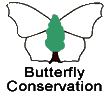
-9374191332.jpg)
-8096352168.jpg)
-2598018283.jpg)
-6178857902.jpg)
-8035991881.jpg)
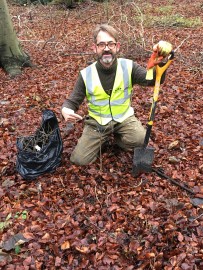
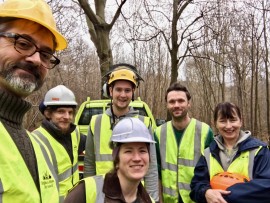
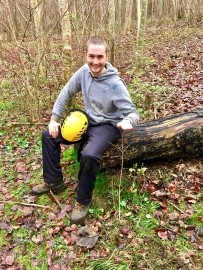
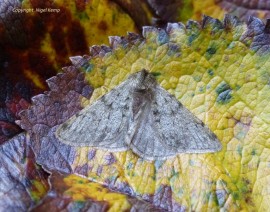
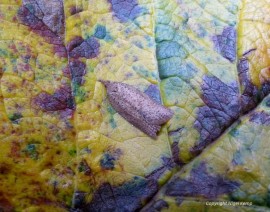
-5028363950.jpg)
-8280901419.jpg)
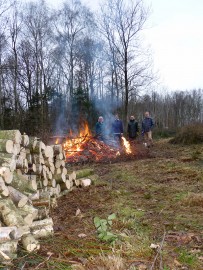
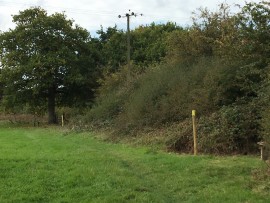
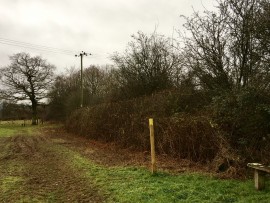
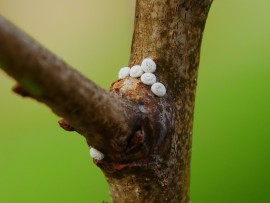
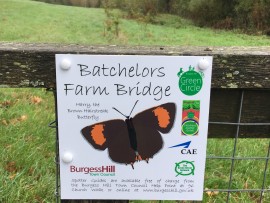
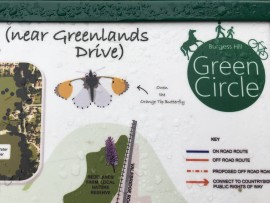
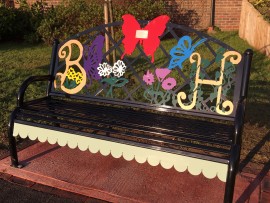
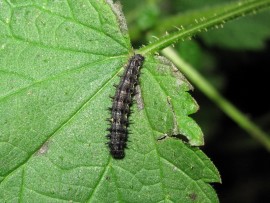
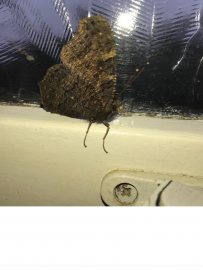
-6488478677.jpg)
-5463442406.jpg)
-8181403158.jpg)
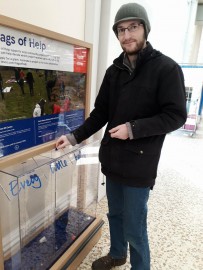
---copy---copy-5813974118.jpg)
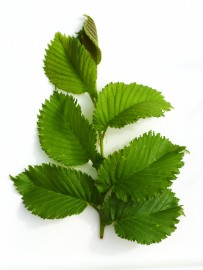
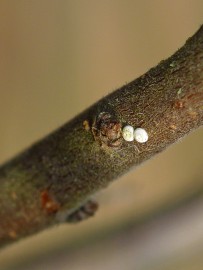

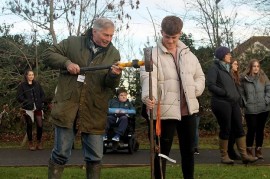
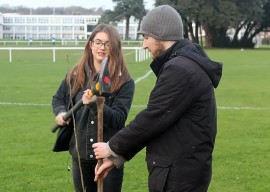
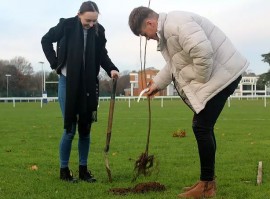
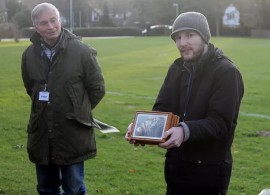
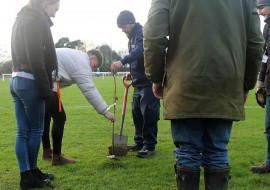
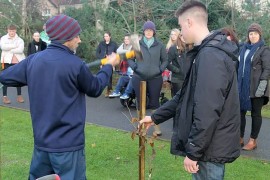
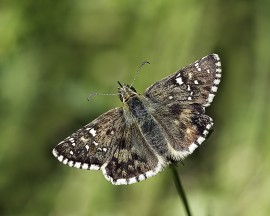

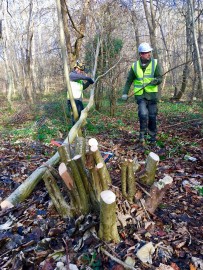
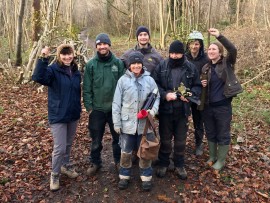

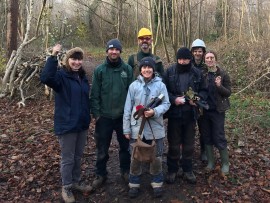
-8761316332.jpg)
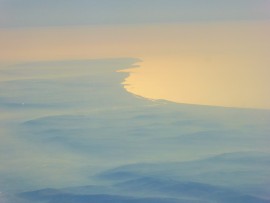
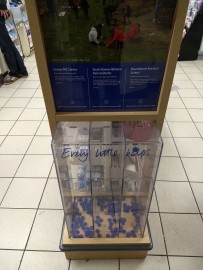
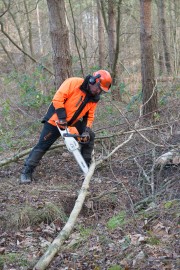

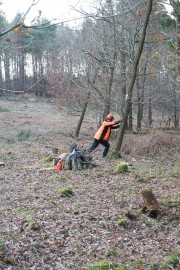
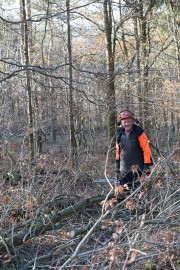

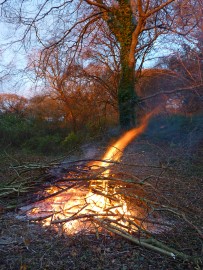
-28.11.17-5997927980.jpg)
-28.11.17-7963040750.jpg)
-28.11.17-9506360311.jpg)
-28.11.17-795505037.jpg)
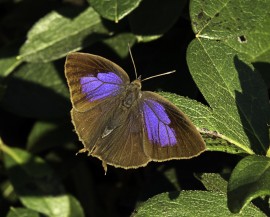
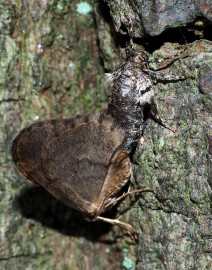
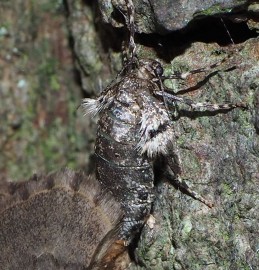
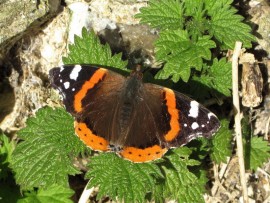
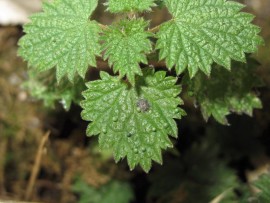
-7257281048.jpg)
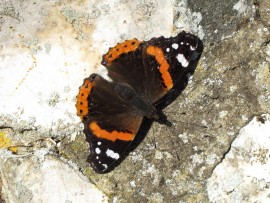
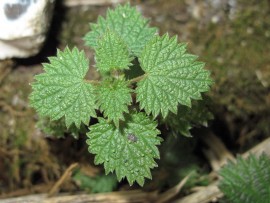
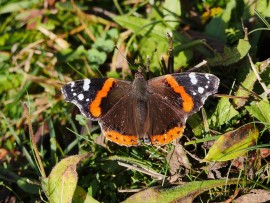
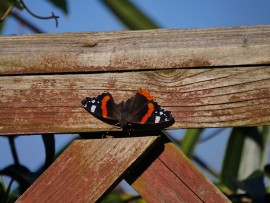
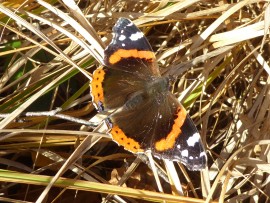
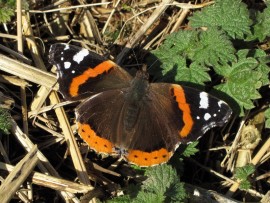
-22.11.17-8956324071.jpg)
-22.11.17-4147660331.jpg)
-22.11.17-6351839131.jpg)
-22.11.17-5474184574.jpg)

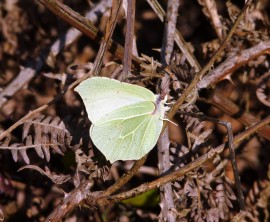
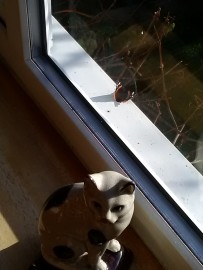
-21.11.17-3342410158.jpg)
-21.11.17-6595363020.jpg)
-21.11.17-5965782566.jpg)
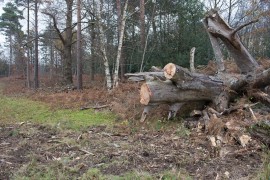
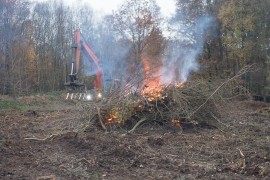
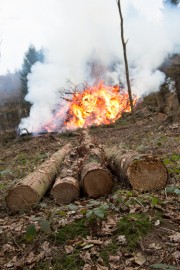
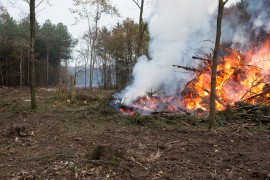


-4458100092.jpg)
-2911013988.jpg)
-1679973430.jpg)
-9648836981.jpg)
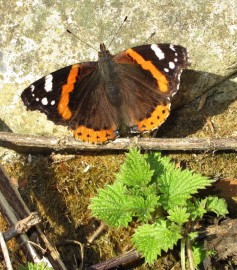

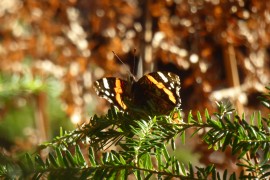
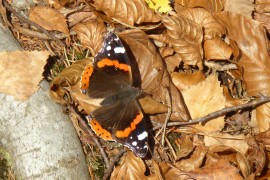
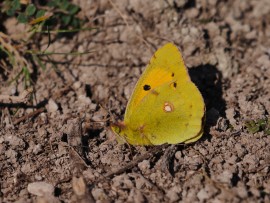
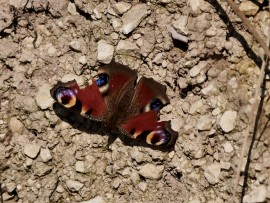
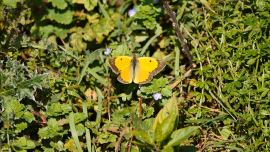
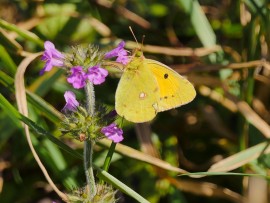
-5438755759.jpg)
-16.11.17-2285958207.jpg)
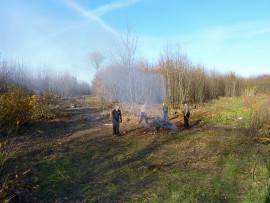
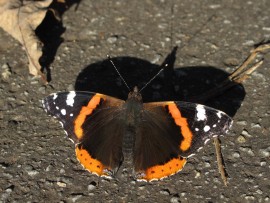
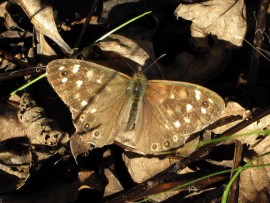
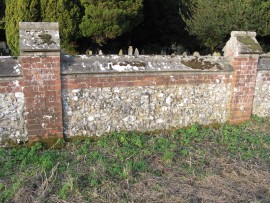
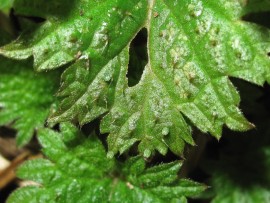
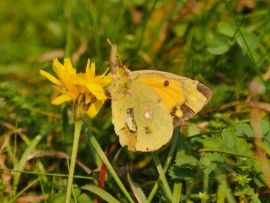
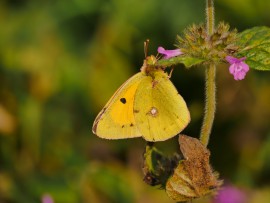
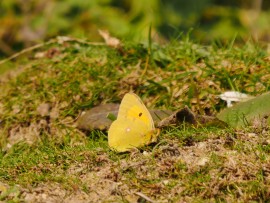
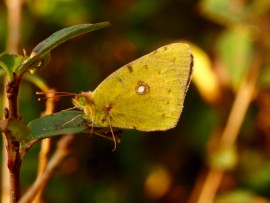
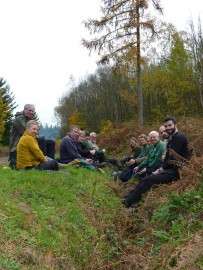
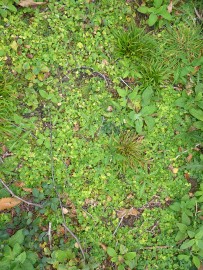
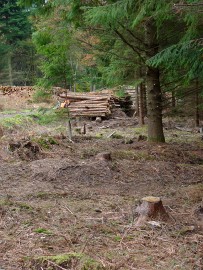
-1803614585.jpg)
-3636379544.jpg)
-12.11.17-9873474757.jpg)
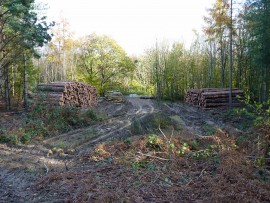
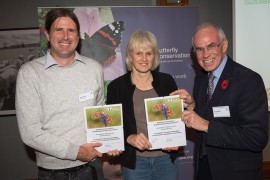
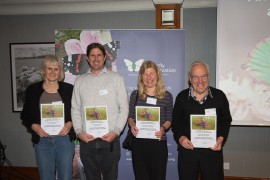
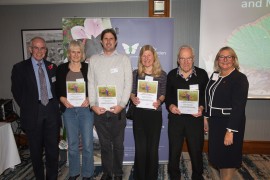
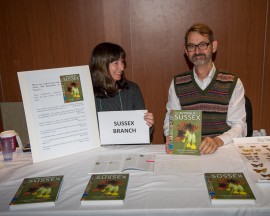
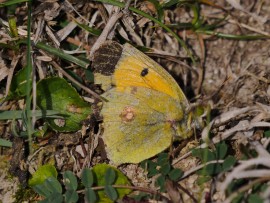
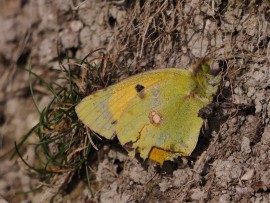
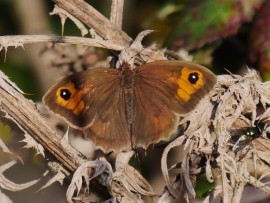


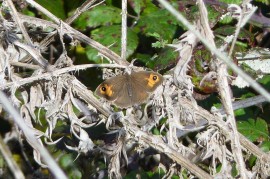

-8.11.17-3296675281.jpg)
-8.11.17-3507475517.jpg)
-8.11.17-8132777316.jpg)
-8.11.17-8460219660.jpg)
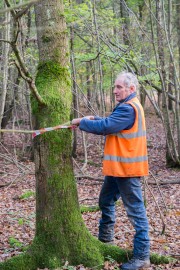
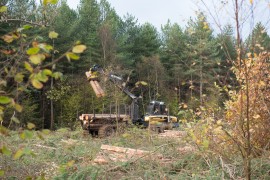
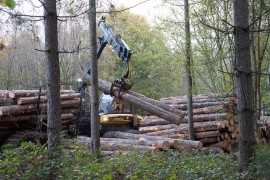
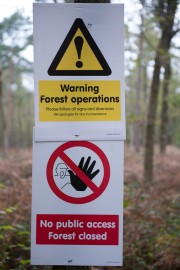


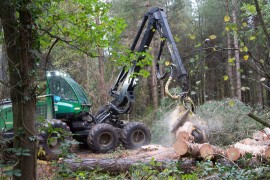
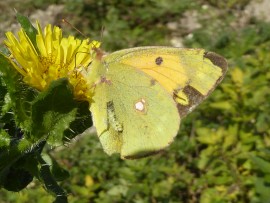
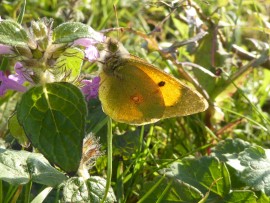
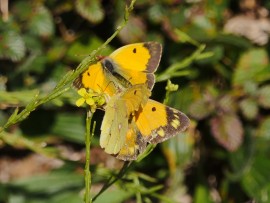

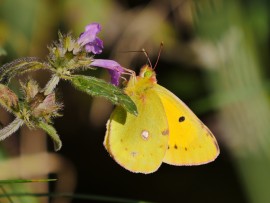
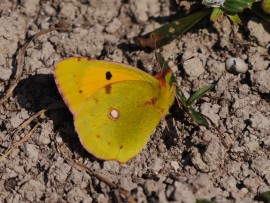
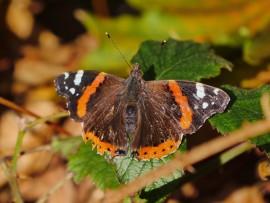

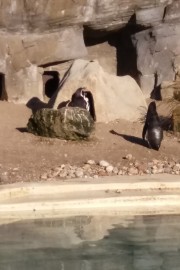
-8639293061.jpg)
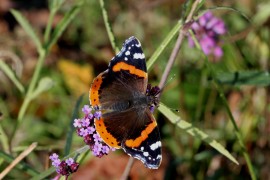
-1750338990.jpg)
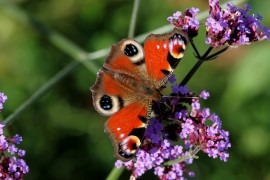
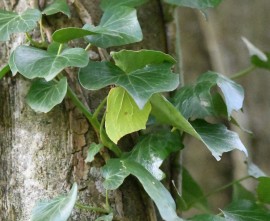
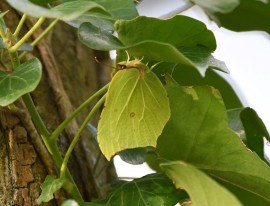
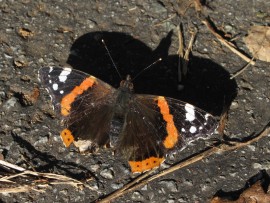

-5.11.17-817313673.jpg)
-5.11.17-7521989061.jpg)
-5.11.17-4179846164.jpg)
-5.11.17-8493990898.jpg)
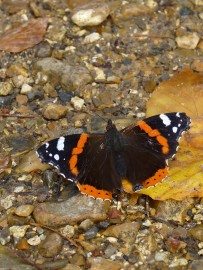
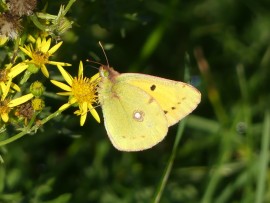
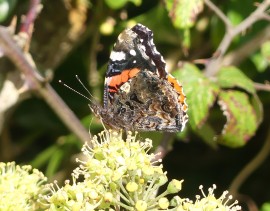
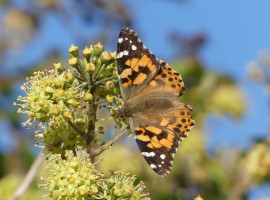
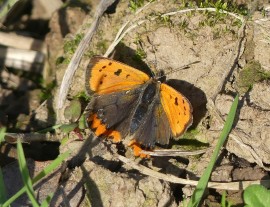
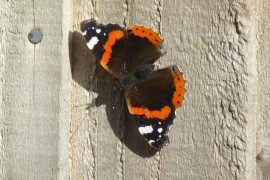
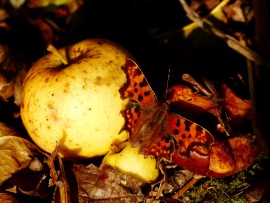
-2564700562.jpg)
-7828919282.jpg)
-7687807301.jpg)
-629018959.jpg)
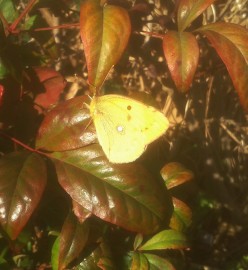
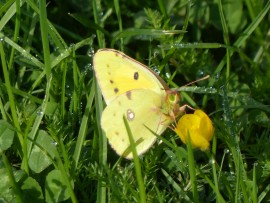
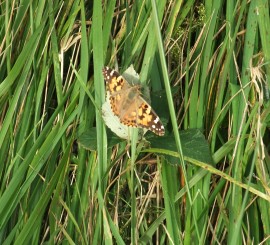



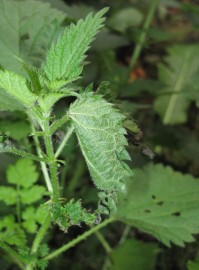
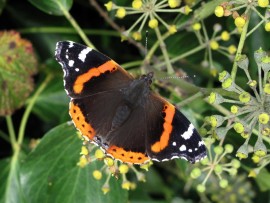

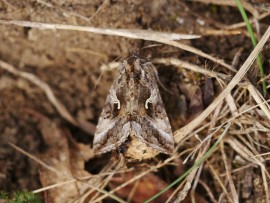
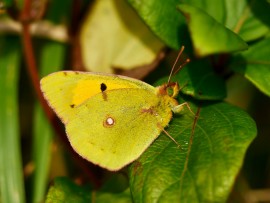
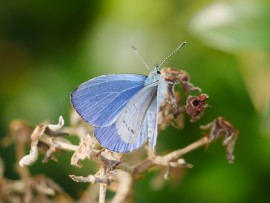
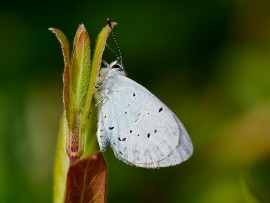
-6756104030.jpg)
-3120348788.jpg)
-7072343993.jpg)
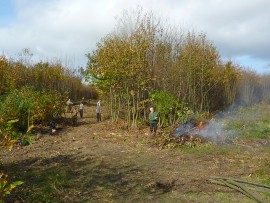
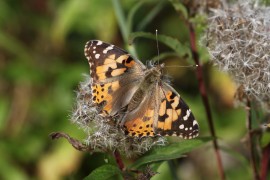
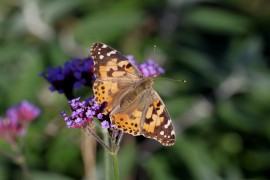
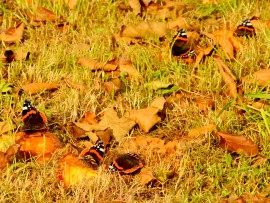


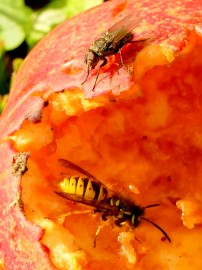
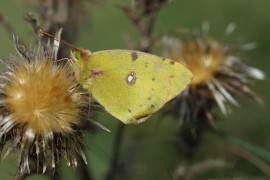
-1946463142.jpg)
-1361188627.jpg)
-3441351992.jpg)
-3036355082.jpg)
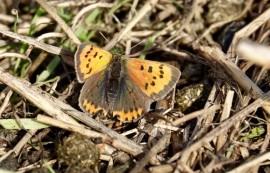
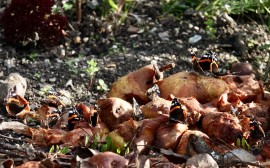
-4185294667.jpg)
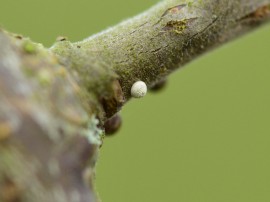
-5510743125.jpg)
-436942540.jpg)
-1301802527.jpg)
-4715781663.jpg)
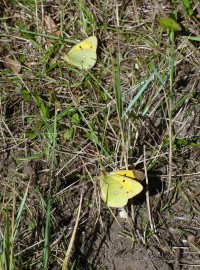
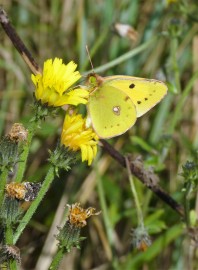
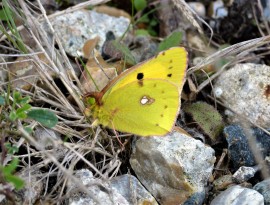
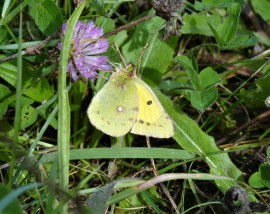
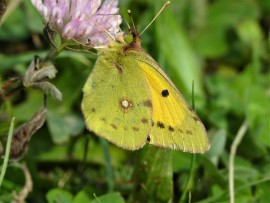
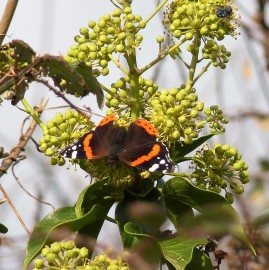
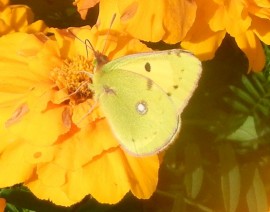
-littlehampton-27-october-(colin-knight)-849983924.jpg)
-littlehampton-27-october-(colin-knight)-8722373037.jpg)
-littlehampton-27-october-(colin-knight)-1862774356.jpg)
-2008962673.jpg)
-2-2470568791.jpg)
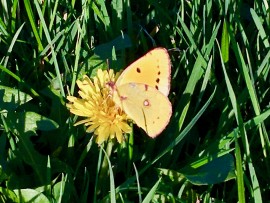
-978153799.jpg)
-4730385206.jpg)
-7021000697.jpg)
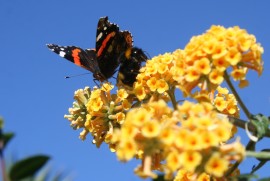
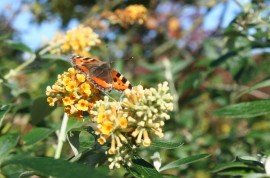

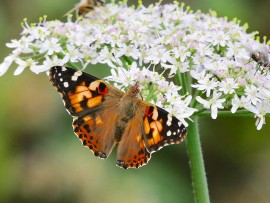

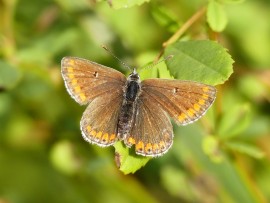
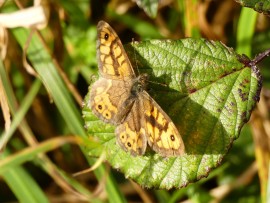
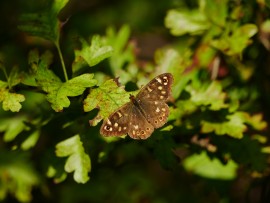
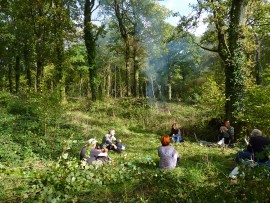
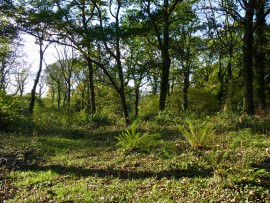
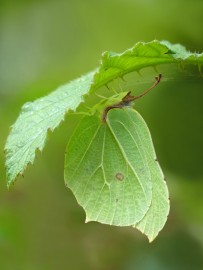

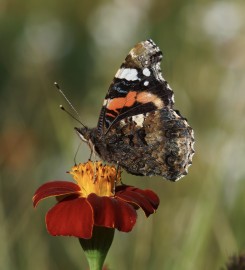
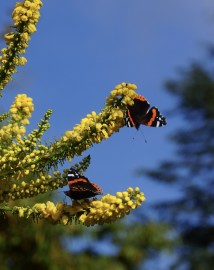
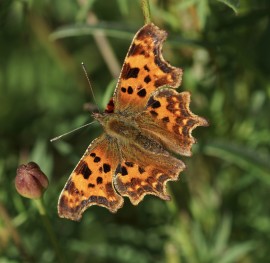
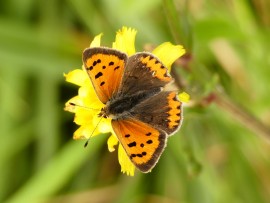
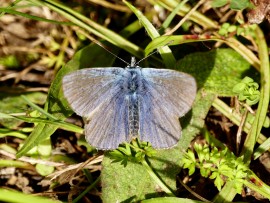
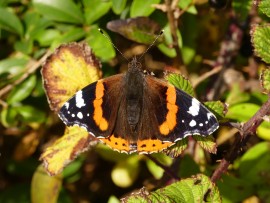
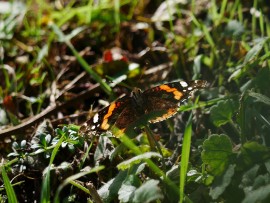
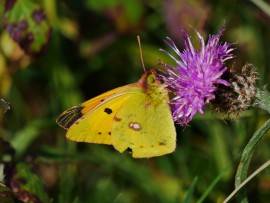
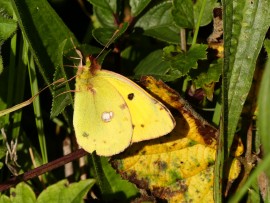
-2660947311.jpg)
-2518037860.jpg)
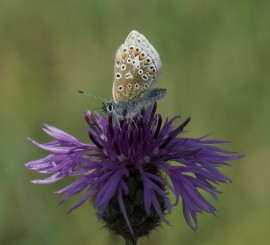
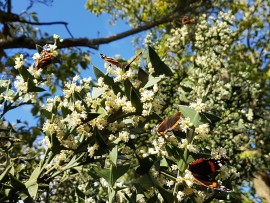
-9547469448.jpg)
-(1024x633)-2458940176.jpg)
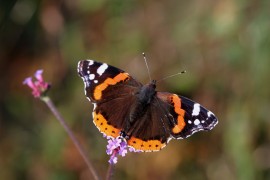
-5212060487.jpg)
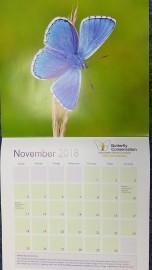
-(716x1024)-5247679324.jpg)

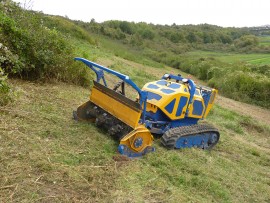
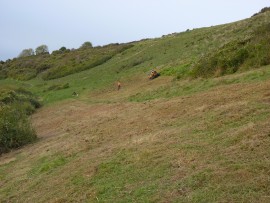
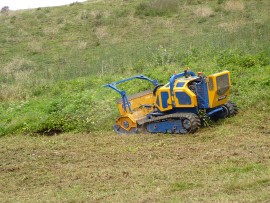
-1519724065.jpg)
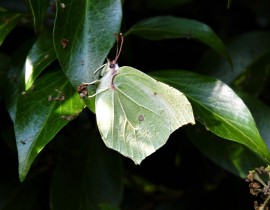
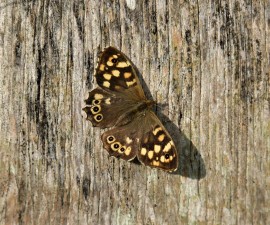
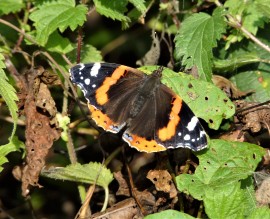
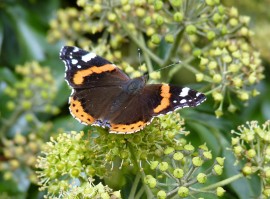
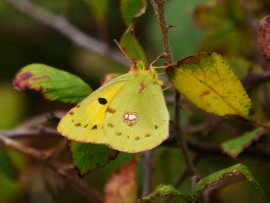
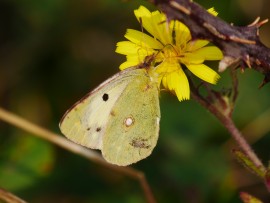
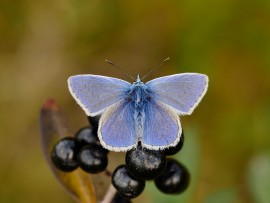
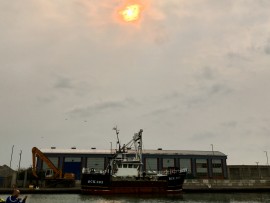
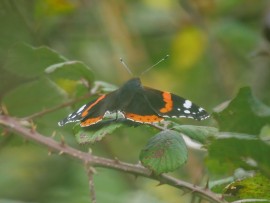
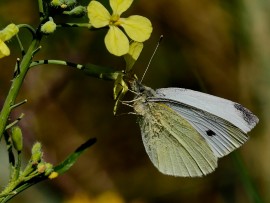
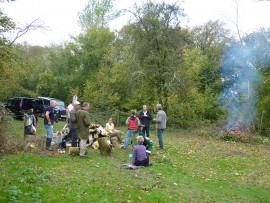
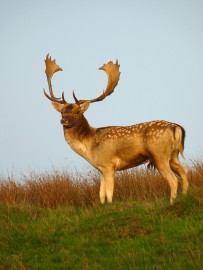
-petworth-15.10.17-4237447674.jpg)
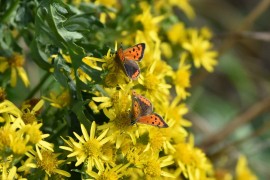
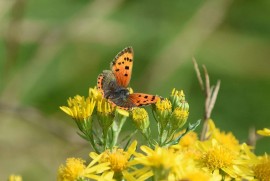
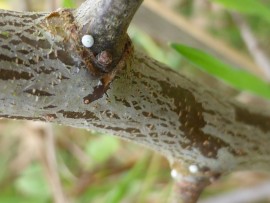
-5286119738.jpg)
-2958788713.jpg)
-3842600453.jpg)
-9304029354.jpg)
-2003558995.jpg)
-7167092165.jpg)
-378411393.jpg)
-9800711721.jpg)
-5662679849.jpg)
-1437383783.jpg)
-4022588068.jpg)
-6709793312.jpg)
-5133678559.jpg)
-9899352276.jpg)
-1422869749.jpg)
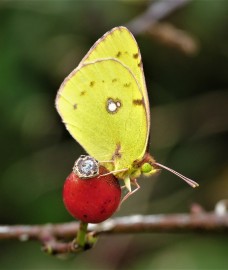
-6733625074.jpg)
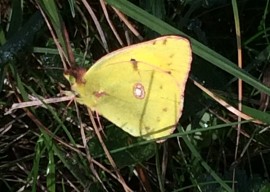
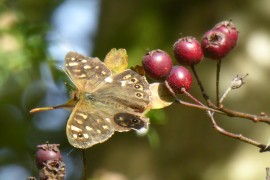
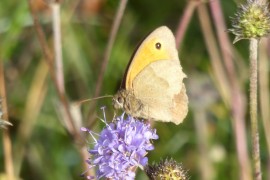
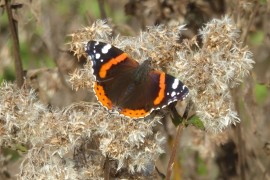

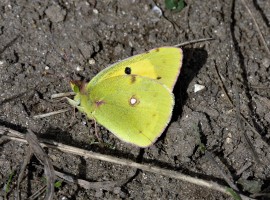
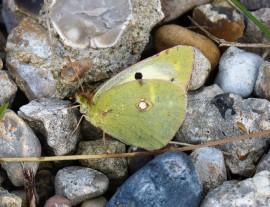
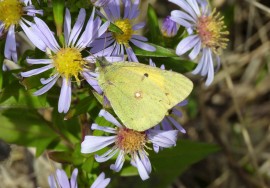
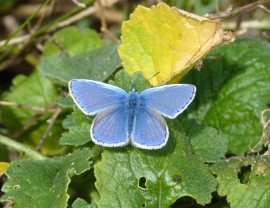
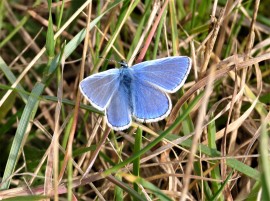
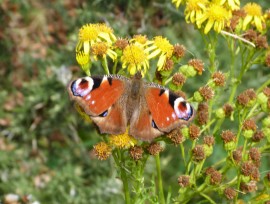
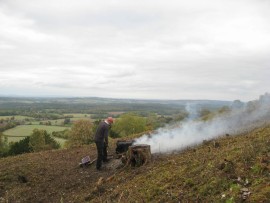
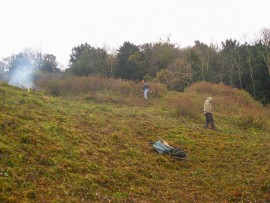
-8714215308.jpg)
-3005007826.jpg)
-5232156049.jpg)
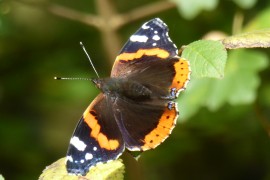
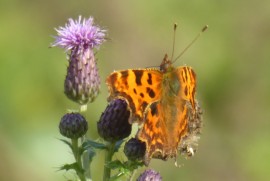
,-8.10.17-7478910908.jpg)
,-8.10.17-3850782061.jpg)

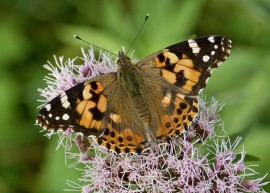
-3699047262.jpg)
-6860433164.jpg)
-7000322467.jpg)
-4262337801.jpg)
-553622390.jpg)
-1711280755.jpg)
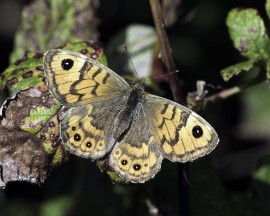
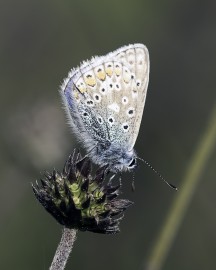
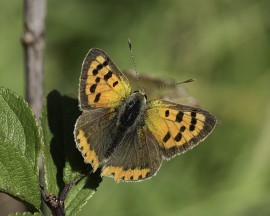
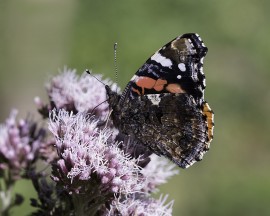
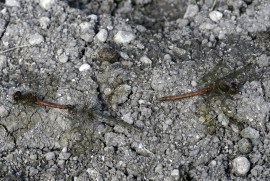
-996121889.jpg)
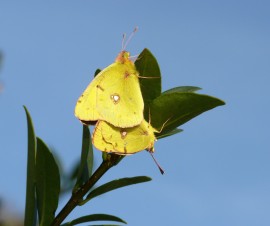
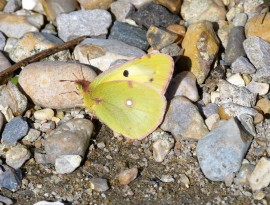
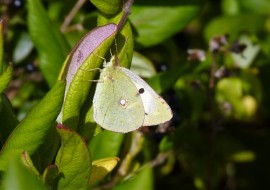
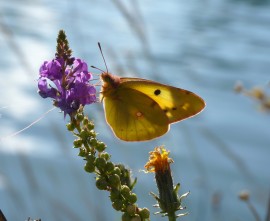
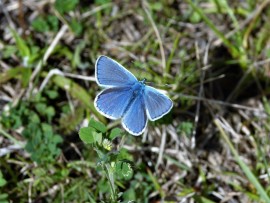

-6031404724.jpg)
-133401718.jpg)
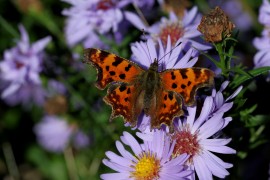
-9280987121.jpg)
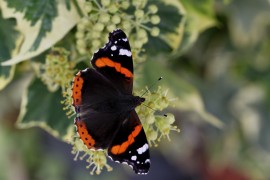
-5136811910.jpg)
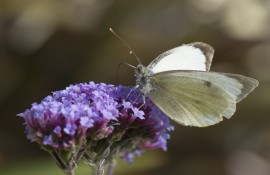
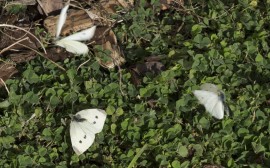
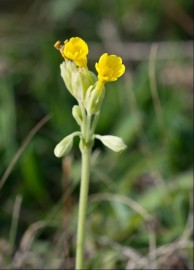
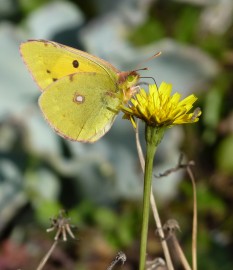

-5.10.17-3586587659.jpg)
-5.10.17-1722283572.jpg)
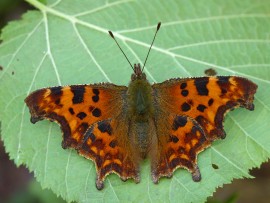

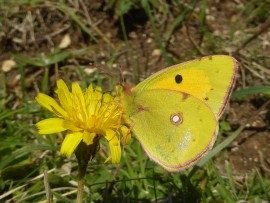
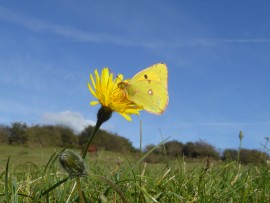
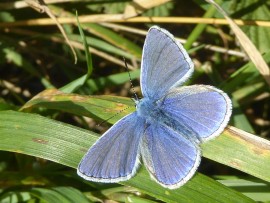

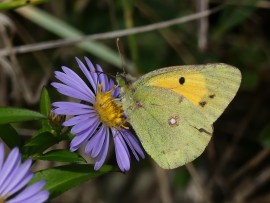
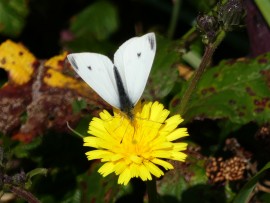
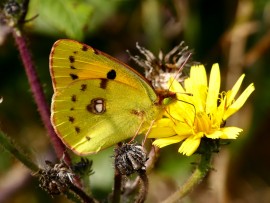
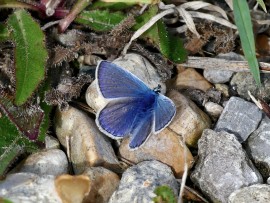
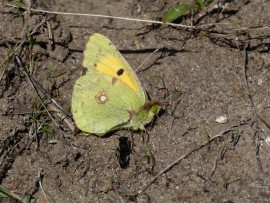
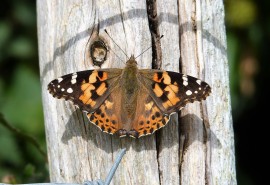
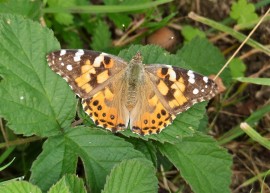
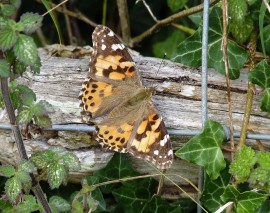
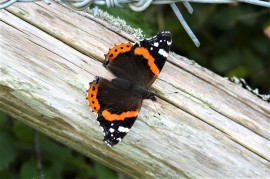

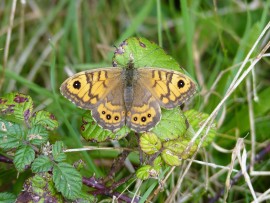
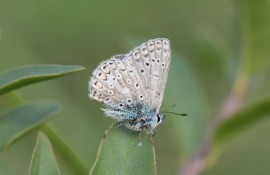
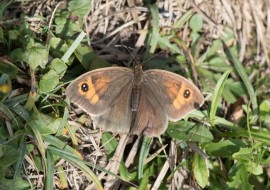
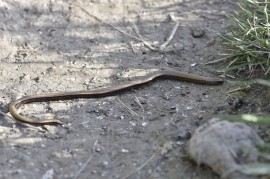
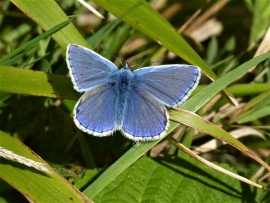
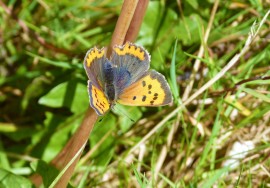
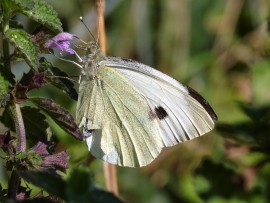
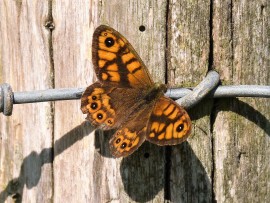
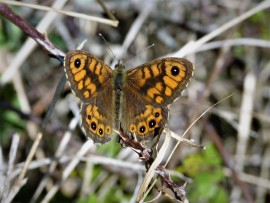
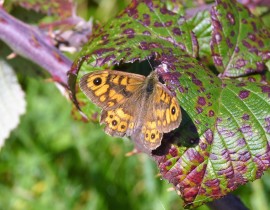
-7155057885.jpg)
-9339829627.jpg)
-8942491868.jpg)
-1022044657.jpg)
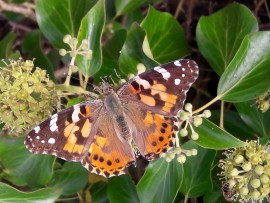
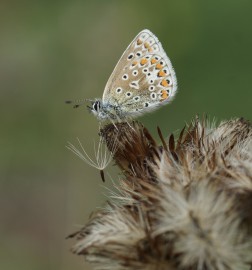
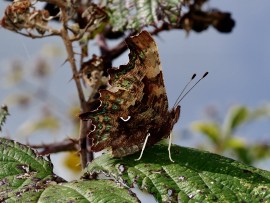
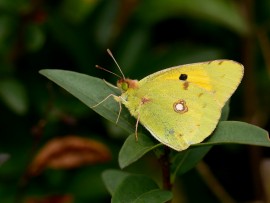
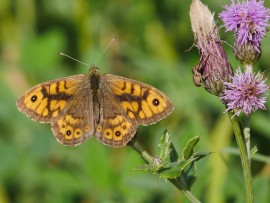
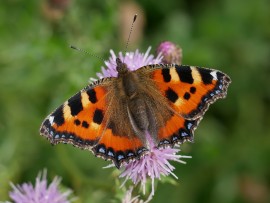
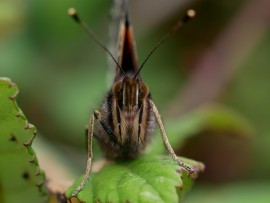
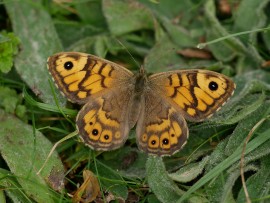
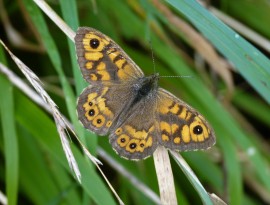
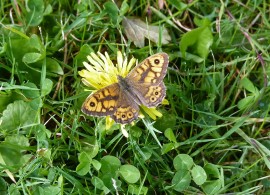
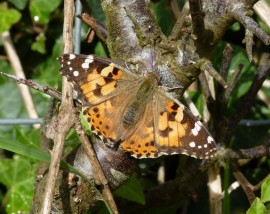
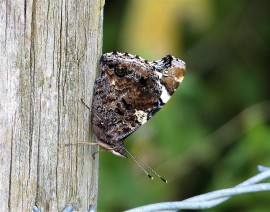
-1933941710.jpg)
-6456019729.jpg)
-5973577178.jpg)
-7034250479.jpg)
-7257512030.jpg)
-1133967810.jpg)
-5599298407.jpg)
-9380433517.jpg)
-6163626890.jpg)
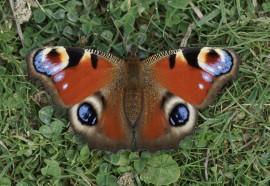
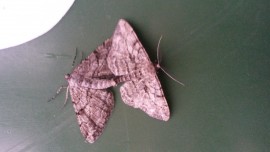
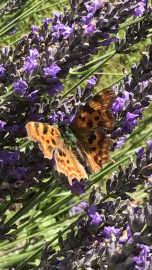
-3891467992.jpg)
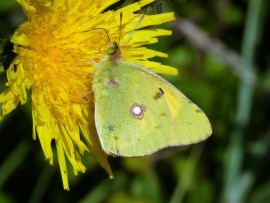
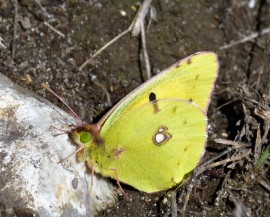
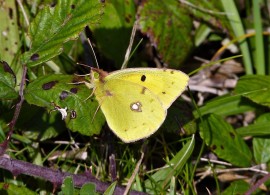
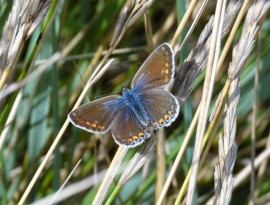
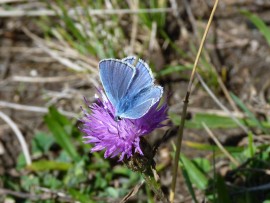
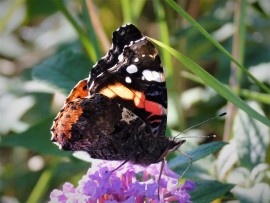
-348359262.jpg)
-4152159984.jpg)
-7909837635.jpg)
-3822522214.jpg)
-mill-hill,-26.9.17-7923701023.jpg)
-mill-hill,-26.9.17-2759931748.jpg)
-mill-hill,-26.9.17-7181963832.jpg)
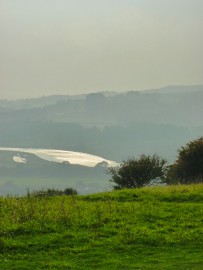
-4774396559.jpg)
-3468296020.jpg)
-1159550063.jpg)
-8336997297.jpg)
-7581352228.jpg)
-9369964255.jpg)
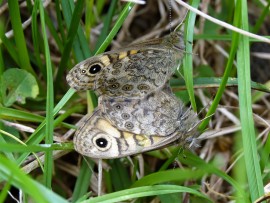
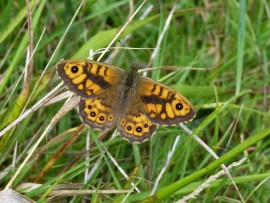
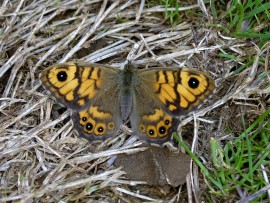
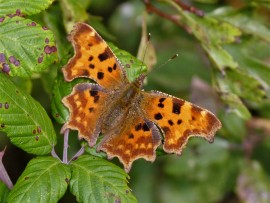
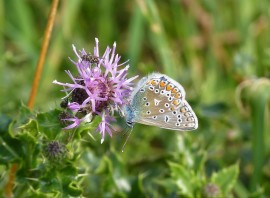
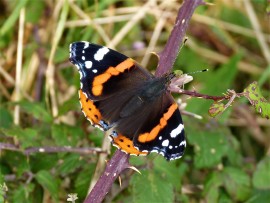
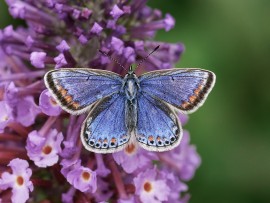
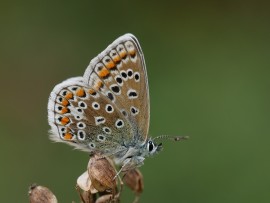
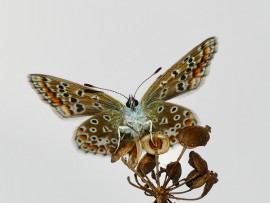
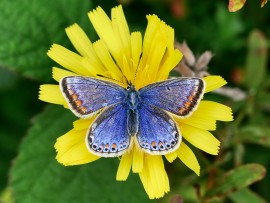
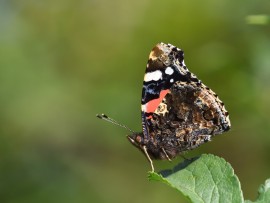
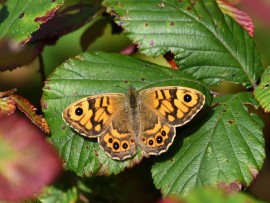
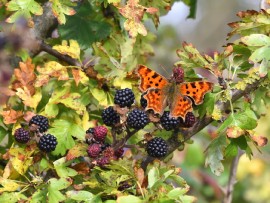
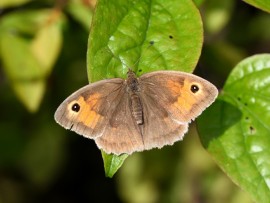
,-cissbury-ring-24.9.17-490295249.jpg)
,-cissbury-ring-23.9.17-4953940091.jpg)
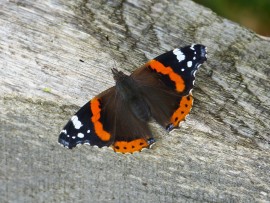
-4341363799.jpg)
-53453492.jpg)
-1275698081.jpg)
-8321586726.jpg)
-6850849506.jpg)

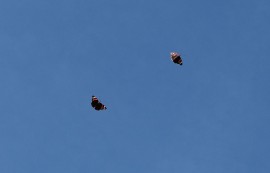

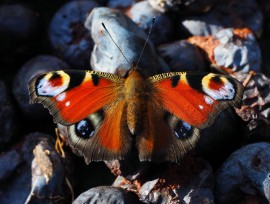
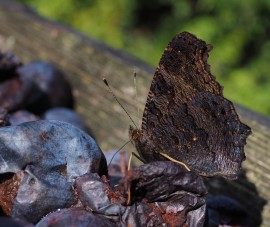
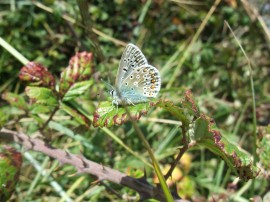

-3183082481.jpg)
-5062490445.jpg)
-(2)-3600779962.jpg)
-9252362875.jpg)
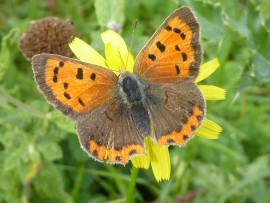
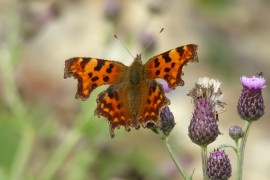
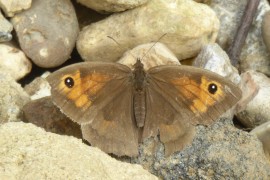

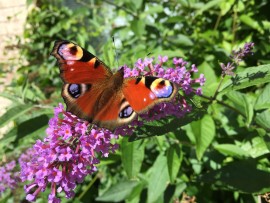
-8431145981.jpg)
-6039815908.jpg)
-9316860260.jpg)
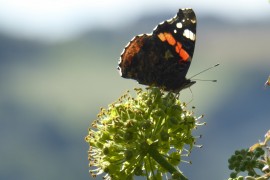
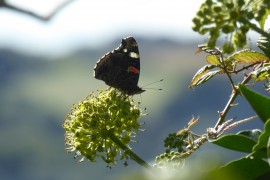
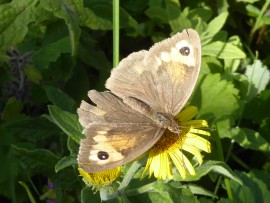
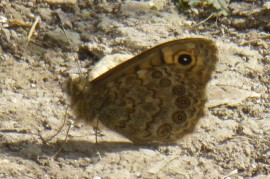
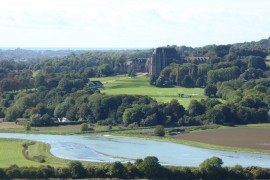
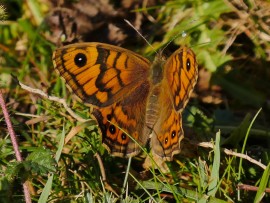
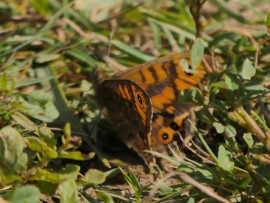

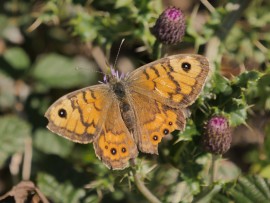

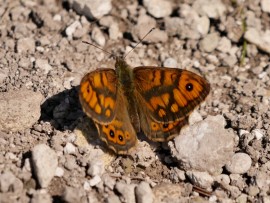
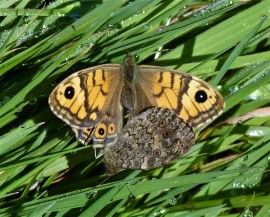
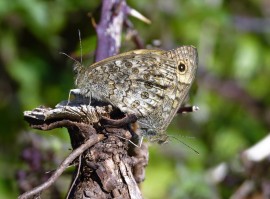
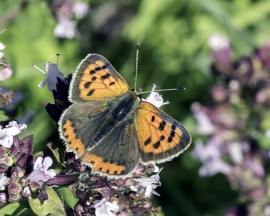
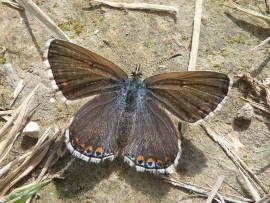
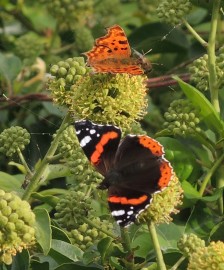
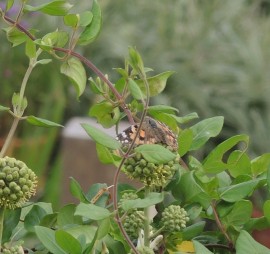
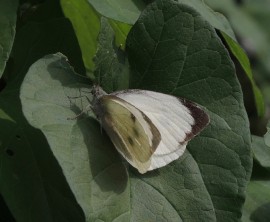
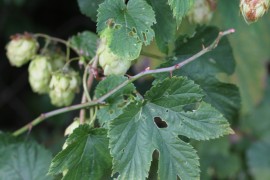
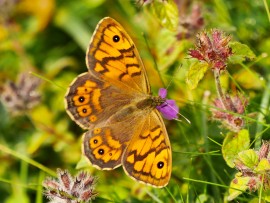
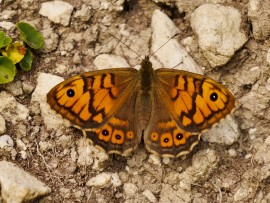
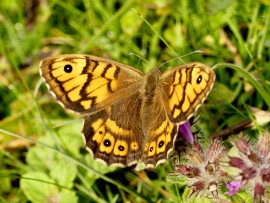
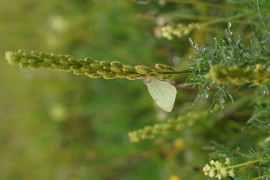
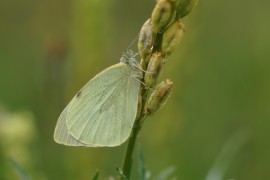
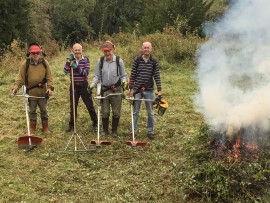
-2945709791.jpg)
-8705960214.jpg)
-3503856249.jpg)
-226651765.jpg)
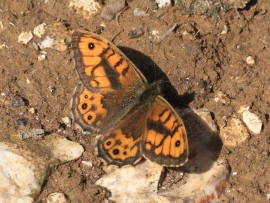
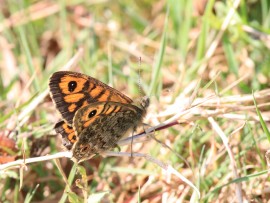
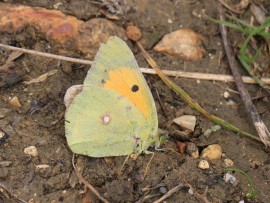
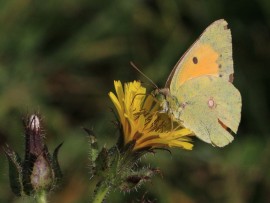
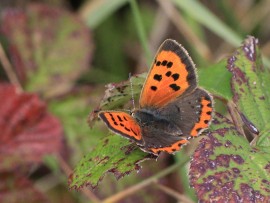
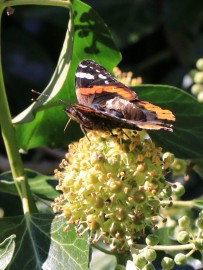
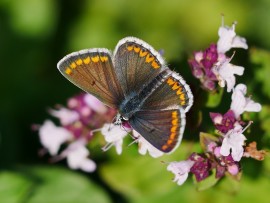
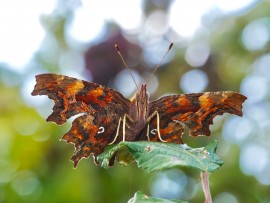
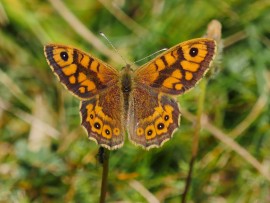

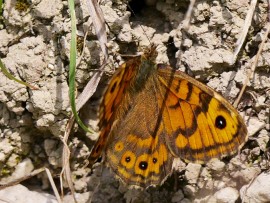
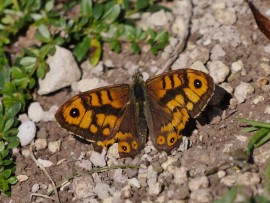
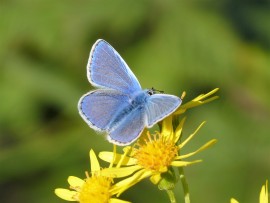
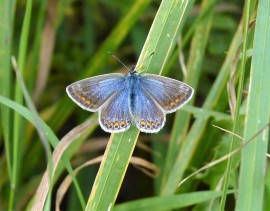
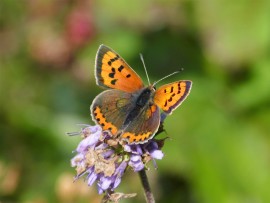
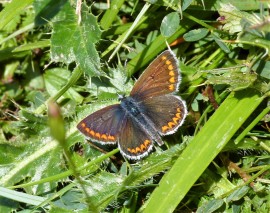
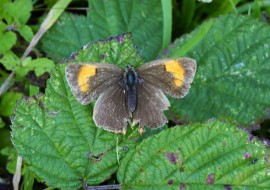
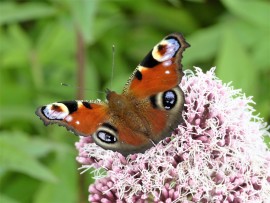
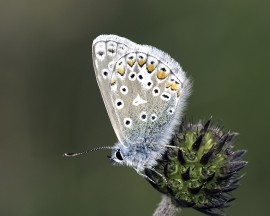
-7184664960.jpg)
-2117706560.jpg)
-1649089832.jpg)
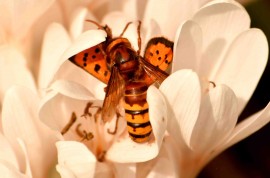
-697990520.jpg)
-3093090266.jpg)
-32839355.jpg)
-5648964415.jpg)
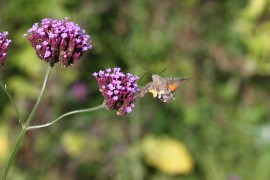
-5713005606.jpg)
-1297023748.jpg)

-6053770757.jpg)
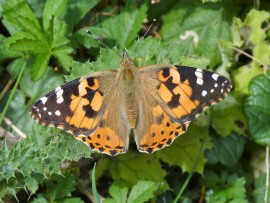
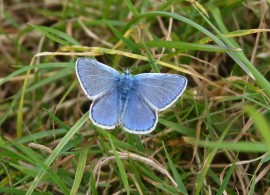
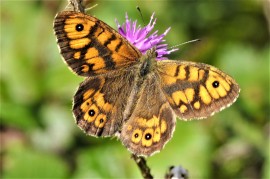
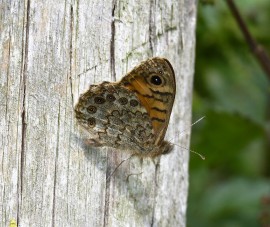
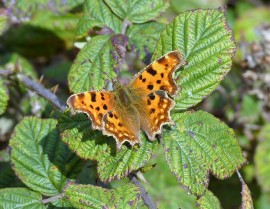
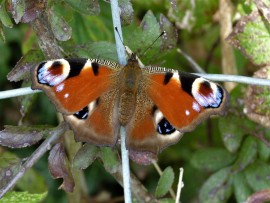
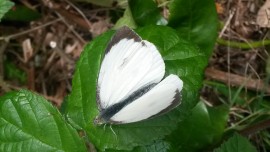
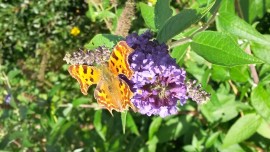
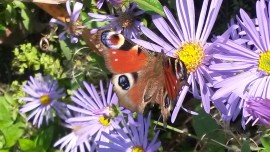

-9065001709.jpg)
-4960599555.jpg)
-9286176287.jpg)
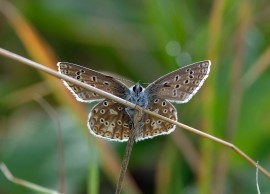
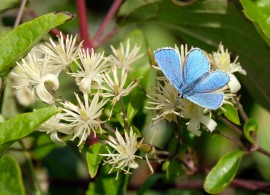
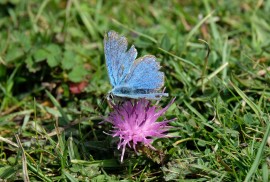
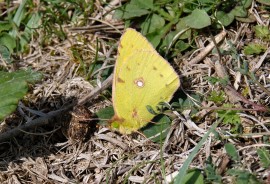
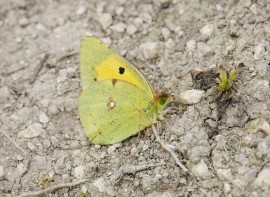
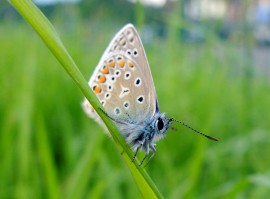
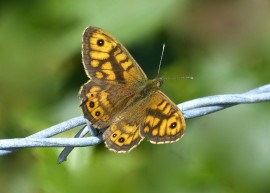
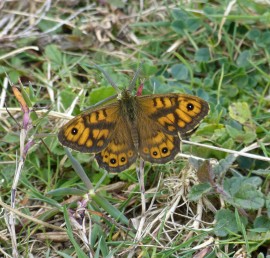
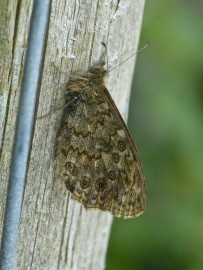
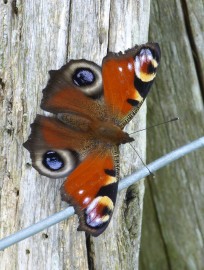

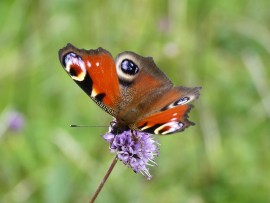

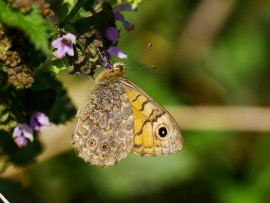


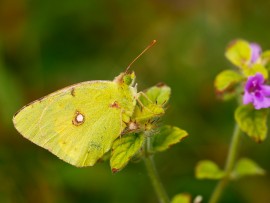
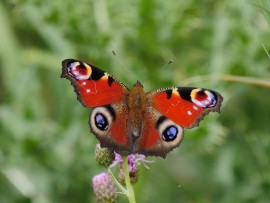
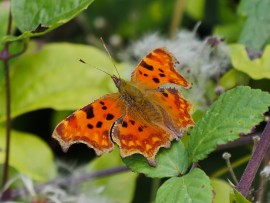
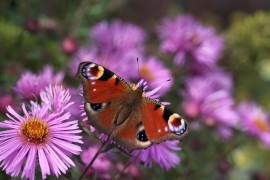
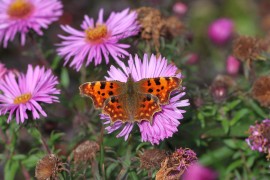

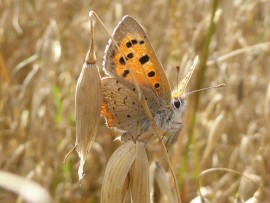
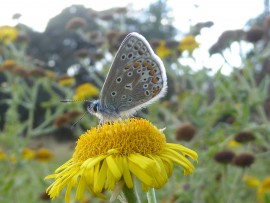
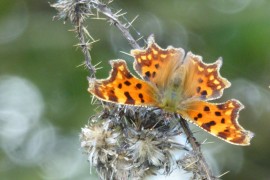
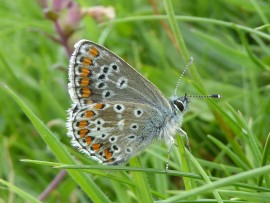
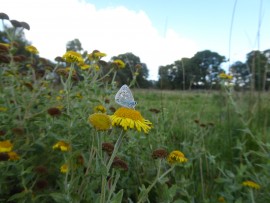
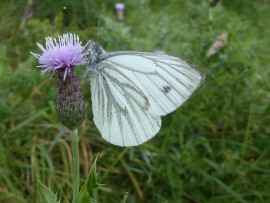
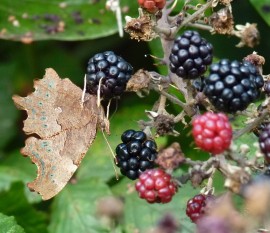
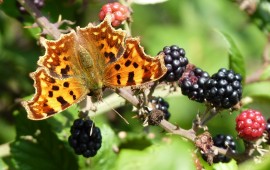

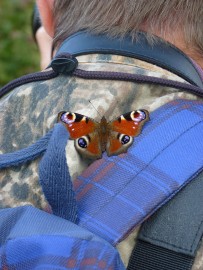
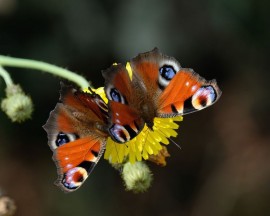
-1262657339.jpg)
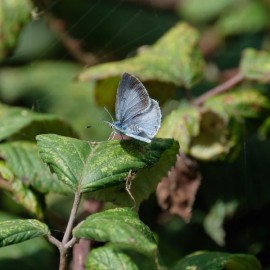
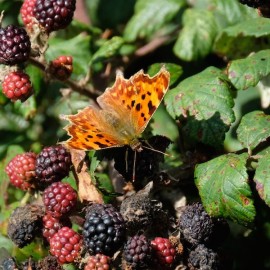
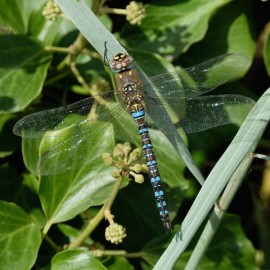
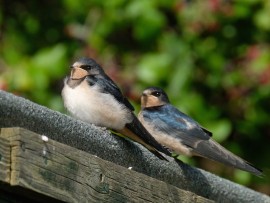
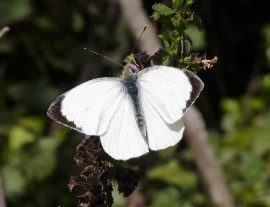
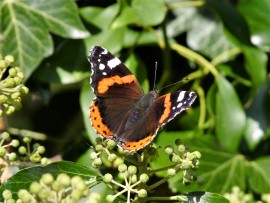
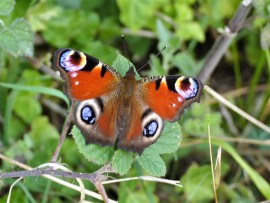

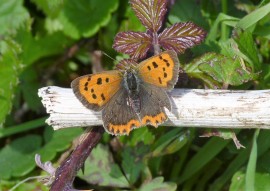
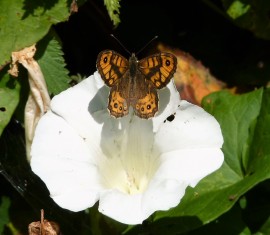
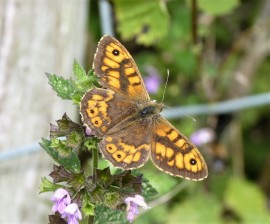
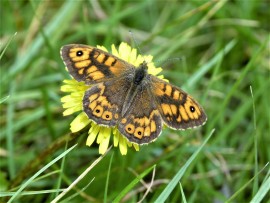

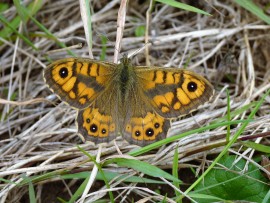
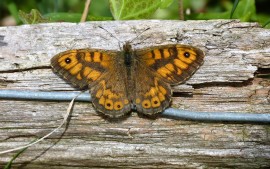
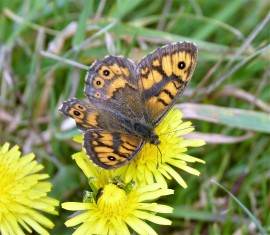
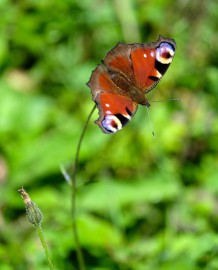
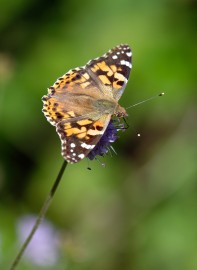
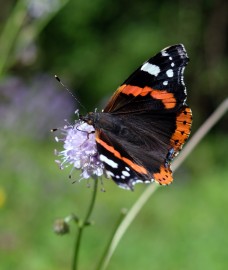
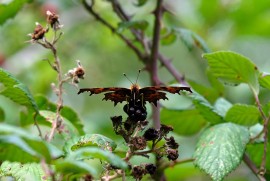
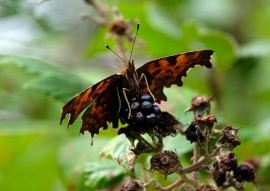
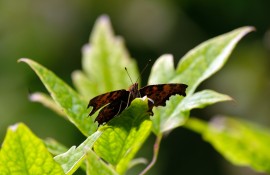
-5644885371.jpg)
-903184586.jpg)
-5547177926.jpg)
-3979925340.jpg)

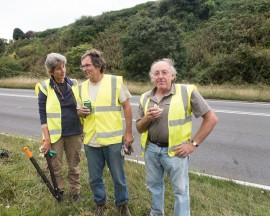
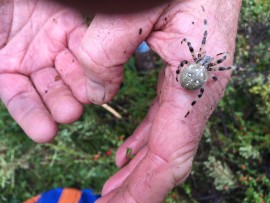
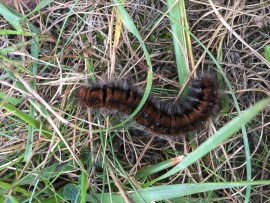

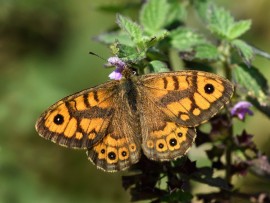
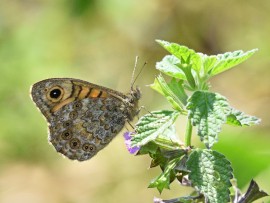
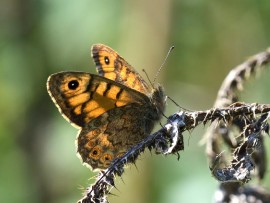
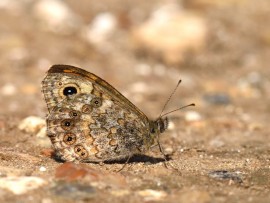

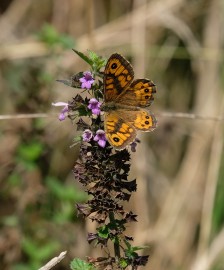
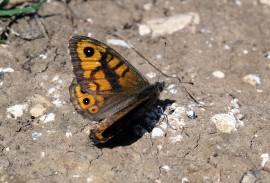
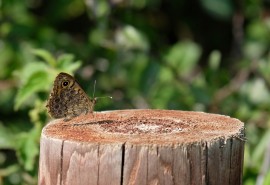
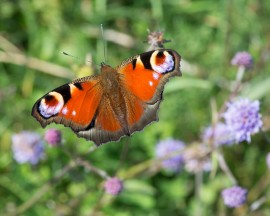
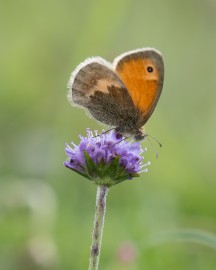
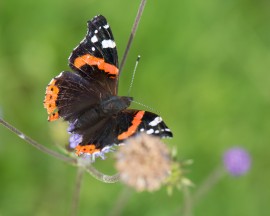
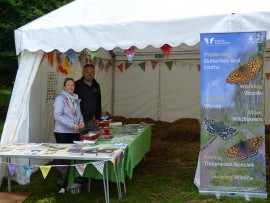
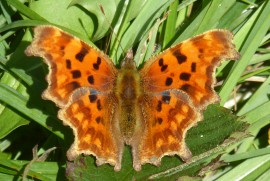
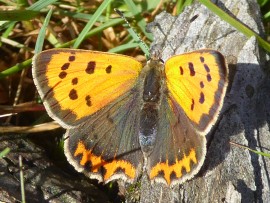
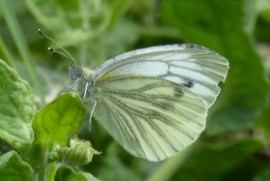
-littlehampton-9-september-(colin-knight)-7872749748.jpg)
-littlehampton-9-september-(colin-knight)-9292871742.jpg)
-littlehampton-9-september-(colin-knight)-2-4568135100.jpg)
-littlehampton-9-september-(colin-knight)-4975765421.jpg)
-littlehampton-9-september-(colin-knight)-9319488215.jpg)
-littlehampton-9-september-(colin-knight)-967700104.jpg)
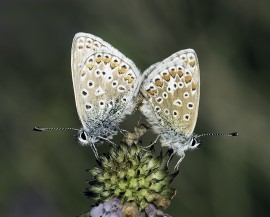
-7971283849.jpg)
-6805032407.jpg)
-9925289433.jpg)
-4373117368.jpg)
-3810292370.jpg)
-4383953376.jpg)
-5721720829.jpg)

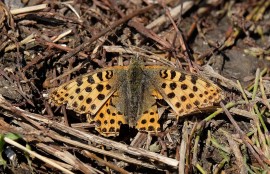
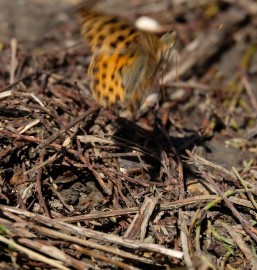
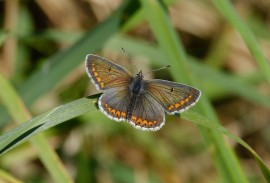
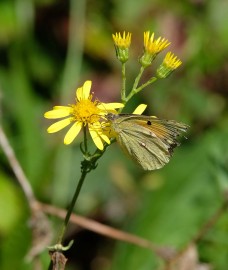
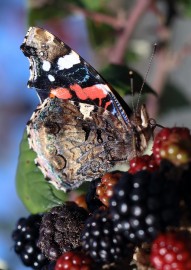
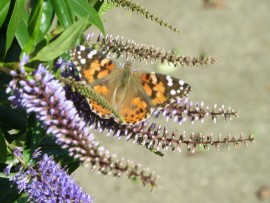
-4716454059.jpg)
-7368110339.jpg)
-227697417.jpg)
-7296851356.jpg)
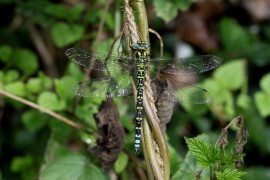
-7836185786.jpg)
-3929472882.jpg)
-343739353.jpg)
-6380595490.jpg)
-9986629951.jpg)
-littlehampton-8-september-(colin-knight)-8002175390.jpg)
-littlehampton-8-september-(colin-knight)--2-7613091822.jpg)
-littlehampton-8-september-(colin-knight)-4237507754.jpg)
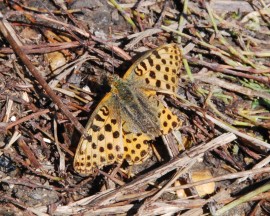
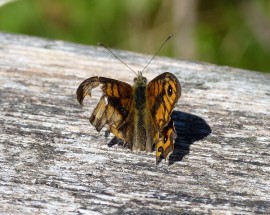
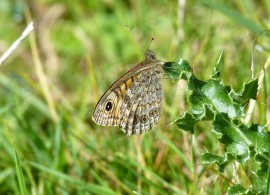
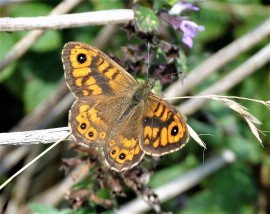

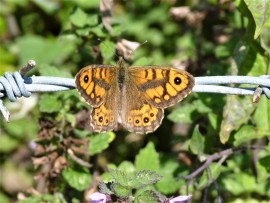
-3443085774.jpg)
-2541588945.jpg)
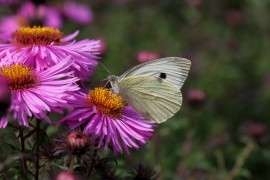
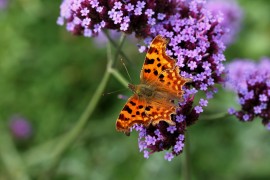
-2918245922.jpg)
-1422833488.jpg)
-5704211657.jpg)
-3149982807.jpg)
-(1280x801)-9503575814.jpg)
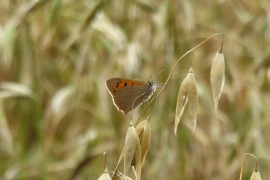

-littlehampton-6-september-(colin-knight)-4015818284.jpg)
-littlehampton-6-september-(colin-knight)2-2789666103.jpg)
-littlehampton-6-september-(colin-knight)-5870749317.jpg)
-littlehampton-6-september-(colin-knight)-6444837292.jpg)
-2199521414.jpg)
-littlehampton-6-september-(colin-knight)-5630031996.jpg)
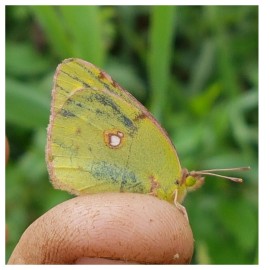

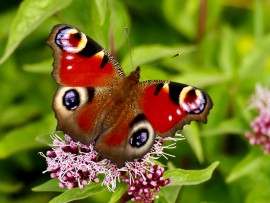
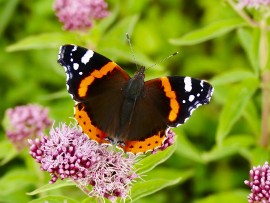
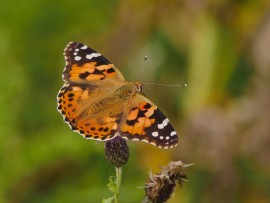
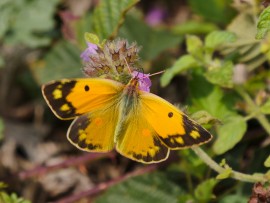
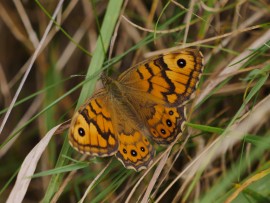
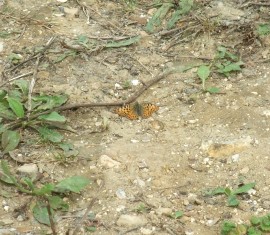
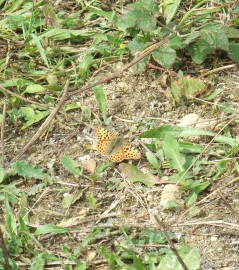
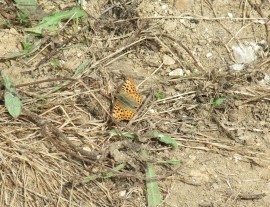
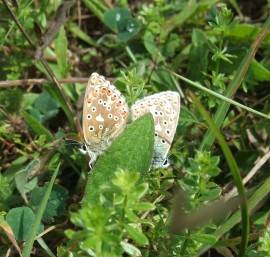
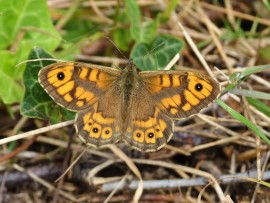
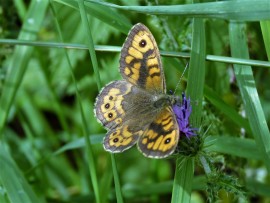
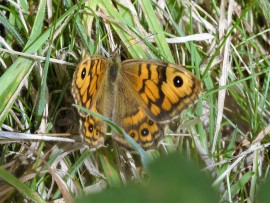
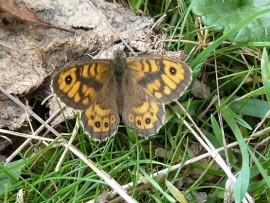
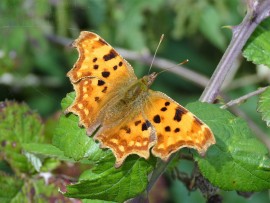
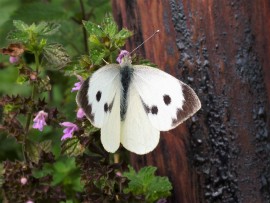
-littlehampton-1-september-(colin-knight)-6976457750.jpg)
-littlehampton-2-september-(colin-knight)-5859761456.jpg)
-littlehampton-4-september-(colin-knight)-1129181548.jpg)
-littlehampton-2-september-(colin-knight)-7769393199.jpg)
-littlehampton-1-september-(colin-knight)-1553149386.jpg)
-mill-hill-5-september-(colin-knight)-8055484779.jpg)
-1929181120.jpg)
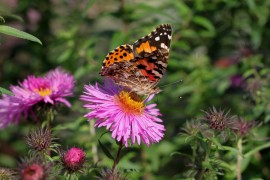
-4180665458.jpg)
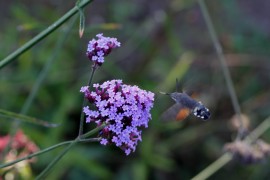
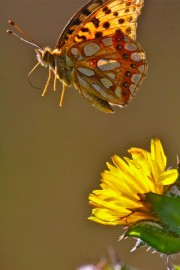
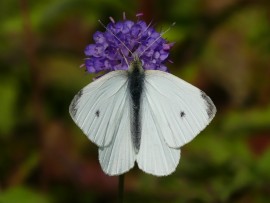
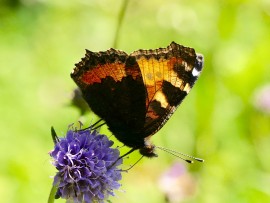
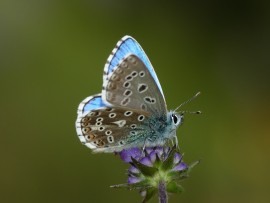
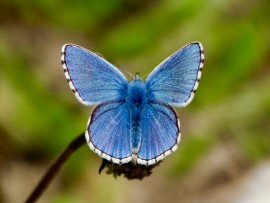
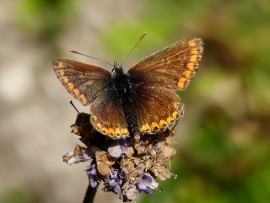
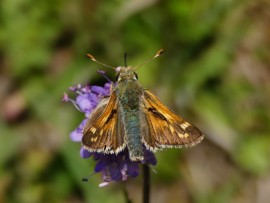

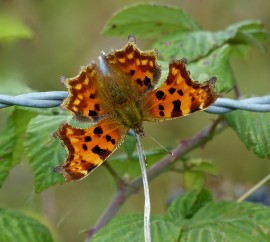
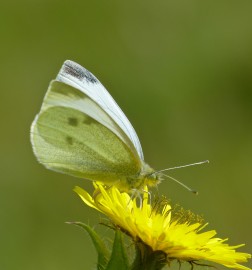
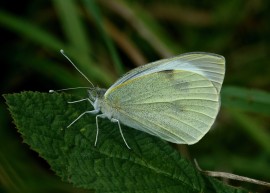

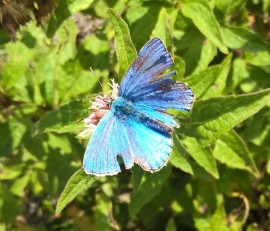
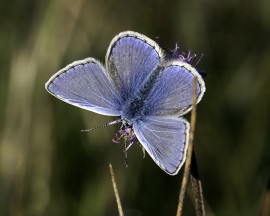

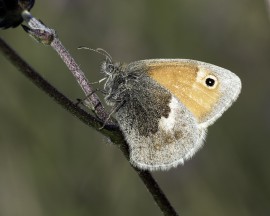
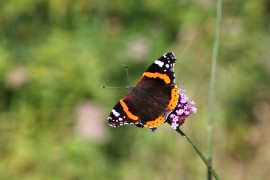
-5055141504.jpg)

-4836373496.jpg)

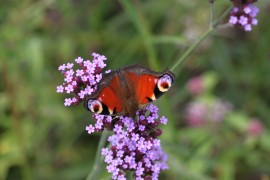
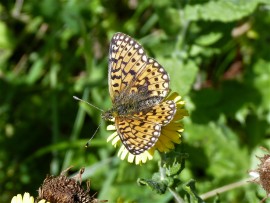
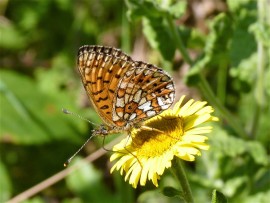
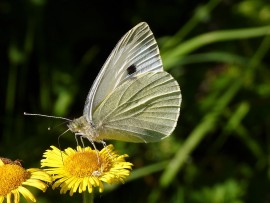
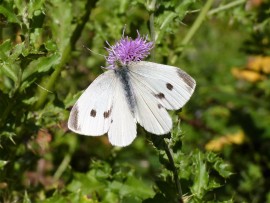
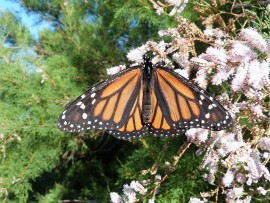
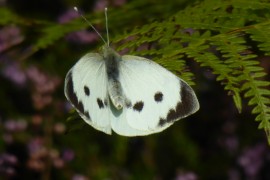
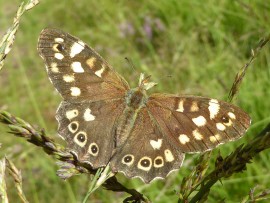
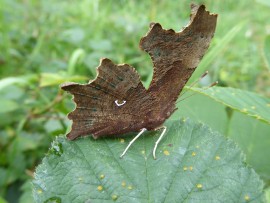
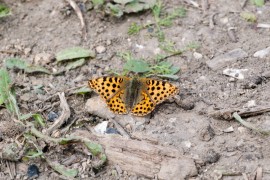

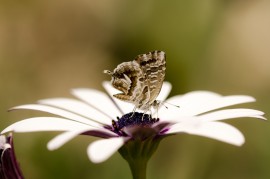
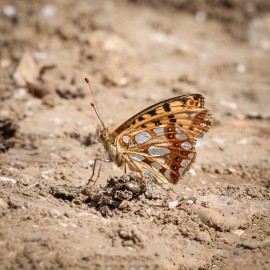
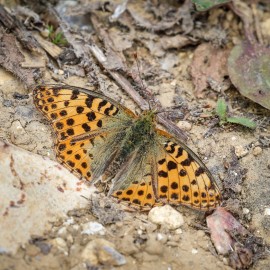
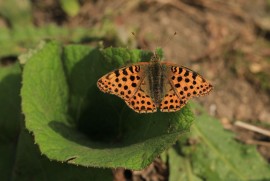
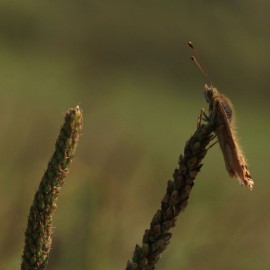
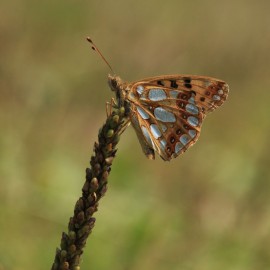
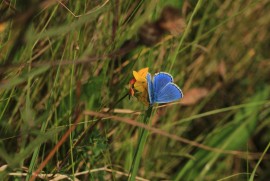
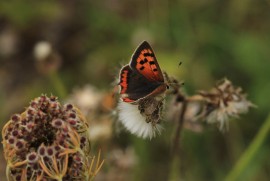
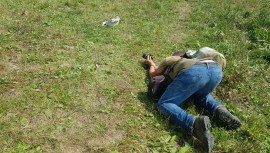
-littlehampton-26-august-(colin-knight)-9447480416.jpg)
-littlehampton-27-august-(colin-knight)-6304352963.jpg)
-littlehampton-27-august-(colin-knight)-1946097388.jpg)
-littlehampton-28-august-(colin-knight)-2786785946.jpg)
-littlehampton-28-august-(colin-knight)-7785260966.jpg)
-littlehampton-28-august-(colin-knight)-1852872264.jpg)
-arundel-wwt-29-august-(colin-knight)-1616107686.jpg)
-littlehampton-25-august-(colin-knight)-3978949440.jpg)
-littlehampton-25-august-(colin-knight)-7937224819.jpg)
-littlehampton-26-august-(colin-knight)-6996249887.jpg)
-littlehampton-26-august-(colin-knight)-564270322.jpg)
-littlehampton-27-august-(colin-knight)-4931324678.jpg)
-littlehampton-27-august-(colin-knight)-9258638527.jpg)
-5575337964.jpg)
-5961014032.jpg)
-7961804047.jpg)
-7173742195.jpg)
-1071882806.jpg)
-8232894353.jpg)
-3342576399.jpg)
-9463547794.jpg)
-9417648212.jpg)
-5719220065.jpg)
-808372735.jpg)
-9226027000.jpg)
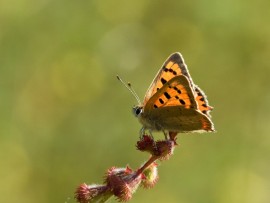
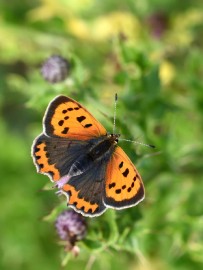
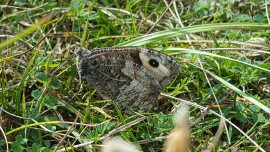
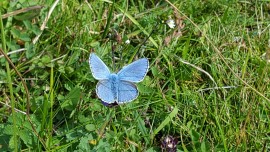
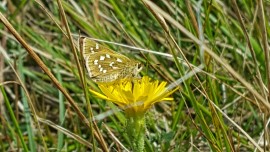
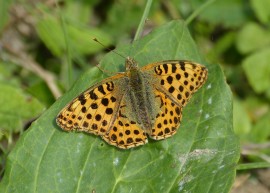
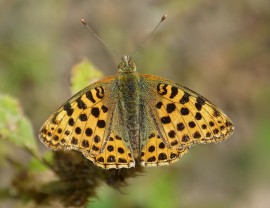
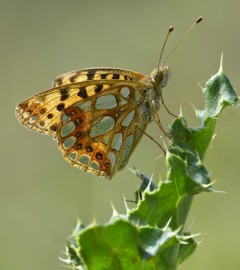
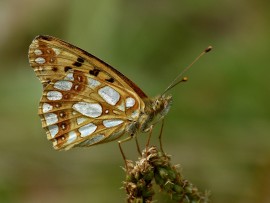
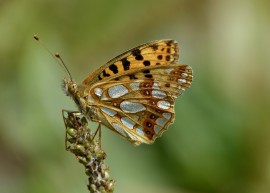
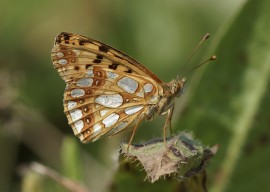
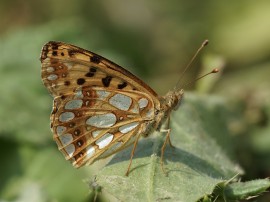
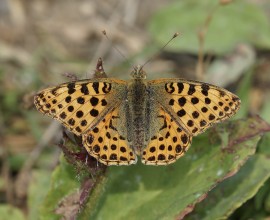
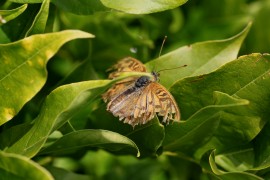

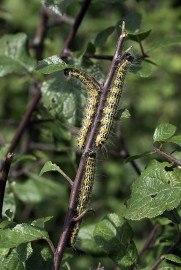
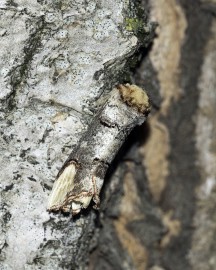
-2657632562.jpg)
-2-3793885996.jpg)
-825975523.jpg)
-4066773783.jpg)
-2-2889108164.jpg)
-2399162086.jpg)
-5627830023.jpg)
-753852780.jpg)
-4809978501.jpg)
-7275645029.jpg)
-8158290982.jpg)
-3136358894.jpg)
,-piddinghoe-28.8.17-5024348041.jpg)
,-piddinghoe-28.8.17-5853605046.jpg)
,-piddinghoe-28.8.17-8077384475.jpg)
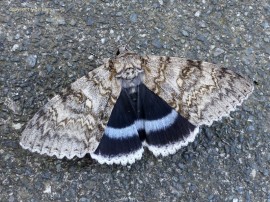
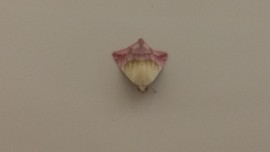
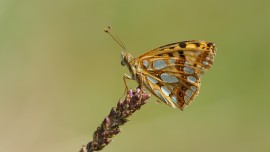
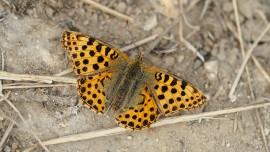
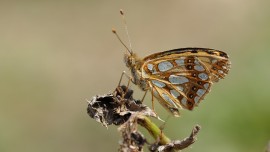
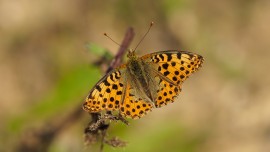
-piddinghoe-27.8.17-4418623037.jpg)
-piddinghoe-27.8.17-7545621795.jpg)
-piddinghoe-27.8.17-1458851383.jpg)
-piddinghoe-27.8.17-1478077084.jpg)
-piddinghoe-27.8.17-477547682.jpg)
-piddinghoe-27.8.17-1111970301.jpg)
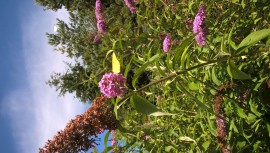
-168720702.jpg)
-9556076093.jpg)
-2-1723641869.jpg)
-5201585227.jpg)
-littlehampton-25-august-(colin-knight)-6399512933.jpg)
-littlehampton-25-august-(colin-knight)-1820496339.jpg)
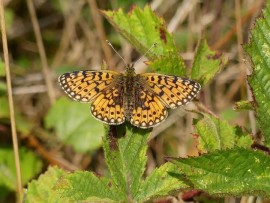
-4164451328.jpg)
-772929550.jpg)
-2779679903.jpg)
-5768361510.jpg)
-1331899617.jpg)
-3352104928.jpg)
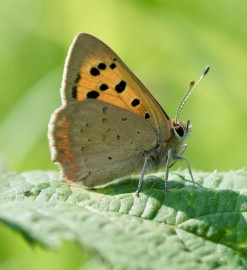
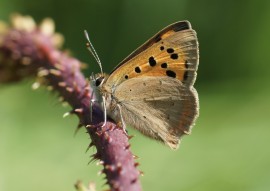
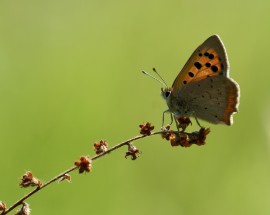
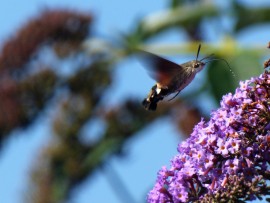
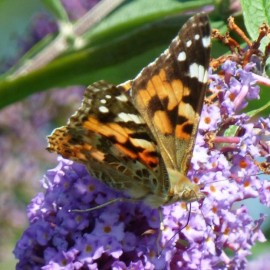

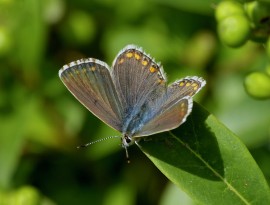
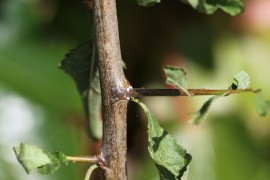
-5848040711.jpg)
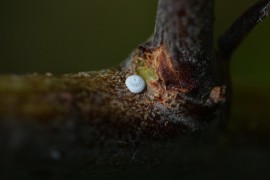
-26.8.17-5343984304.jpg)
-26.8.17-524765383.jpg)
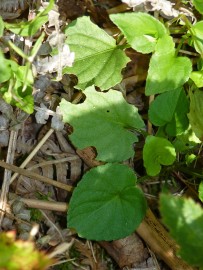
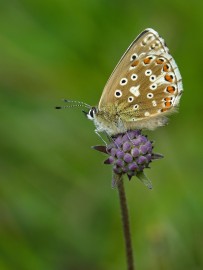

,-sds-25.8.17-7937173554.jpg)
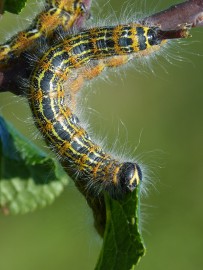
,-sds-25.8.17-7009819461.jpg)
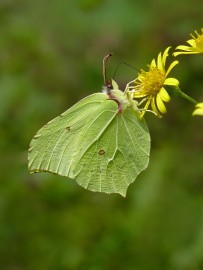
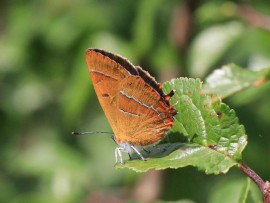
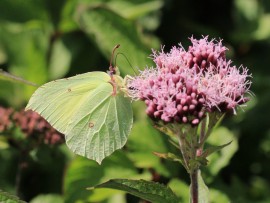
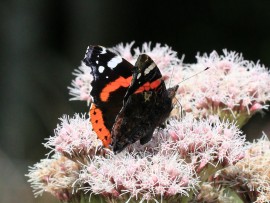
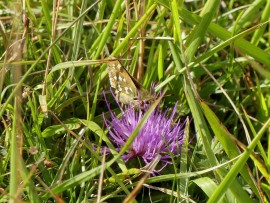

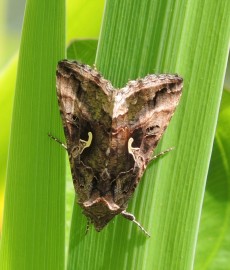

-8097055200.jpg)
-8072045599.jpg)
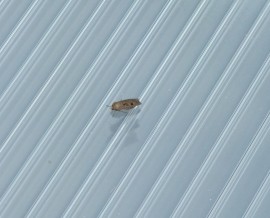

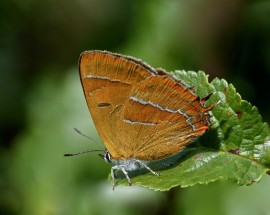
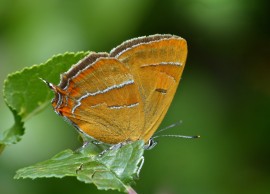
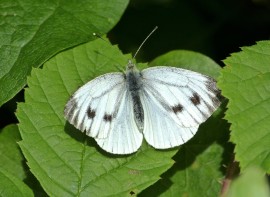
-3518319032.jpg)
-4063571318.jpg)
-8792619630.jpg)
-6686642616.jpg)
-2839685520.jpg)
-5747949969.jpg)
-9036824125.jpg)
-2802079482.jpg)
-4896911084.jpg)
-7906463746.jpg)
-3424746990.jpg)
-steyning-downland-25-august-(colin-knight)-3244091691.jpg)
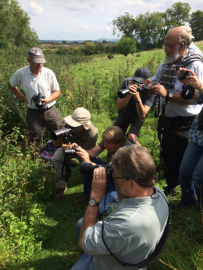
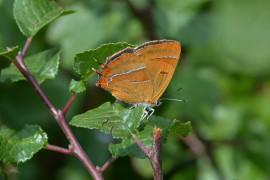
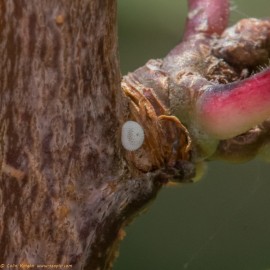
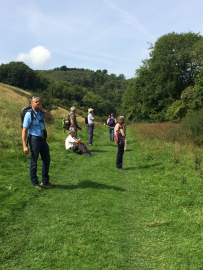
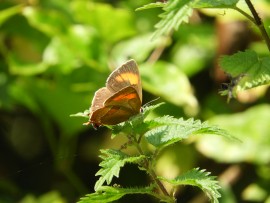
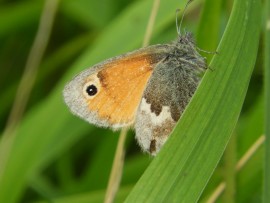
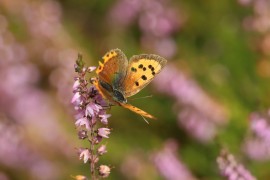
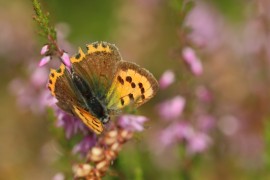
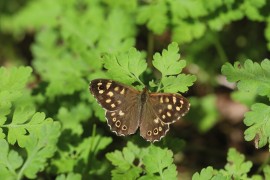
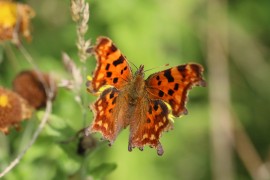
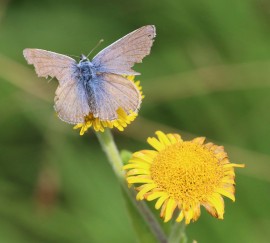
-916871791.jpg)
-8399147596.jpg)
-8921244787.jpg)
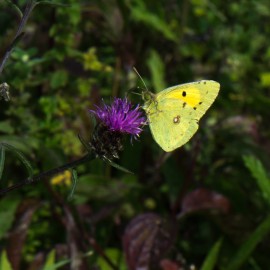
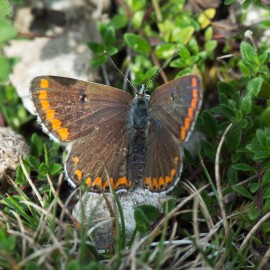
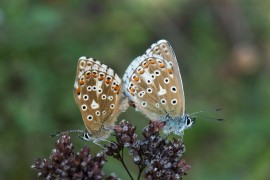
-littlehampton-24-august-(colin-knight)-8997472324.jpg)
-littlehampton-24-august-(colin-knight)-3350317128.jpg)
-1030945833.jpg)
-littlehampton-24-august-(colin-knight)-2748672096.jpg)
-littlehampton-24-august-(colin-knight)-8067130381.jpg)
-littlehampton-24-august-(colin-knight)-5027638496.jpg)
-7651048419.jpg)
-arundel-wwt-23-august-(colin-knight)-9215509728.jpg)
-arundel-wwt-23-august-(colin-knight)2-1686978992.jpg)
-6578052532.jpg)
-arundel-wwt-23-august-(colin-knight)-7580126323.jpg)
-8244268568.jpg)
-270304093.jpg)
-6685804896.jpg)
-3809636873.jpg)
-9374706926.jpg)
-1608355324.jpg)
-arundel-wwt-23-august-(colin-knight)2-4539790004.jpg)
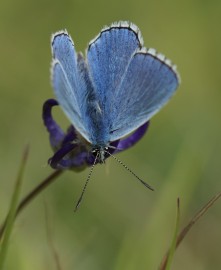

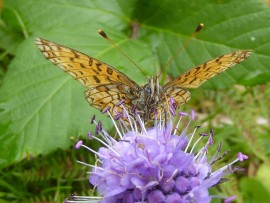
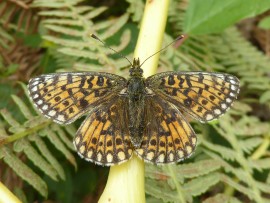
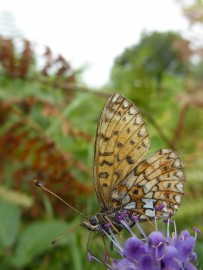
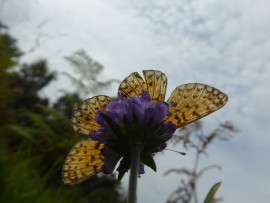
-5180784063.jpg)
-2760971984.jpg)
-6856888080.jpg)
-7096515554.jpg)
-670360238.jpg)
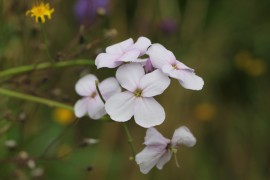
-7912016198.jpg)
-6821691775.jpg)
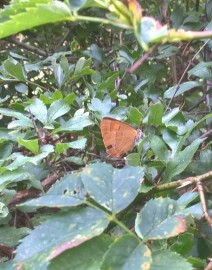
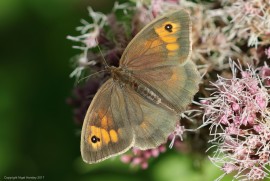
-littlehampton-19-august-(colin-knight)-2979544517.jpg)
-littlehampton-19-august-(colin-knight)2-579462358.jpg)
-littlehampton-19-august-(colin-knight)-8144095093.jpg)
-littlehampton-19-august-(colin-knight)-2488787677.jpg)
-littlehampton-19-august-(colin-knight)2-4607851188.jpg)
-littlehampton-19-august-(colin-knight)-5992996036.jpg)

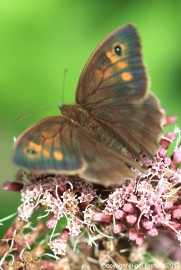
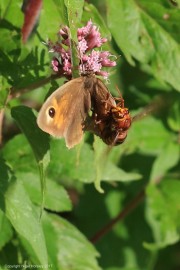
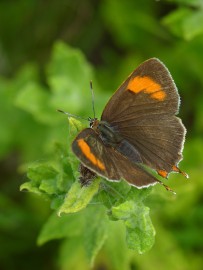
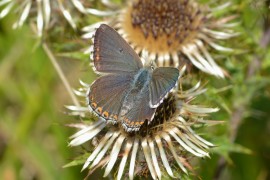
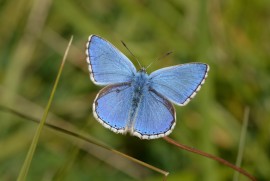
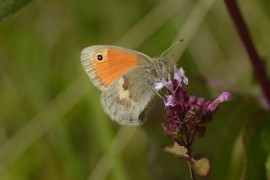
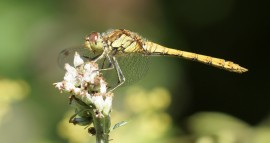
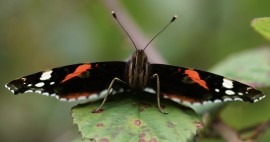
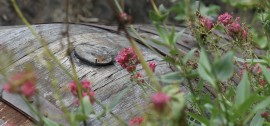
-3887279112.jpg)
-4715506192.jpg)
-1495105954.jpg)
-280515849.jpg)
-2436938043.jpg)
-3724305951.jpg)
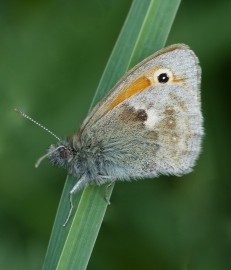
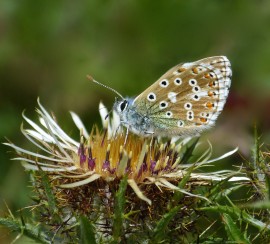
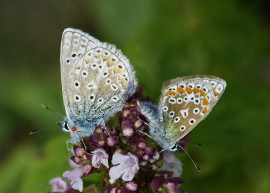
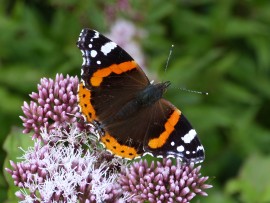
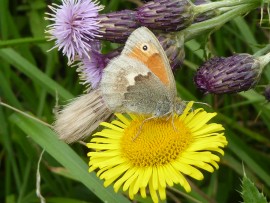
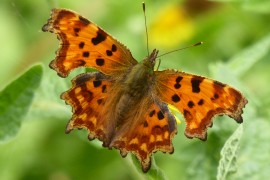
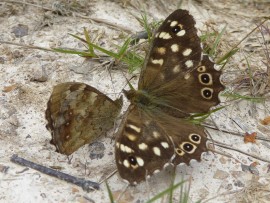

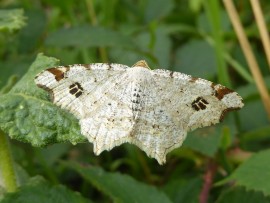
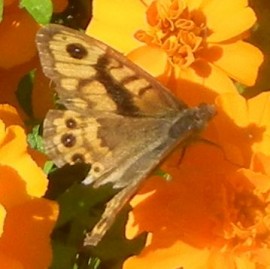
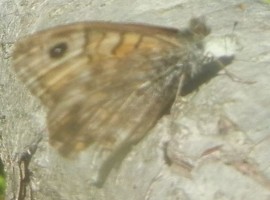
-littlehampton-15-august-(colin-knight)-2244834294.jpg)
-littlehampton-15-august-(colin-knight)-3448286624.jpg)
-littlehampton-15-august-(colin-knight)-3663909072.jpg)
2-887462142.jpg)
-124245570.jpg)
-1805583247.jpg)
-9274897025.jpg)
-1720681940.jpg)
-865661334.jpg)
-4717114060.jpg)
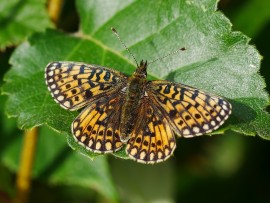
-6049265800.jpg)
-8543426003.jpg)
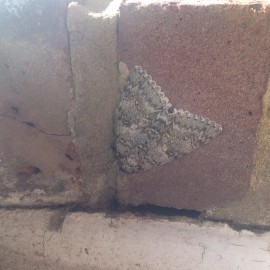
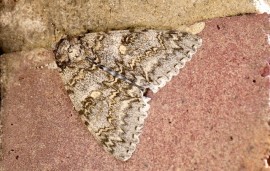
-kithurst-meadow-18-august-(colin-knight)-8685971787.jpg)
-4828193997.jpg)
-8613462154.jpg)
-kithurst-meadow-17-august-(colin-knight)-3474704436.jpg)
-kithurst-meadow-17-august-(colin-knight)-1192809073.jpg)
-kithurst-meadow-17-august-(colin-knight)-6464880793.jpg)
-7783007547.jpg)
-kithurst-meadow-17-august-(colin-knight)-2394293765.jpg)
-7366797002.jpg)
-1487872959.jpg)
-kithurst-meadow-18-august-(colin-knight)-6659222645.jpg)
-4039793247.jpg)
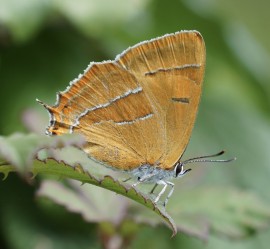
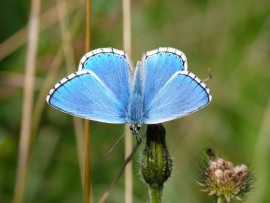
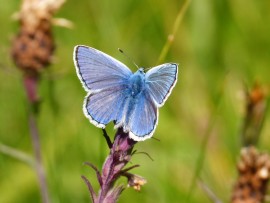
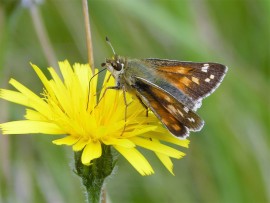
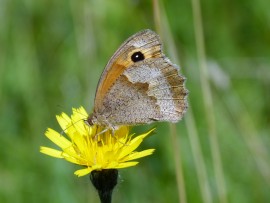
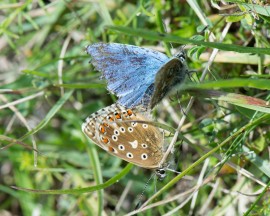
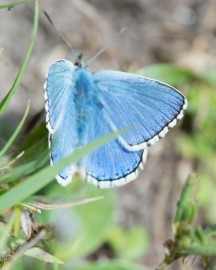
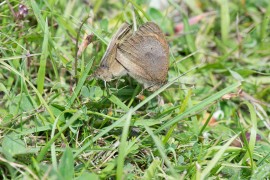
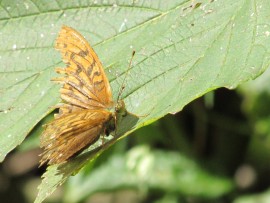
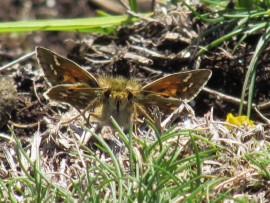
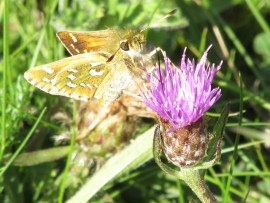
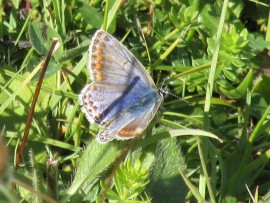
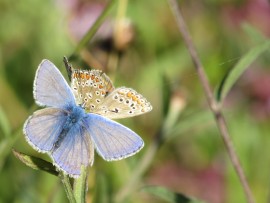
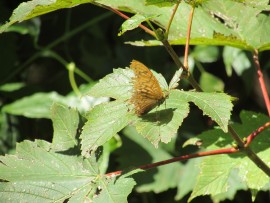
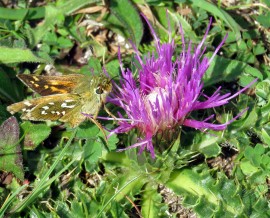
-mill-hill-14-august-(colin-knight)-7348964321.jpg)
-mill-hill-14-august-(colin-knight)-1900704461.jpg)
-mill-hill-14-august-(colin-knight)-114504573.jpg)
-mill-hill-14-august-(colin-knight)-362007166.jpg)
-mill-hill-14-august-(colin-knight)-7324448945.jpg)
-mill-hill-14-august-(colin-knight)-8103042226.jpg)
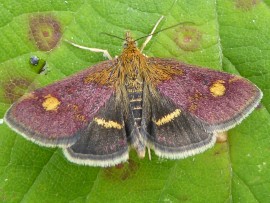
-2282859943.jpg)
-8120711431.jpg)
-7239012587.jpg)
-1051945076.jpg)
-1018977817.jpg)
-5735659040.jpg)
-littlehampton-12-august-(colin-knight)-1348883006.jpg)
-littlehampton-12-august-(colin-knight)-5416712206.jpg)
-littlehampton-12-august-(colin-knight)-2237373436.jpg)
-littlehampton-12-august-(colin-knight)-9660837207.jpg)
-littlehampton-12-august-(colin-knight)-8541646818.jpg)
-littlehampton-13-august-(colin-knight)-8727031382.jpg)
-3336811466.jpg)
-8297518645.jpg)
-9483845205.jpg)
-3037135591.jpg)
-2966863745.jpg)
-3298822944.jpg)
-1107096159.jpg)
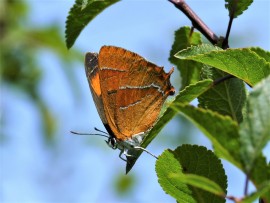
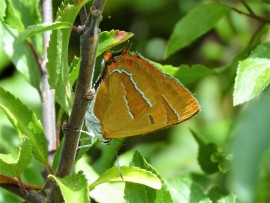
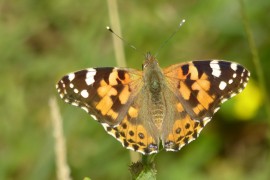
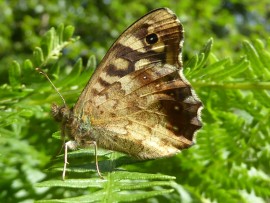
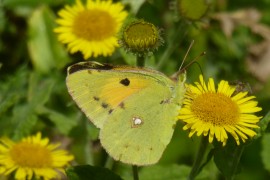
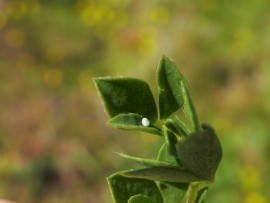
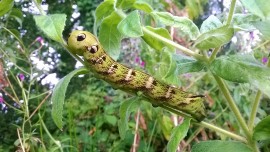
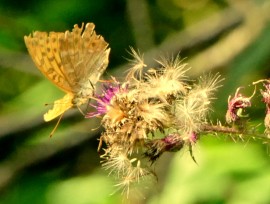
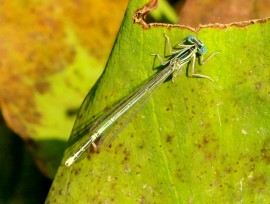
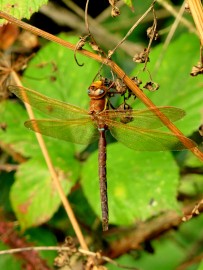
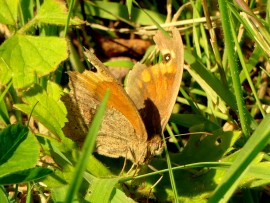
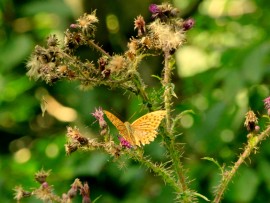
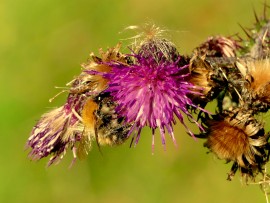
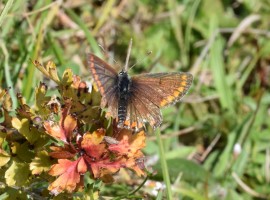
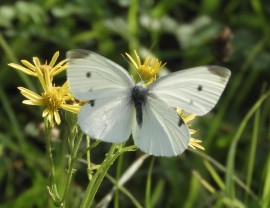
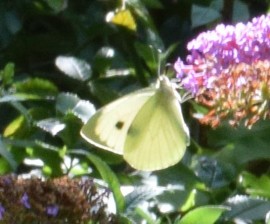
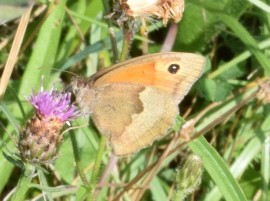
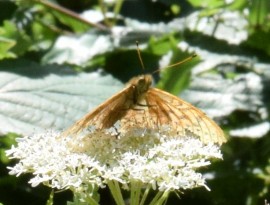


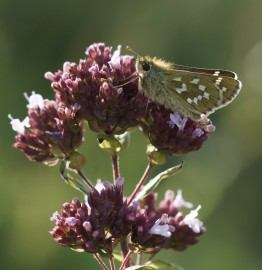
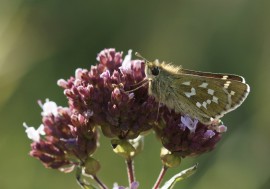
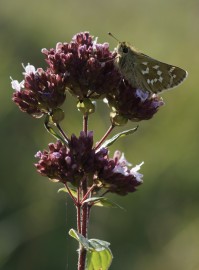

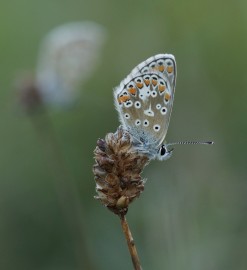
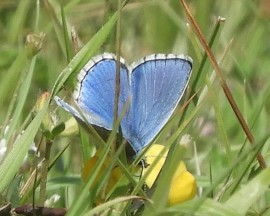
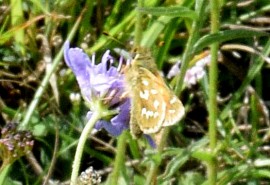
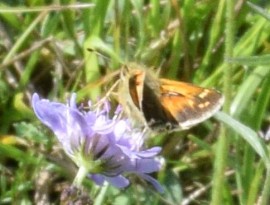
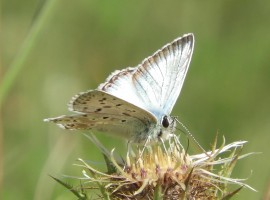
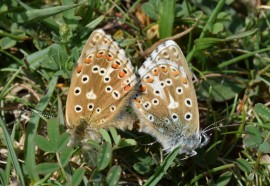
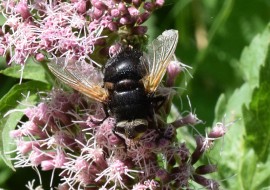
-1459195693.jpg)
-2512007751.jpg)
-7563995872.jpg)
-9698233040.jpg)
-6745789516.jpg)
-8844455038.jpg)
-8928746581.jpg)
-9551078821.jpg)
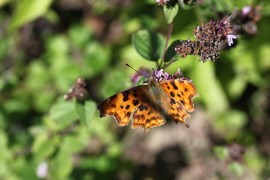
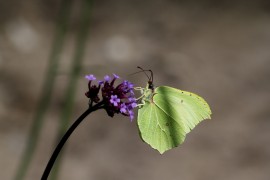
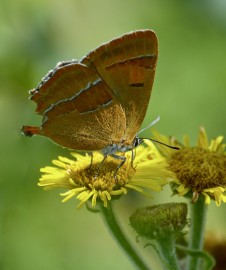
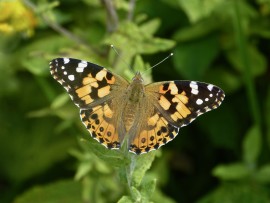
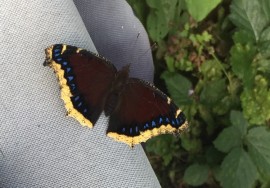
-8162806420.jpg)
-southwick-9-august-(colin-knight)-6603724458.jpg)
-southwick-9-august-(colin-knight)-2241898817.jpg)
-5626642857.jpg)
-5779323228.jpg)
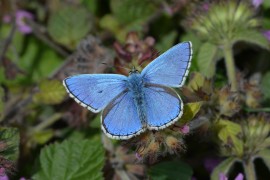
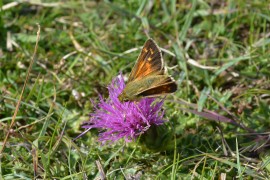
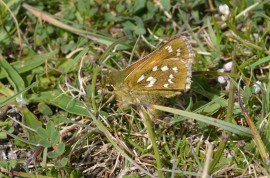
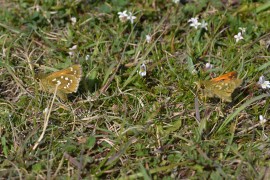
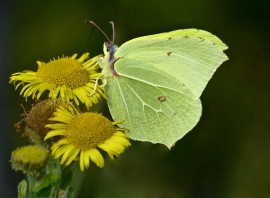
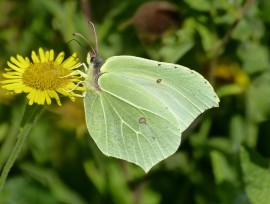

-8876392650.jpg)
-491322106.jpg)
-5826495066.jpg)
-9329241202.jpg)
-6962713766.jpg)
-1239813677.jpg)
-6882121753.jpg)
-127249909.jpg)
-kithurst-meadow-10-august-(colin-knight)-2679145112.jpg)
-8044890309.jpg)
-kithurst-meadow-10-august-(colin-knight)-7468495769.jpg)
-8982993601.jpg)
-3613895066.jpg)
-7213052068.jpg)
-8775104037.jpg)
-2982215723.jpg)
-kithurst-meadow-10-august-(colin-knight)-3690854967.jpg)
-2124058026.jpg)
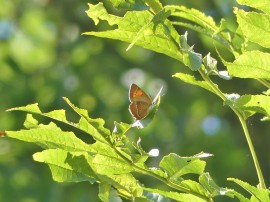
-littlehampton-10-august-(colin-knight)-5819906666.jpg)
-littlehampton-10-august-(colin-knight)-5348675921.jpg)
-littlehampton-10-august-(colin-knight)-6183346146.jpg)
-littlehampton-10-august-(colin-knight)-8520537079.jpg)
-littlehampton-10-august-(colin-knight)-8160277130.jpg)
-littlehampton-10-august-(colin-knight)-330968317.jpg)
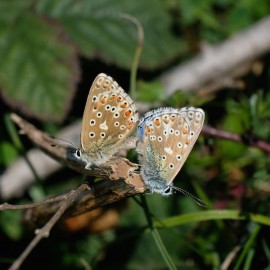
-3903924580.jpg)

-3305969210.jpg)
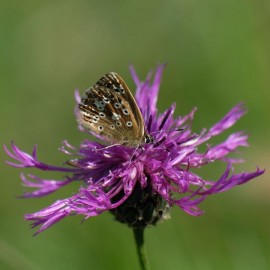
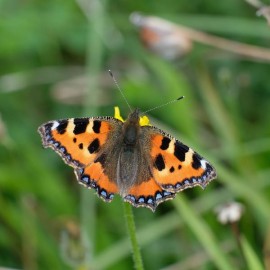
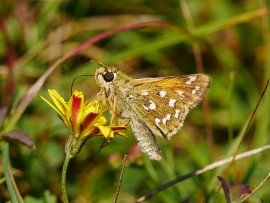
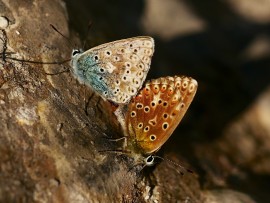

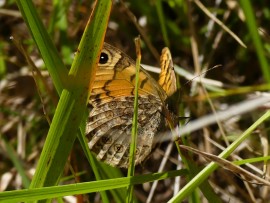
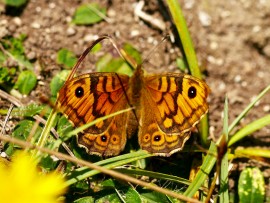
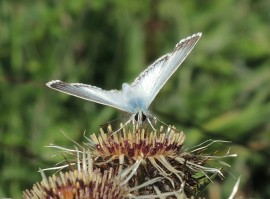
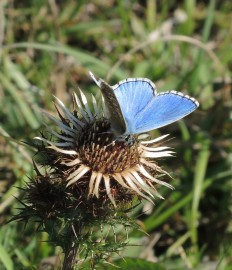
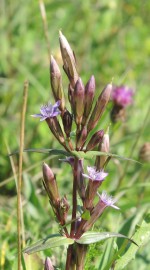
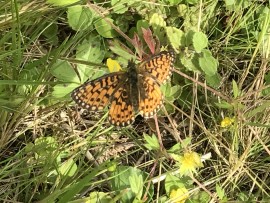
-3556376402.jpg)
-6314185769.jpg)
-9494862603.jpg)
-9233331256.jpg)
-9900573133.jpg)
-6873950790.jpg)
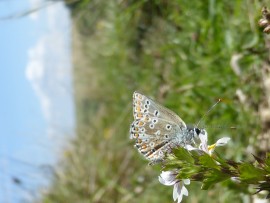
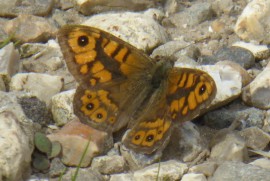
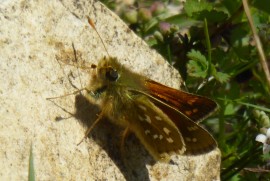
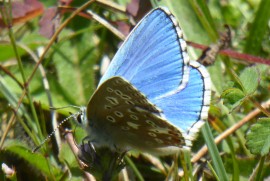
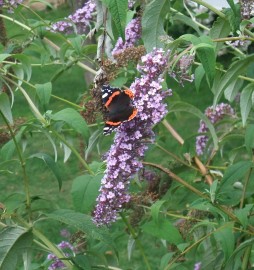
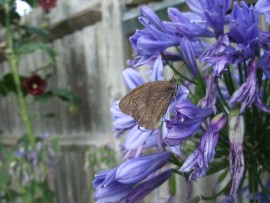
-2621058546.jpg)
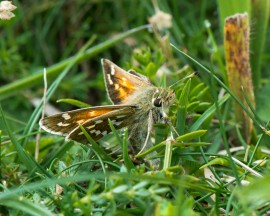
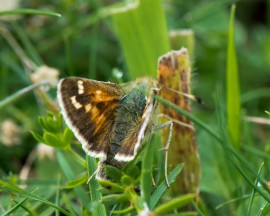
-771670606.jpg)
-littlehampton-8-august-(colin-knight)-6287365262.jpg)
-littlehampton-8-august-(colin-knight)-4747610785.jpg)
-littlehampton-8-august-(colin-knight)-9180653966.jpg)
-littlehampton-8-august-(colin-knight)-996574820.jpg)
-littlehampton-8-august-(colin-knight)-3690707446.jpg)
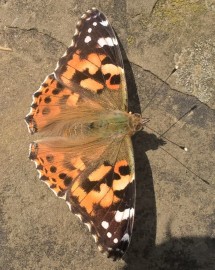
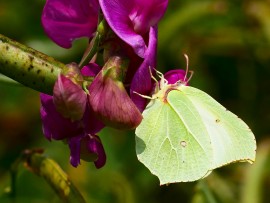
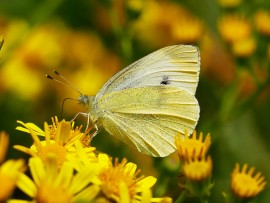
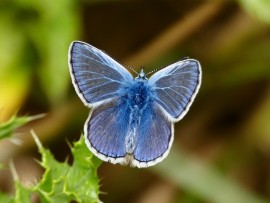
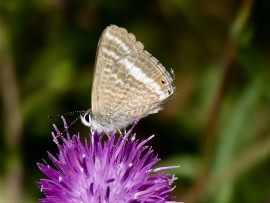
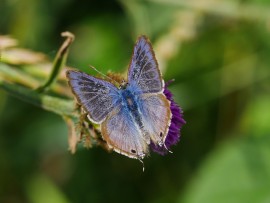
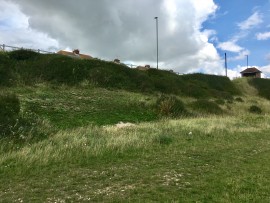
-littlehampton-7-august-(colin-knight)-6414874456.jpg)
-littlehampton-7-august-(colin-knight)-1666306667.jpg)
-littlehampton-7-august-(colin-knight)-5165364360.jpg)
-littlehampton-7-august-(colin-knight)-2-5483596399.jpg)
-littlehampton-7-august-(colin-knight)-2824958679.jpg)
-3369157318.jpg)
-1167745217.jpg)
-(3)-810653953.jpg)
-(4)-3099668249.jpg)
-(5)-4667139723.jpg)
-(6)-2972241388.jpg)
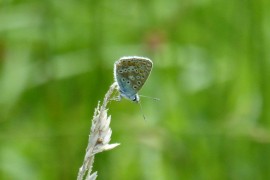
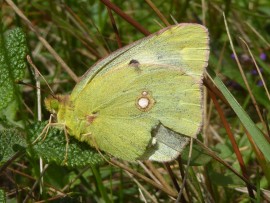
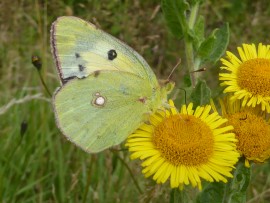
,-mill-hill-7.8.17-9104530168.jpg)
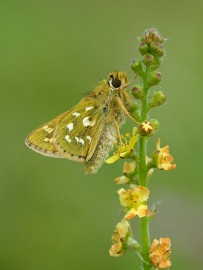
,-mill-hill-7.8.17-5568133615.jpg)
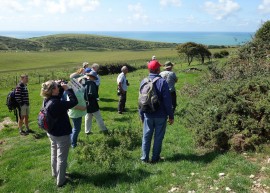
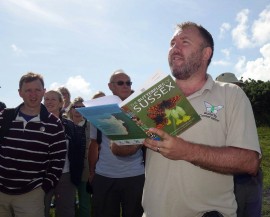
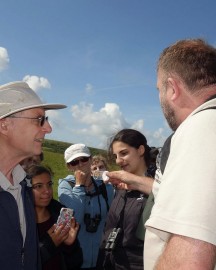
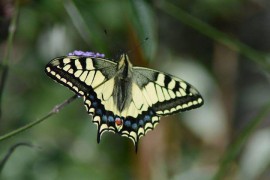
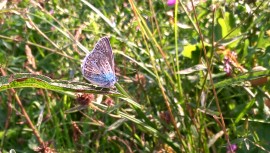
-3393137995.jpg)
-1106139332.jpg)
-5888664429.jpg)
-9688017442.jpg)
-9076807810.jpg)
-351326148.jpg)
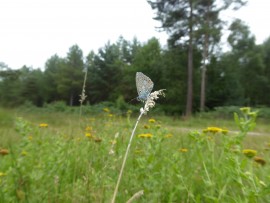
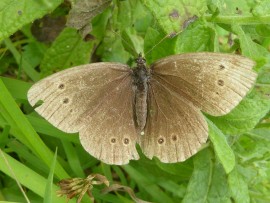
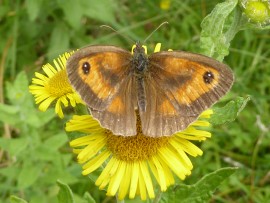
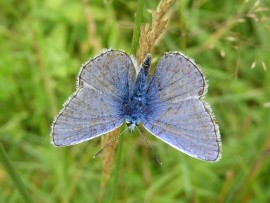
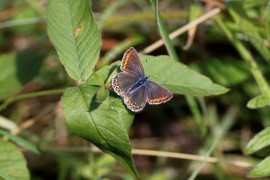
-5810841494.jpg)
-5418827245.jpg)
,-mill-hill-6.8.17-7224593157.jpg)
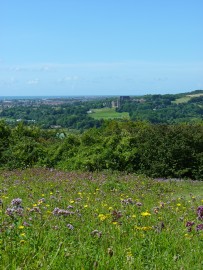
-7930377391.jpg)
-3136654077.jpg)
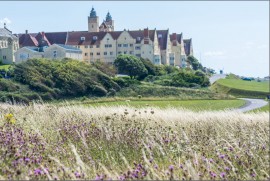
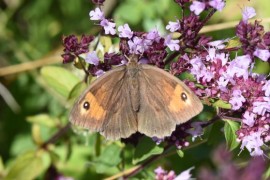
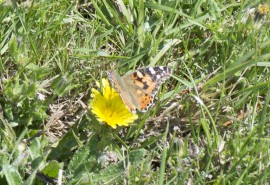
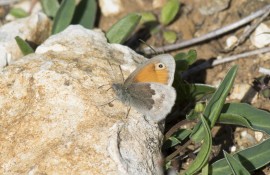
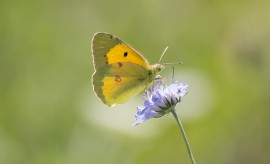
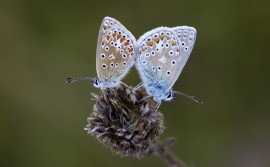
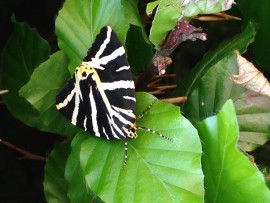
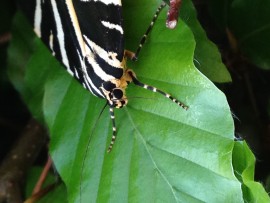
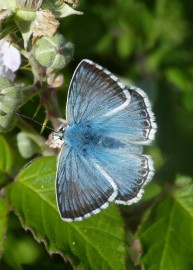
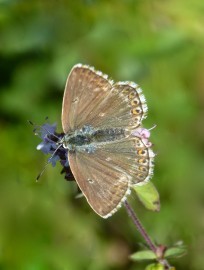
-6509391567.jpg)
-littlehampton-4-august-(colin-knight)-5162928244.jpg)
-littlehampton-4-august-(colin-knight)-6823929250.jpg)
-3461036360.jpg)
-anchor-bottom-5-august-(colin-knight)-6117568118.jpg)
-anchor-bottom-5-august-(colin-knight)-5191501397.jpg)
-3169922265.jpg)
-mill-hill-5-august-(colin-knight)-6543624927.jpg)
-knepp-5.8.17-1600704449.jpg)
-knepp-4.8.17-8075408046.jpg)
-knepp-4.8.17-2956441510.jpg)
-knepp-4.8.17-44221049.jpg)
-knepp-4.8.17-8771163420.jpg)
-knepp-5.8.17-9334085169.jpg)
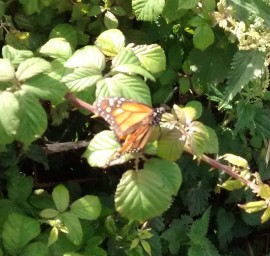

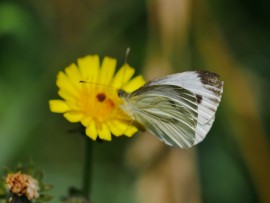
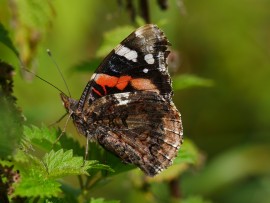


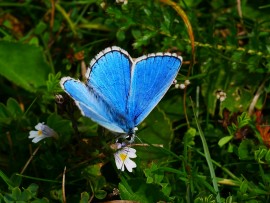
-7407733816.jpg)
-7645005122.jpg)
-171374198.jpg)
-933258626.jpg)
-3427488347.jpg)
-3819943517.jpg)
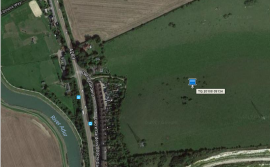
-2890260908.jpg)
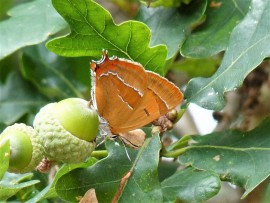
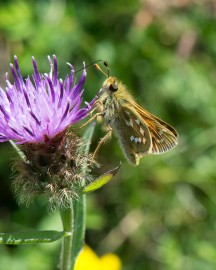
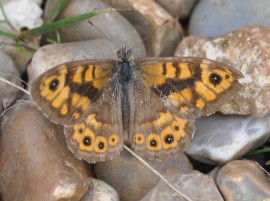
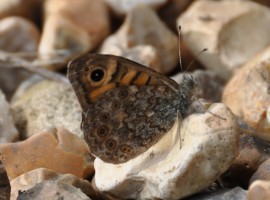
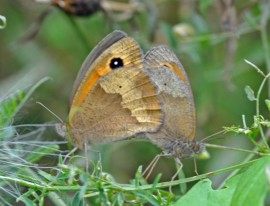
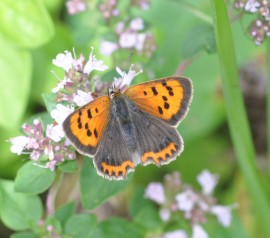
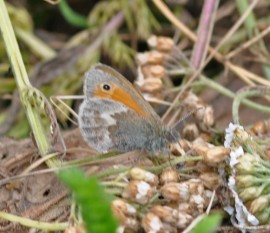
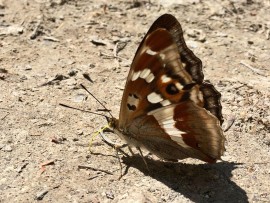
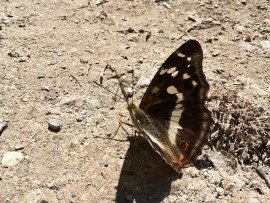
-2553974520.jpg)
-6632797666.jpg)
-cissbury-ring-4-august-(colin-knight)-7610943145.jpg)
-9092303095.jpg)
-cissbury-ring-4-august-(colin-knight)-5419790619.jpg)
-694439355.jpg)
-1180018833.jpg)
-8984633167.jpg)
-8438333072.jpg)
-7178526353.jpg)
-2720100209.jpg)
-447845216.jpg)
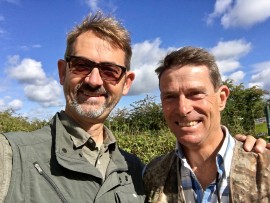
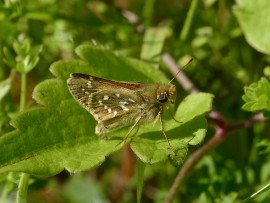
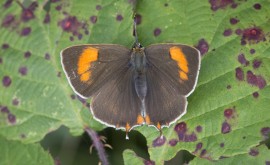
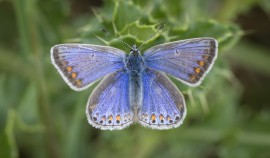
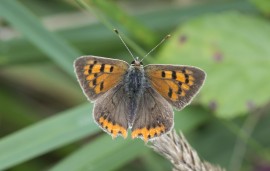
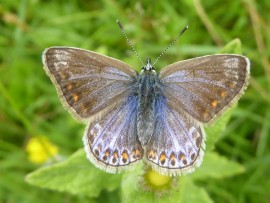
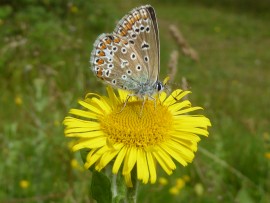
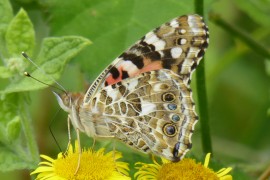
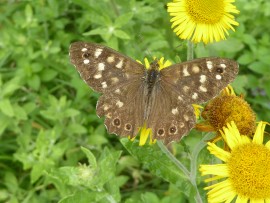

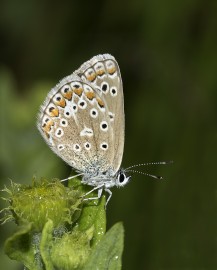
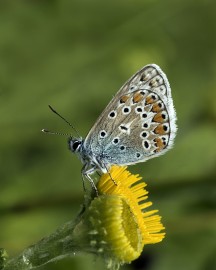
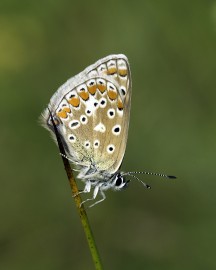
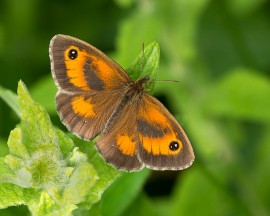
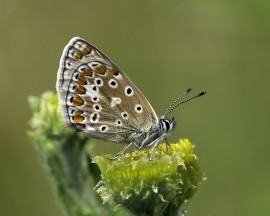
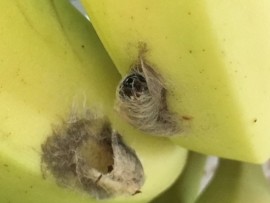
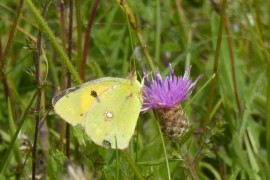
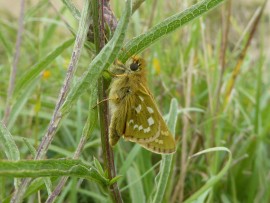
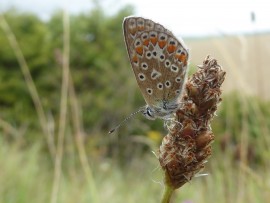
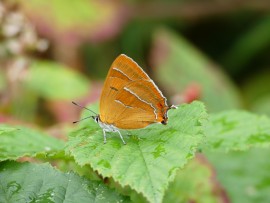
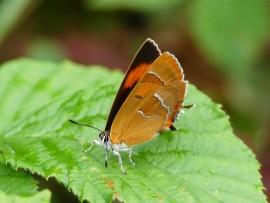
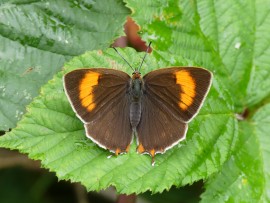
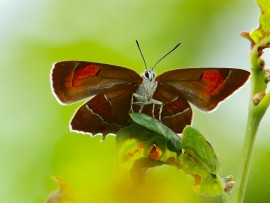
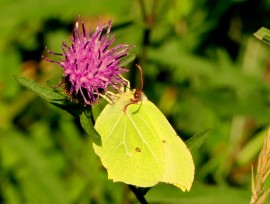
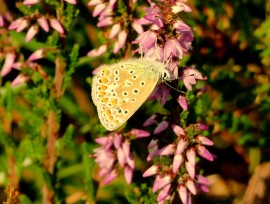
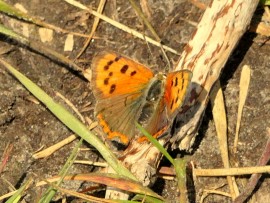
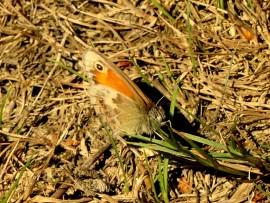
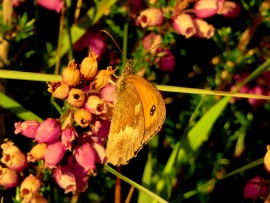


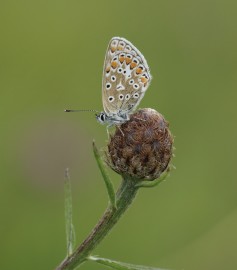

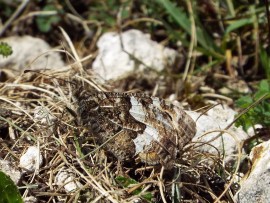
-2596839554.jpg)
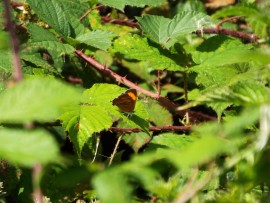
-1296633295.jpg)
-4836663347.jpg)
-2051868815.jpg)
-(transitional-form-of-ab.obsoleta)-31.7.17-pevensey-levels,-east-sussex.-nigel-kemp-1120881433.jpg)

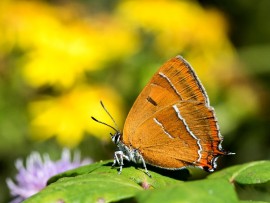
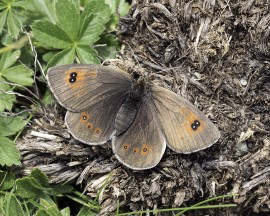
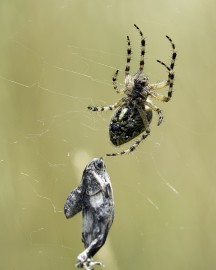
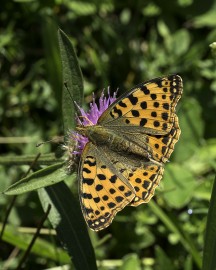
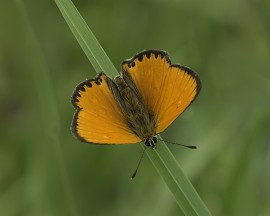
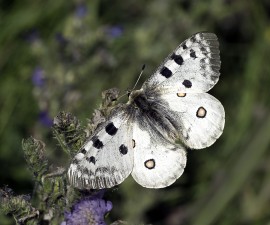
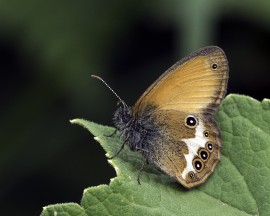
-1254138443.jpg)
-3787221377.jpg)
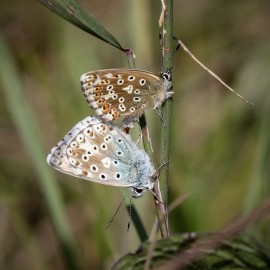
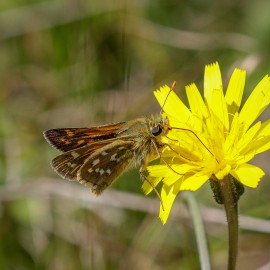

-2198468861.jpg)
-5421098349.jpg)
-4417357328.jpg)
-9955500764.jpg)
-8211057833.jpg)
-8892277008.jpg)
-9819208094.jpg)
-6117944284.jpg)
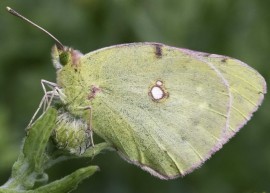
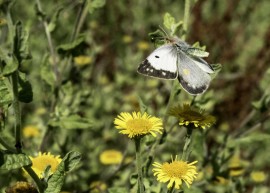

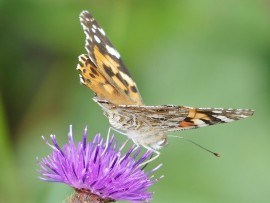
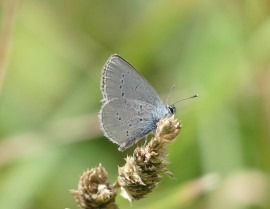
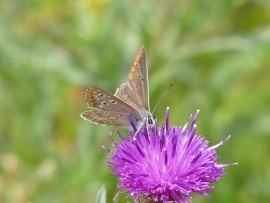
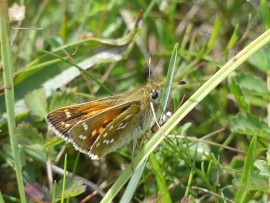
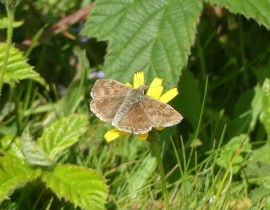
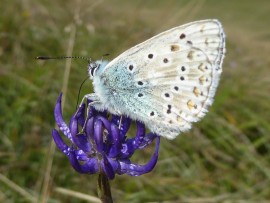
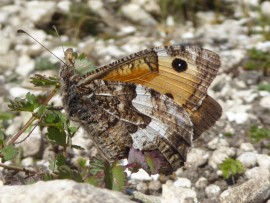
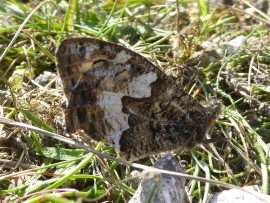

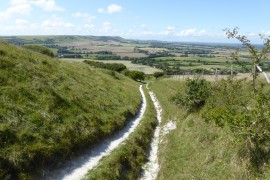
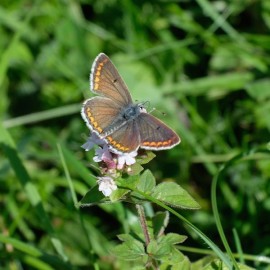
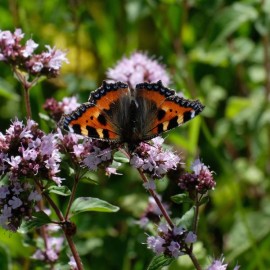
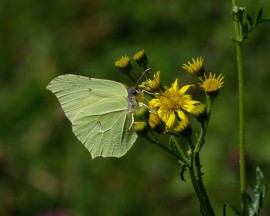
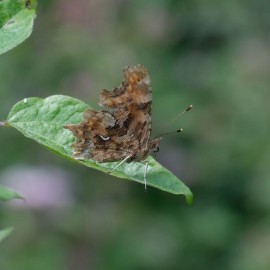
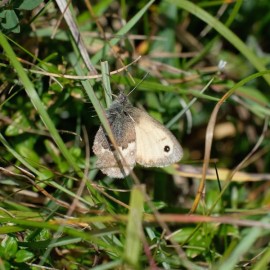
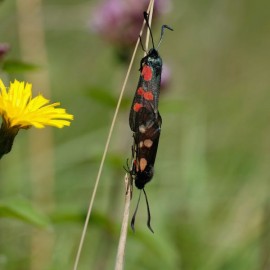
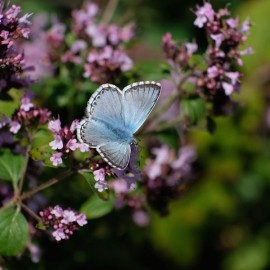
-6806303616.jpg)
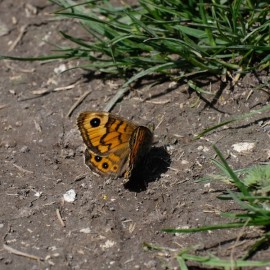
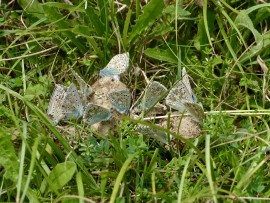
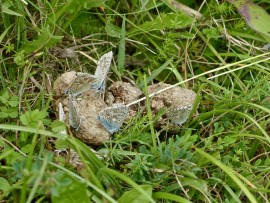
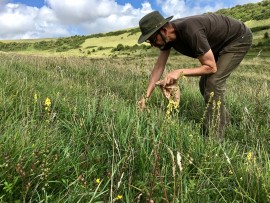
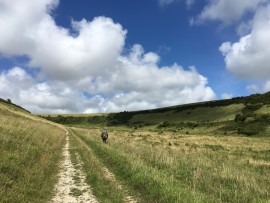
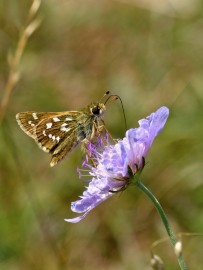
,-springhead-hill-31.7.17-6495231725.jpg)
,-springhead-hill-31.7.17-4337945417.jpg)
,-springhead-hill-31.7.17-45504425.jpg)
,-springhead-hill-31.7.17-9734554714.jpg)
,-springhead-hill-31.7.17-3819687520.jpg)
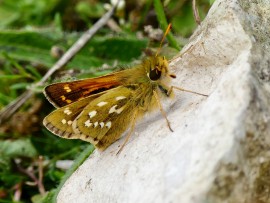

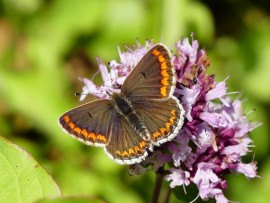
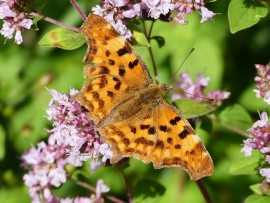

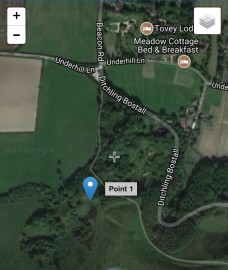
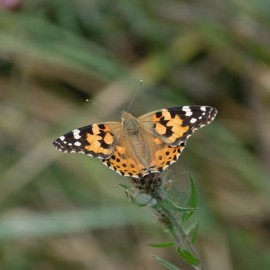
-1327047487.jpg)
-9852743991.jpg)
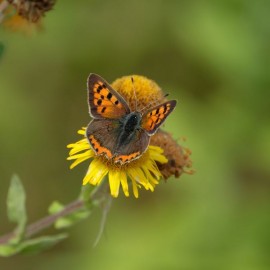
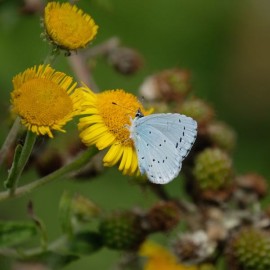
-2376242154.jpg)
-1407229970.jpg)
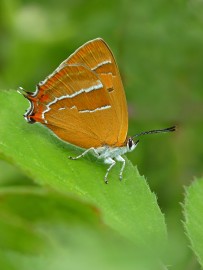
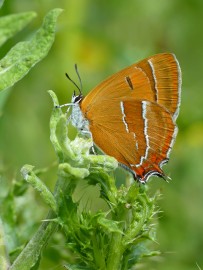
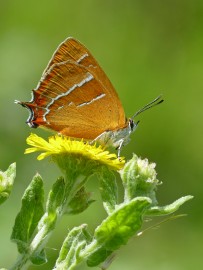

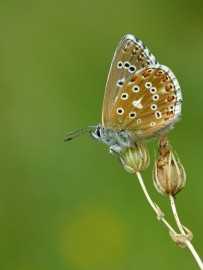
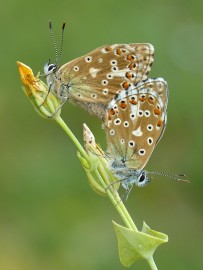
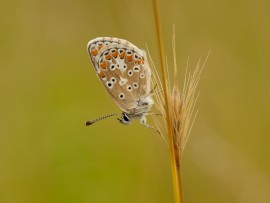
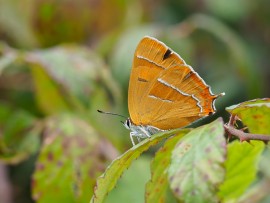
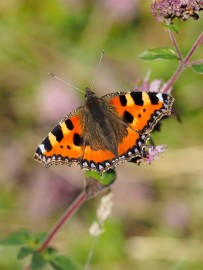
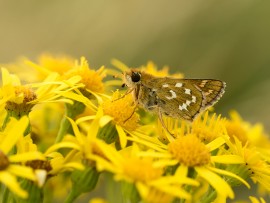
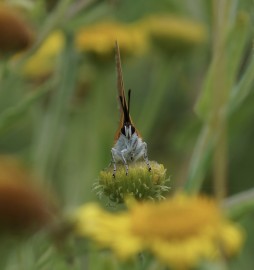
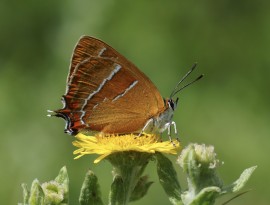
-9106269227.jpg)
-4921033722.jpg)
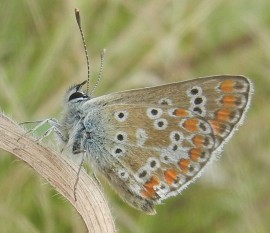
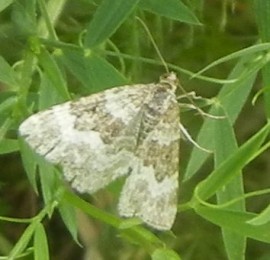
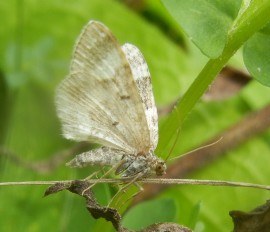
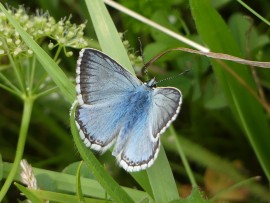
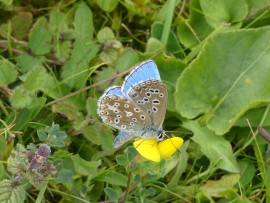
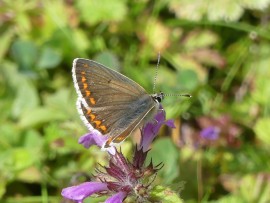
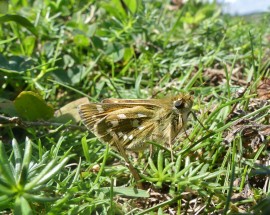
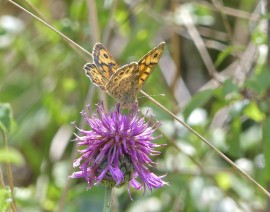
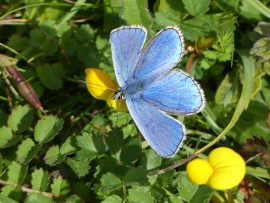
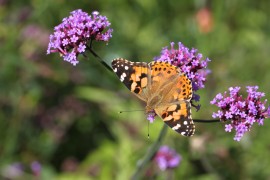
-6174148875.jpg)
-8010813151.jpg)
-19891848.jpg)
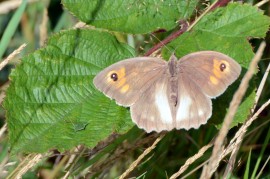
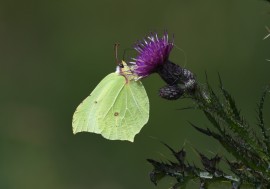
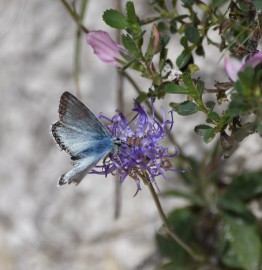

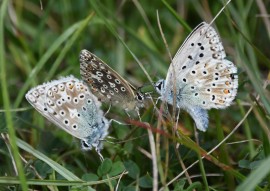
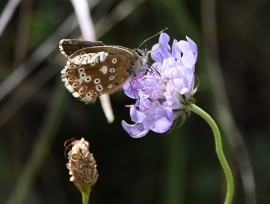
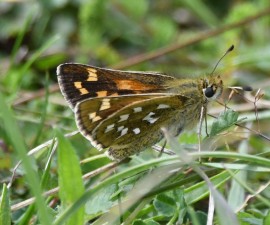
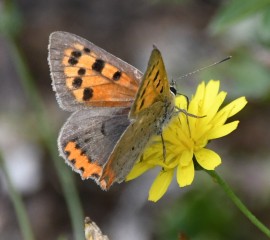
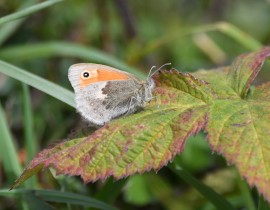
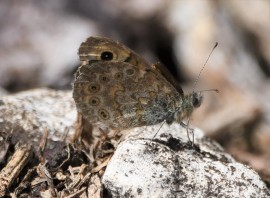
-3340906291.jpg)
-8441071049.jpg)
-5881151342.jpg)
-9767533326.jpg)
-4433973315.jpg)
-7094637397.jpg)
-4094437998.jpg)
-7267113481.jpg)
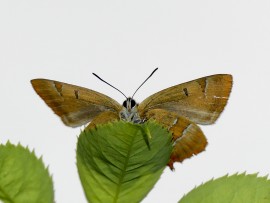
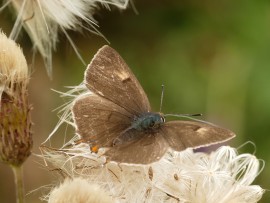
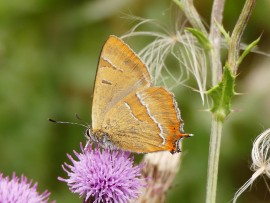
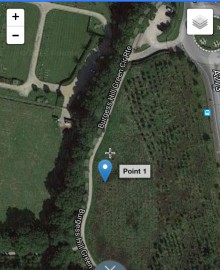
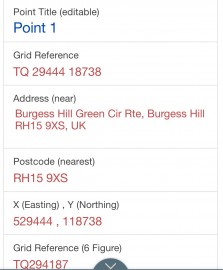
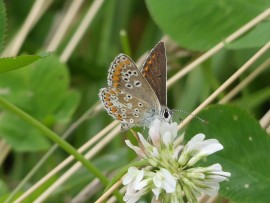
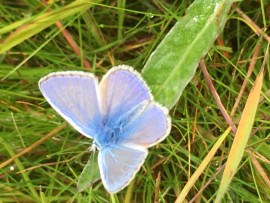
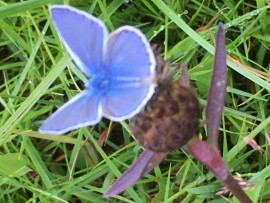
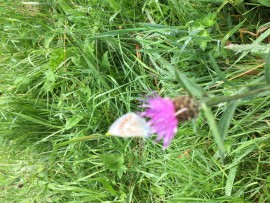
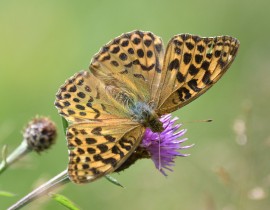
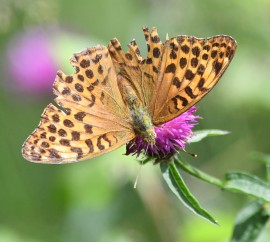
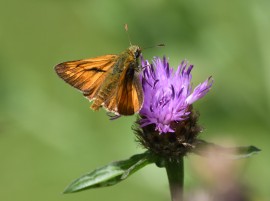
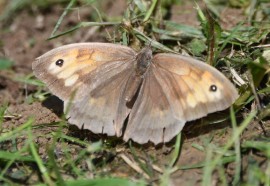
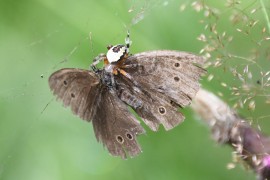
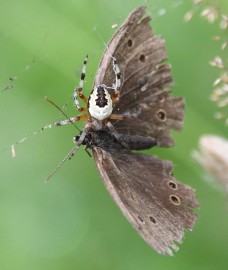
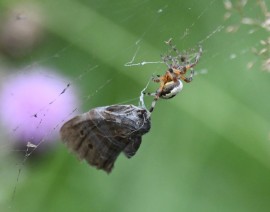
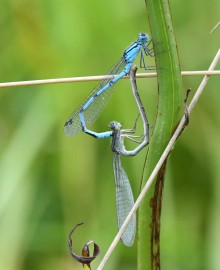

-4693761956.jpg)
-5196054158.jpg)
-1370602292.jpg)
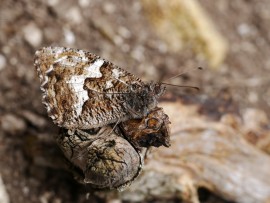
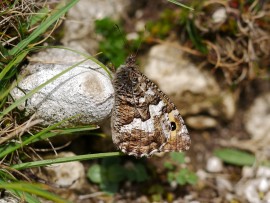
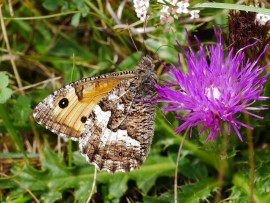
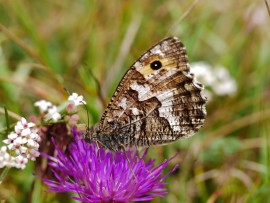
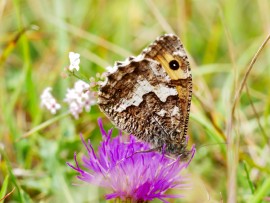
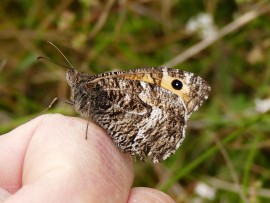
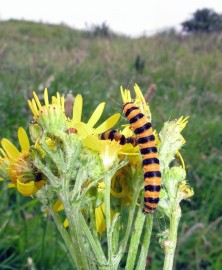
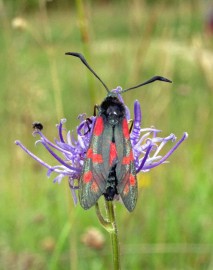
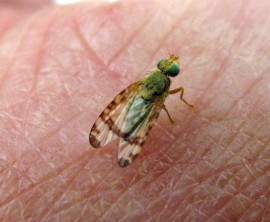
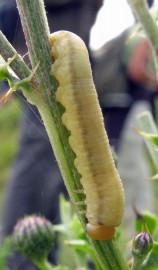
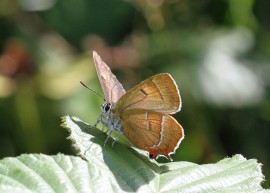
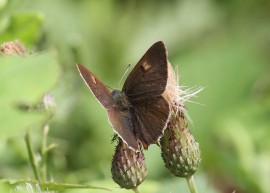
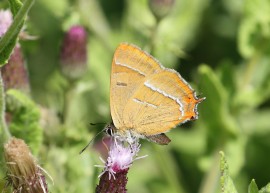
-1774215851.jpg)
-8531279098.jpg)
-9236812666.jpg)
-5849411804.jpg)
-knepp-25-july-(colin-knight)-4388519562.jpg)
-137968789.jpg)
-3360259132.jpg)
-knepp-25-july-(colin-knight)-8195485086.jpg)
-6565181799.jpg)
-4432305251.jpg)
-knepp-25-july-(colin-knight)-4205886768.jpg)
-(1024x604)-9872005507.jpg)
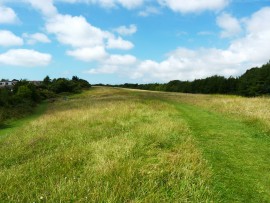
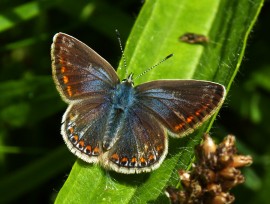
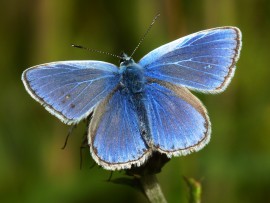

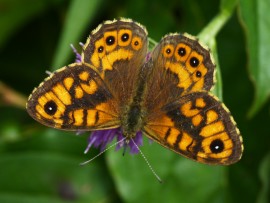

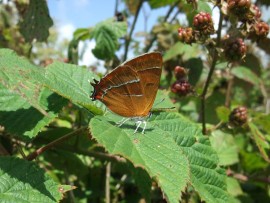
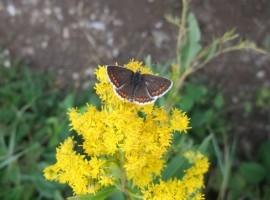

-3578821546.jpg)
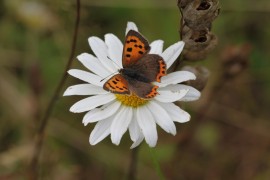
-5780903566.jpg)
-3156699999.jpg)
-4467368507.jpg)
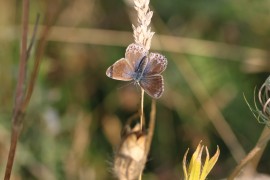
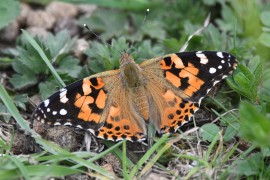
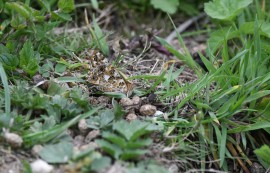

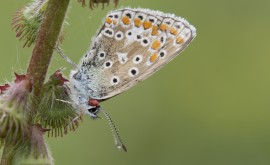
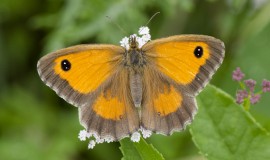
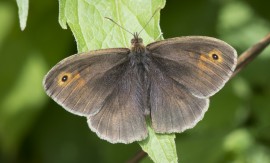
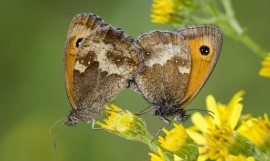
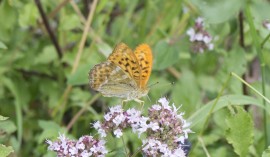
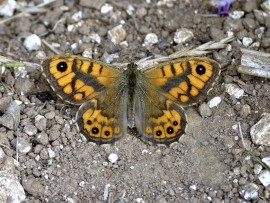
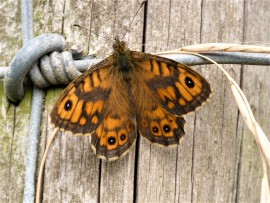

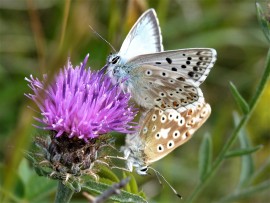
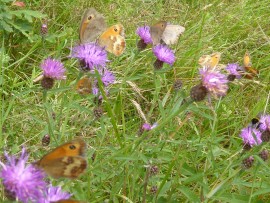
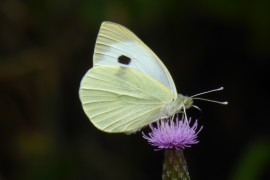
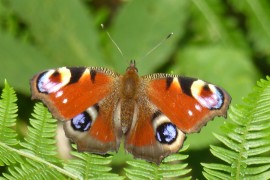
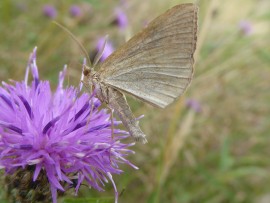
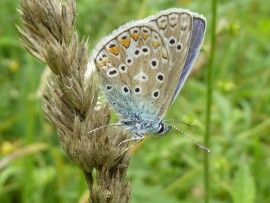

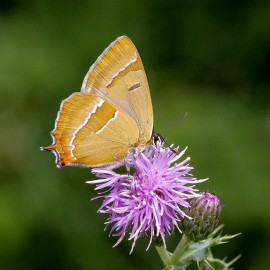
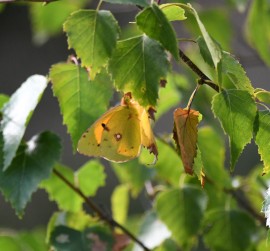
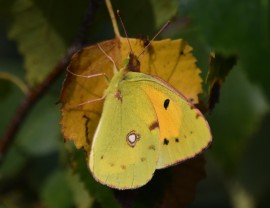
-6150584304.jpg)
-2269599731.jpg)
-3991897567.jpg)
-1770102013.jpg)
-5203639776.jpg)
-mill-hill-23-july-(colin-knight)-3198926351.jpg)
-2361441357.jpg)
-8125752005.jpg)
-4135322445.jpg)
-6080396845.jpg)
-780902719.jpg)
-8004231122.jpg)

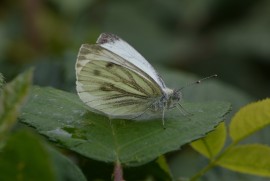
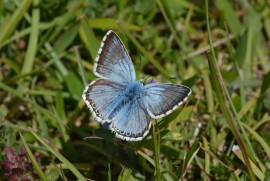
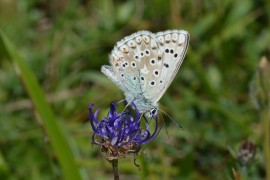
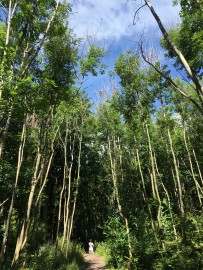
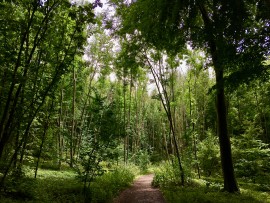
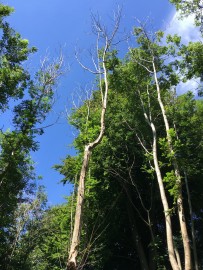
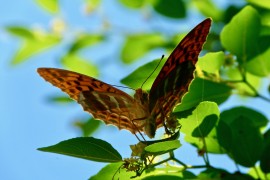
,-knepp-23.7.17-7438895204.jpg)
,-knepp-23.7.17-6627781749.jpg)
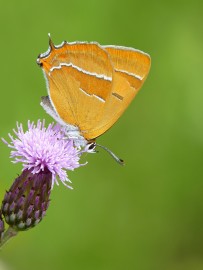
-knepp-23.7.17-5283602499.jpg)
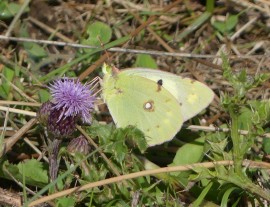
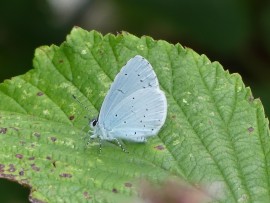
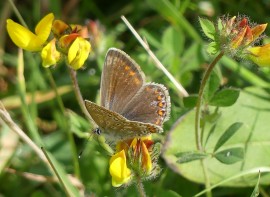

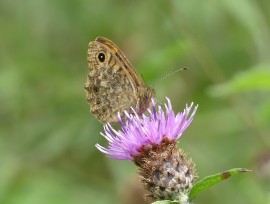
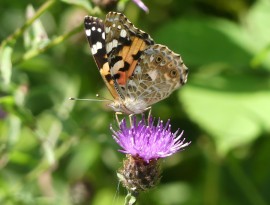
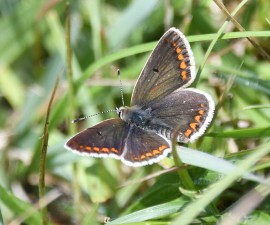
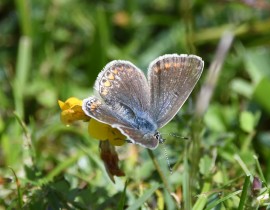
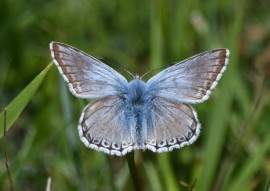



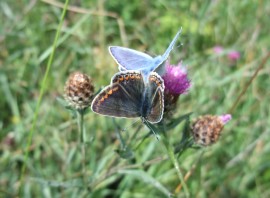
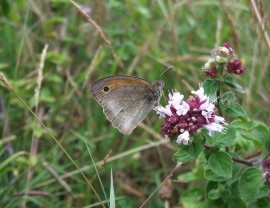
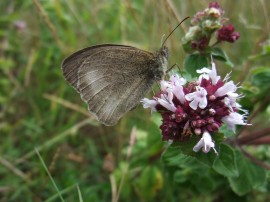
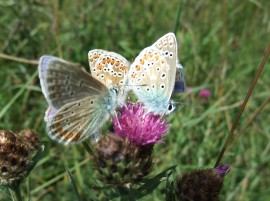
-6870921873.jpg)
-5449012829.jpg)
-4115548250.jpg)
-6914901207.jpg)
-5258271237.jpg)
-6038227328.jpg)
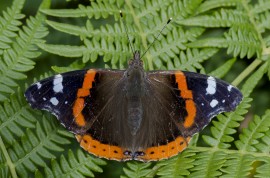
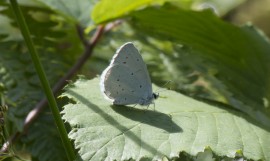
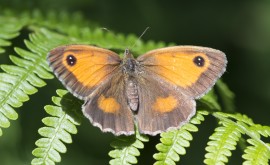
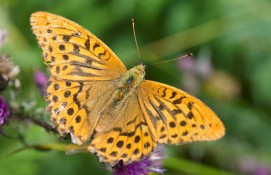
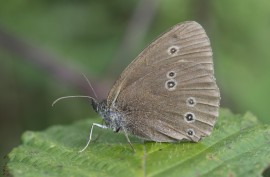
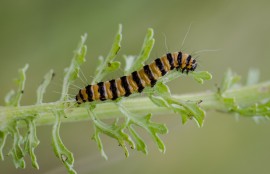
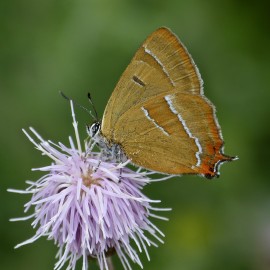

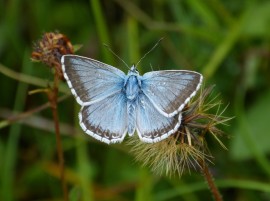
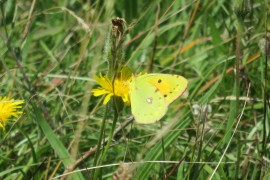
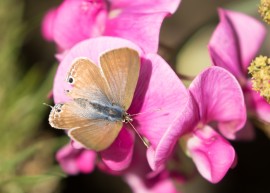
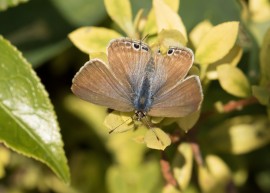
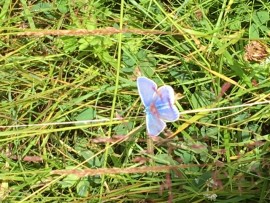
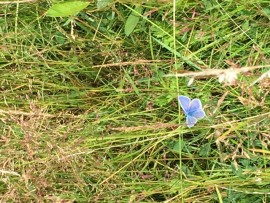
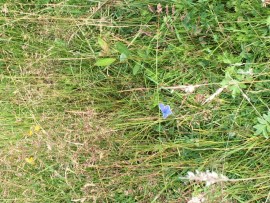
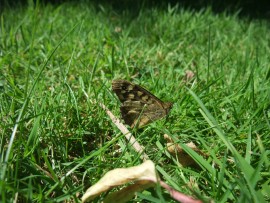
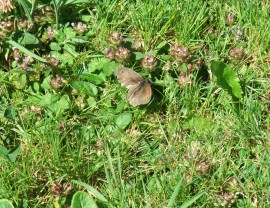
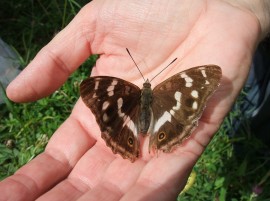
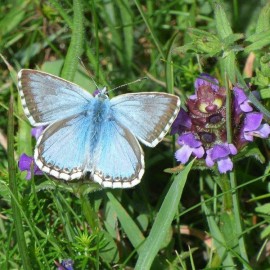
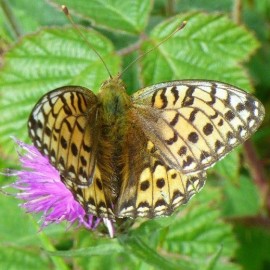

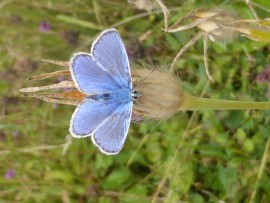
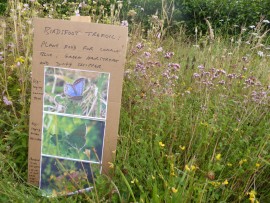
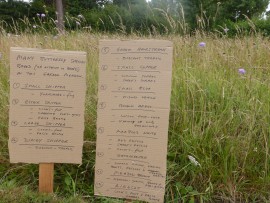
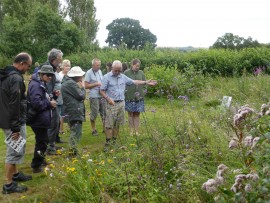
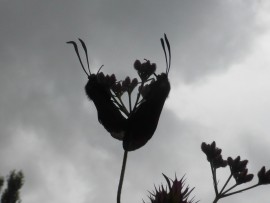
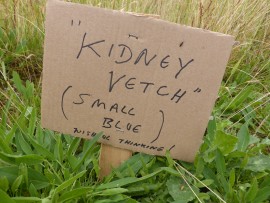

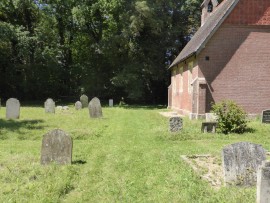

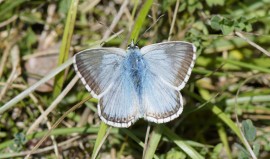

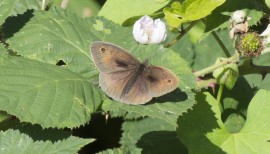
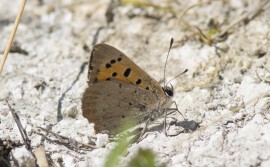

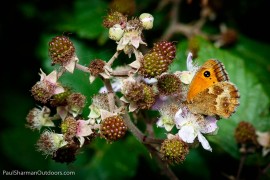
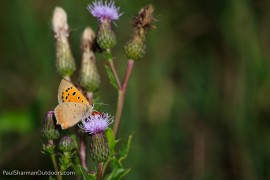
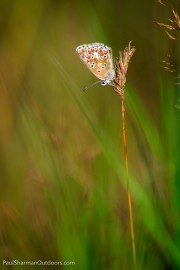
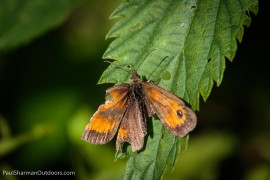
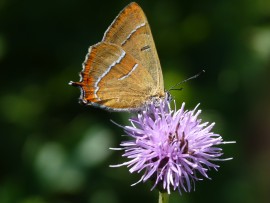

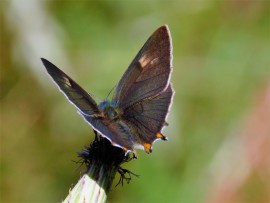
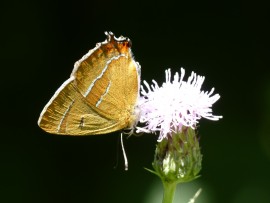
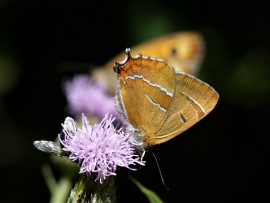
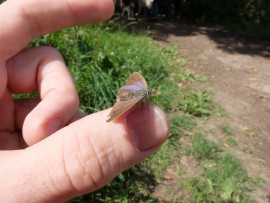

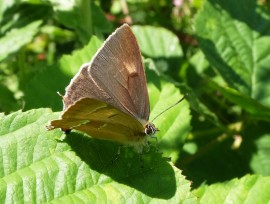
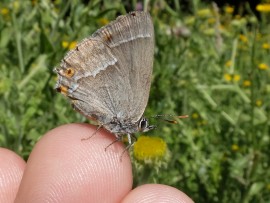
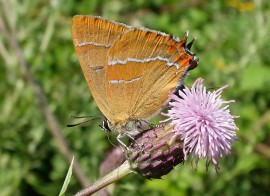
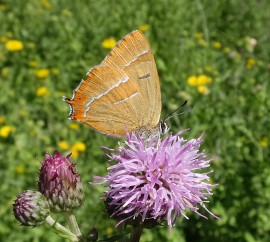
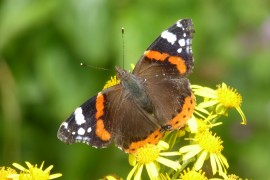

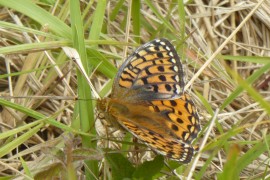
-4865315537.jpg)
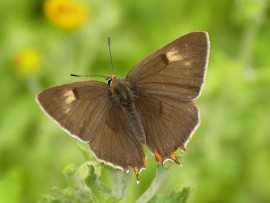

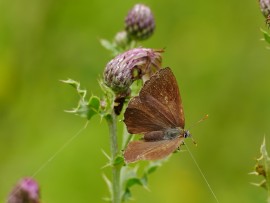
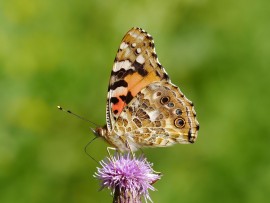
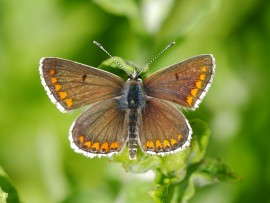
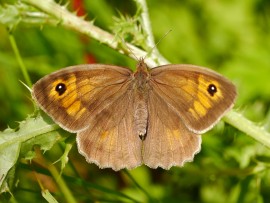
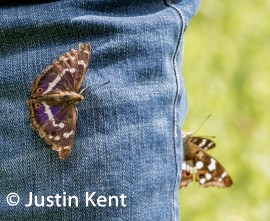
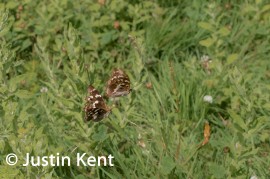
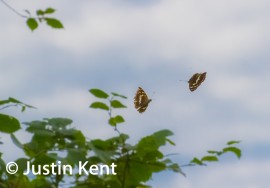
-mill-hill-8-july-(colin-knight)-5890132403.jpg)
-4767131665.jpg)
-3760374044.jpg)
-mill-hill-8-july-(colin-knight)-4345799325.jpg)
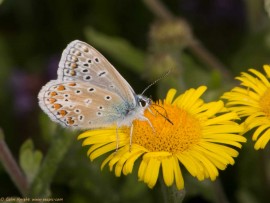
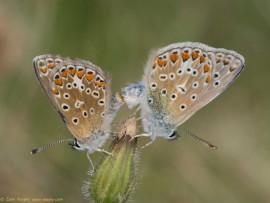
-mill-hill-3-july-(colin-knight)-4089282937.jpg)
-mill-hill-3-july-(colin-knight)-8651648778.jpg)
-mill-hill-3-july-(colin-knight)-2124568391.jpg)
-mill-hill-3-july-(colin-knight)-3435200476.jpg)
-3053824221.jpg)
-1367089692.jpg)
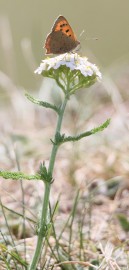
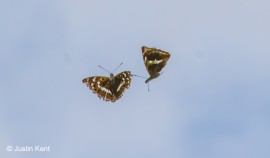
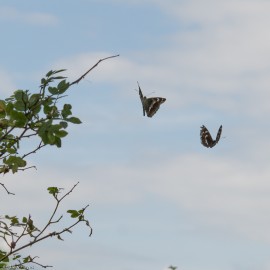
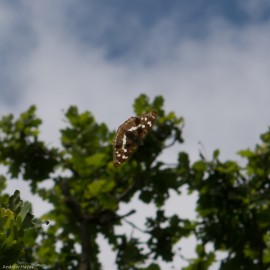
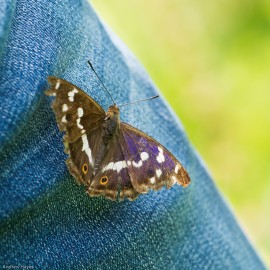
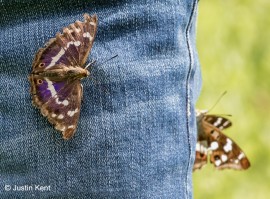
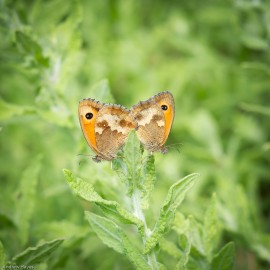
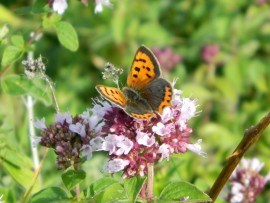
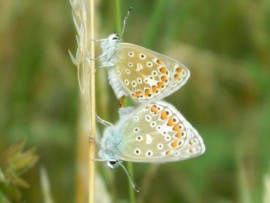
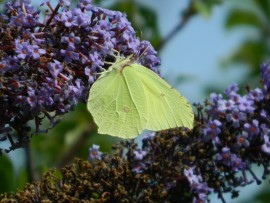
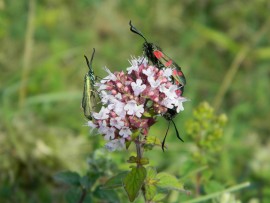
,-knepp-13.7.17-(c)-brian-white-6712717241.jpg)
,-knepp-13.7.17-(c)-brian-white-402157222.jpg)
,-knepp-13.7.17-(c)-brian-white-7840641625.jpg)
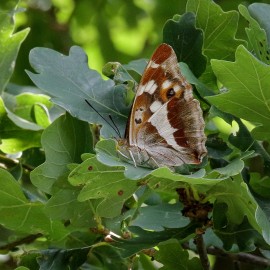
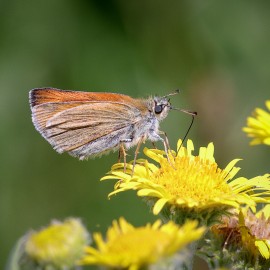
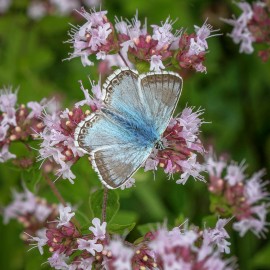
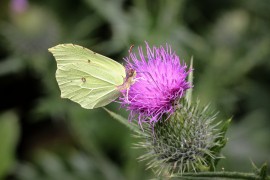
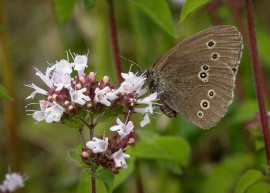

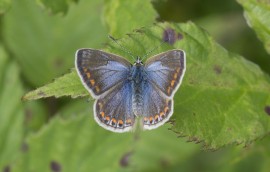
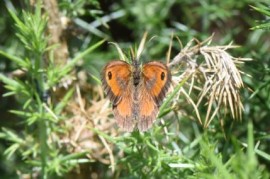
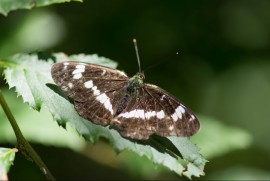
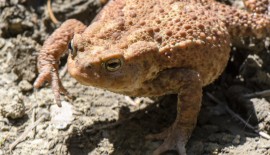
-4543222771.jpg)
-7816402101.jpg)

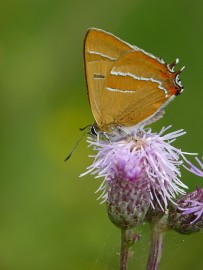
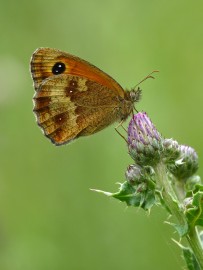
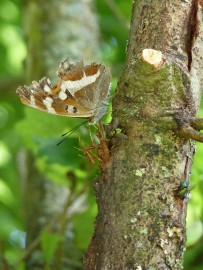
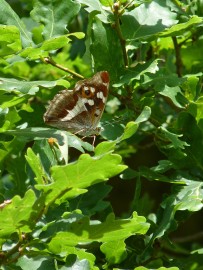
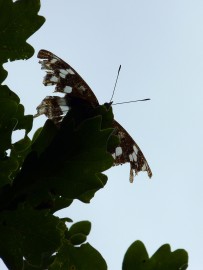
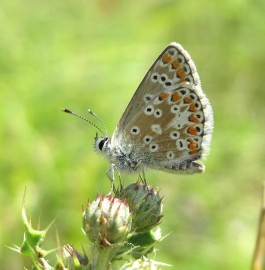
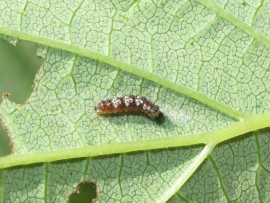
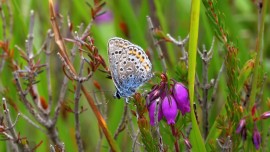
-4117257022.jpg)
-3119779373.jpg)
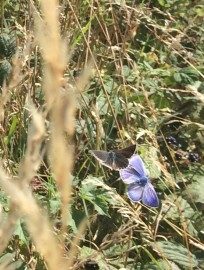

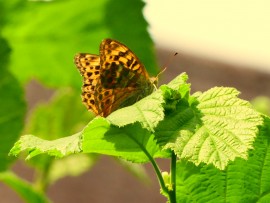
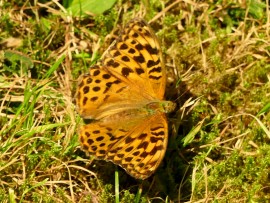
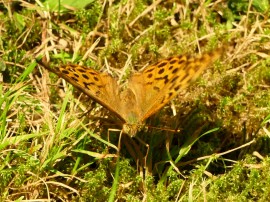
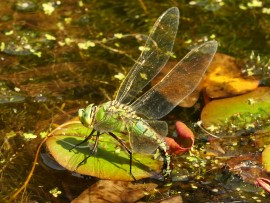
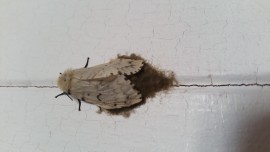
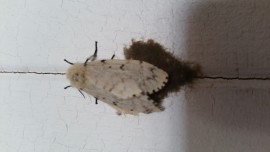
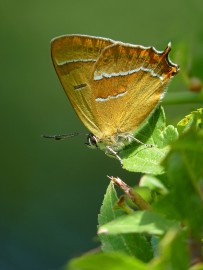
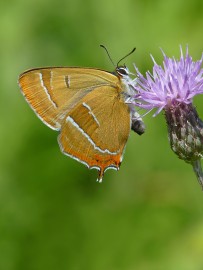
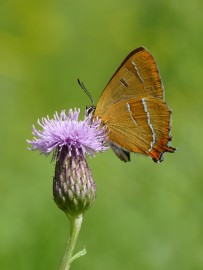
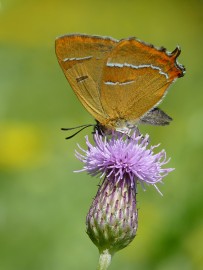
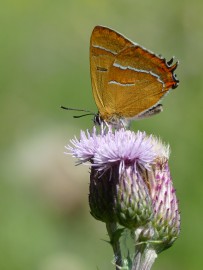
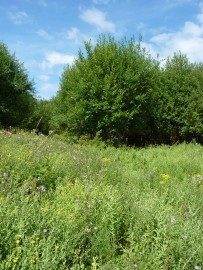
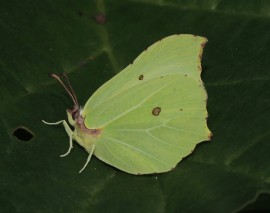
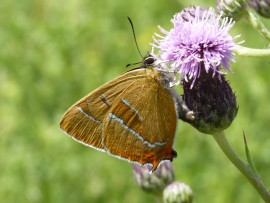
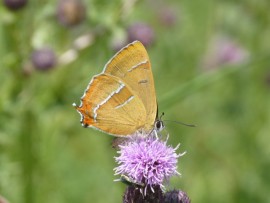
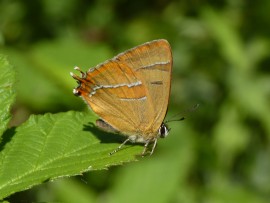
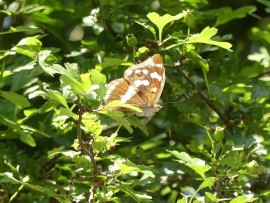
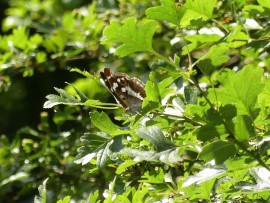
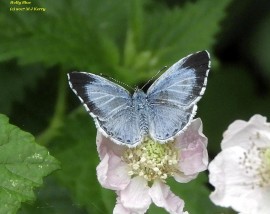
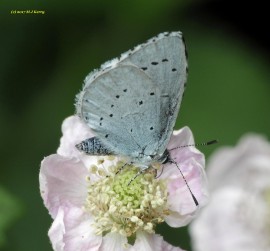
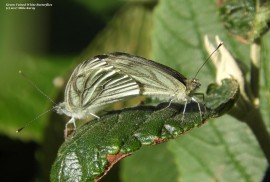

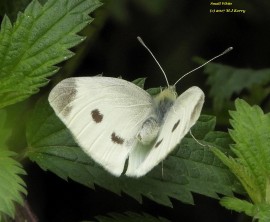
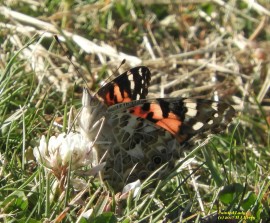
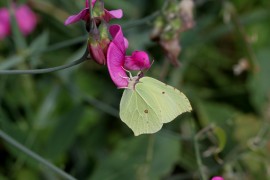
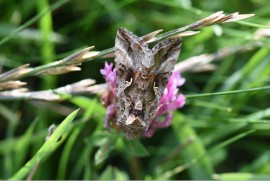
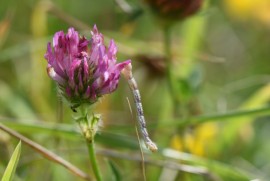
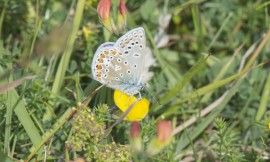
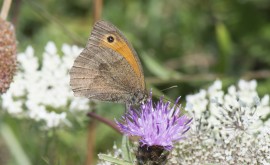

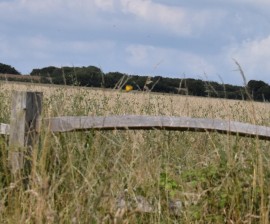
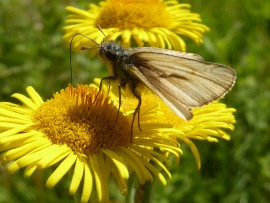
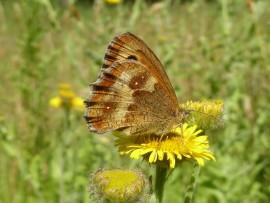
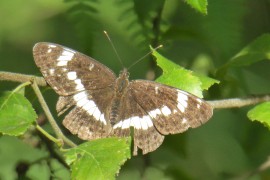
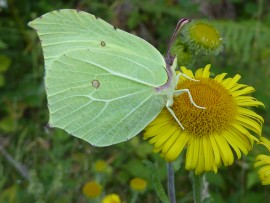
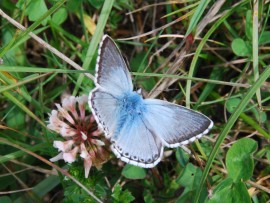
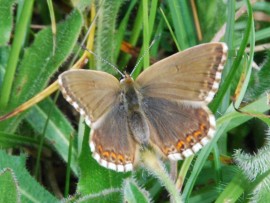
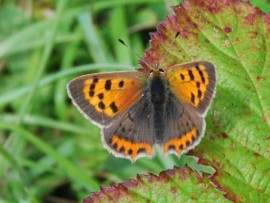
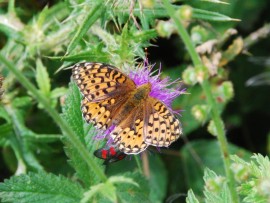
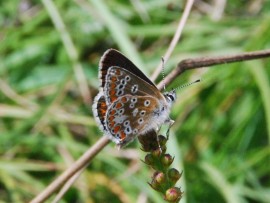
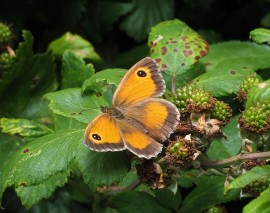
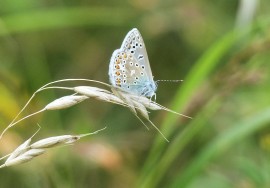

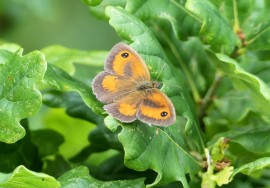
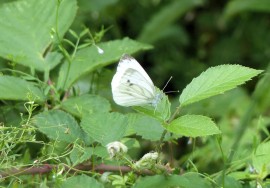
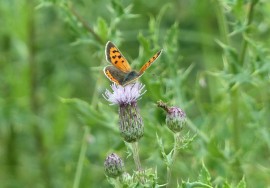
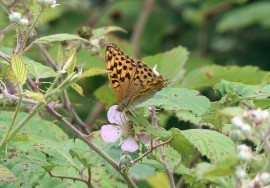
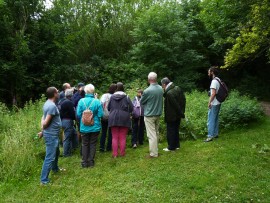
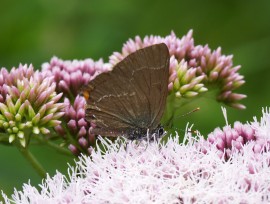
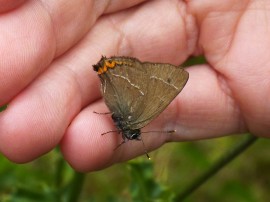
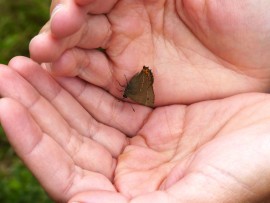
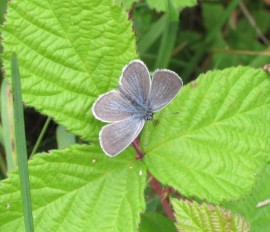
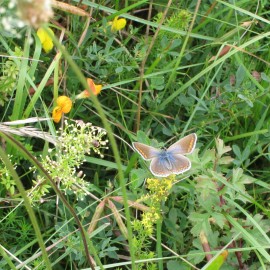

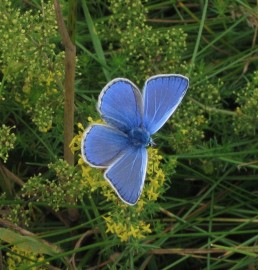

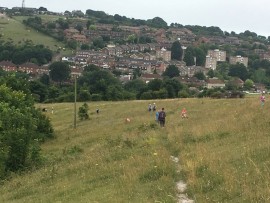
-1655133501.jpg)
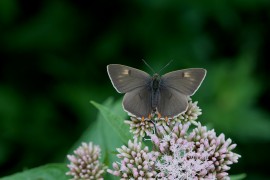
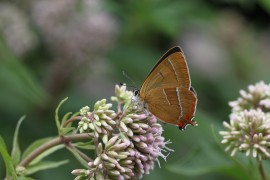

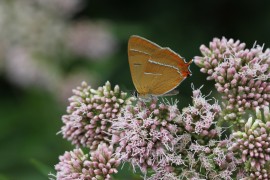
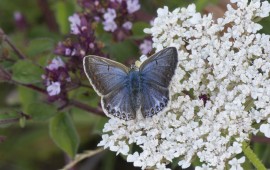

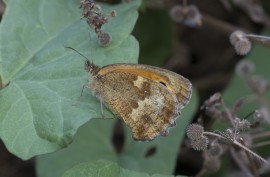
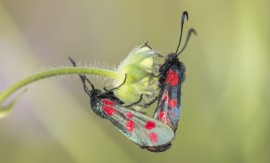
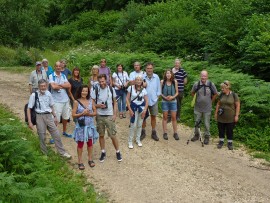
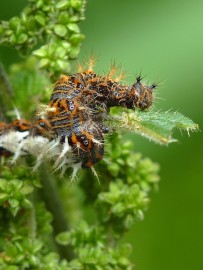
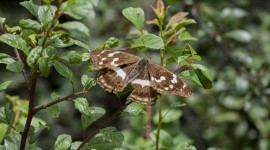

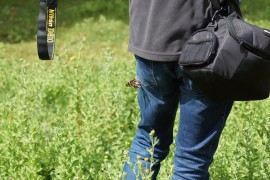
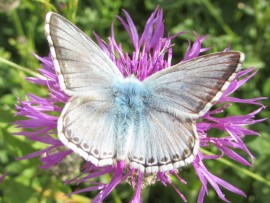
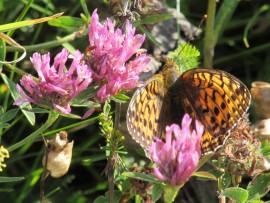
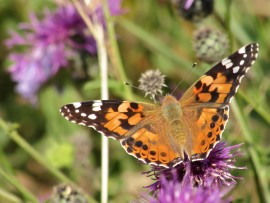

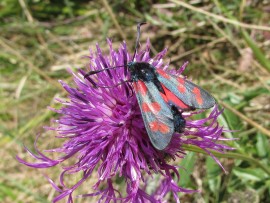
-1764832674.jpg)
-3922809665.jpg)
-8443144885.jpg)
-1541145970.jpg)
-334882056.jpg)
-204586936.jpg)
,-knepp-14.7.17-1678377101.jpg)
,-knepp-14.7.17-8116857055.jpg)
,-knepp-14.7.17-3871611841.jpg)
,-knepp-14.7.17-5204156260.jpg)
,-knepp-14.7.17-6217274894.jpg)
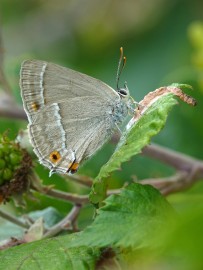
-9728664825.jpg)
-640744403.jpg)
-9890201953.jpg)
-760428393.jpg)
-9035724014.jpg)
-8072265563.jpg)
-9139455403.jpg)
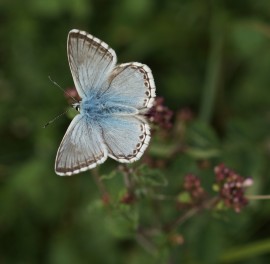

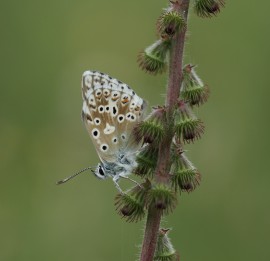
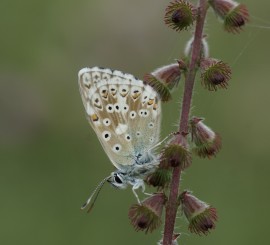
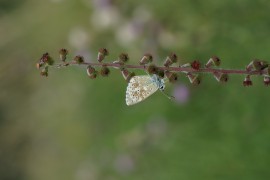
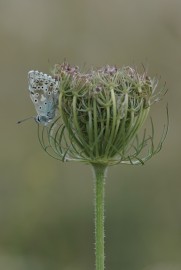

-6065792297.jpg)
-3217440117.jpg)

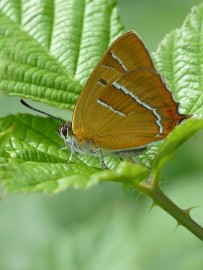
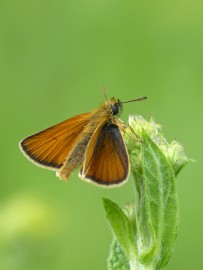
-8929806882.jpg)
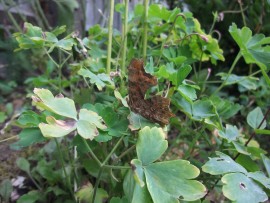
-2619732497.jpg)
-9819038137.jpg)
-1587463617.jpg)
-210932302.jpg)
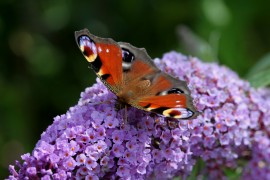
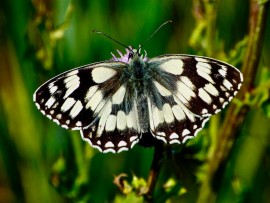
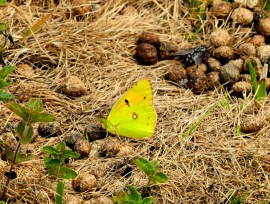
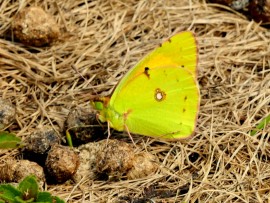
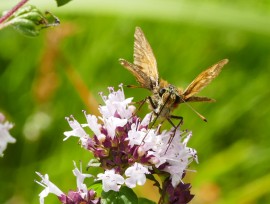
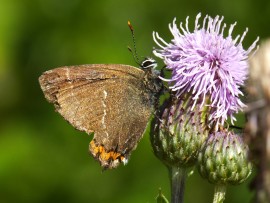
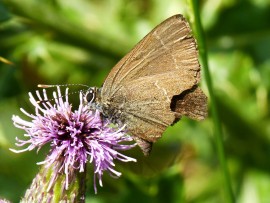

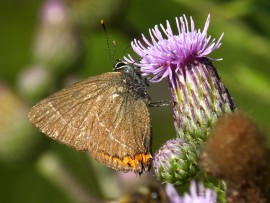
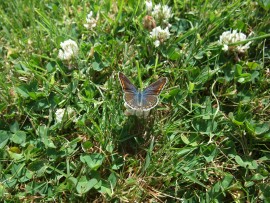
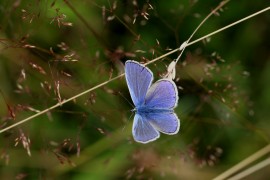
-5486800423.jpg)
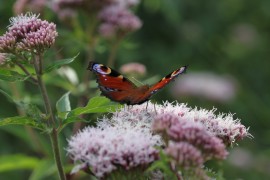
-9137769206.jpg)
-44373767.jpg)
-5184227176.jpg)
-3988194614.jpg)
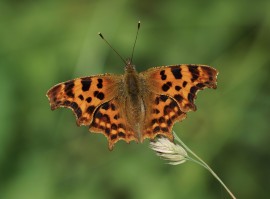
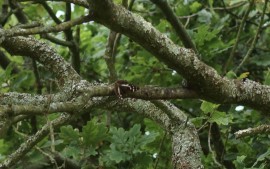
-9.7.17-1726067294.jpg)
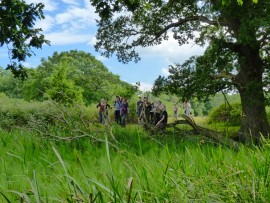
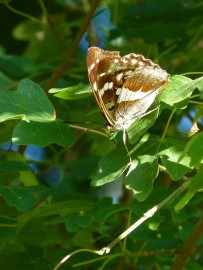
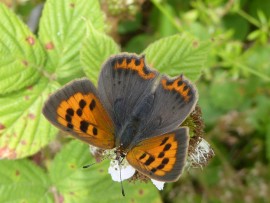
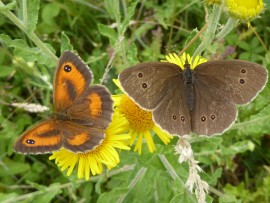
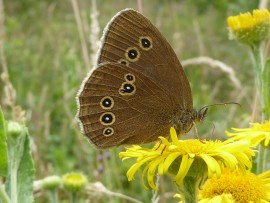
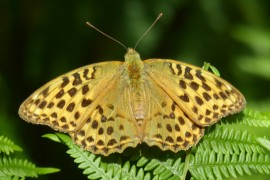
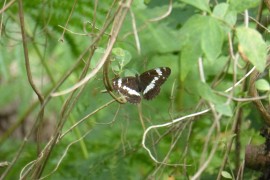
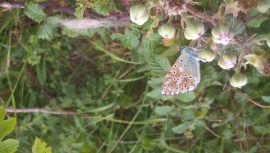
-2055635713.jpg)
-44150315.jpg)
-2198525811.jpg)
-4841434932.jpg)
-1748096877.jpg)
-8975399564.jpg)
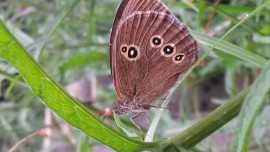
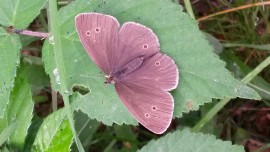
-5314294374.jpg)
-5365554750.jpg)
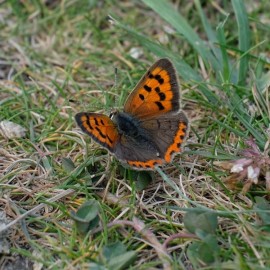
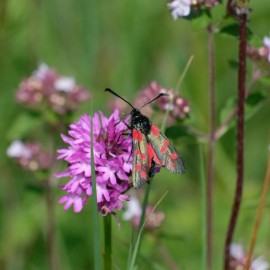
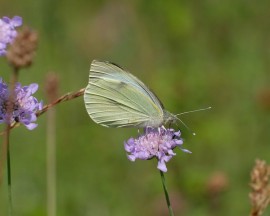
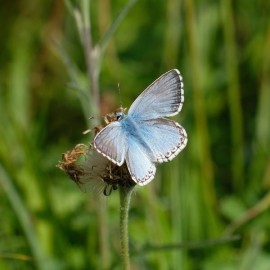
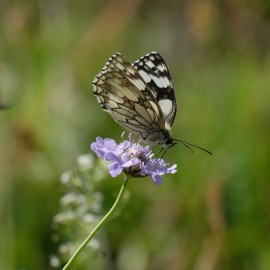
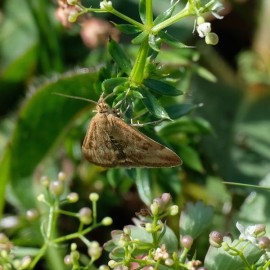
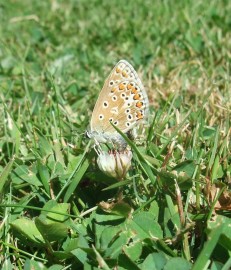
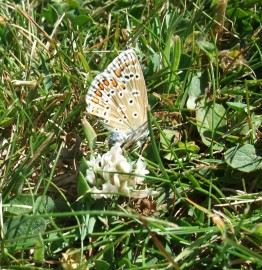
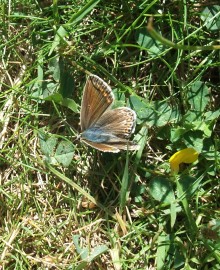
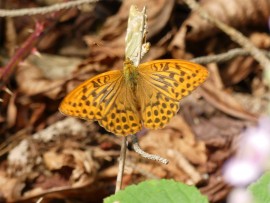
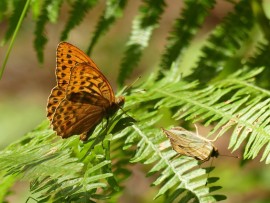
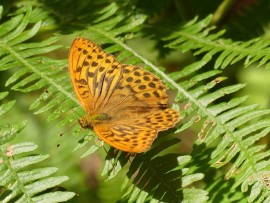
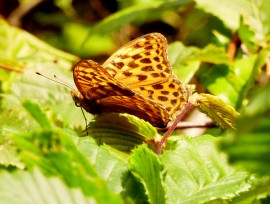


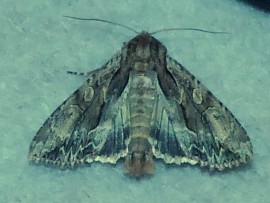
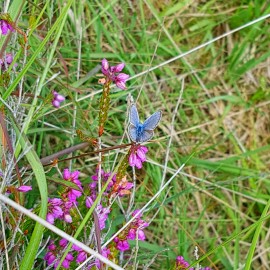
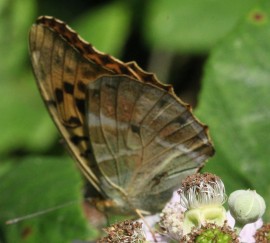
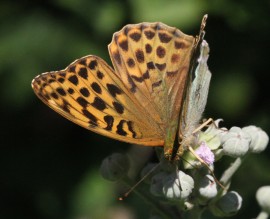
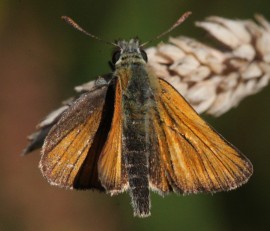
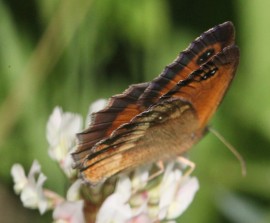
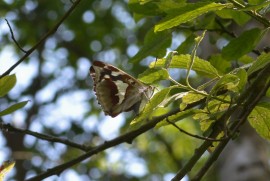
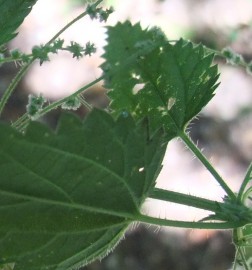
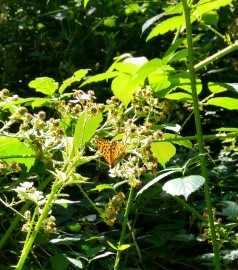
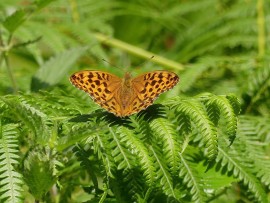

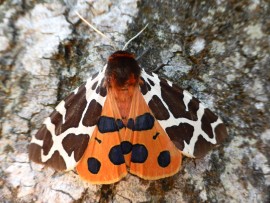
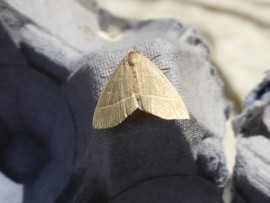
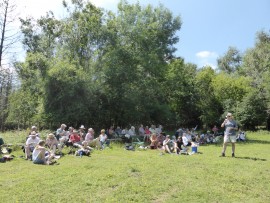
-428162468.jpg)
-6541319489.jpg)
-331682940.jpg)

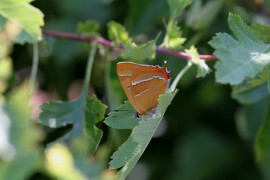
-5509999054.jpg)
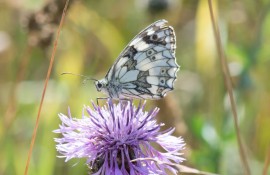
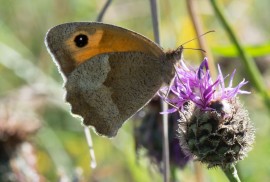
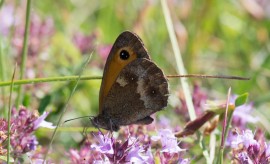
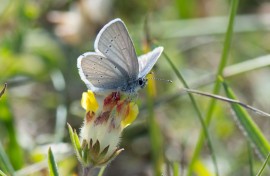
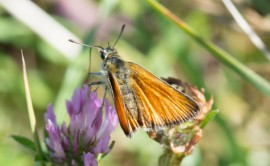
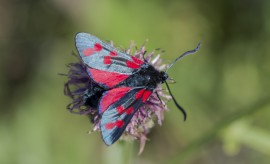
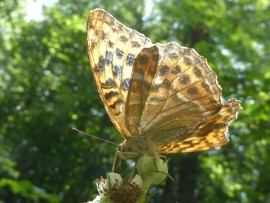
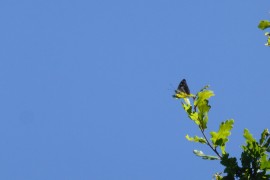
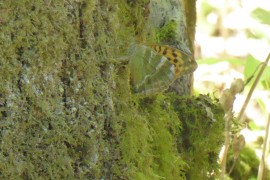
-635138028.jpg)
-3612940008.jpg)
-5379741578.jpg)
-8079159795.jpg)
-6828048238.jpg)
-6518644974.jpg)
-438273195.jpg)
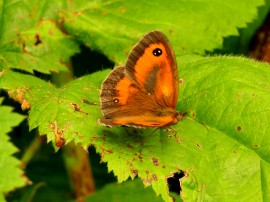
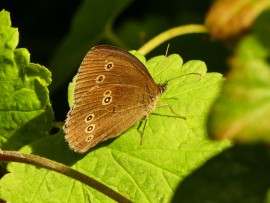
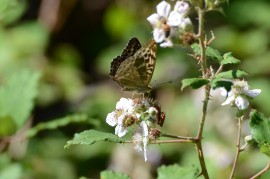
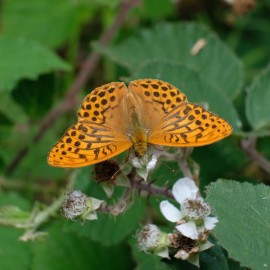
-6458250638.jpg)
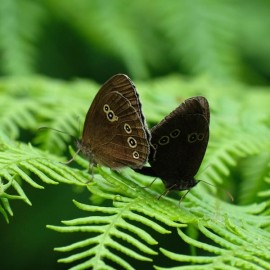
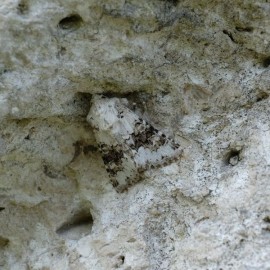
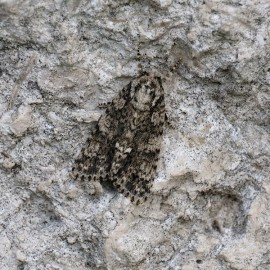
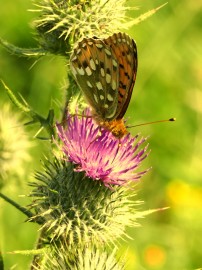
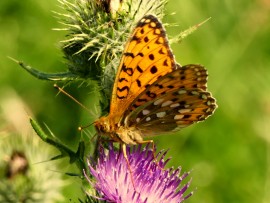
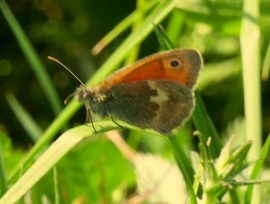
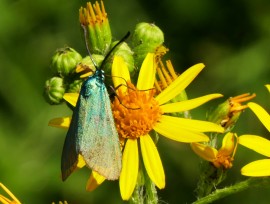
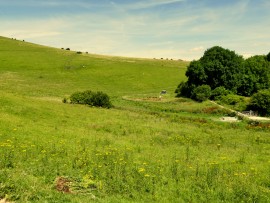
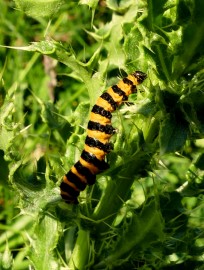
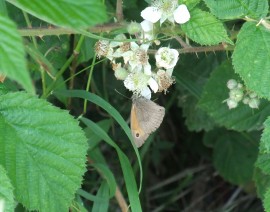

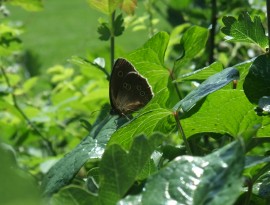
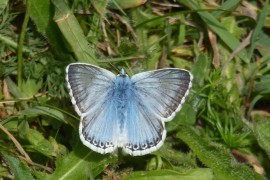
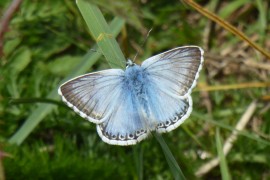

-2975730956.jpg)
-7483680695.jpg)
-6680328729.jpg)
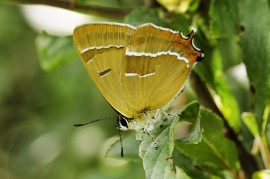
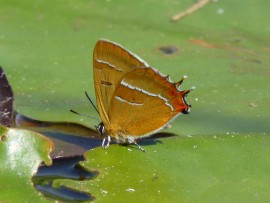
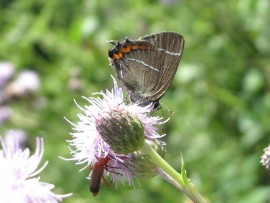
-6564683965.jpg)
-4339937702.jpg)
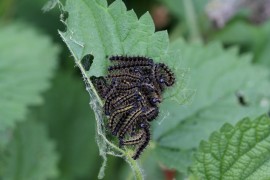
-1426580129.jpg)
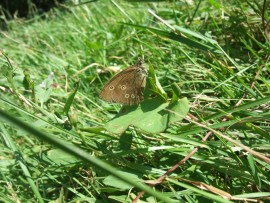

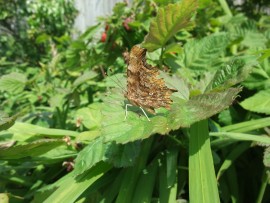
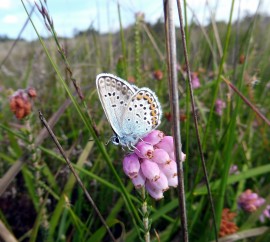
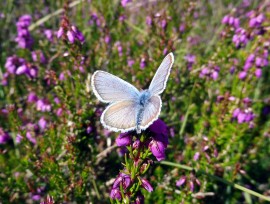
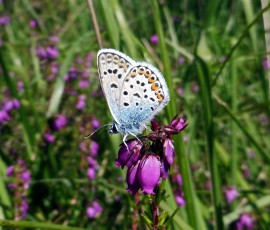
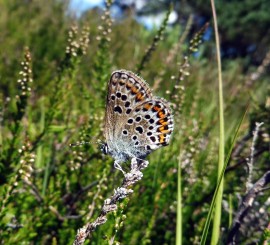
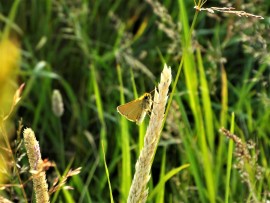
-7745791808.jpg)

-4510401021.jpg)
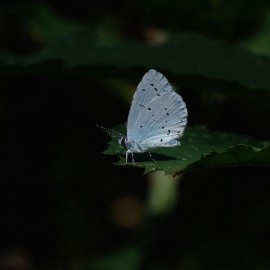
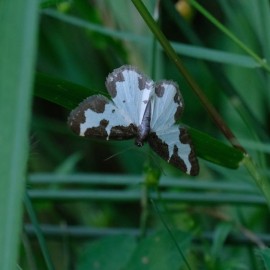
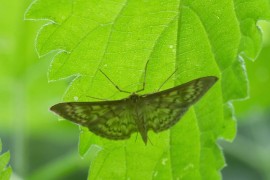
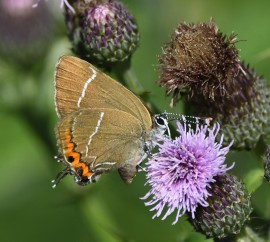
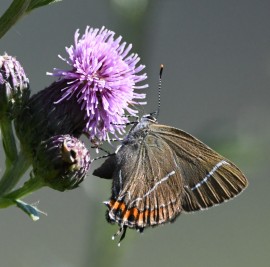
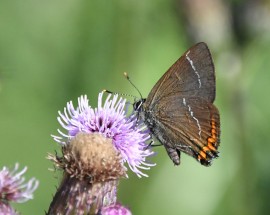
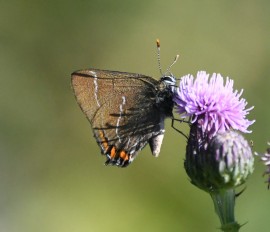
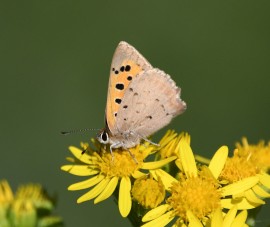

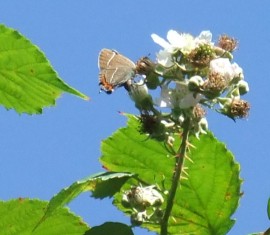
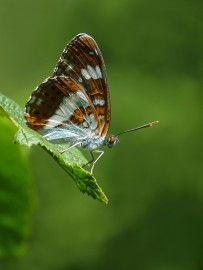
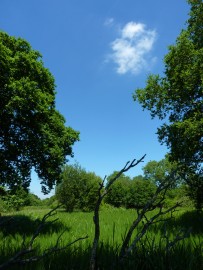
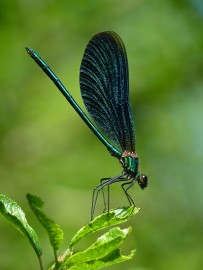
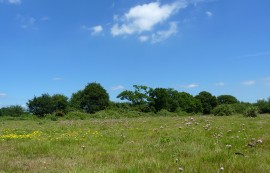
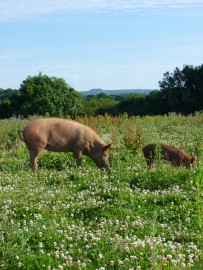

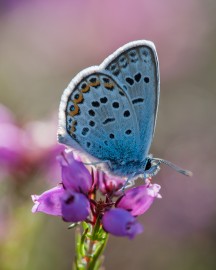
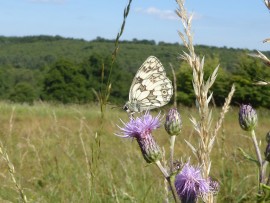
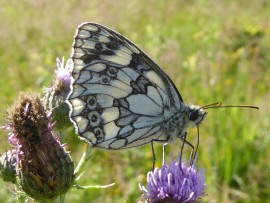
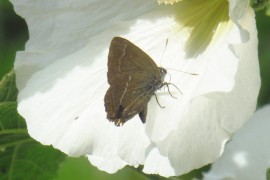

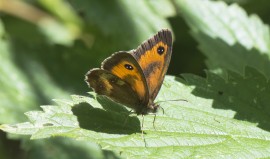
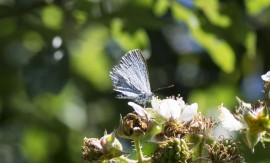
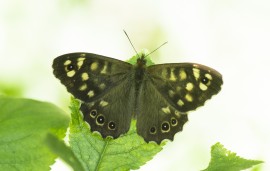
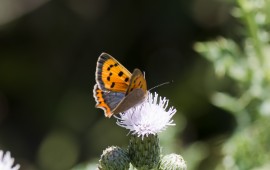

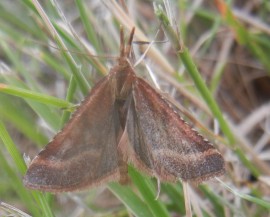
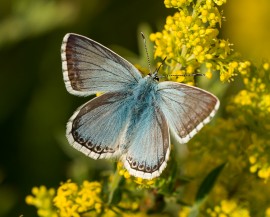
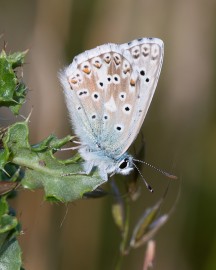
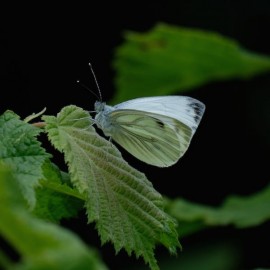
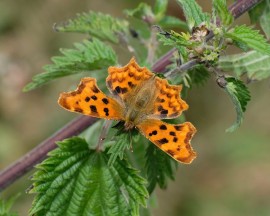
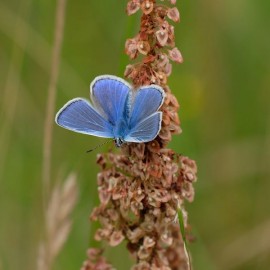
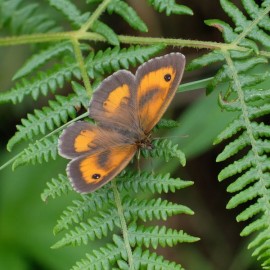
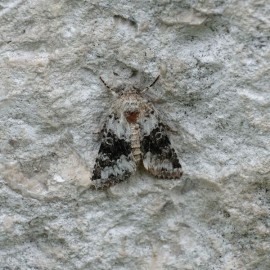
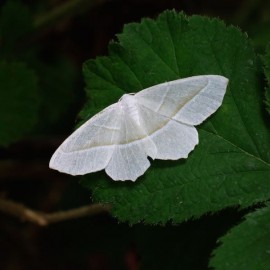

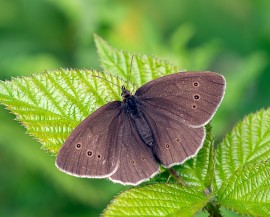
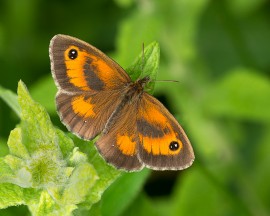
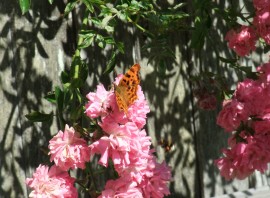
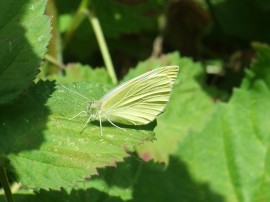
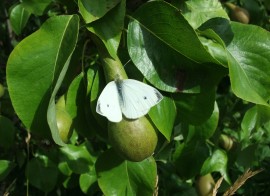
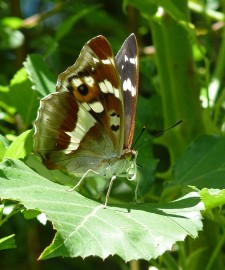

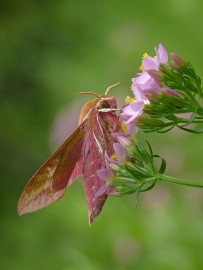
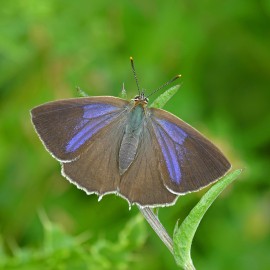
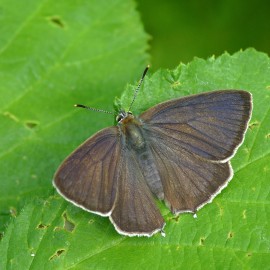
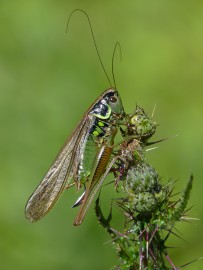
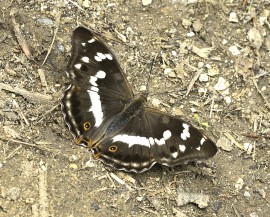
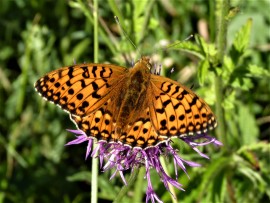

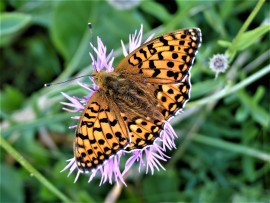
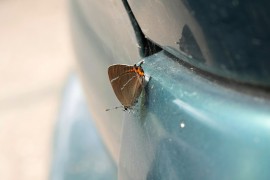
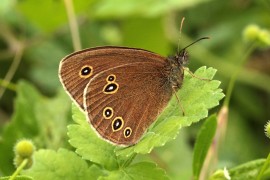
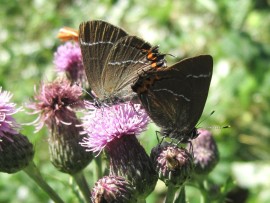
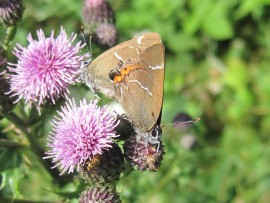
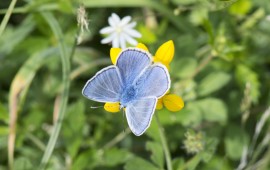
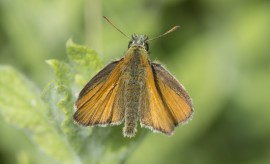
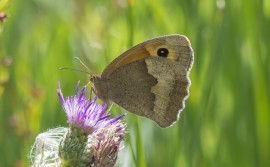
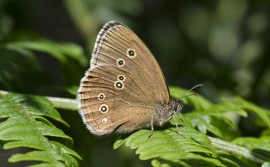
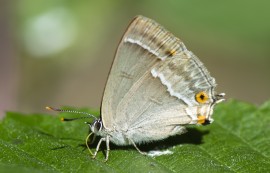

-8624696806.jpg)
-6619302048.jpg)
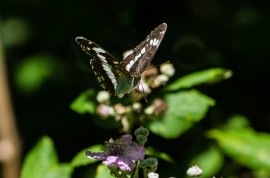
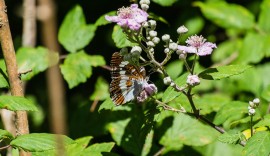
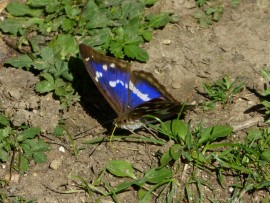
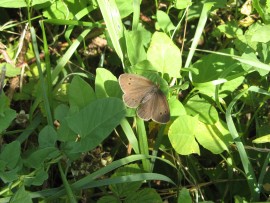
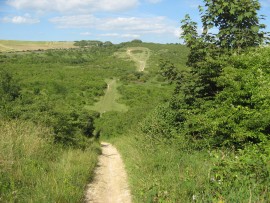
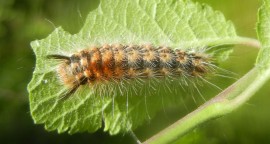
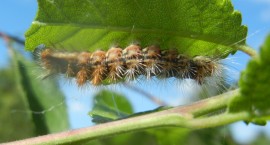

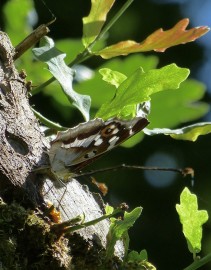
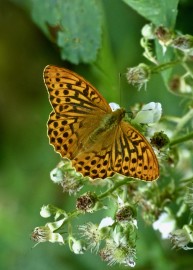
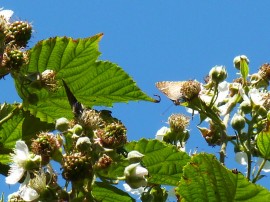
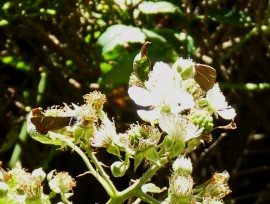
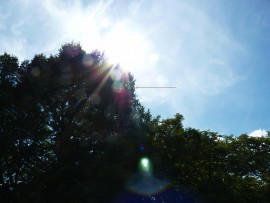
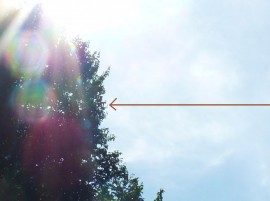
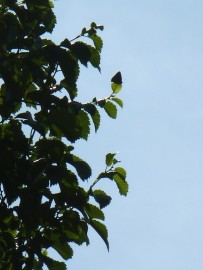
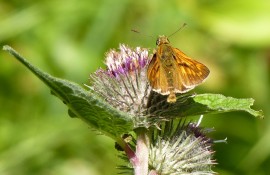

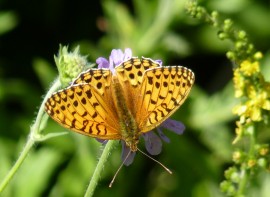
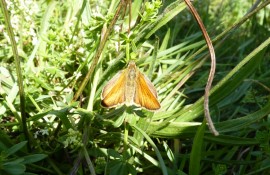
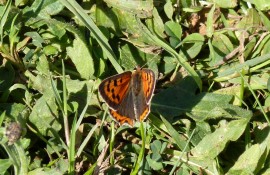
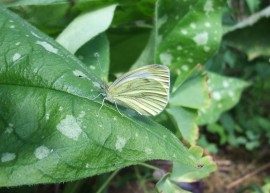
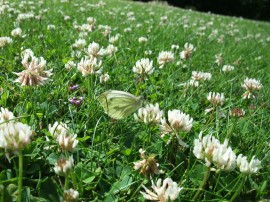
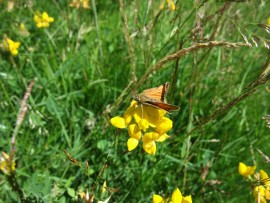

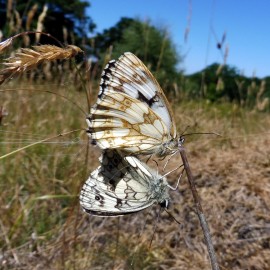

-littlehampton-1-july-(colin-knight)-7563301455.jpg)
-littlehampton-1-july-(colin-knight)-5579187665.jpg)
-littlehampton-1-july-(colin-knight)-9099855786.jpg)
-7651969958.jpg)
-9929081262.jpg)
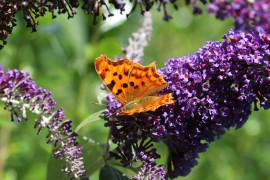
-2957293218.jpg)
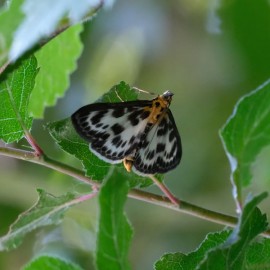
-486412136.jpg)
-9649649322.jpg)
-3218397772.jpg)
-2866348009.jpg)
-7244999795.jpg)
-1518018506.jpg)

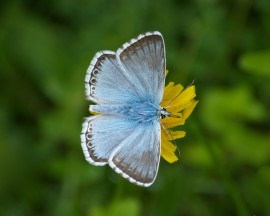
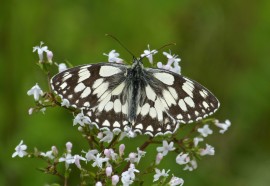
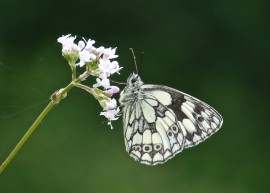
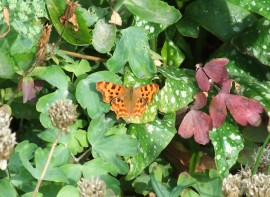

-littlehampton-30-june-(colin-knight)-3102815719.jpg)
-ditchling-common-1-july-(colin-knight)-5181767237.jpg)
-ditchling-common-1-july-(colin-knight)-214033364.jpg)
-1472084908.jpg)
-ditchling-common-1-july-(colin-knight)-1802402432.jpg)
-9505657204.jpg)
-ditchling-common-30-june-(colin-knight)-5119063770.jpg)
-ditchling-common-30-june-(colin-knight)-7394441864.jpg)
-ditchling-common-1-july-(colin-knight)-9486581026.jpg)
-4511331166.jpg)
-3-6364092370.jpg)
-2-4058047789.jpg)
-7729576667.jpg)
-2714523053.jpg)
-295670111.jpg)
-8645348851.jpg)
-2159370896.jpg)
-66595217.jpg)
-9405566942.jpg)
-1021923166.jpg)
-1040194779.jpg)
-9964213306.jpg)
-4437197456.jpg)
-8376495684.jpg)
-8347877482.jpg)
-241568731.jpg)
-4544764780.jpg)
-6623935983.jpg)
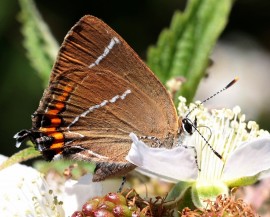
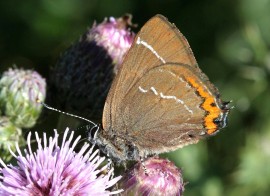
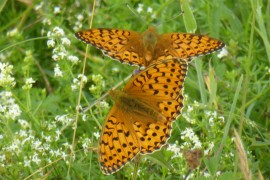
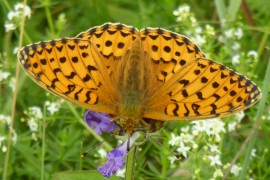
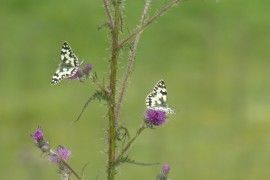
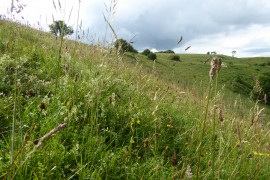
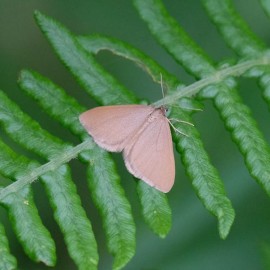
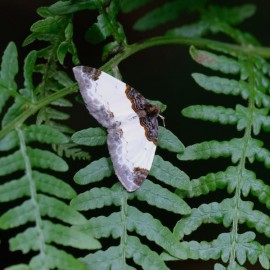
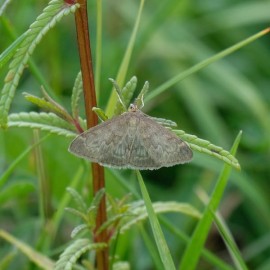
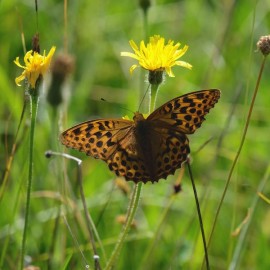
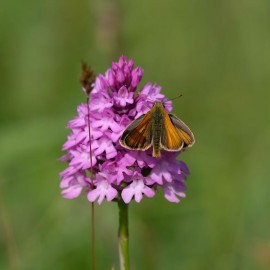
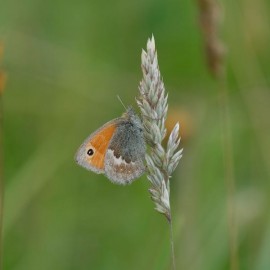
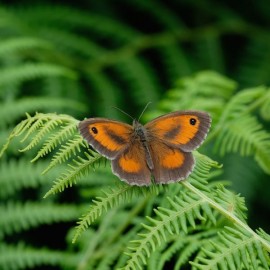
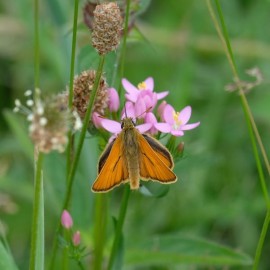
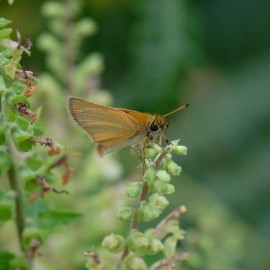
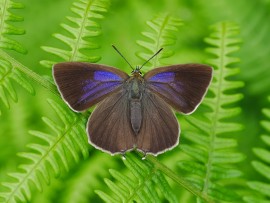

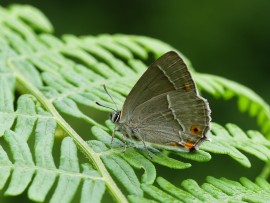
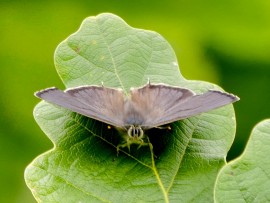

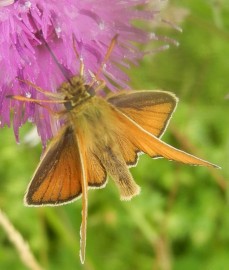
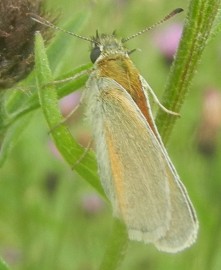
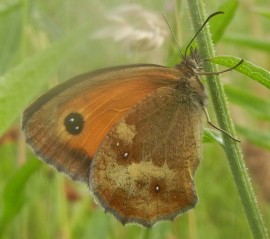
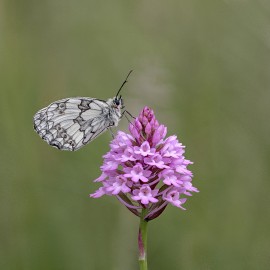
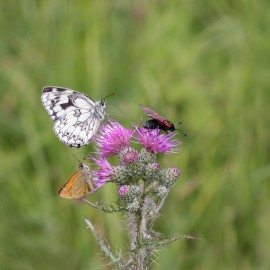
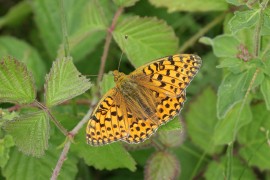
-littlehampton-29-june-(colin-knight)-2552067027.jpg)
-and-silky-wainscot-(chilodes-maritimus)-littlehampton-29-june-(colin-knight)-1292218375.jpg)
-littlehampton-29-june-(colin-knight)-5221792459.jpg)
-littlehampton-29-june-(colin-knight)-2762167262.jpg)
-littlehampton-29-june-(colin-knight)-9736694712.jpg)
-littlehampton-29-june-(colin-knight)-7411914942.jpg)
-littlehampton-29-june-(colin-knight)-1784695382.jpg)
-6370165348.jpg)
-littlehampton-29-june-(colin-knight)-3508144533.jpg)
-littlehampton-29-june-(colin-knight)-5716414605.jpg)
-littlehampton-29-june-(colin-knight)-5351094184.jpg)
-littlehampton-29-june-(colin-knight)-2456091437.jpg)
-3418448772.jpg)
-7380259647.jpg)
-6593910809.jpg)
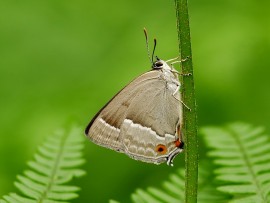

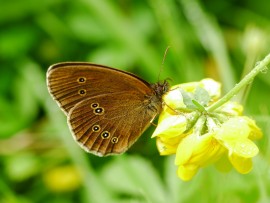

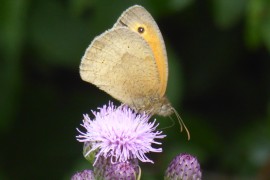
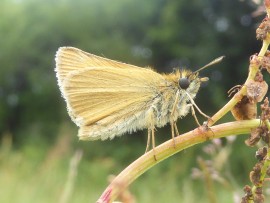

-littlehampton-27-june-(colin-knight)-6413620528.jpg)
-littlehampton-27-june-(colin-knight)-1124221384.jpg)
-littlehampton-27-june-(colin-knight)-1909024263.jpg)
-littlehampton-27-june-(colin-knight)-3399327453.jpg)
-littlehampton-27-june-(colin-knight)-6417701384.jpg)
-littlehampton-27-june-(colin-knight)-5791370100.jpg)
-littlehampton-27-june-(colin-knight)-4955875403.jpg)
-littlehampton-27-june-(colin-knight)-6423748354.jpg)
-littlehampton-27-june-(colin-knight)4-8983362964.jpg)
-littlehampton-27-june-(colin-knight)-7709567877.jpg)
-littlehampton-27-june-(colin-knight)-2644025404.jpg)
-littlehampton-27-june-(colin-knight)-216614804.jpg)
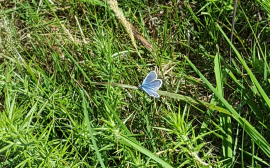

-4896640996.jpg)
-5657471548.jpg)
-804425240.jpg)
-7000288465.jpg)
-735221067.jpg)
-5447605876.jpg)
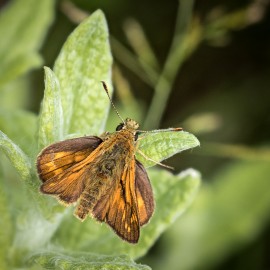
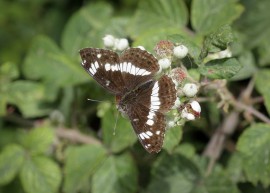
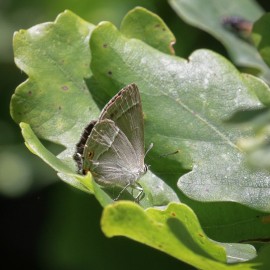
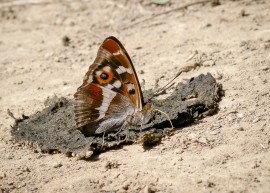
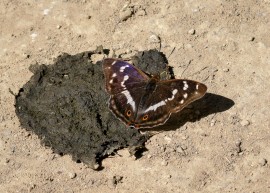
-knepp-26.6.17-5022453824.jpg)
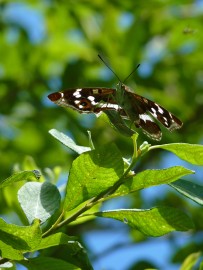
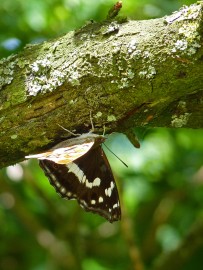
,-knepp-26.6.17-9066593963.jpg)
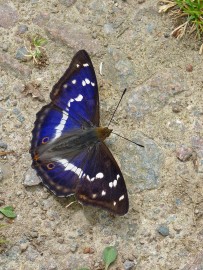
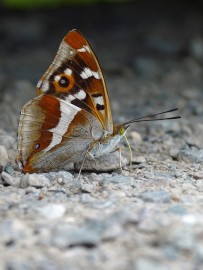
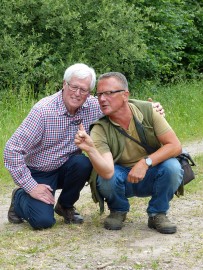
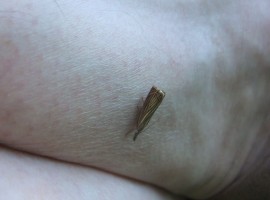
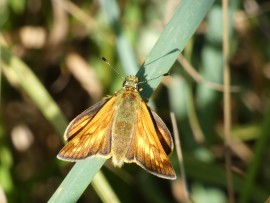
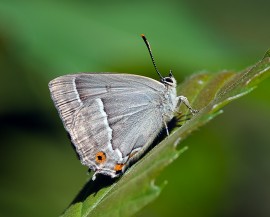
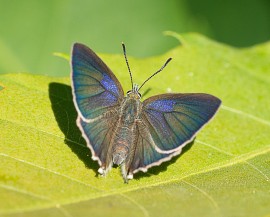
-littlehampton-25-june-(colin-knight)-2950440850.jpg)
-littlehampton-25-june-(colin-knight)-5229652435.jpg)
-littlehampton-25-june-(colin-knight)-7634256551.jpg)
-littlehampton-25-june-(colin-knight)-4571703402.jpg)
-littlehampton-25-june-(colin-knight)-5585099156.jpg)
-littlehampton-25-june-(colin-knight)-1355136213.jpg)
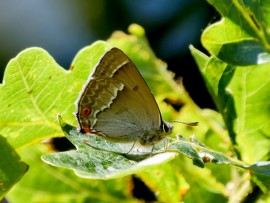
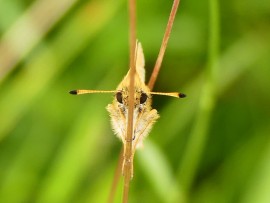
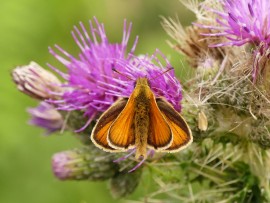
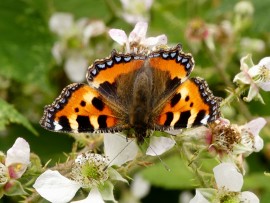


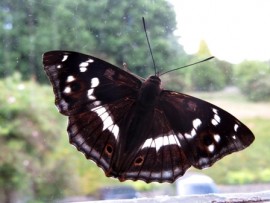
---copy-4344881647.jpg)
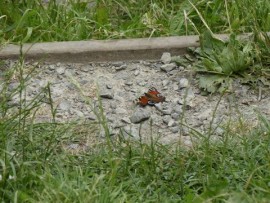
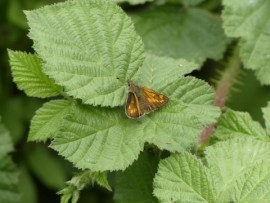
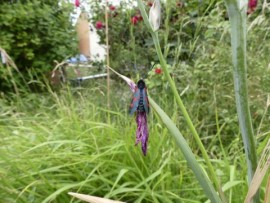
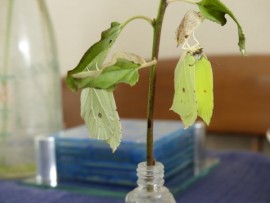
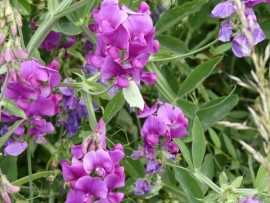
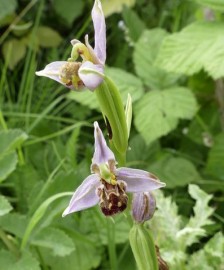
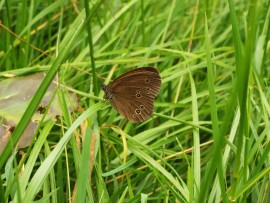
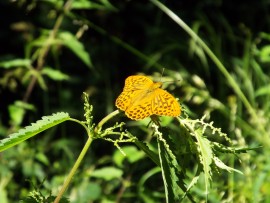
-3652609288.jpg)
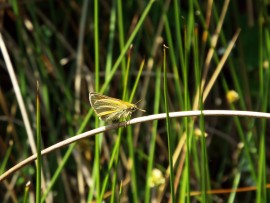
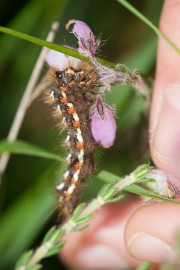
-arundel-wwt-25-june-(colin-knight)-4165728553.jpg)
-1879247413.jpg)
-3011733447.jpg)
-arundel-wwt-25-june-(colin-knight)-6411643894.jpg)
-arundel-wwt-25-june-(colin-knight)-4962596646.jpg)
-arundel-wwt-25-june-(colin-knight)-2903251703.jpg)
-5427825516.jpg)
-2009785659.jpg)
-8647569431.jpg)

-3389839283.jpg)
-9026898541.jpg)
-iping-common-24-july-(colin-knight)-6746805449.jpg)
-iping-common-24-july-(colin-knight)-3486808612.jpg)
-2382127195.jpg)
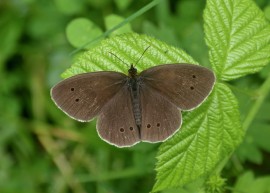
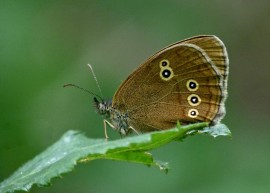

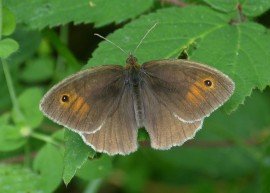
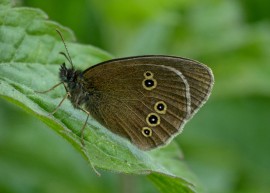
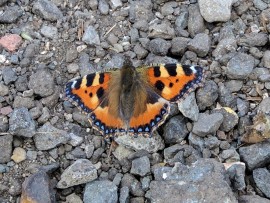
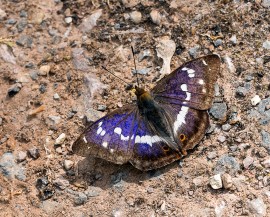
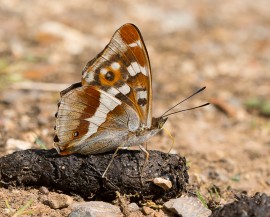
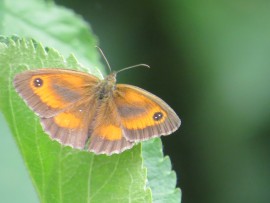

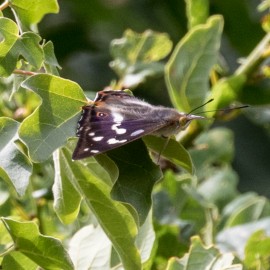
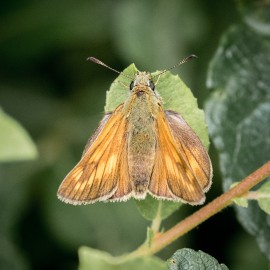
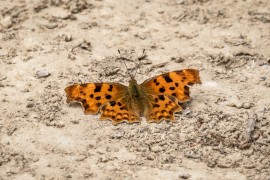
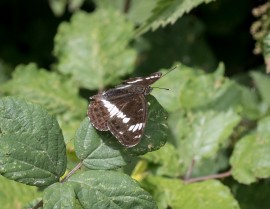
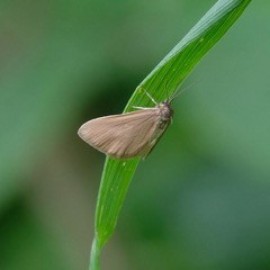
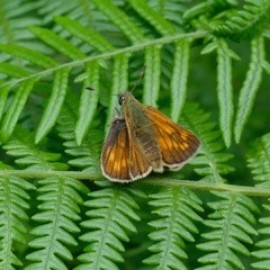
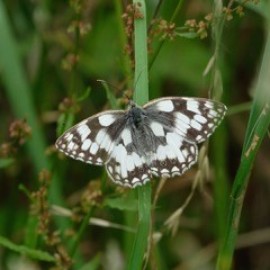
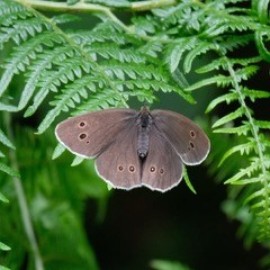
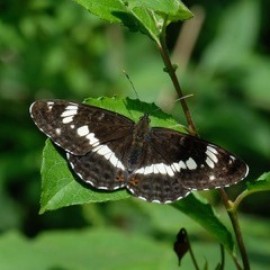
-9526487668.jpg)
-8591551417.jpg)
-1062799287.jpg)
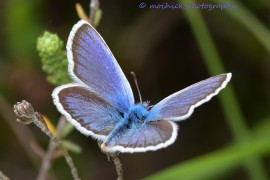

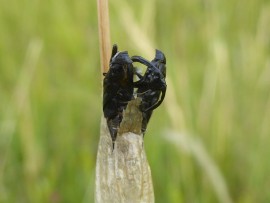
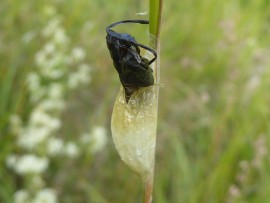
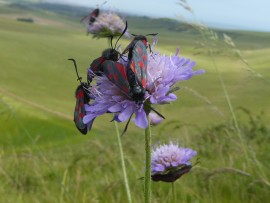
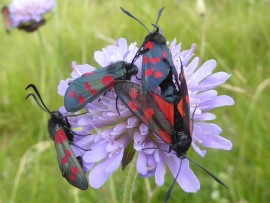
-littlehampton-22-june-(colin-knight)-6597230746.jpg)
-littlehampton-22-june-(colin-knight)-9085878198.jpg)
-littlehampton-22-june-(colin-knight)-5043727913.jpg)
-littlehampton-22-june-(colin-knight)-2885282491.jpg)
-littlehampton-22-june-(colin-knight)-2987584248.jpg)
-littlehampton-22-june-(colin-knight)-6958061899.jpg)
-3955601584.jpg)
-7060687309.jpg)
-8331844964.jpg)
-littlehampton-golf-course-22-june-(colin-knight)-1356320707.jpg)
-littlehampton-21-june-(colin-knight)-1846659127.jpg)
-littlehampton-22-june-(colin-knight)-8481708071.jpg)
-5516688670.jpg)

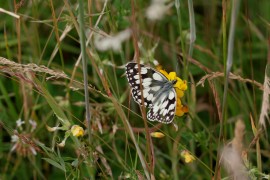
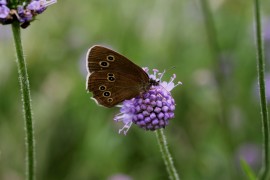
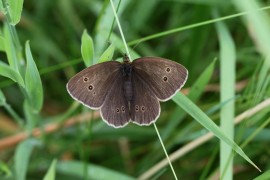
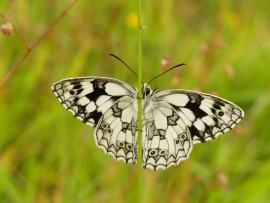
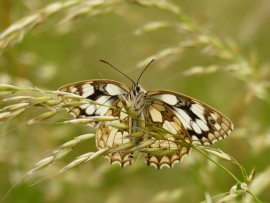
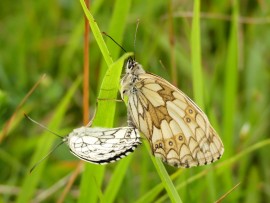
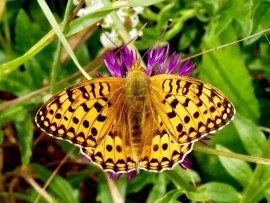

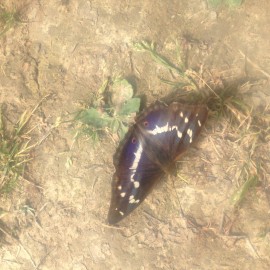
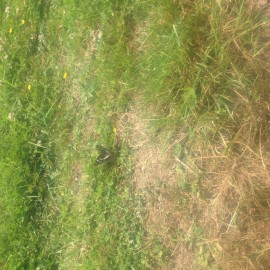
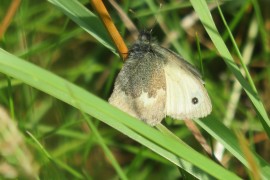
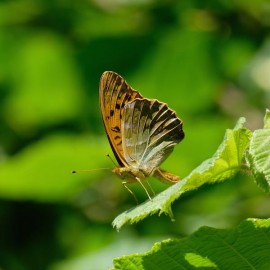
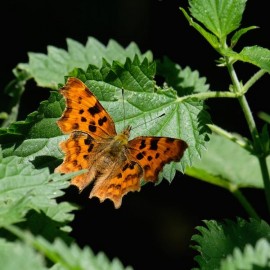

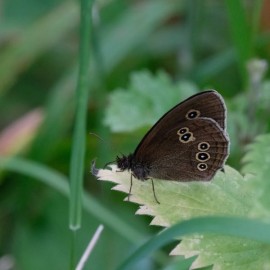
-2593315606.jpg)
-9818554902.jpg)
-littlehampton-golf-course-20-june-(colin-knight)-516312625.jpg)
-littlehampton-21-june-(colin-knight)-8803954520.jpg)
-littlehampton-21-june-(colin-knight)-5661651710.jpg)
-littlehampton-21-june-(colin-knight)-7358526922.jpg)
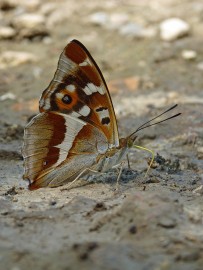
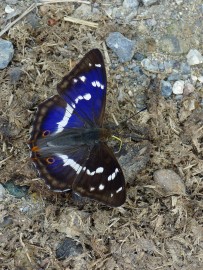
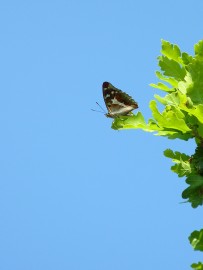
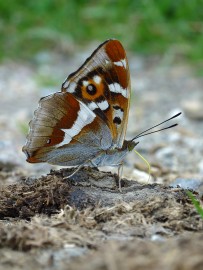
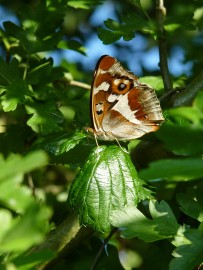
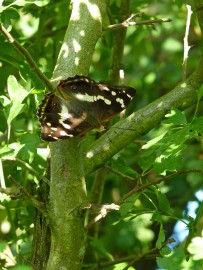
-1317975334.jpg)
-littlehampton-20-june-(colin-knight)-654288595.jpg)
-littlehampton-20-june-(colin-knight)-2657471857.jpg)
-littlehampton-19-june-(colin-knight)-8819283158.jpg)
-littlehampton-19-june-(colin-knight)-9937508278.jpg)
-littlehampton-19-june-(colin-knight)-1466903788.jpg)
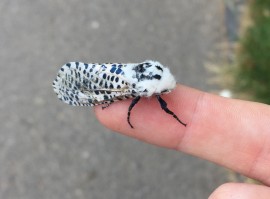
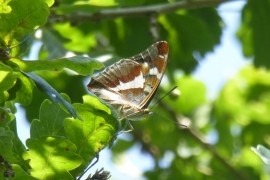
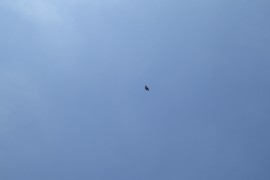
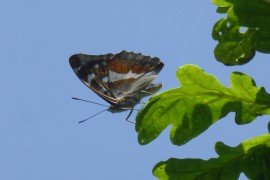
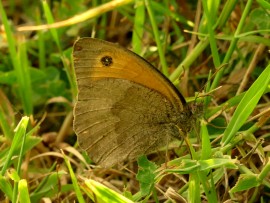
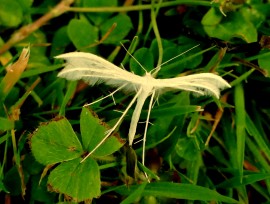
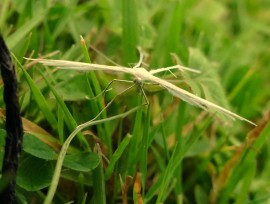
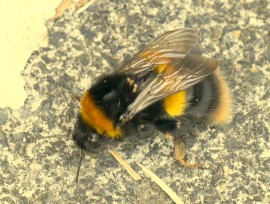
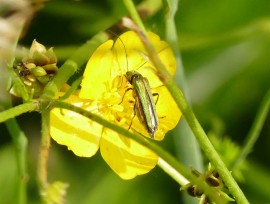
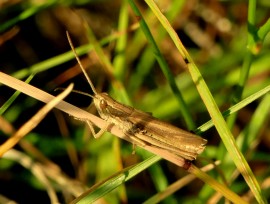
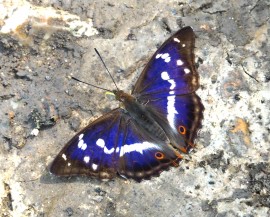
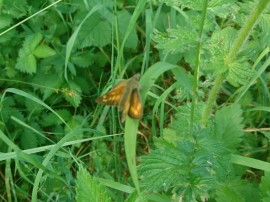
-8830837146.jpg)
-2114633019.jpg)
-littlehampton-18-june-(colin-knight)-5528336600.jpg)
-littlehampton-18-june-(colin-knight)-8649197900.jpg)
-littlehampton-18-june-(colin-knight)-5876543847.jpg)
-littlehampton-18-june-(colin-knight)-2088164673.jpg)
-littlehampton-18-june-(colin-knight)-9054422308.jpg)
-littlehampton-18-june-(colin-knight)-7505369363.jpg)
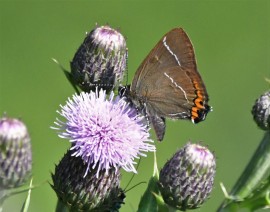
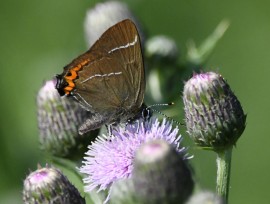
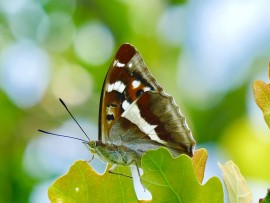
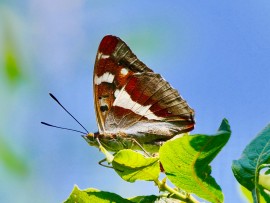
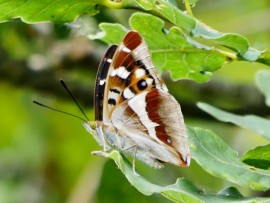
-4218967743.jpg)
-3617333183.jpg)
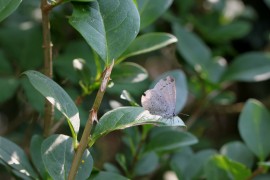
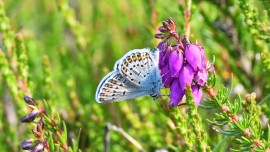
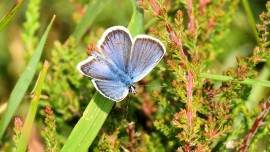
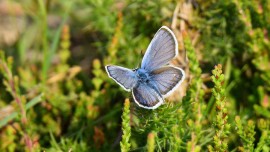
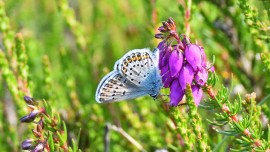
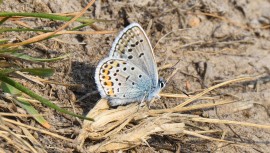
-6875347169.jpg)
-3306202711.jpg)
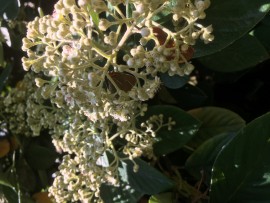
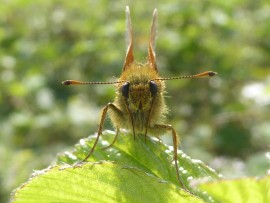

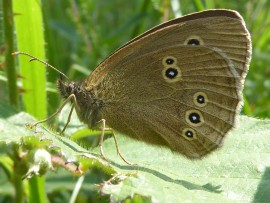
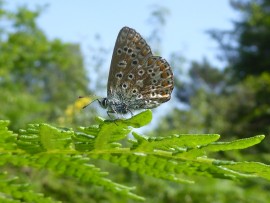
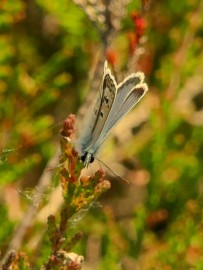
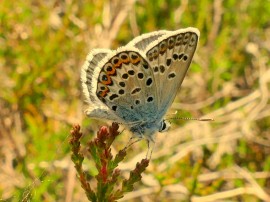

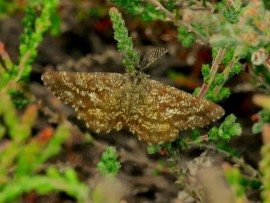
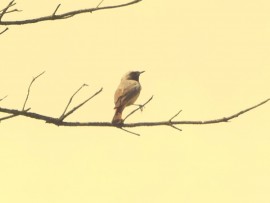
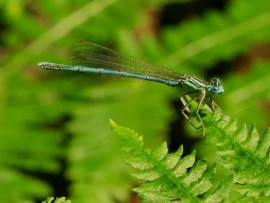

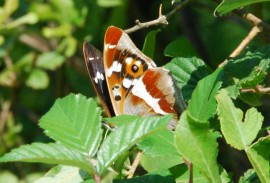
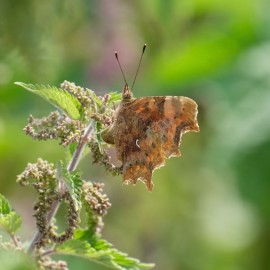
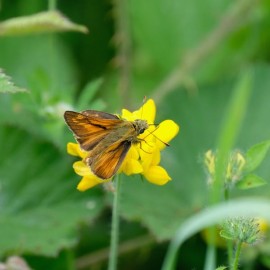
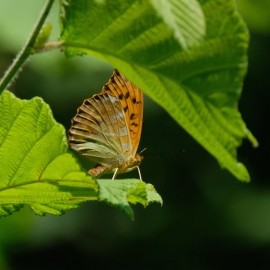
-2796623511.jpg)
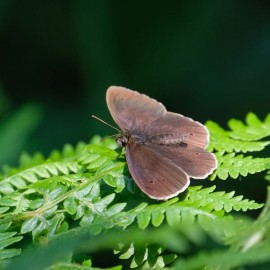
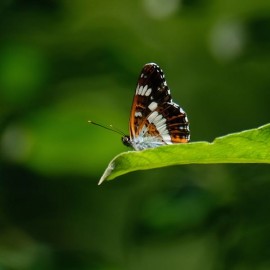
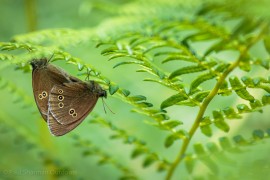
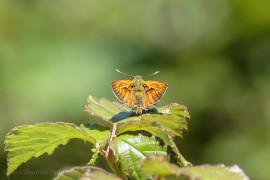
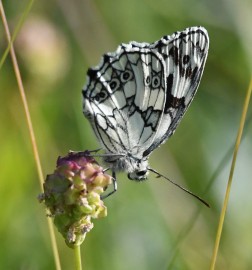
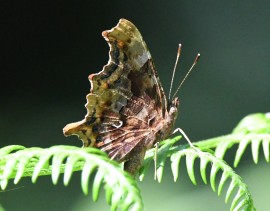
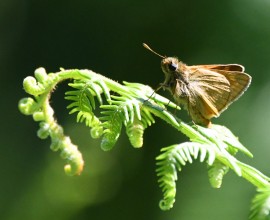
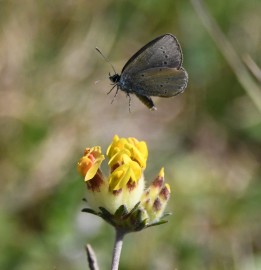
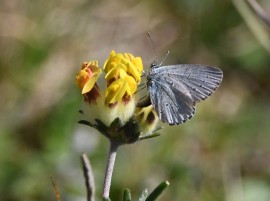
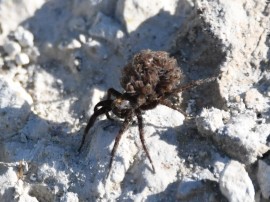
-640184488.jpg)
-2988784187.jpg)
-4166252110.jpg)
-4414889165.jpg)
-9080934482.jpg)
-8650697027.jpg)
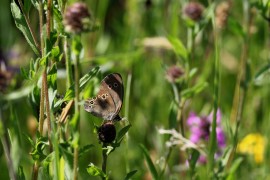
-550402742.jpg)
-littlehampton-16-june-(colin-knight)-5280910027.jpg)
-mill-hill-17-june-(colin-knight)-8590564727.jpg)
-mill-hill-17-june-(colin-knight)-9553730380.jpg)
-mill-hill-17-june-(colin-knight)-2175114043.jpg)
-mill-hill-17-june-(colin-knight)-6127338730.jpg)
-woods-mill-17-june-(colin-knight)-7326811752.jpg)
-littlehampton-16-june-(colin-knight)-4552393108.jpg)
-littlehampton-16-june-(colin-knight)-6210036883.jpg)
-littlehampton-16-june-(colin-knight)-8026616252.jpg)
-littlehampton-16-june-(colin-knight)-6167715145.jpg)
-littlehampton-16-june-(colin-knight)-7337426785.jpg)
-littlehampton-16-june-(colin-knight)-3137543788.jpg)
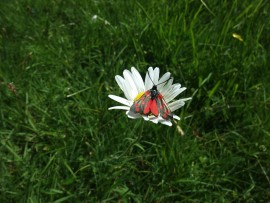
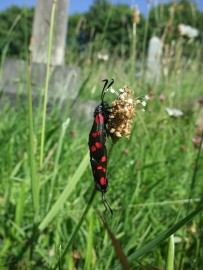
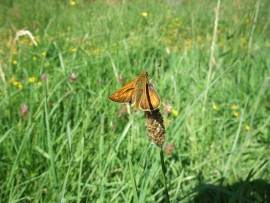
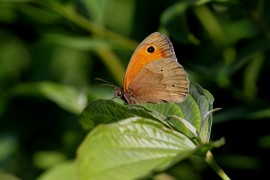
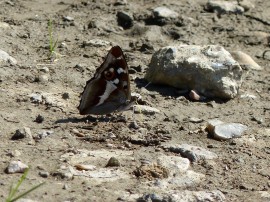
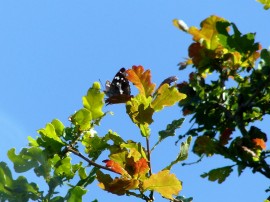
-5517065413.jpg)
-7213981566.jpg)
-4916874784.jpg)
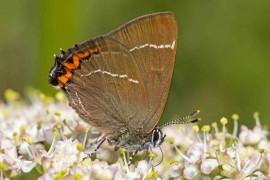
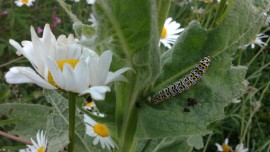
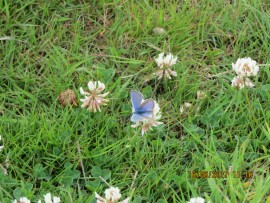
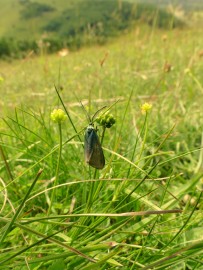
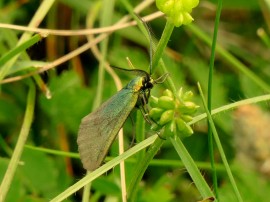
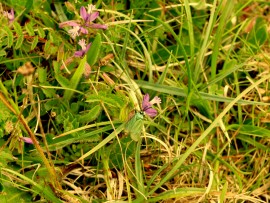
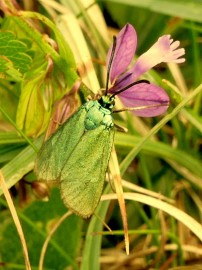
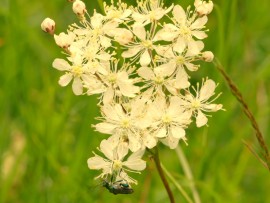

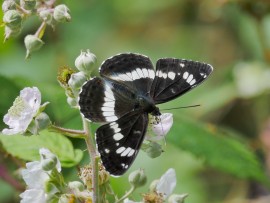
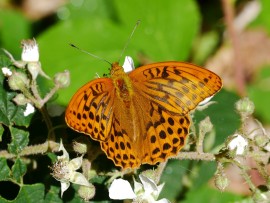
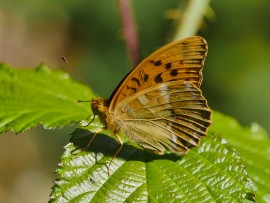
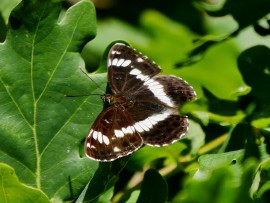
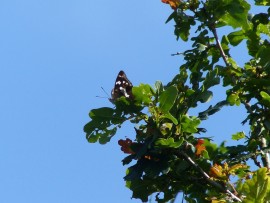
-littlehampton-15-june-(colin-knight)-6710953158.jpg)
-2372190281.jpg)
-1441505020.jpg)
-8815438225.jpg)
-littlehampton-golf-course-16-june-(colin-knight)-7821274972.jpg)
-littlehampton-golf-course-16-june-(colin-knight)-7356227096.jpg)
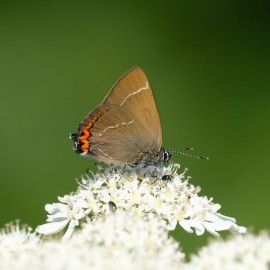
-1647214288.jpg)
-3148461529.jpg)
-1878711436.jpg)
-littlehampton-13-june-(colin-knight)-6427982244.jpg)
-southwater-woods-14-june-(colin-knight)-9630103036.jpg)
-783169697.jpg)
-3878826401.jpg)
-littlehampton-15-june-(colin-knight)-7963446537.jpg)
-7267474289.jpg)
-littlehampton-14.6.17-2261602217.jpg)
-5150882164.jpg)
-6103697279.jpg)
-747112981.jpg)

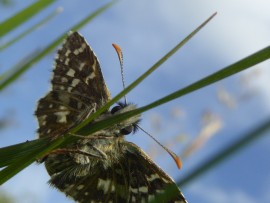
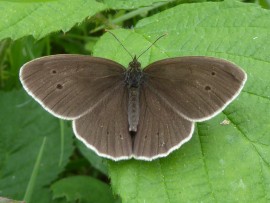
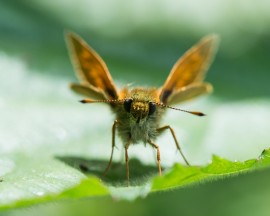
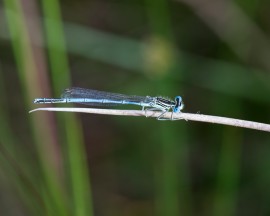
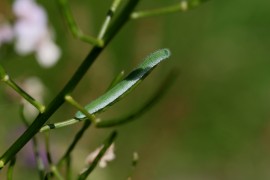
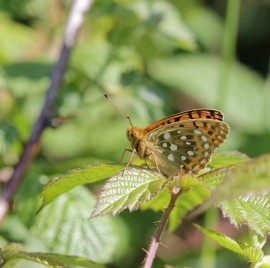
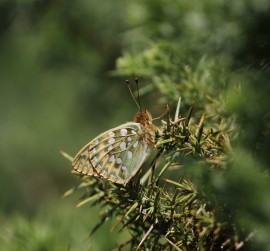
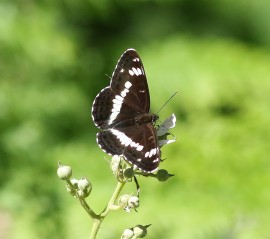
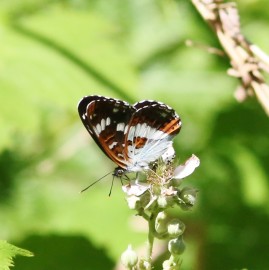
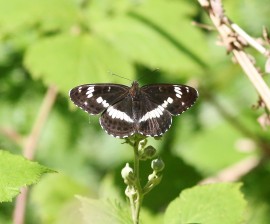
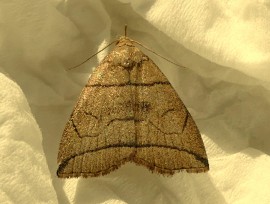
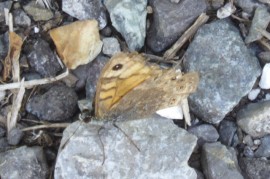
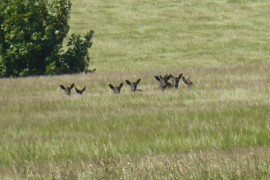
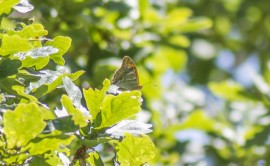
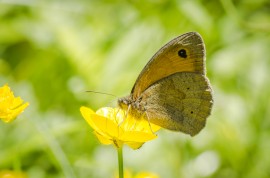
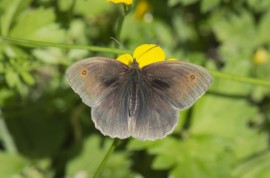
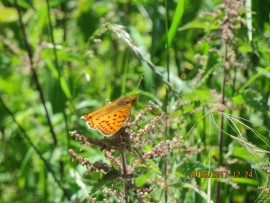
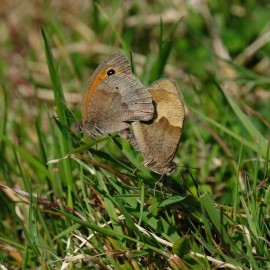
-1226208060.jpg)
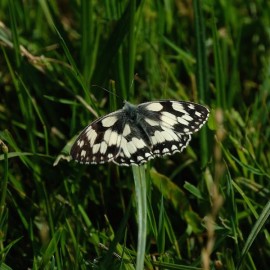
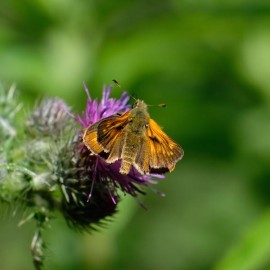
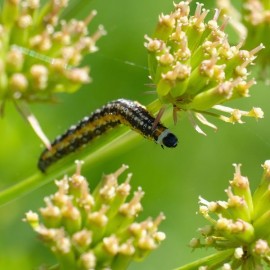
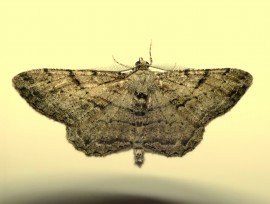
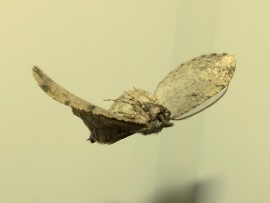

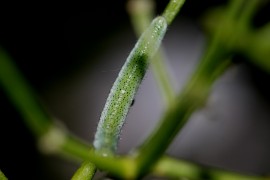
-littlehampton-12-june-(colin-knight)-1562588089.jpg)
-littlehampton-12-june-(colin-knight)-6214362960.jpg)
-littlehampton-12-june-(colin-knight)-6870326949.jpg)
-woods-mill-13-june-(colin-knight)-9215924991.jpg)
-woods-mill-13-june-(colin-knight)-8982933927.jpg)
-longfurlong-13-june-(colin-knight)-2108668605.jpg)


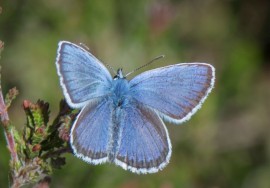
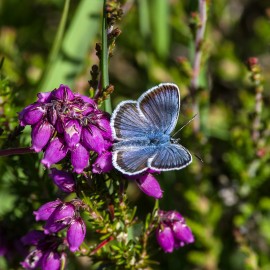
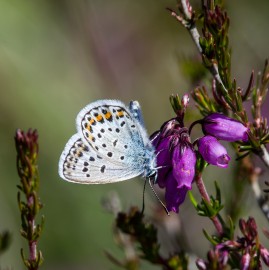
-7229621992.jpg)
-995028731.jpg)
-5266367522.jpg)
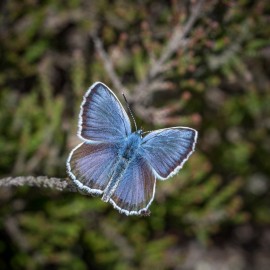
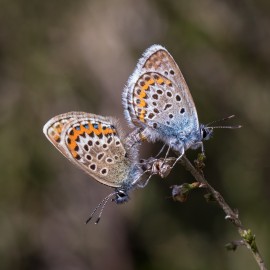
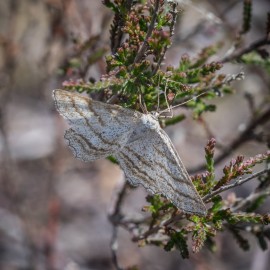
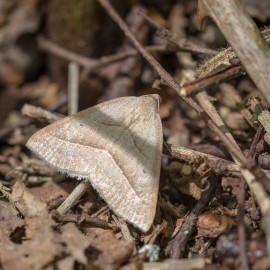
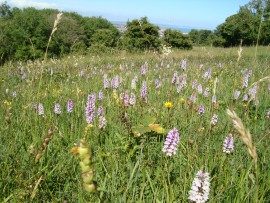
-300698615.jpg)
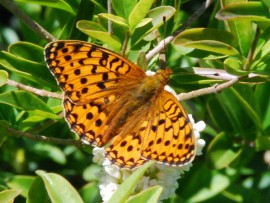
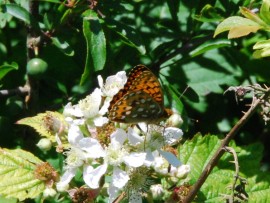
-3009299957.jpg)
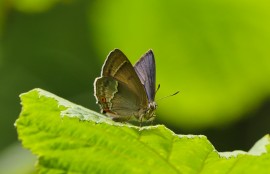
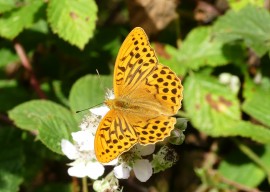
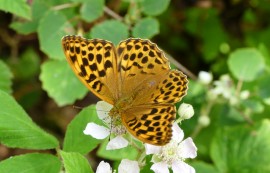
-7003350760.jpg)
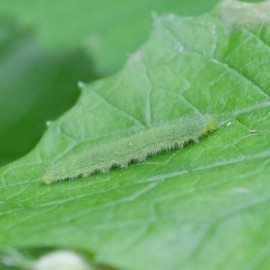

-8767275819.jpg)
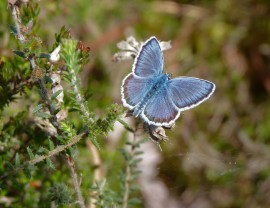
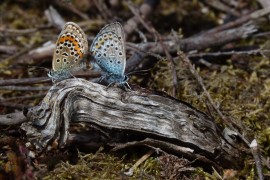
-5978246205.jpg)
-1583311790.jpg)
-7472041938.jpg)
-5584724792.jpg)
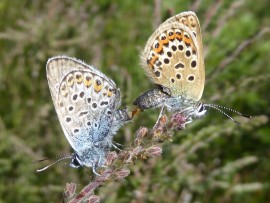
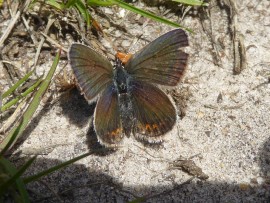
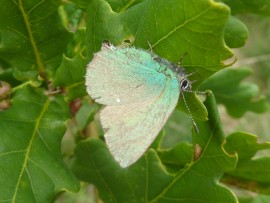
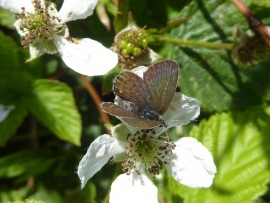
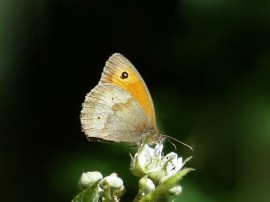
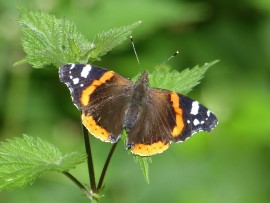
-5478209755.jpg)
-3801920562.jpg)
-7819946017.jpg)
-6703070369.jpg)
-96725928.jpg)
-4746123761.jpg)
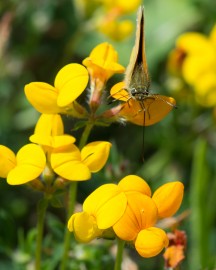
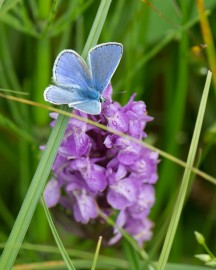
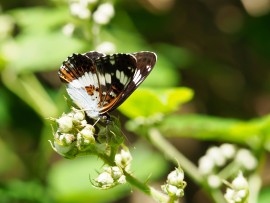
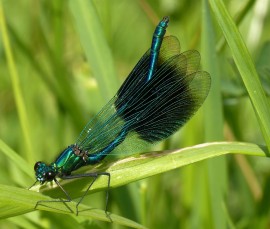
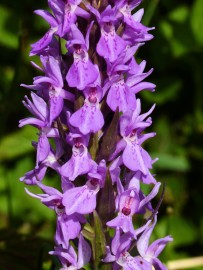
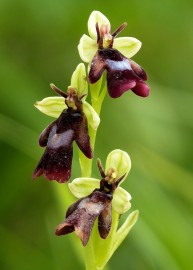

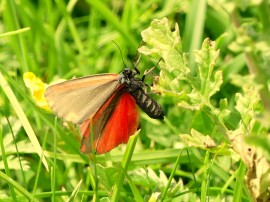
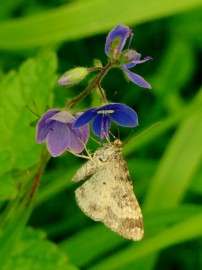
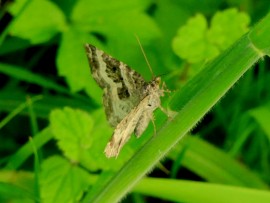
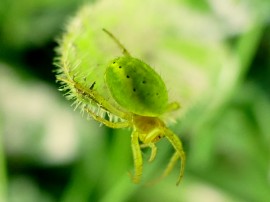
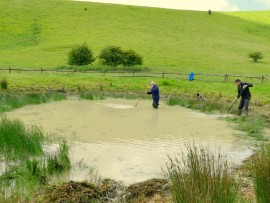
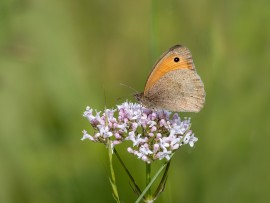
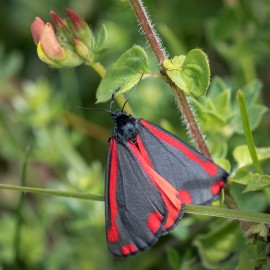
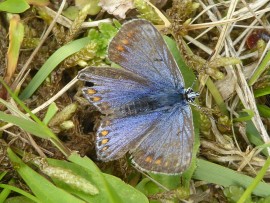
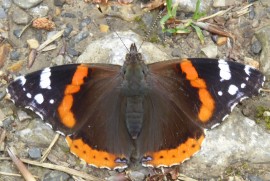
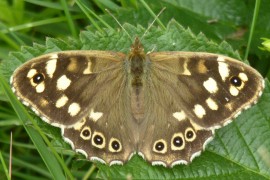

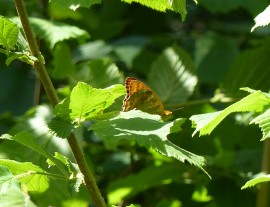
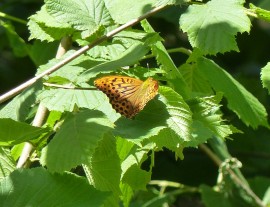
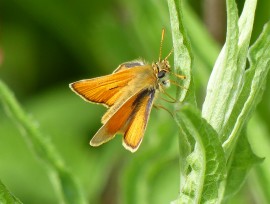
-kithurst-meadow-8-june-(colin-knight)-4830753160.jpg)
-kithurst-meadow-8-june-(colin-knight)-4316825601.jpg)
-kithurst-meadow-8-june-(colin-knight)-226358906.jpg)
-kithurst-meadow-8-june-(colin-knight)-4930029362.jpg)
-6717329495.jpg)
-littlehampton-8-june-(colin-knight)-2349066180.jpg)
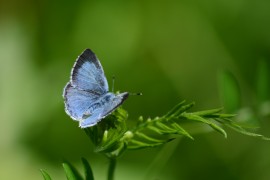
-8853899585.jpg)
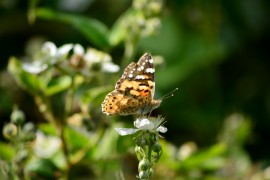
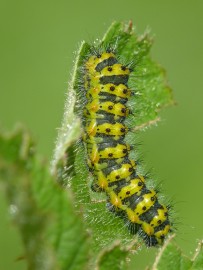
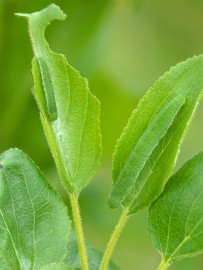
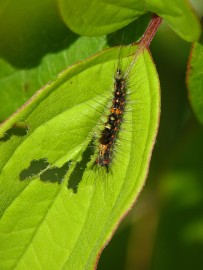
-houghton-forest-7-june-(colin-knight)-9468112965.jpg)
-houghton-forest-7-june-(colin-knight)-6785654155.jpg)
-houghton-forest-7-june-(colin-knight)-6338314563.jpg)
-houghton-forest-7-june-(colin-knight)-5197082529.jpg)
-houghton-forest-7-june-(colin-knight)-5244062682.jpg)
-7515582367.jpg)
-houghton-forest-7-june-(colin-knight)-7028711382.jpg)
-houghton-forest-7-june-(colin-knight)-1661763112.jpg)
-houghton-forest-7-june-(colin-knight)-6764126755.jpg)
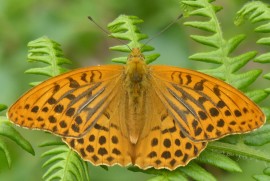
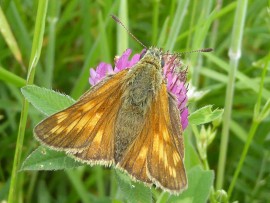
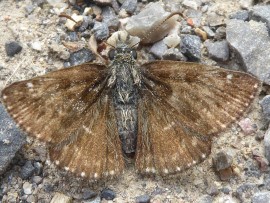
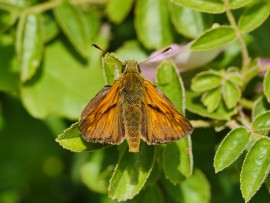
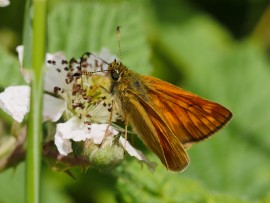
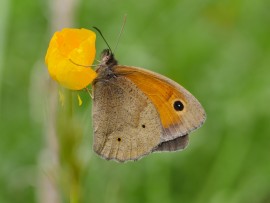
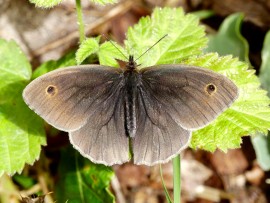
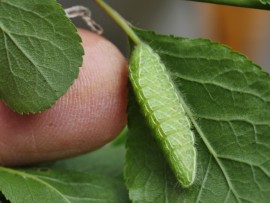
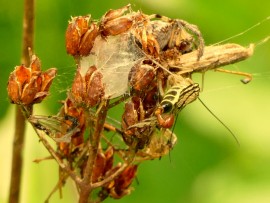
-kithurst-meadow-6-june-(colin-knight)-5369497705.jpg)
-kithurst-meadow-6-june-(colin-knight)-804310296.jpg)
-kithurst-meadow-6-june-(colin-knight)-638202535.jpg)
-7460089307.jpg)
-kithurst-meadow-6-june-(colin-knight)-9372910661.jpg)
-kithurst-meadow-6-june-(colin-knight)-8989716339.jpg)
-2-2578091500.jpg)
-8076965203.jpg)
-7395286732.jpg)
-8762442911.jpg)
-7938868072.jpg)
-6246721362.jpg)
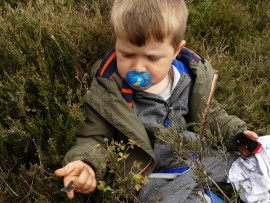

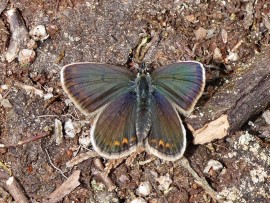
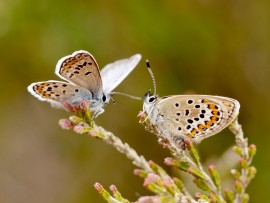
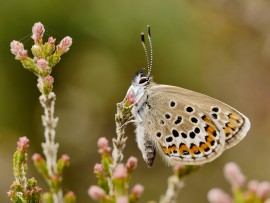
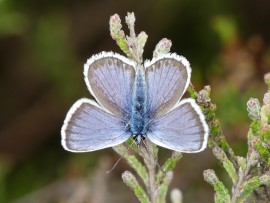
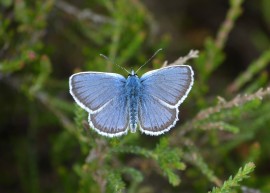
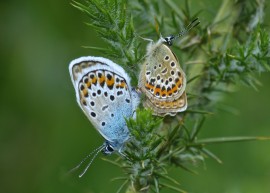
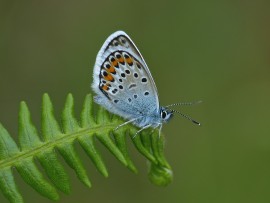
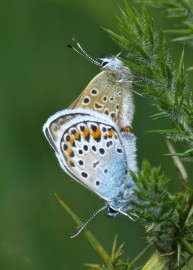
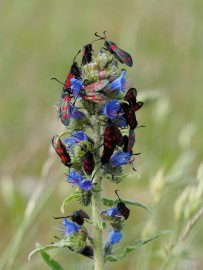
-1144743883.jpg)
-8113433285.jpg)
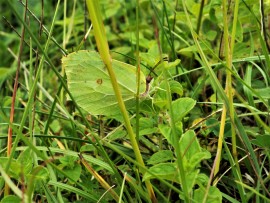
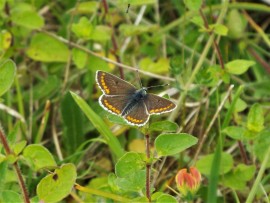
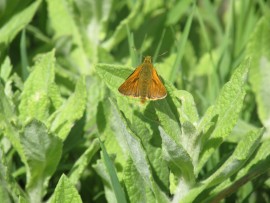
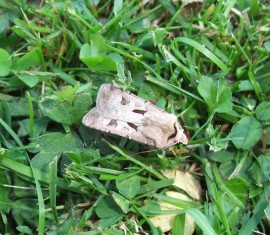
-826107412.jpg)
-3840648233.jpg)
-8105476428.jpg)
-2140138200.jpg)
-3024463737.jpg)
-6144549534.jpg)
-1159588433.jpg)
-littlehampton-2-june-(colin-knight)-2104885219.jpg)
-littlehampton-2-june-(colin-knight)-736338370.jpg)
-littlehampton-2-june-(colin-knight)-1729845819.jpg)
-littlehampton-2-june-(colin-knight)-2-8545083678.jpg)
-littlehampton-2-june-(colin-knight)-5874186097.jpg)

-mill-hill-3-june-(colin-knight)-4080411936.jpg)
-mill-hill-3-june-(colin-knight)-4451881540.jpg)
-mill-hill-3-june-(colin-knight)-6658827424.jpg)
-5355677623.jpg)
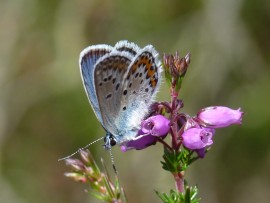
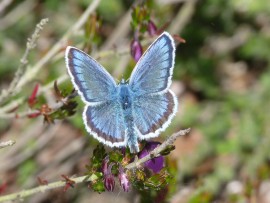

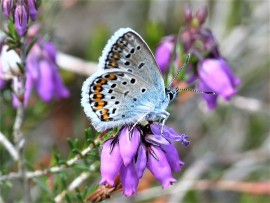
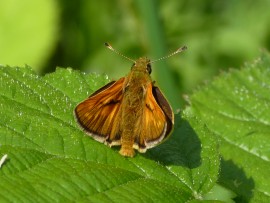
-littlehampton-31-may-(colin-knight)-1192860538.jpg)
-and-heart-and-dart-(agrotis-exclamationis)-littlehampton-31-may-(colin-knight)-5507854064.jpg)
-littlehampton-31-may-(colin-knight)-1879604887.jpg)
-iping-common-2-june-(colin-knight)-7065363437.jpg)
-iping-common-2-june-(colin-knight)-446571134.jpg)
-5428466675.jpg)
-2625890467.jpg)
-6556632304.jpg)
-803966620.jpg)
-7718928907.jpg)
-2-1280395067.jpg)
-3-9164070859.jpg)
-iping-common-2-june-(colin-knight)-9262888450.jpg)
-iping-common-2-june-(colin-knight)-8830653592.jpg)
-3409418929.jpg)
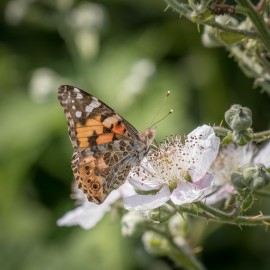

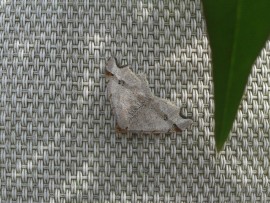
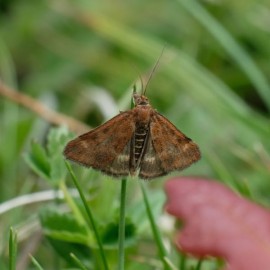
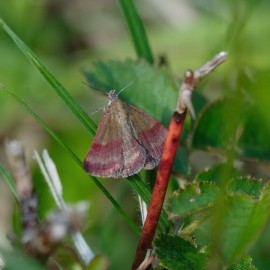

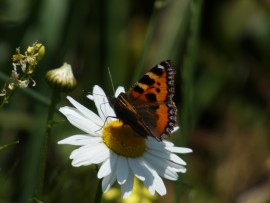

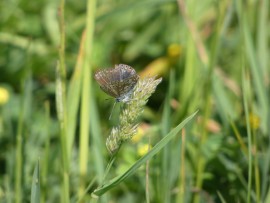
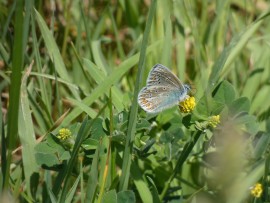
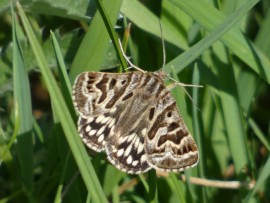
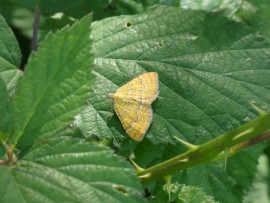
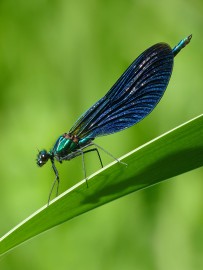
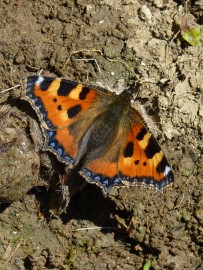
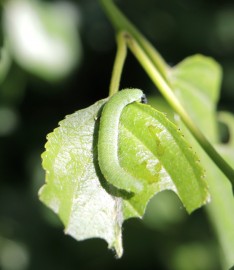
-8759337477.jpg)
-4156676754.jpg)
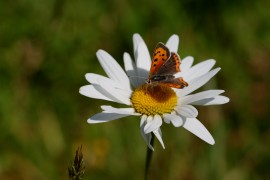
-7809873125.jpg)
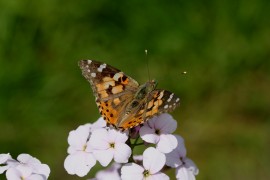
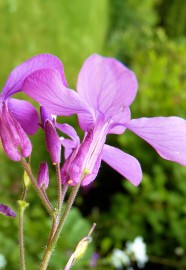
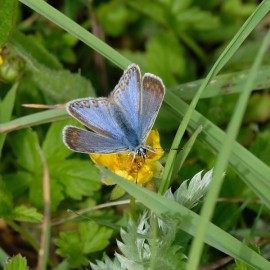
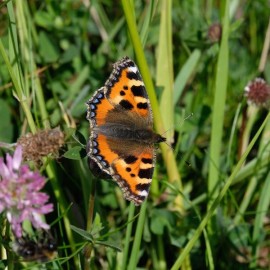
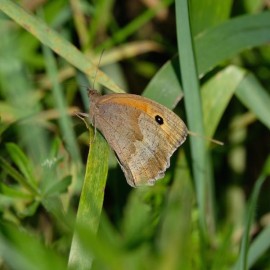
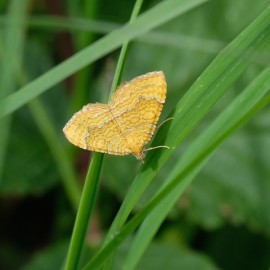
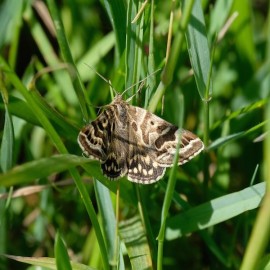
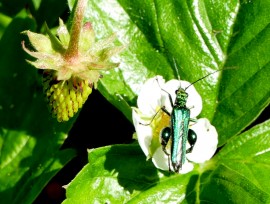
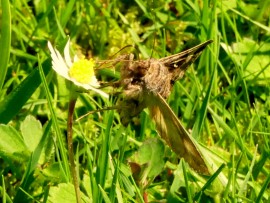

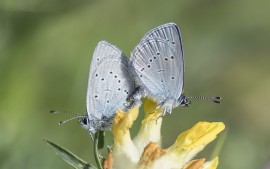
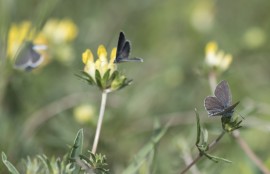
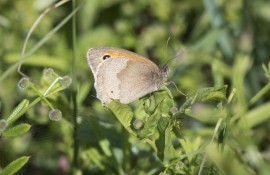
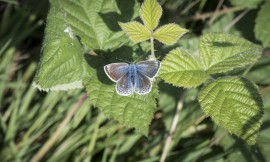
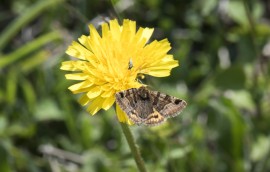
-kithurst-meadow-30-may-(colin-knight)-4708606423.jpg)
-on-alder-buckthorn-leaf-kithurst-meadow-30-may-(colin-knight)-304138180.jpg)
-9562223423.jpg)
-kithurst-meadow-30-may-(colin-knight)-145049584.jpg)
-littlehampton-30-may-(colin-knight)-9318814738.jpg)
-littlehampton-30-may-(colin-knight)-2799462927.jpg)
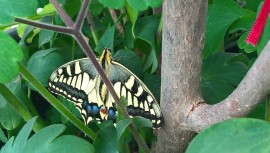
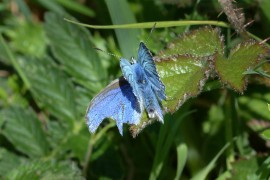
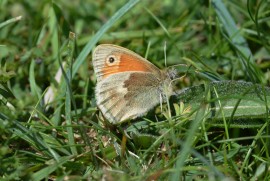
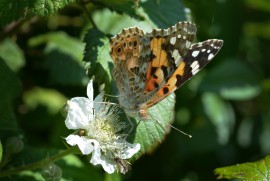
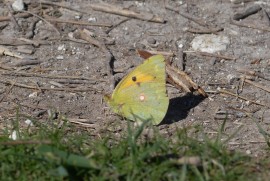

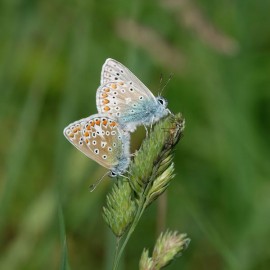
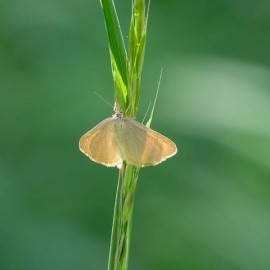

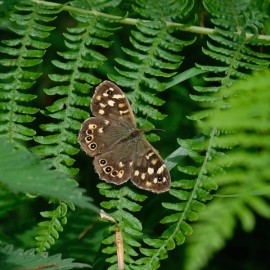
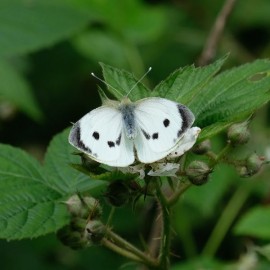
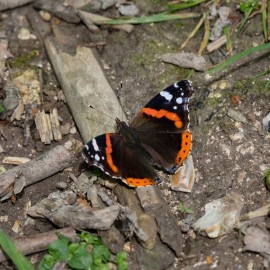
-mill-hill-28-may-(colin-knight)-4660044605.jpg)
-mill-hill-28-may-(colin-knight)-3078231280.jpg)
-mill-hill-28-may-(colin-knight)-5642429175.jpg)
-mill-hill-28-may-(colin-knight)-829778946.jpg)
-mill-hill-28-may-(colin-knight)-7555924756.jpg)
-mill-hill-28-may-(colin-knight)-9813155340.jpg)
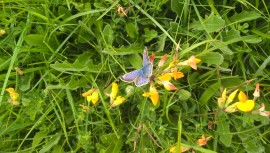
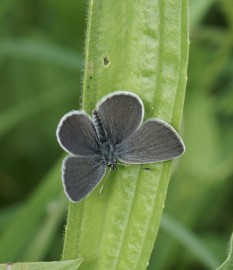
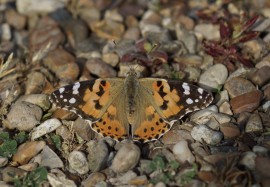
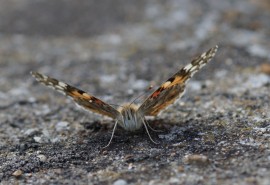
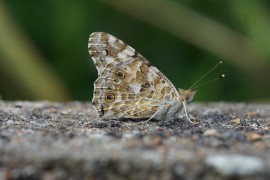
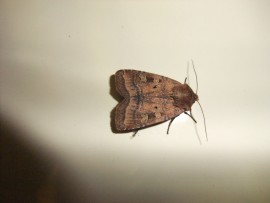
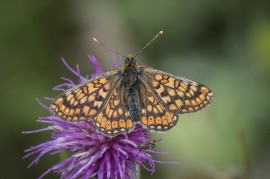
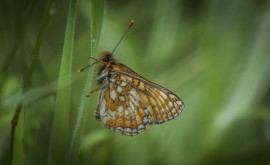

-9836995648.jpg)
-4632798191.jpg)
-8086415124.jpg)
-2423564419.jpg)
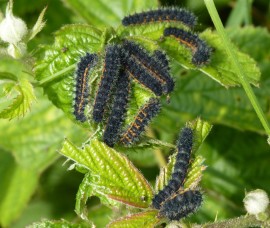
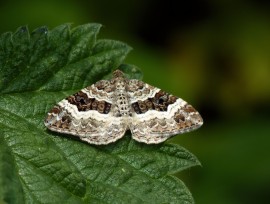

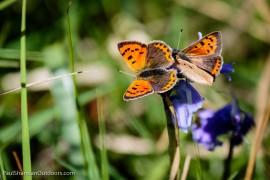
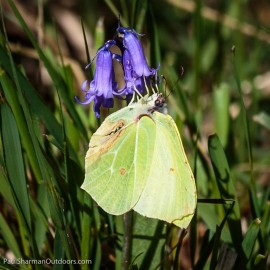
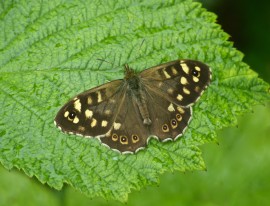
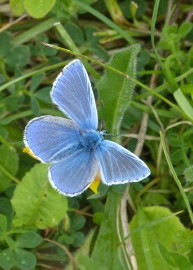
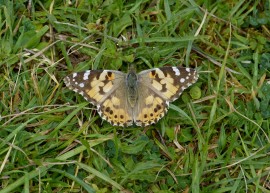
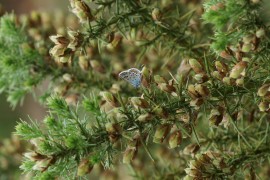
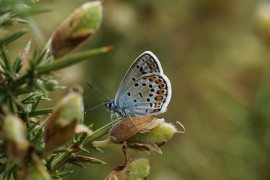
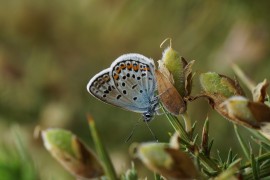

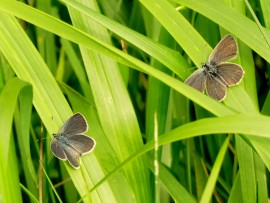
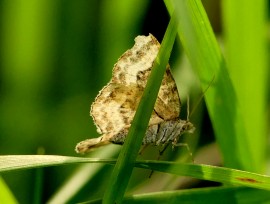
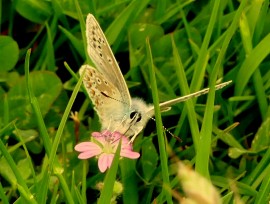
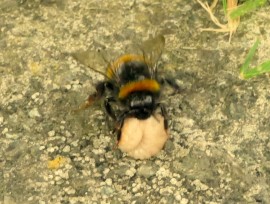
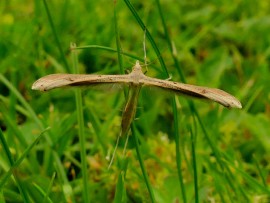
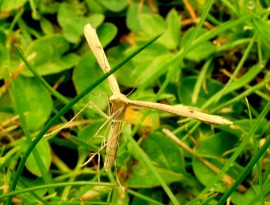
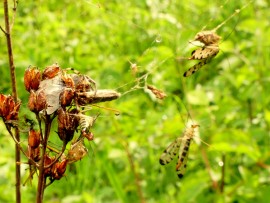
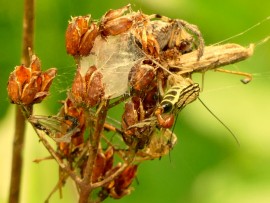
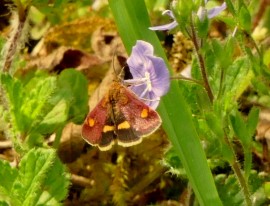
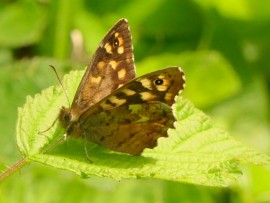
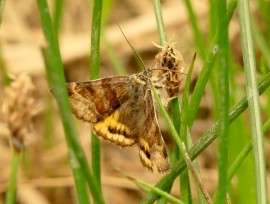
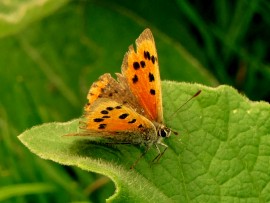
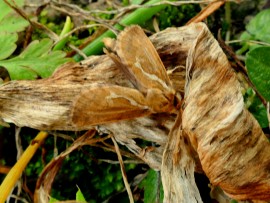
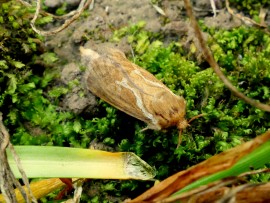

-2607777435.jpg)
-970638766.jpg)
-8435578984.jpg)
-8288431800.jpg)
-7598933451.jpg)
-3366994461.jpg)
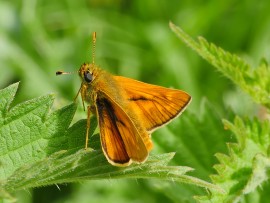
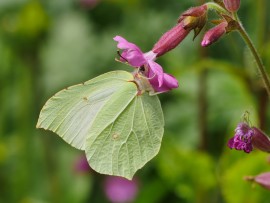
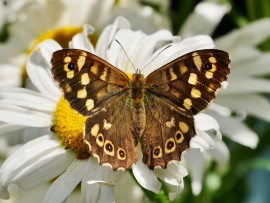
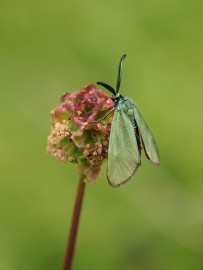
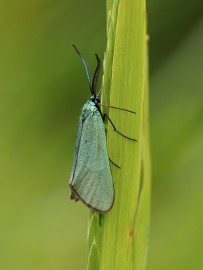
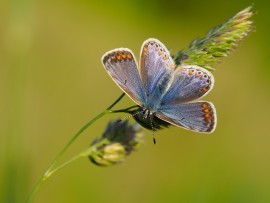
-littlehampton-27-may-(colin-knight)-8265251289.jpg)
-littlehampton-27-may-(colin-knight)-1853980072.jpg)
-littlehampton-27-may-(colin-knight)-977301993.jpg)
-littlehampton-27-may-(colin-knight)-5806771260.jpg)
-southwater-woods-25-may-(colin-knight)-1678384421.jpg)
-southwater-woods-25-may-(colin-knight)-5250744572.jpg)
-southwater-woods-25-may-(colin-knight)-1499519199.jpg)
-southwater-woods-25-may-(colin-knight)-8765676449.jpg)
-southwater-woods-25-may-(colin-knight)-6240197825.jpg)
-southwater-woods-25-may-(colin-knight)-3420914253.jpg)
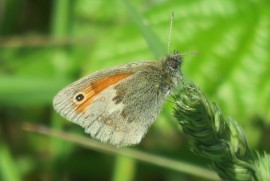
-1098928274.jpg)
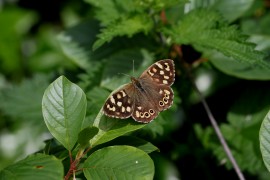
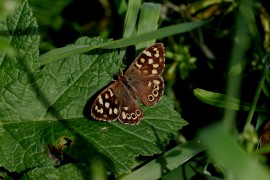
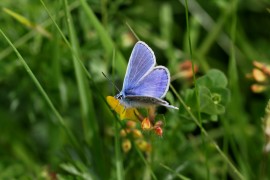
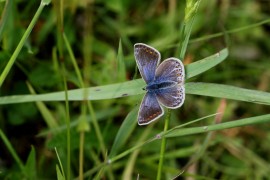
-2924413117.jpg)
-5776319960.jpg)
-6194484266.jpg)
-410661641.jpg)
-7469585333.jpg)
-3962868060.jpg)
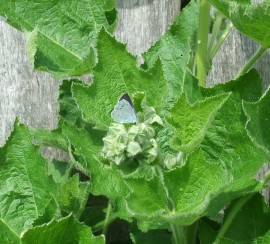

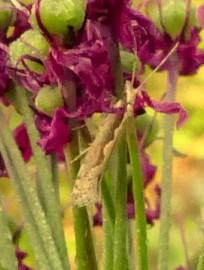
-6218107957.jpg)
-237462660.jpg)
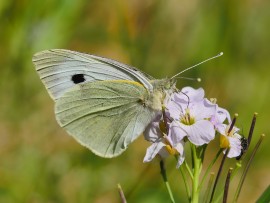
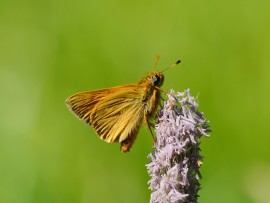
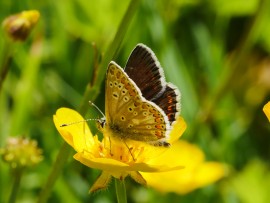
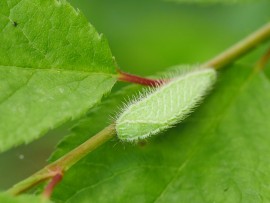
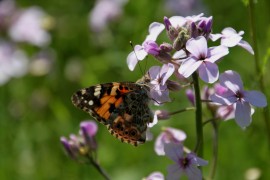
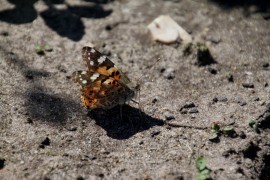
-2823890368.jpg)
-5793593856.jpg)
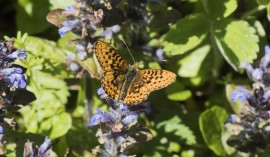

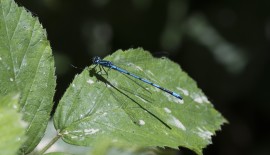
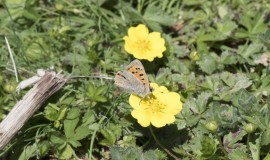
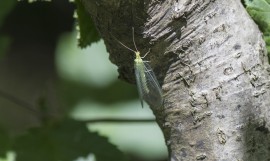
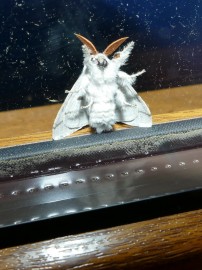
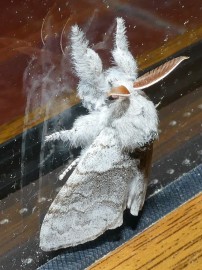
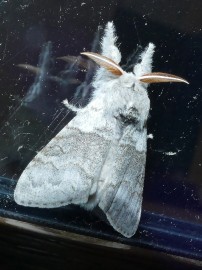
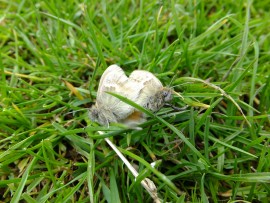
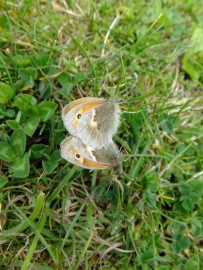
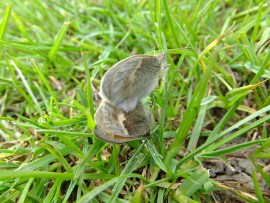


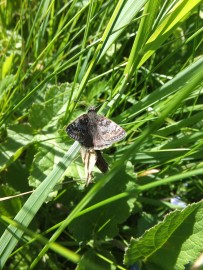
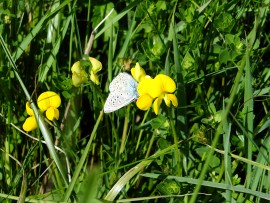
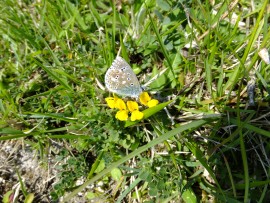
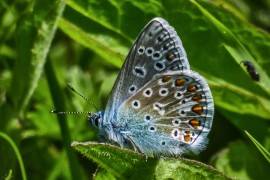
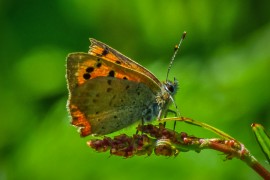
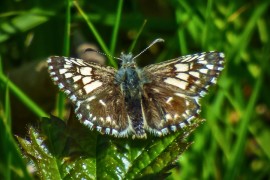
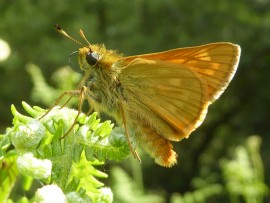
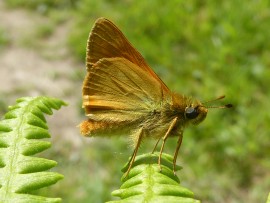
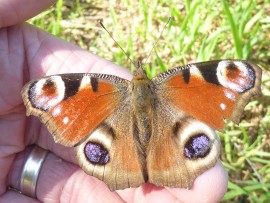
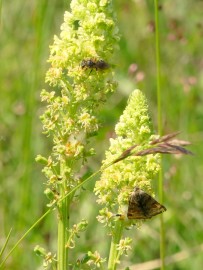
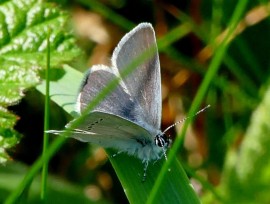
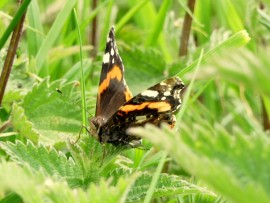

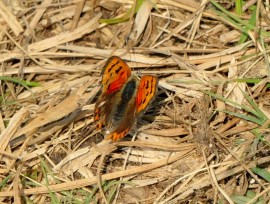
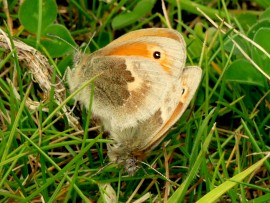
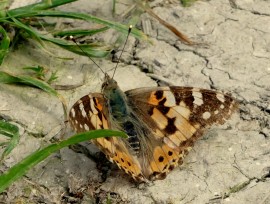
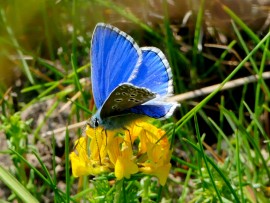
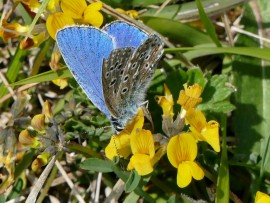
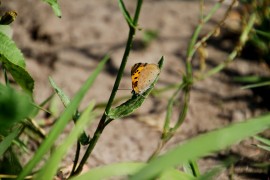
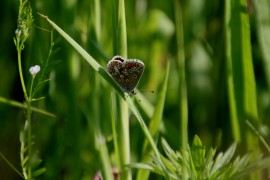
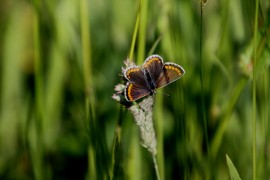
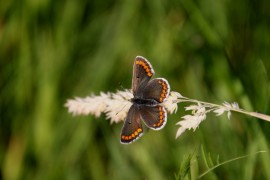
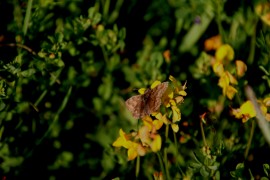
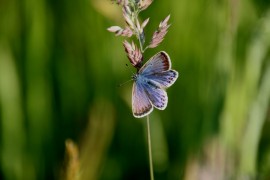
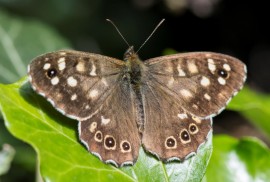
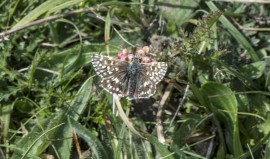
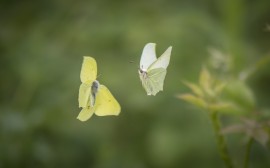
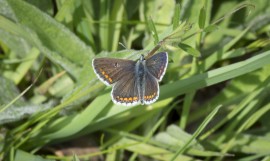
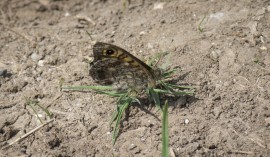
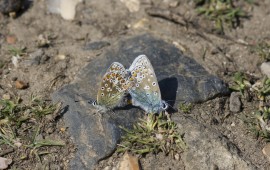
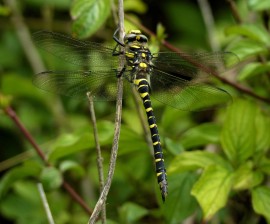

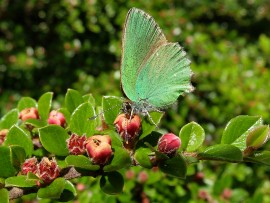
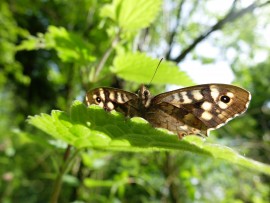
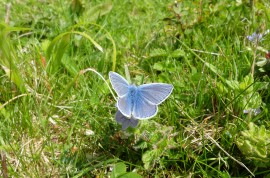
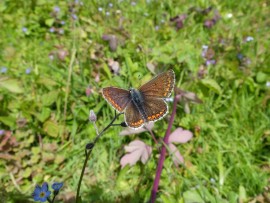
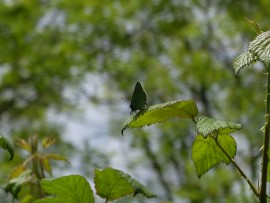

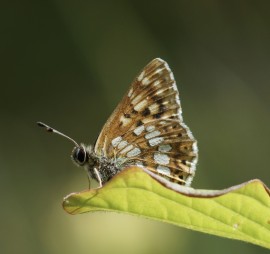
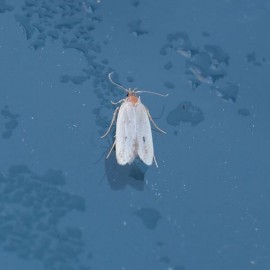
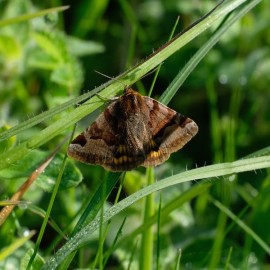
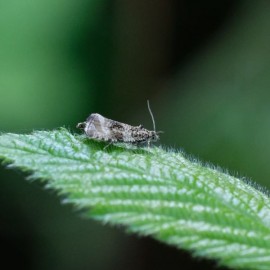
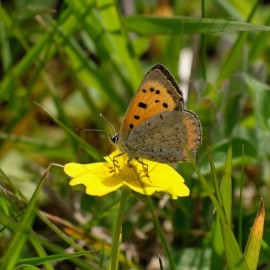
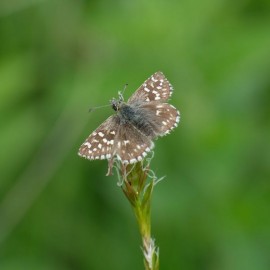
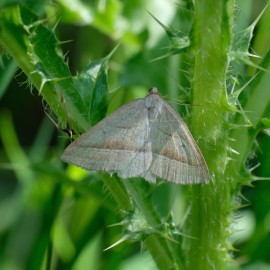

-8847379526.jpg)
-8590348153.jpg)
-worms-wood-23-may-(colin-knight)-7155434023.jpg)
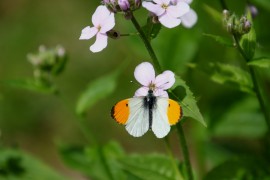
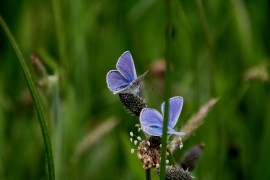
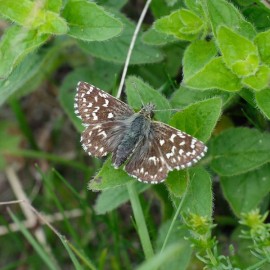
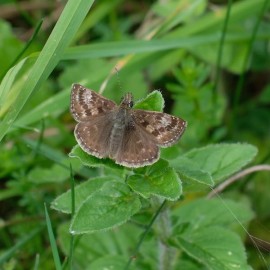
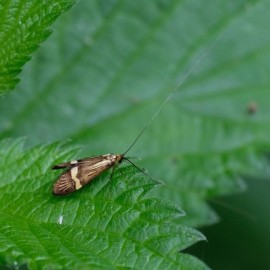
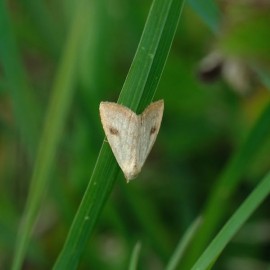
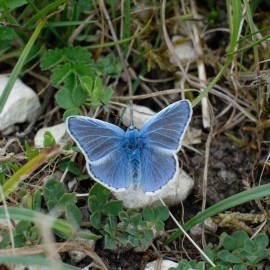
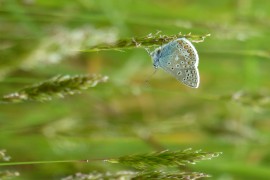
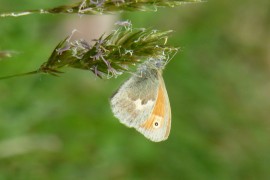

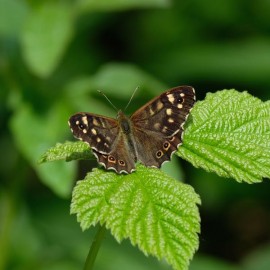
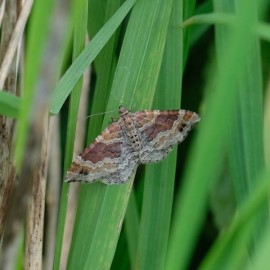
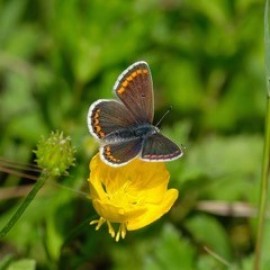

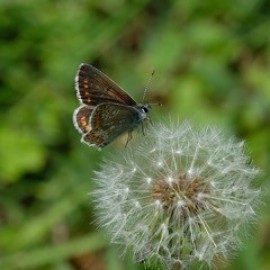
-7067383355.jpg)
-1923484075.jpg)
-3641562559.jpg)
-fairmile-bottom-22-april-(colin-knight)-7142512295.jpg)
-fairmile-bottom-22-april-(colin-knight)-8612815854.jpg)
-fairmile-bottom-22-april-(colin-knight)-660756081.jpg)
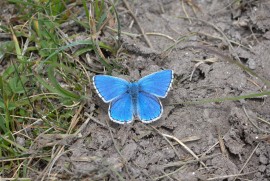
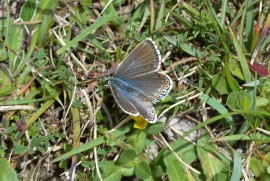
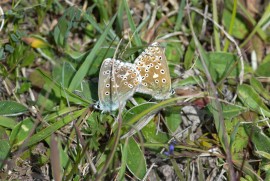
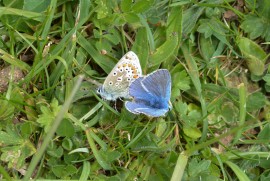
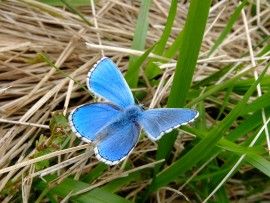
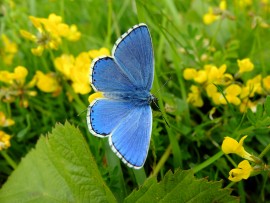
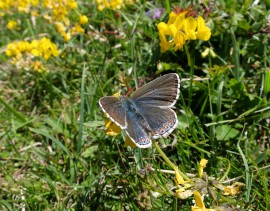
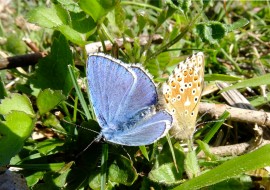
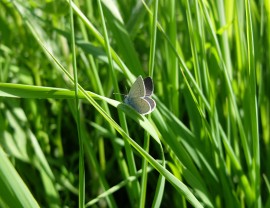
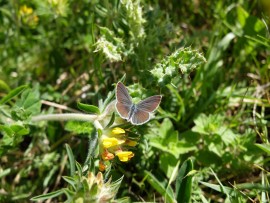
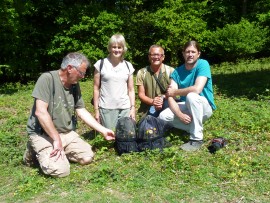
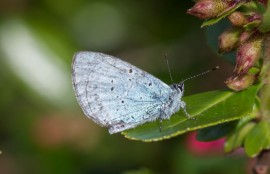
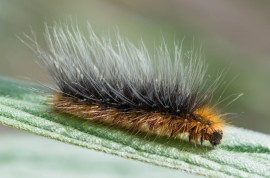
-woods-mill-20-may-(colin-knight)-4179027075.jpg)
-7323565050.jpg)
-4400824513.jpg)
-woods-mill-20-may-(colin-knight)-7275551571.jpg)
-5843296386.jpg)
-7323014480.jpg)
-9961582762.jpg)
-9654432842.jpg)
-7797669149.jpg)
-7358221188.jpg)
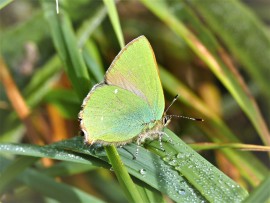
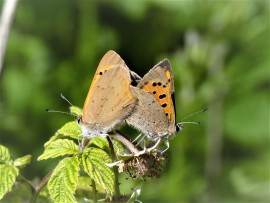
-2-8039744184.jpg)
-5790880066.jpg)
-8213237258.jpg)
-9533012509.jpg)
-5868398626.jpg)
-mill-hill-20-may-(colin-knight)-4673454305.jpg)
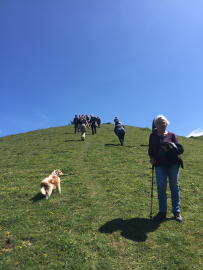
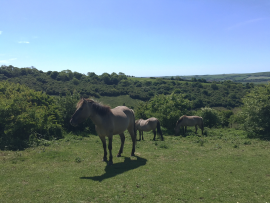
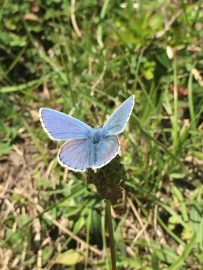
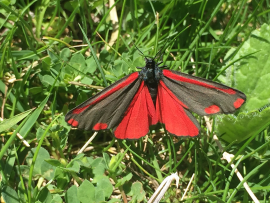
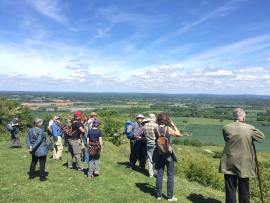
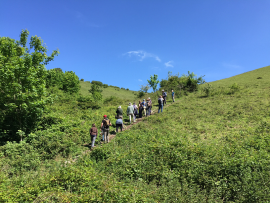
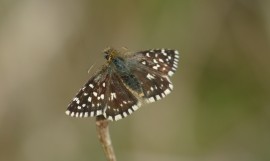
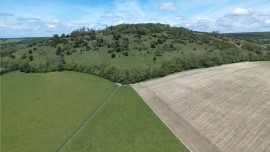

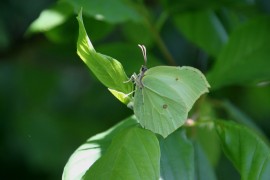
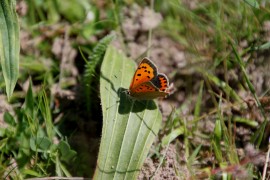

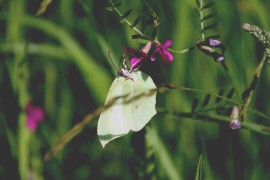

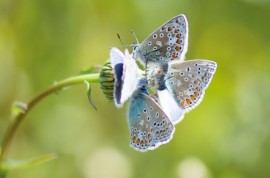
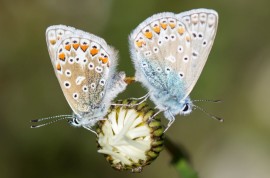
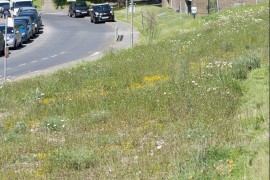
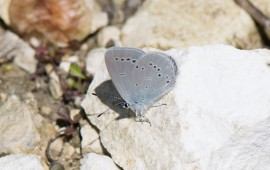
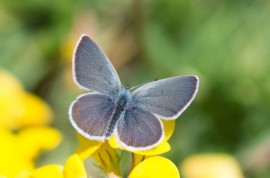
-159326056.jpg)
-1453684512.jpg)
-4682737584.jpg)
-9218994393.jpg)
-5099994940.jpg)
-9019058491.jpg)


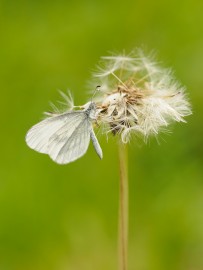
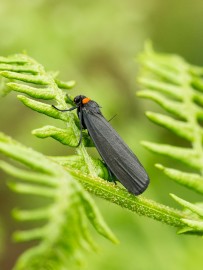
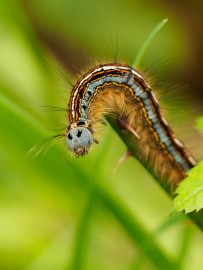
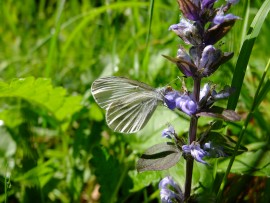
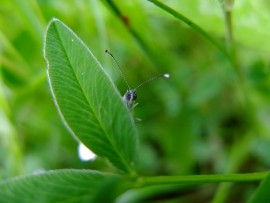

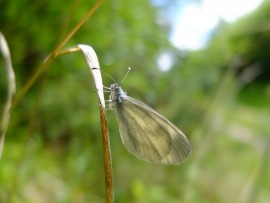
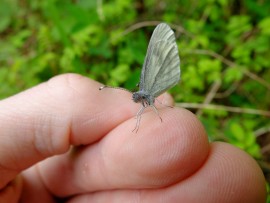
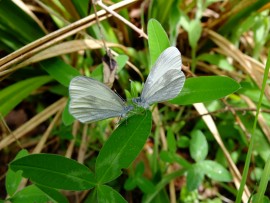
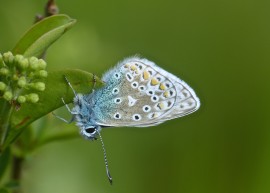

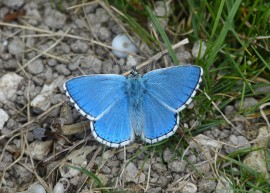
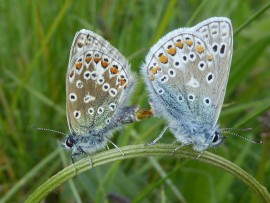
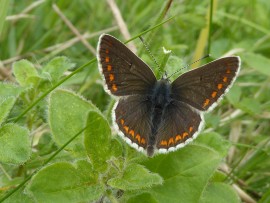
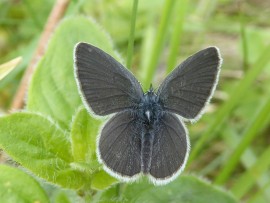
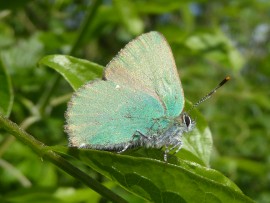
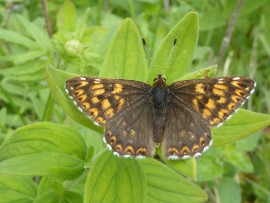
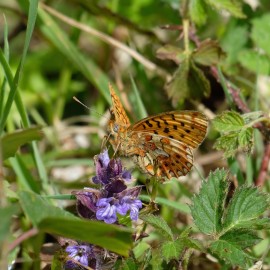
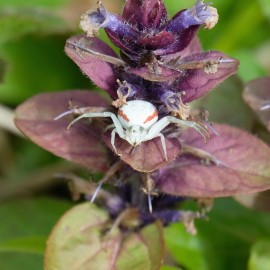
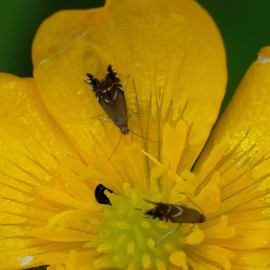
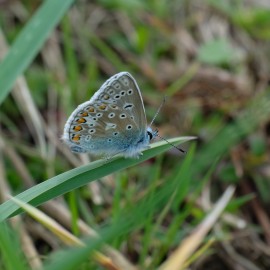
-3150851158.jpg)
-9456274863.jpg)
-7613851875.jpg)
-79739573.jpg)
-6359163396.jpg)
-1703916448.jpg)
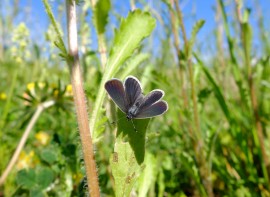
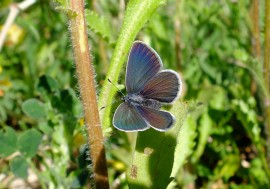

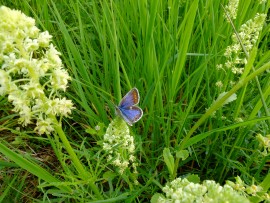

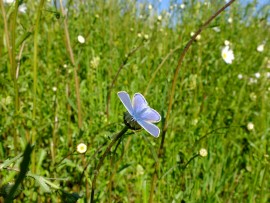
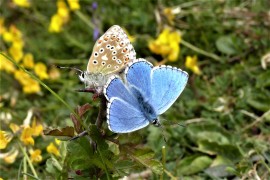
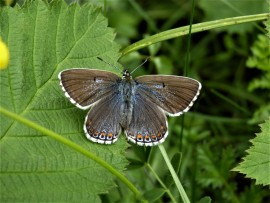
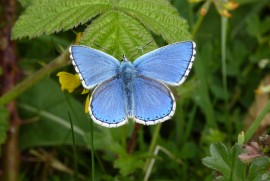
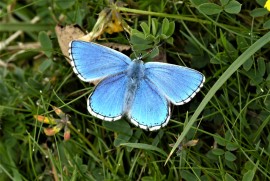
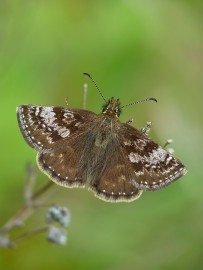
-498735127.jpg)
-2670956491.jpg)
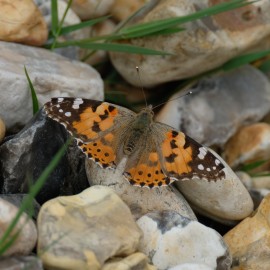
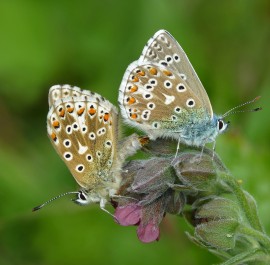
-9191715419.jpg)
-mill-hill-16-april-(colin-knight)-9582123649.jpg)
-kithurst-meadow-16-april-(colin-knight)-184372127.jpg)
-kithurst-meadow-16-april-(colin-knight)-7939268057.jpg)
-littlehampton-15-april-(colin-knight)-8173612100.jpg)
-littlehampton-15-april-(colin-knight)-4227390196.jpg)
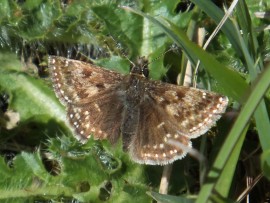
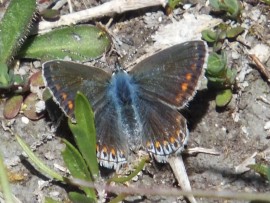
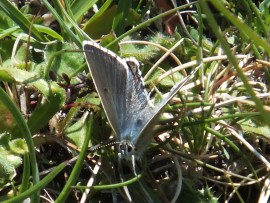
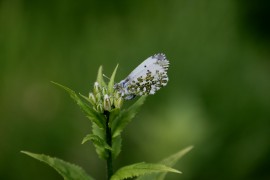
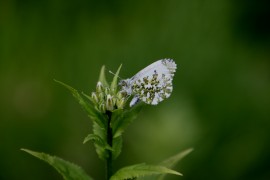
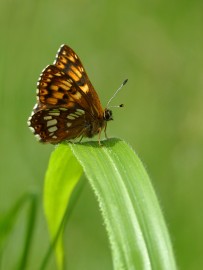
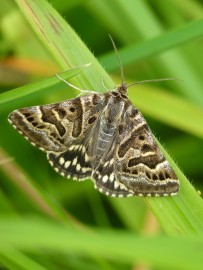
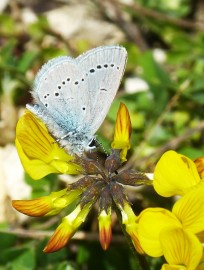
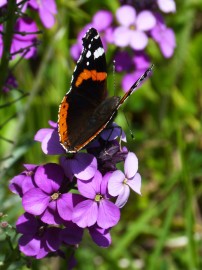
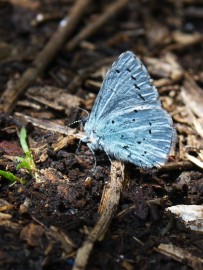
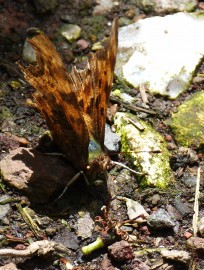
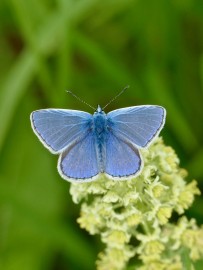
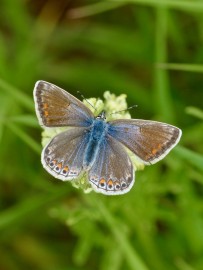
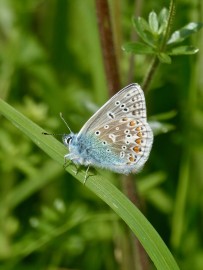
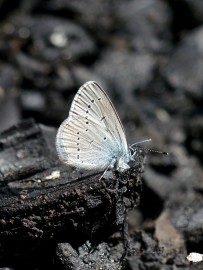
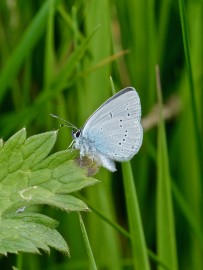
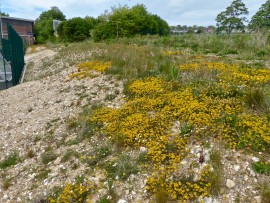
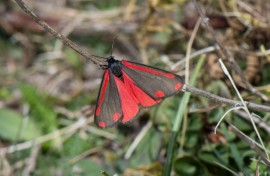
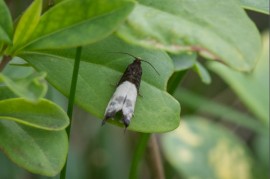
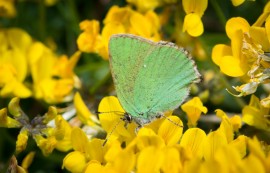
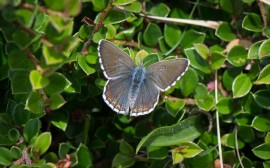
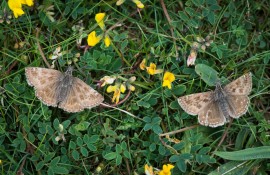

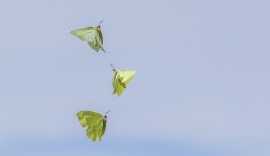
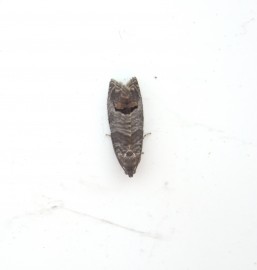
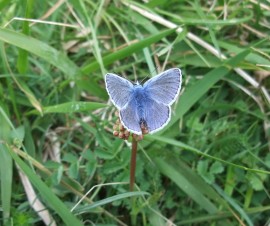
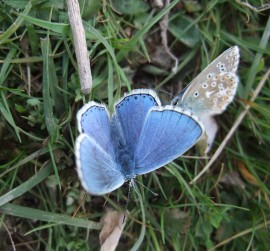
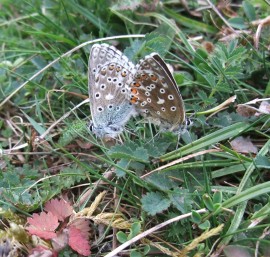
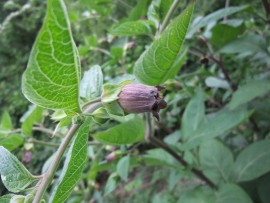
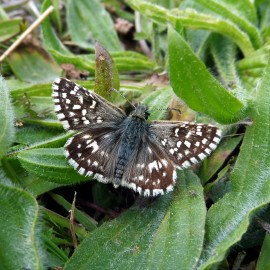
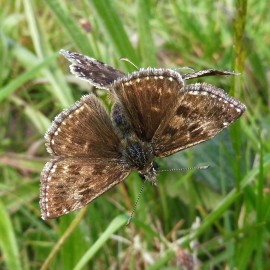
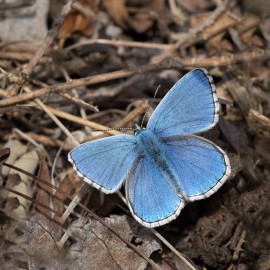
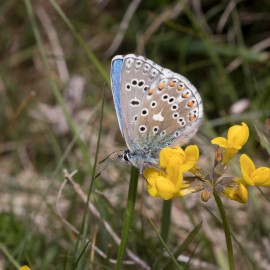

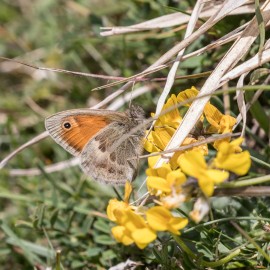
-4950087643.jpg)
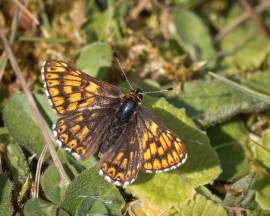
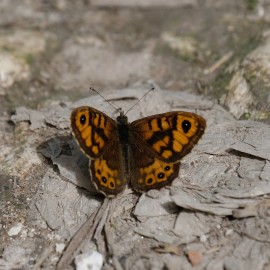
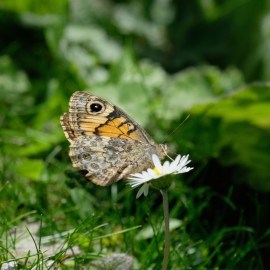
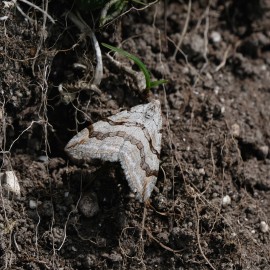
-7977967862.jpg)
-8730645142.jpg)
-8975294488.jpg)
-6454562372.jpg)
-6056311721.jpg)
-7431258279.jpg)
-276279235.jpg)
-kithurst-meadow-13-april-(colin-knight)-7971907206.jpg)
-2019466441.jpg)
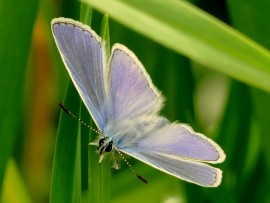
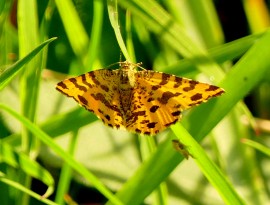
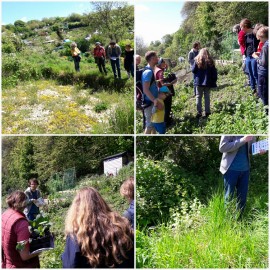
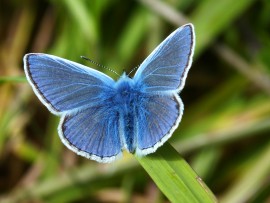
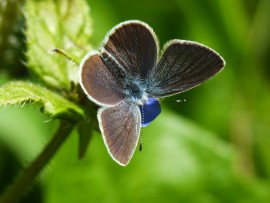

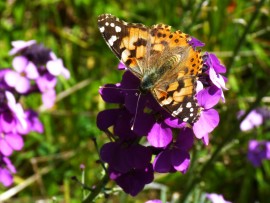
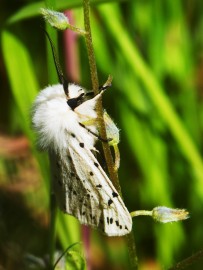
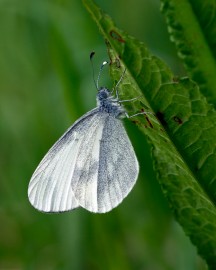
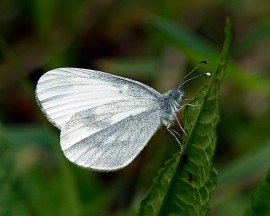
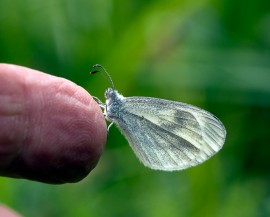
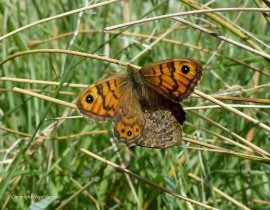
-rewell-wood-14.5.17-5372281605.jpg)
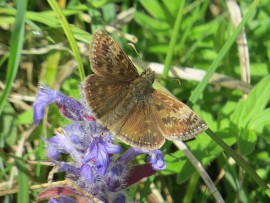
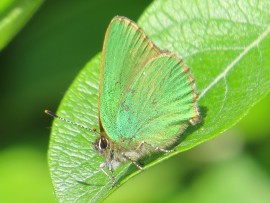
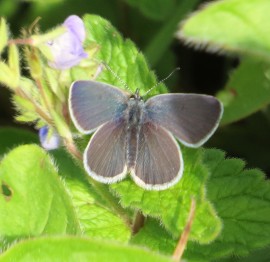
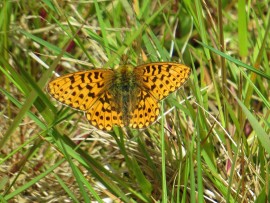
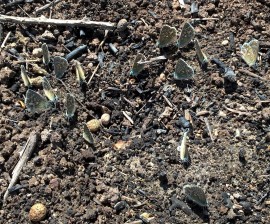
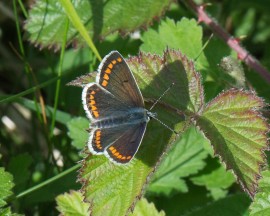
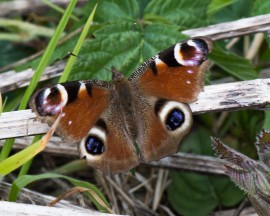
-3690017960.jpg)
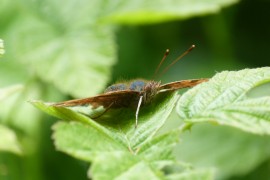
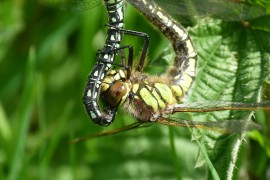
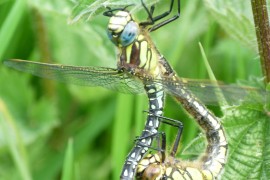
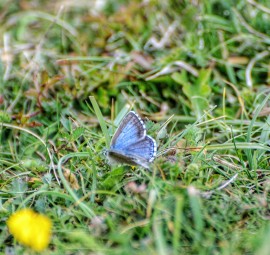
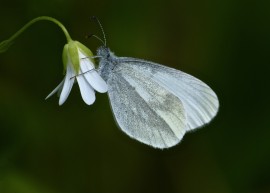
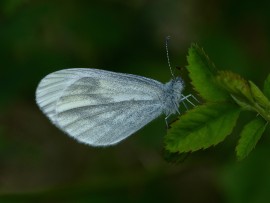


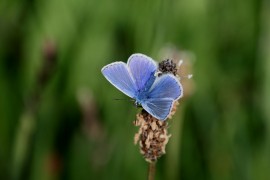
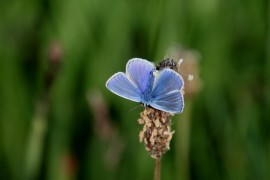
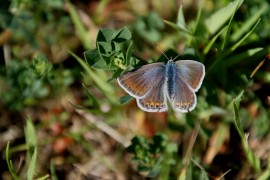
-5464754491.jpg)
-2389860926.jpg)
-4578542481.jpg)
-6201712433.jpg)
-7251092321.jpg)
-3770615002.jpg)
-9485938819.jpg)
-3478113114.jpg)
-9149539321.jpg)
-8759233774.jpg)
-3991680359.jpg)
-kithurst-meadow-12-may-(colin-knight)-1007302030.jpg)
-274587497.jpg)
3-8066334975.jpg)
-kithurst-meadow-12-may-(colin-knight)-2991658370.jpg)
-kithurst-meadow-11-may-(colin-knight)-6497938907.jpg)
-kithurst-meadow-12-may-(colin-knight)-836805398.jpg)
-kithurst-meadow-11-may-(colin-knight)-6889801742.jpg)
-kithurst-meadow-12-may-(colin-knight)-5521245049.jpg)
-monkmead-wood-11-may-(colin-knight)-9111023140.jpg)
-monkmead-wood-11-may-(colin-knight)-2014239756.jpg)
2-8017272953.jpg)
-4366609486.jpg)
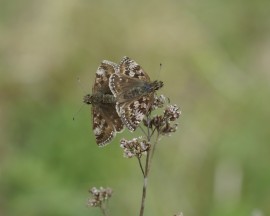
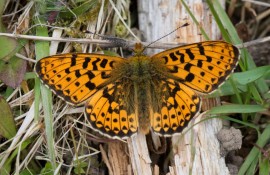
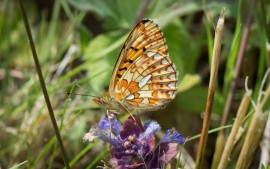

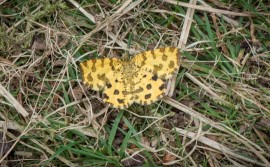
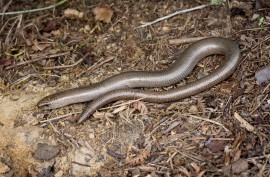

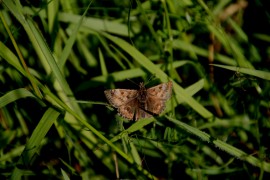
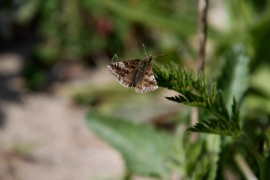
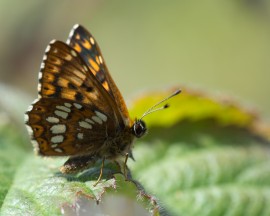
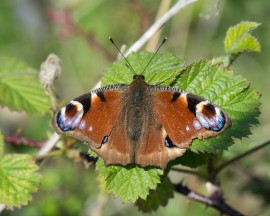
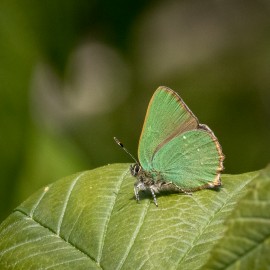
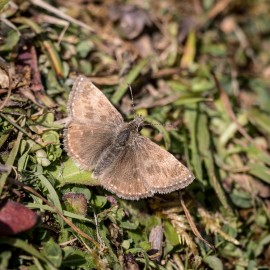
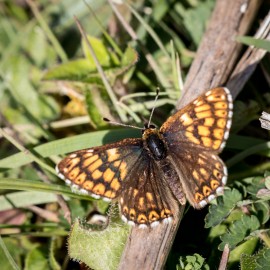
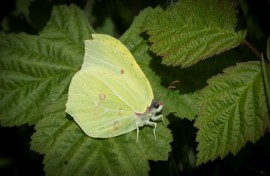
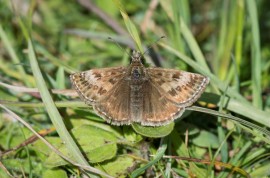
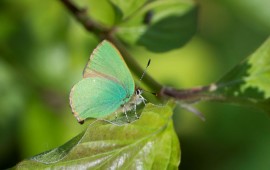
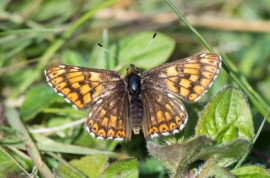
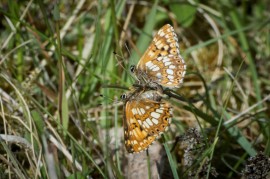
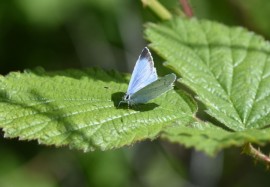

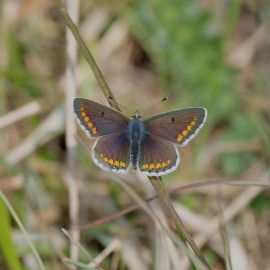

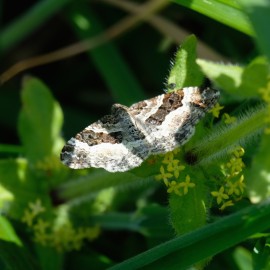
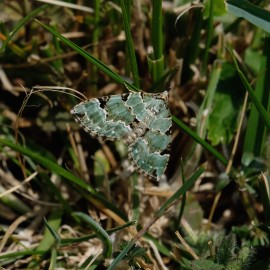
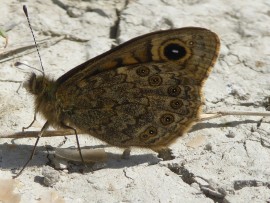
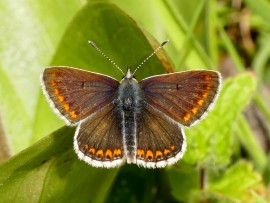
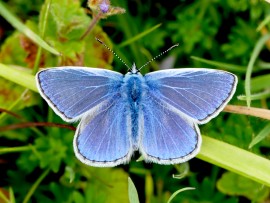
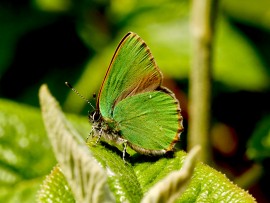
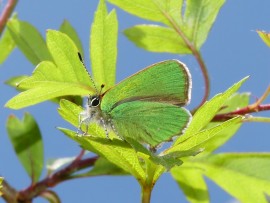
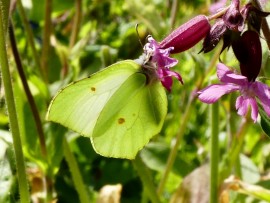
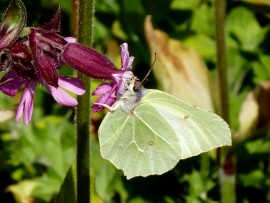
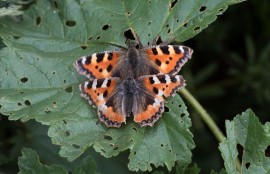
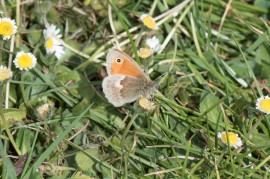
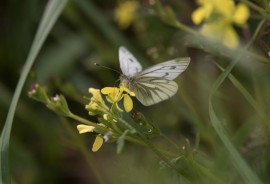
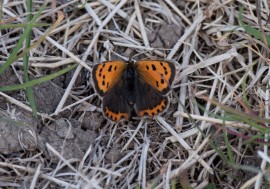
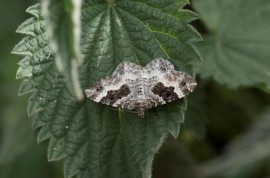
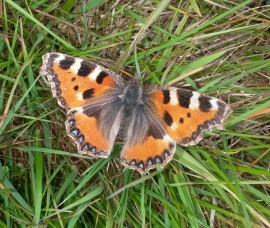
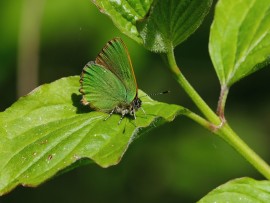
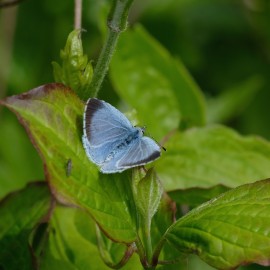

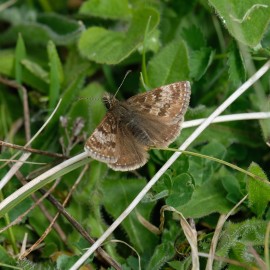
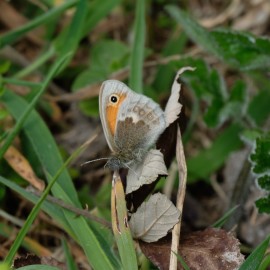
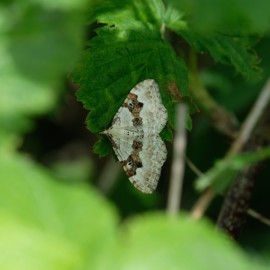
-woods-mill-8-may-(colin-knight)-7901098760.jpg)
-woods-mill-8-may-(colin-knight)-9460825449.jpg)
-woods-mill-8-may-(colin-knight)-8202994097.jpg)
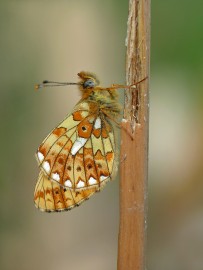
-3570932410.jpg)
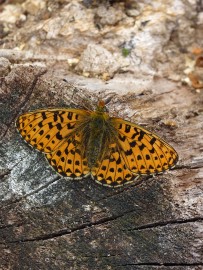
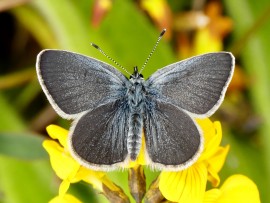
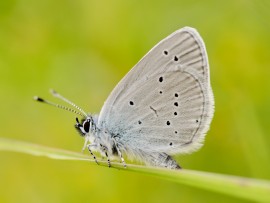
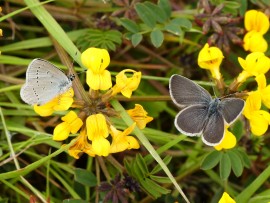
-7466591992.jpg)
-1011063382.jpg)
-1048852149.jpg)
-6392040583.jpg)
-463800486.jpg)
-2129816445.jpg)

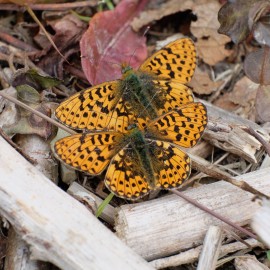
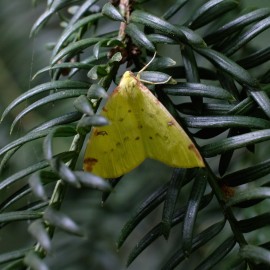

-7026707208.jpg)
-310396356.jpg)
-1299976105.jpg)
-littlehampton-7-may-(colin-knight)-5158159094.jpg)
-littlehampton-7-may-(colin-knight)-7589440927.jpg)
-littlehampton-7-may-(colin-knight)-8280641692.jpg)
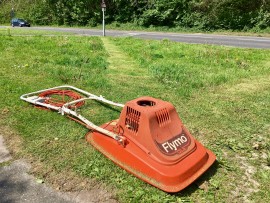
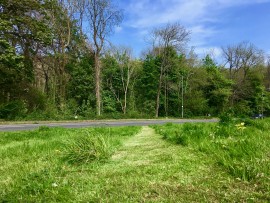
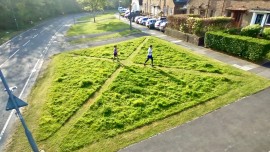

-6829913370.jpg)
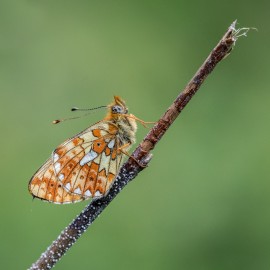
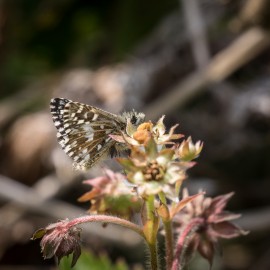

-416885334.jpg)
-8824402657.jpg)
-8513296563.jpg)
-5326196914.jpg)
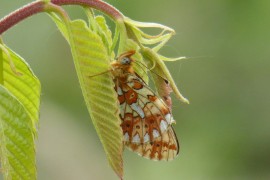
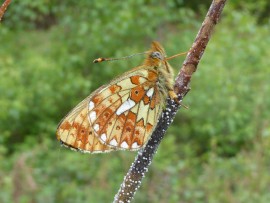
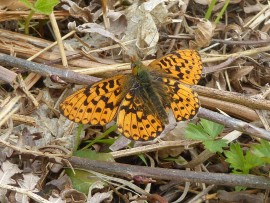
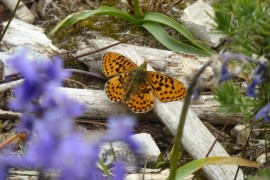
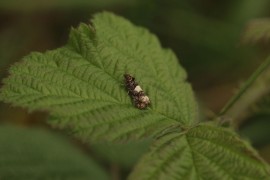
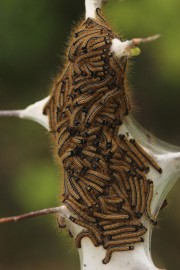
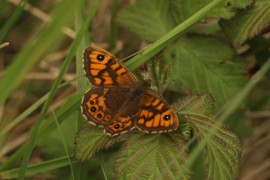
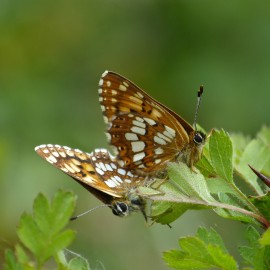
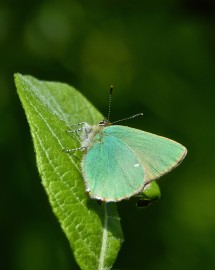
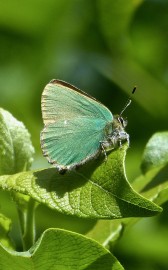
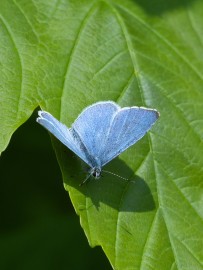
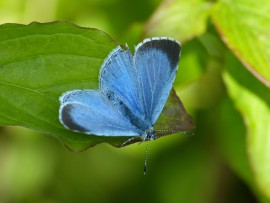
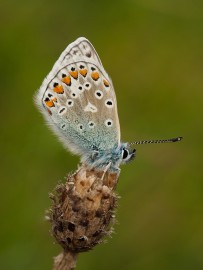
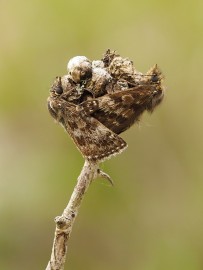
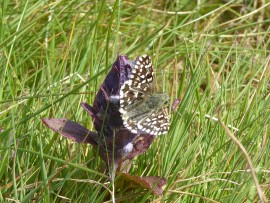

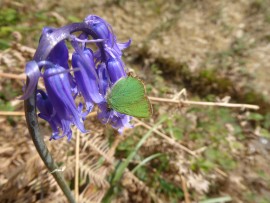
-4227585000.jpg)
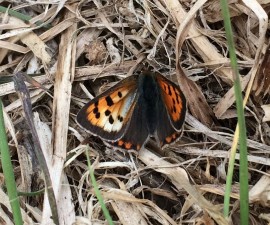
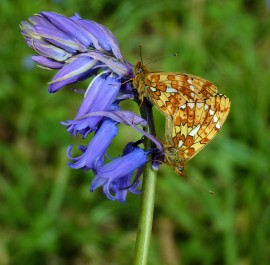

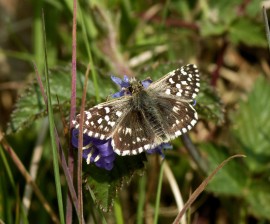

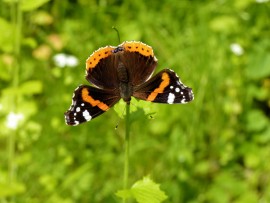
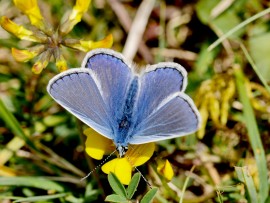
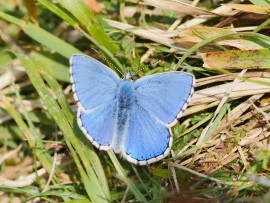
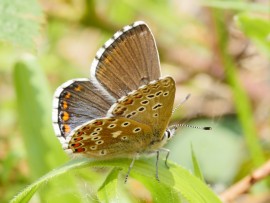
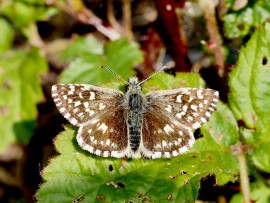
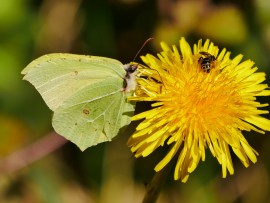
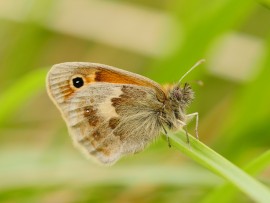
-6447303197.jpg)
-6810950781.jpg)
-6234101699.jpg)
-172673808.jpg)
-5358065715.jpg)
-437789834.jpg)
-7734341728.jpg)
-9886264526.jpg)
-5874487748.jpg)
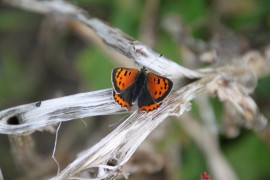
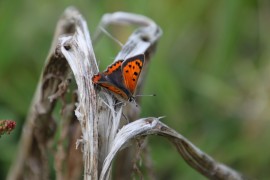
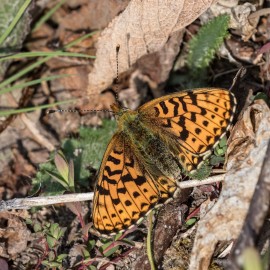
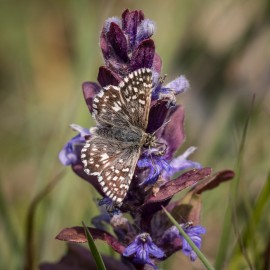
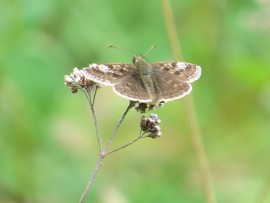

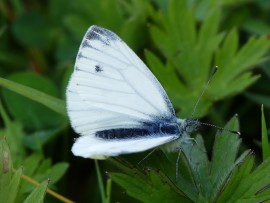
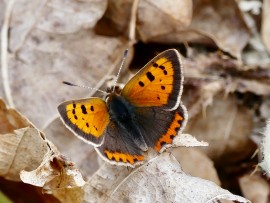
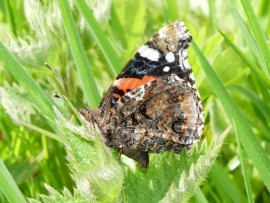
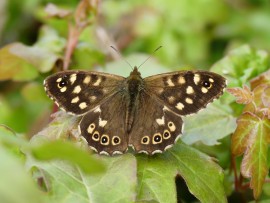
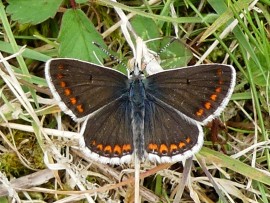
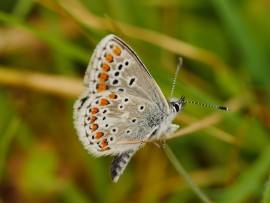
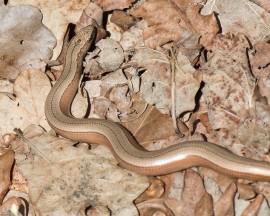
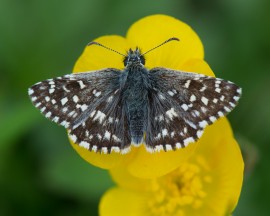
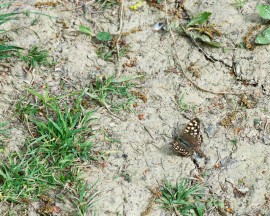
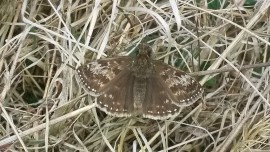

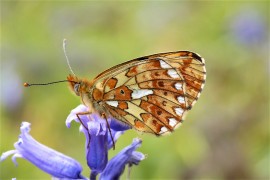
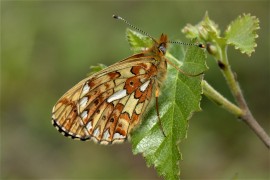
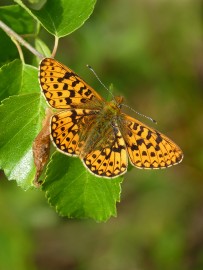
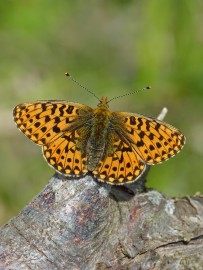
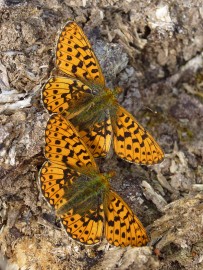
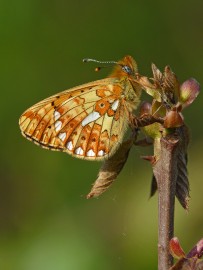
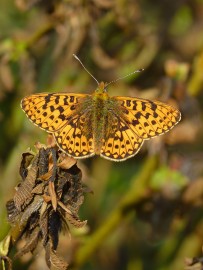
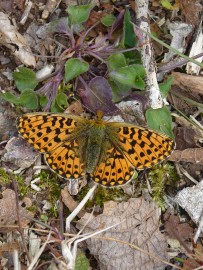
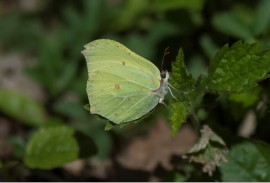
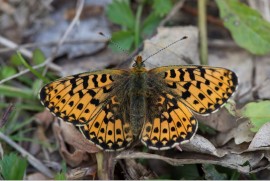
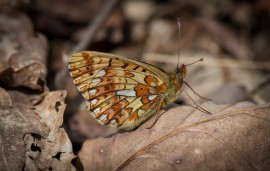
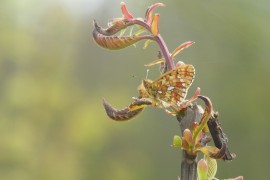
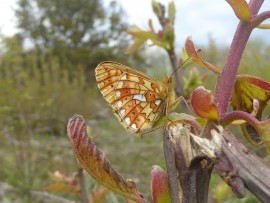
-8457593326.jpg)
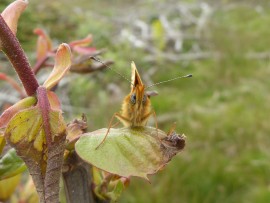
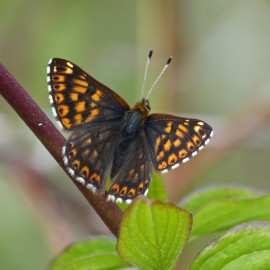
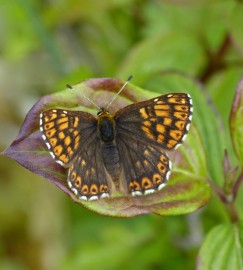
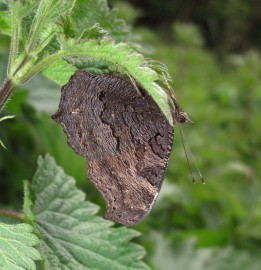

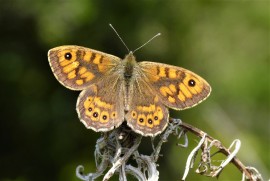
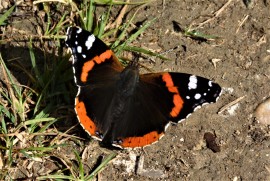

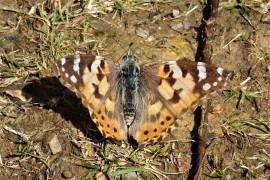
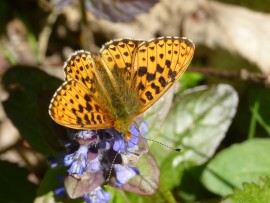
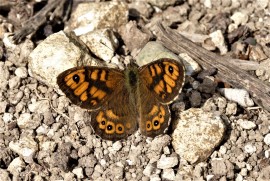
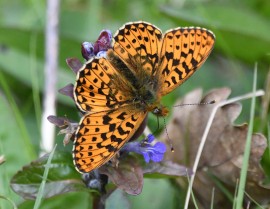
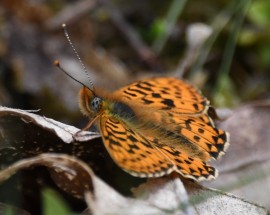
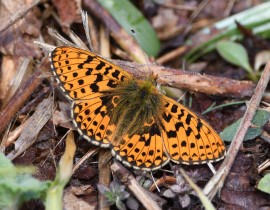
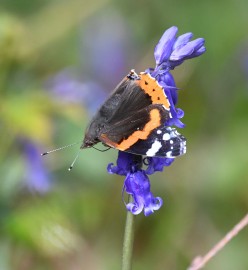
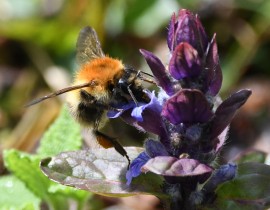
-1675964025.jpg)
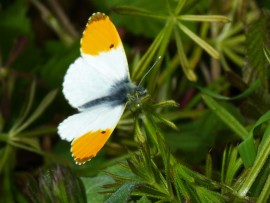
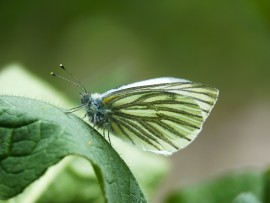
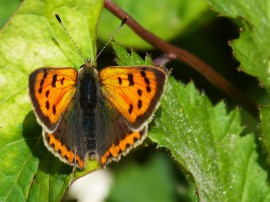
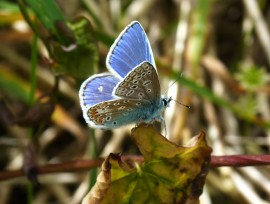
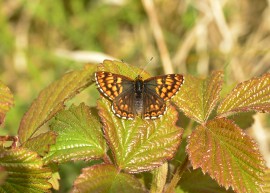
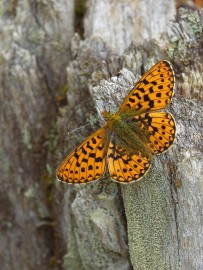
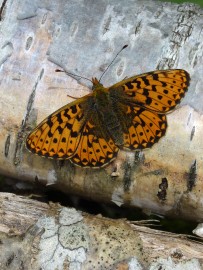
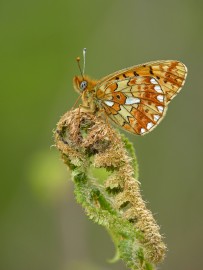
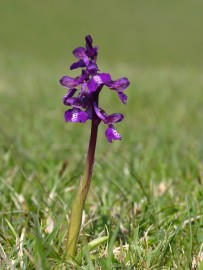
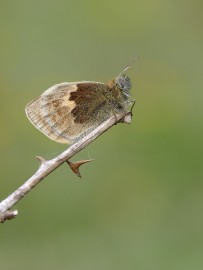
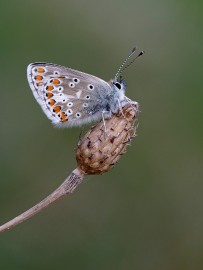
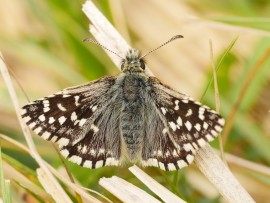
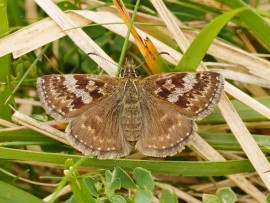
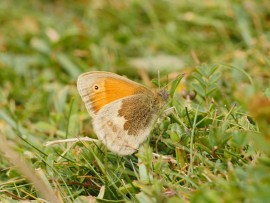
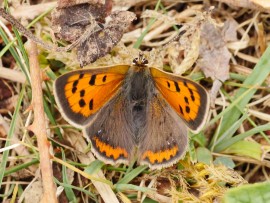
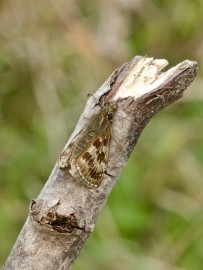
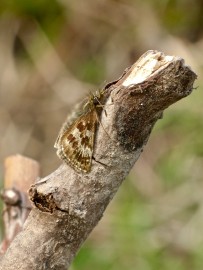
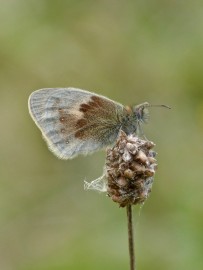
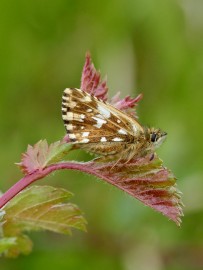
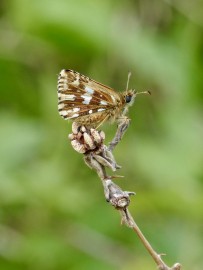
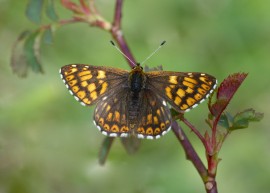
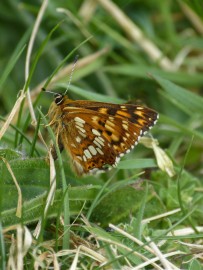
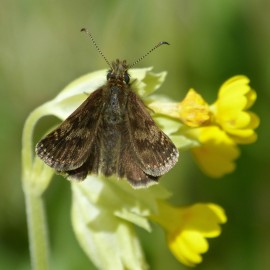
-50386846.jpg)
-2987030055.jpg)
-8165599415.jpg)
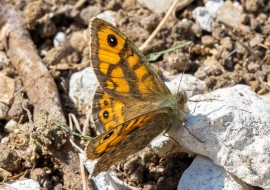
-4404121208.jpg)
-157916038.jpg)
-4093466005.jpg)

-1779354945.jpg)
-rewell-wood-27-april-(colin-knight)-3531494992.jpg)
-rewell-wood-27-april-(colin-knight)-4287184518.jpg)
-rewell-wood-28-april-(colin-knight)-4952508872.jpg)
-rewell-wood-28-april-(colin-knight)-77517963.jpg)
-rewell-wood-28-april-(colin-knight)-6468669888.jpg)
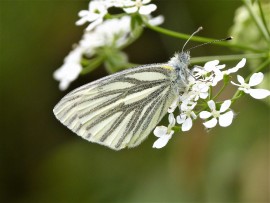

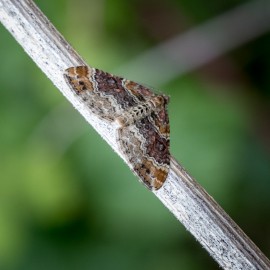
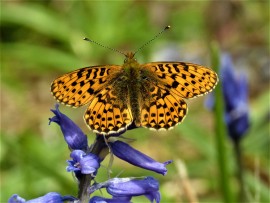
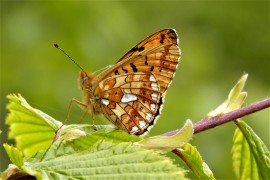
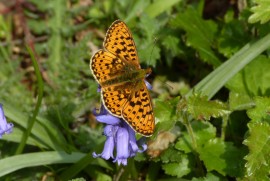
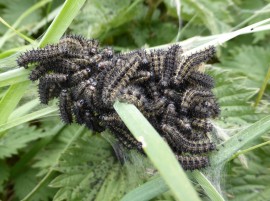
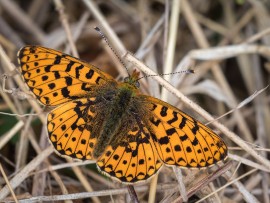
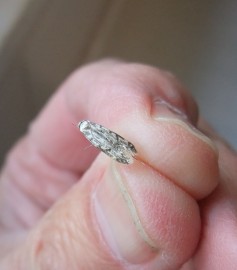
-352086308.jpg)
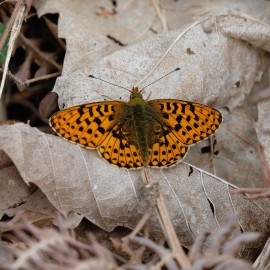
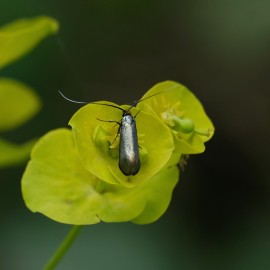
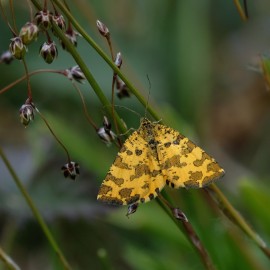
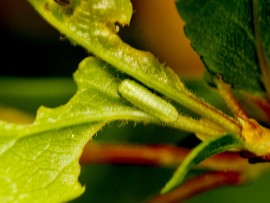
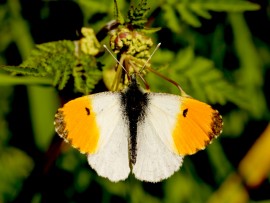
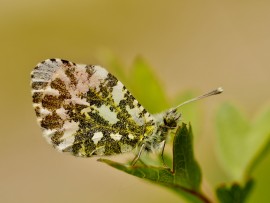
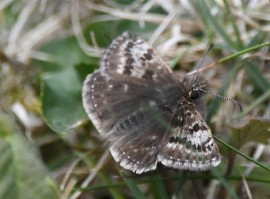
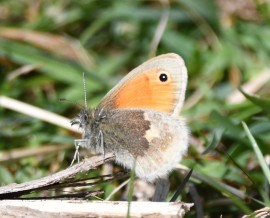
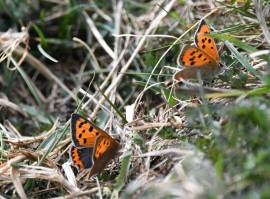
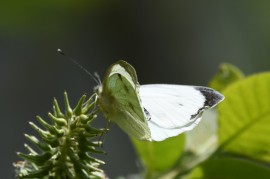
-kithurst-meadow-april-25-(colin-knight)-266501288.jpg)
-kithurst-meadow-april-25-(colin-knight)-1606073561.jpg)
-kithurst-meadow-april-25-(colin-knight)-8454826986.jpg)
-kithurst-meadow-april-25-(colin-knight)-5694442801.jpg)
-5475858957.jpg)
-4123938204.jpg)
-5784914838.jpg)
-5193816237.jpg)
-8894952251.jpg)
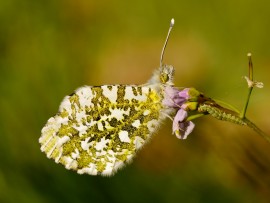

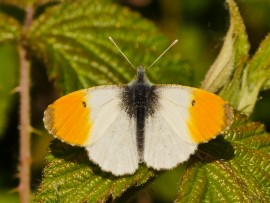
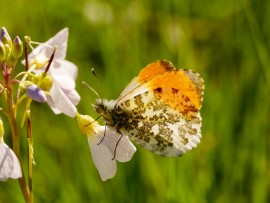
-springhead-hill-25.4.17-9574053380.jpg)
-springhead-hill-25.4.17-6275947578.jpg)
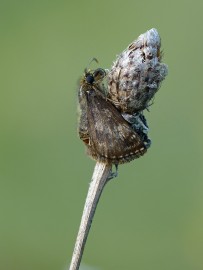
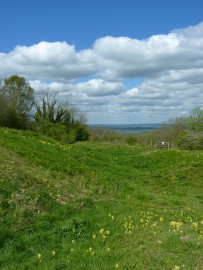
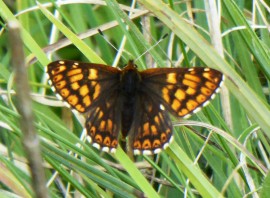
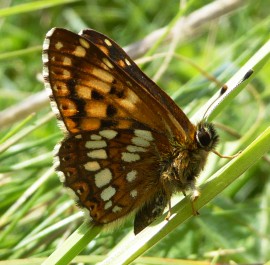
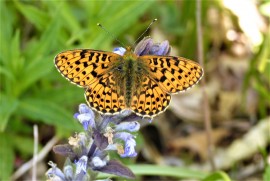
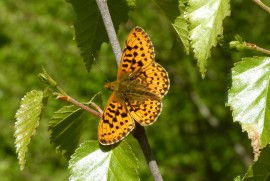
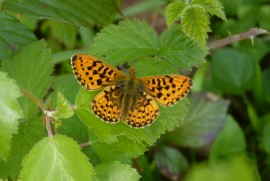
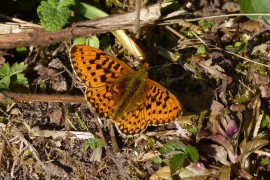
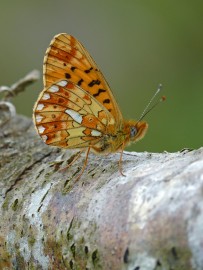
-7574588111.jpg)
-3848070125.jpg)
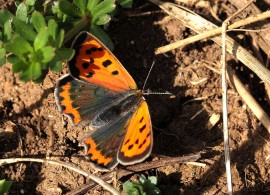
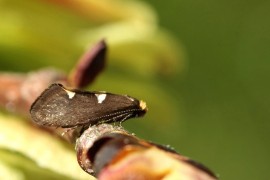
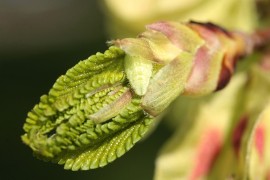
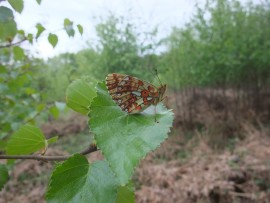
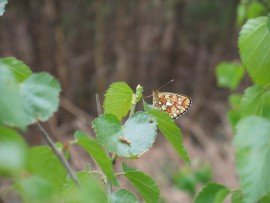
-rewell-wood-24-april-(colin-knight)-5029101432.jpg)
-rewell-wood-24-april-(colin-knight)-945513737.jpg)
-rewell-wood-24-april-(colin-knight)-5924840895.jpg)
-6961901839.jpg)
-2-8520346516.jpg)
-2212349073.jpg)
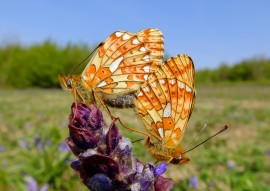
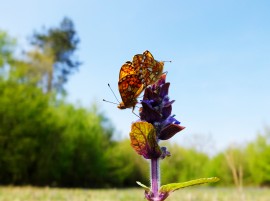
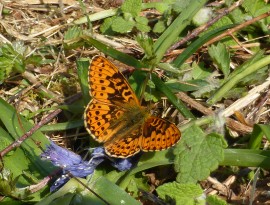
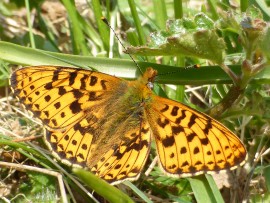
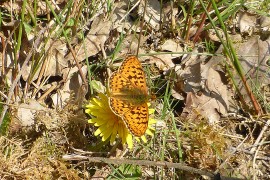
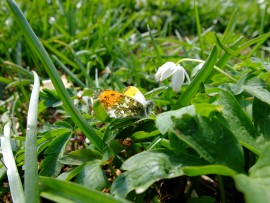
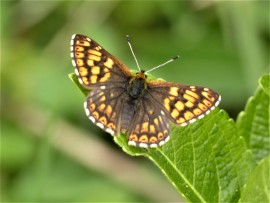
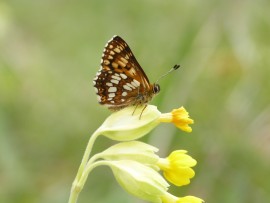
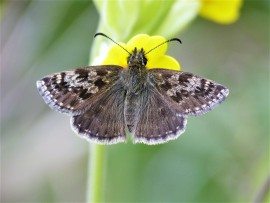
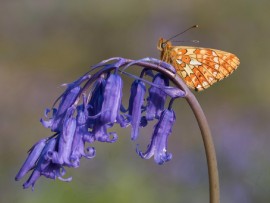
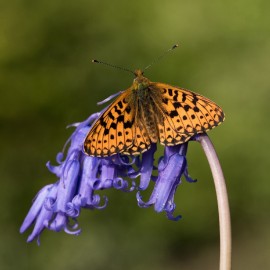
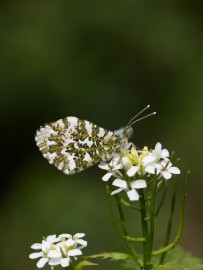
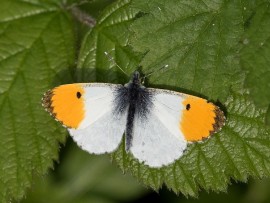

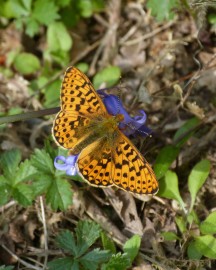
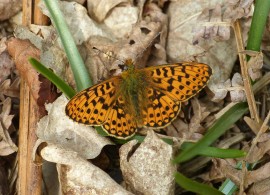
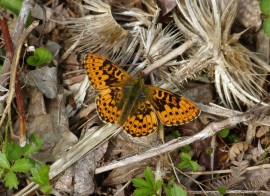
,-heyshott-escarpment-23.4.17-7574108298.jpg)

,-heyshott-escarpment-23.4.17-7664127089.jpg)
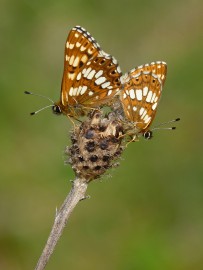
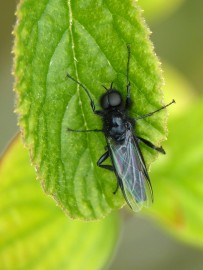
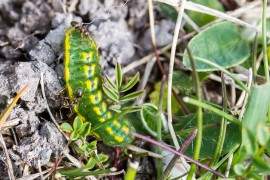
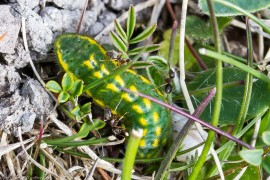
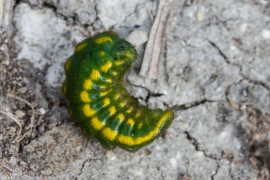
-(1280x767)-9211759031.jpg)
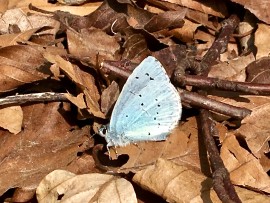

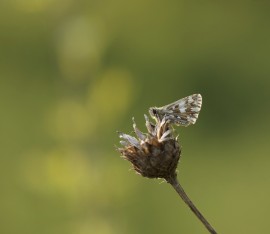
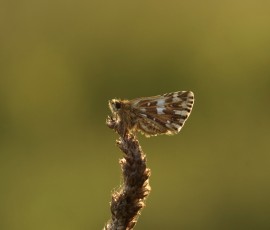
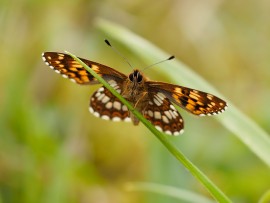
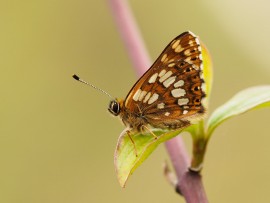
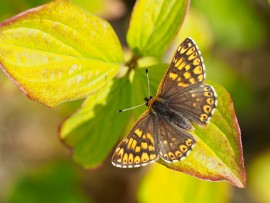
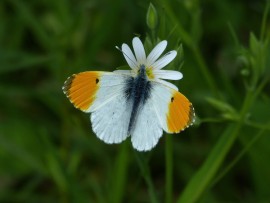
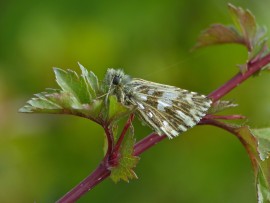
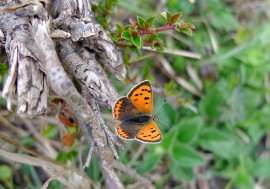
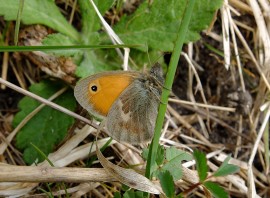
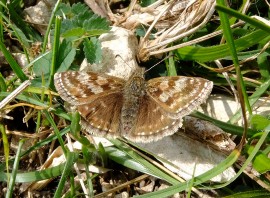
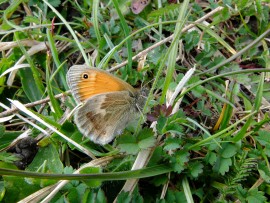
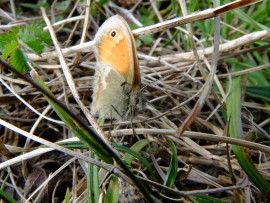
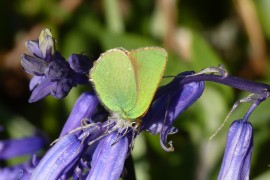
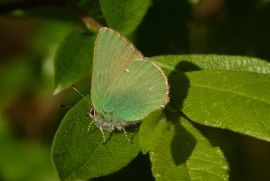
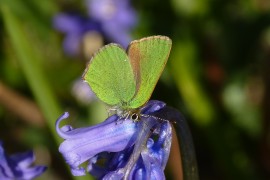

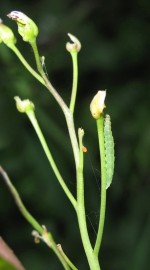
-7126156054.jpg)
-2078212536.jpg)
-2583011514.jpg)
-7690403233.jpg)
-8530193953.jpg)
-351531528.jpg)
-21-april-(colin-knight)-2149258800.jpg)
-littlehampton-21-april-(colin-knight)-8247736934.jpg)
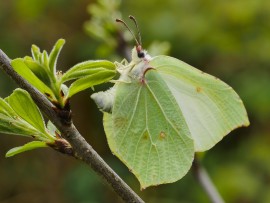
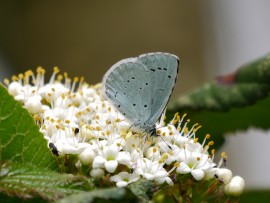
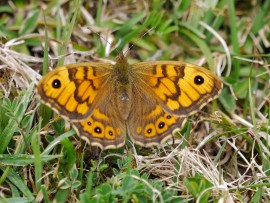
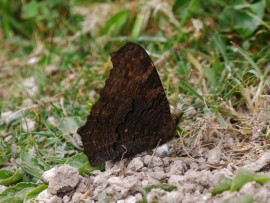
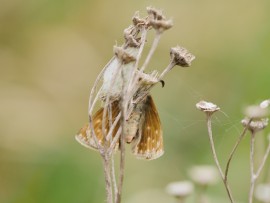
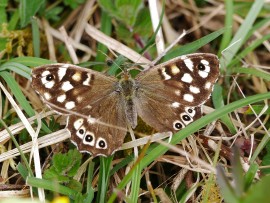
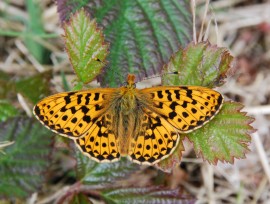
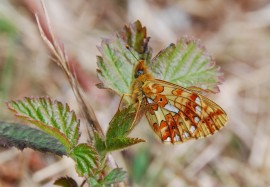
-littlehampton-15-april-(colin-knight)-6233669868.jpg)
-5581336882.jpg)
-rewell-wood-20-april-(colin-knight)-5593017362.jpg)
-mill-hill-18.4.17-2198005937.jpg)
-mill-hill-18.4.17-8832128187.jpg)
-mill-hill-18.4.17-3857086705.jpg)
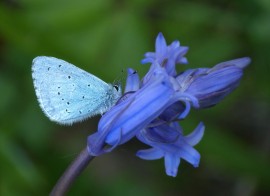
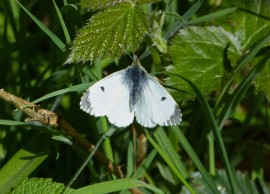
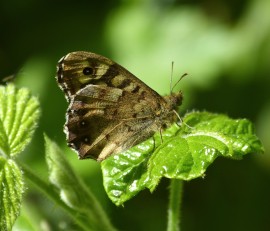
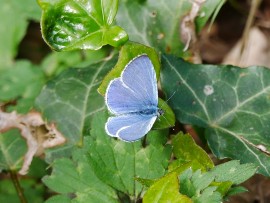
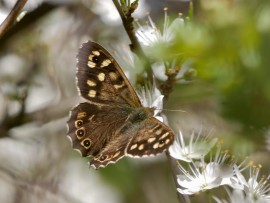
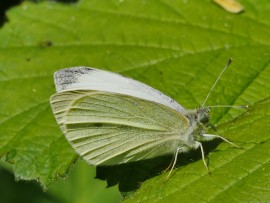
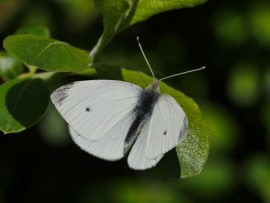
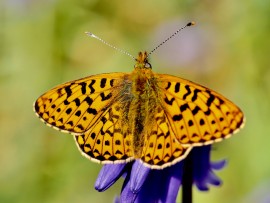
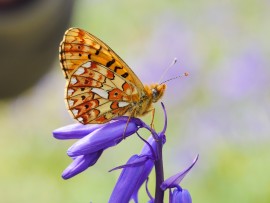
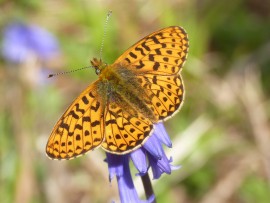
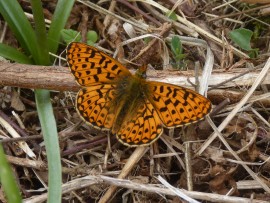
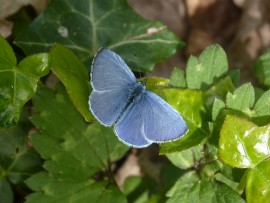
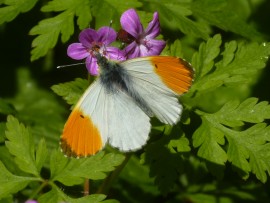
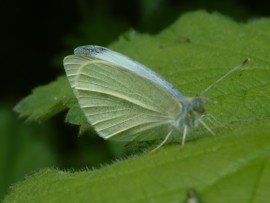
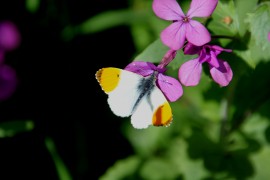
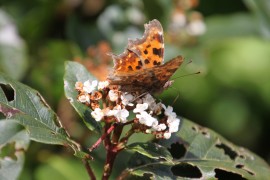
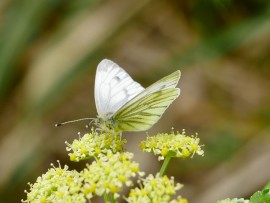
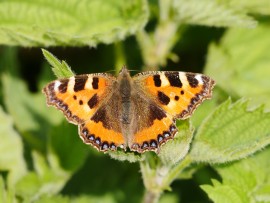
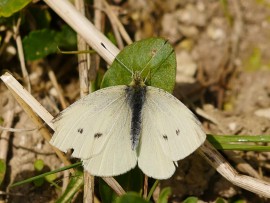
-5172471357.jpg)
-5996022843.jpg)
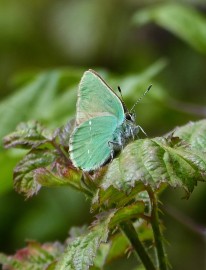

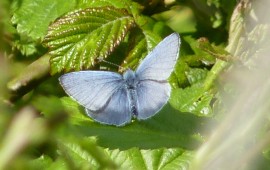
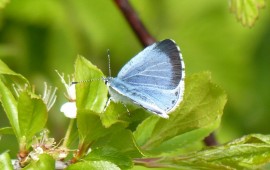
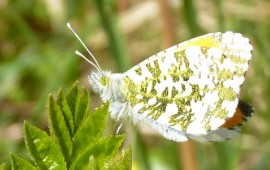
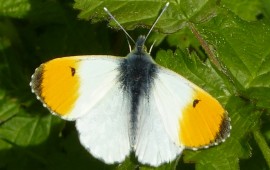
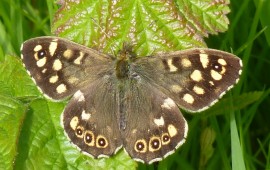

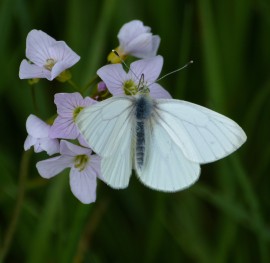

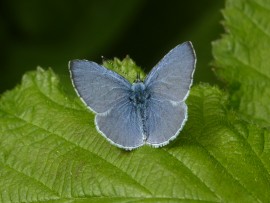
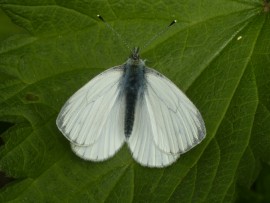
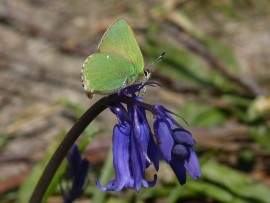
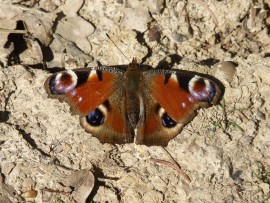
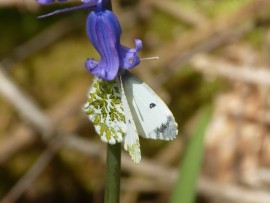
-4743287768.jpg)
-2509696586.jpg)
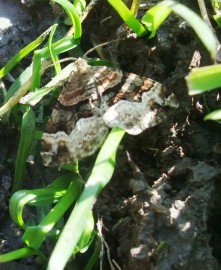
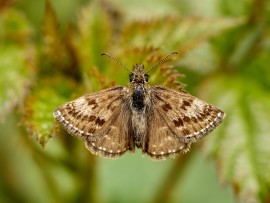
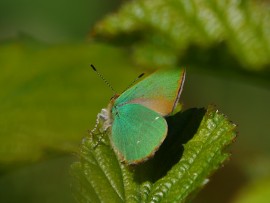
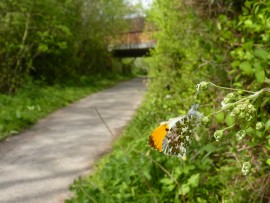
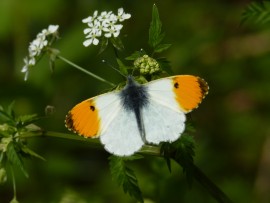
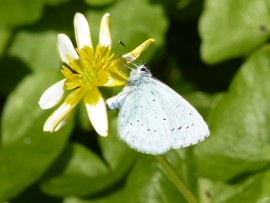
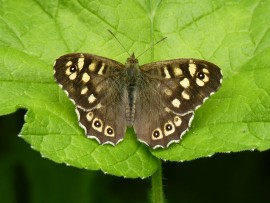
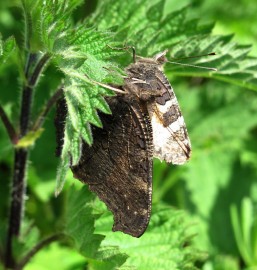
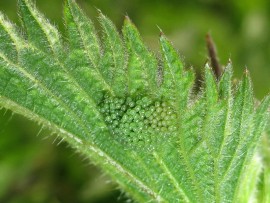
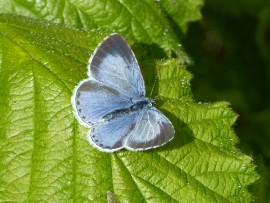
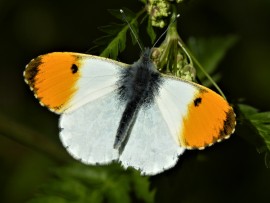

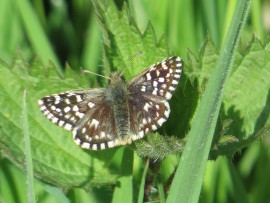
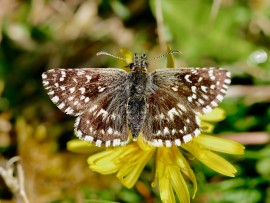
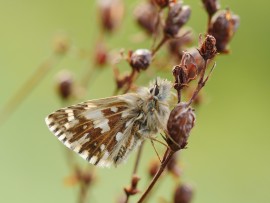
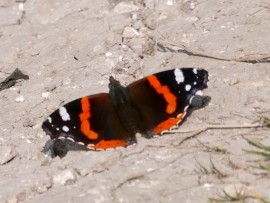
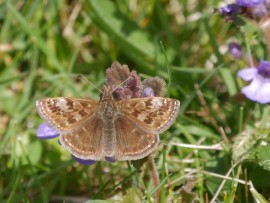
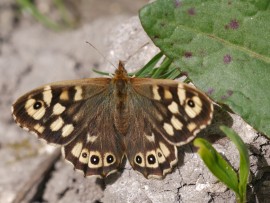

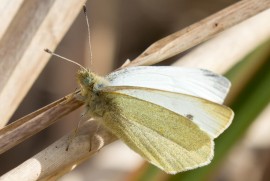
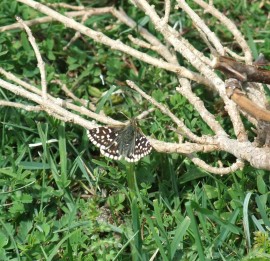
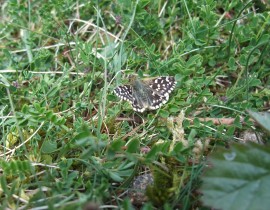
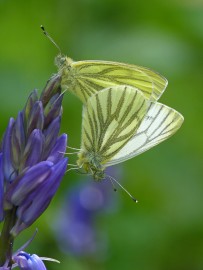
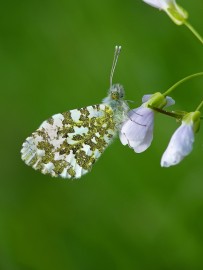
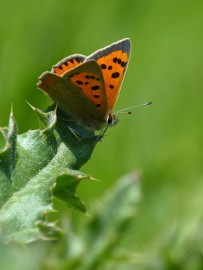

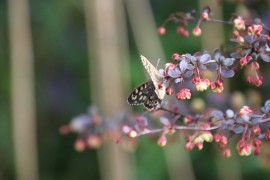
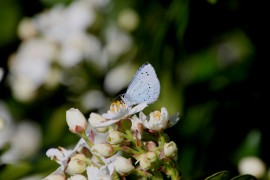
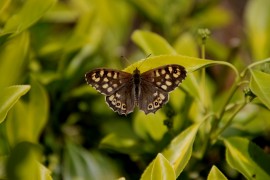
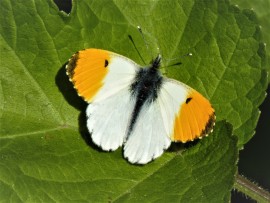
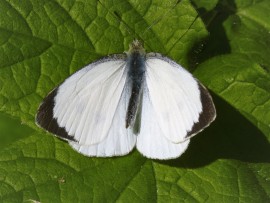
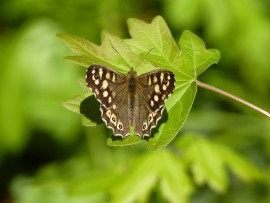
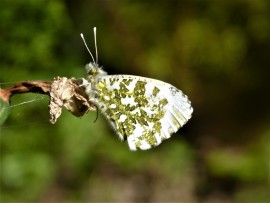
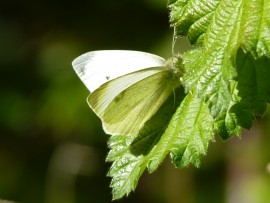
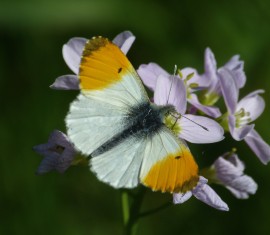
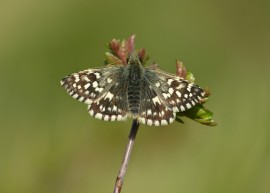
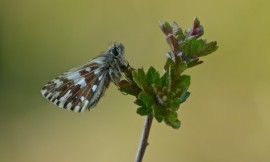
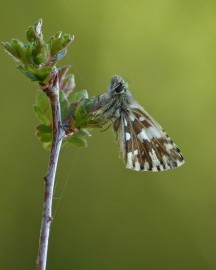
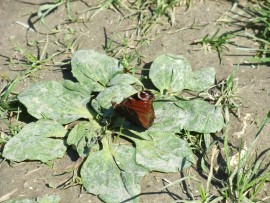

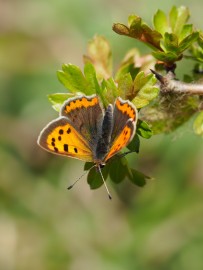
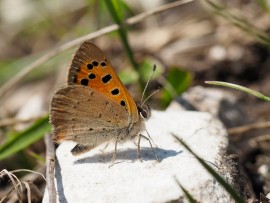
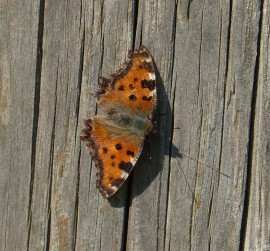
1-devil's-dyke-9.4.17-5651066154.jpg)
-devil's-dyke-9.4.17-6660370714.jpg)
-devil's-dyke-9.4.17-1696775425.jpg)
-devil's-dyke-9.4.17-9664894849.jpg)
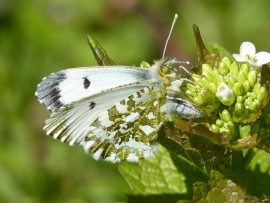
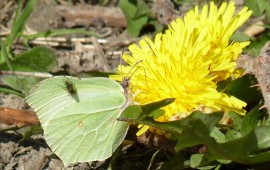
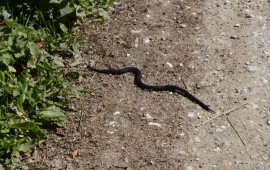
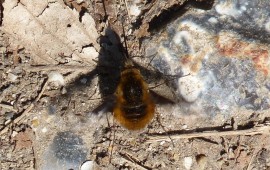
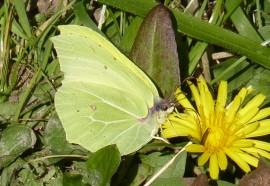
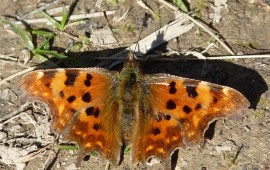
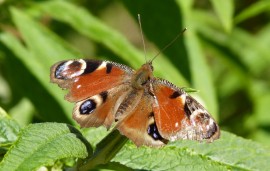

-89446301.jpg)
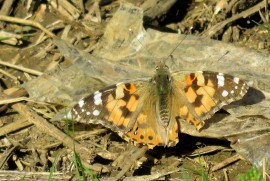

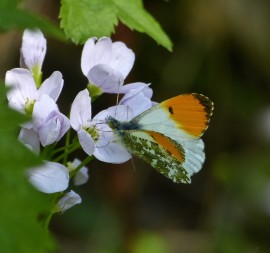
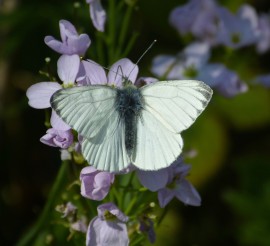
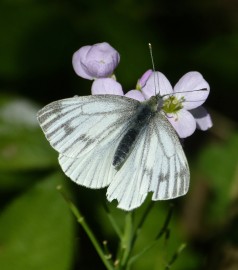
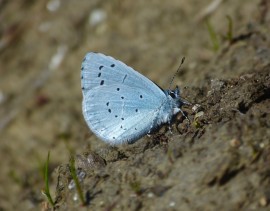
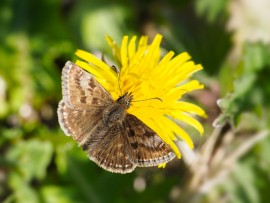
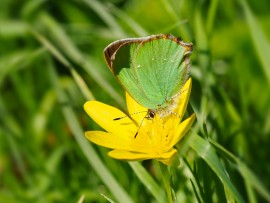
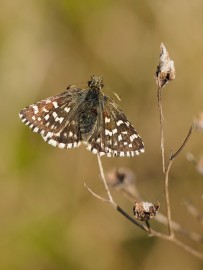
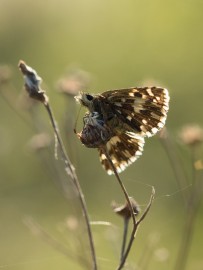
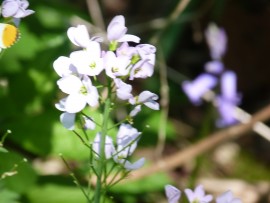
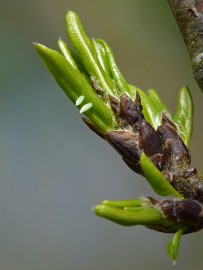
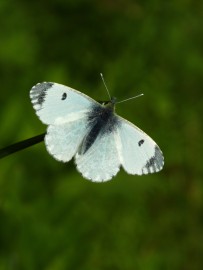
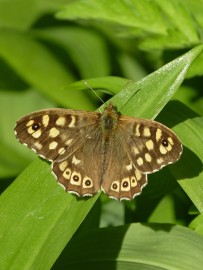
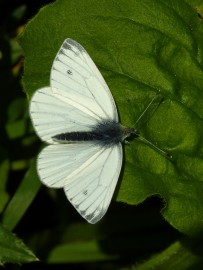




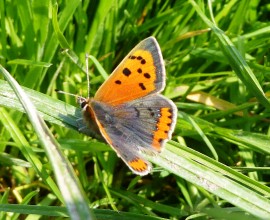
-454244823.jpg)
-8344753626.jpg)
-8705211118.jpg)
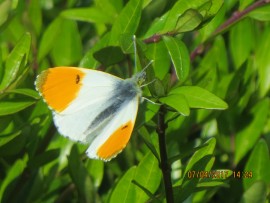
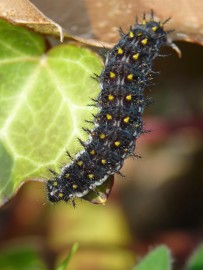
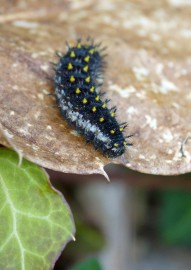
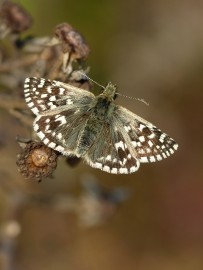
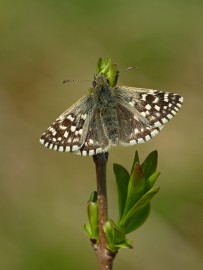
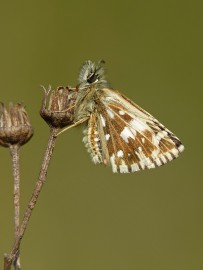
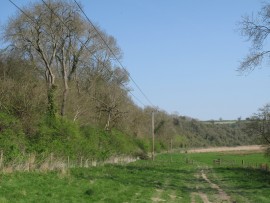
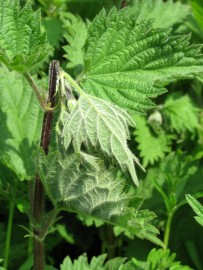
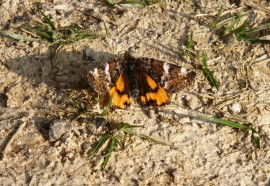
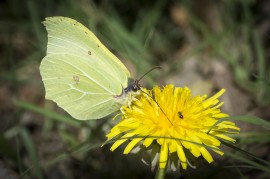

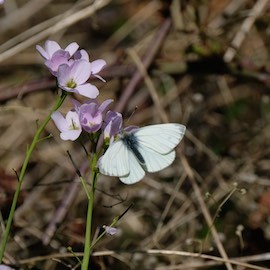
-1649438259.jpg)
-4646352594.jpg)

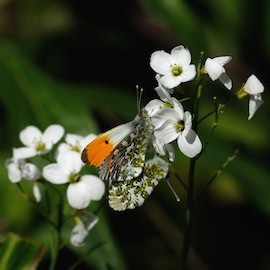

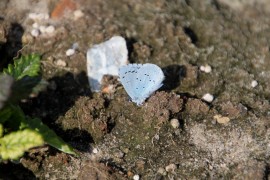
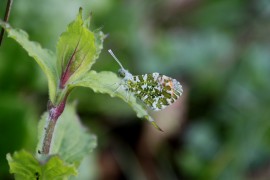
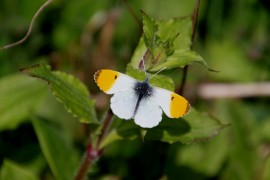
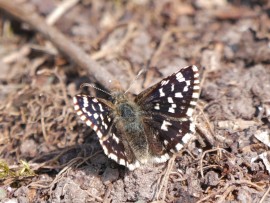
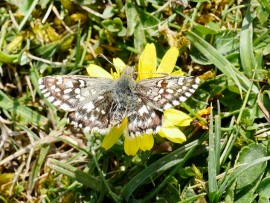

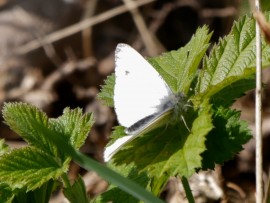
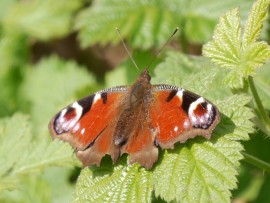
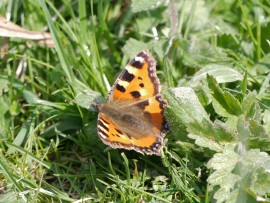
-6384451789.jpg)
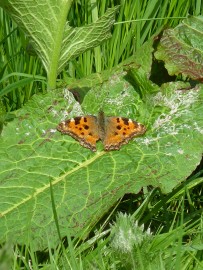
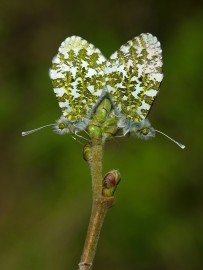
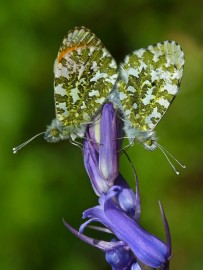
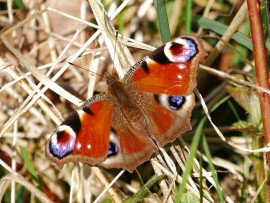
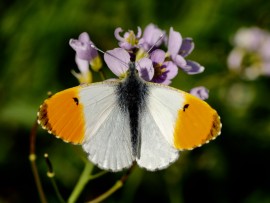
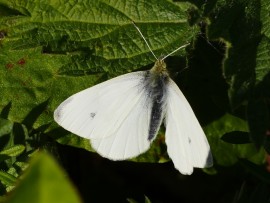
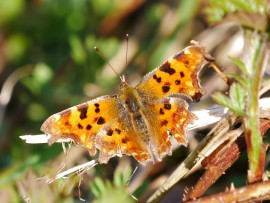
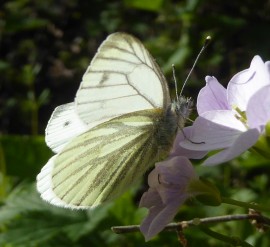
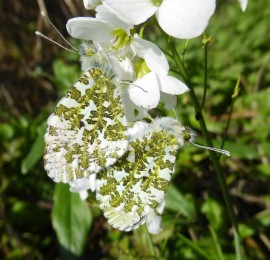
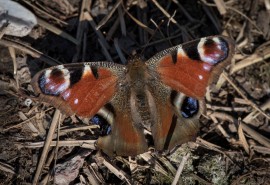
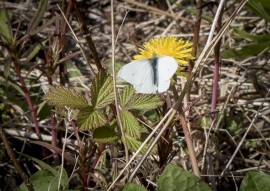
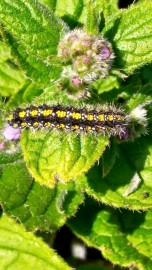
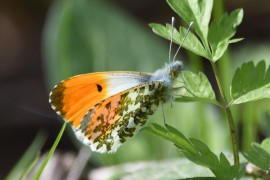
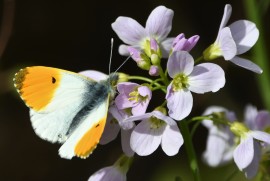
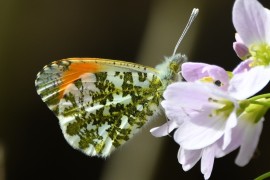
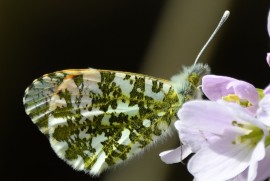
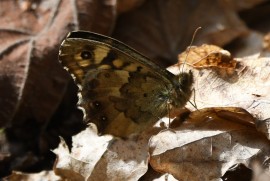
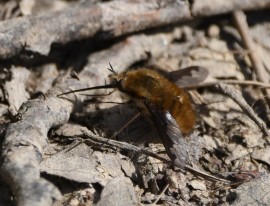
-5035271248.jpg)
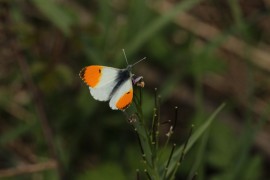

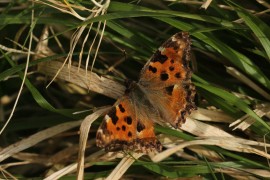
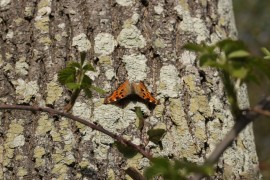
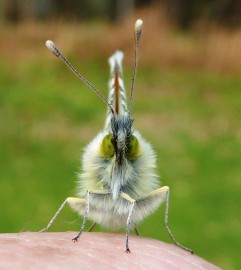
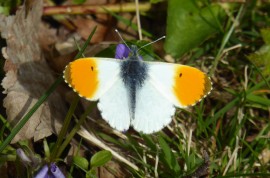
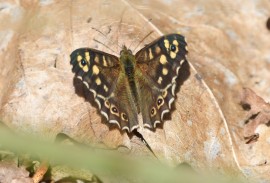
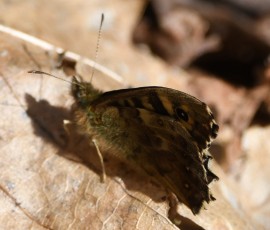
-2.4.17-7468725112.jpg)
-2.4.17-6461957911.jpg)
-4554786491.jpg)
-8123647654.jpg)
-north-stoke-2-april-(colin-knight)-7085335231.jpg)

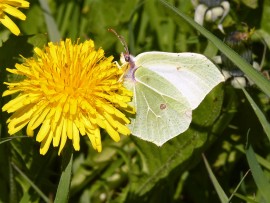
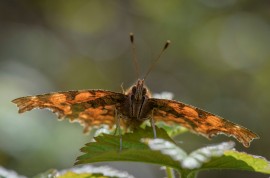
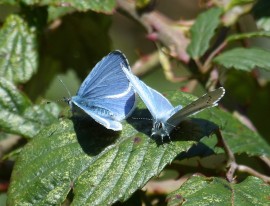
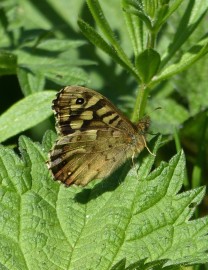
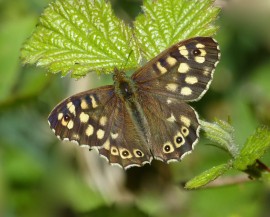

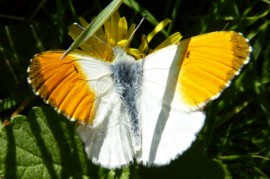
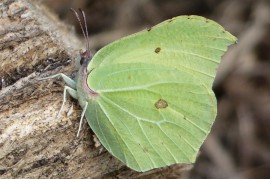
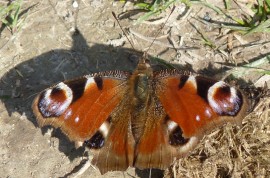
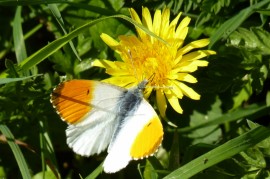
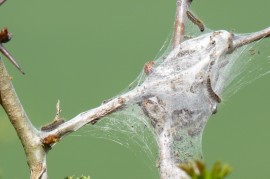
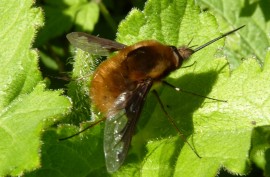
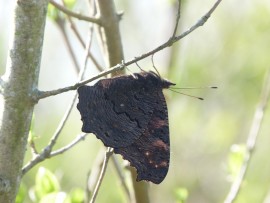
-mill-hill-1-april-(colin-knight)-2645091172.jpg)
-mill-hill-1-april-(colin-knight)-9871578975.jpg)
-mill-hill-1-april-(colin-knight)-1084816902.jpg)
-mill-hill-1-april-(colin-knight)-94335940.jpg)
-mill-hill-1-april-(colin-knight)-1147397570.jpg)

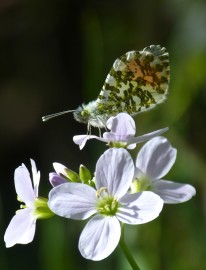
-abbot's-wood-1.4.17-8906447486.jpg)
-abbot's-wood-1.4.17-3960062945.jpg)
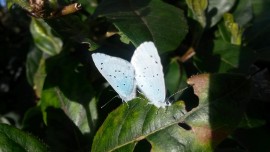

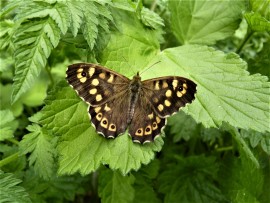
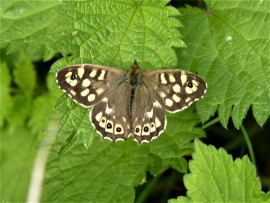
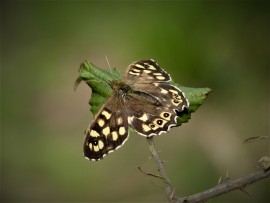

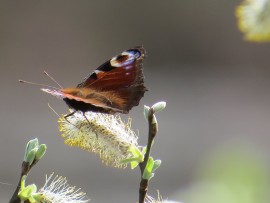
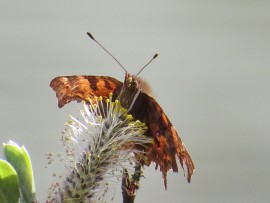
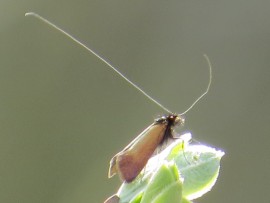

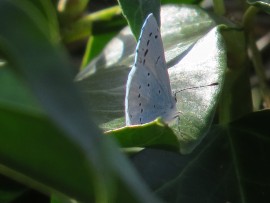
-north-stoke-30.3.17-4716428336.jpg)
-north-stoke-30.3.17-4087539636.jpg)
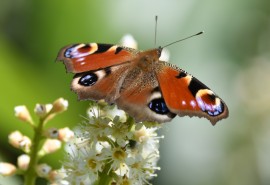
-2939950670.jpg)
-588228311.jpg)
-7019150545.jpg)
-9096830128.jpg)
-3516413182.jpg)
-7635203571.jpg)
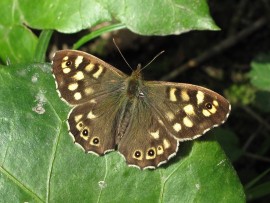

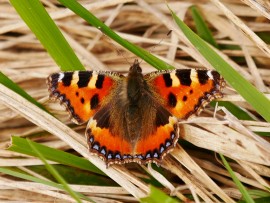
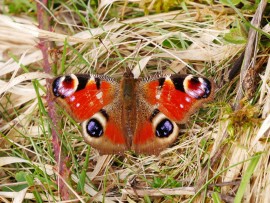
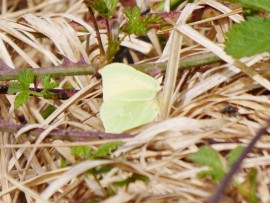
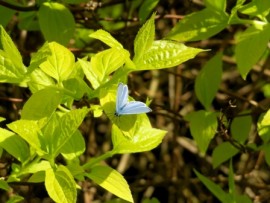
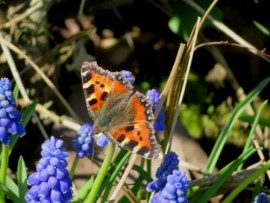
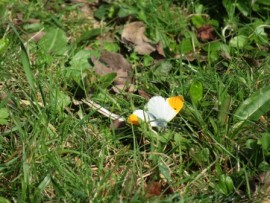
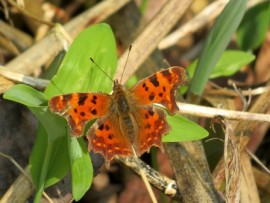
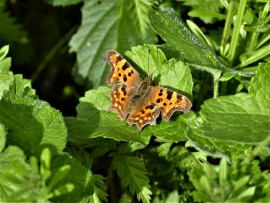
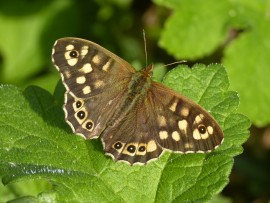
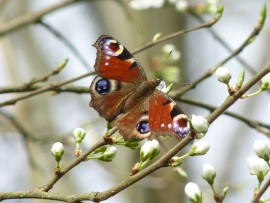
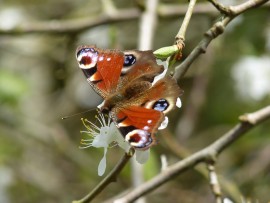
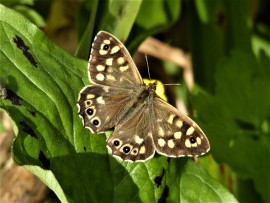
,-north-stoke-28.3.17-3929316038.jpg)
,-north-stoke-28.3.17-(2)-7736491537.jpg)
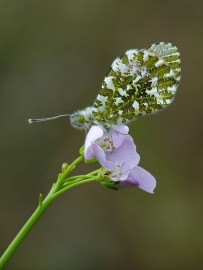
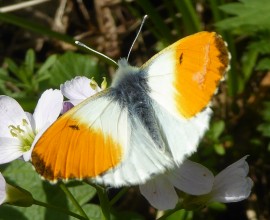
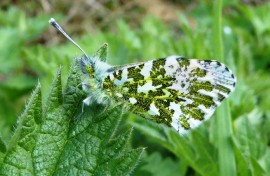
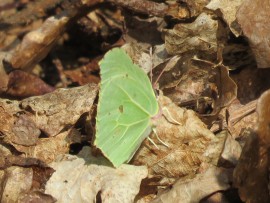
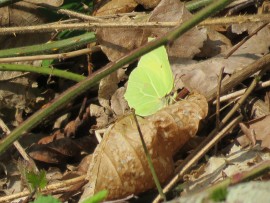
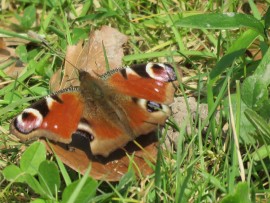
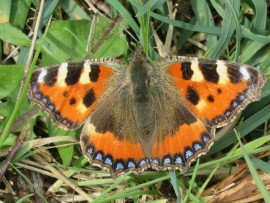
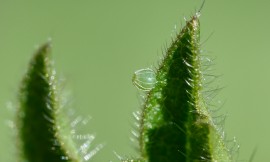
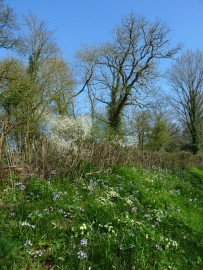
,-five-oaks-27.3.17-3099336456.jpg)

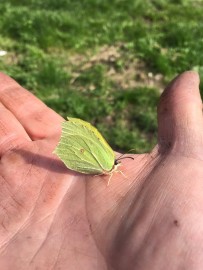

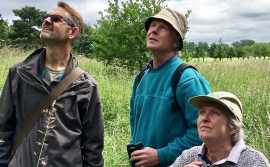

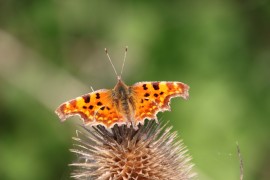
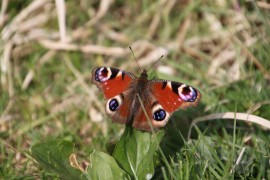
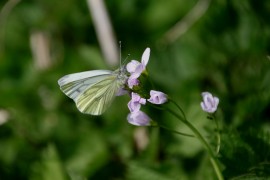
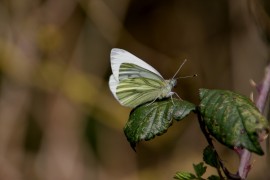
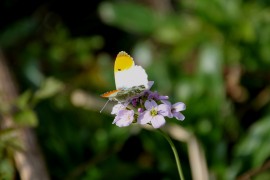
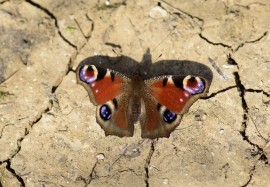
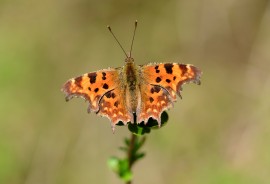

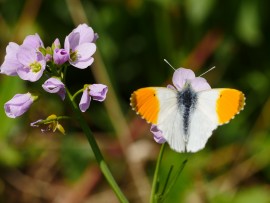
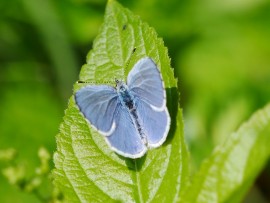
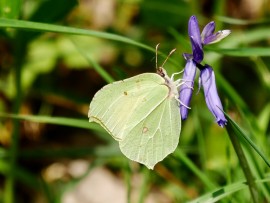
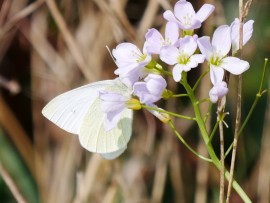
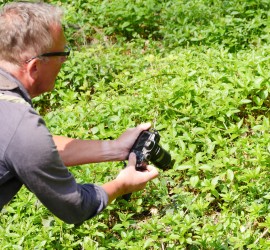
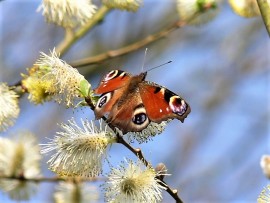
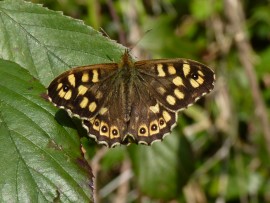
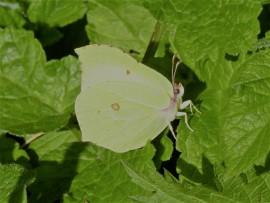
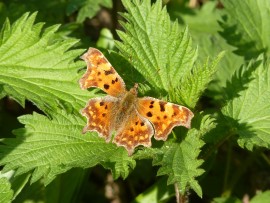
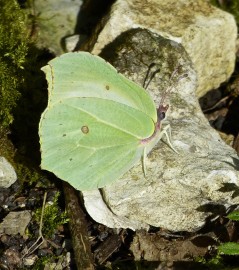
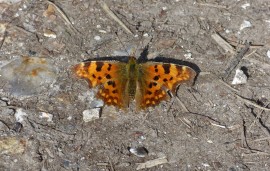
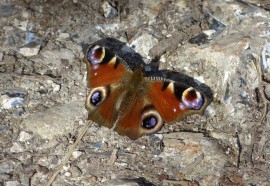
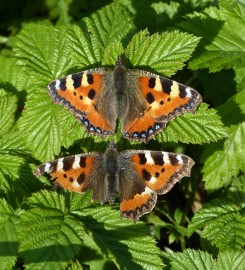
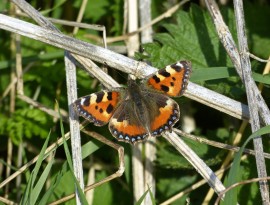
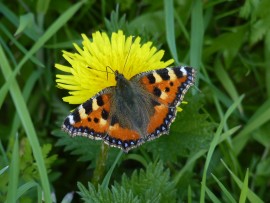
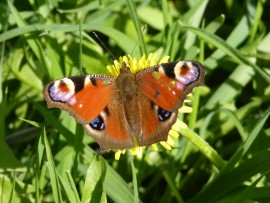
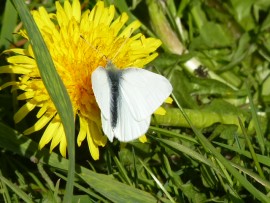

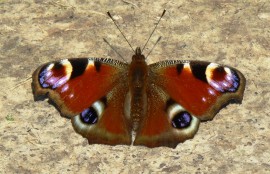
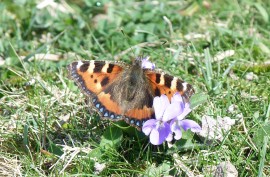
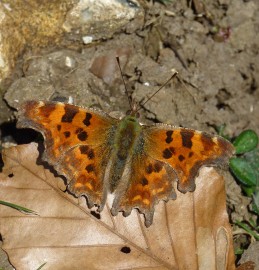
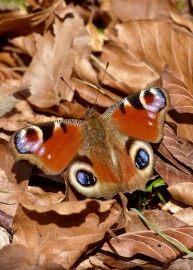

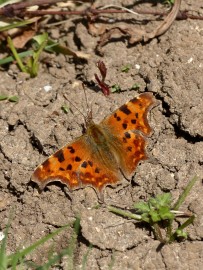
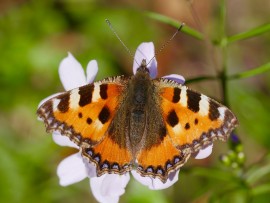
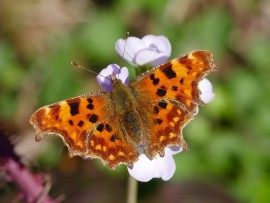
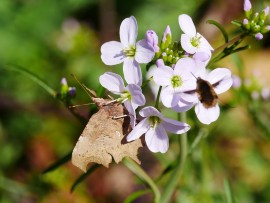
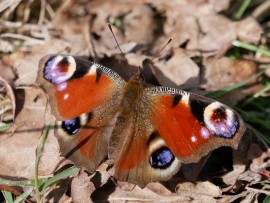
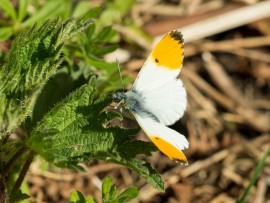
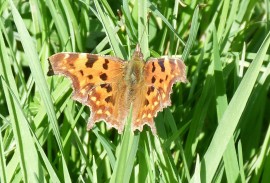
-37032975.jpg)
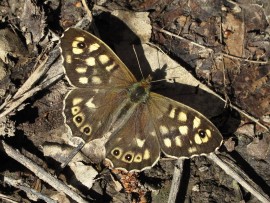
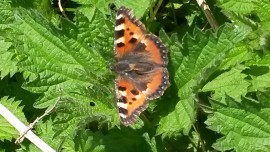
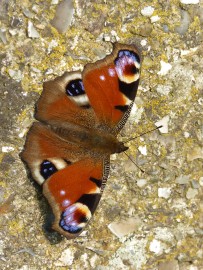
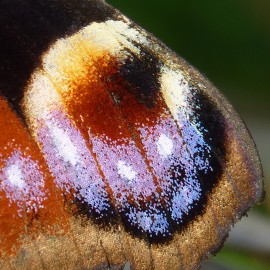
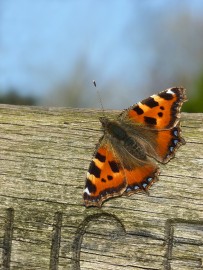
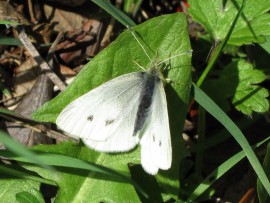
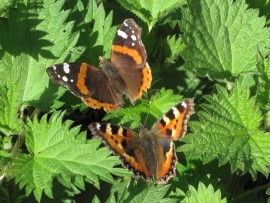
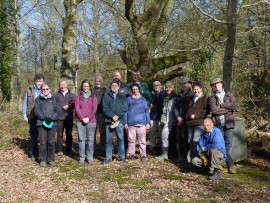
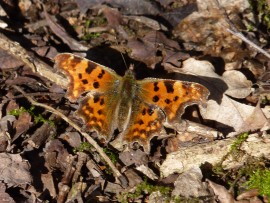
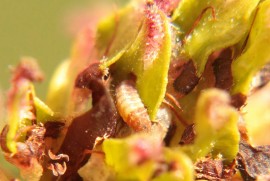
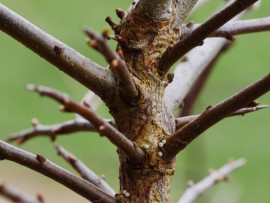
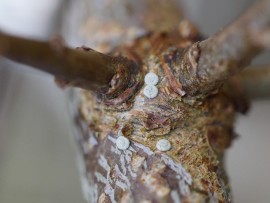

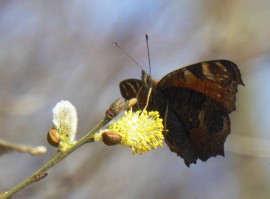
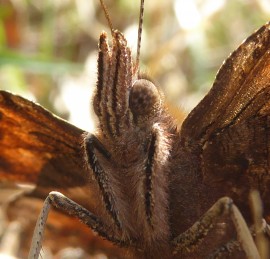
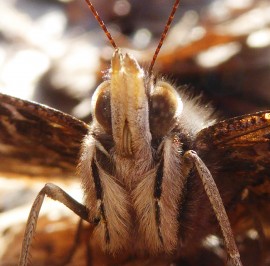
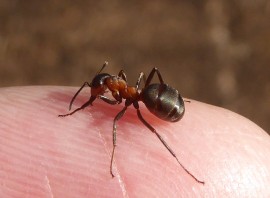
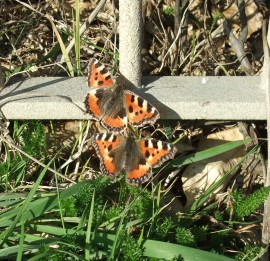
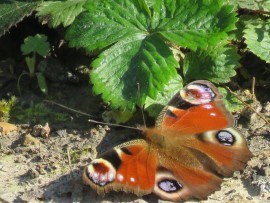
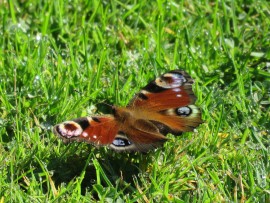
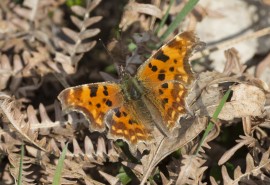
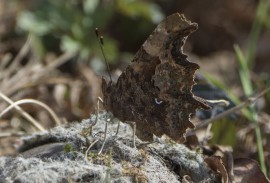
-2-362495281.jpg)
-1237808861.jpg)
-9439817075.jpg)
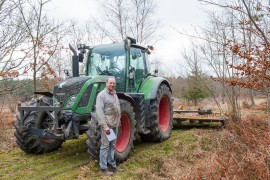
-2-5705423657.jpg)
-ferring-rife-14-march-(colin-knight)-6517537310.jpg)
-ferring-rife-14-march-(colin-knight)-2-7814336703.jpg)
-5519770192.jpg)
-littlehampton-14-march-(colin-knight)-1962345736.jpg)
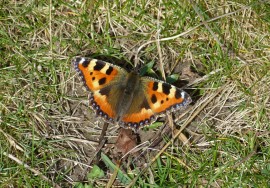
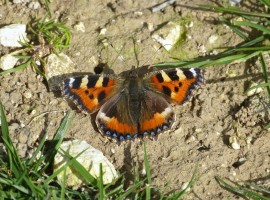

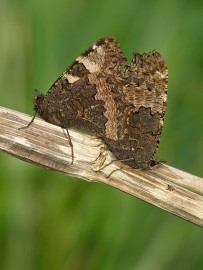
,-ferring-rife-13.3.17-9218992199.jpg)
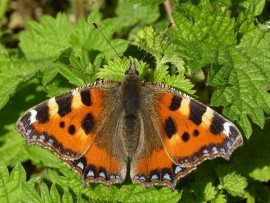
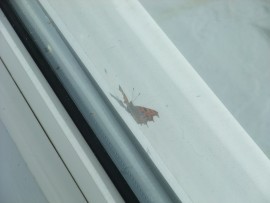
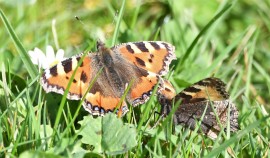

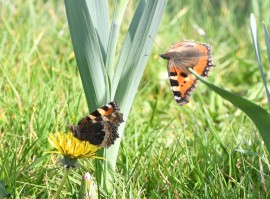
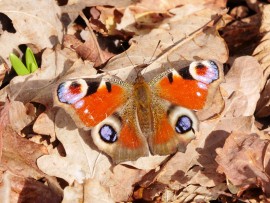
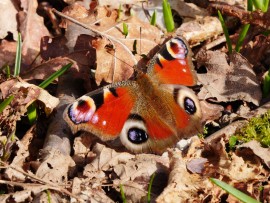
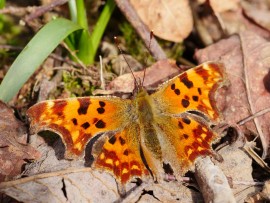
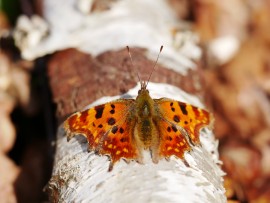
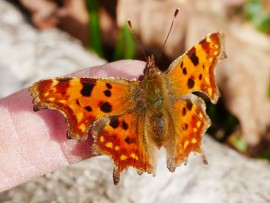
-2969738985.jpg)
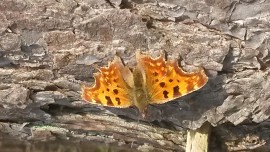
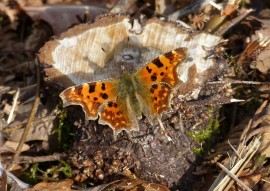
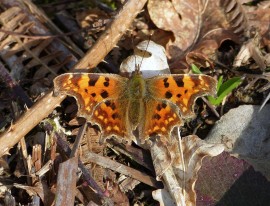
-3620697753.jpg)
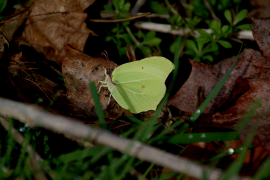
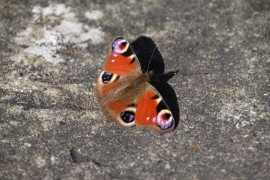
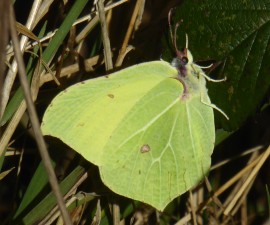
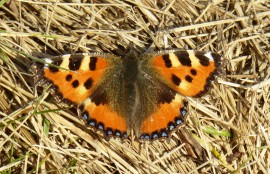
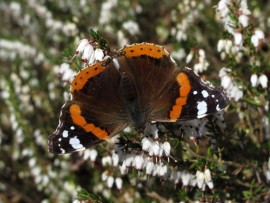
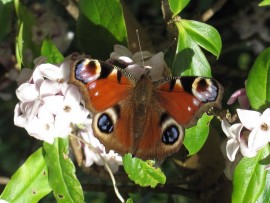
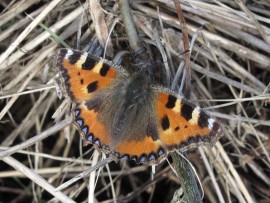
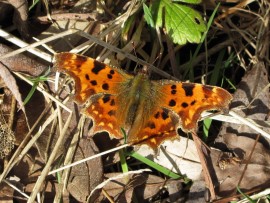
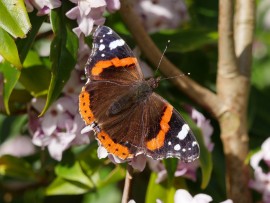
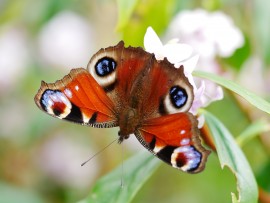
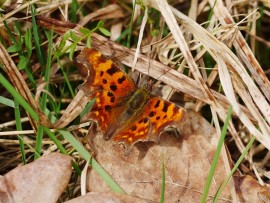

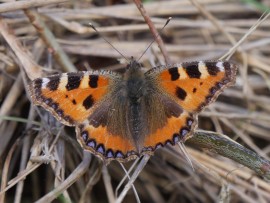
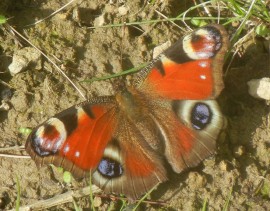
-9818011401.jpg)
-8957647704.jpg)
-3158416063.jpg)
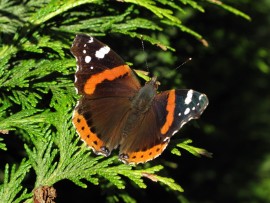
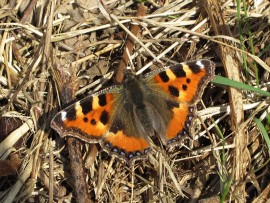
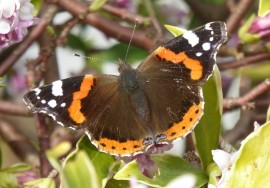
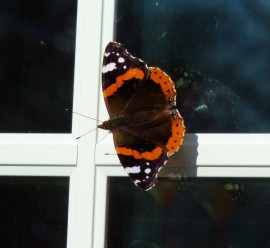

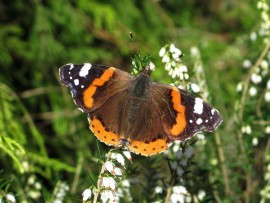
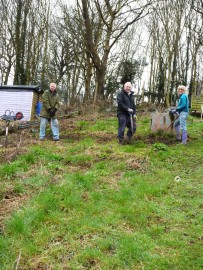
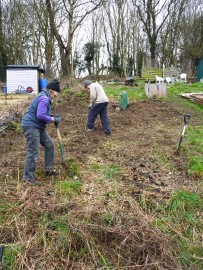
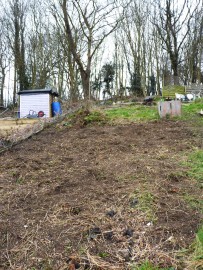
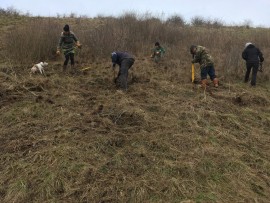
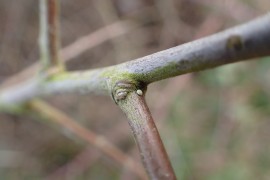
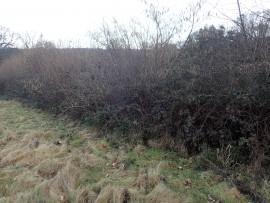
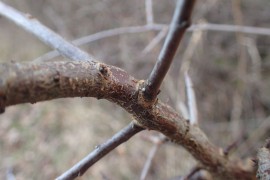
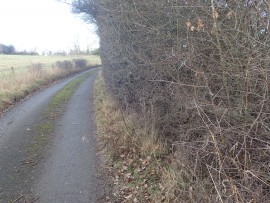
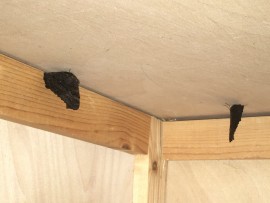
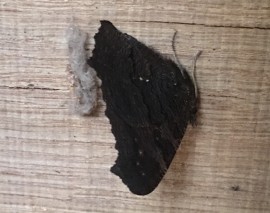
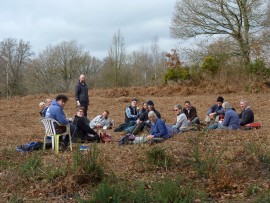
-840360727.jpg)
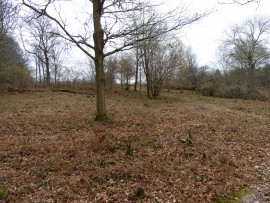
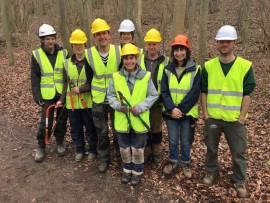

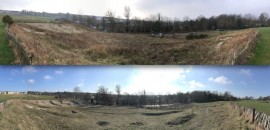
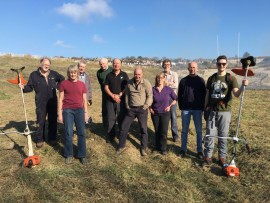
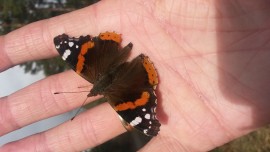
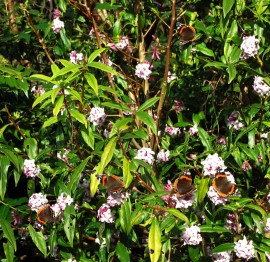
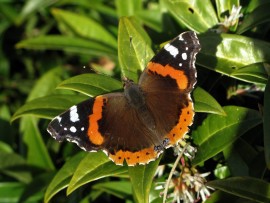
-dorothy-stringer-school-18-february-(colin-knight)-2182330875.jpg)

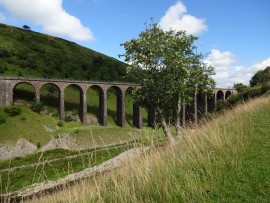
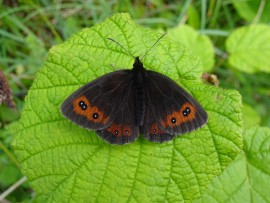

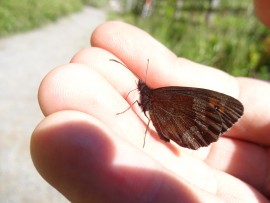

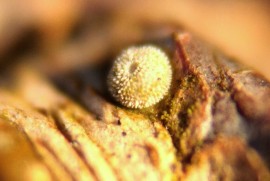
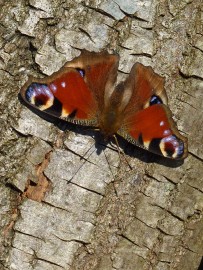
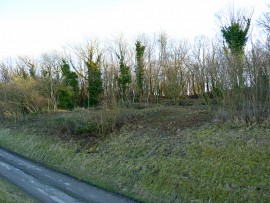
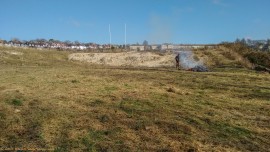
-3916063876.jpg)
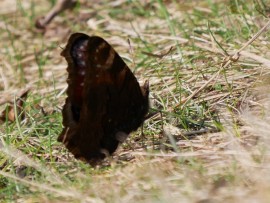
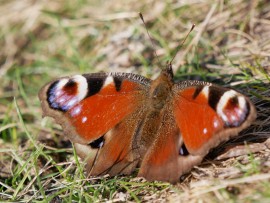
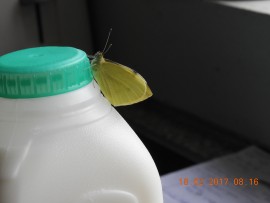
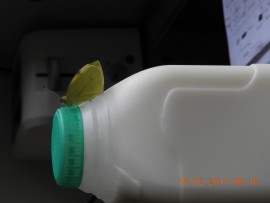
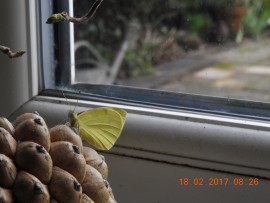
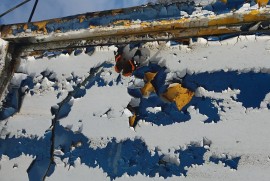
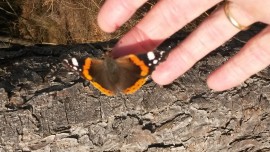
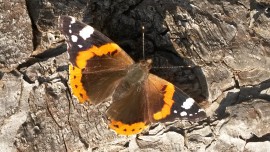
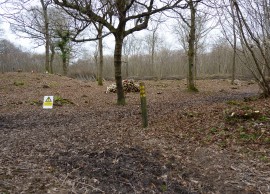
-1218738961.jpg)
-174457193.jpg)
-6743370085.jpg)
-321728745.jpg)
-8.2.17-567057258.jpg)
-8.2.17-9005820453.jpg)
-2-322375958.jpg)
-8898795419.jpg)
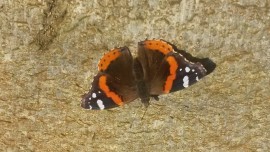
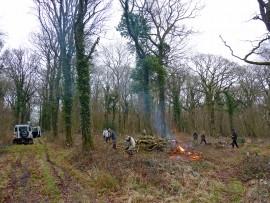

-6896781283.jpg)
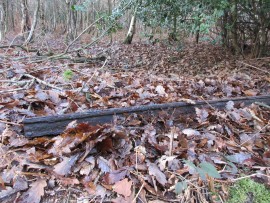
-2274560965.jpg)
-9934707740.jpg)
-7243563202.jpg)
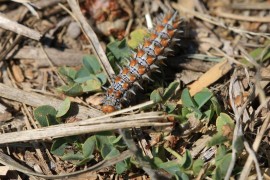
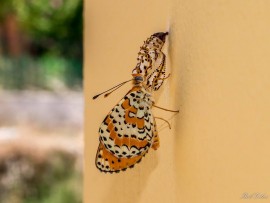
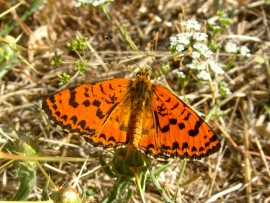
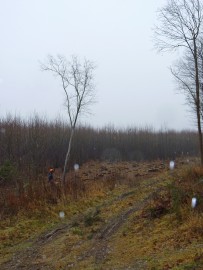
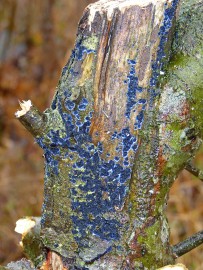
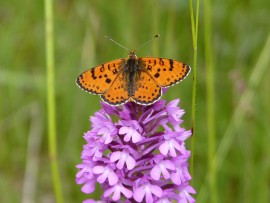
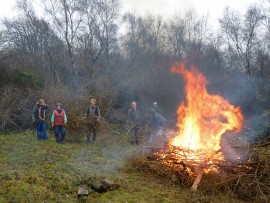
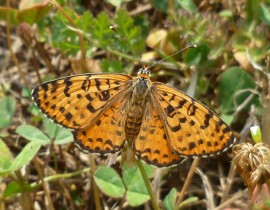
-5149965984.jpg)
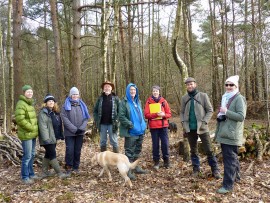
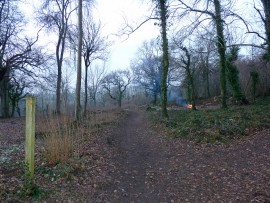
-26.1.17-4745563617.jpg)
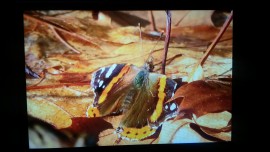
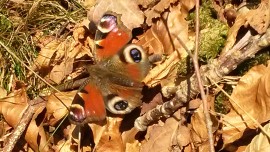
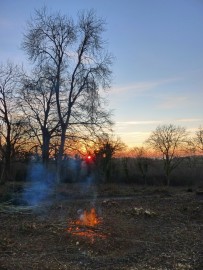
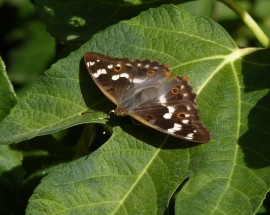
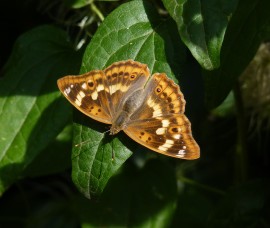
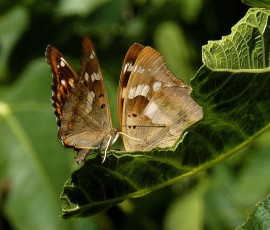

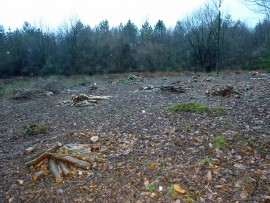
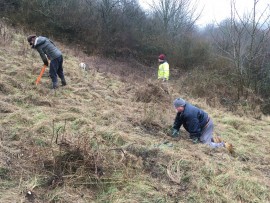
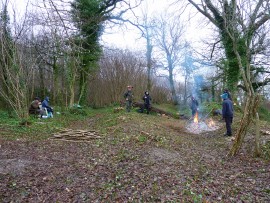
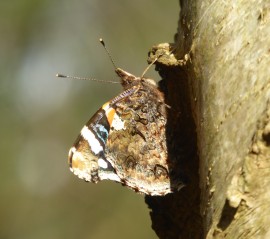
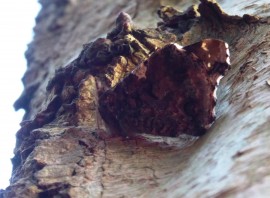
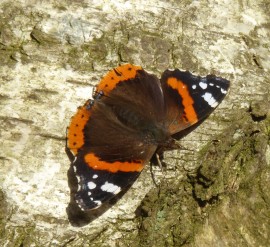
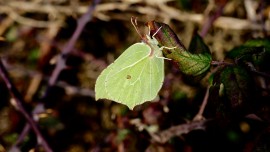
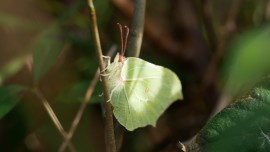
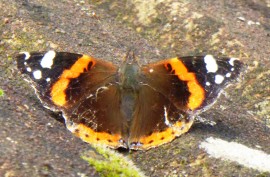

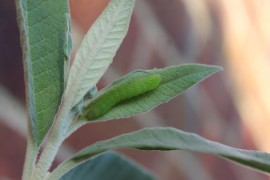
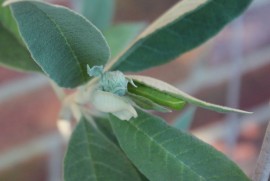
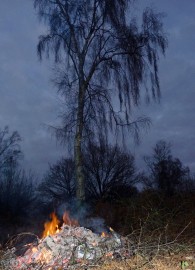
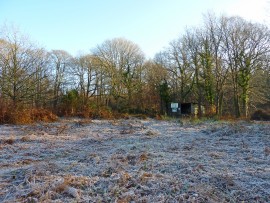
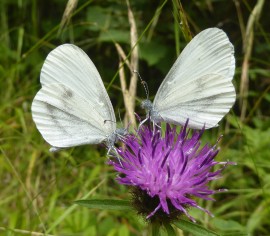
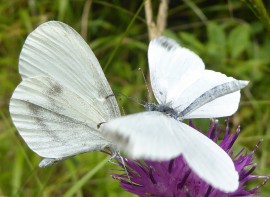
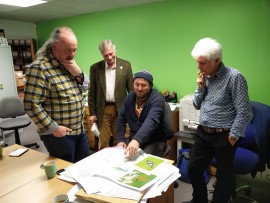
-1544816405.jpg)
-9946456919.jpg)
